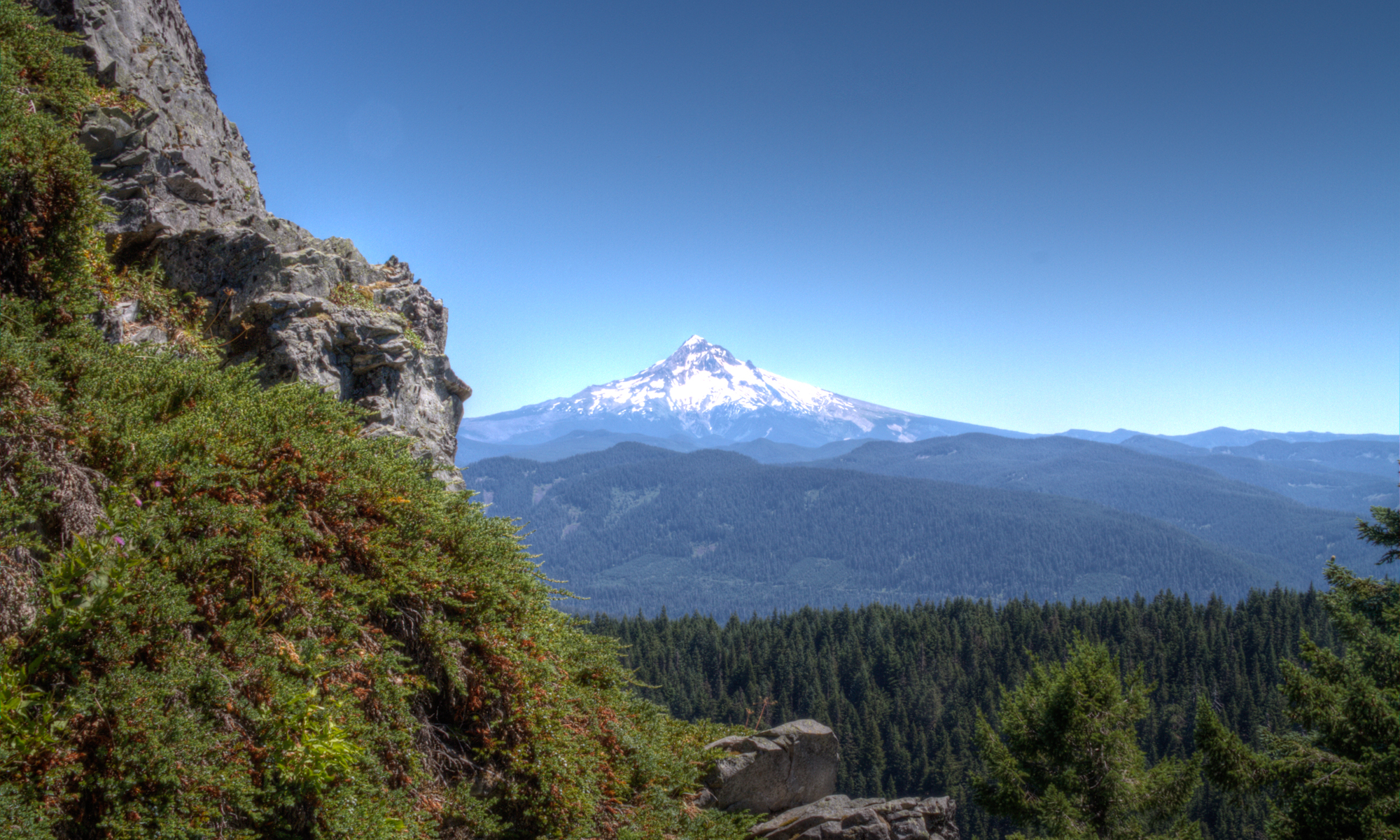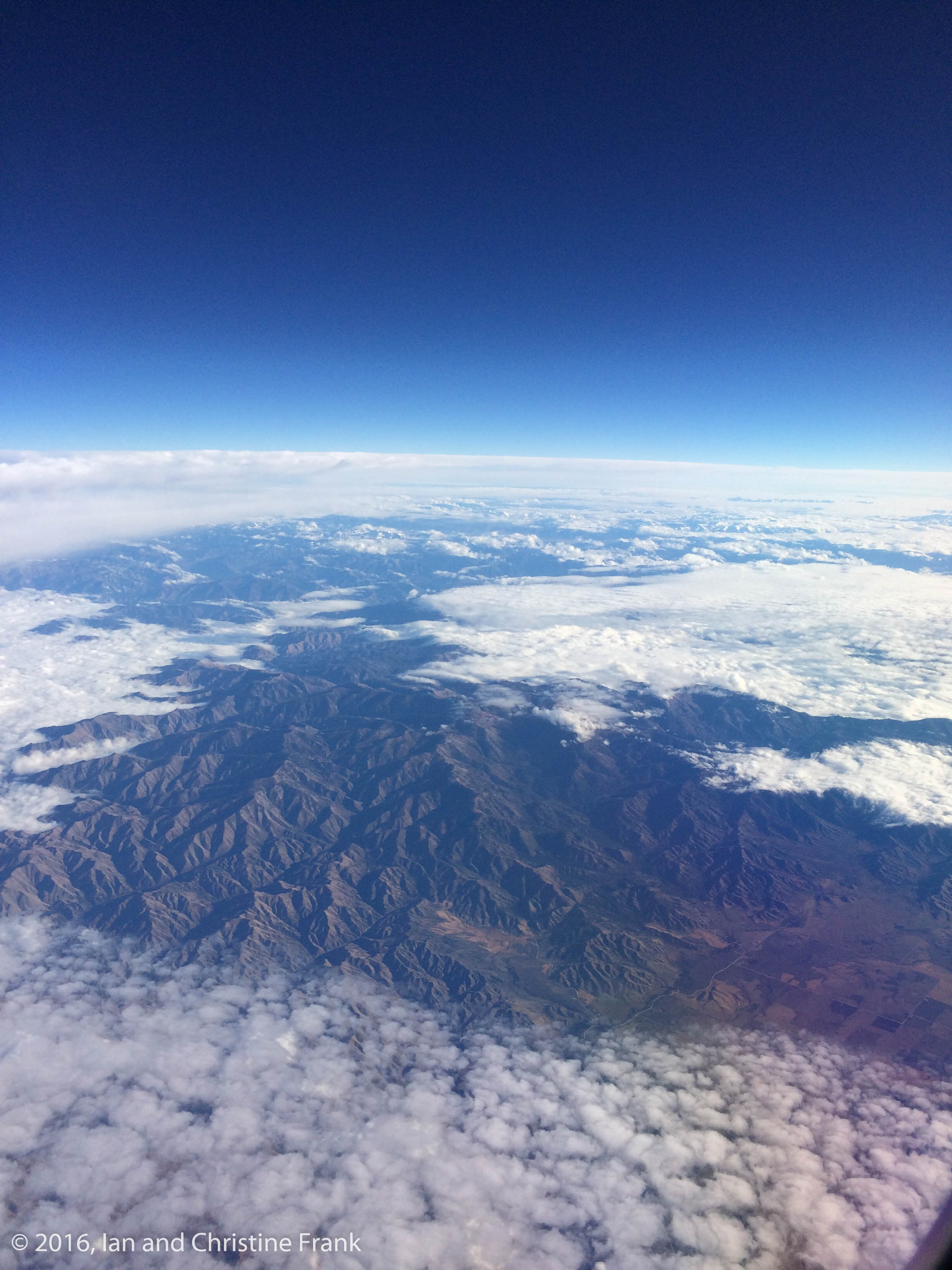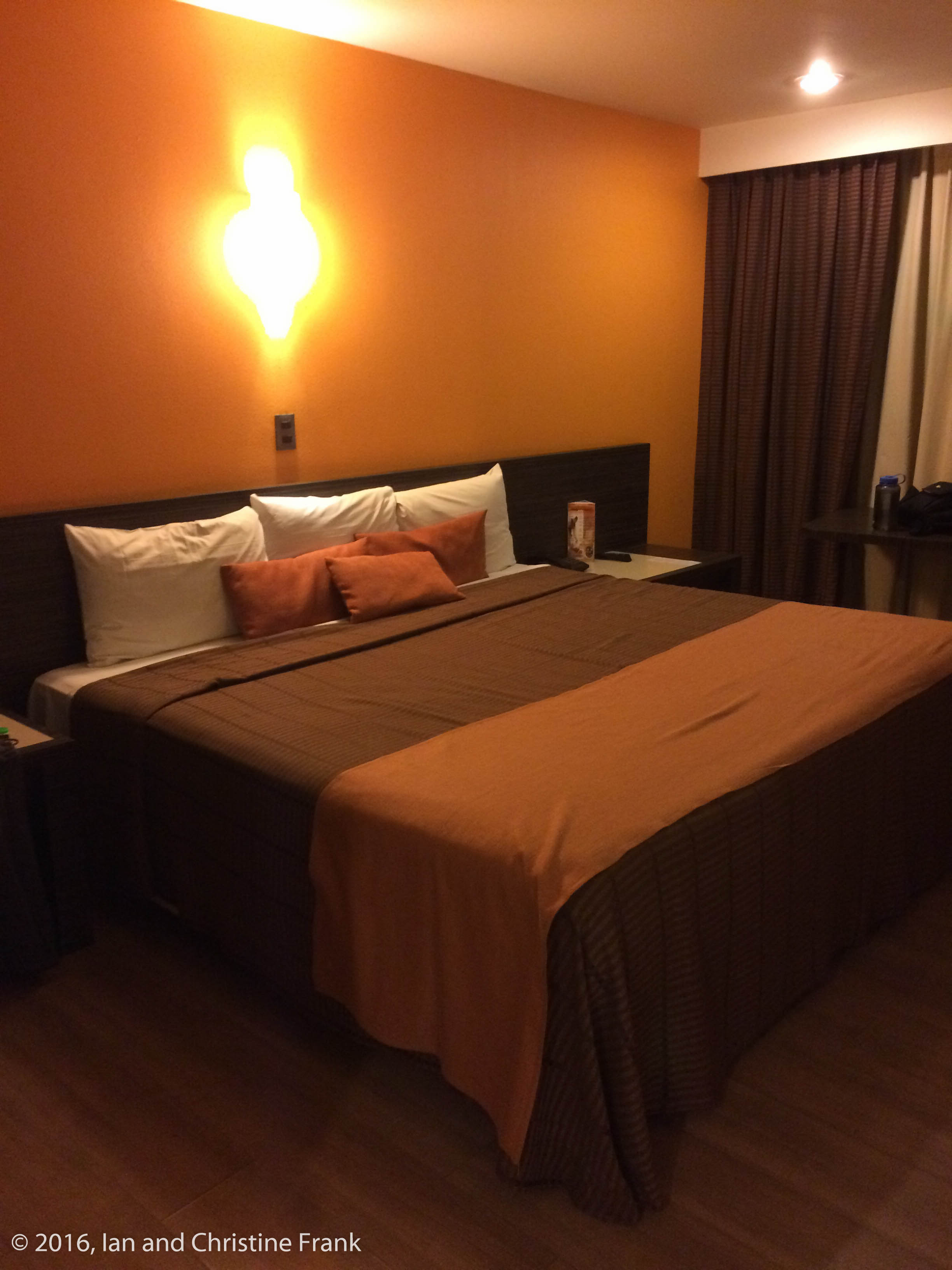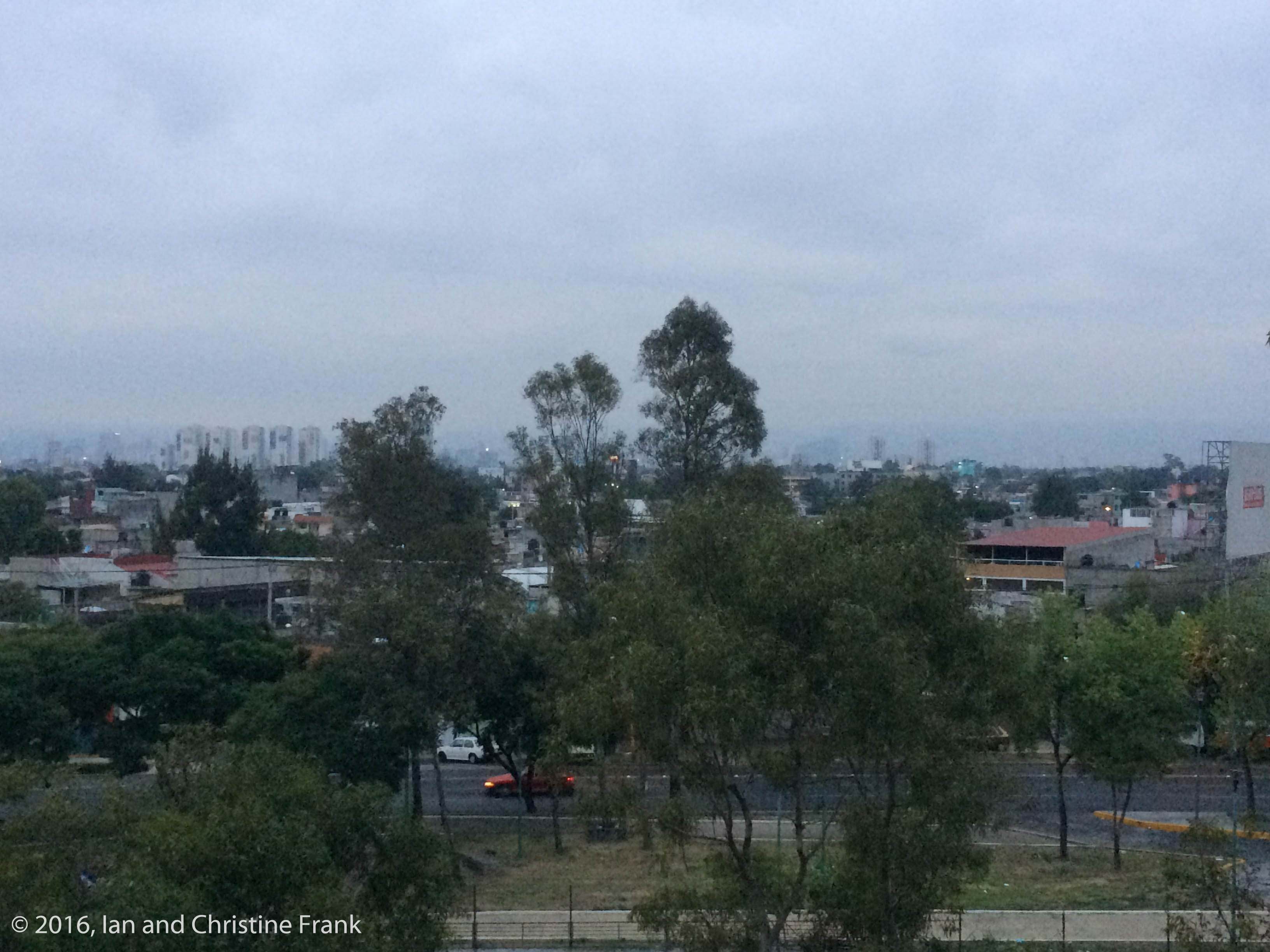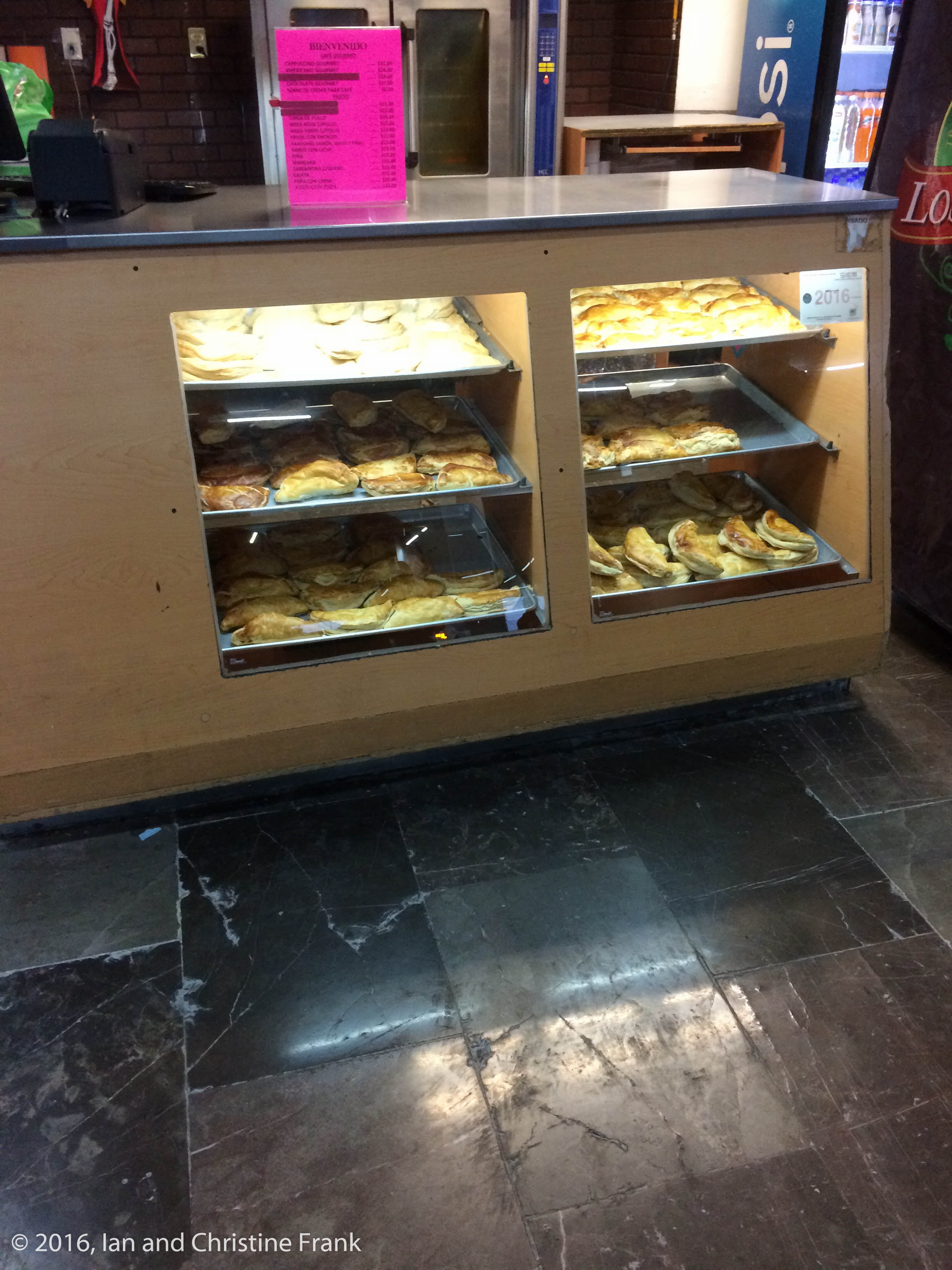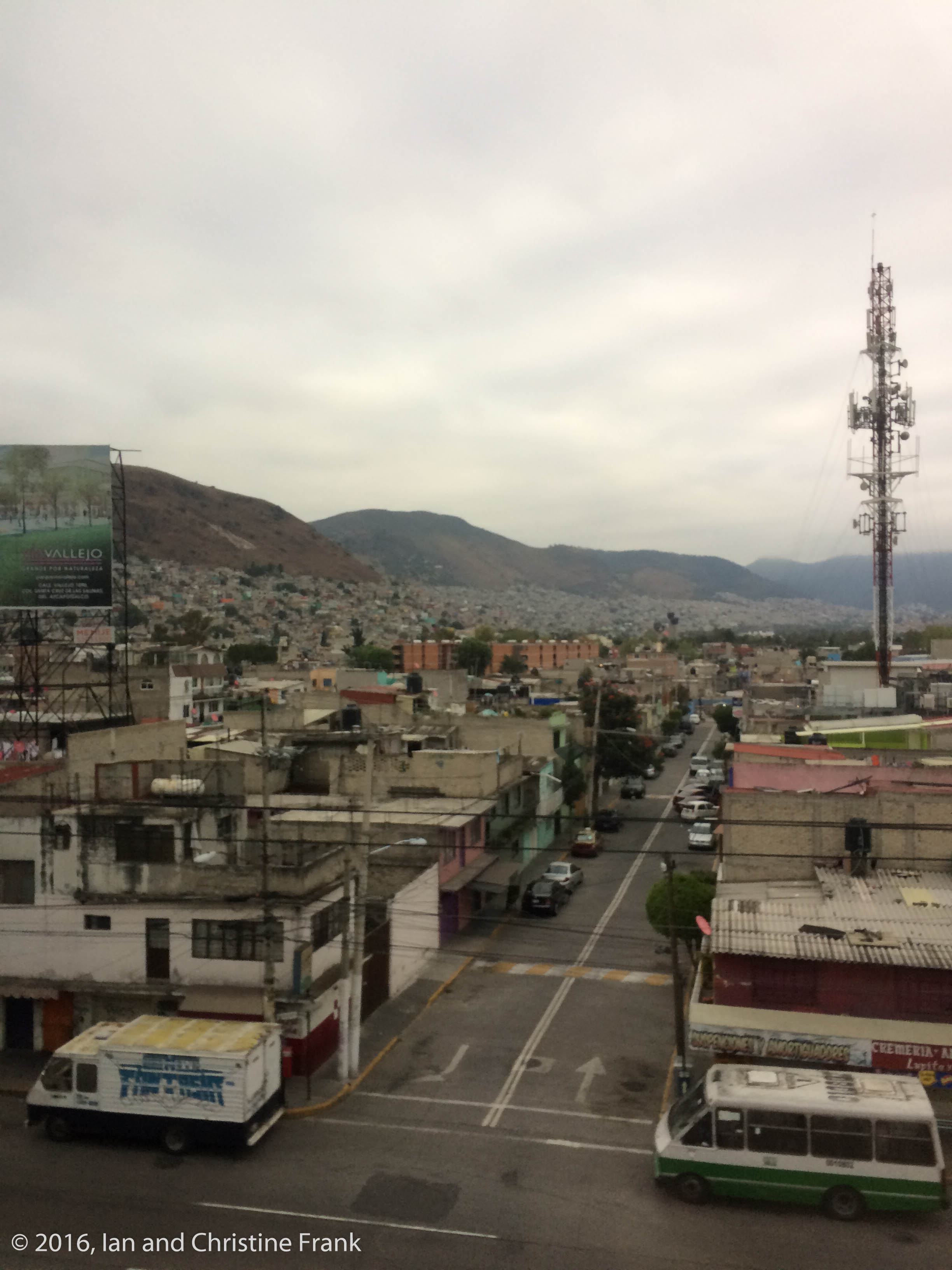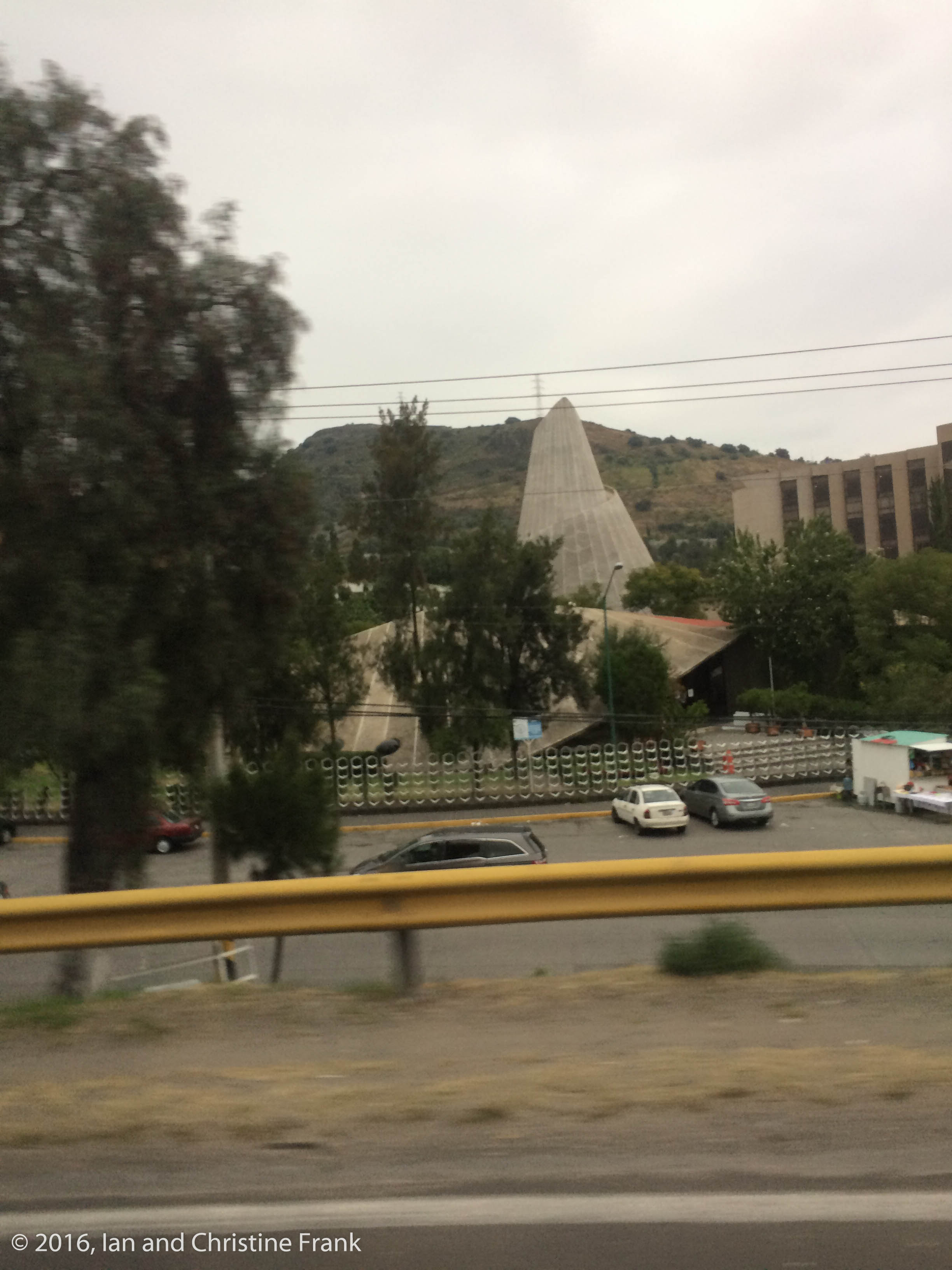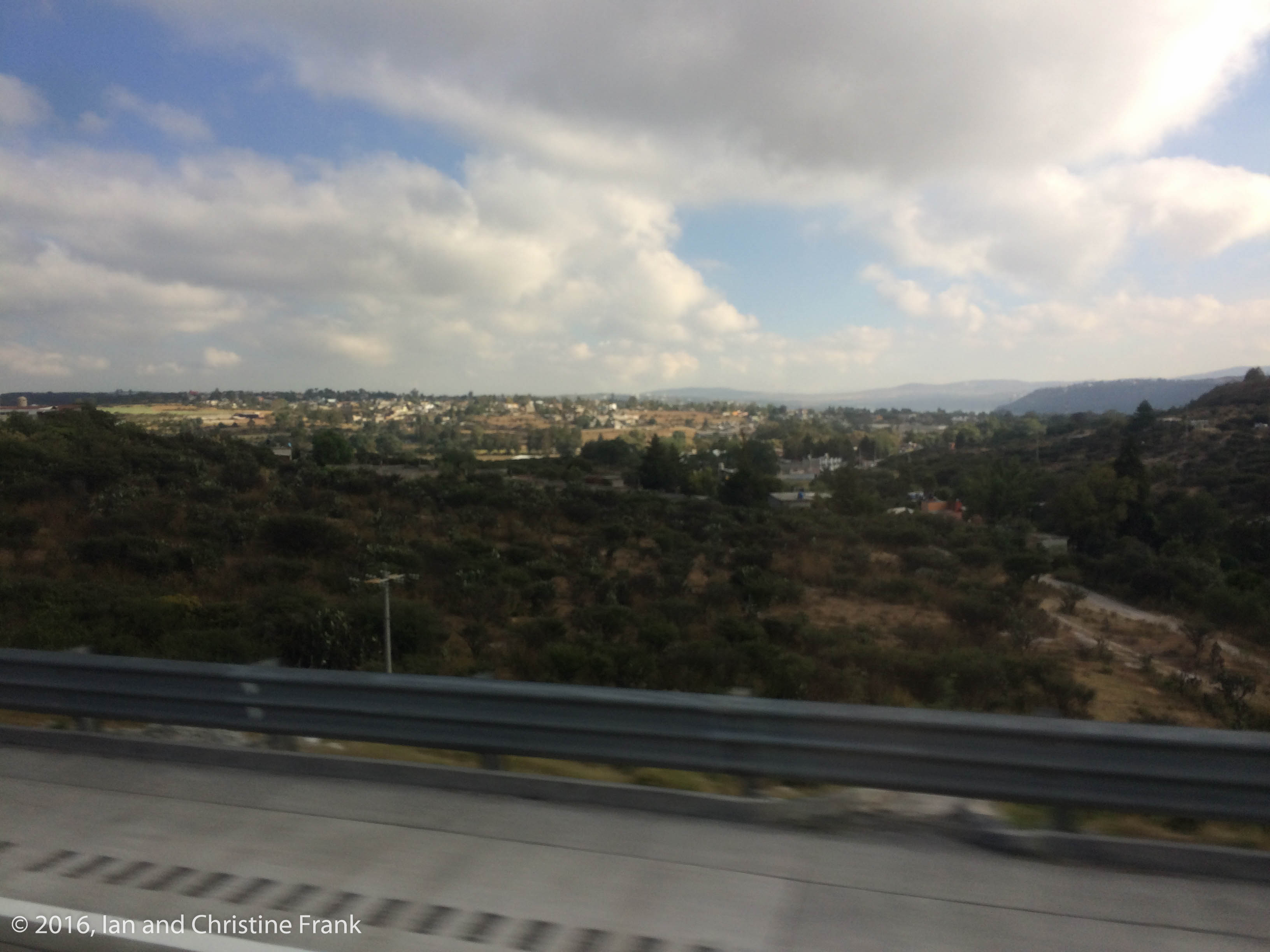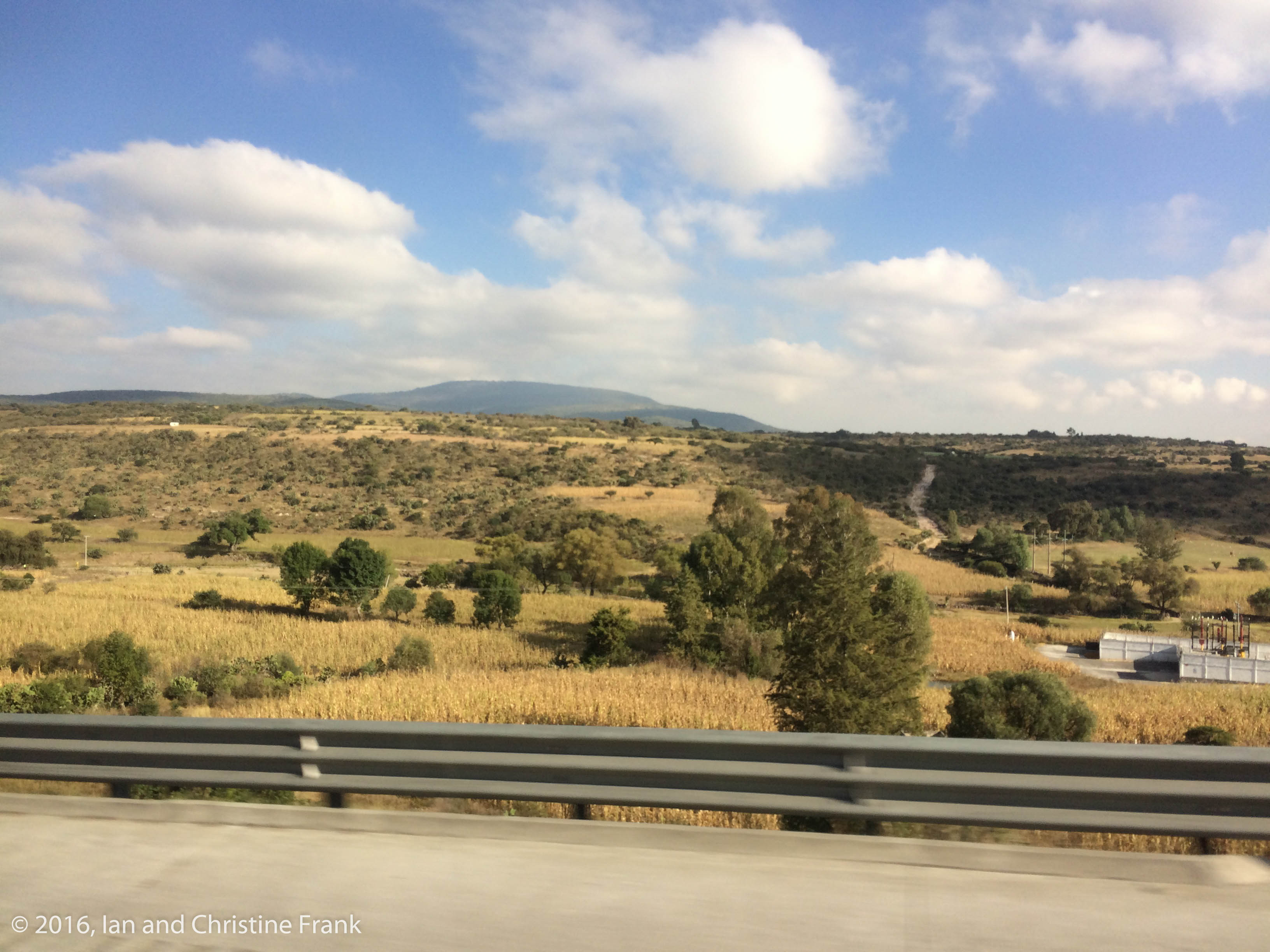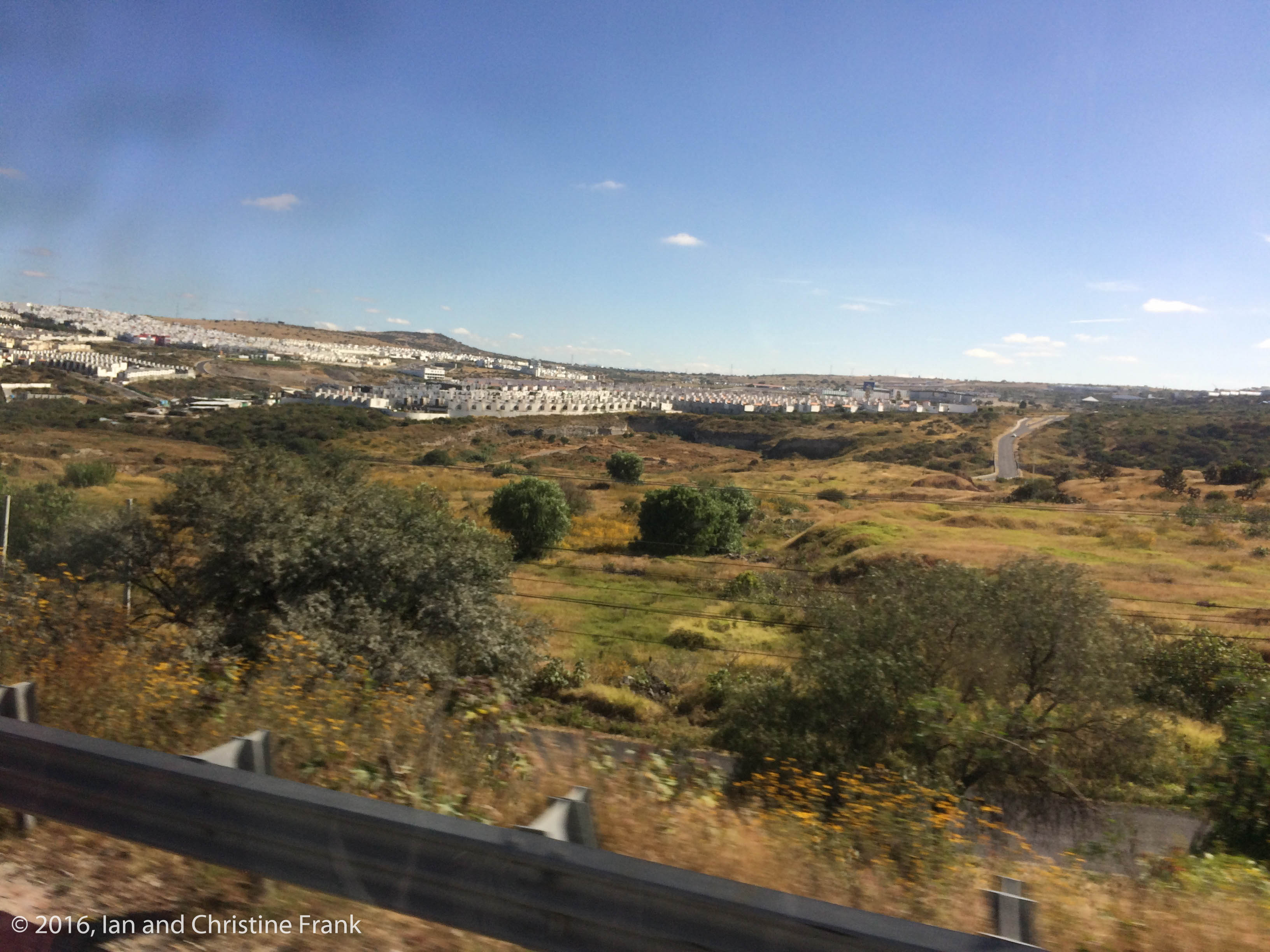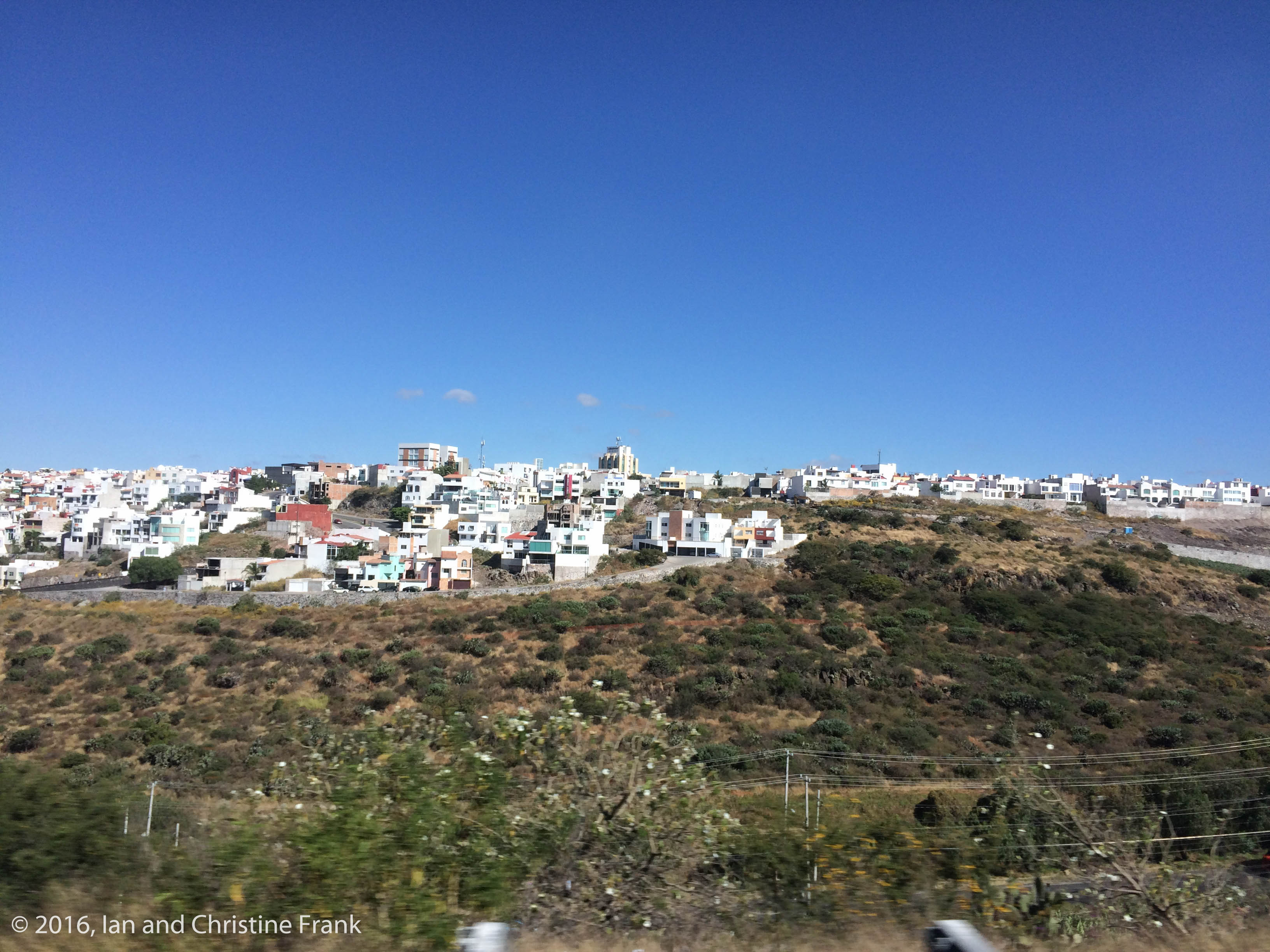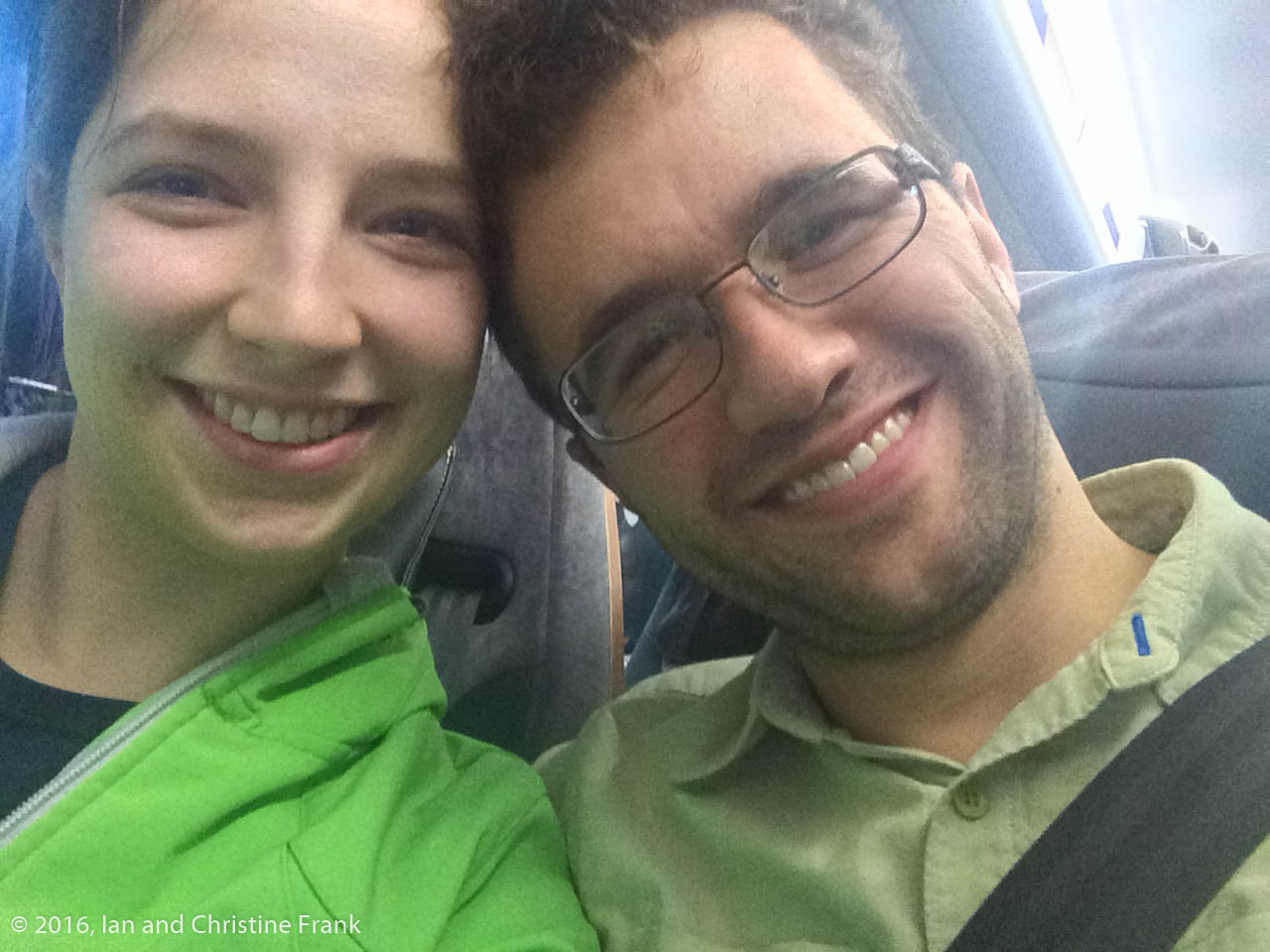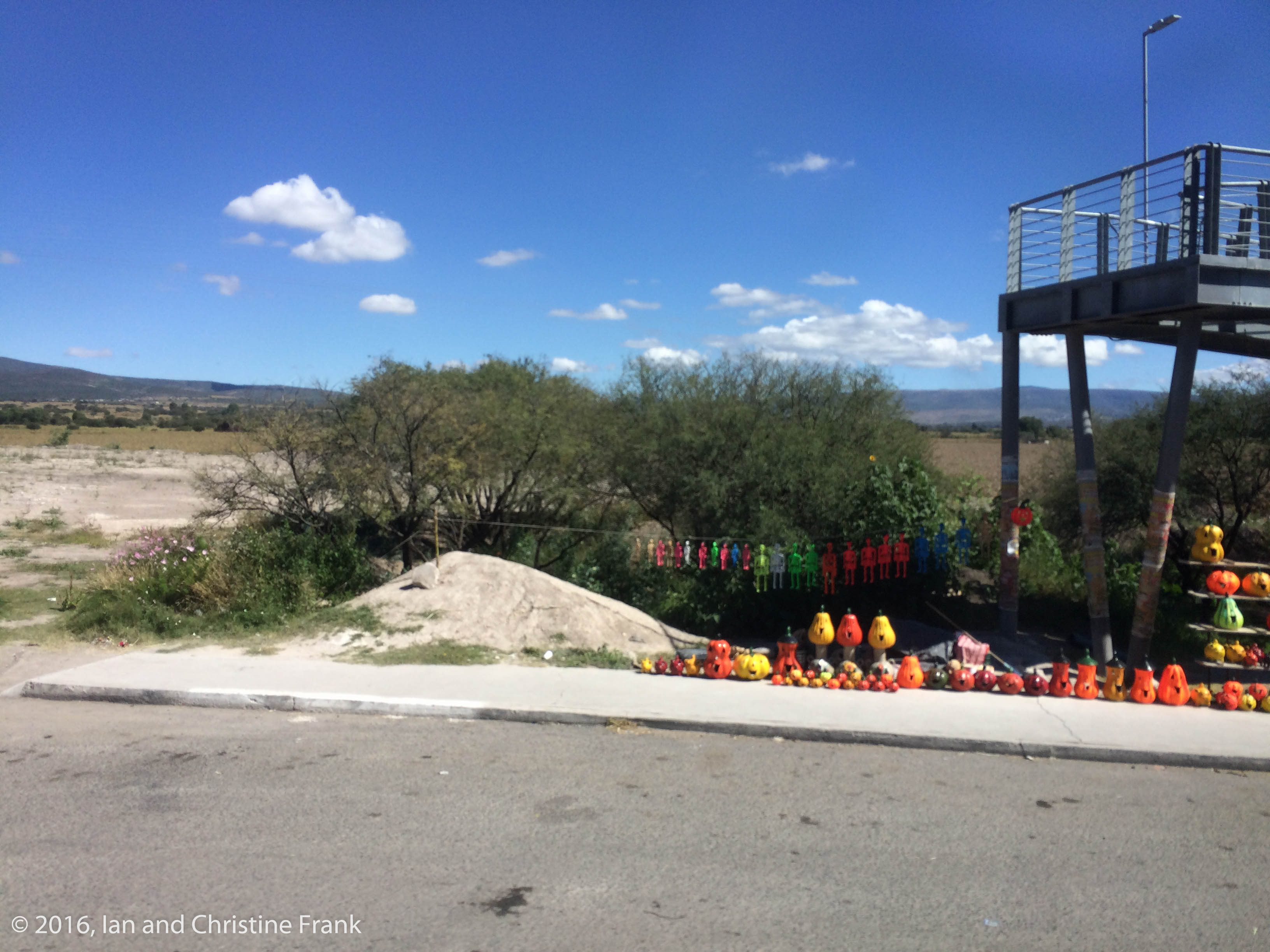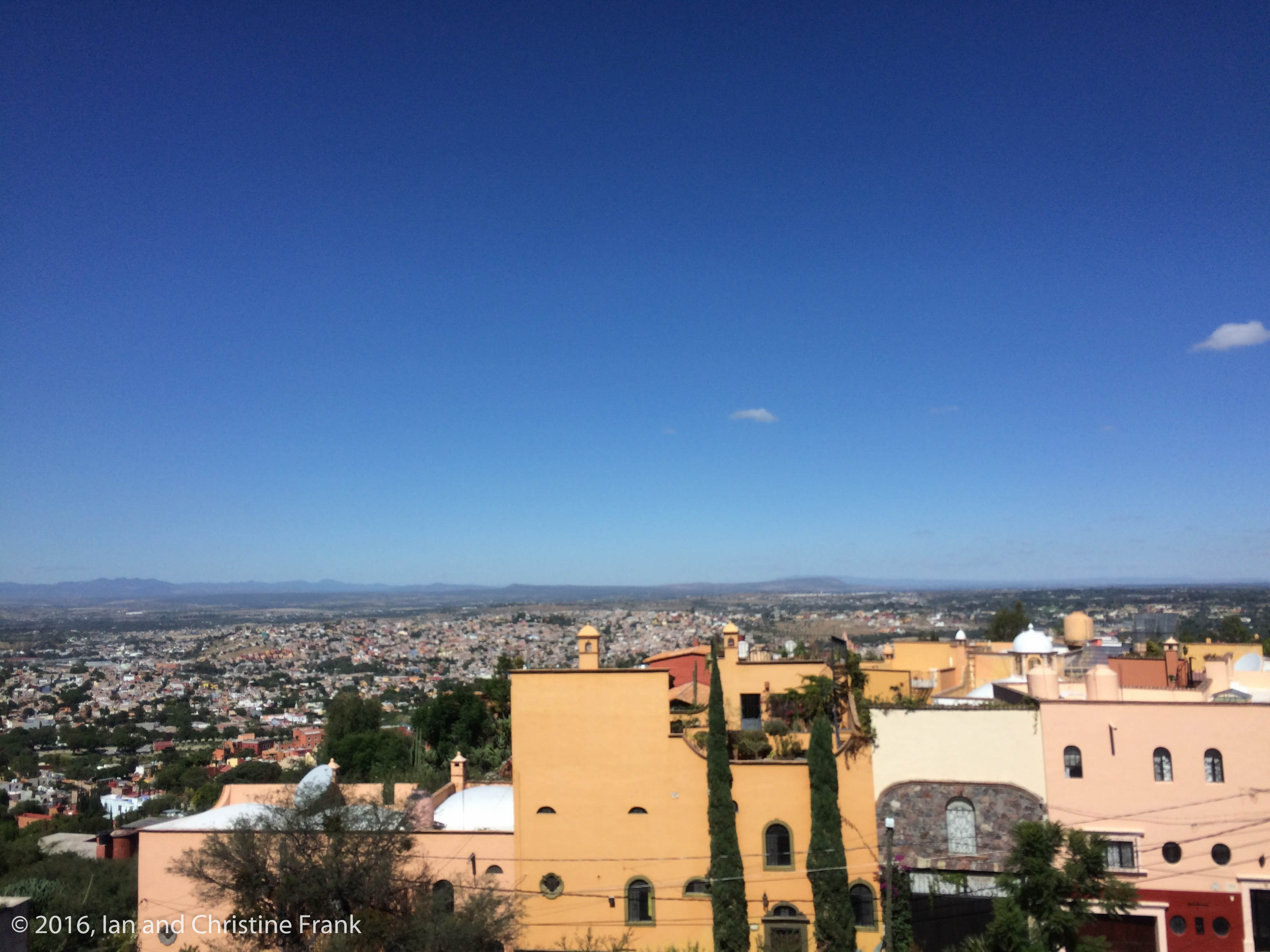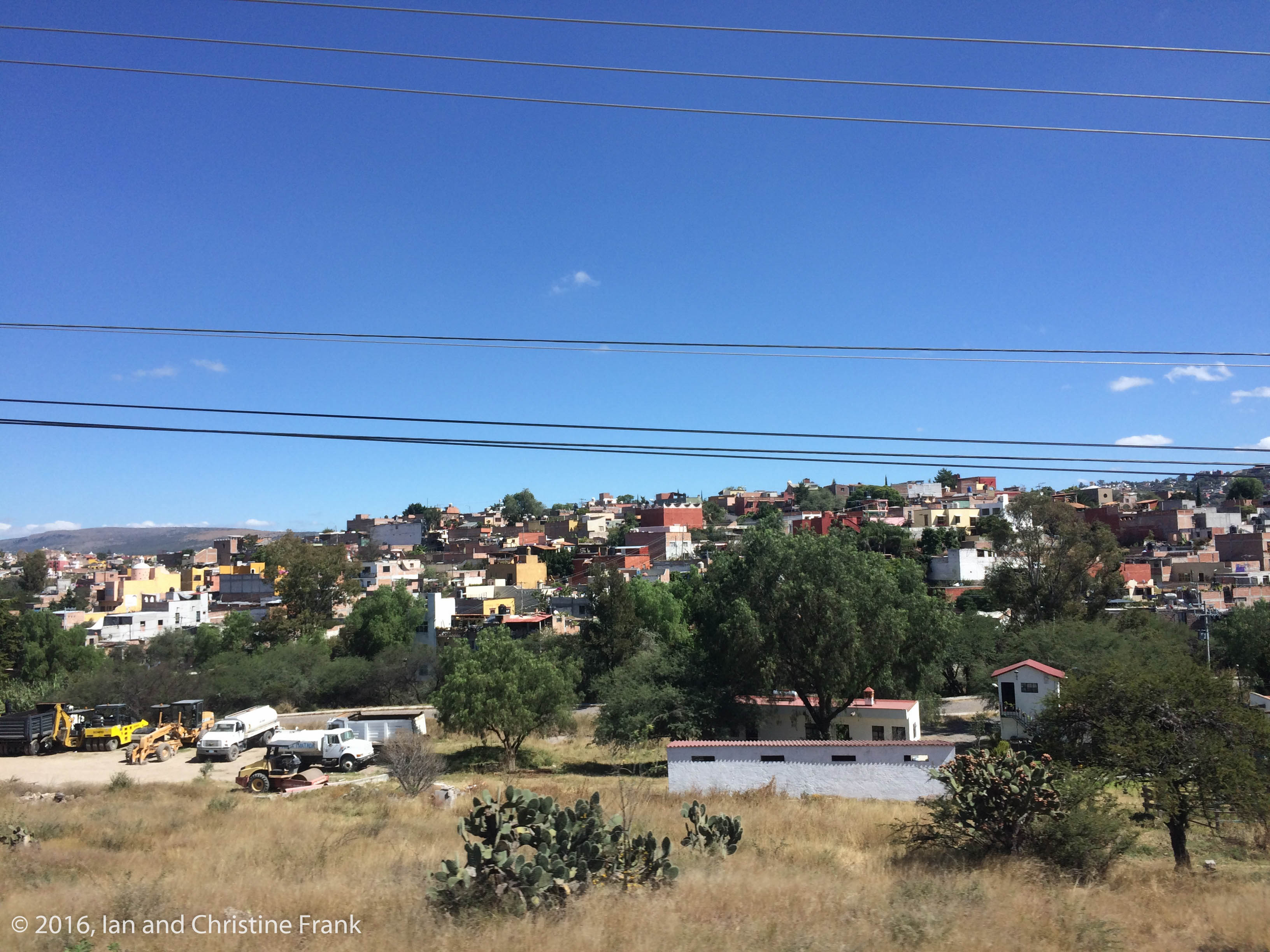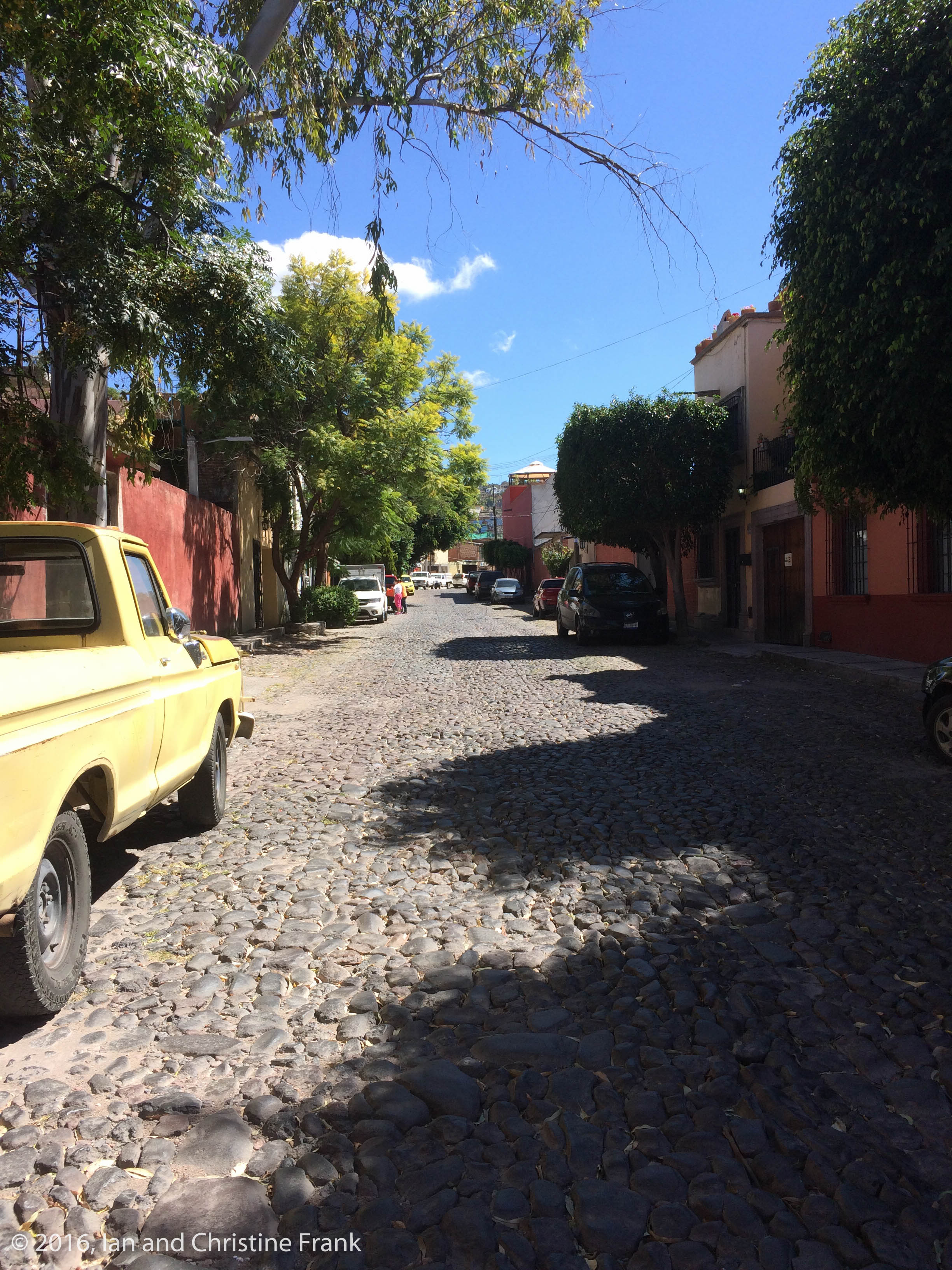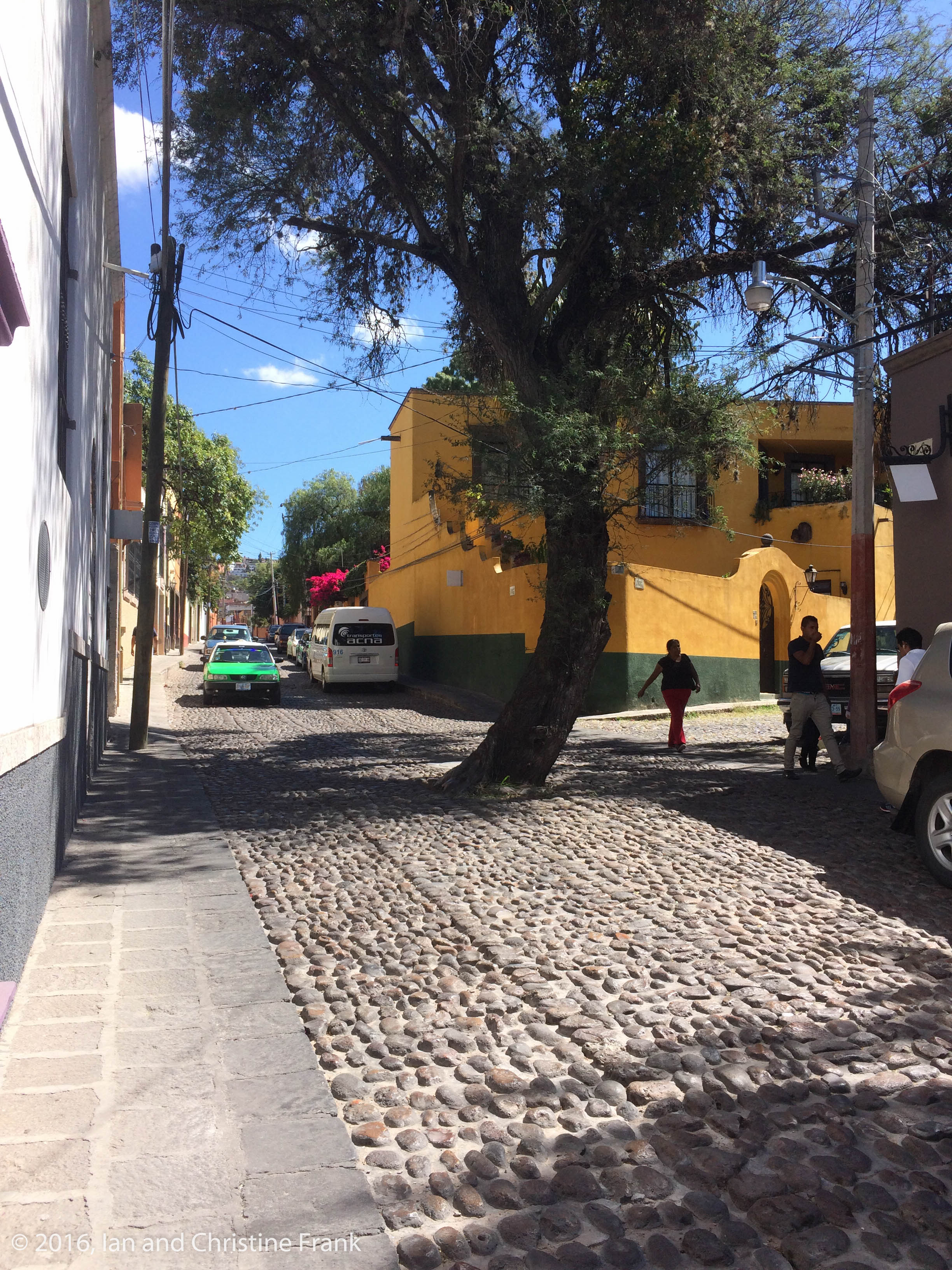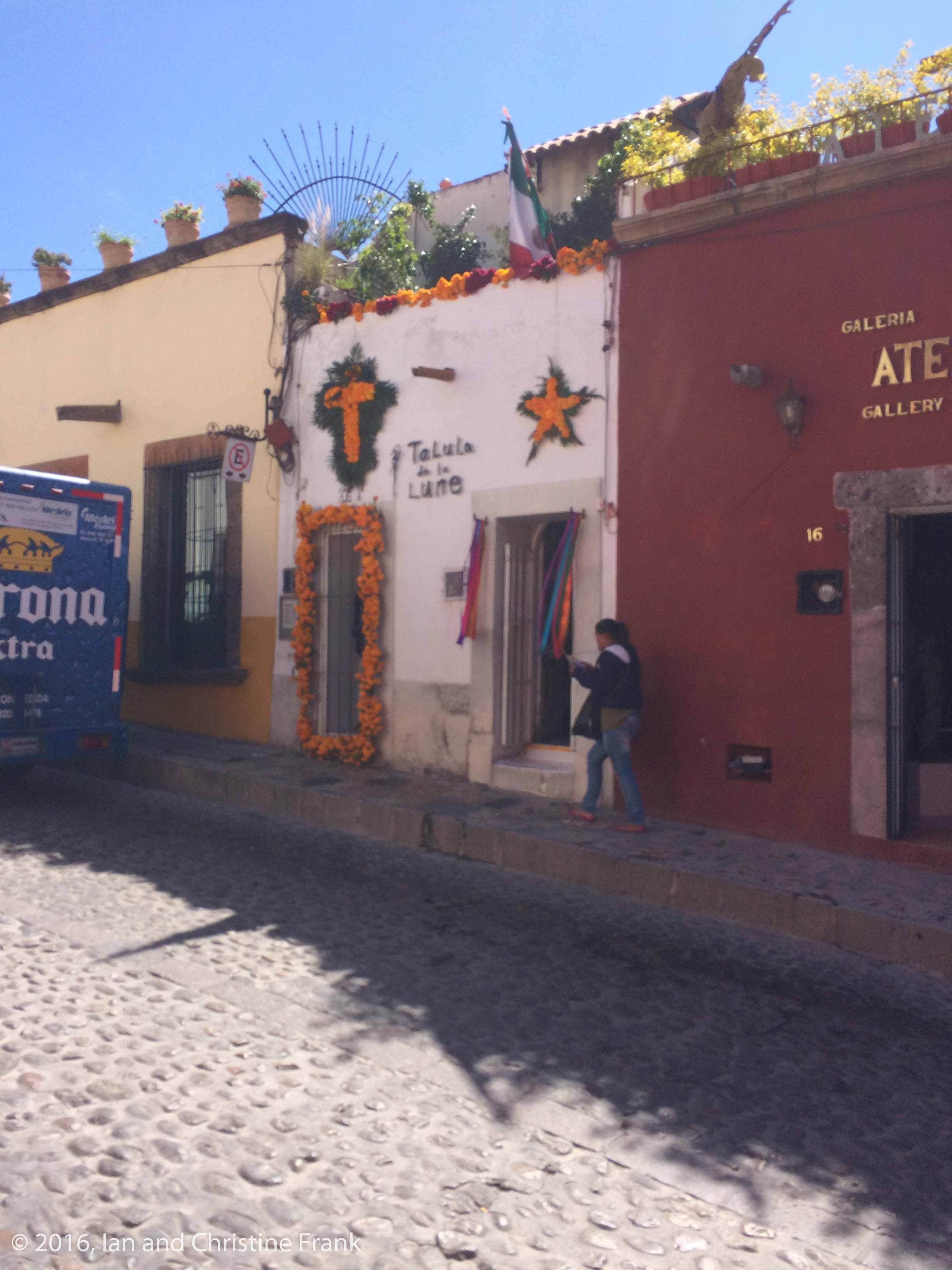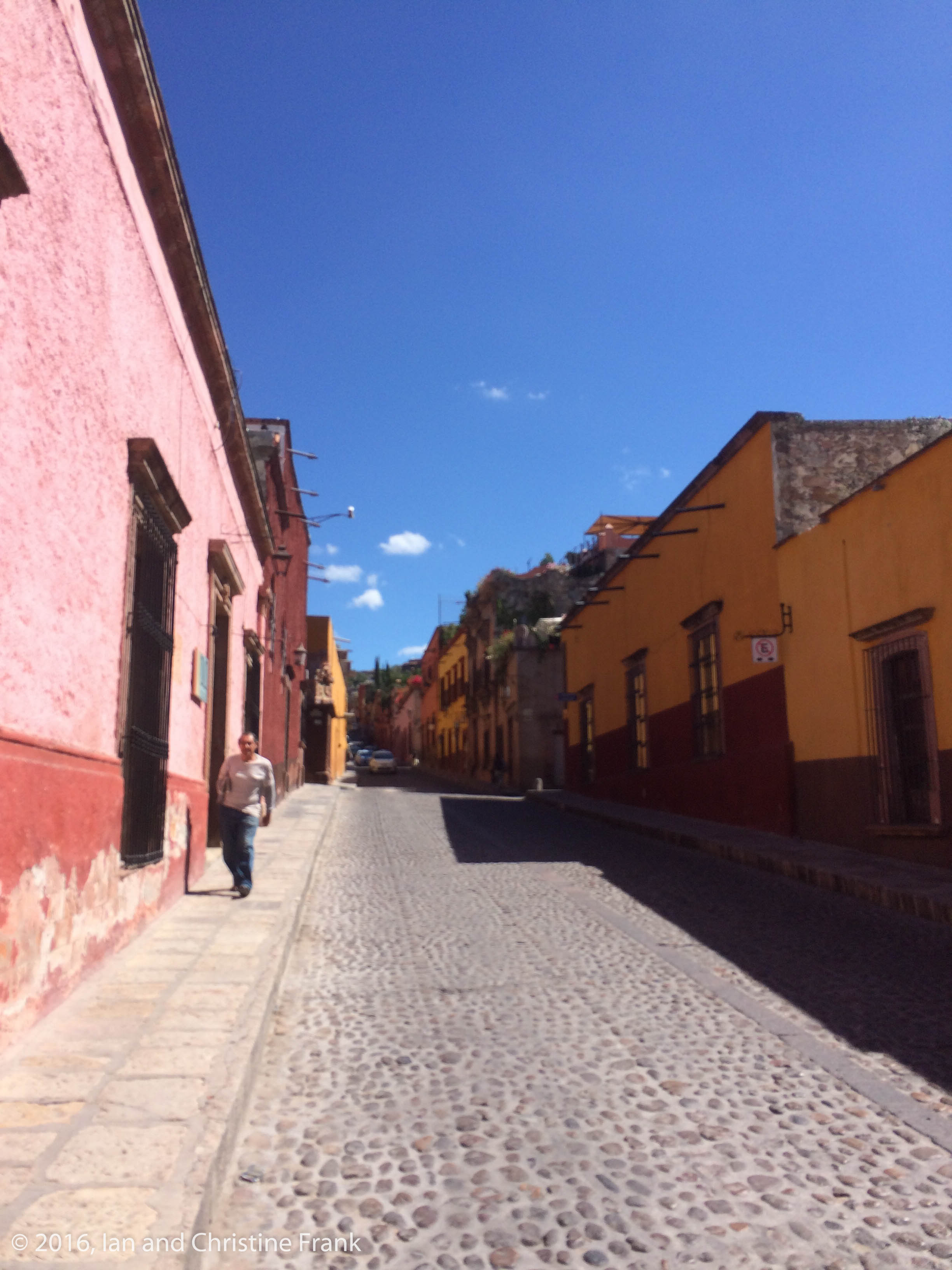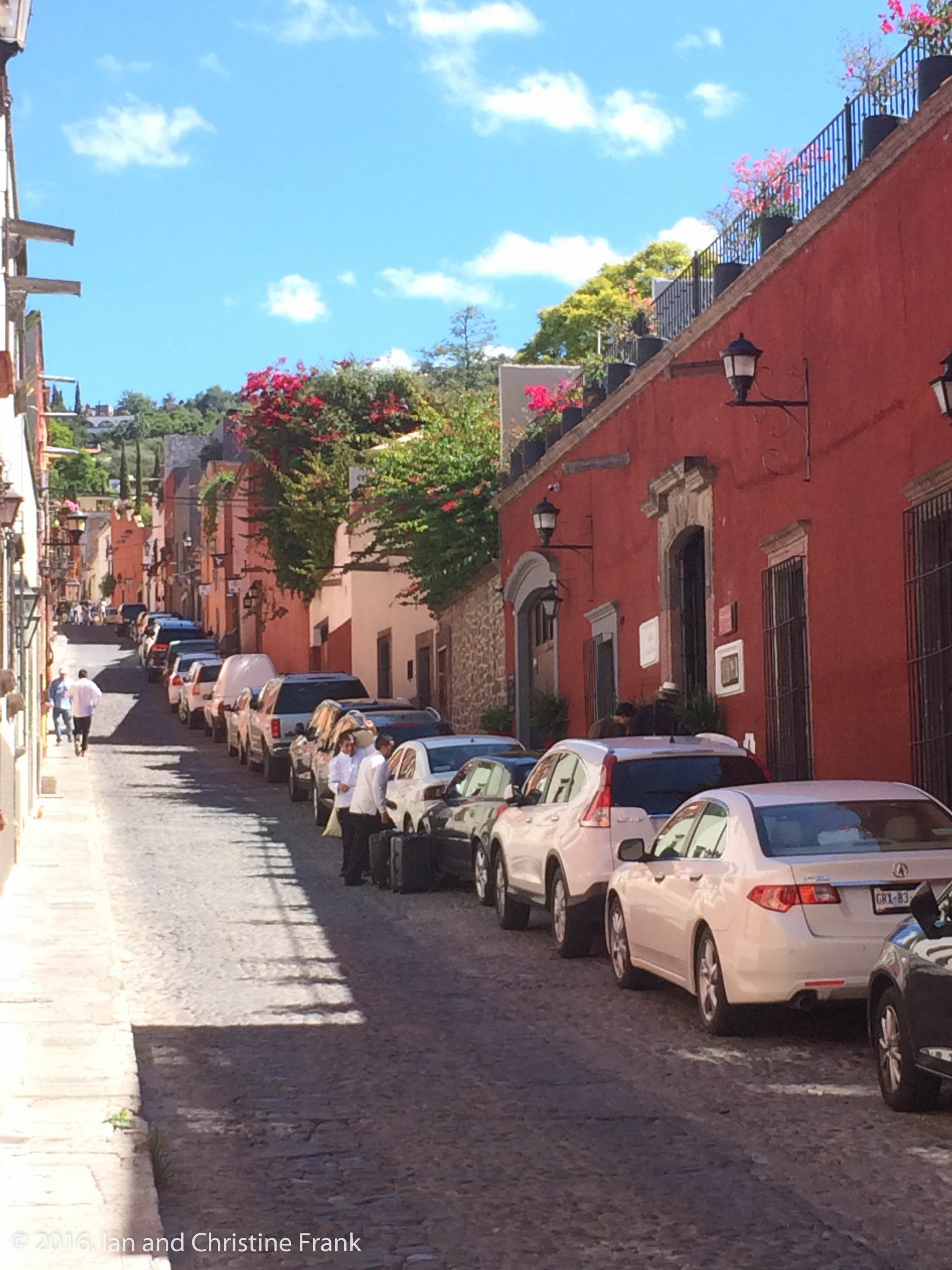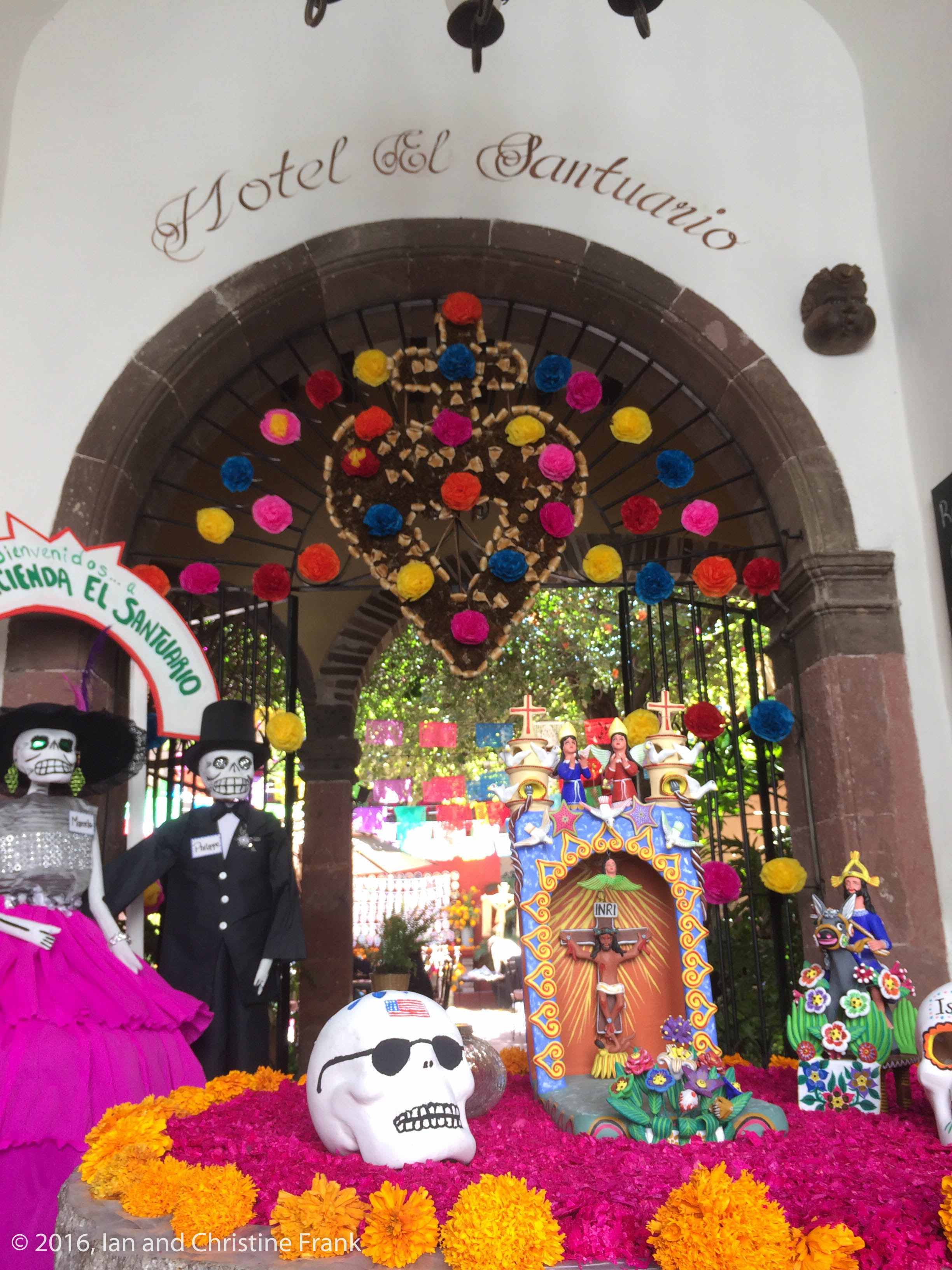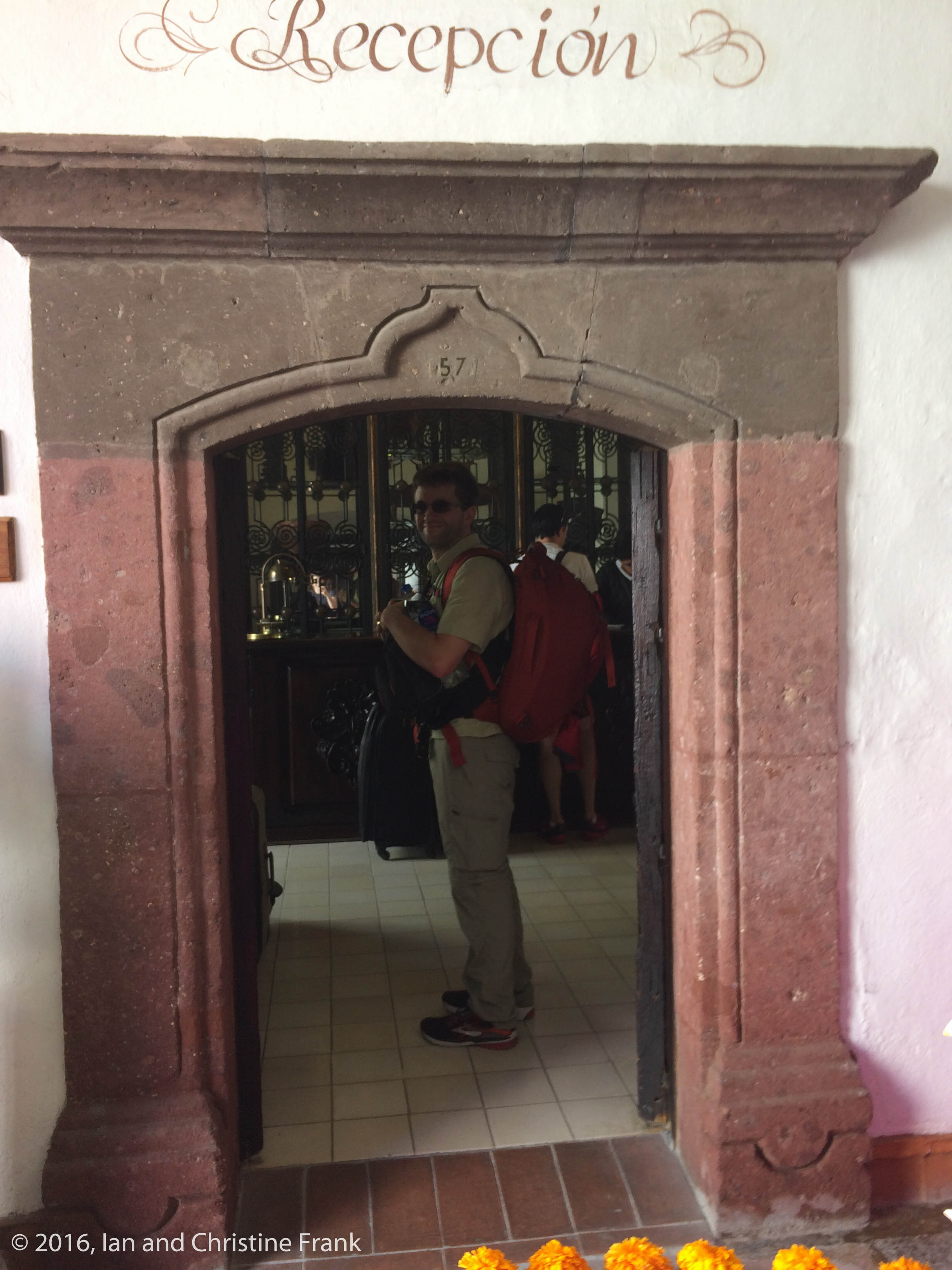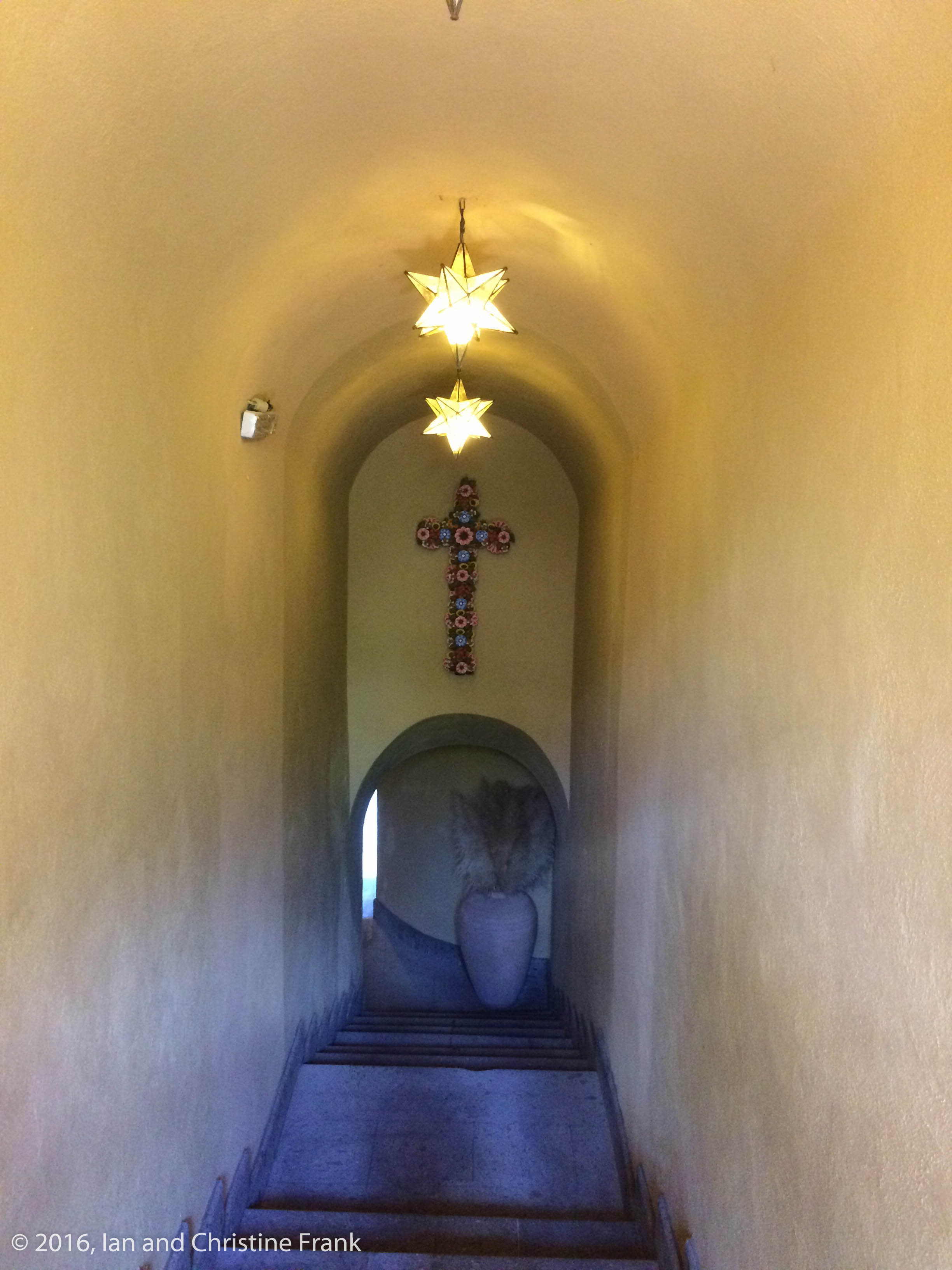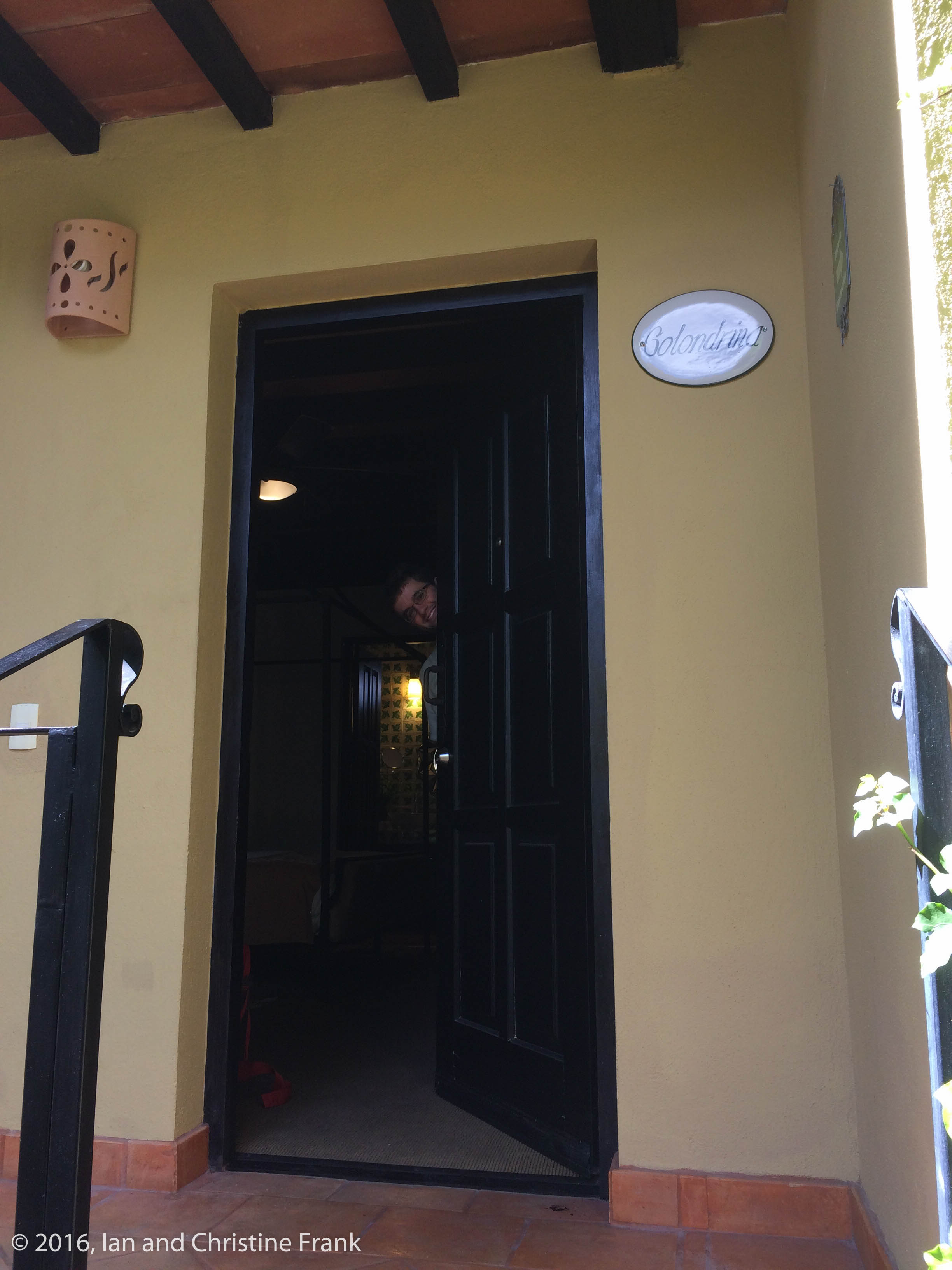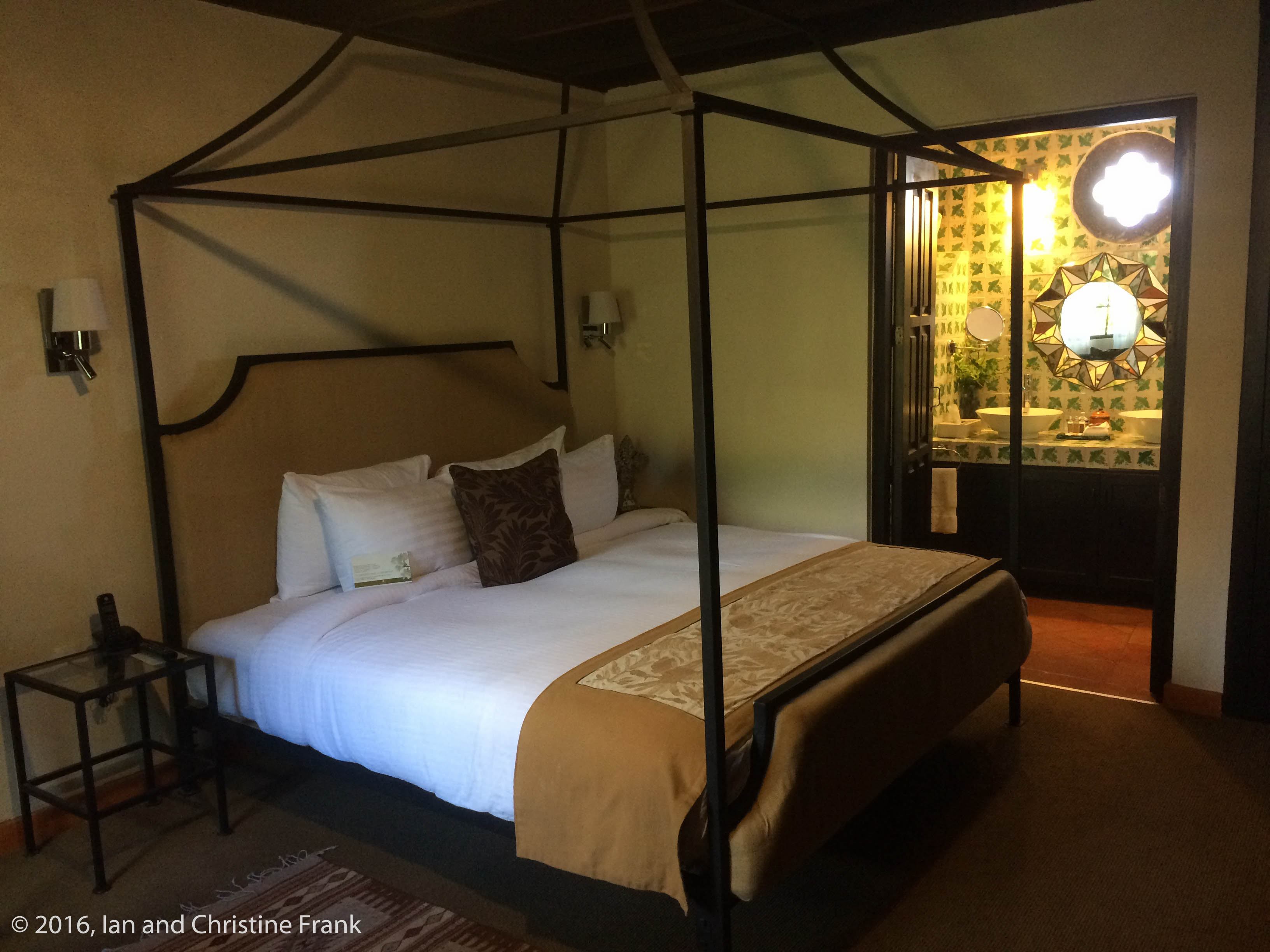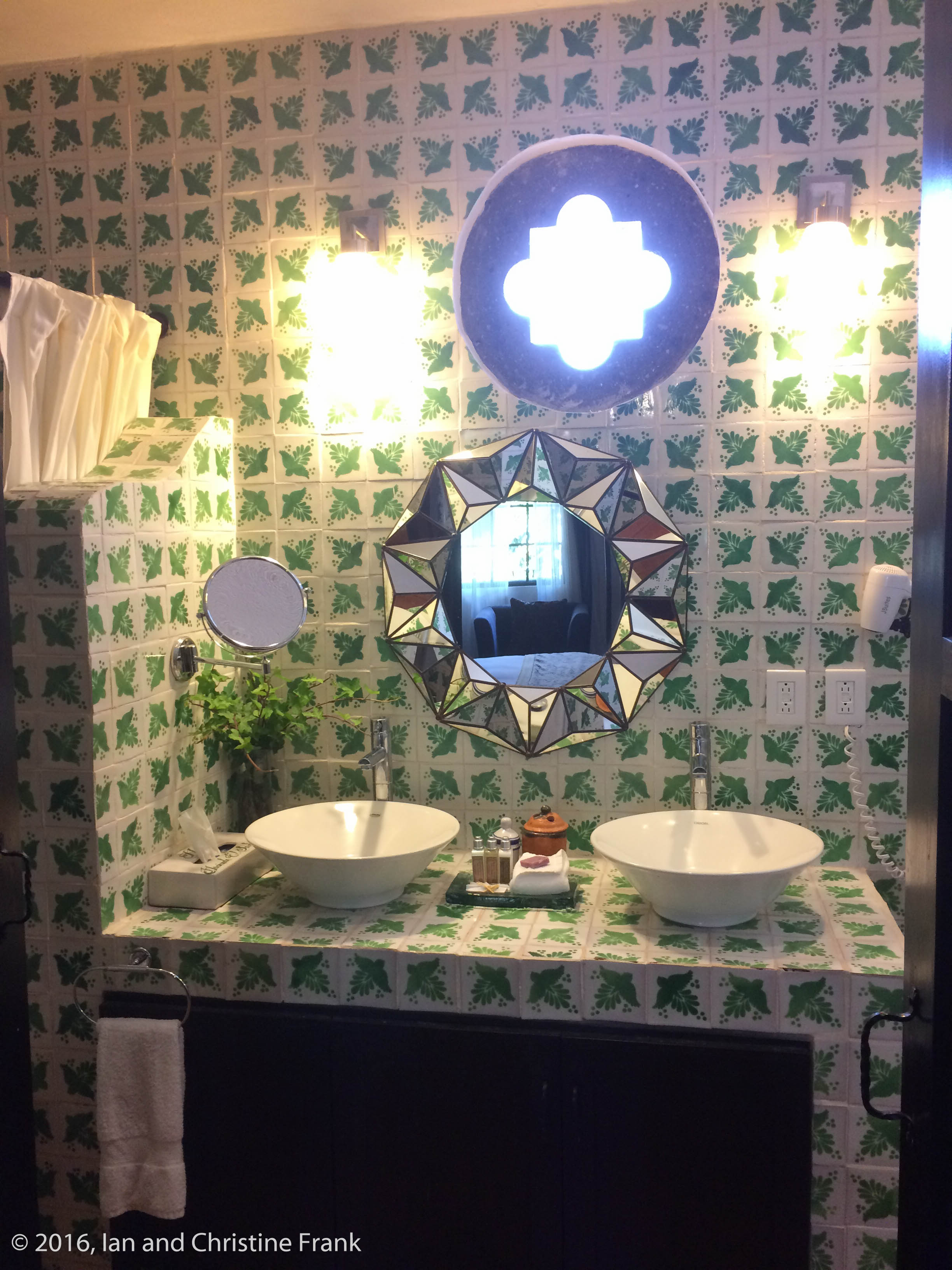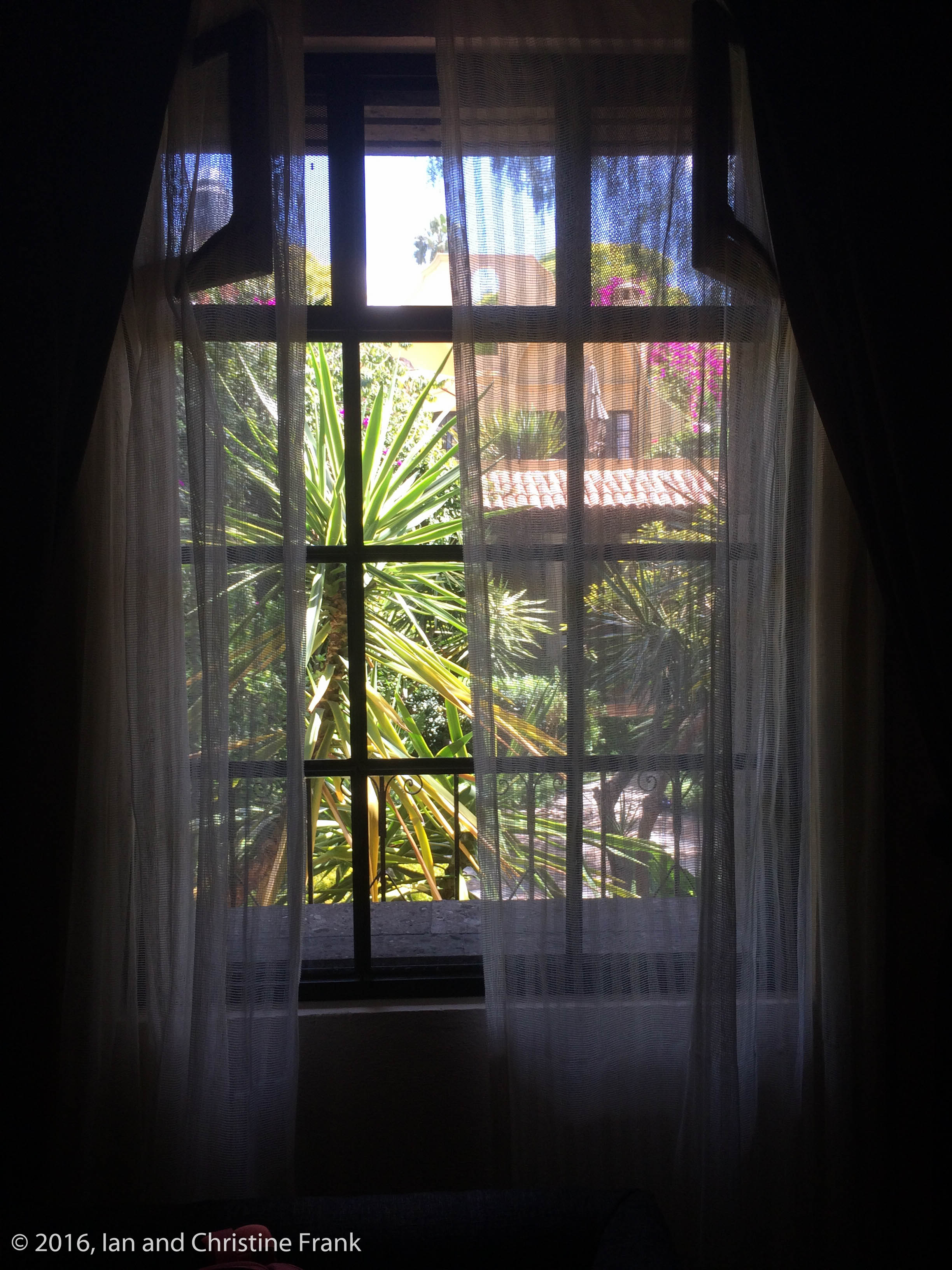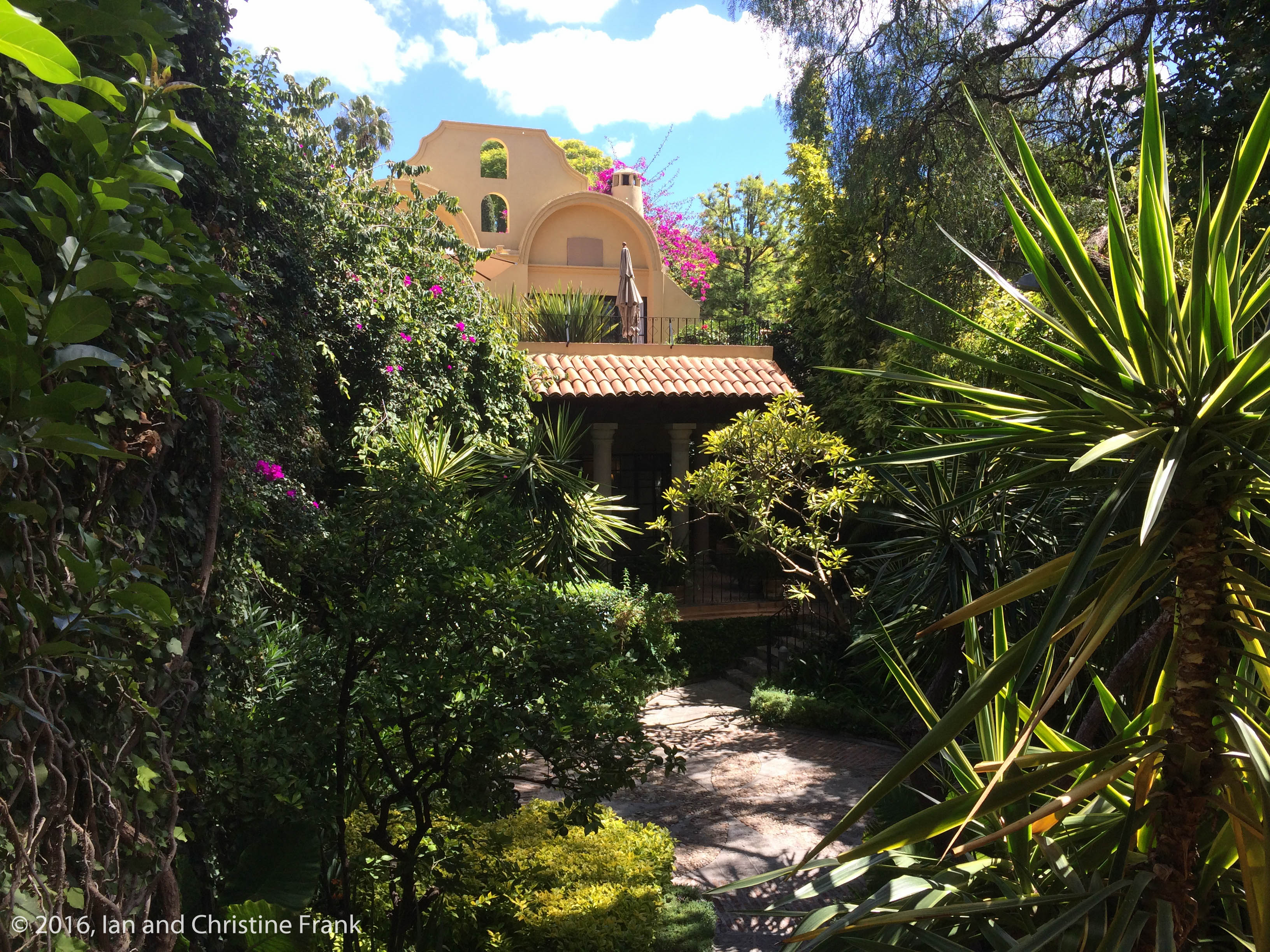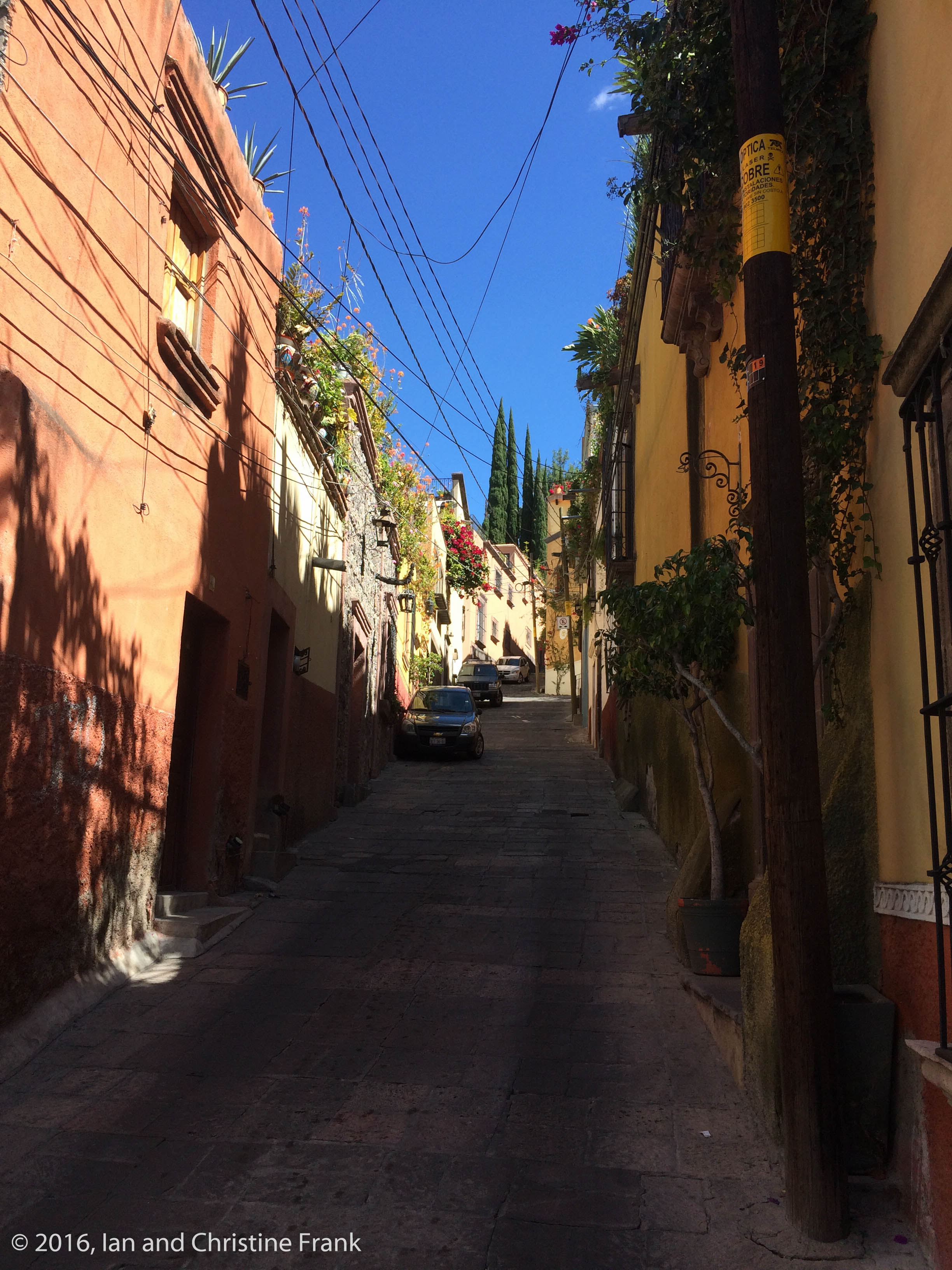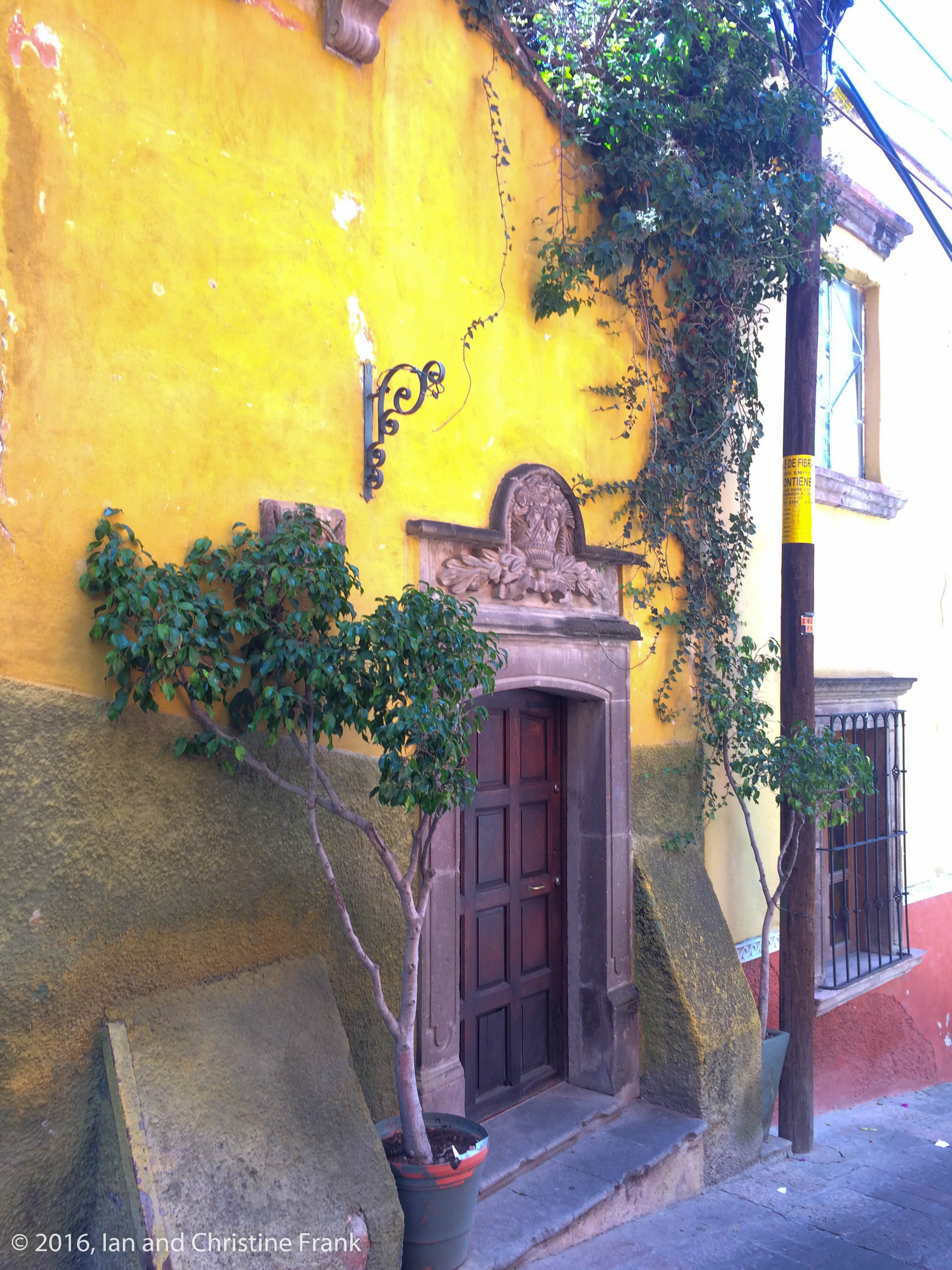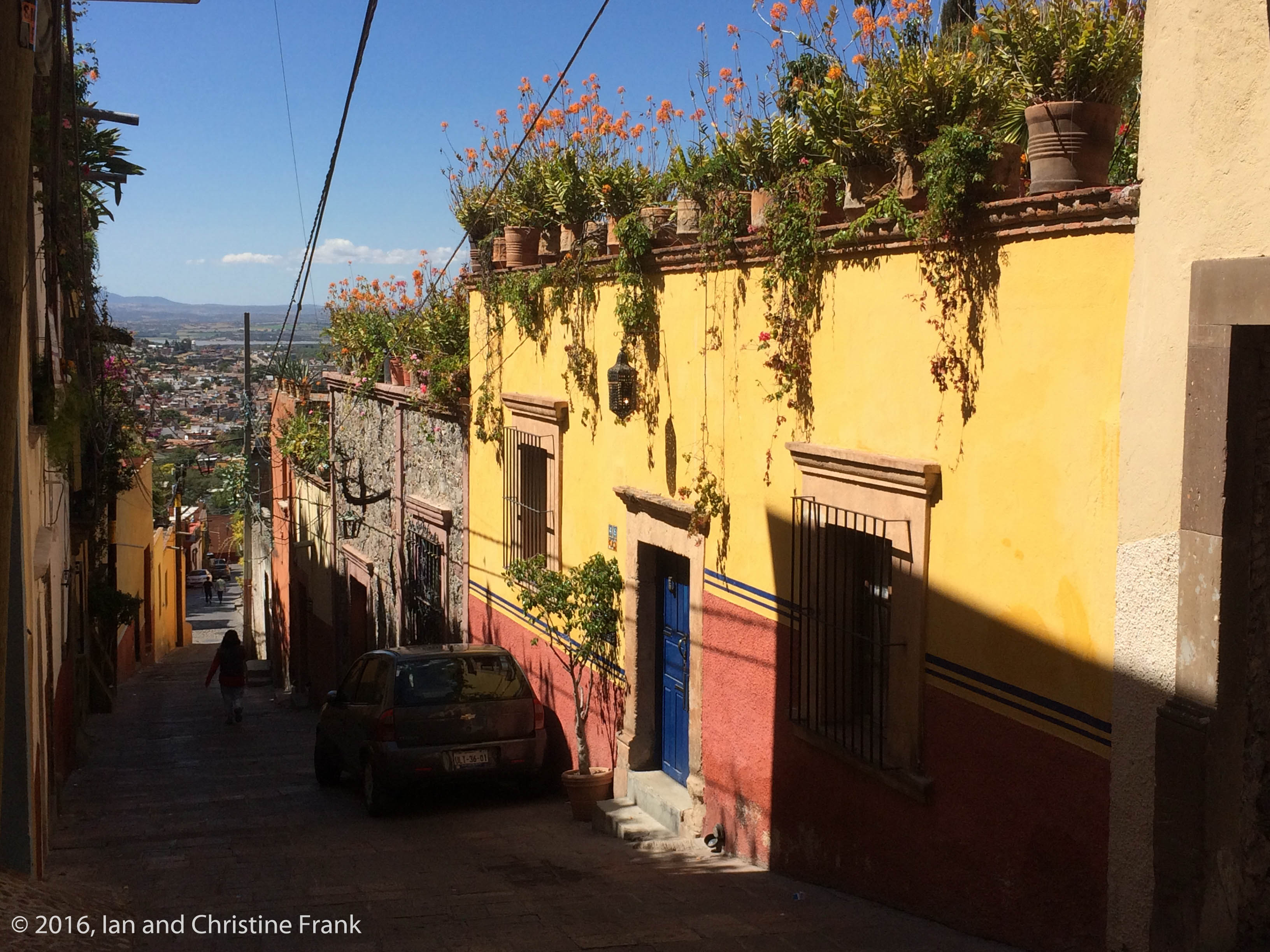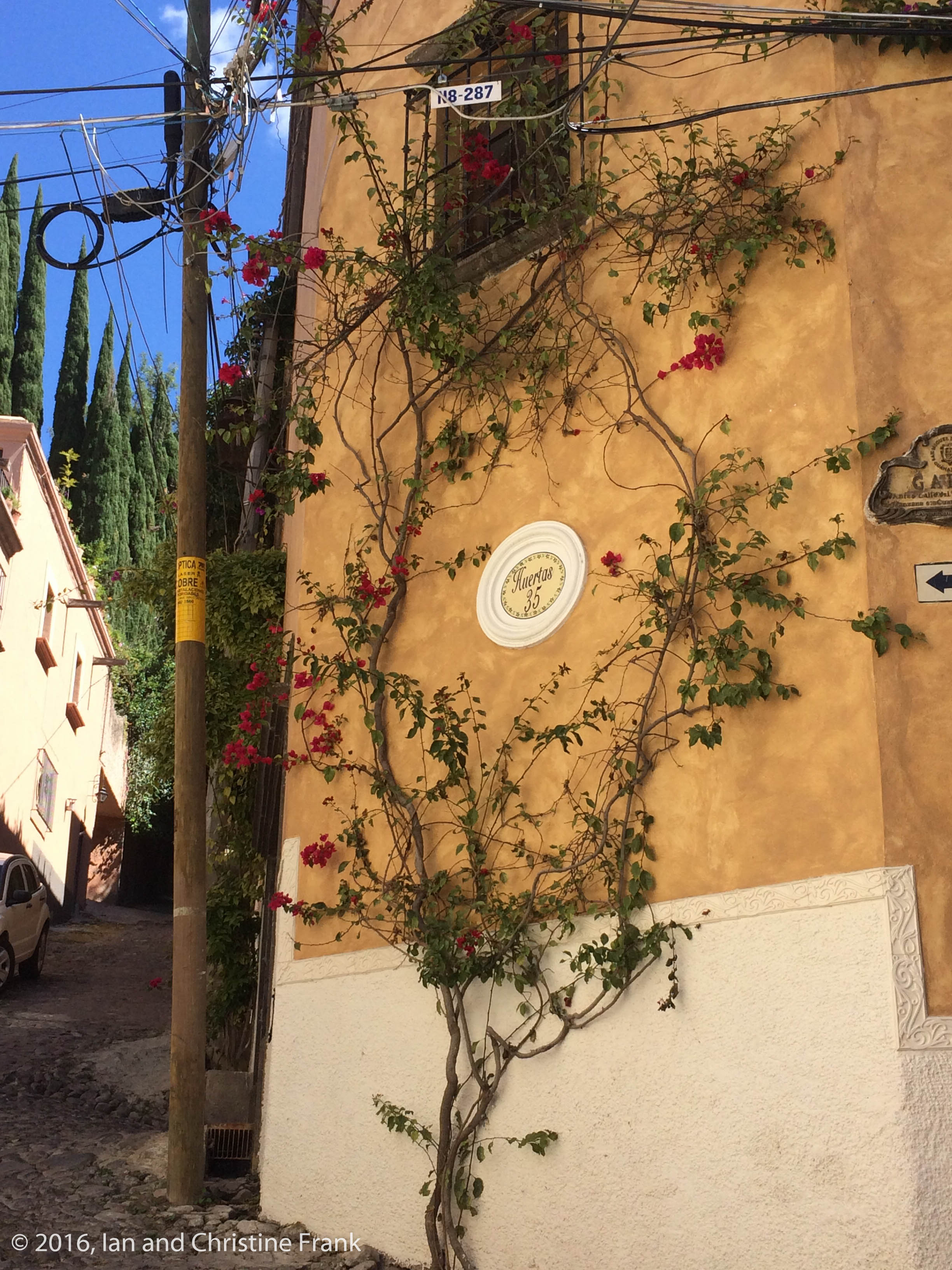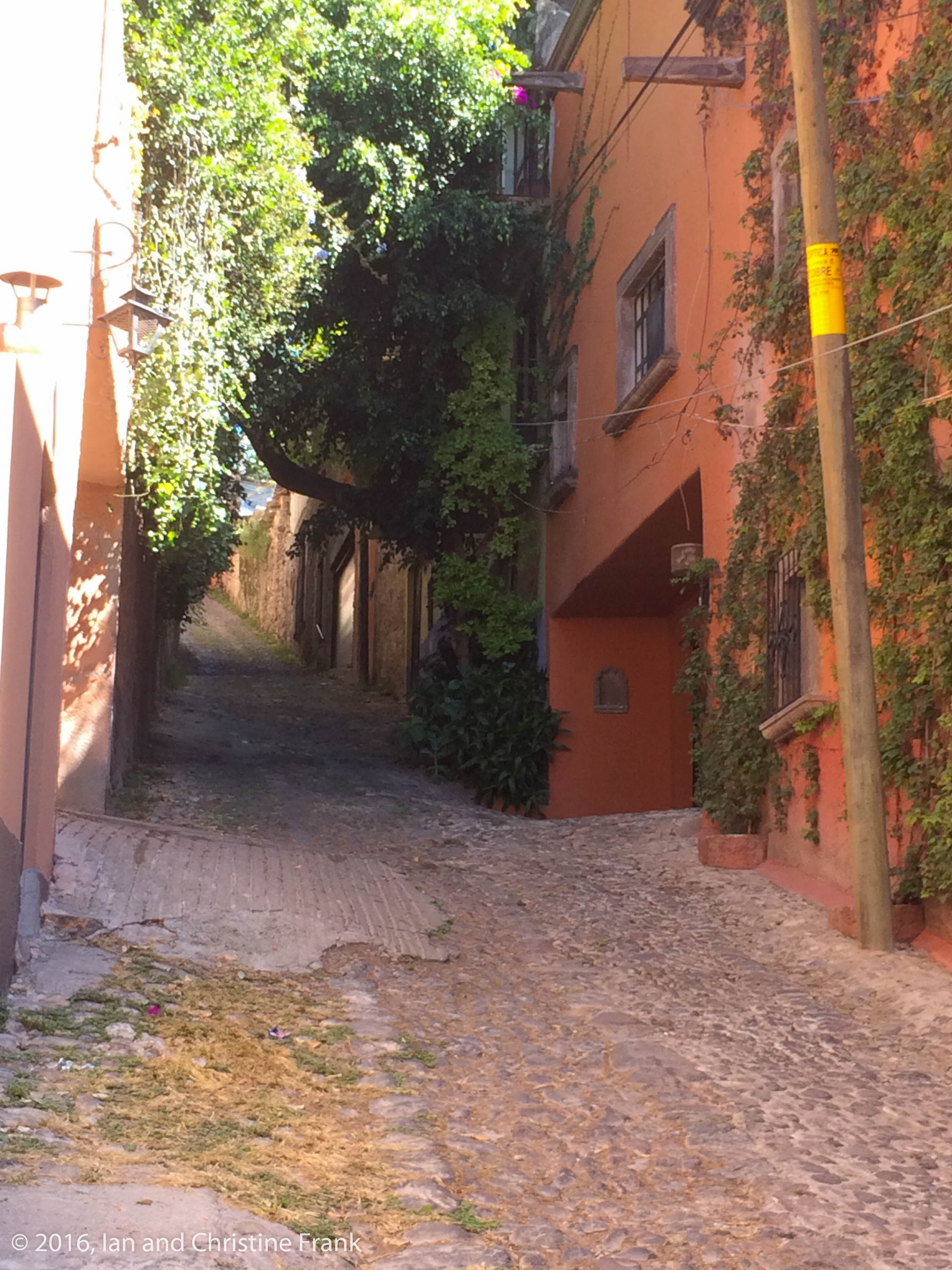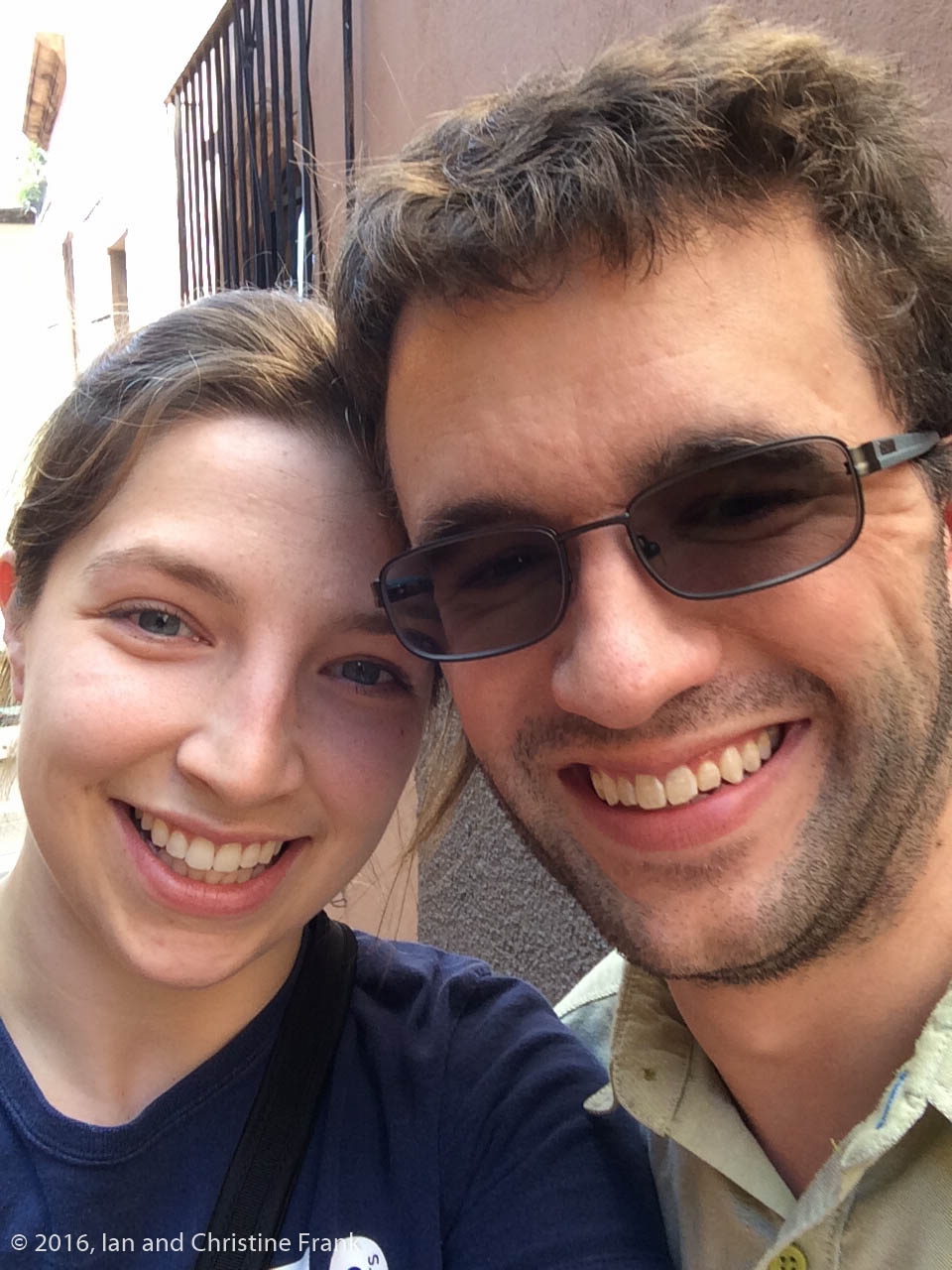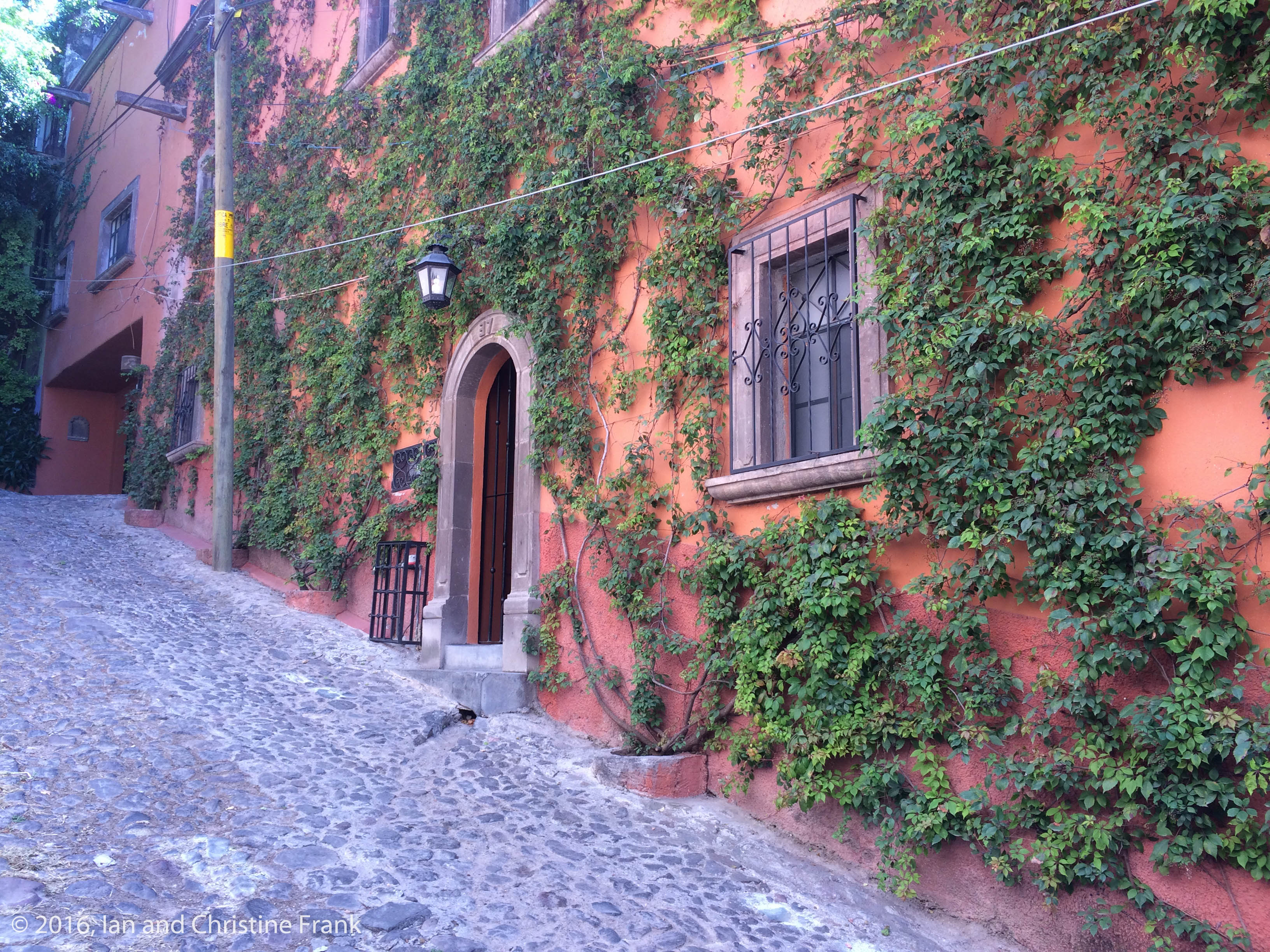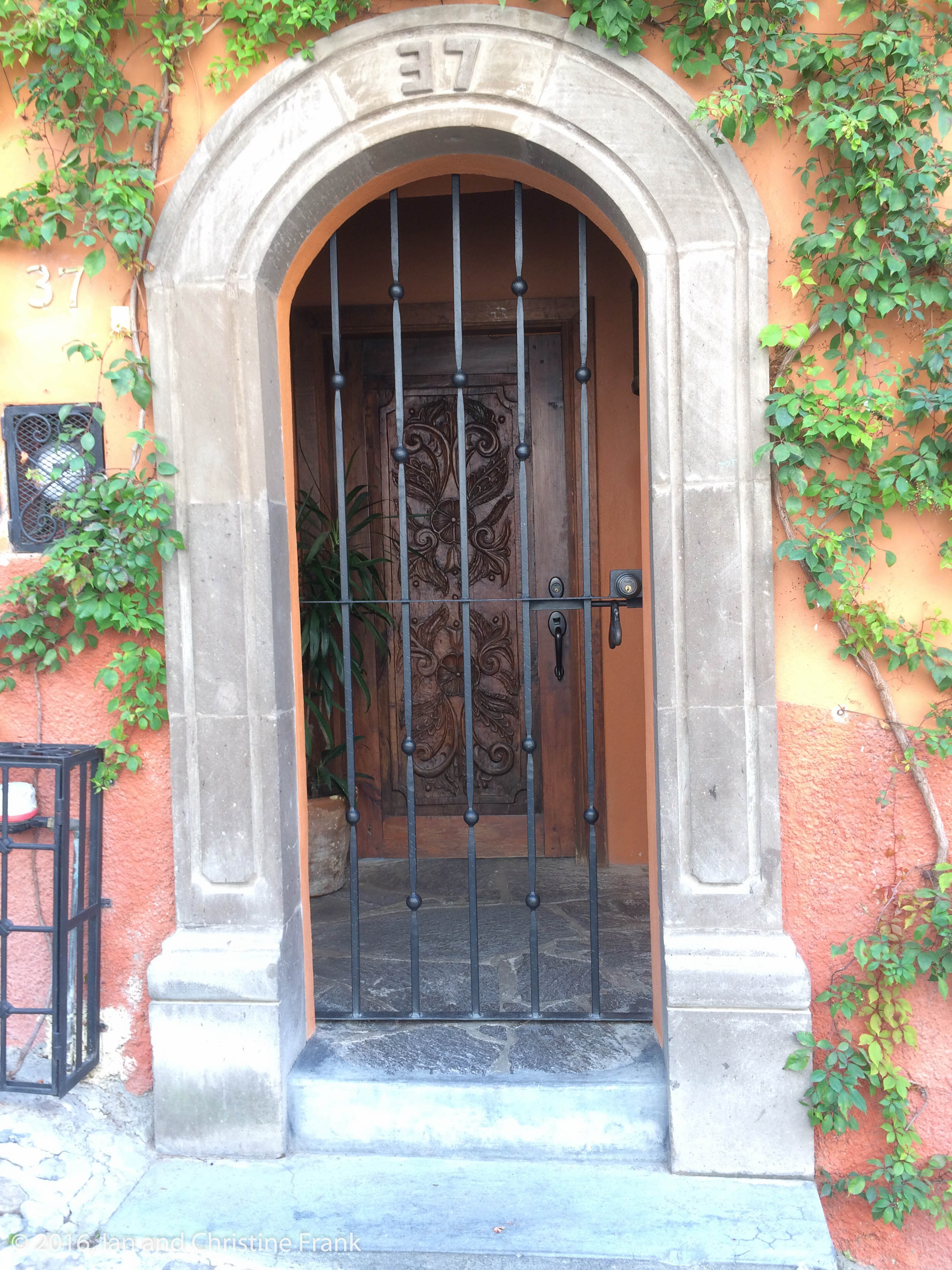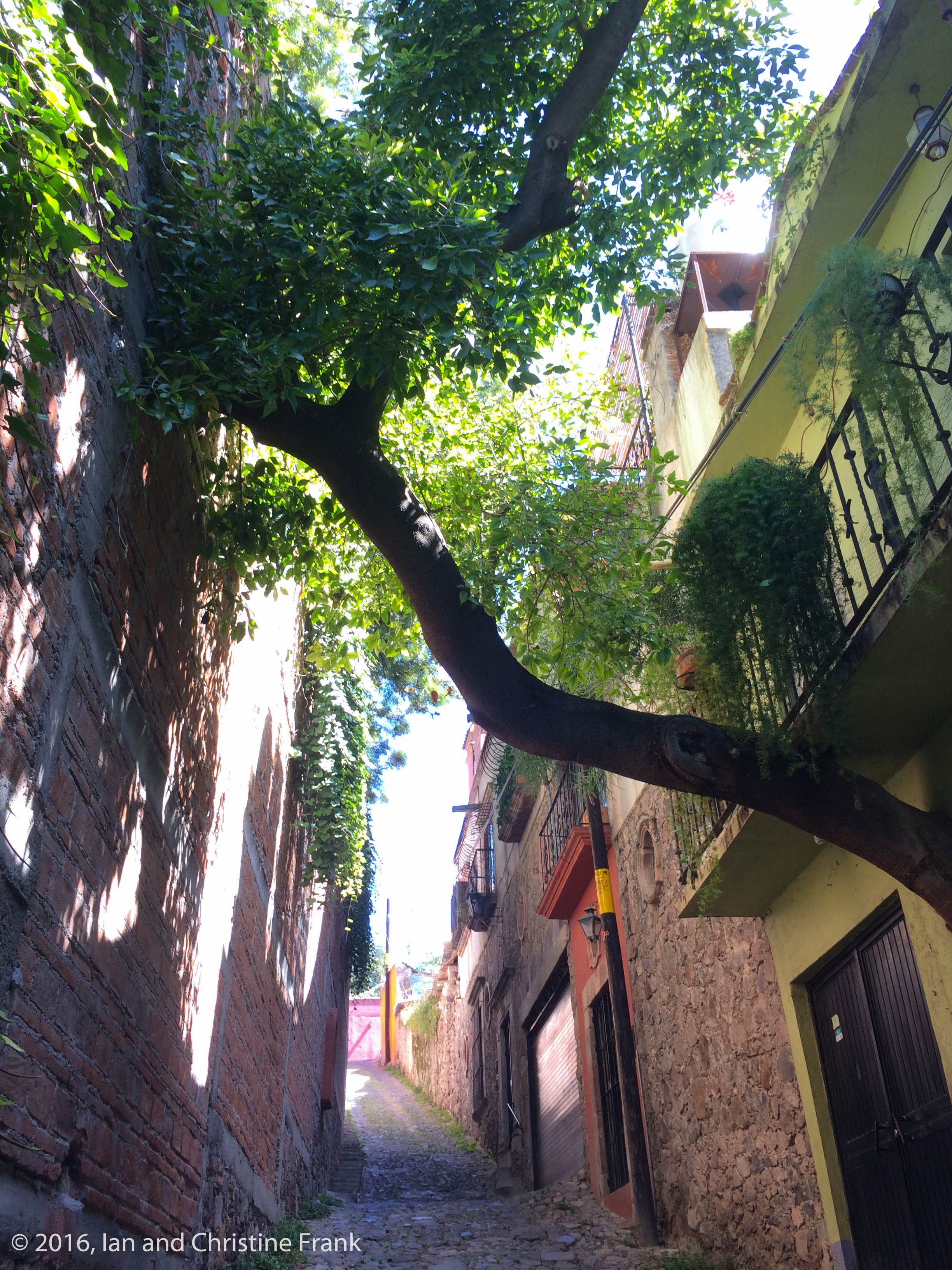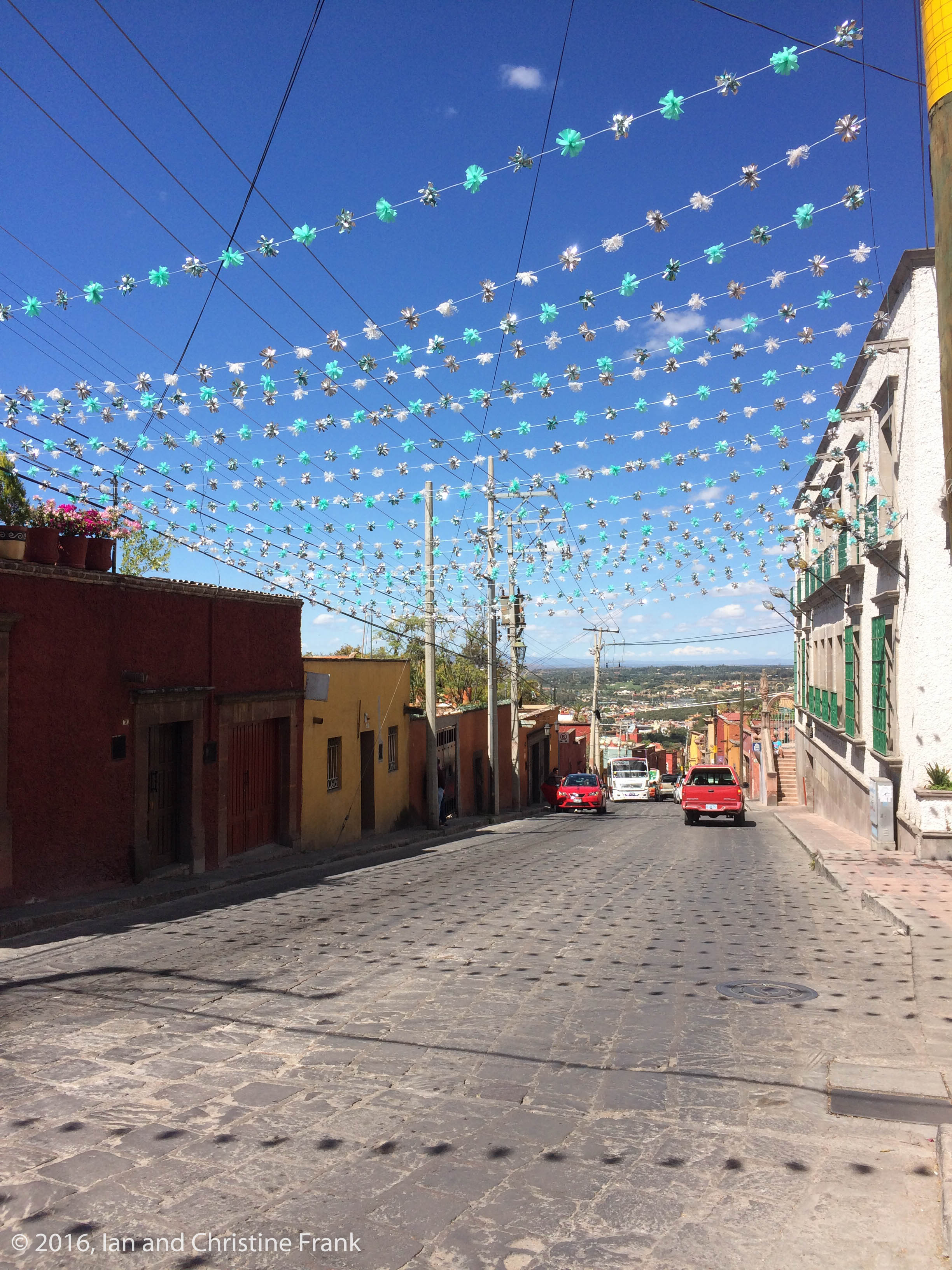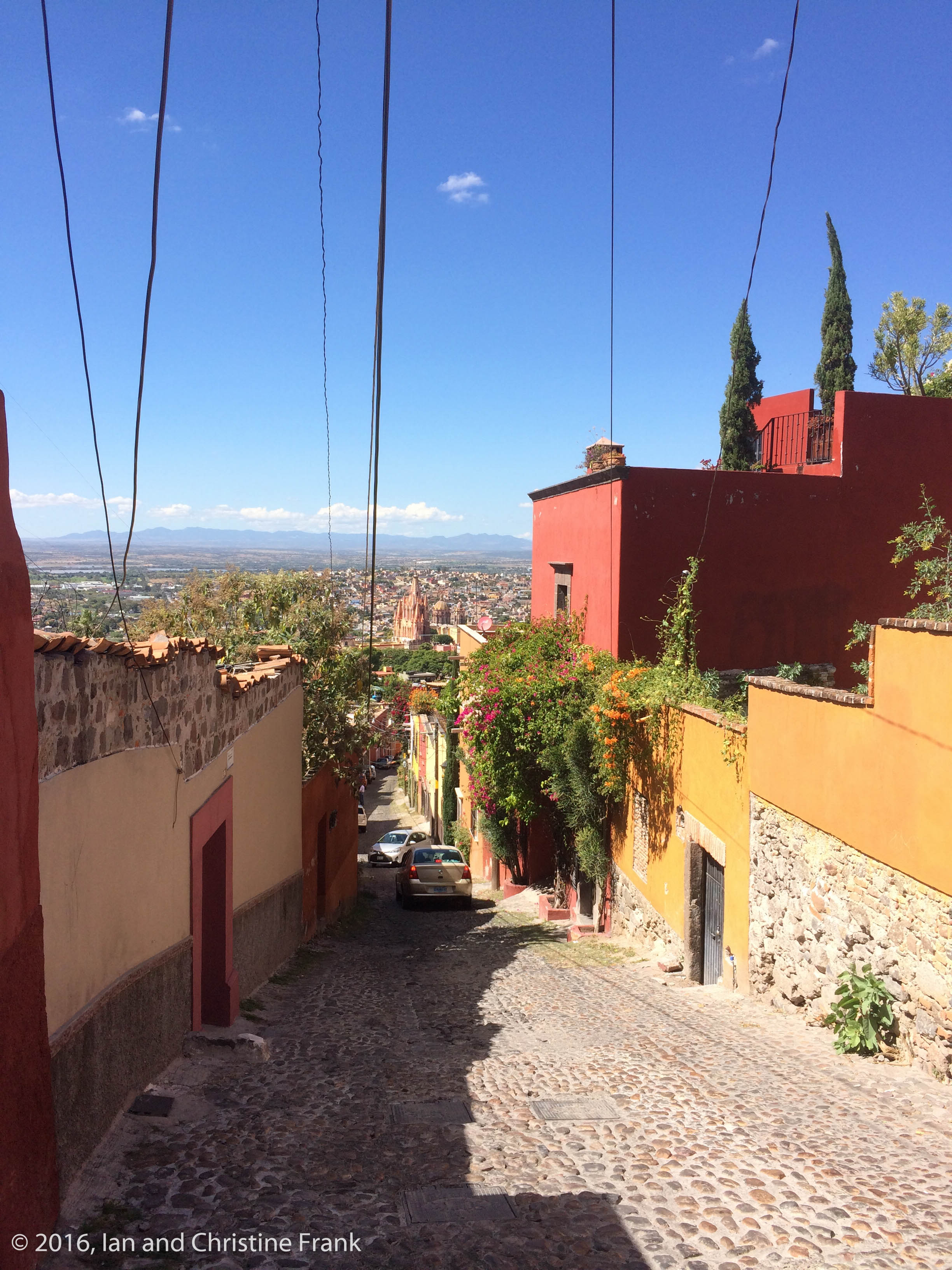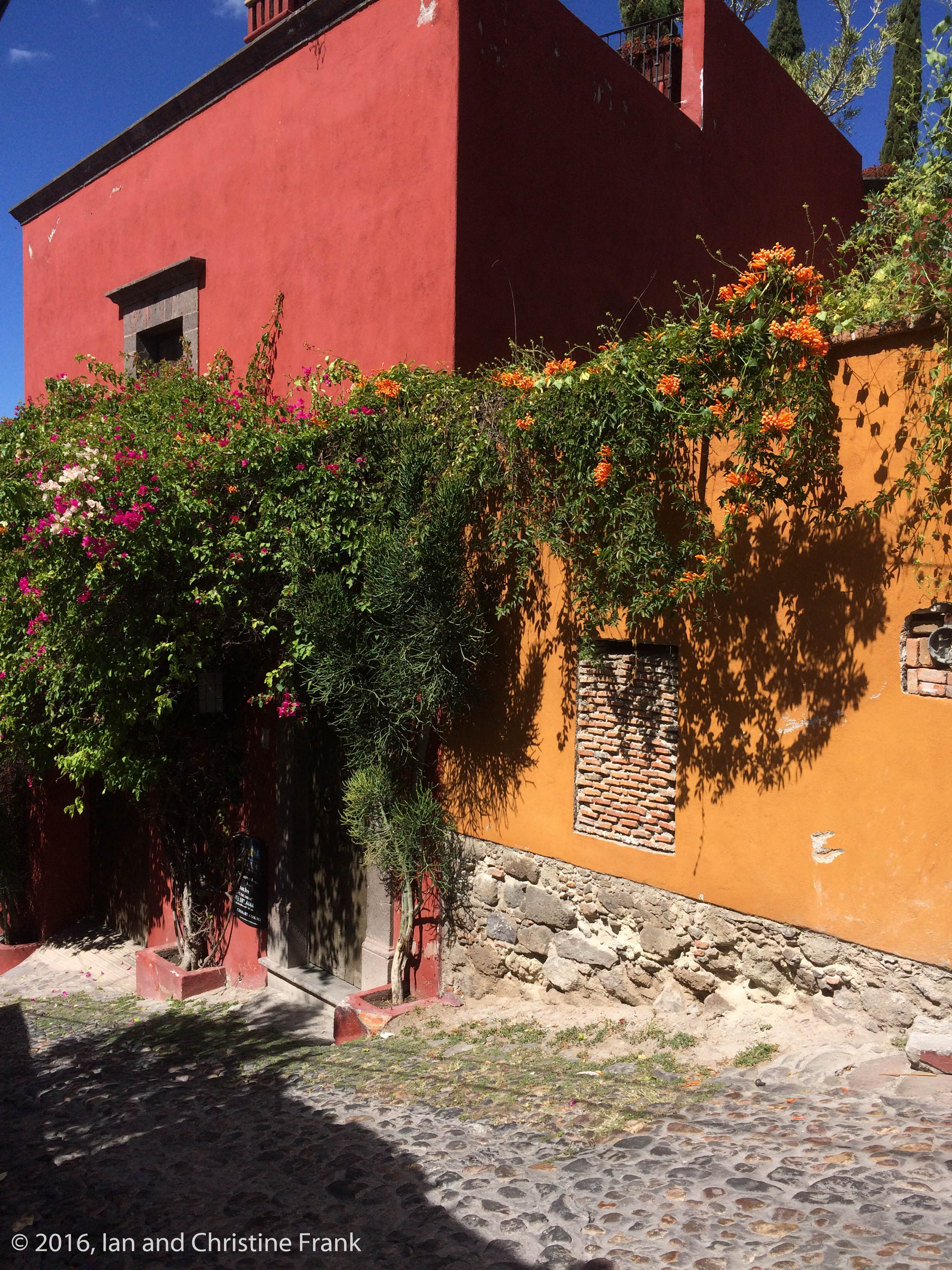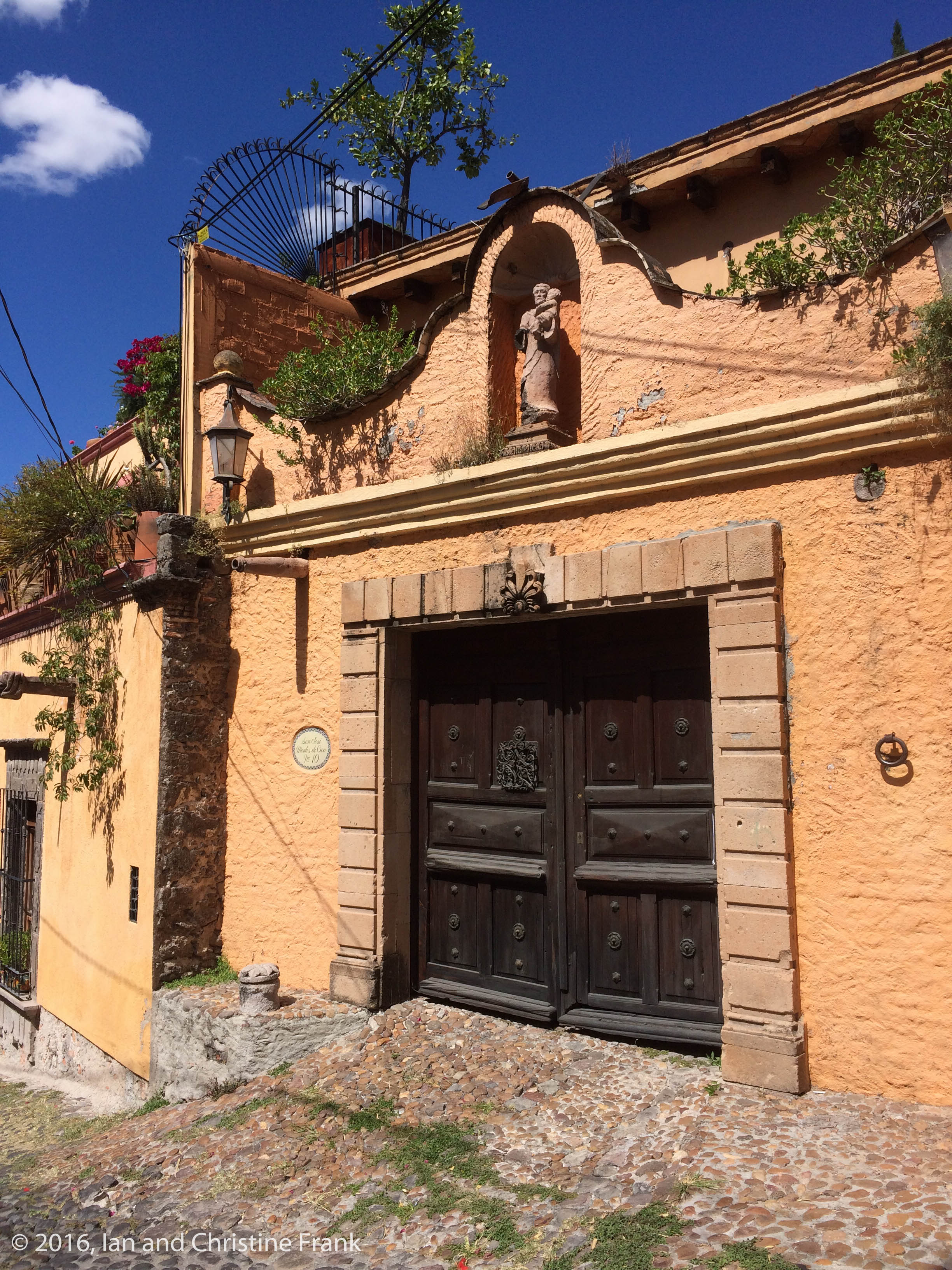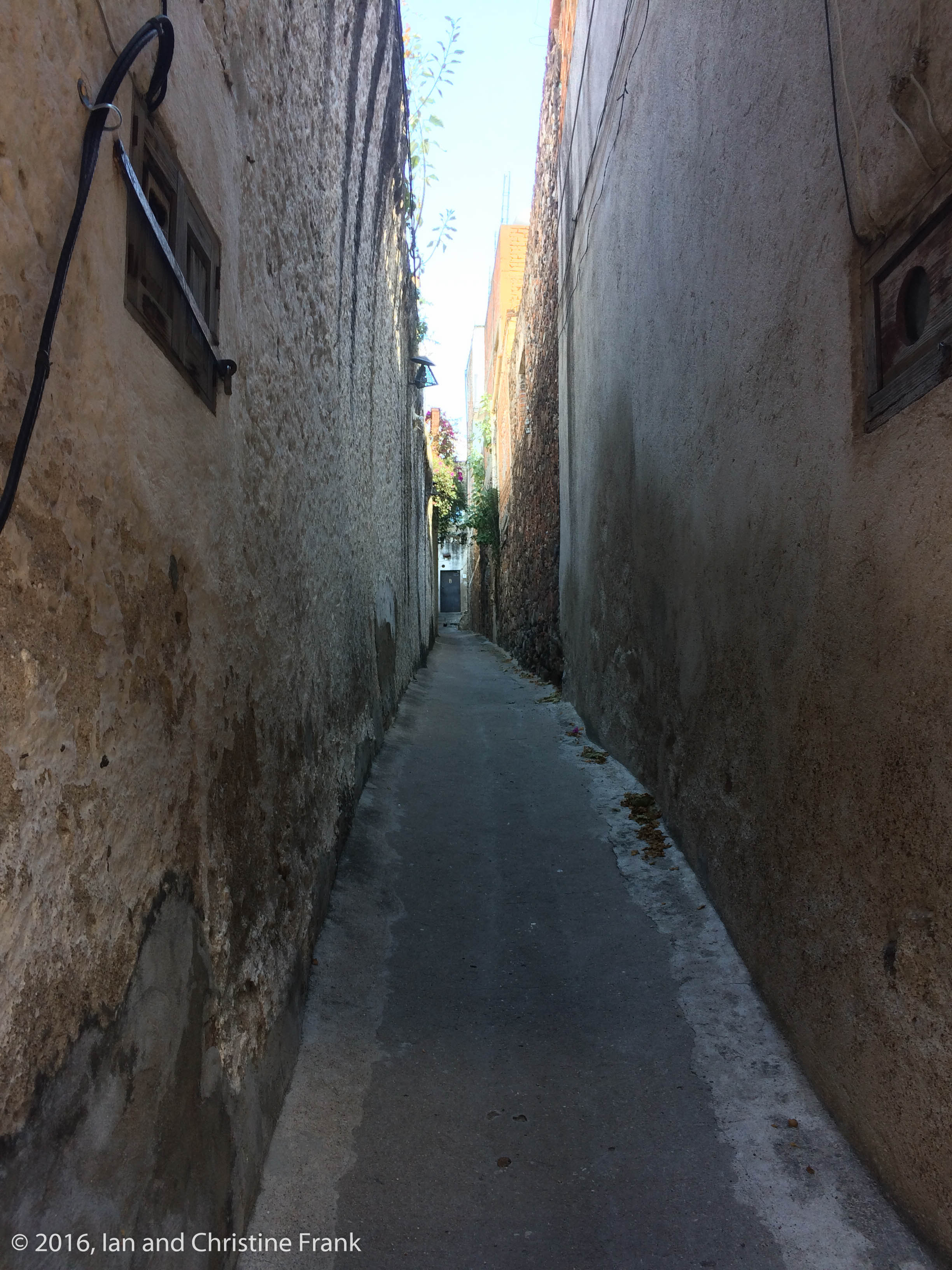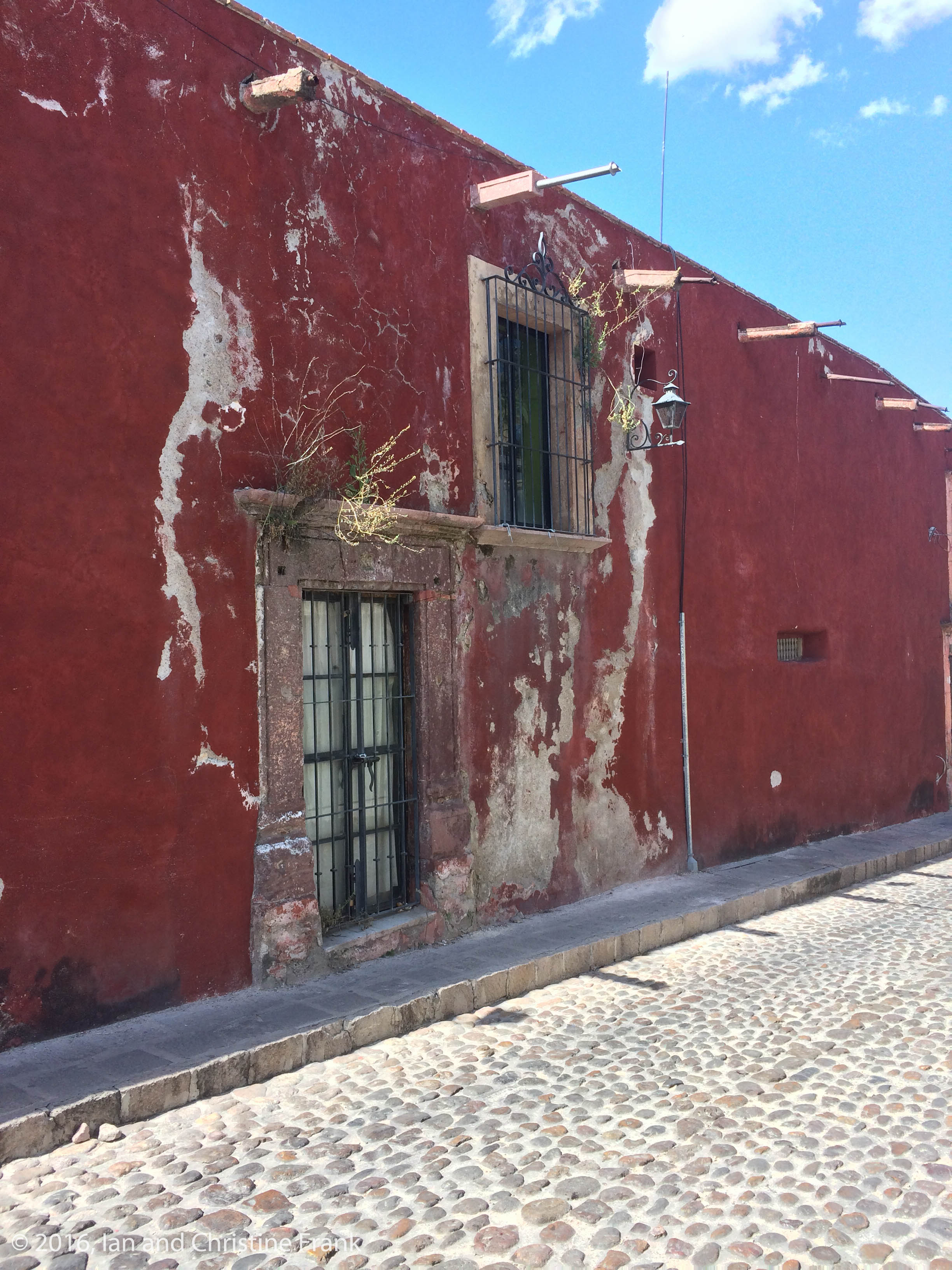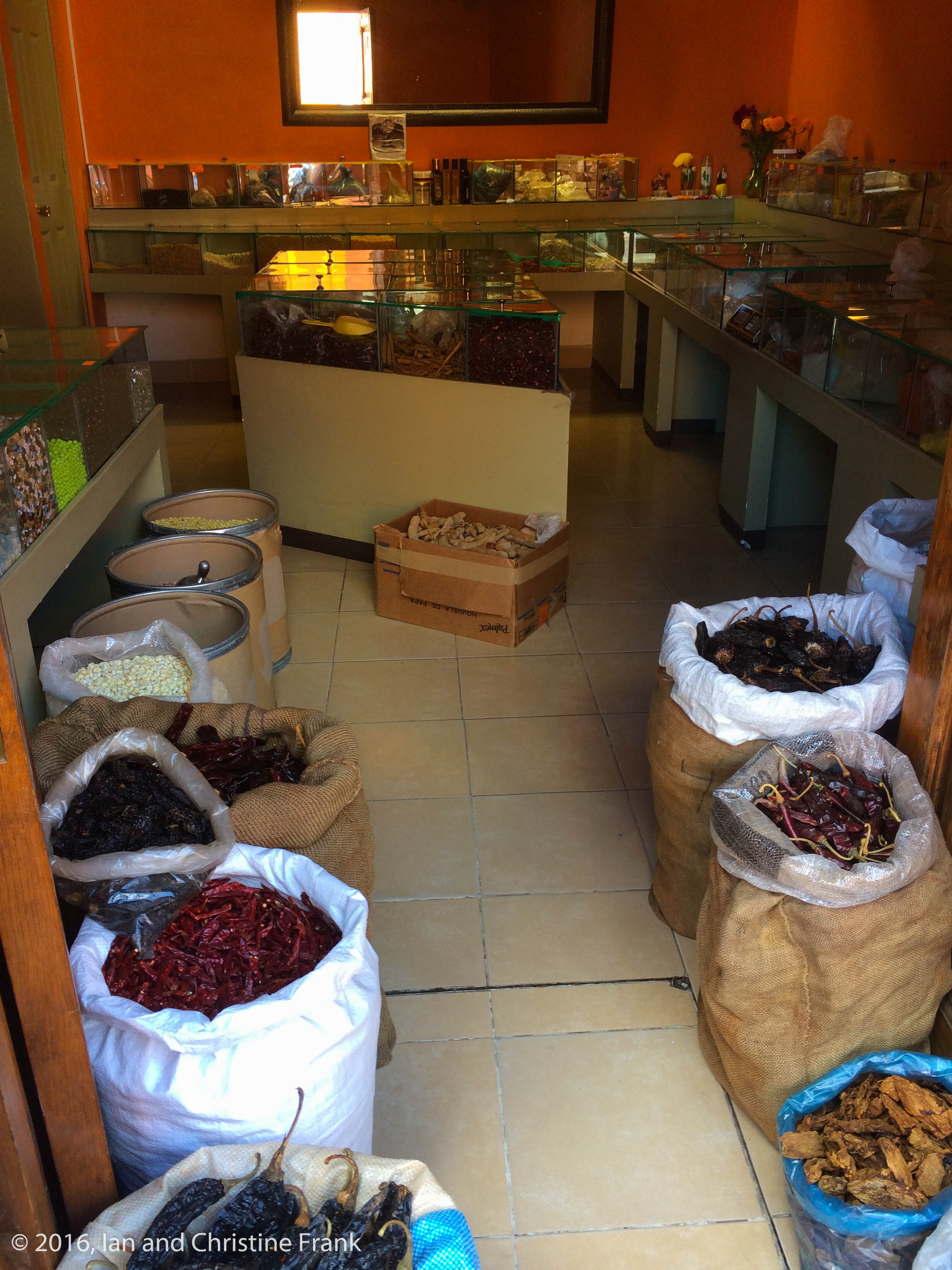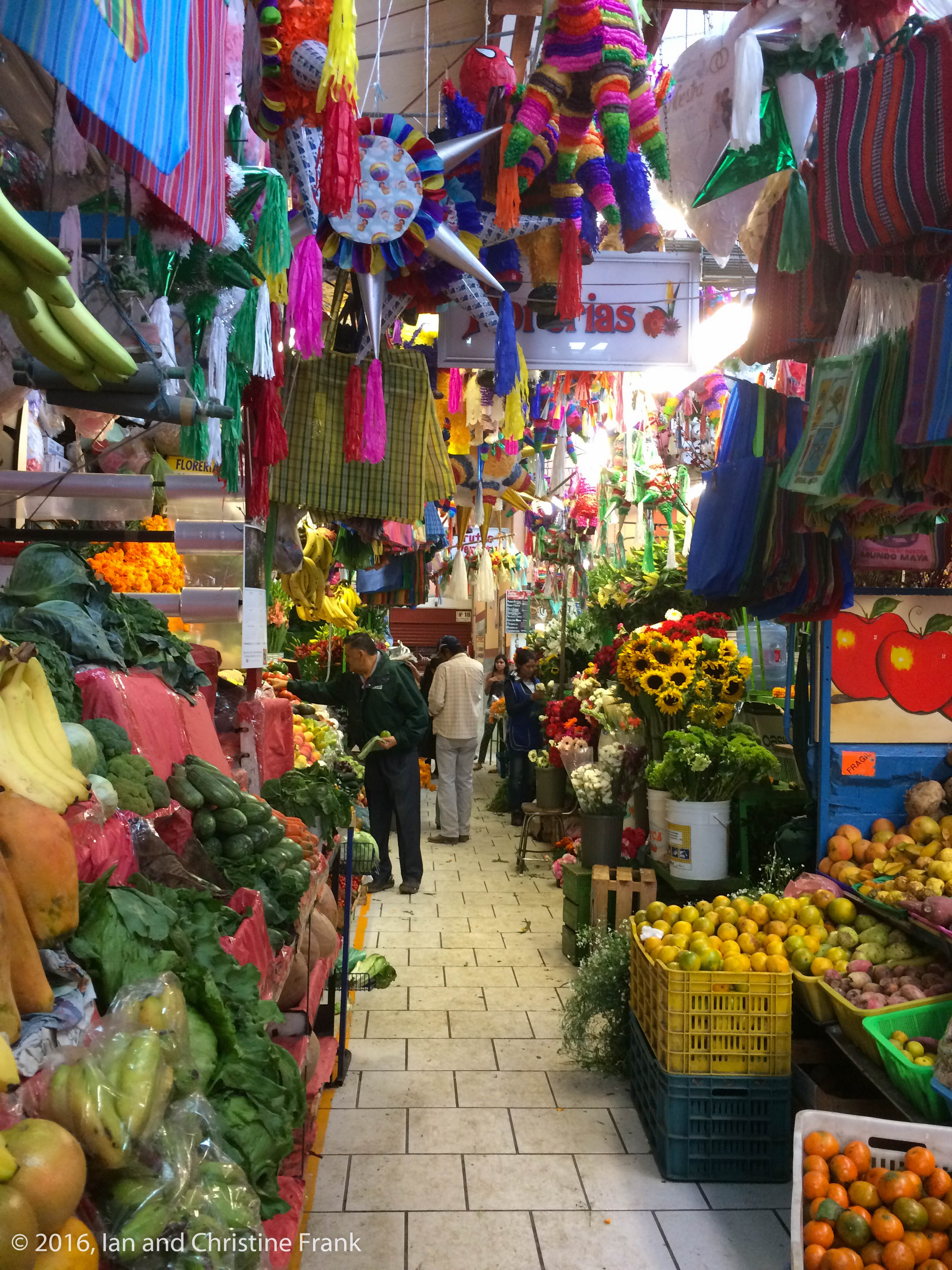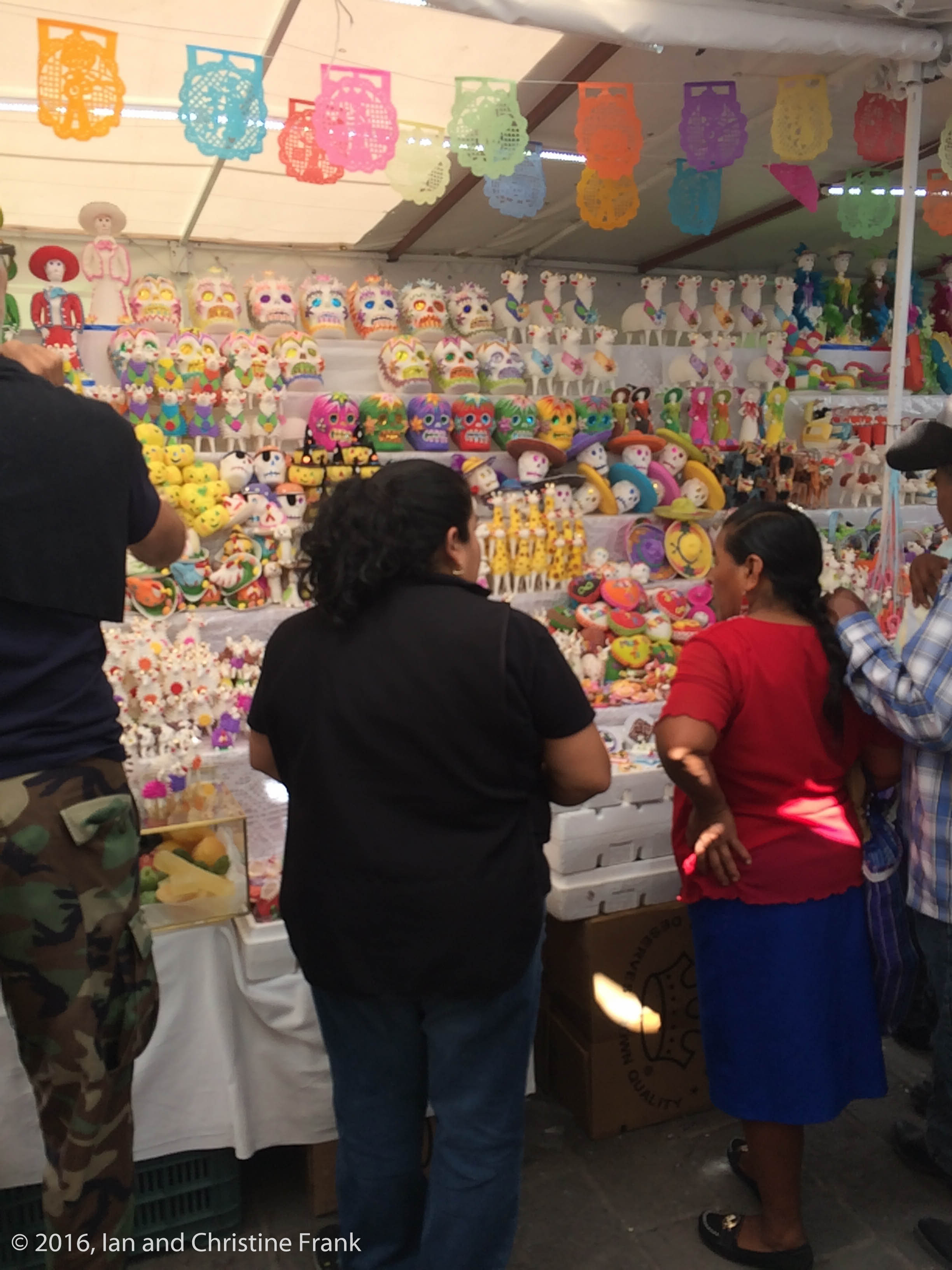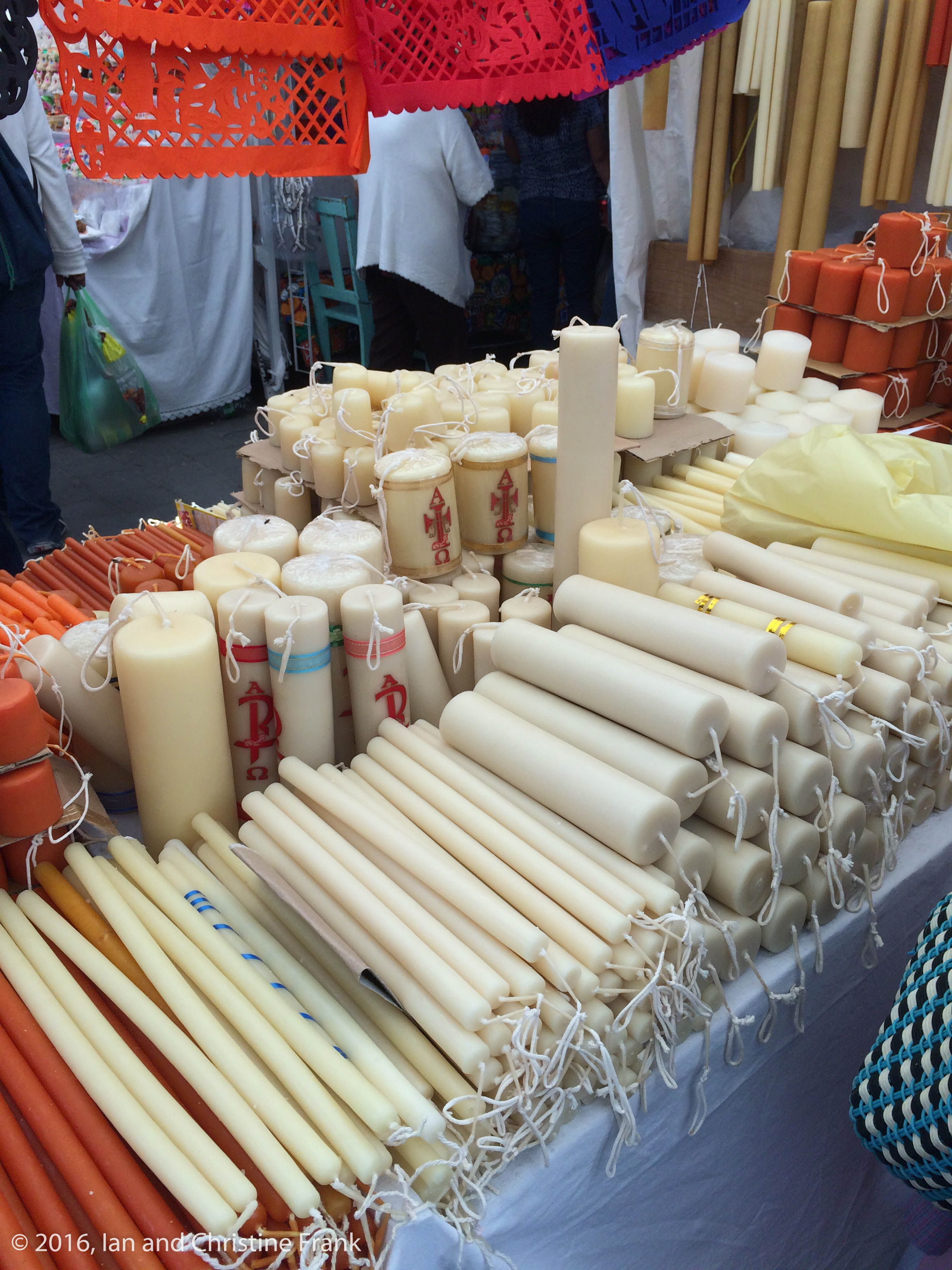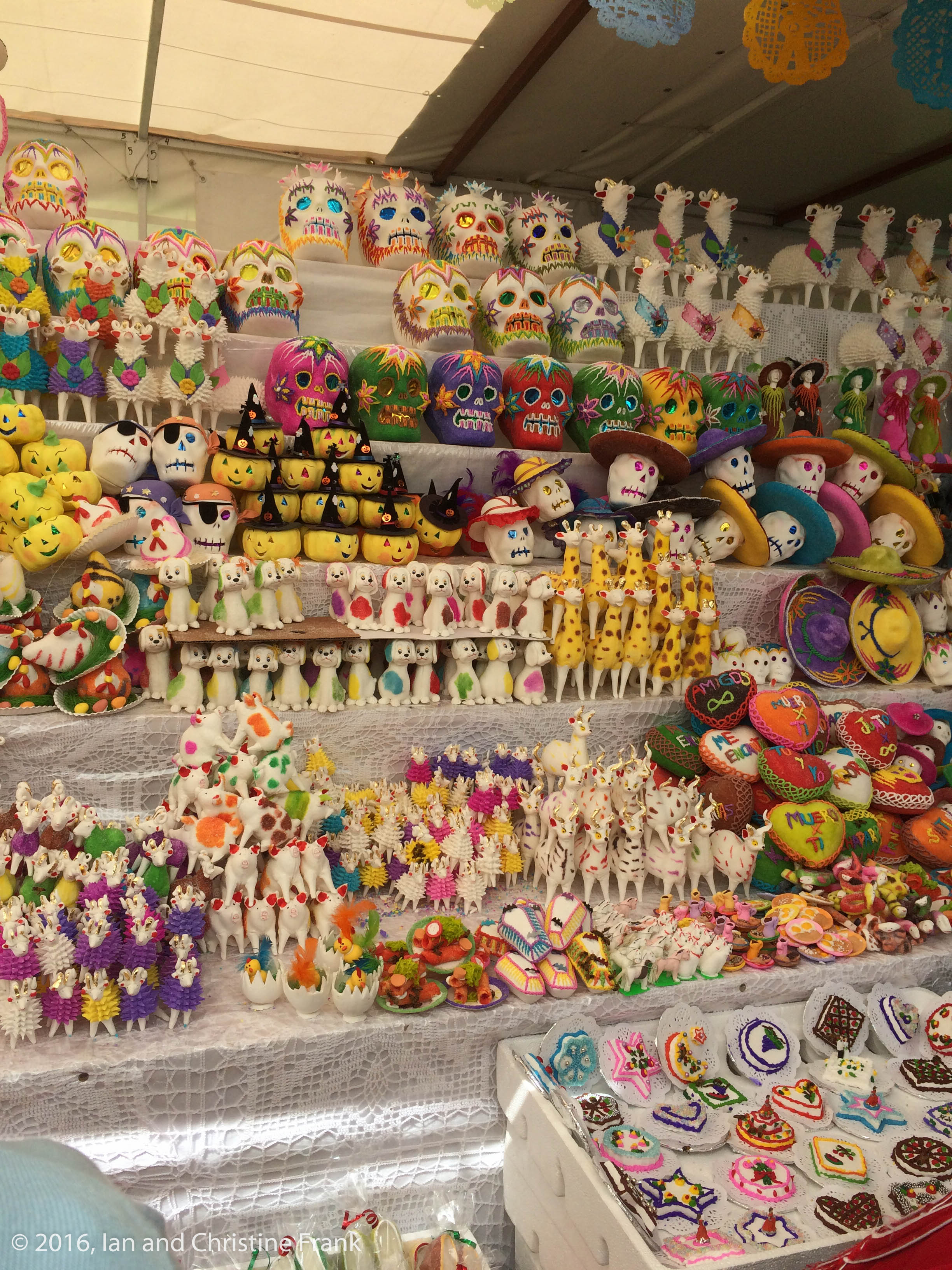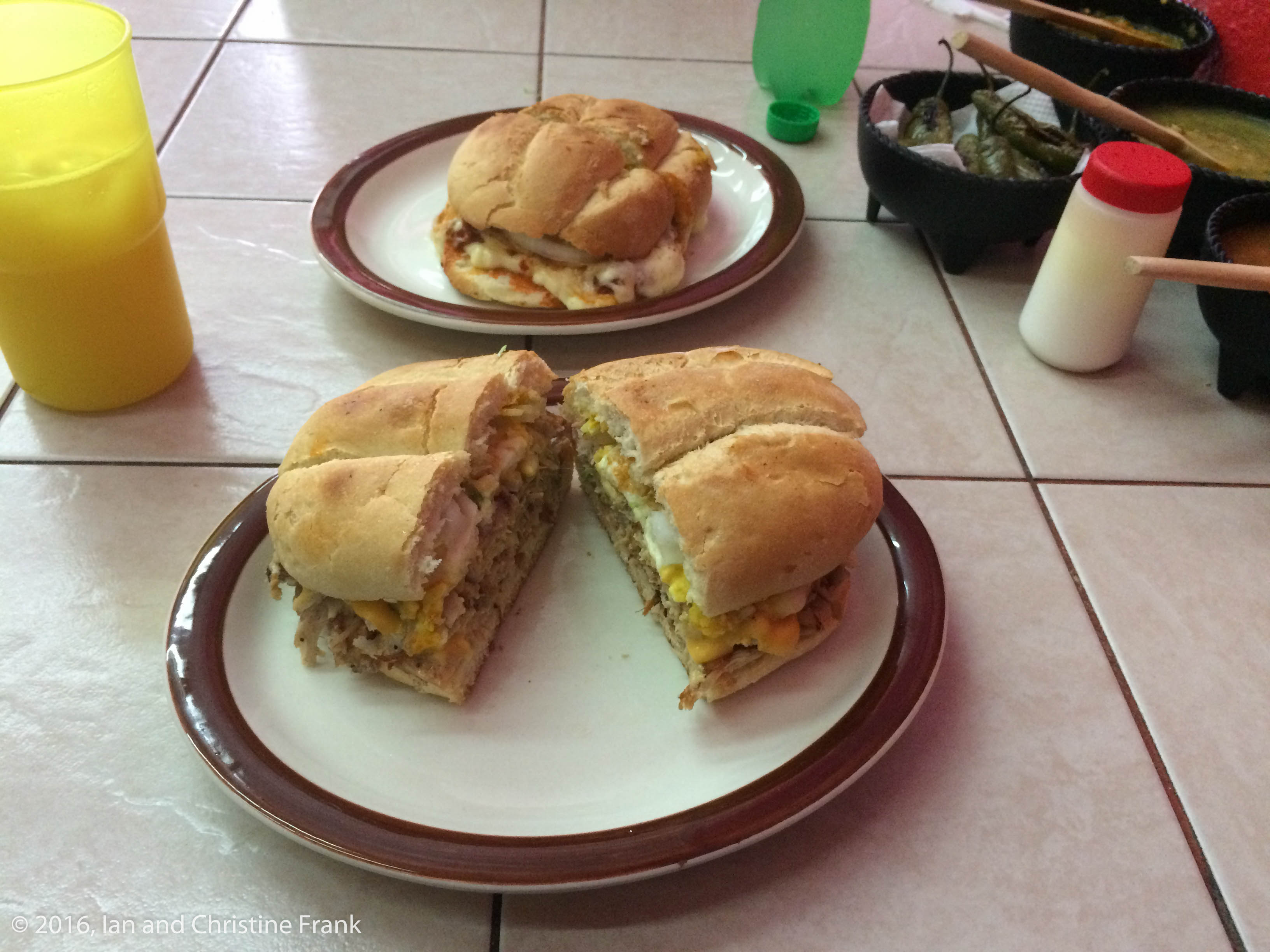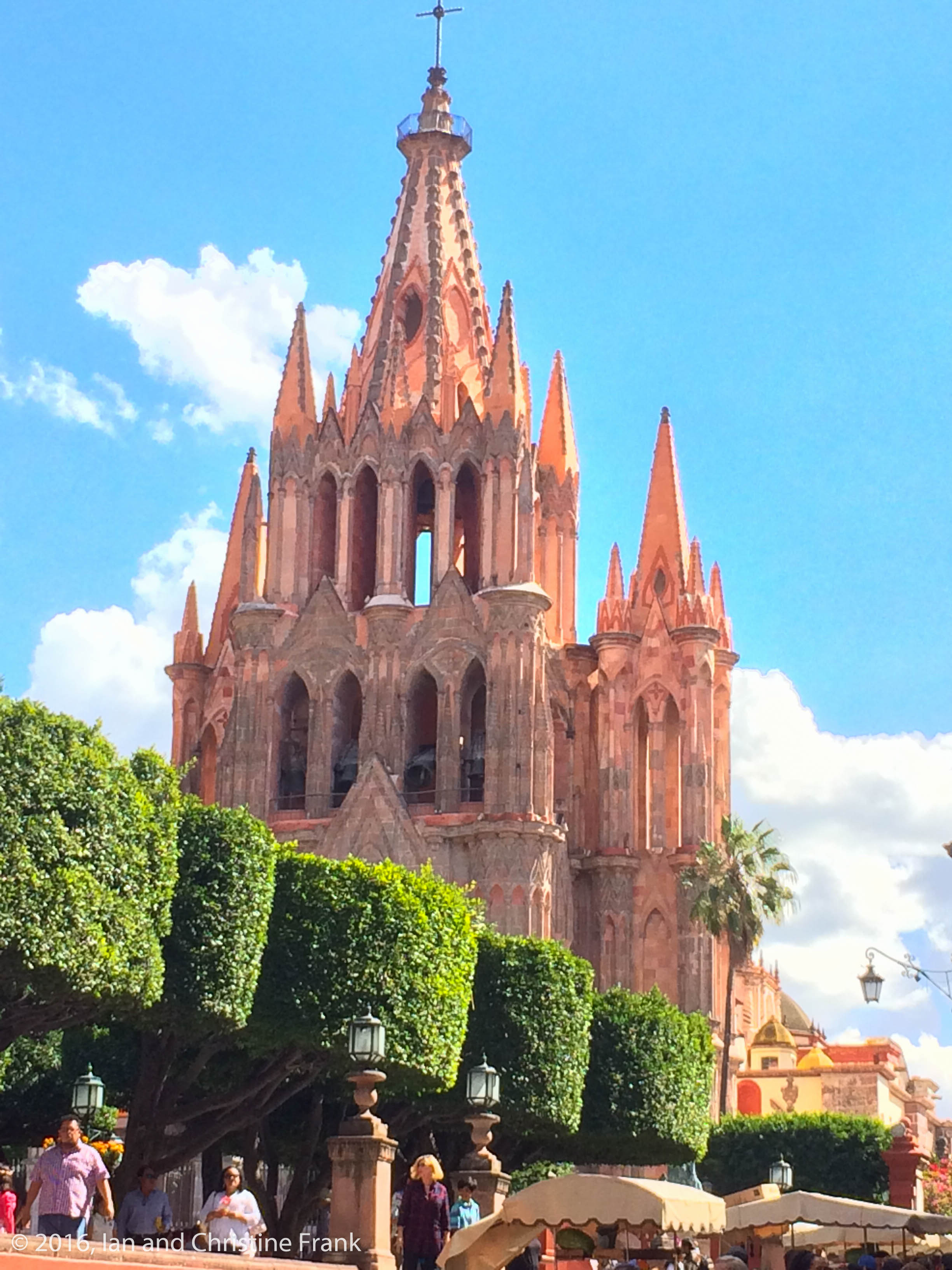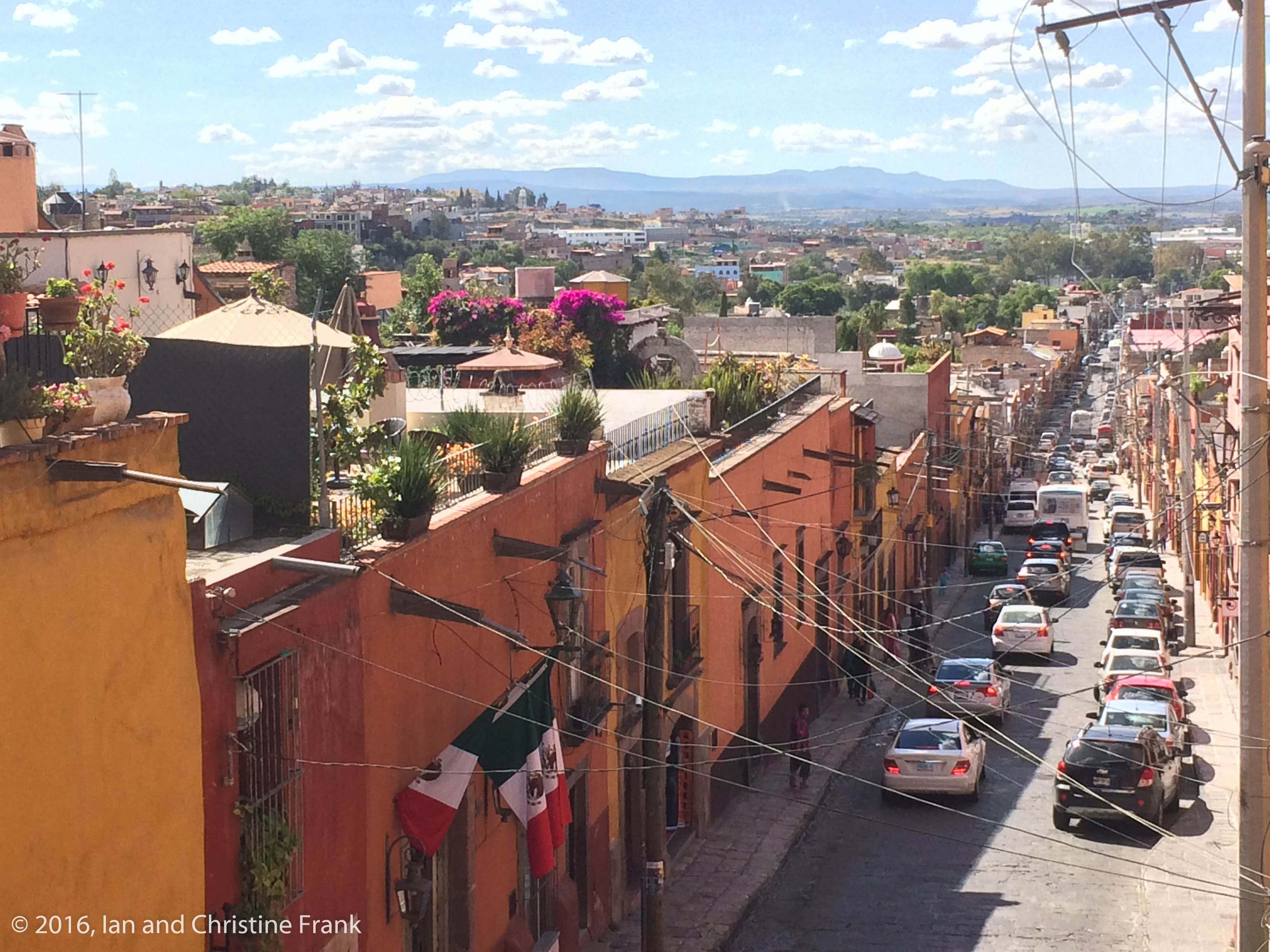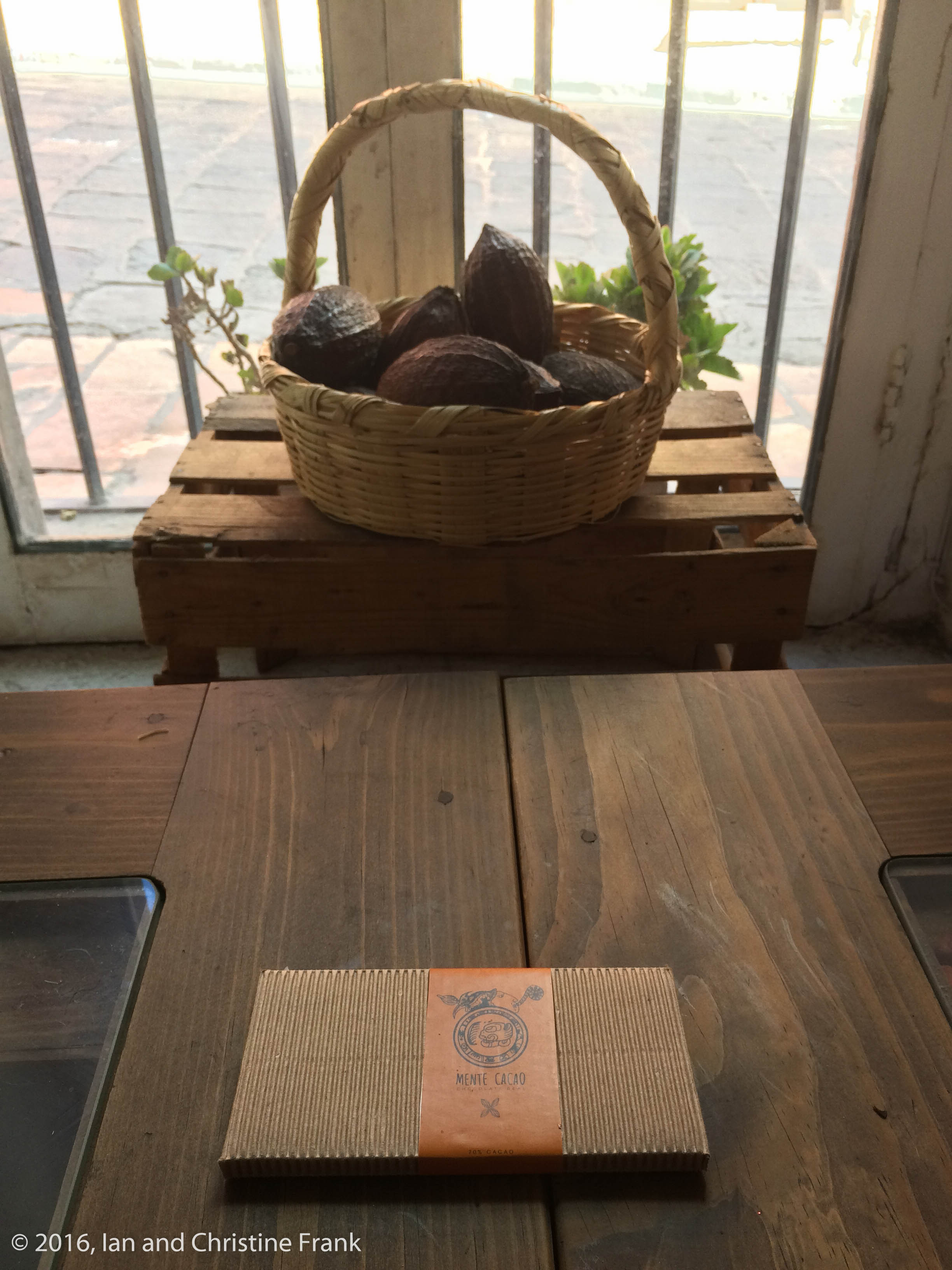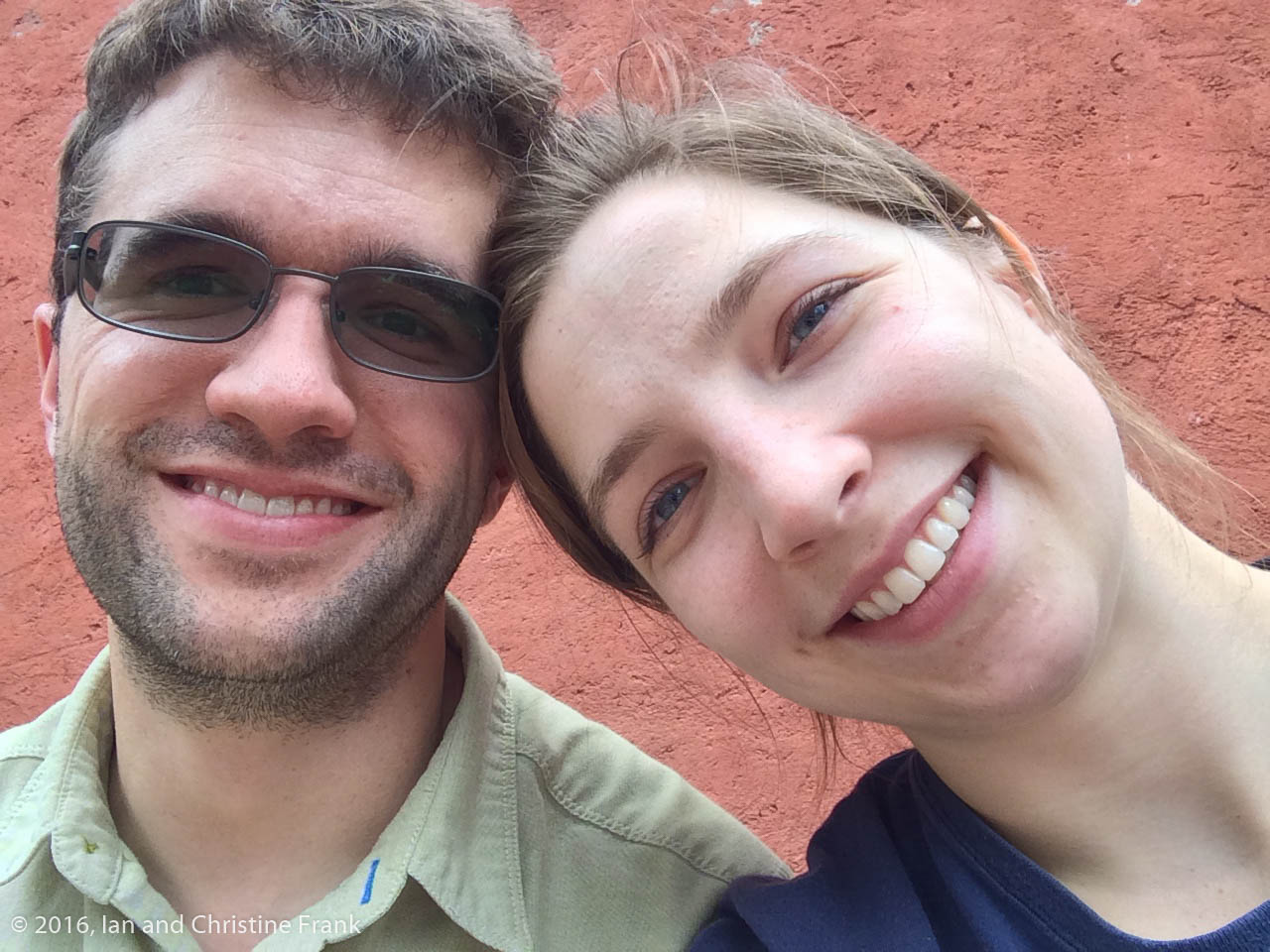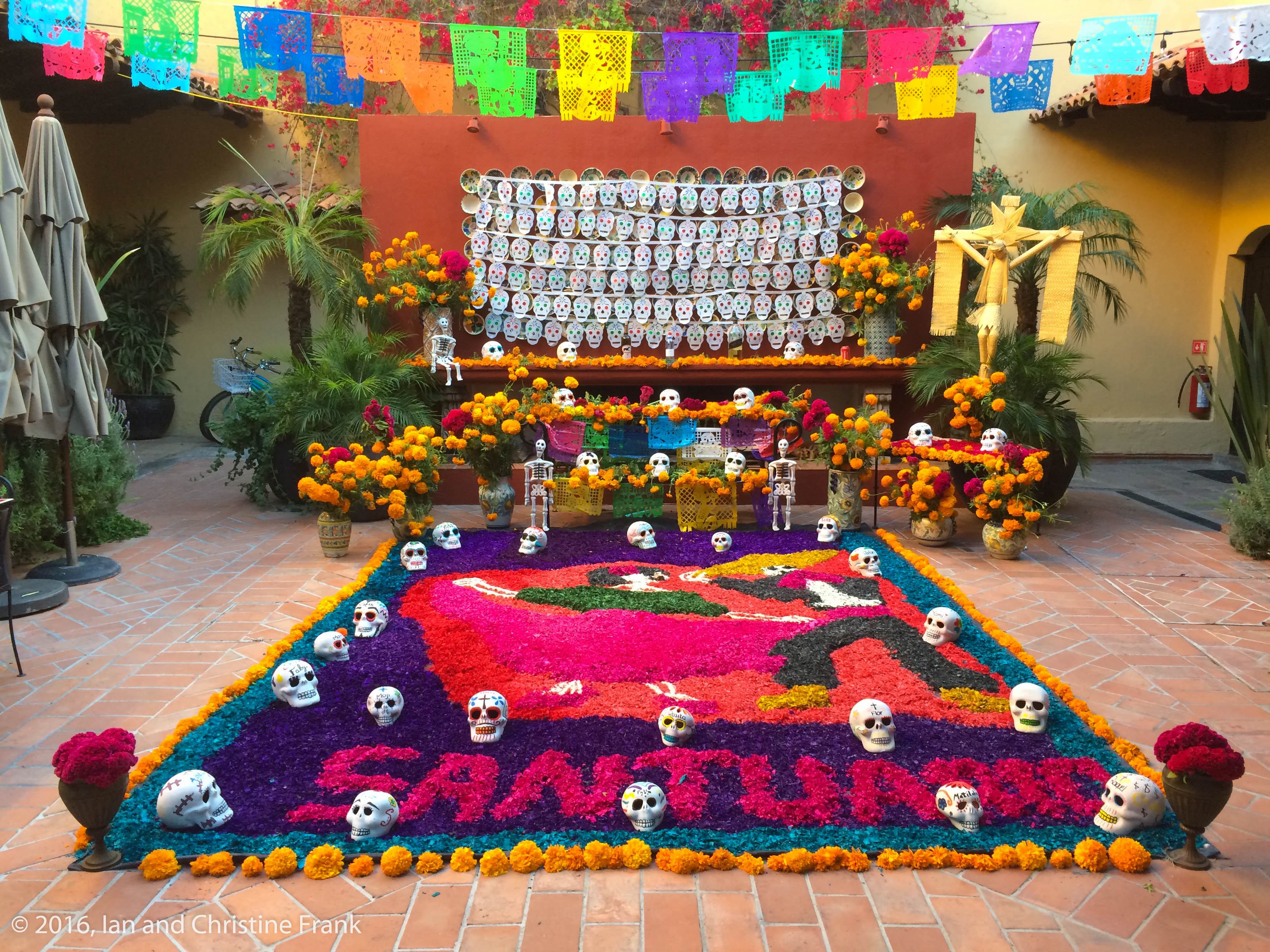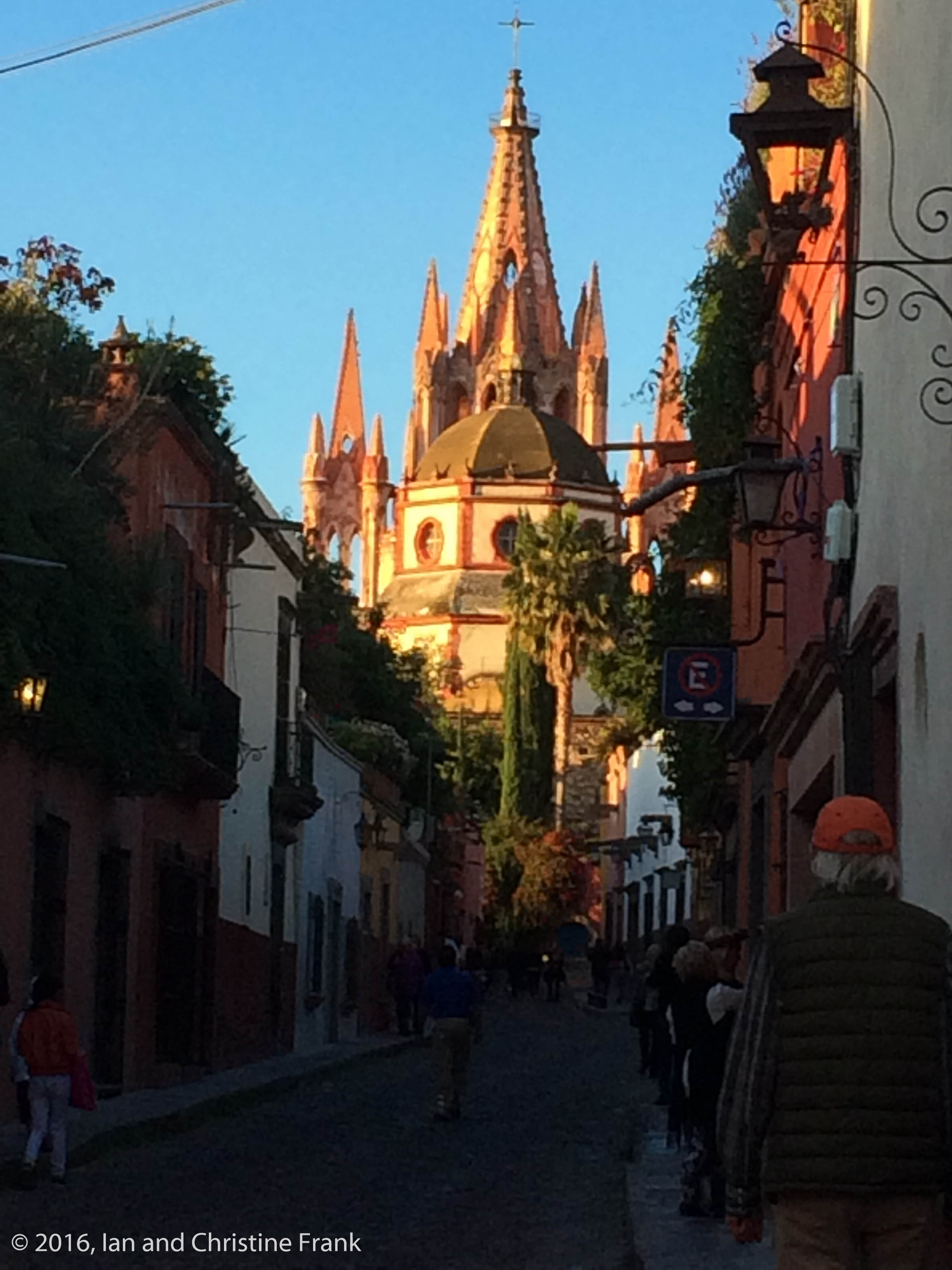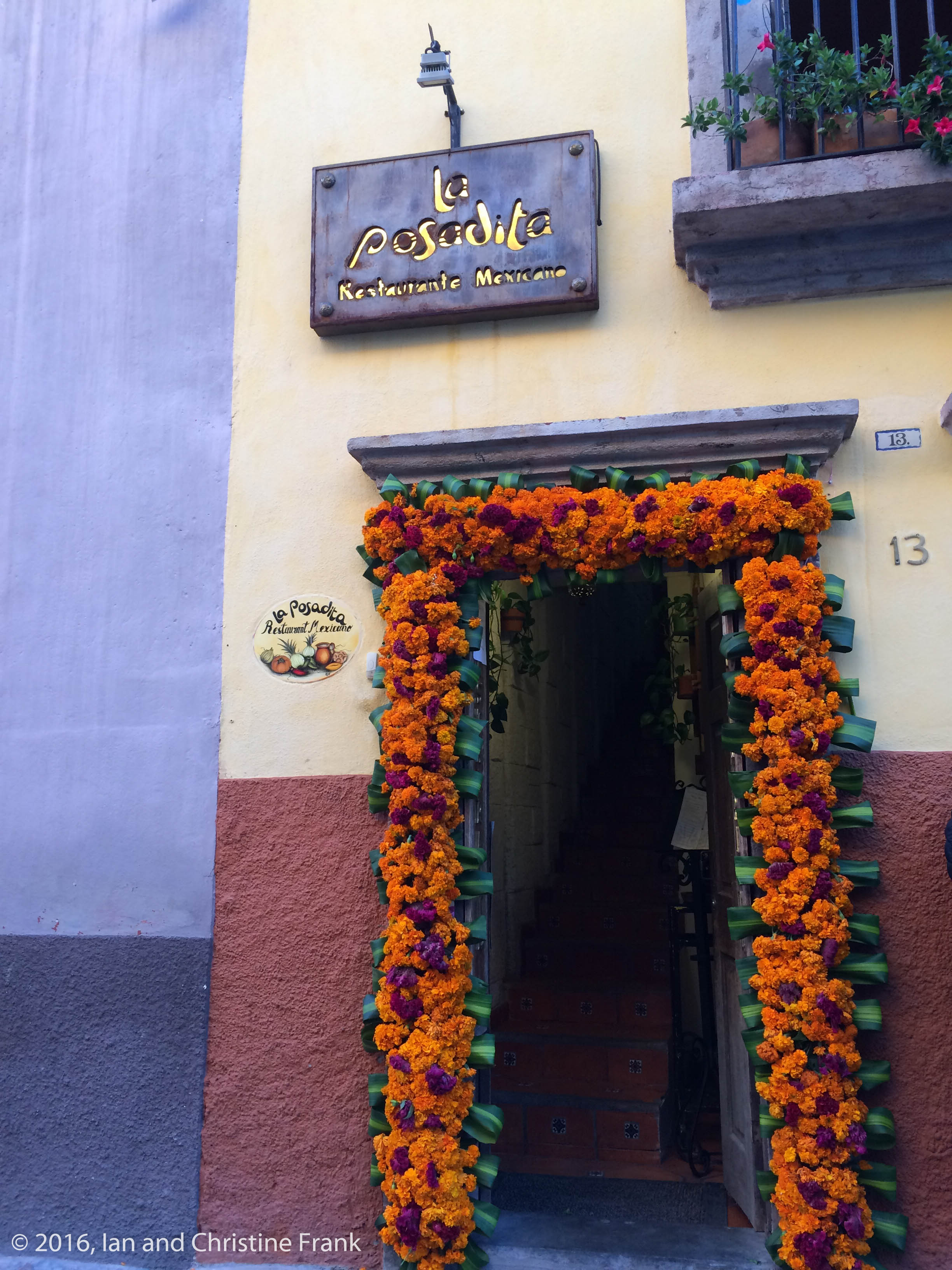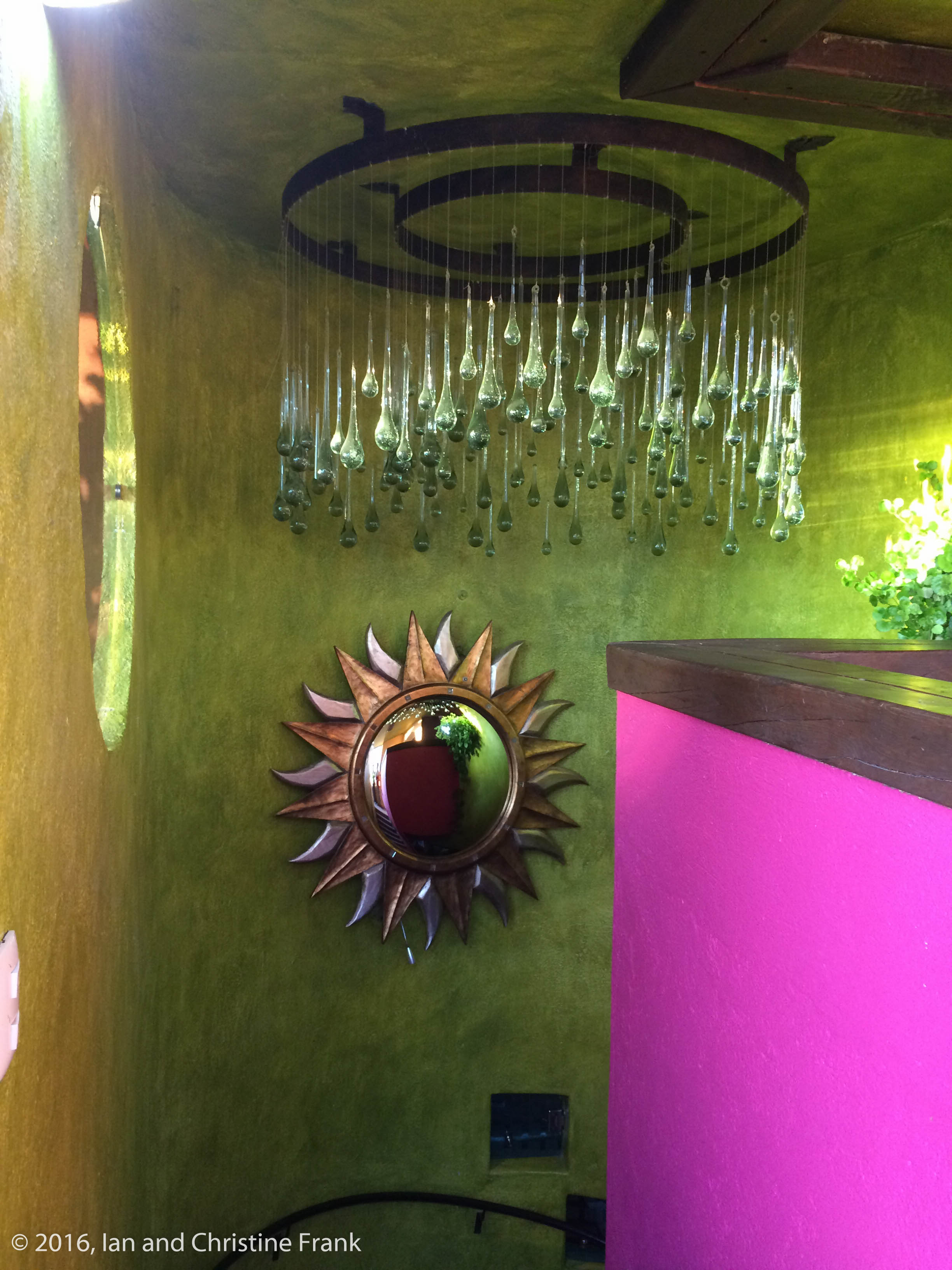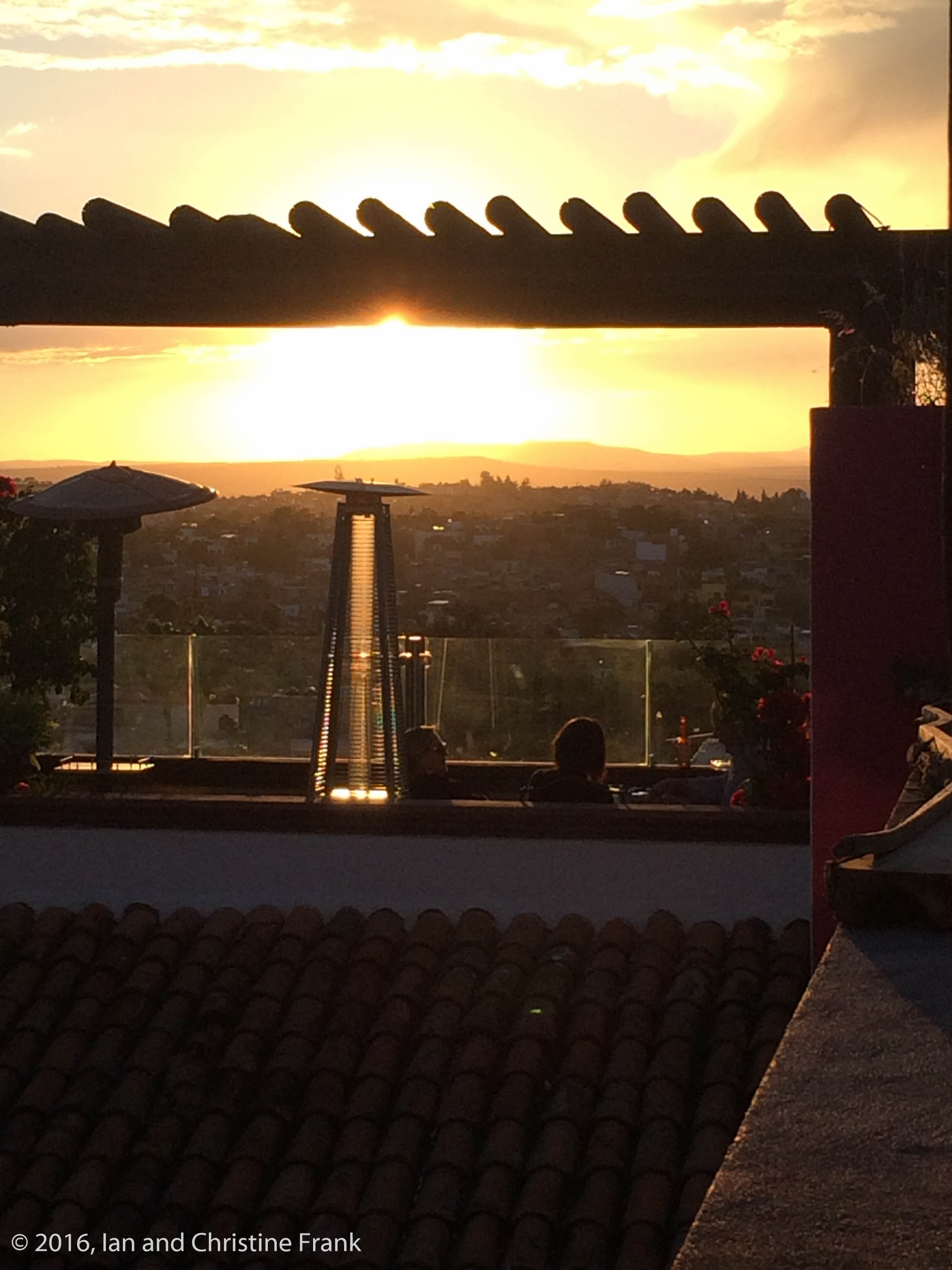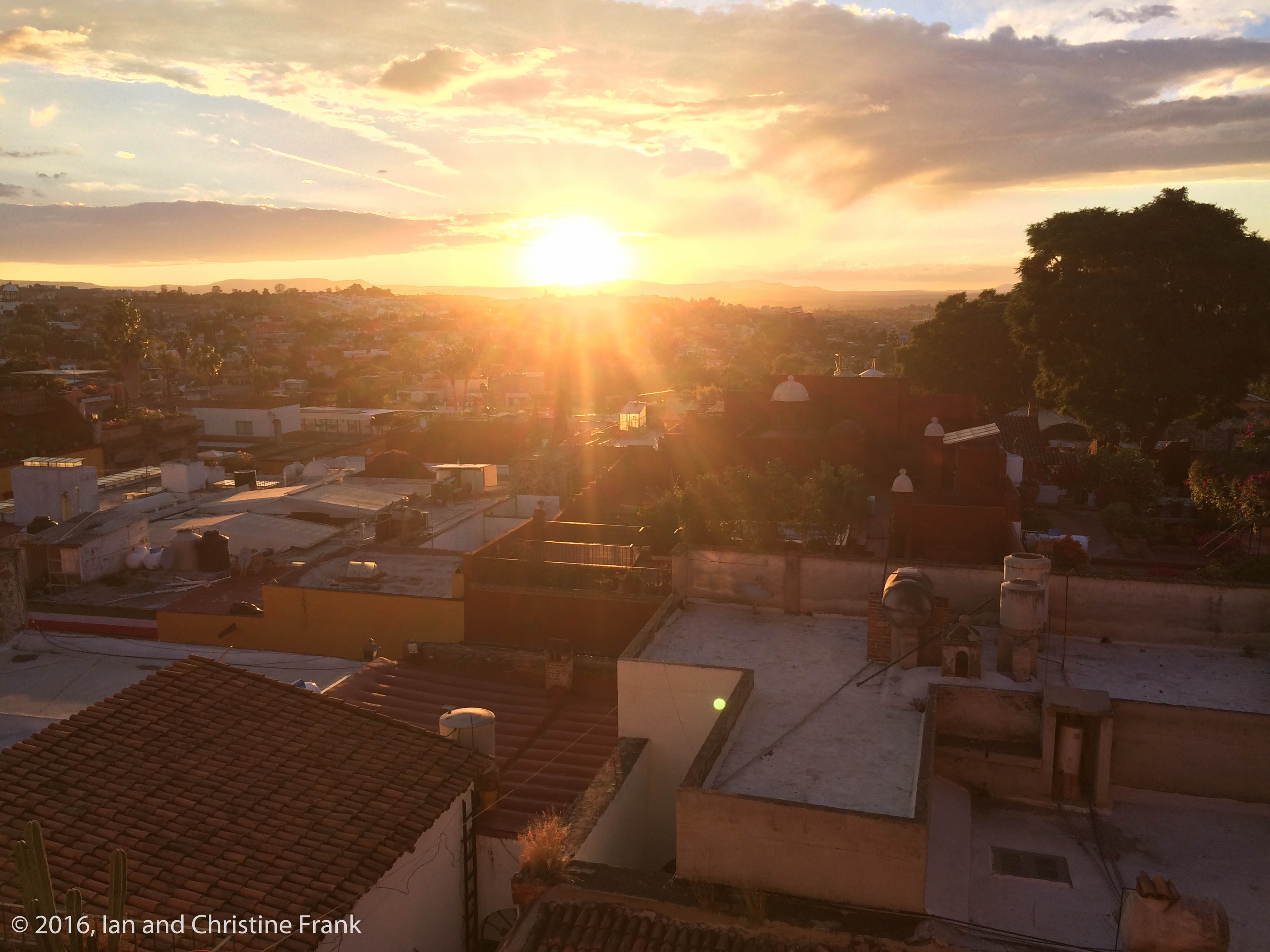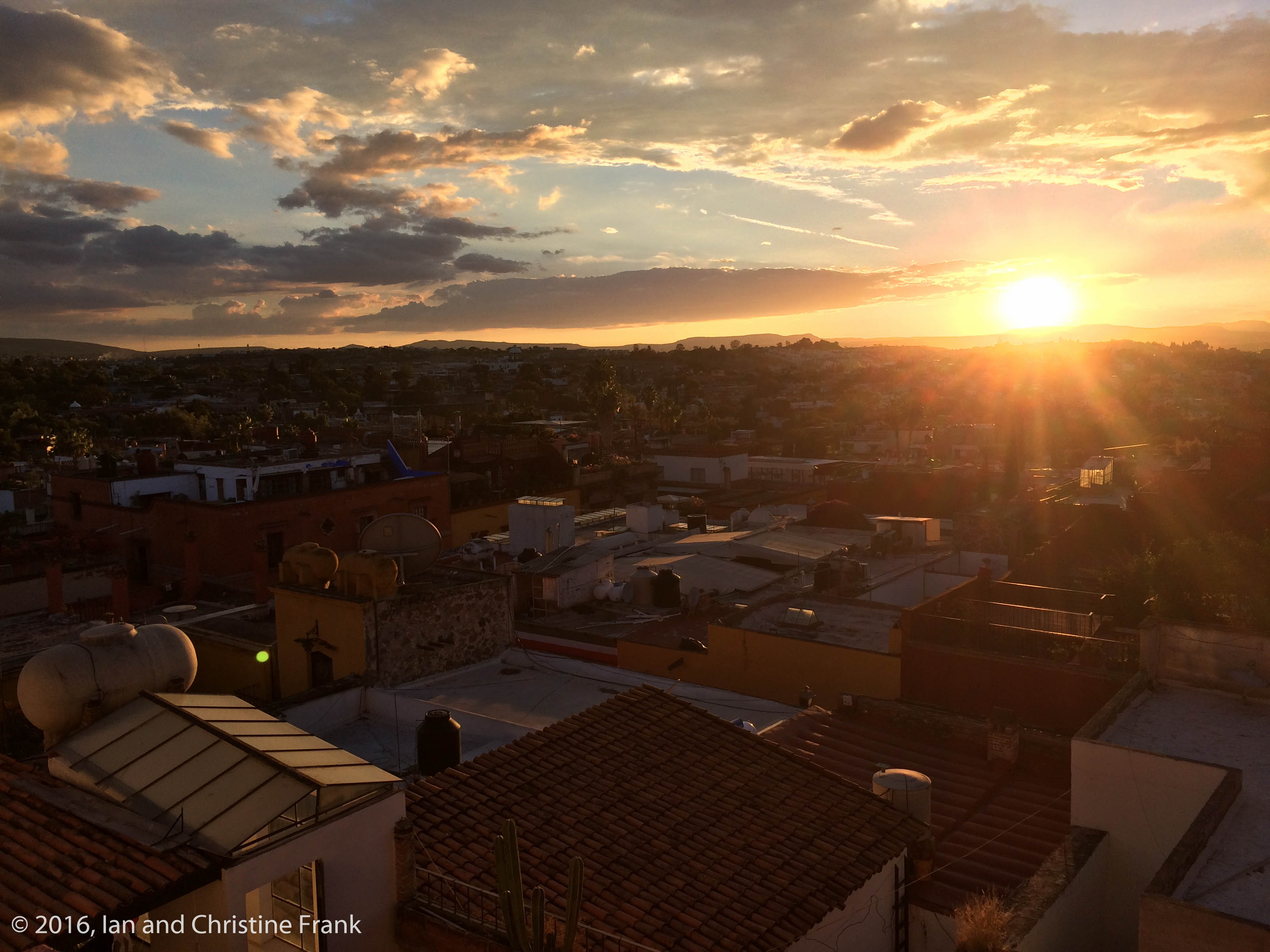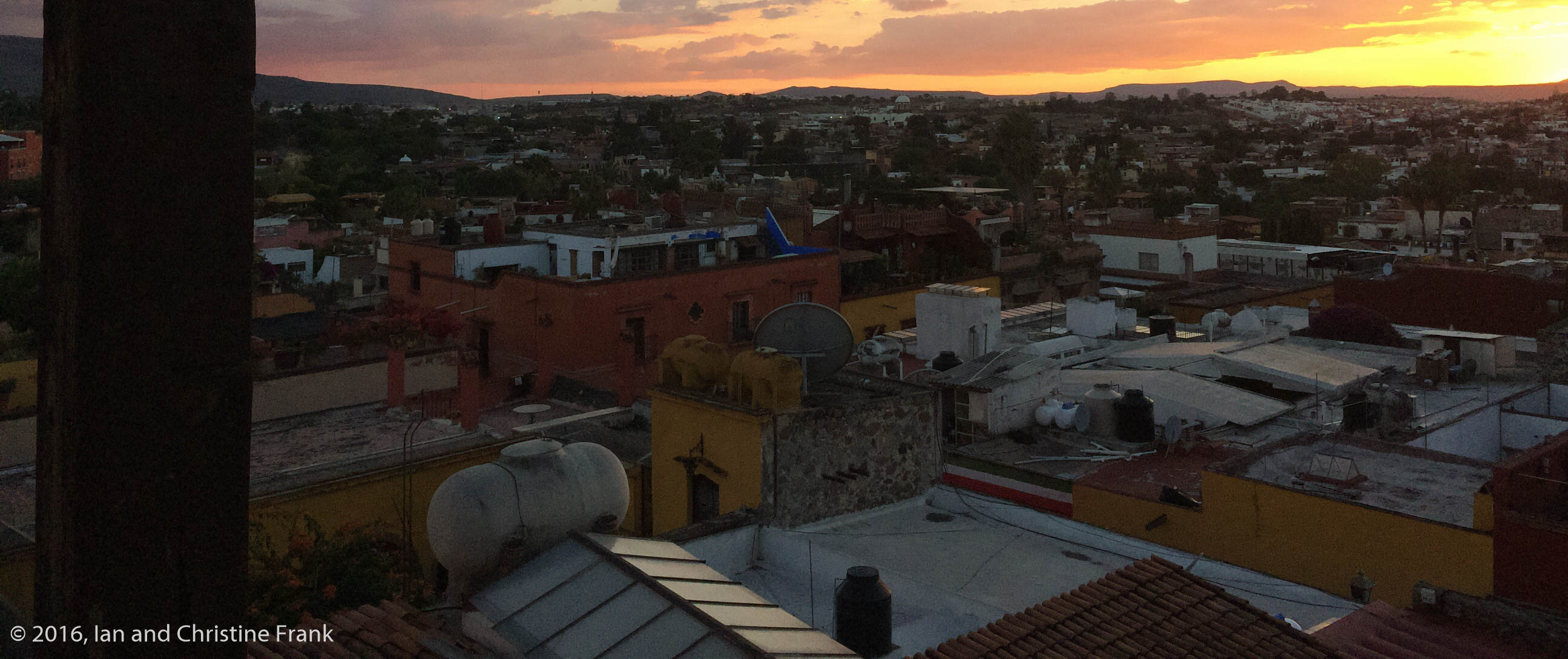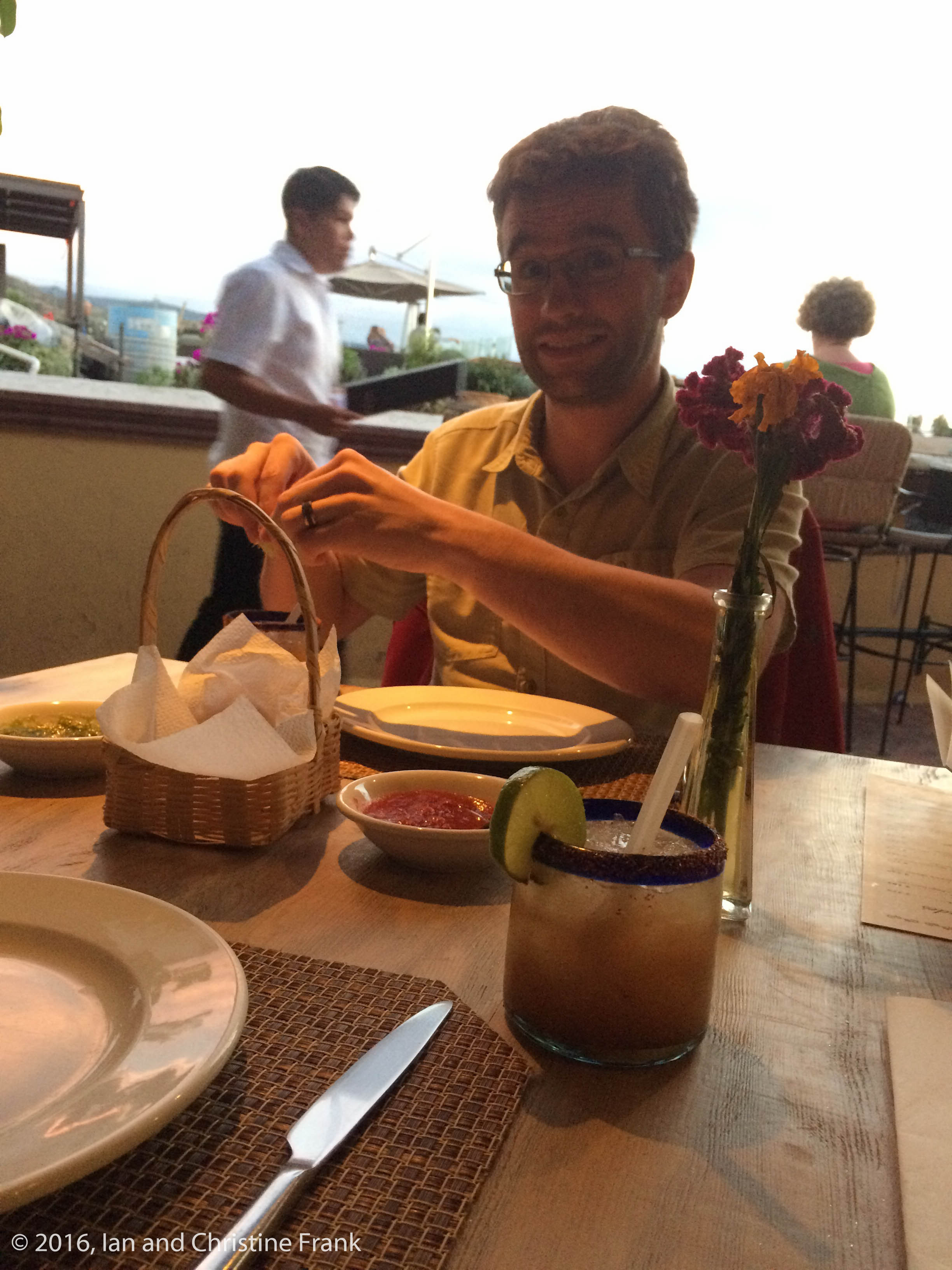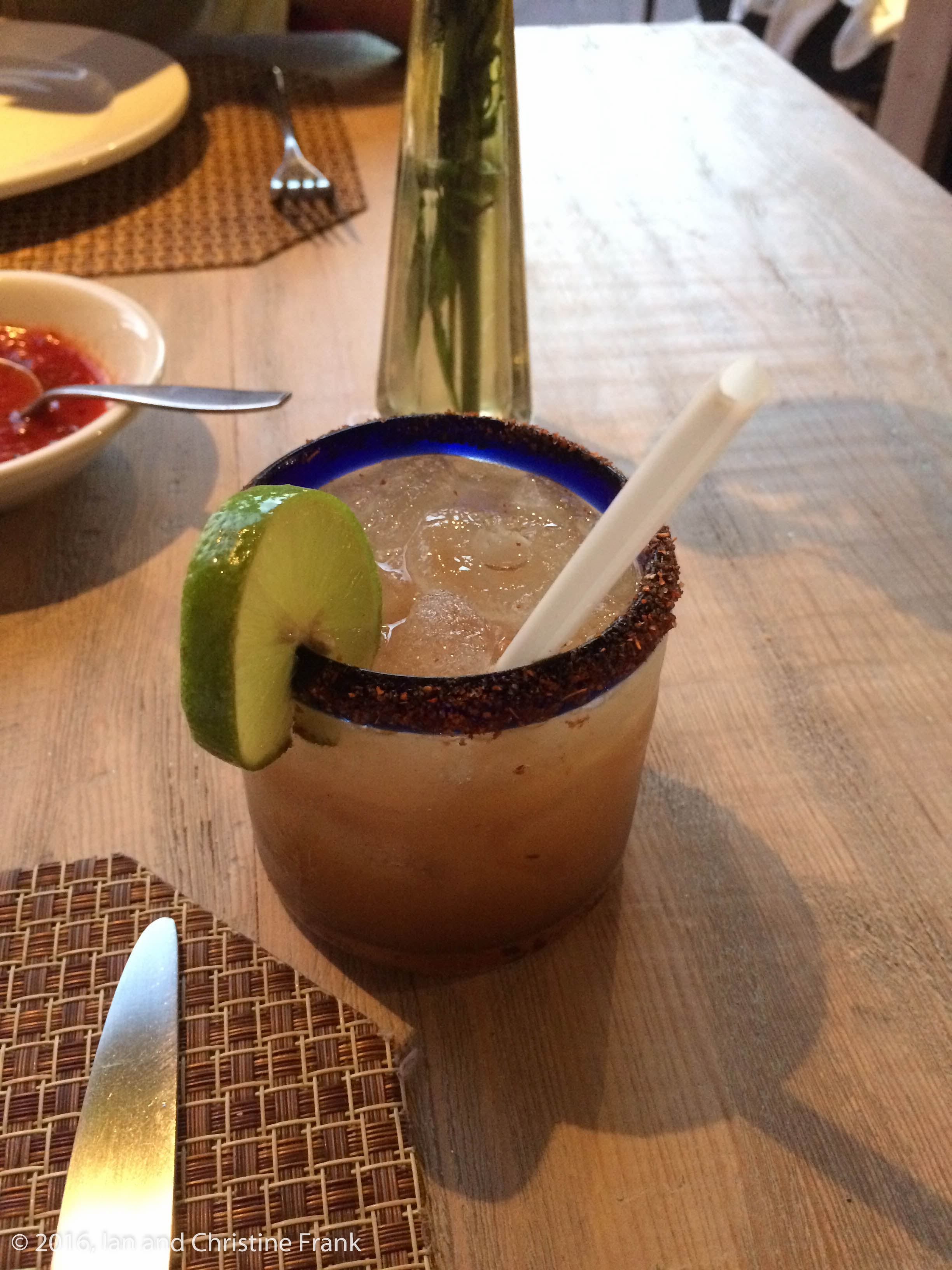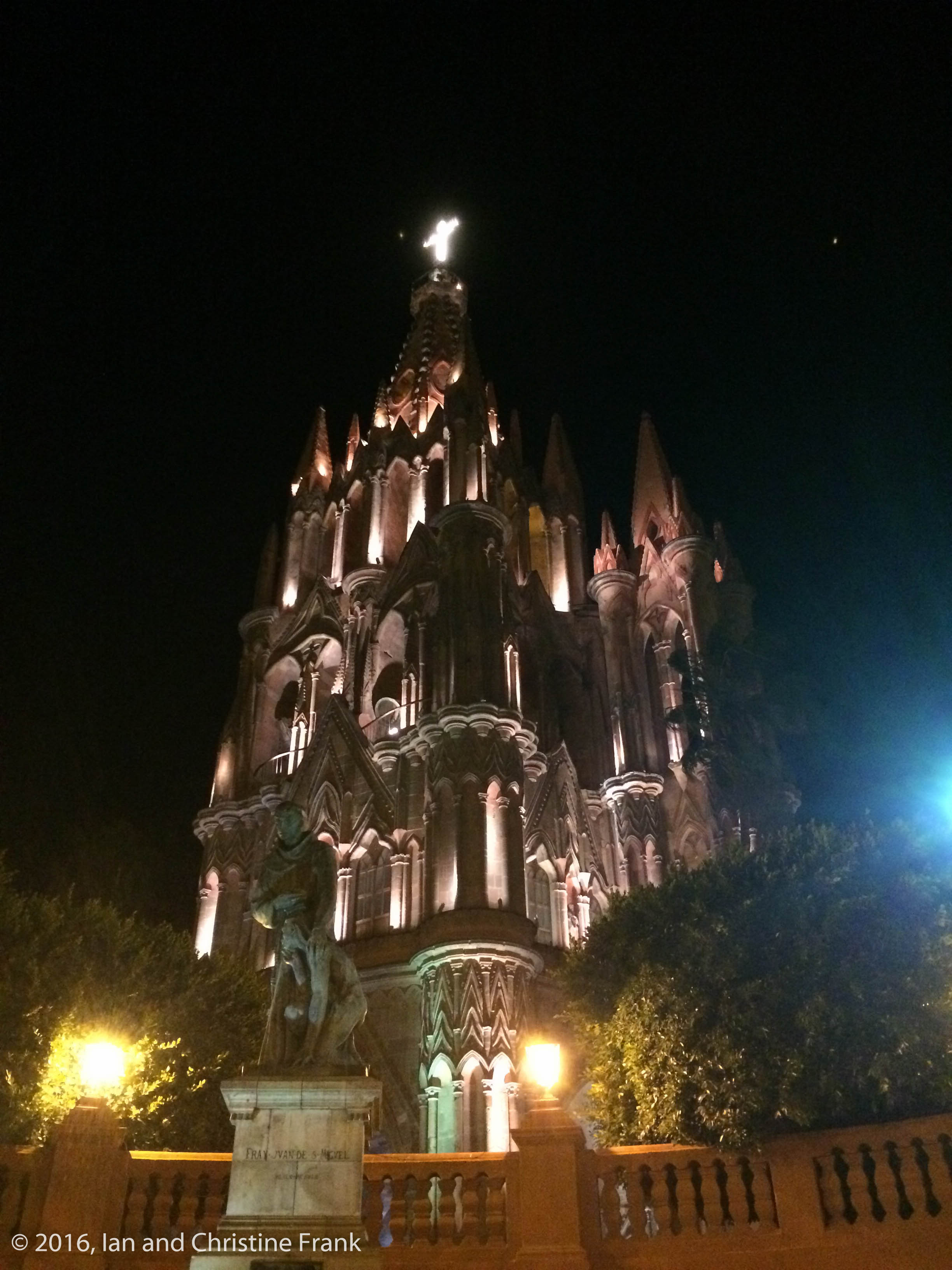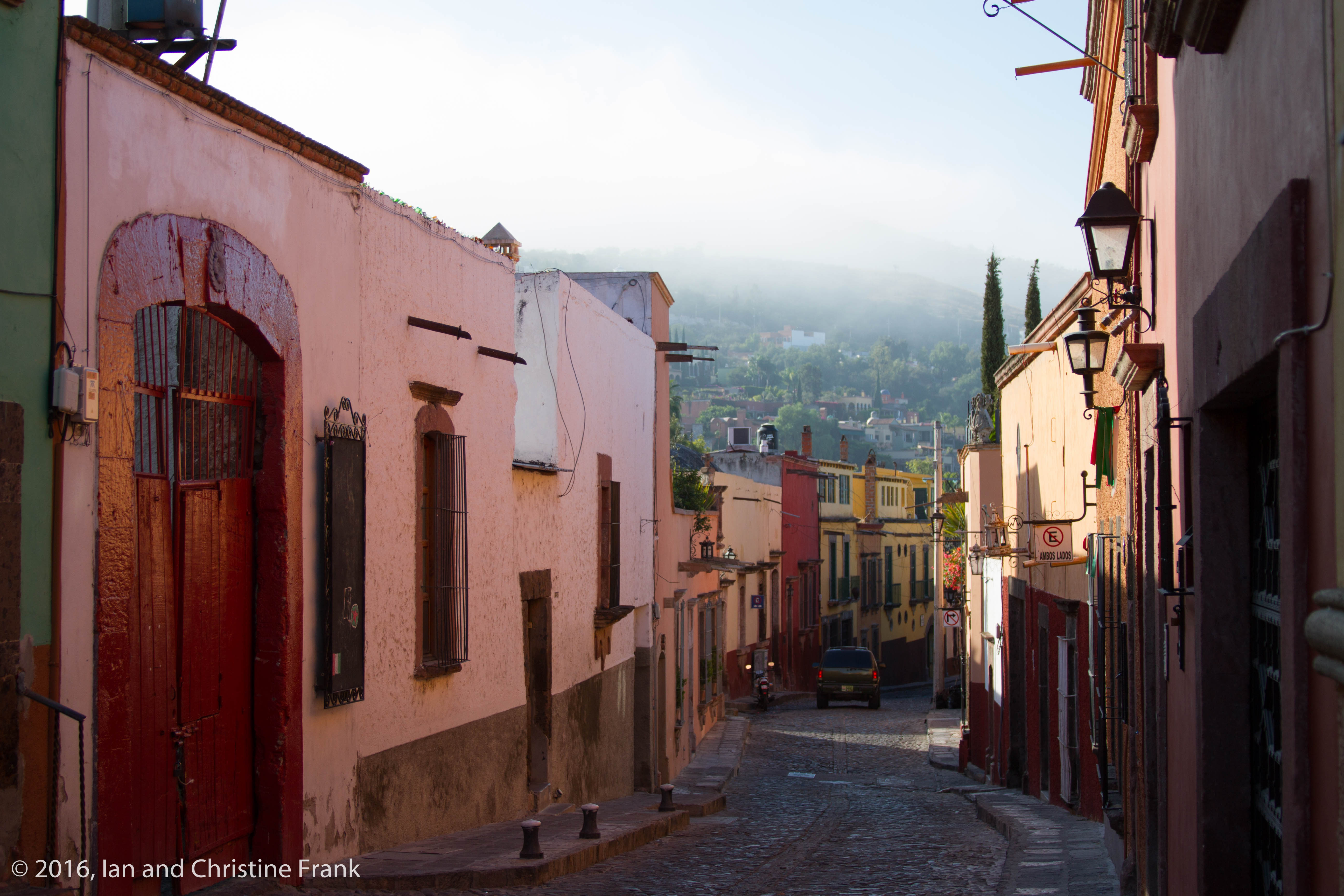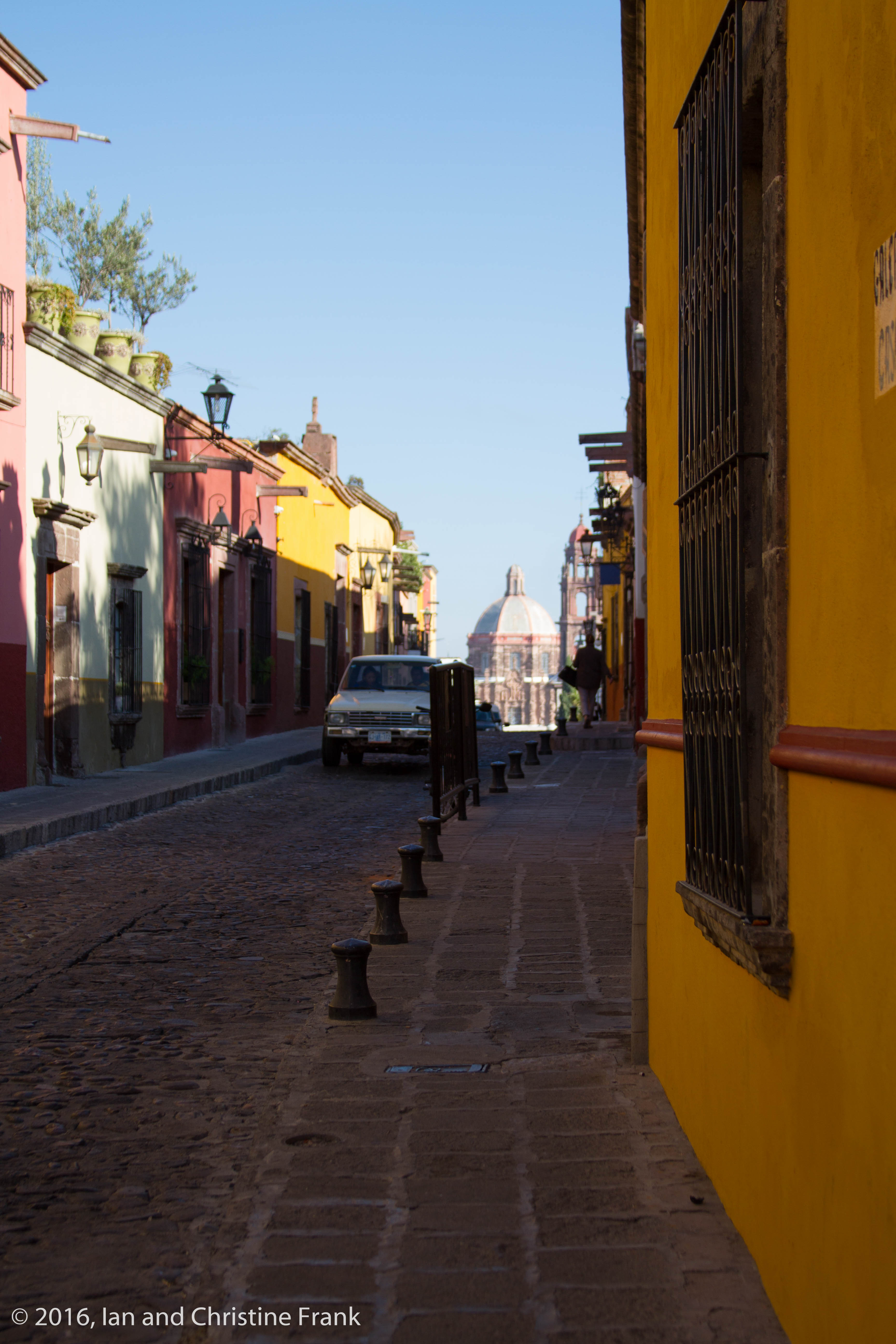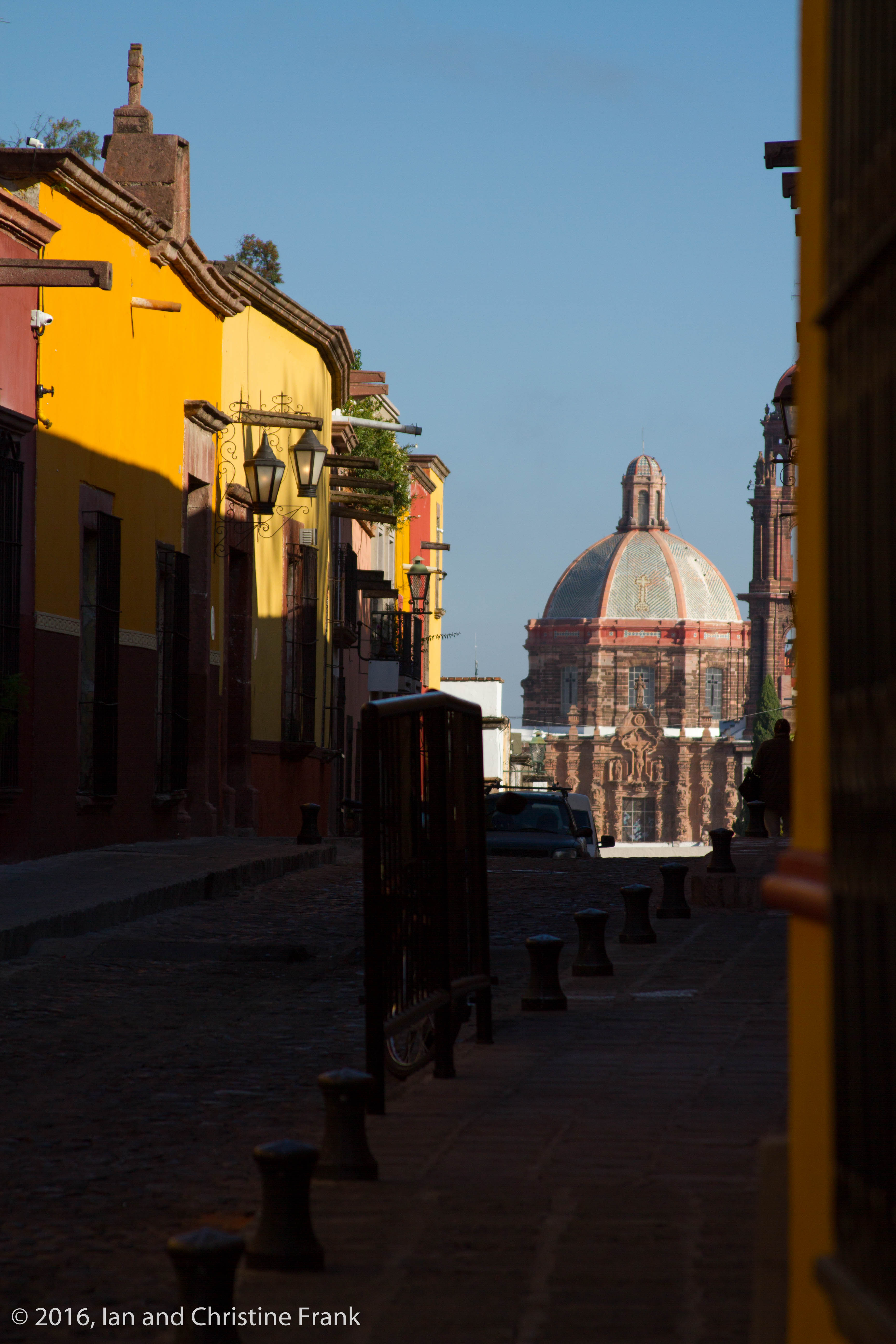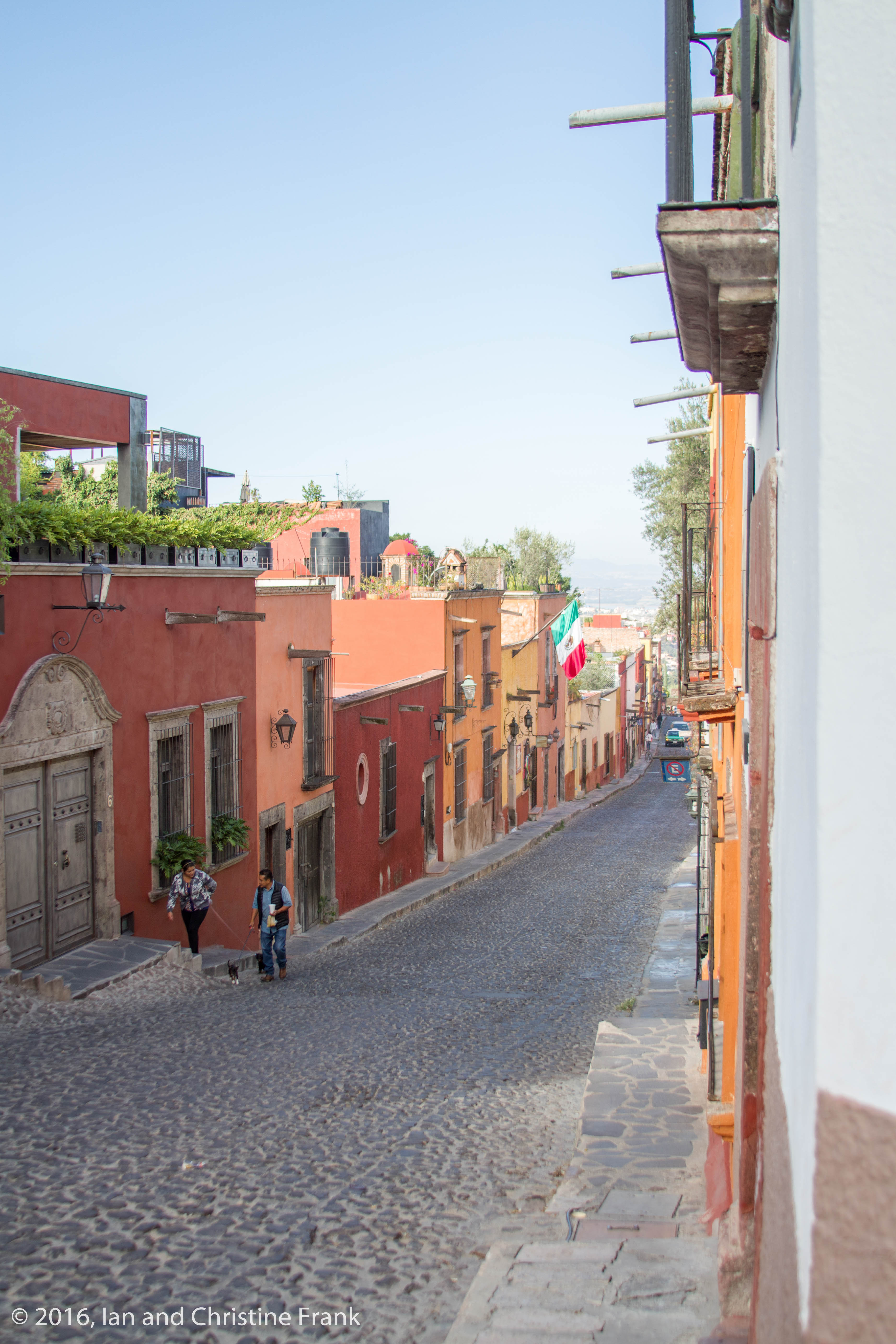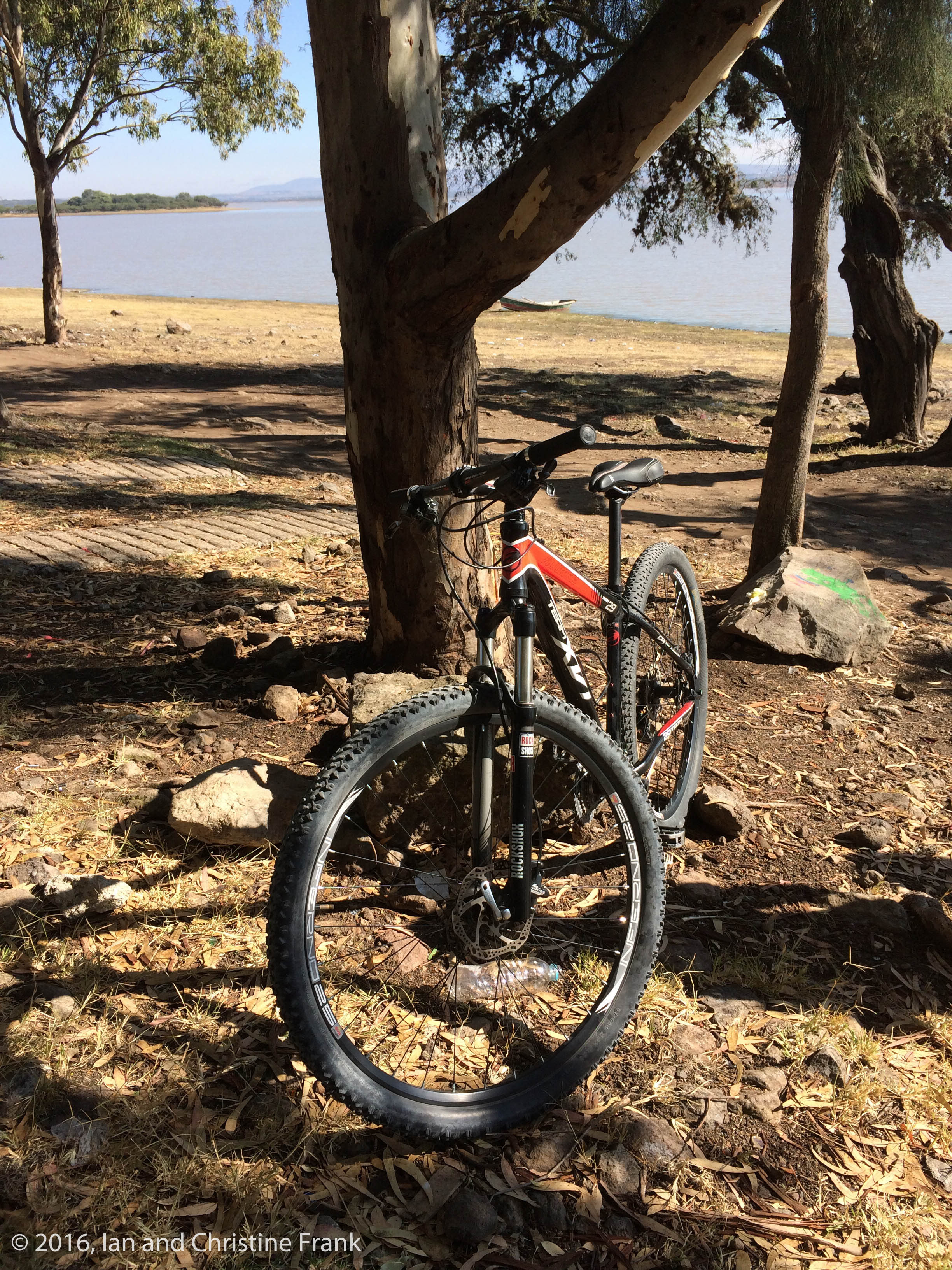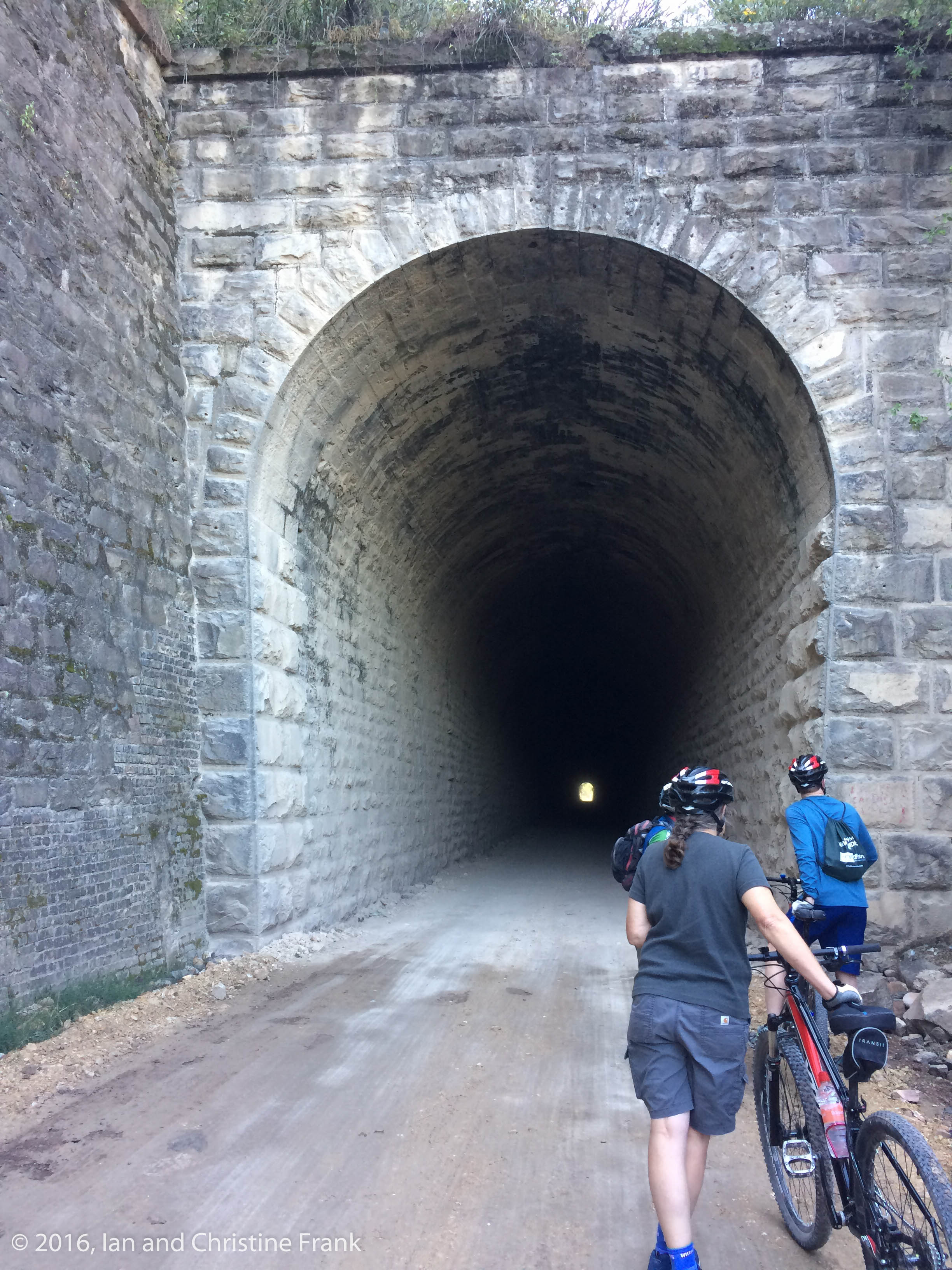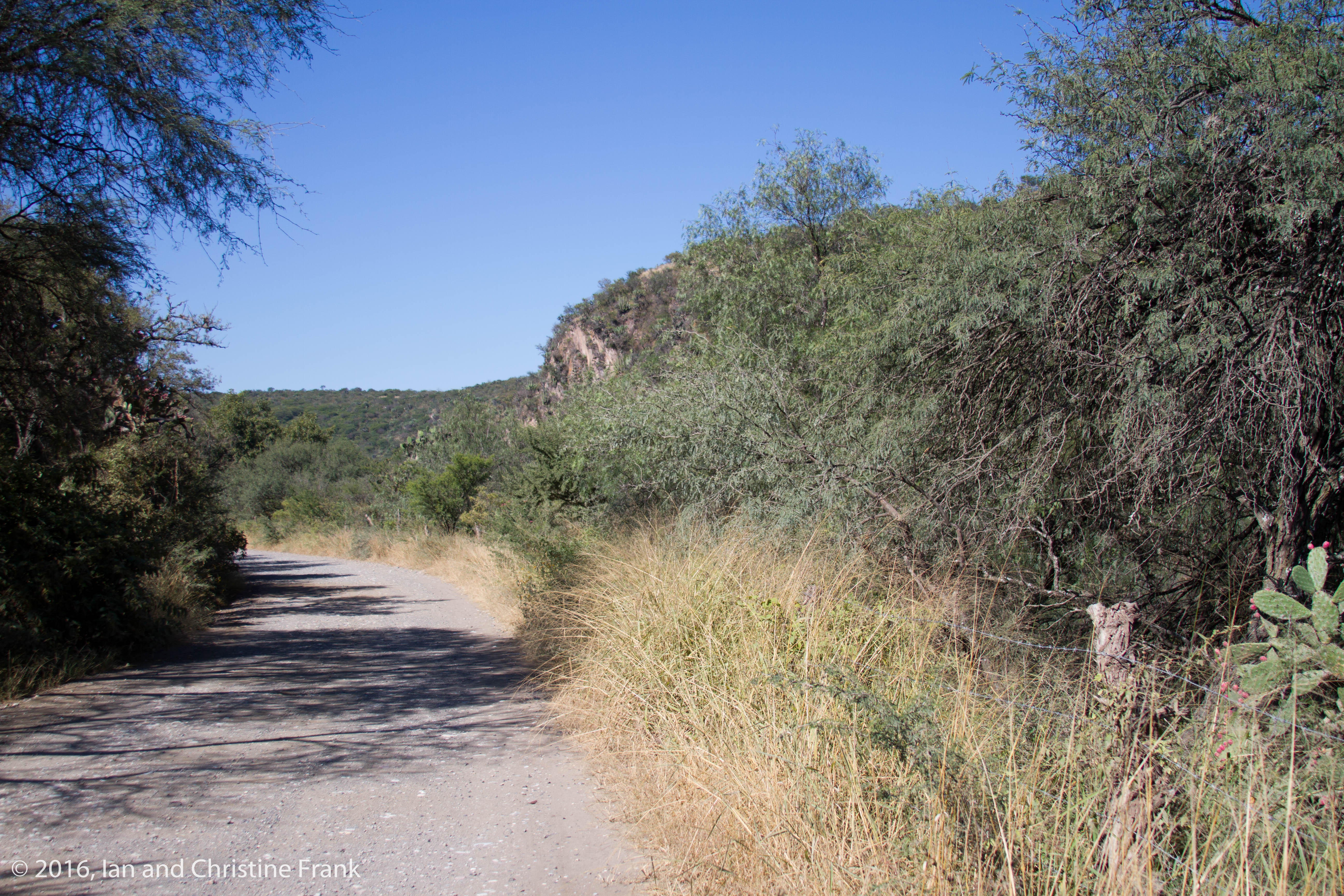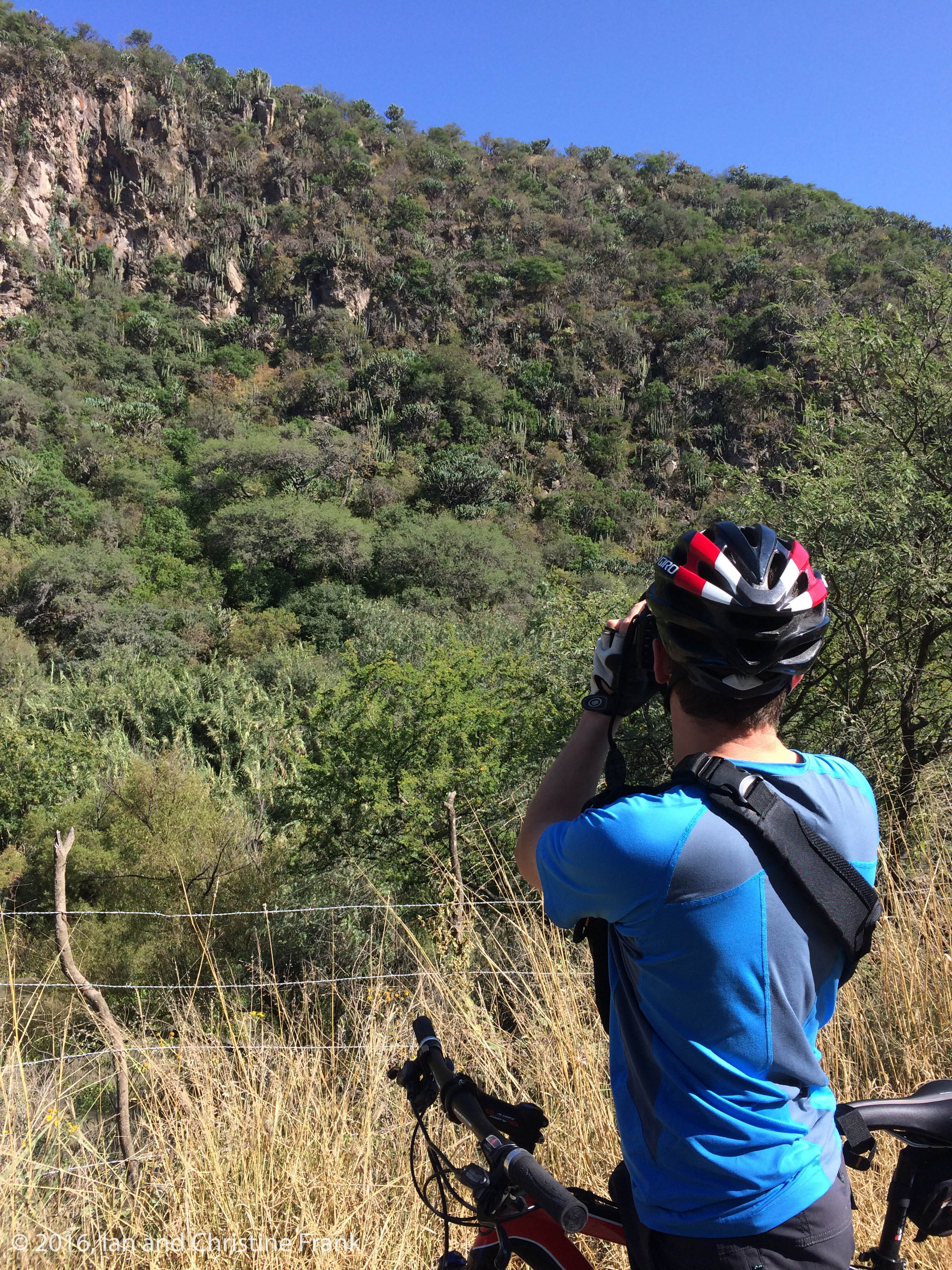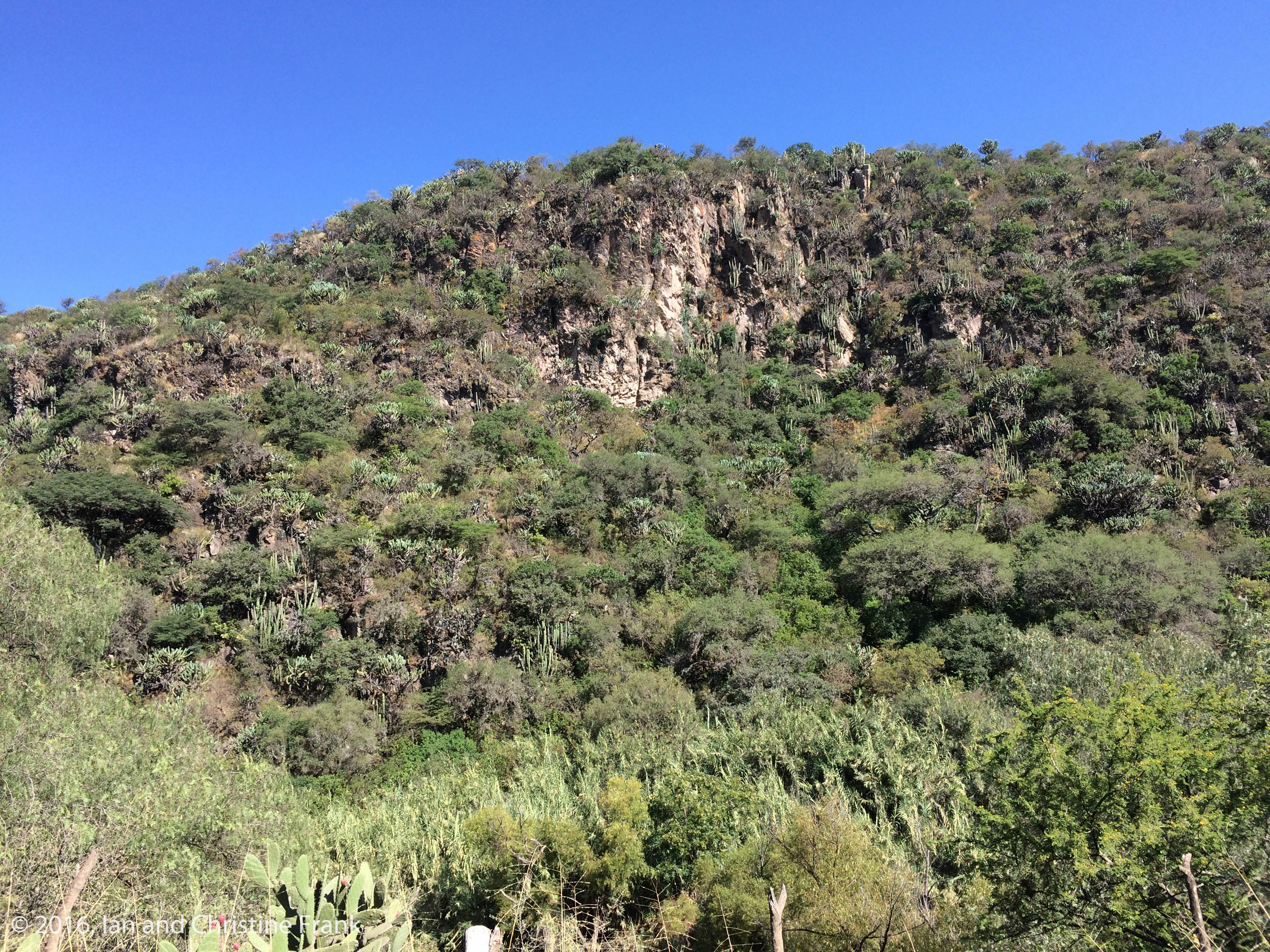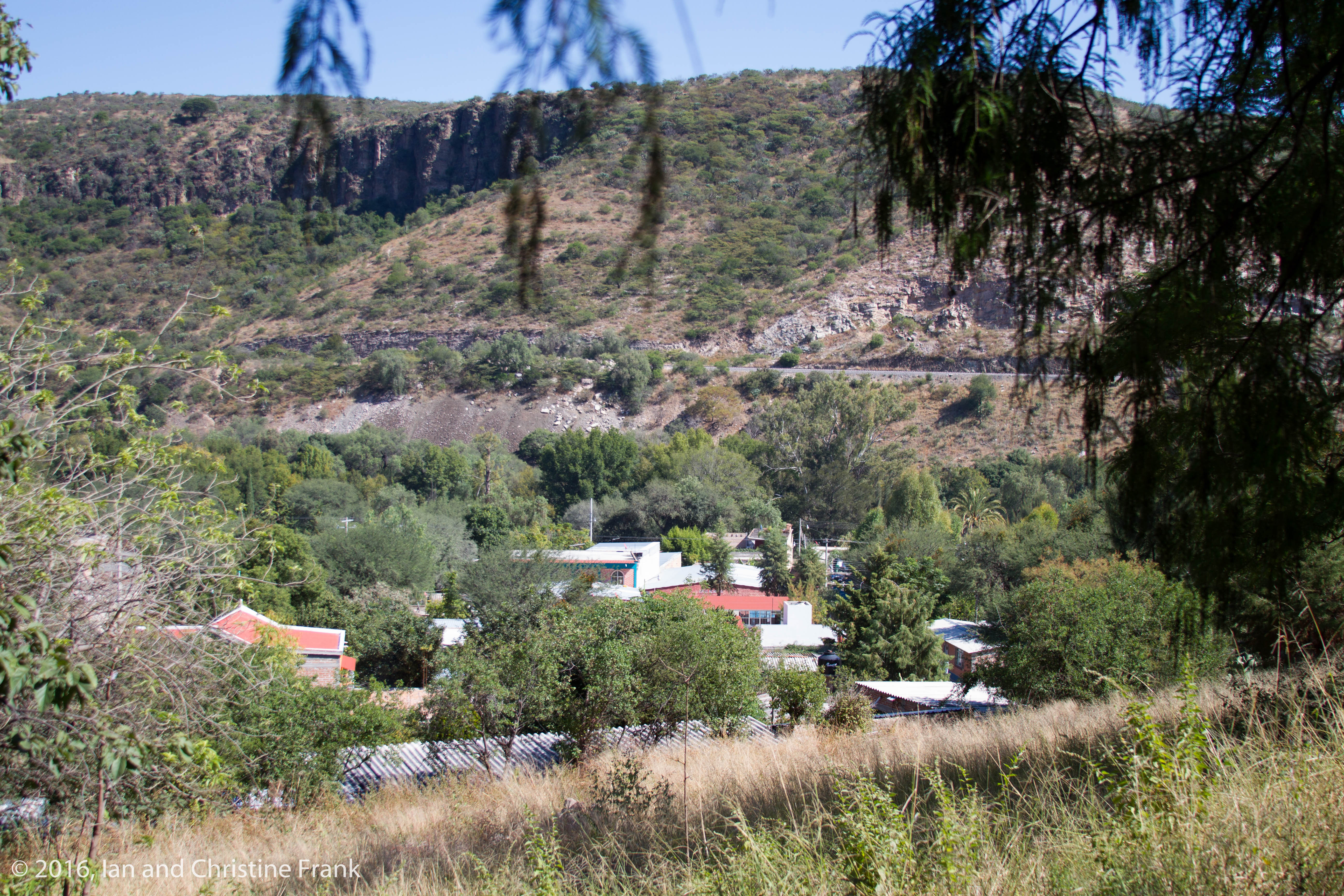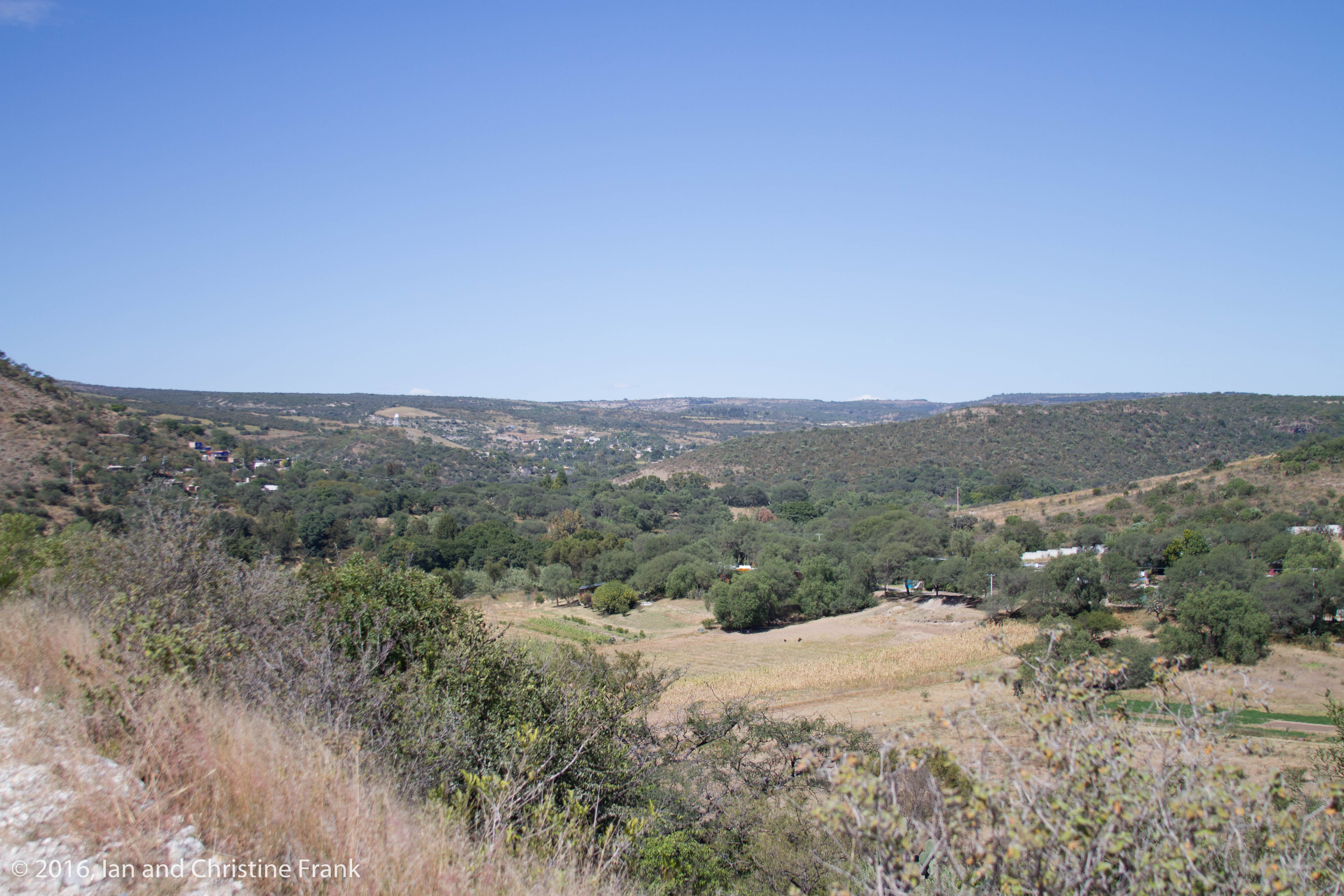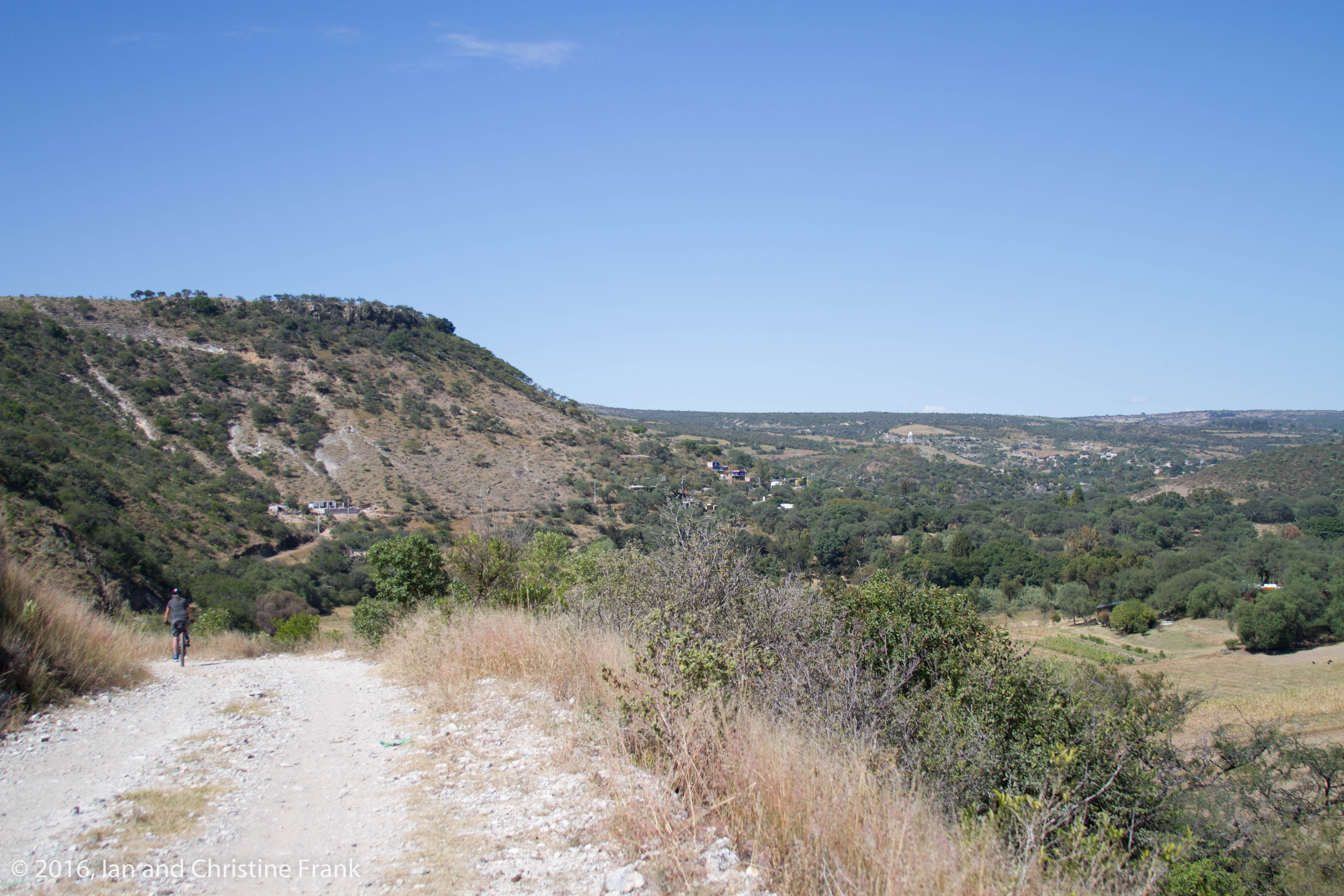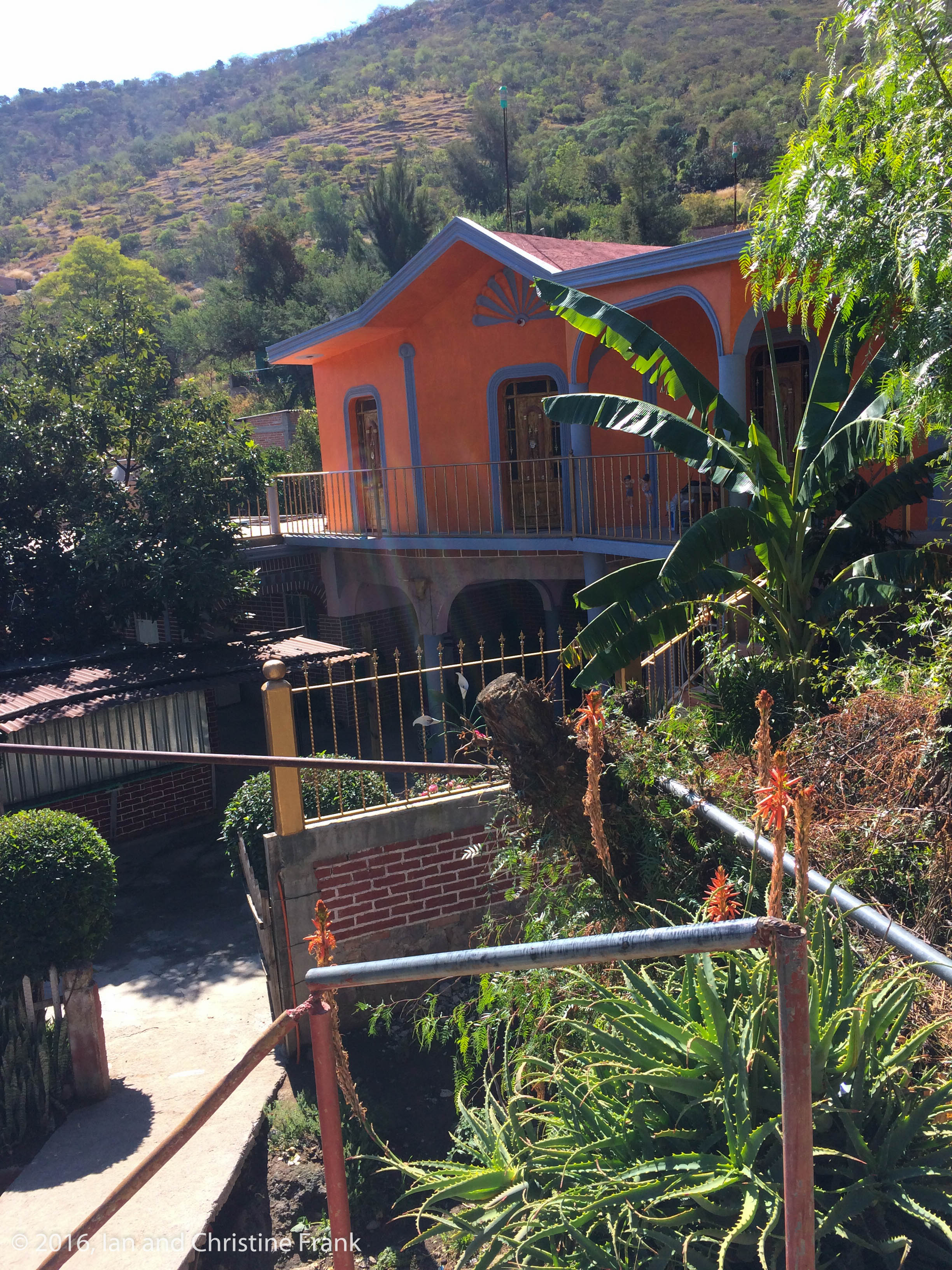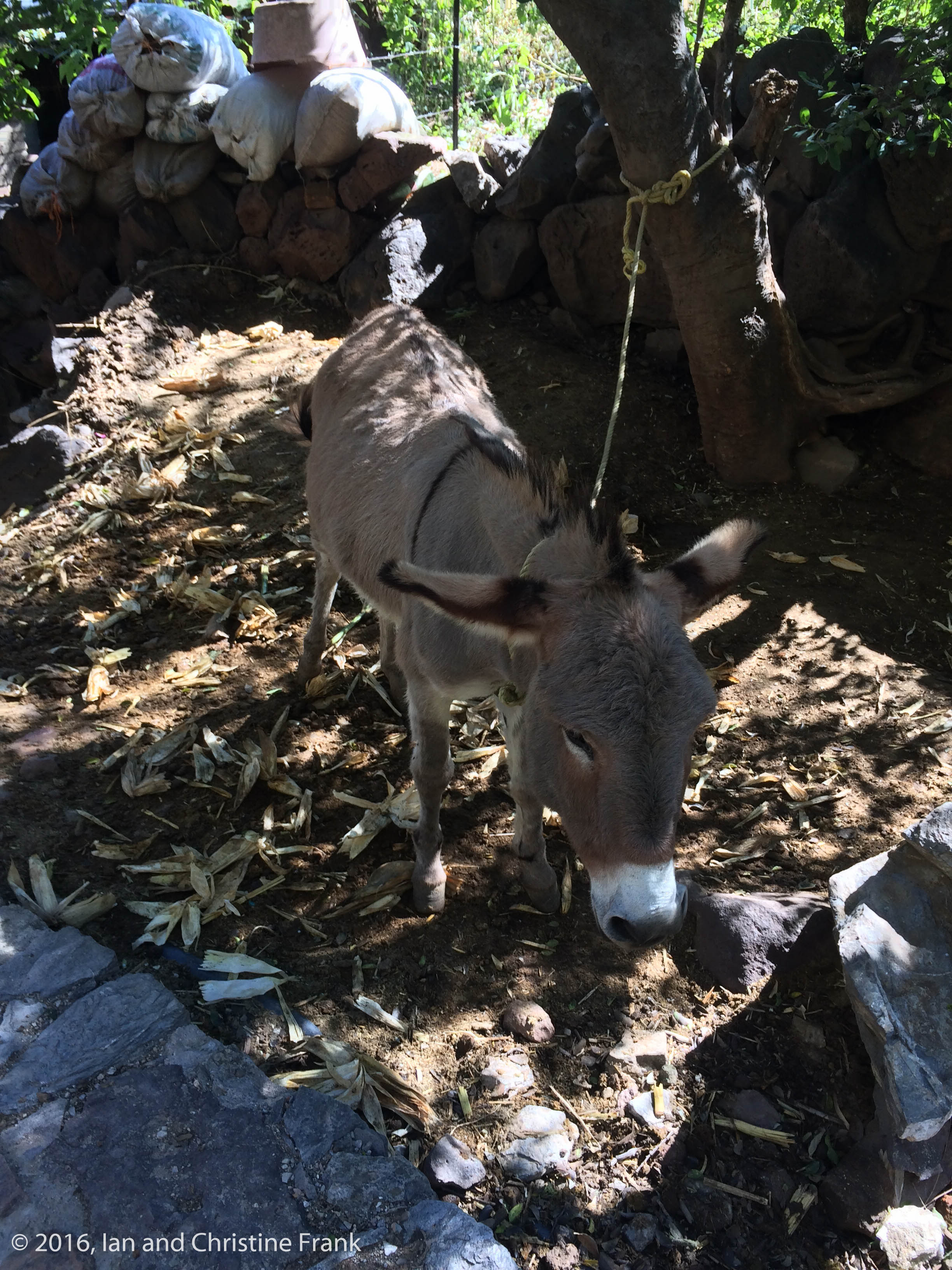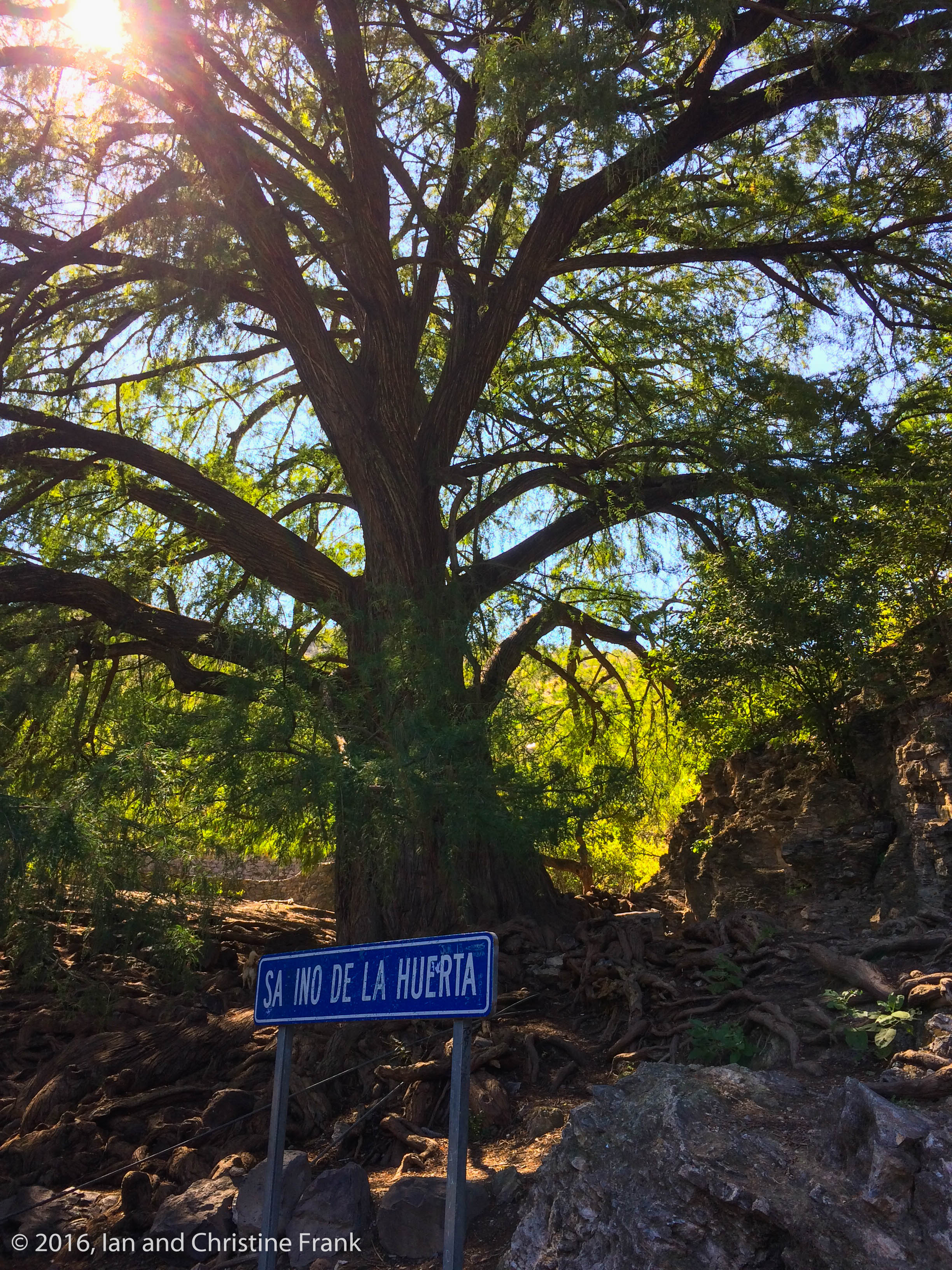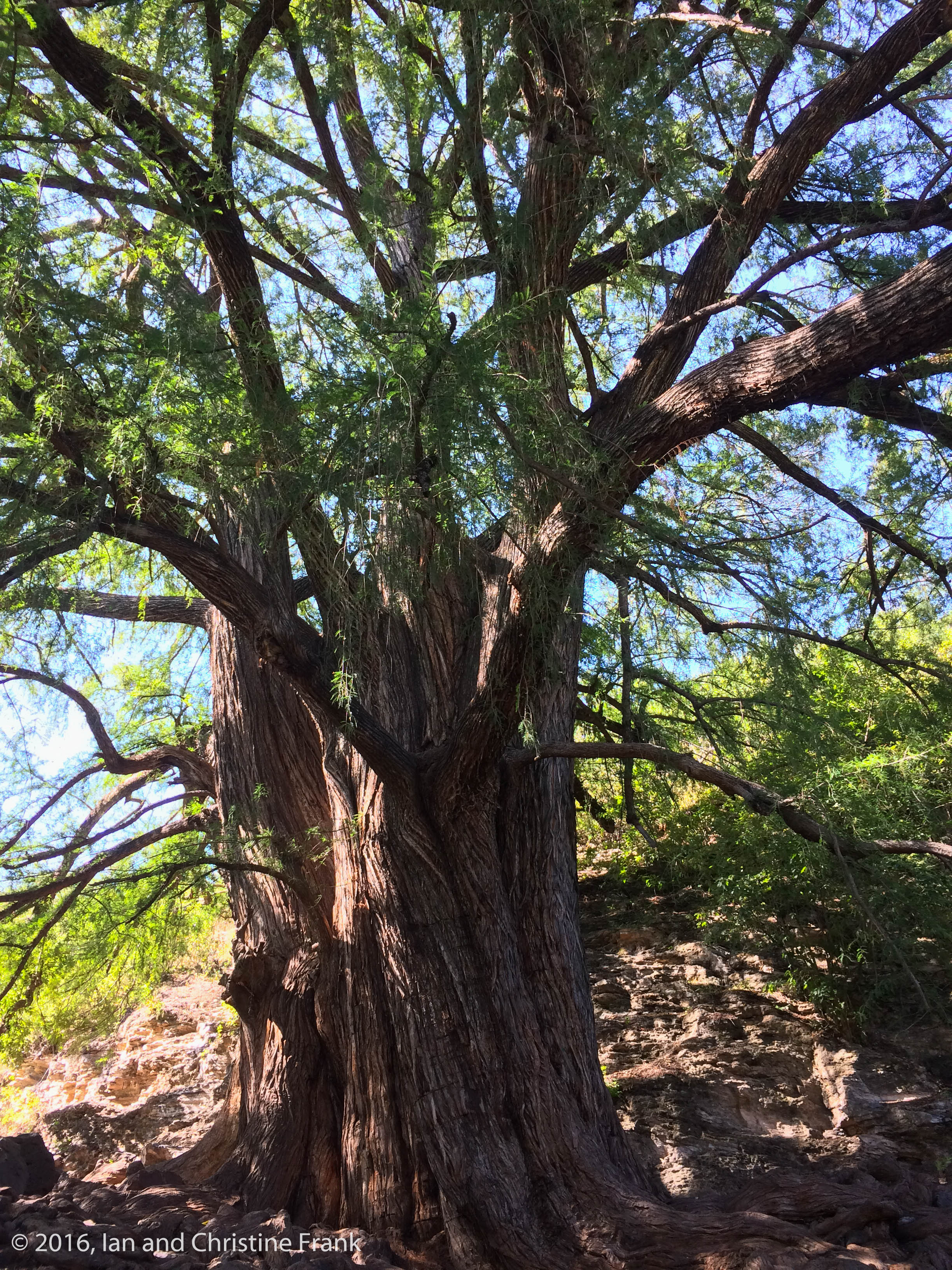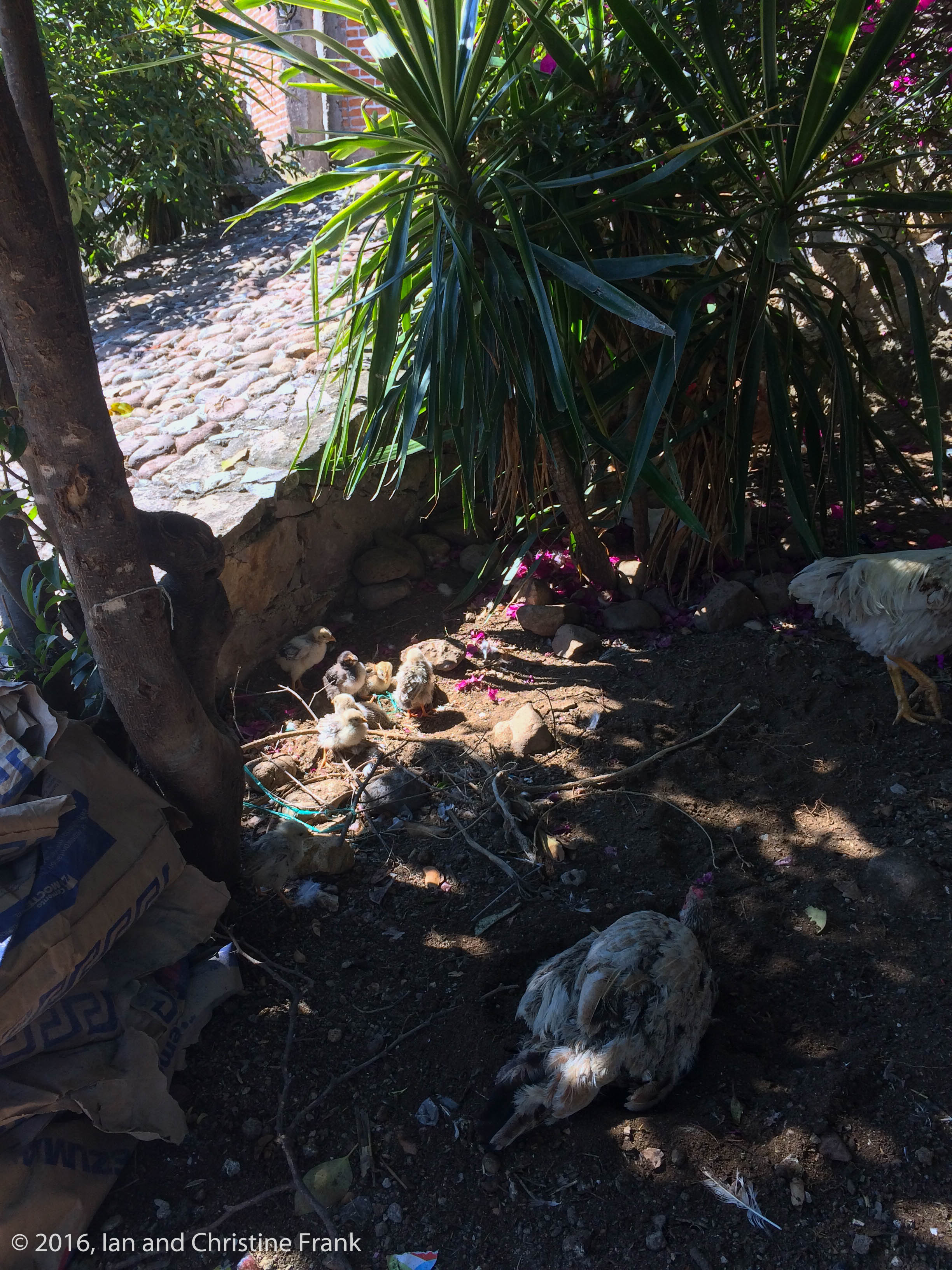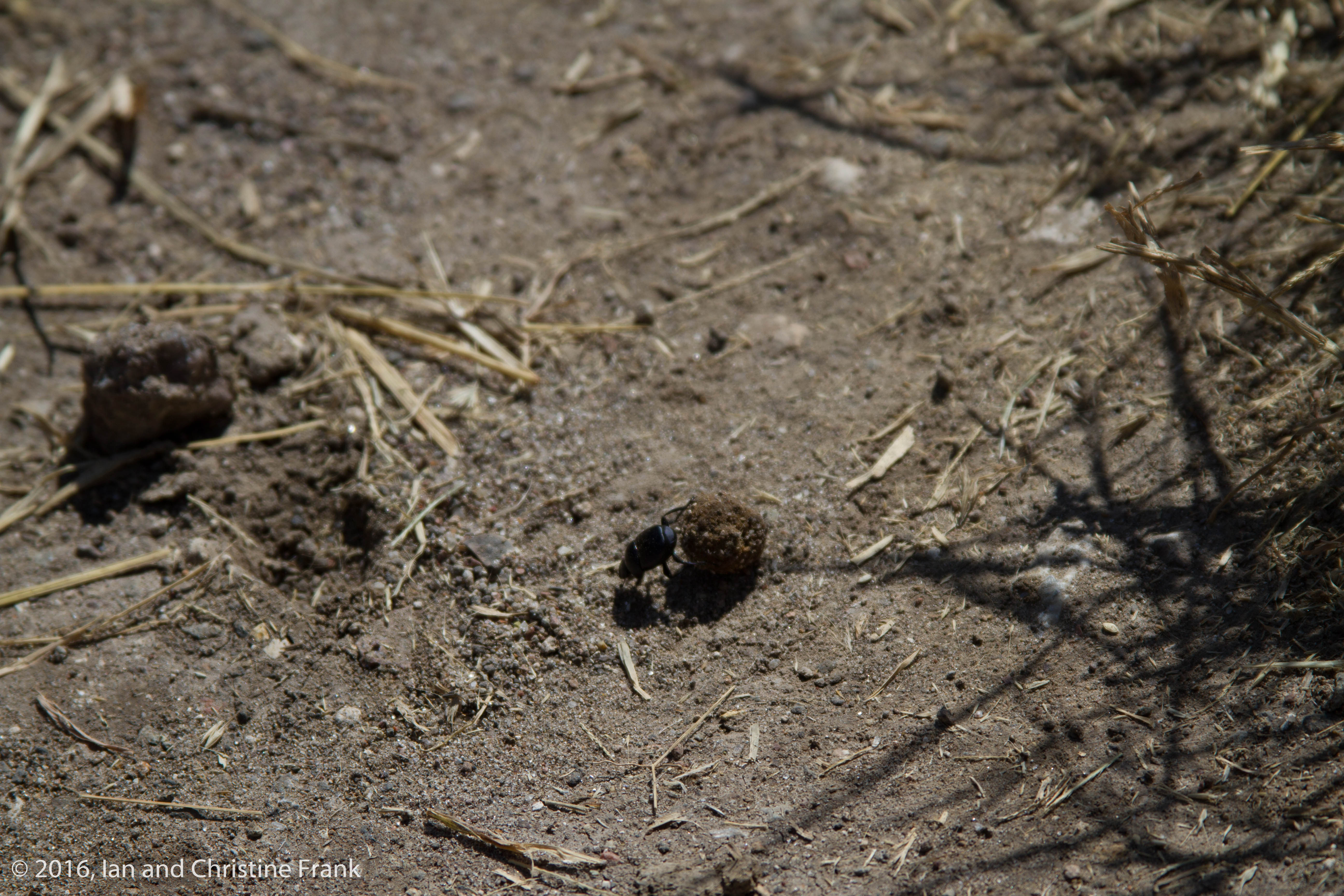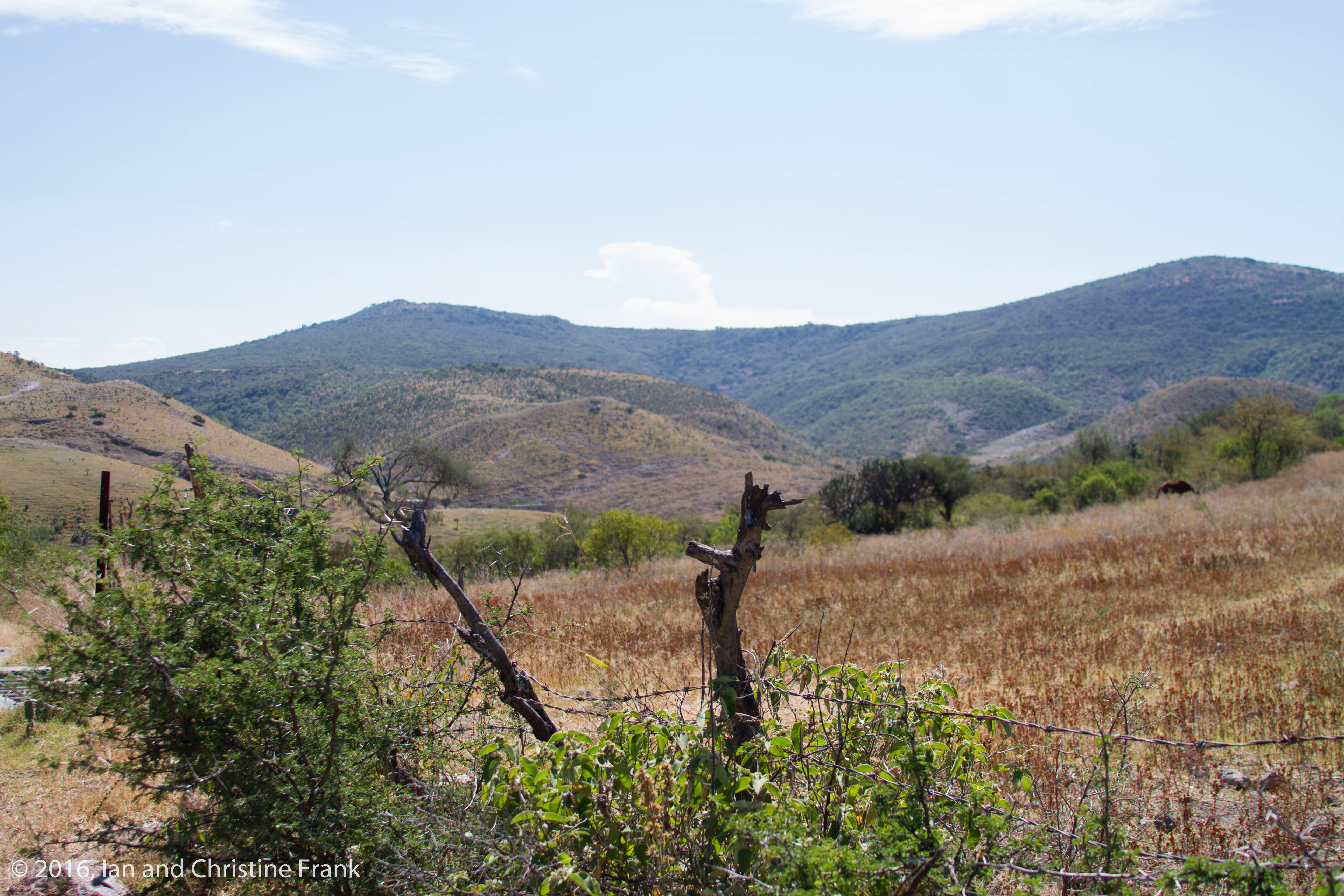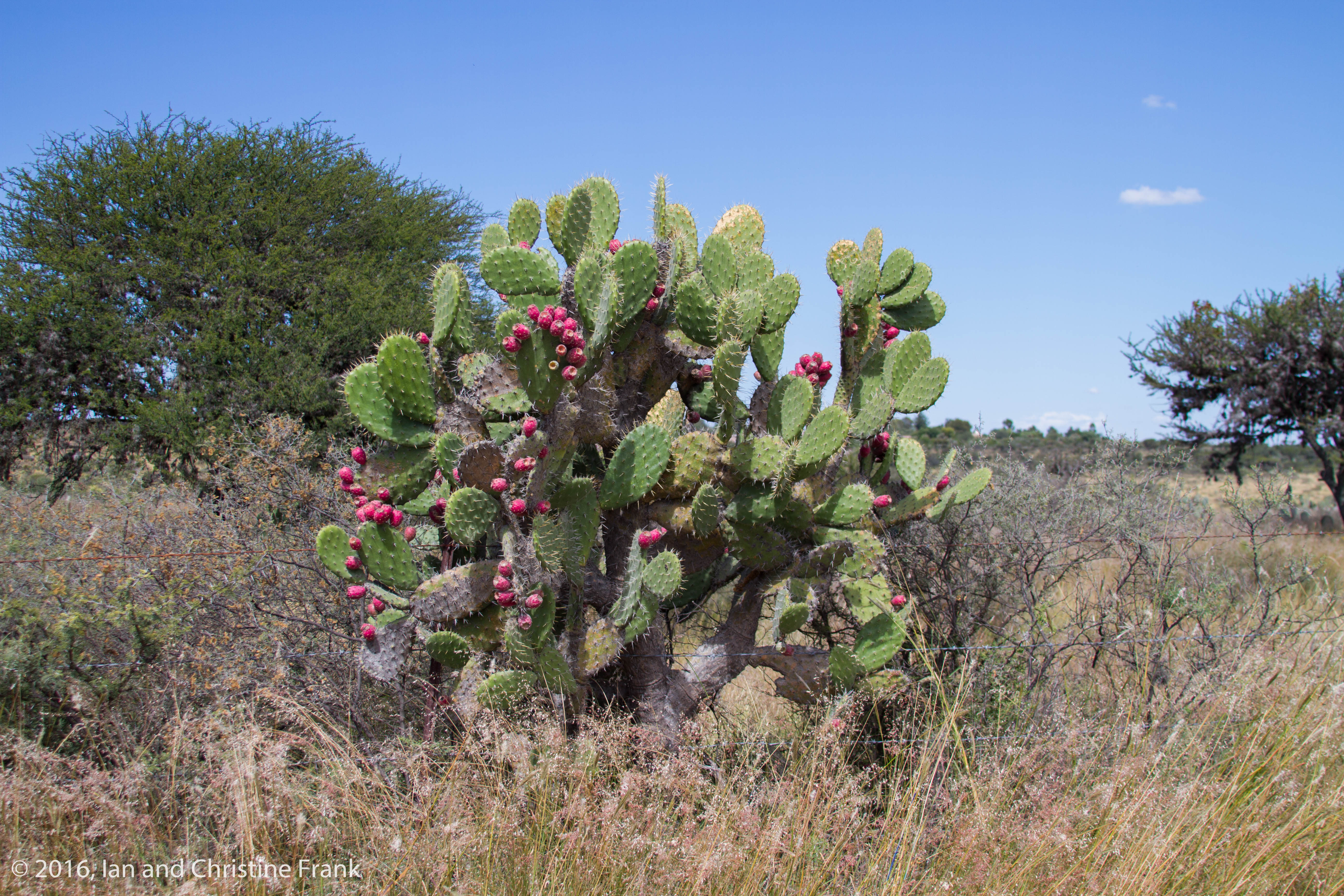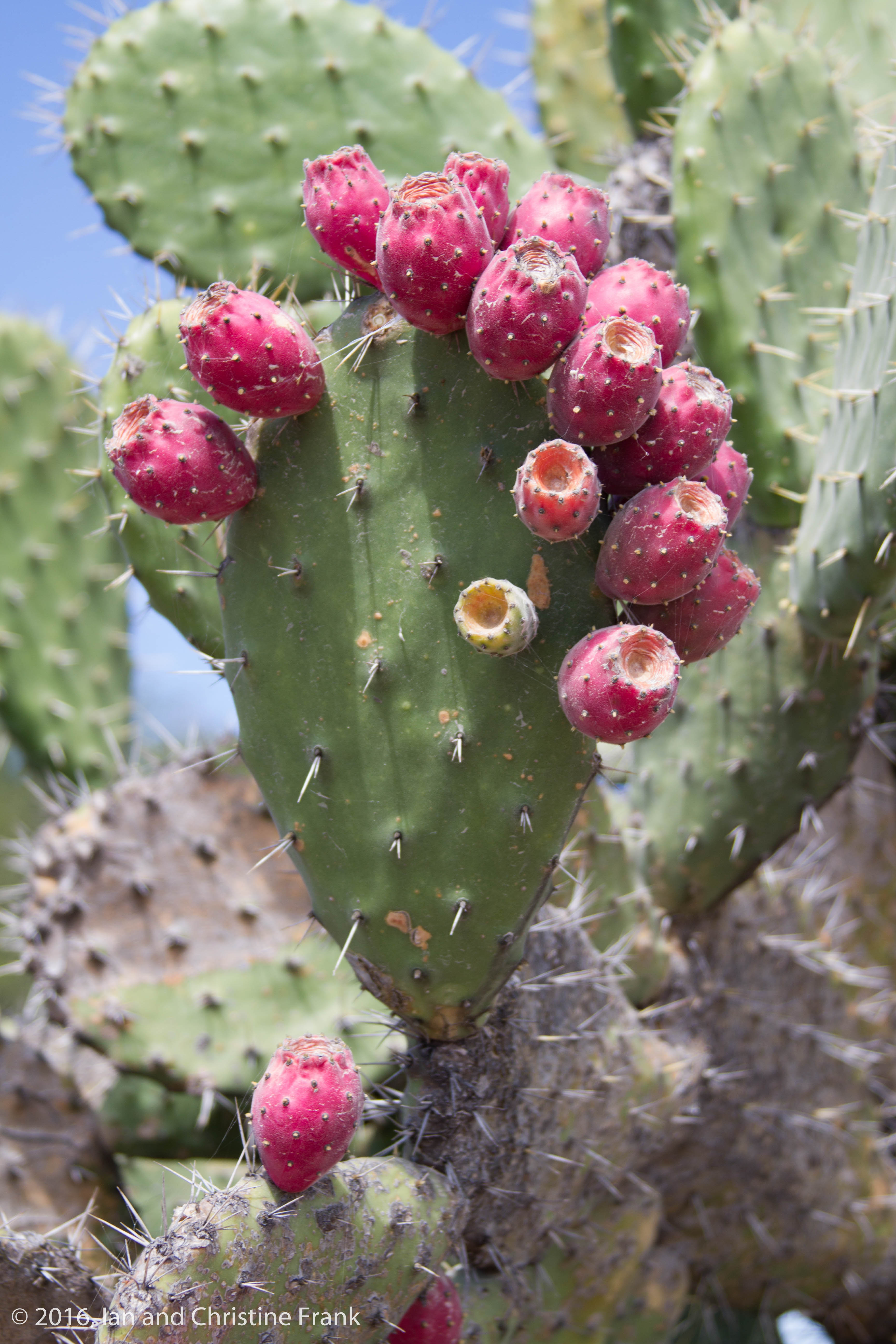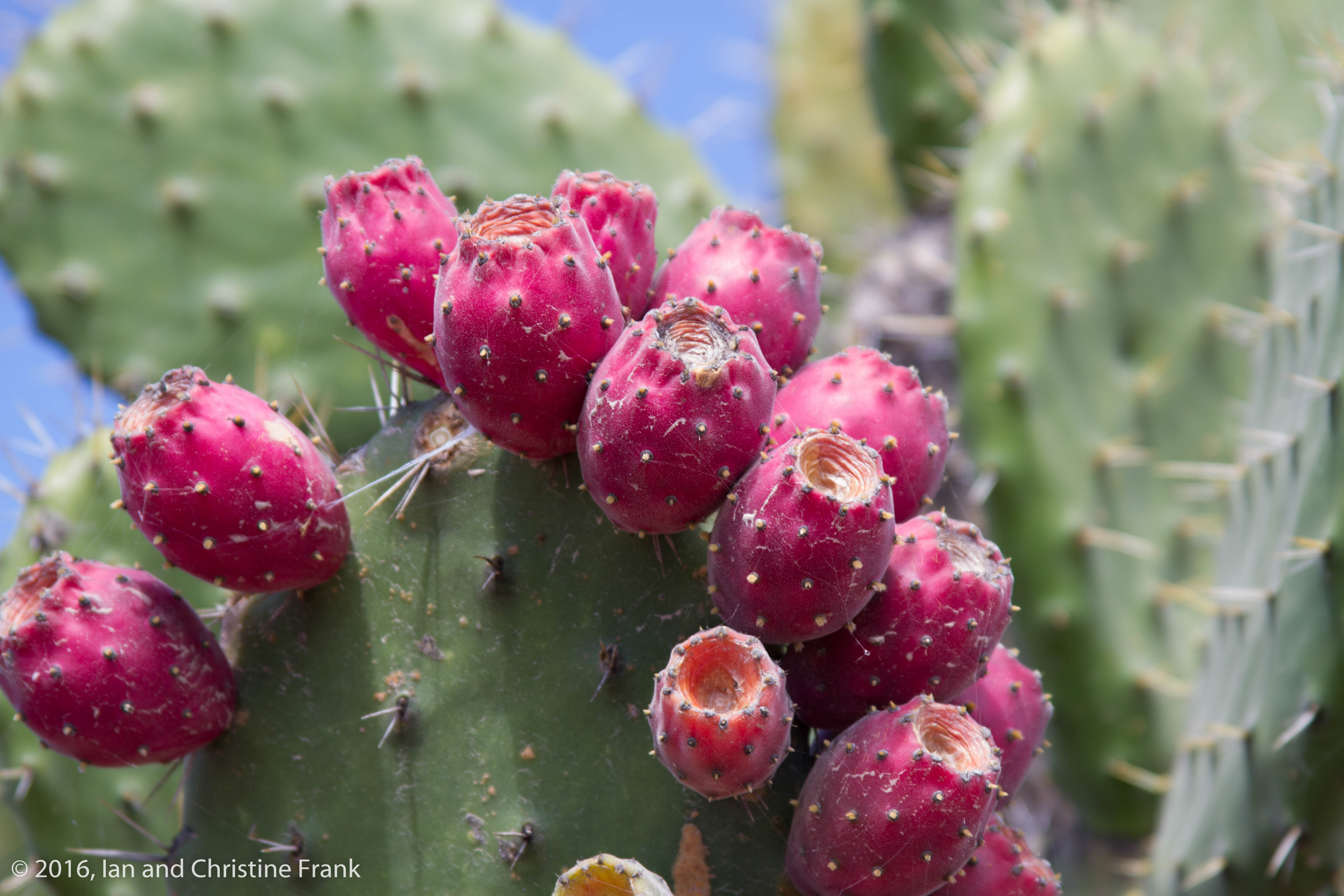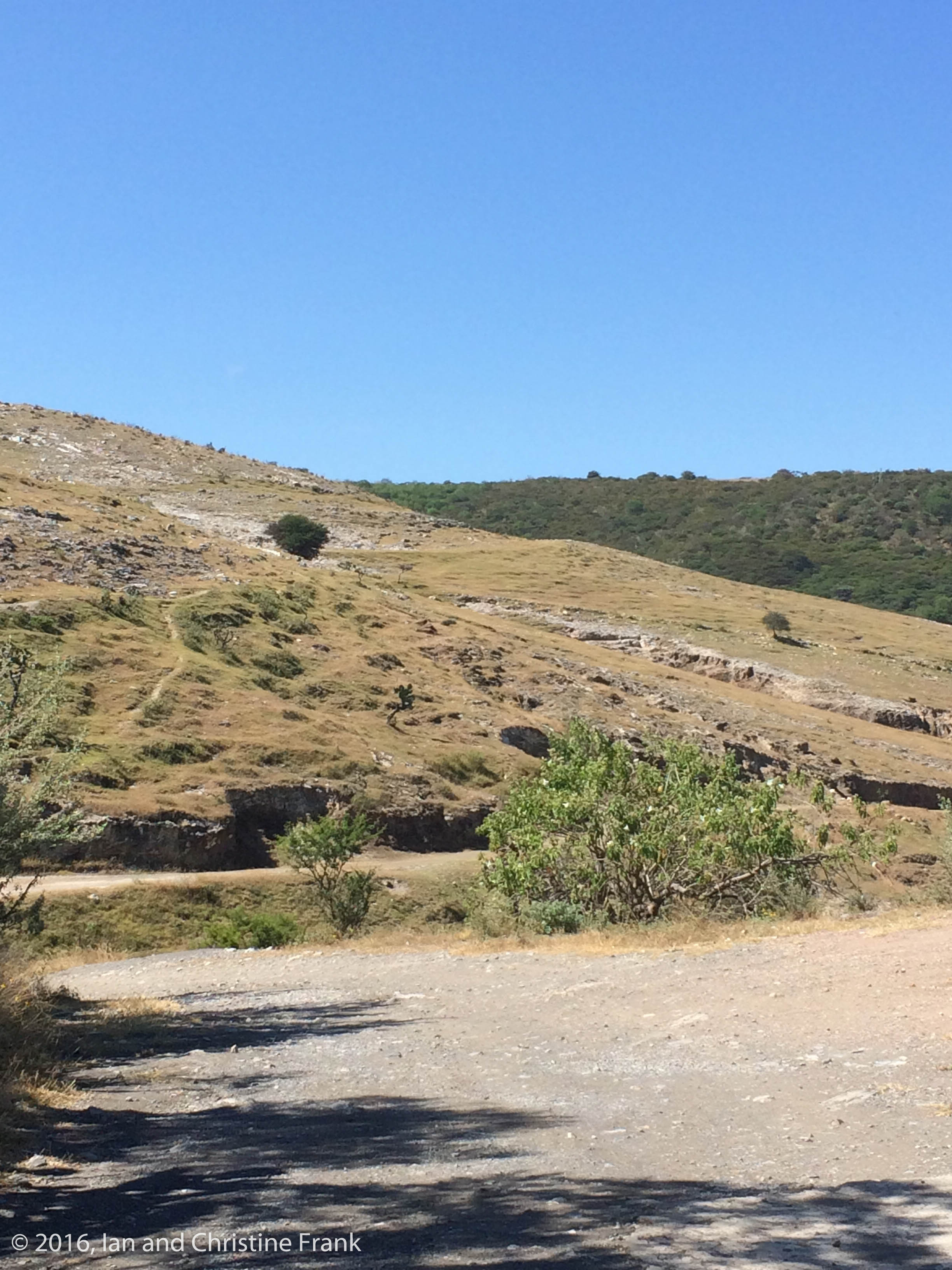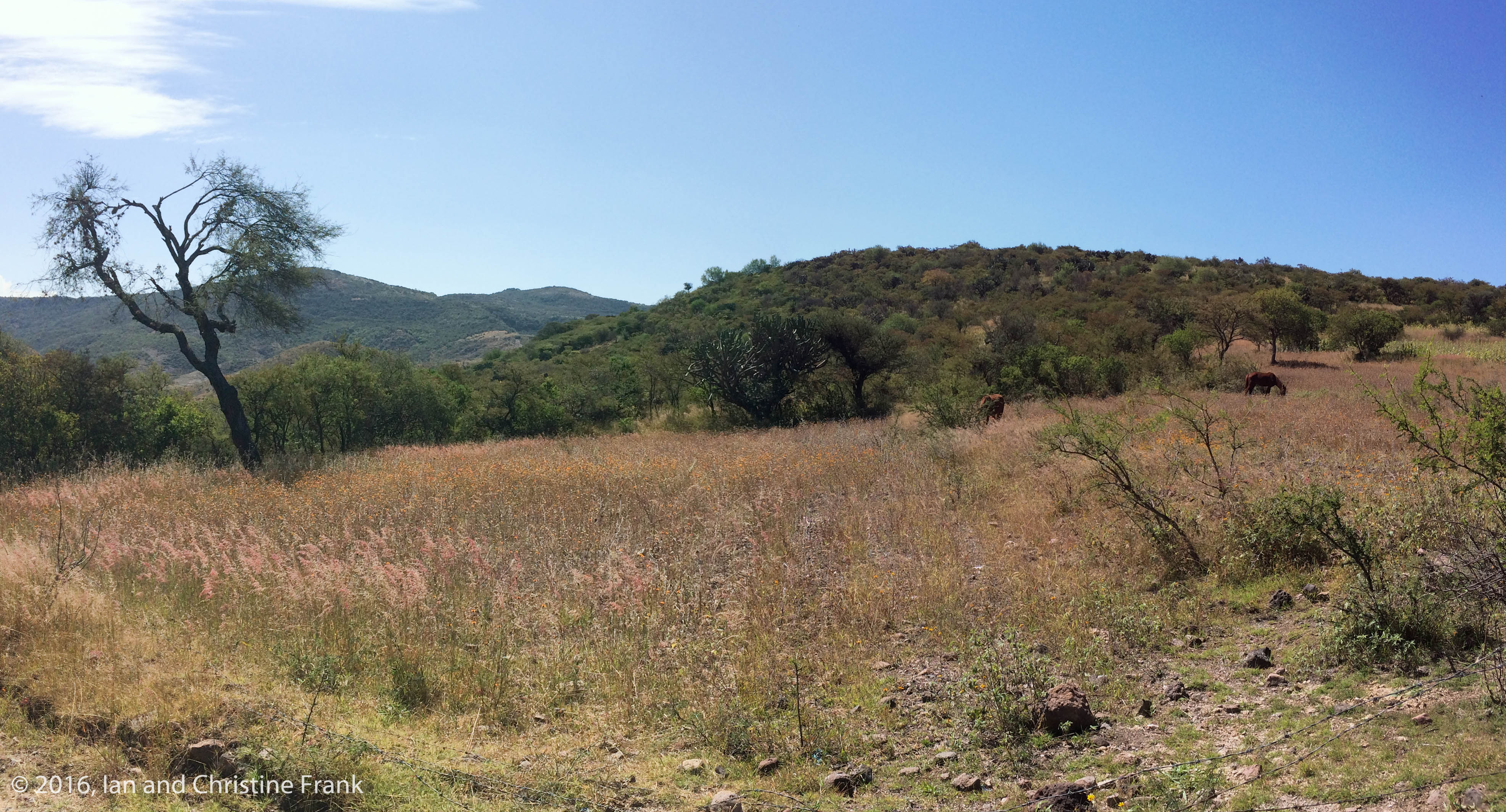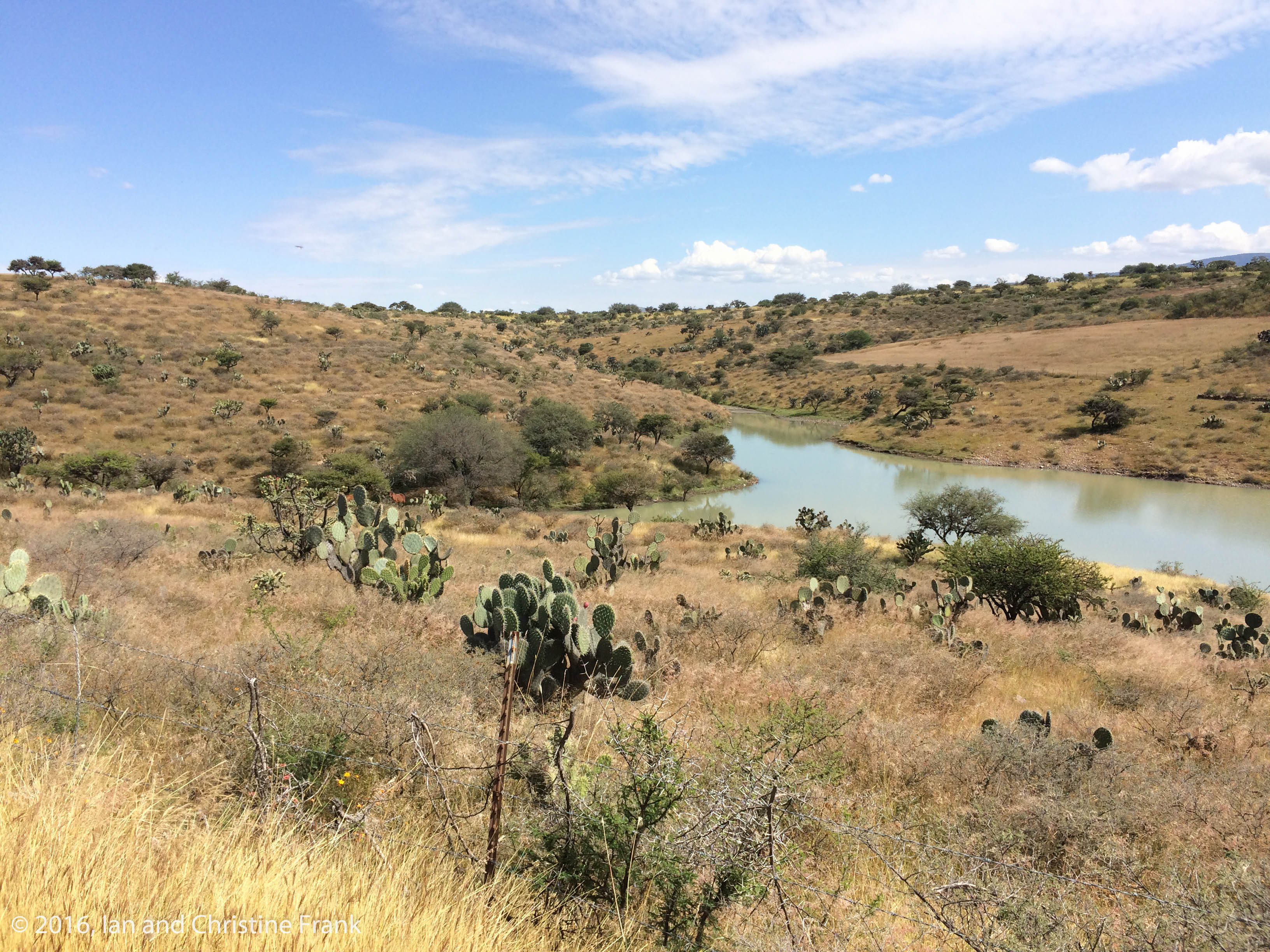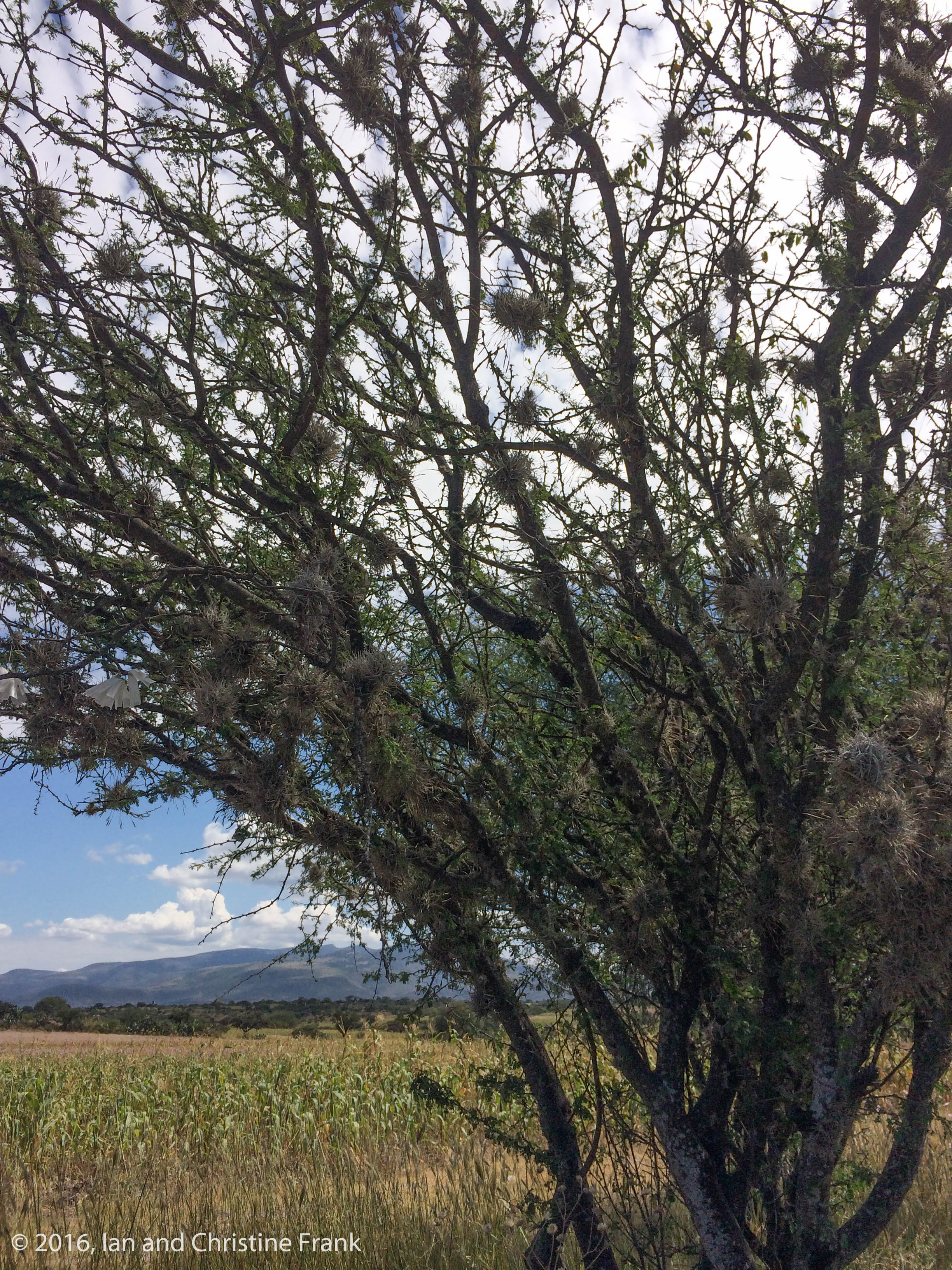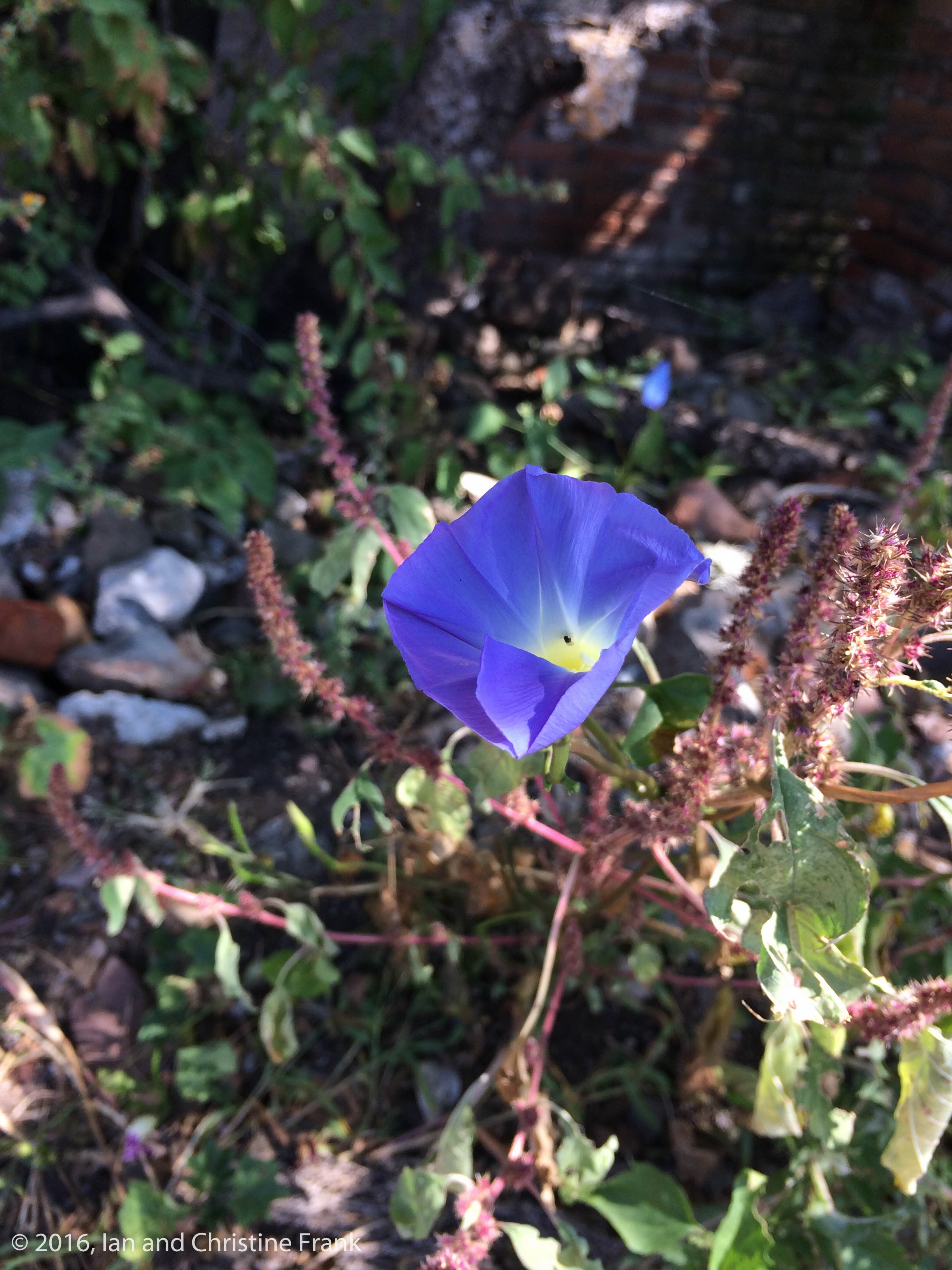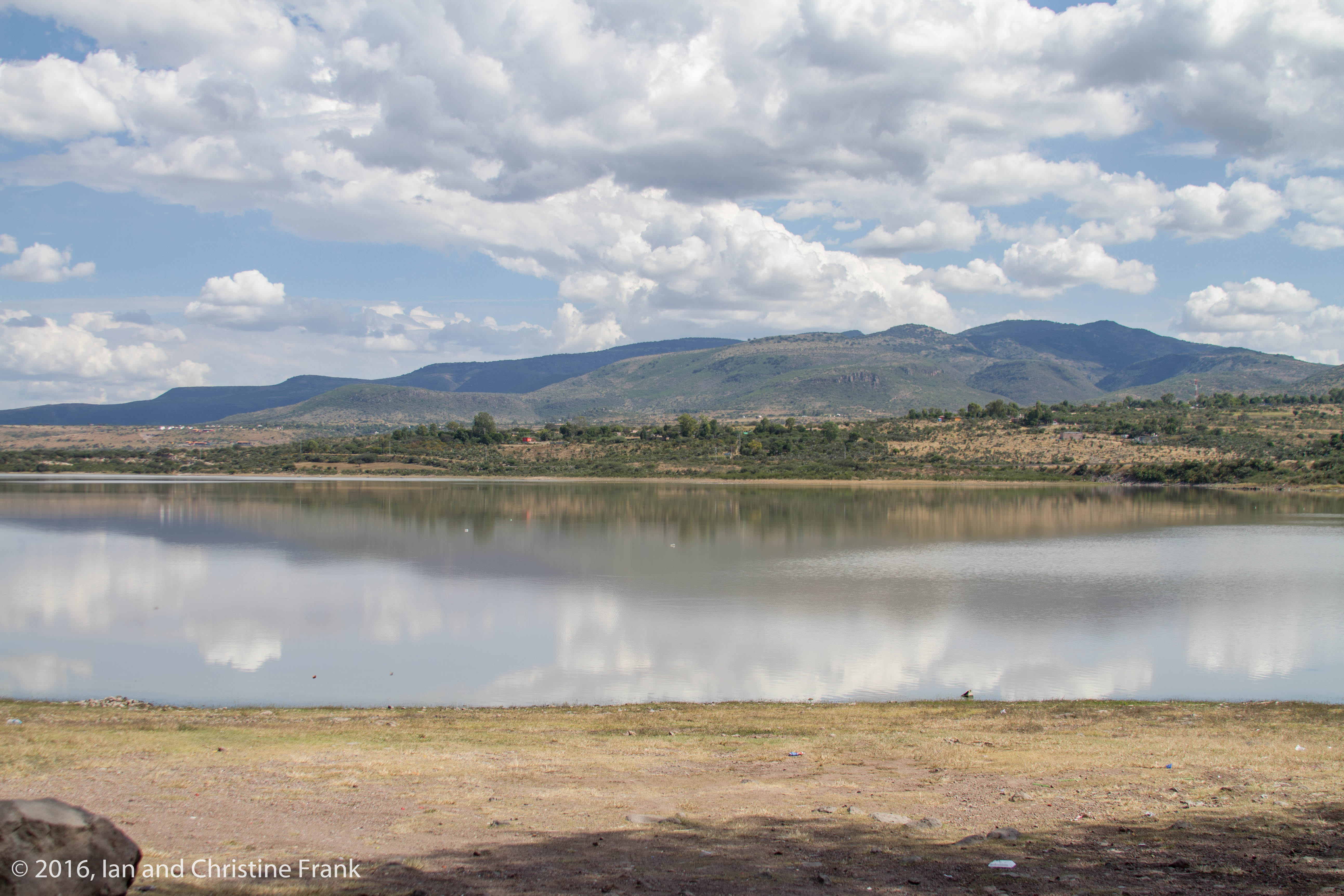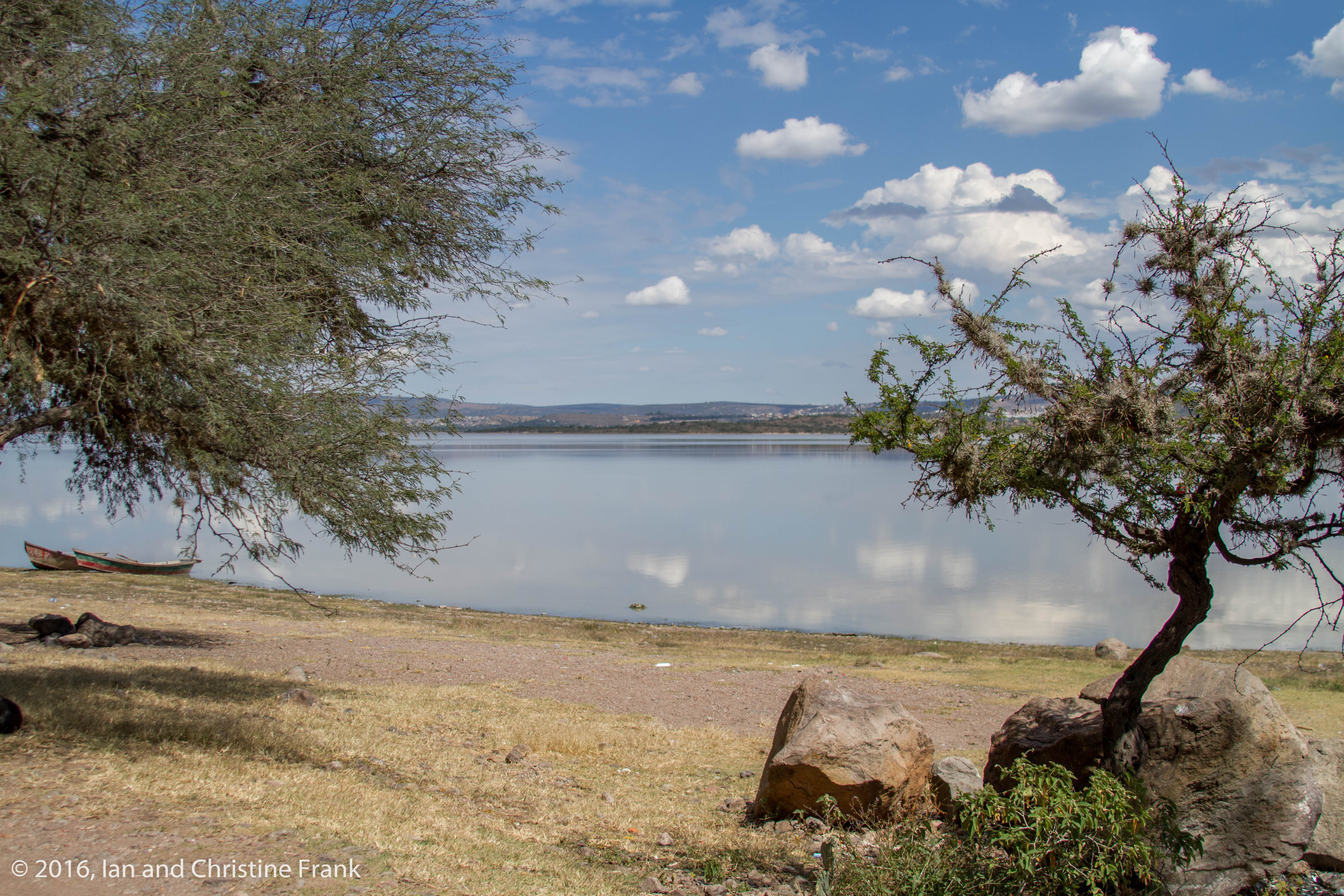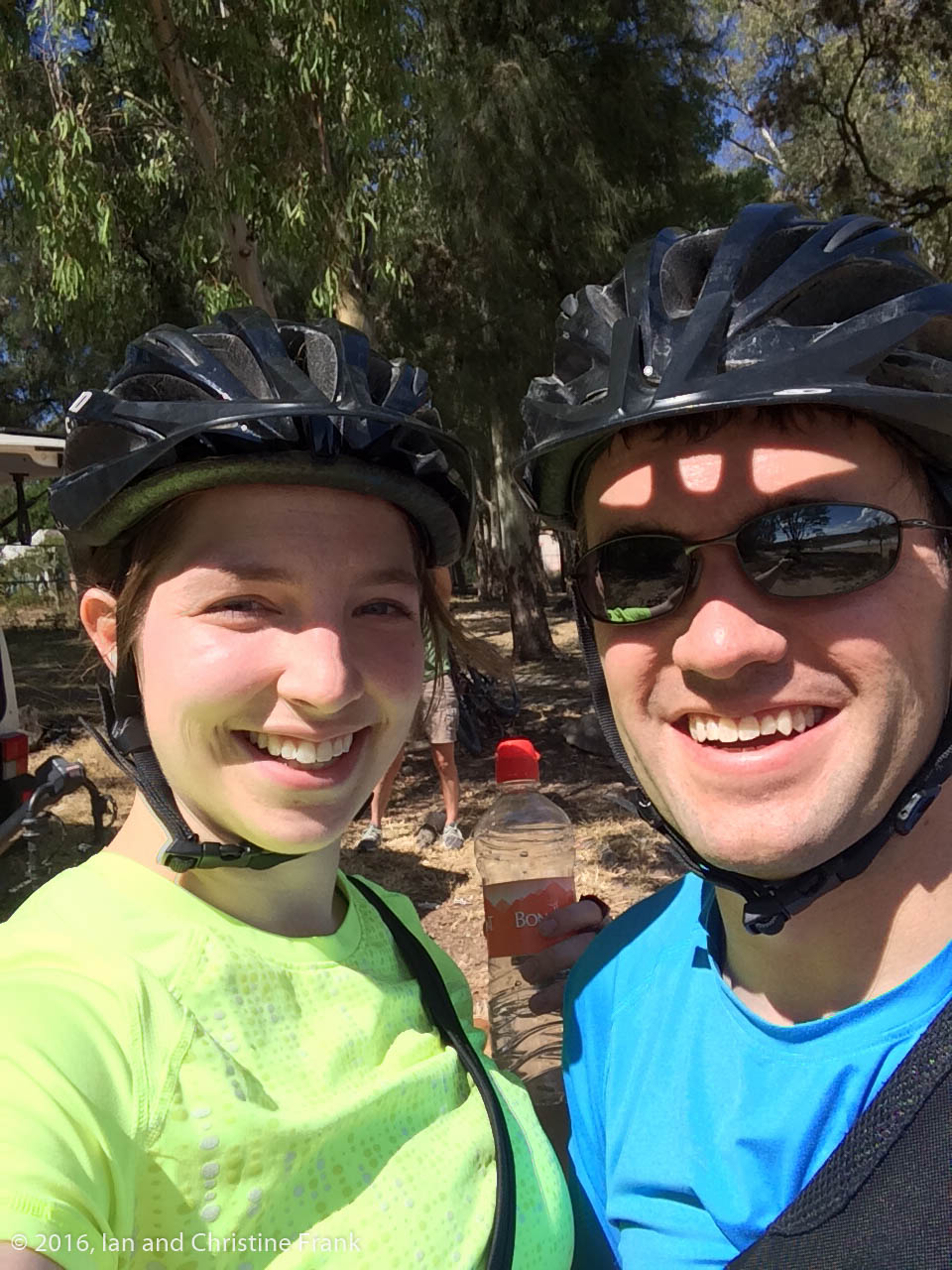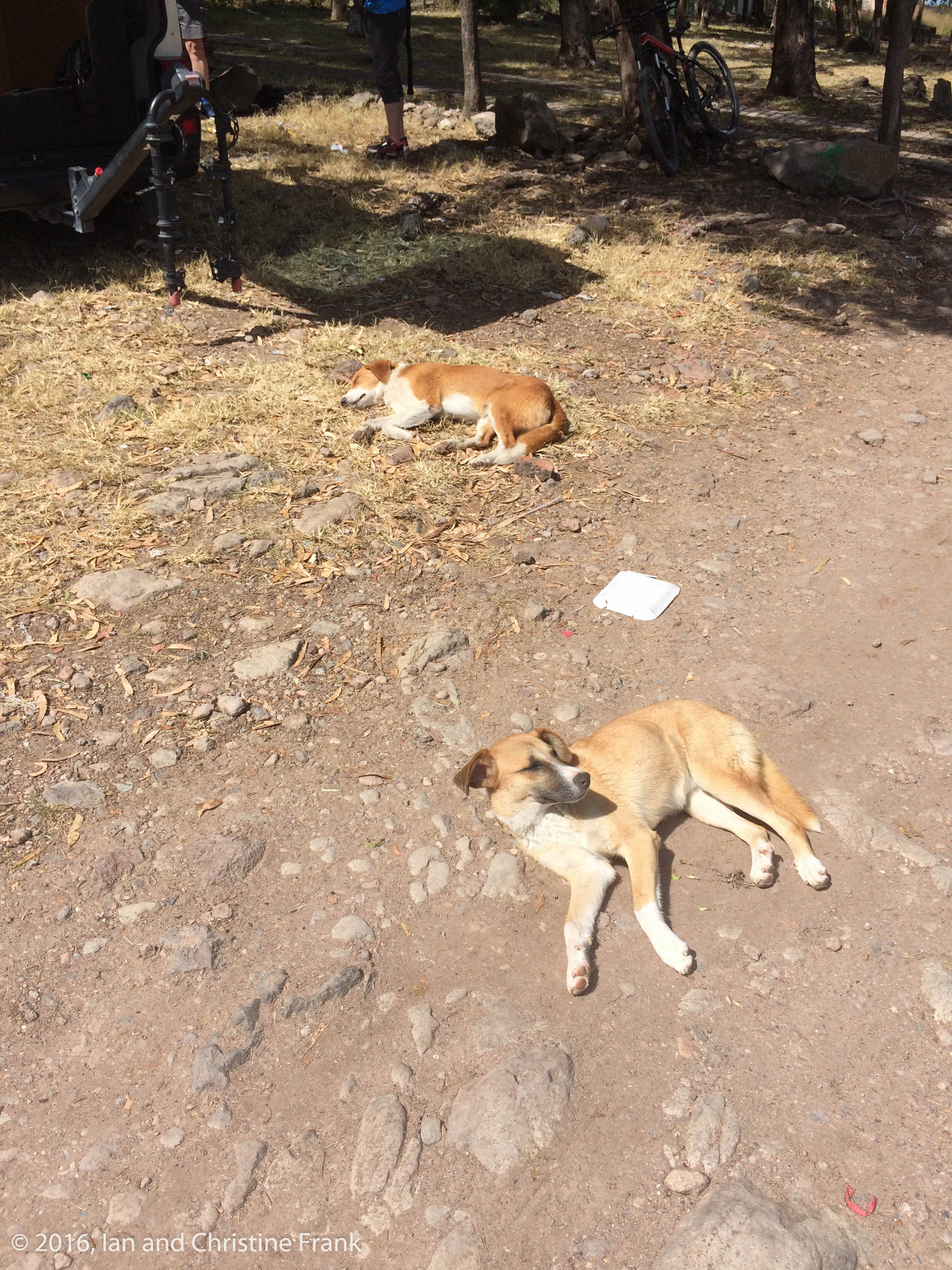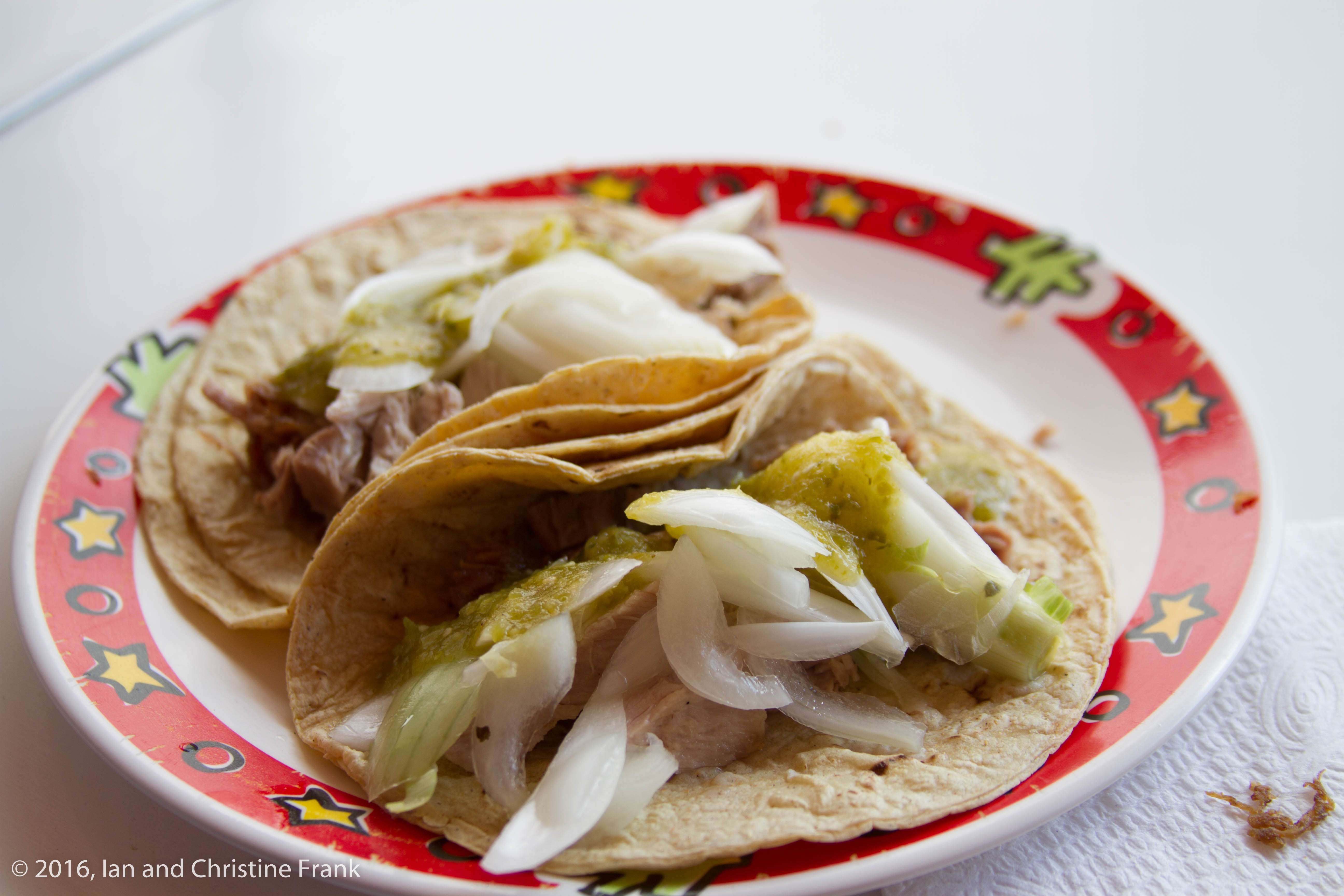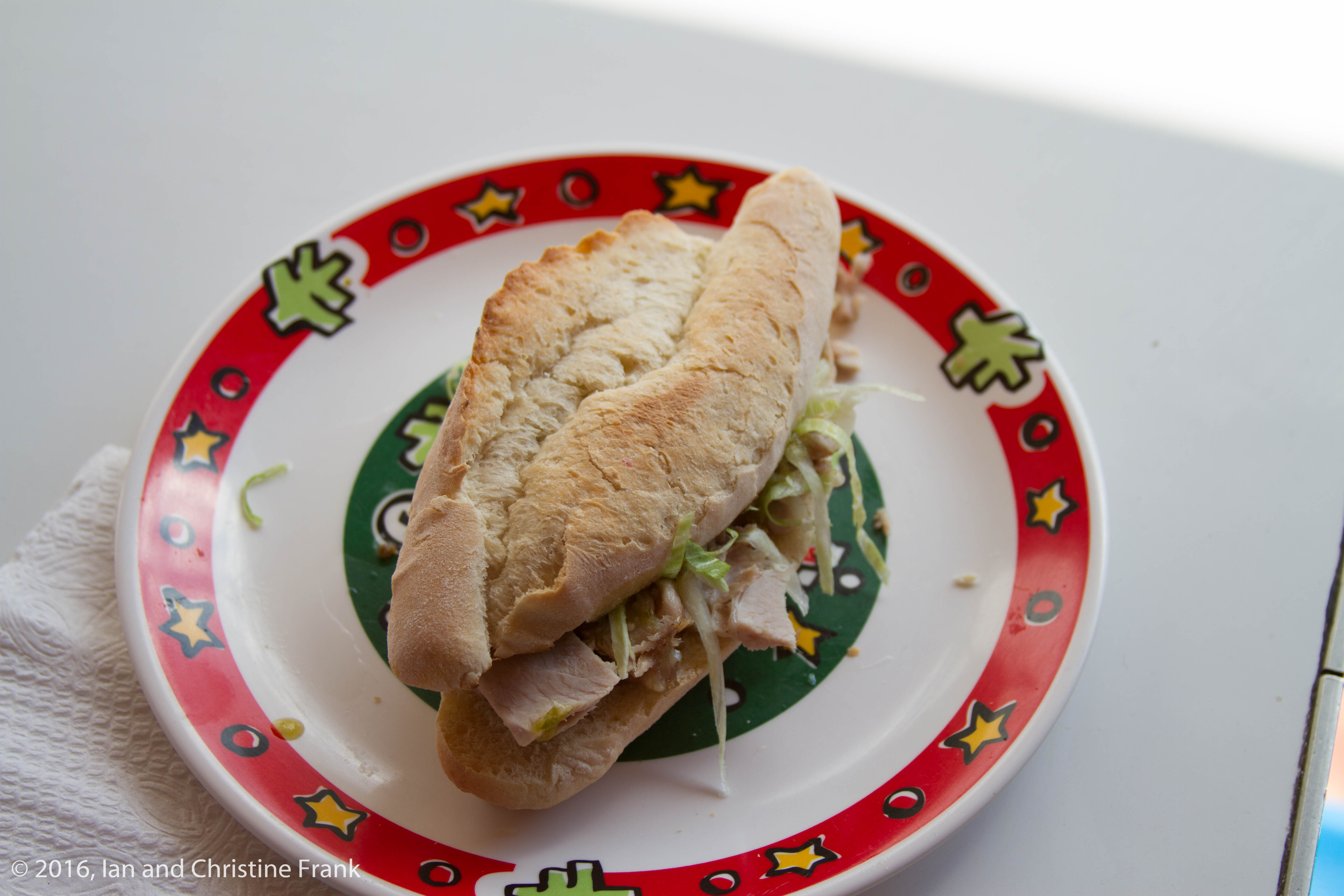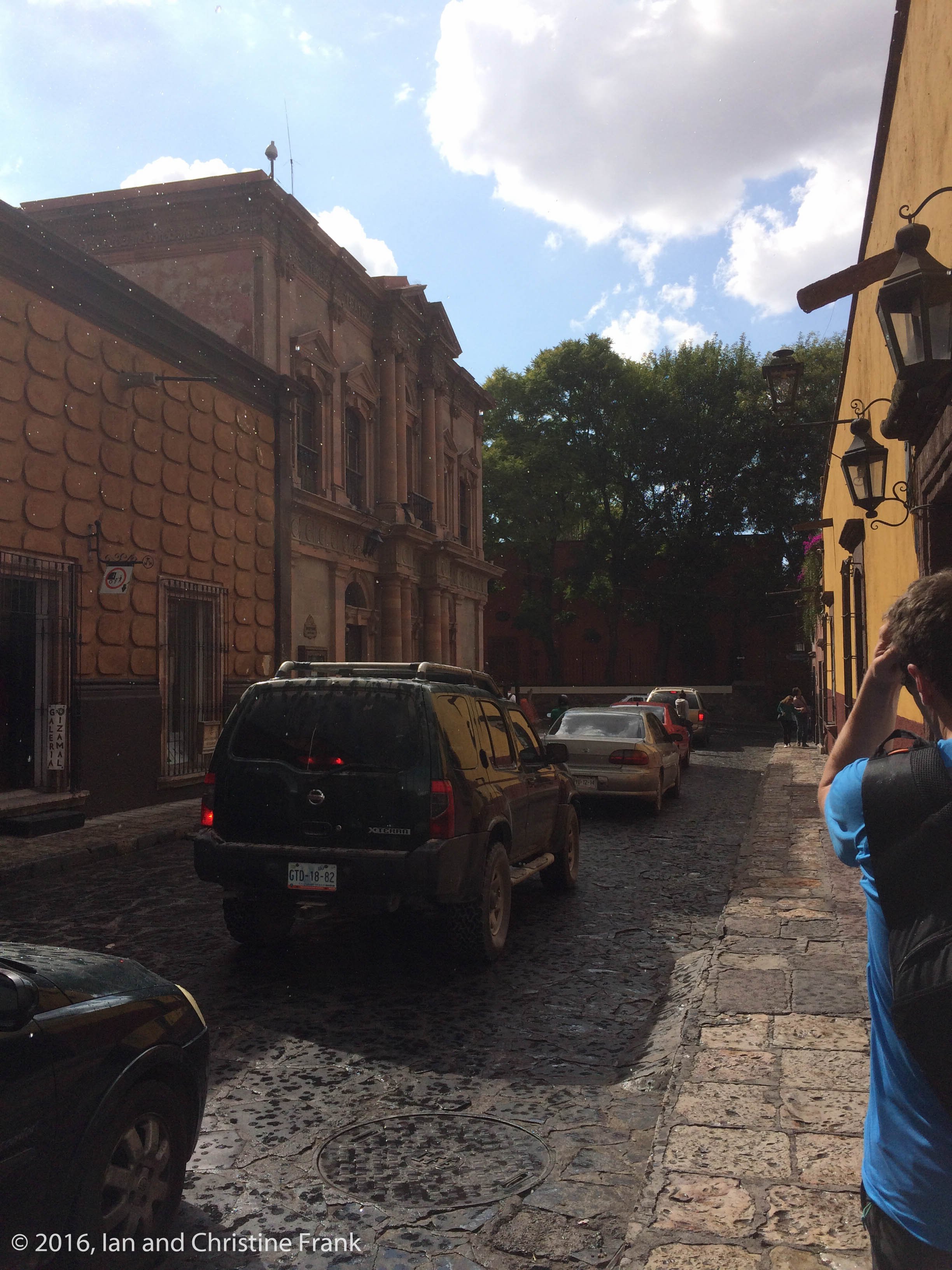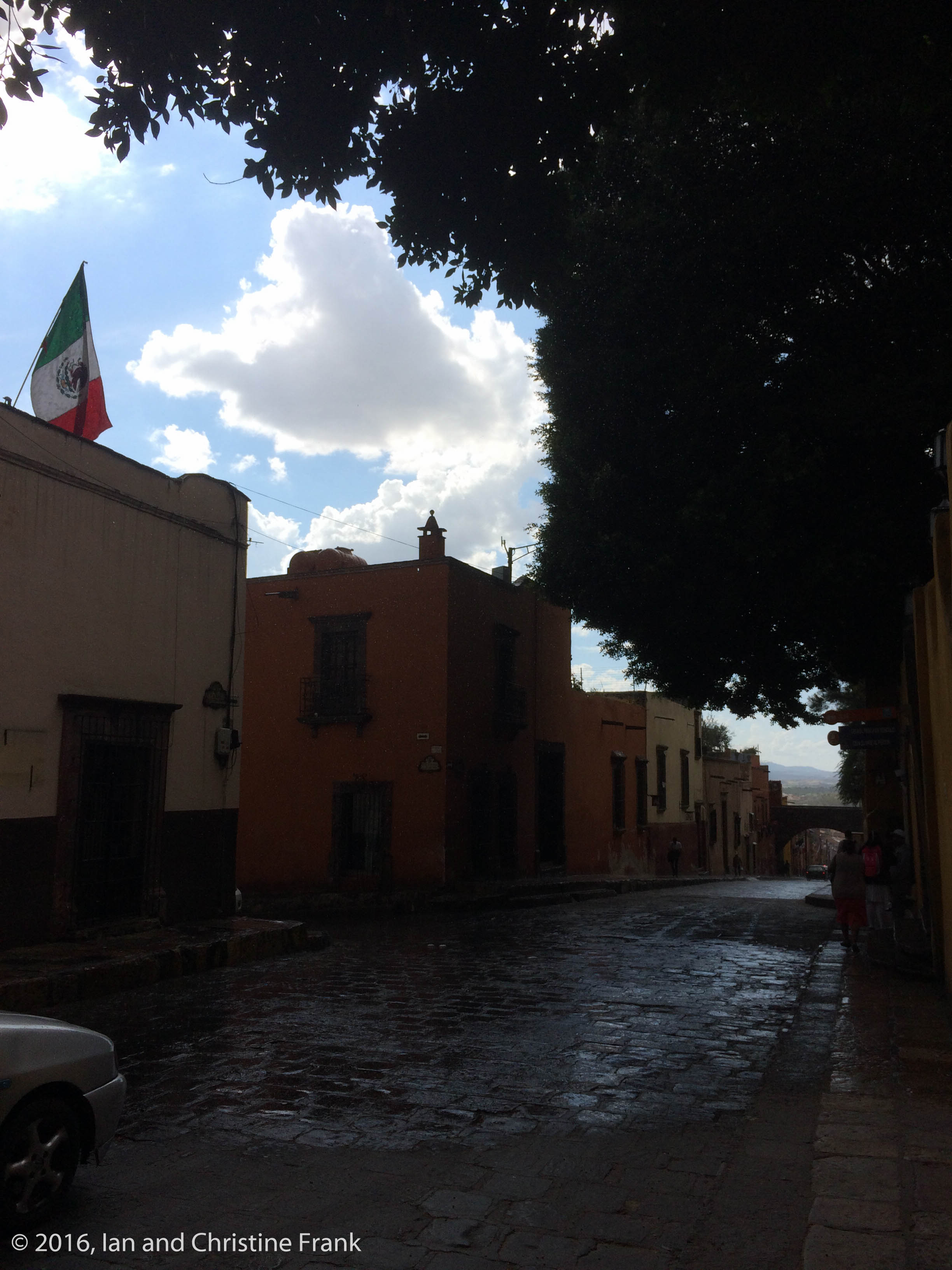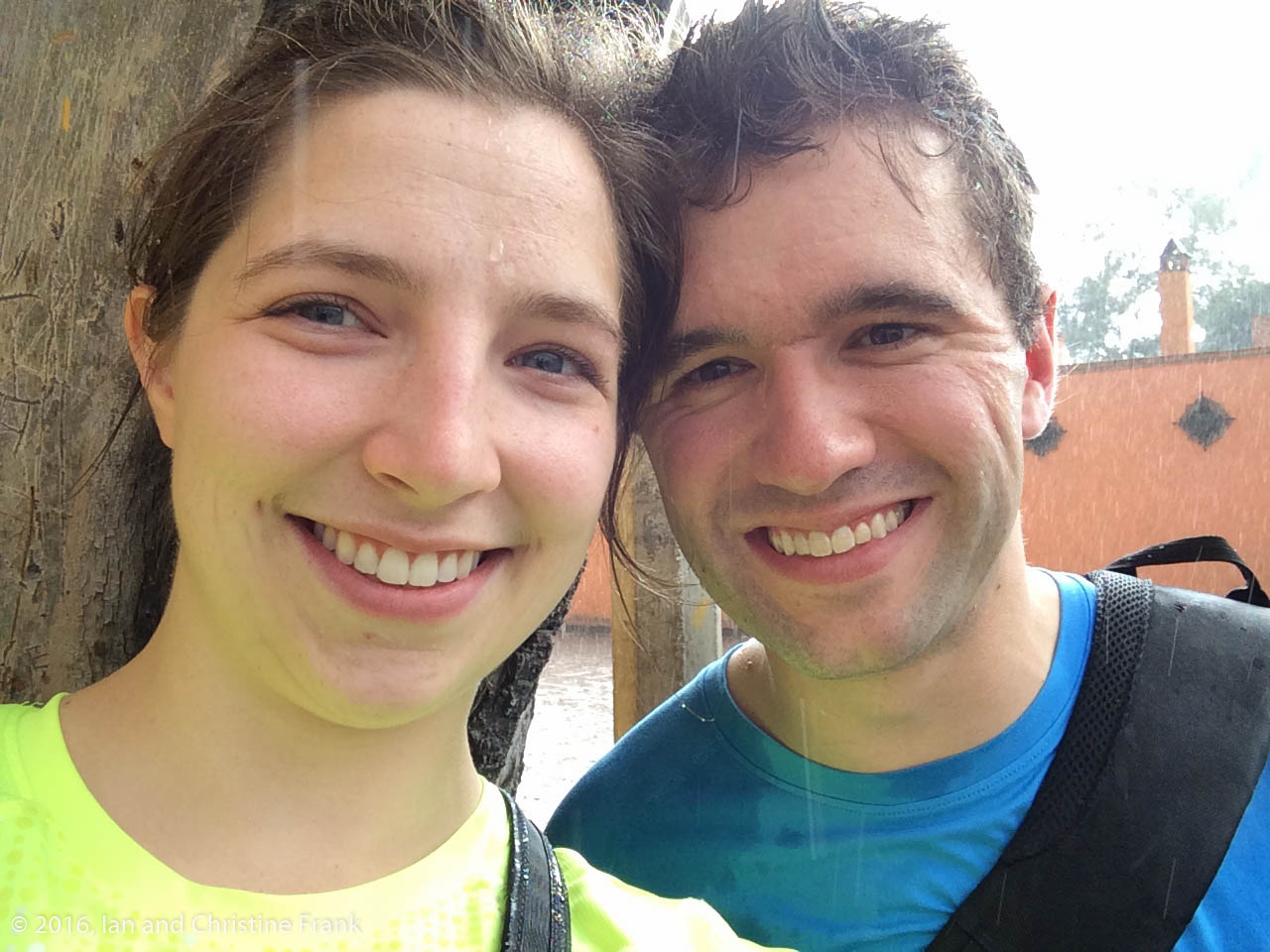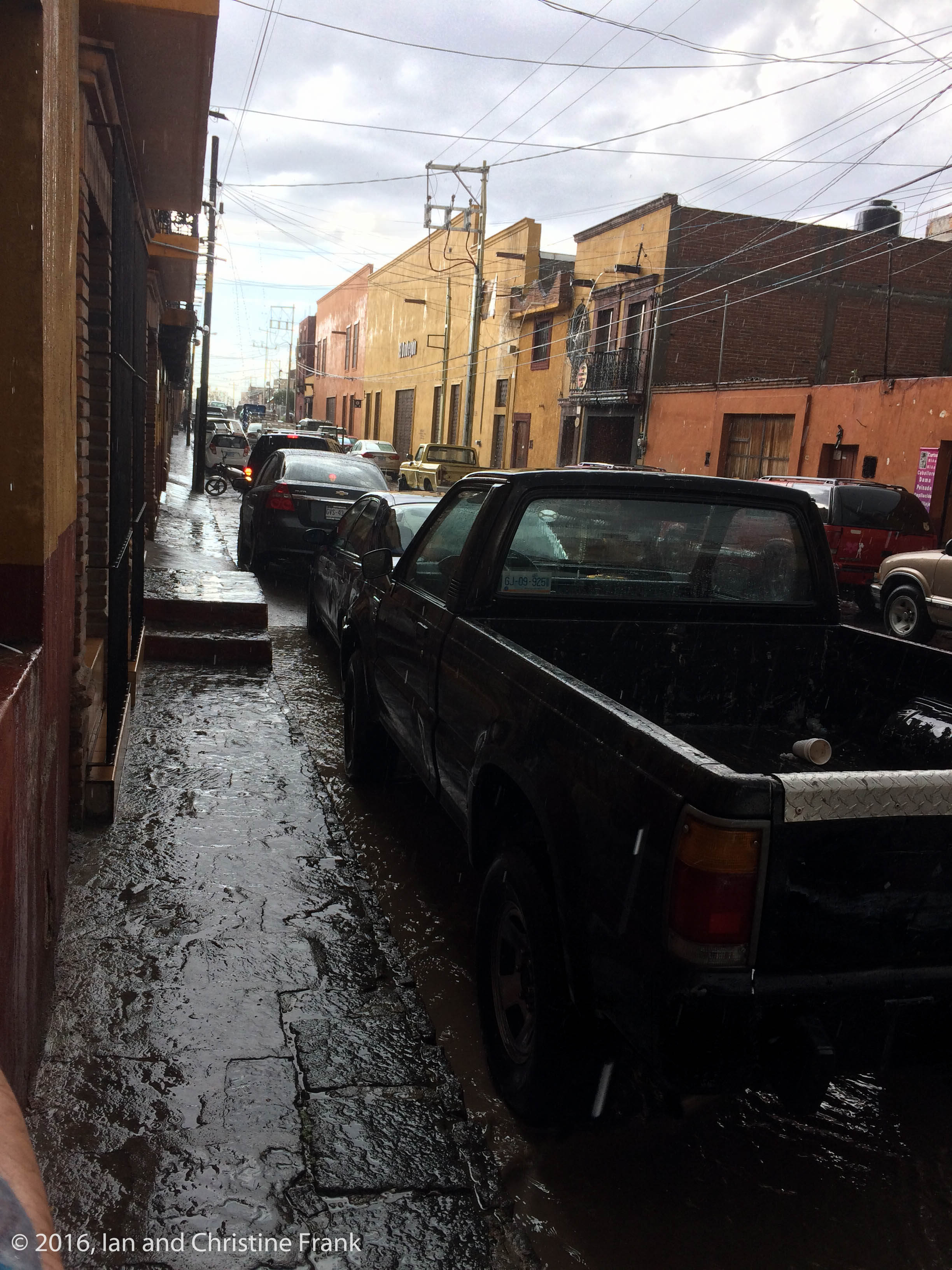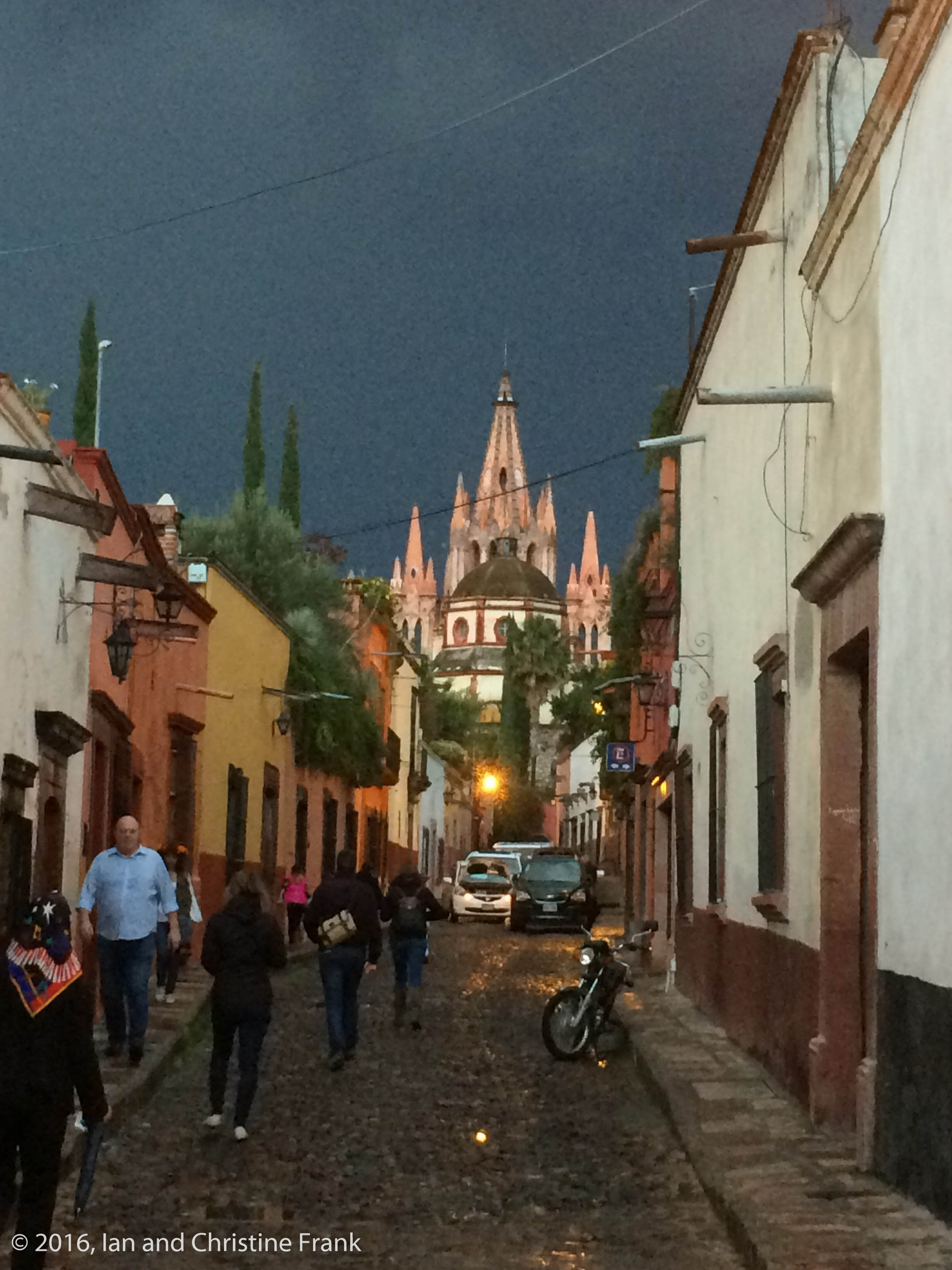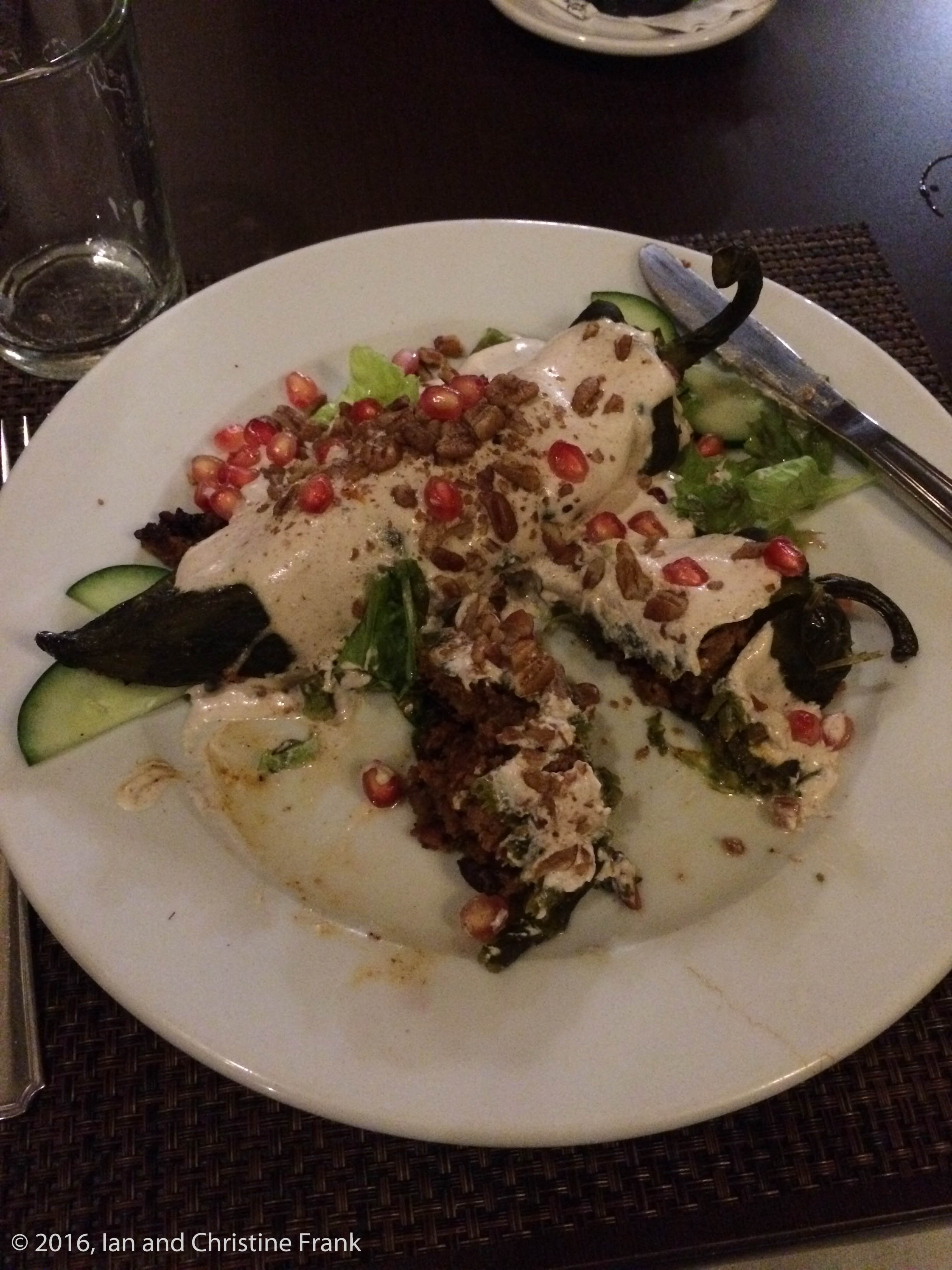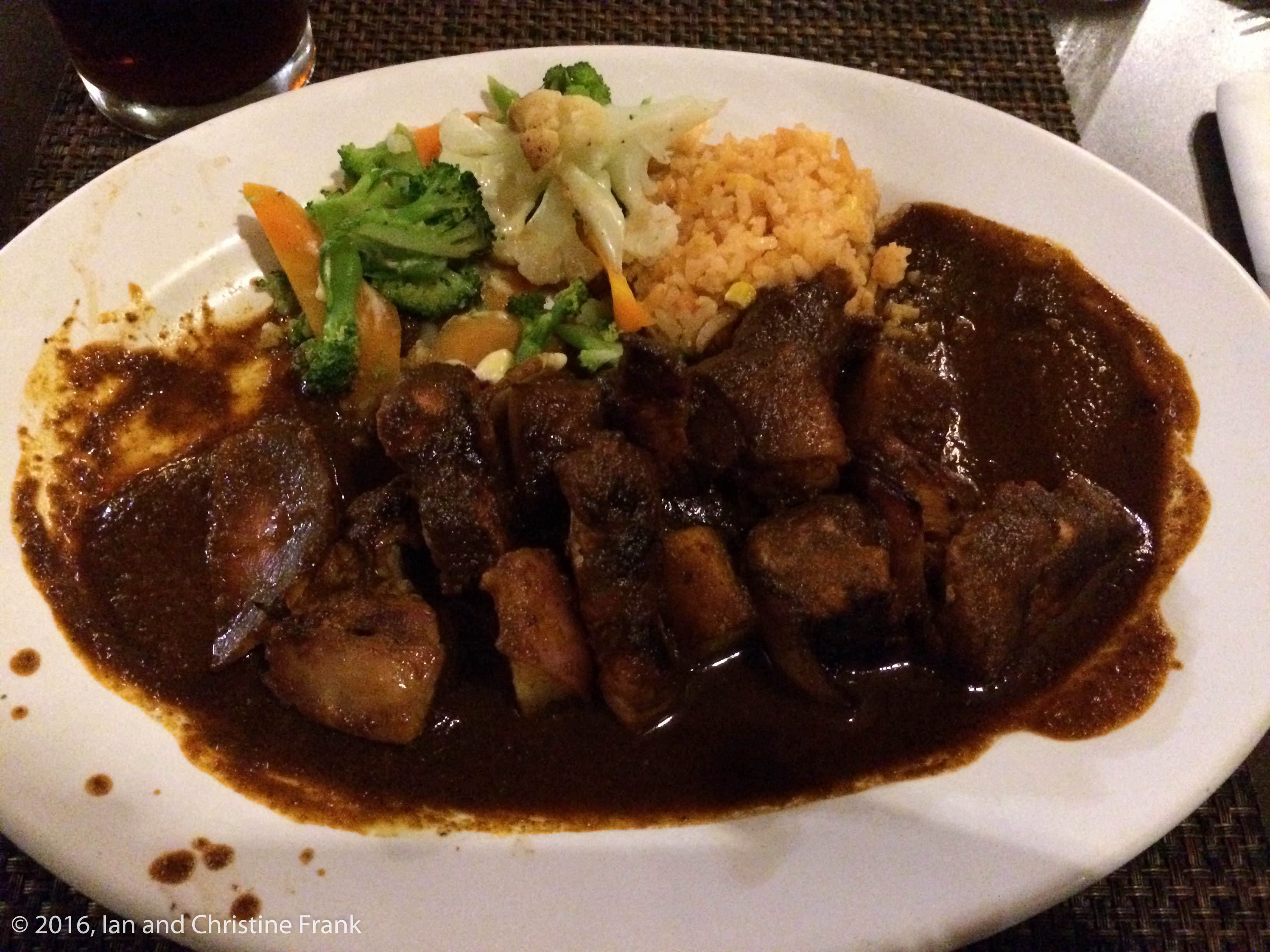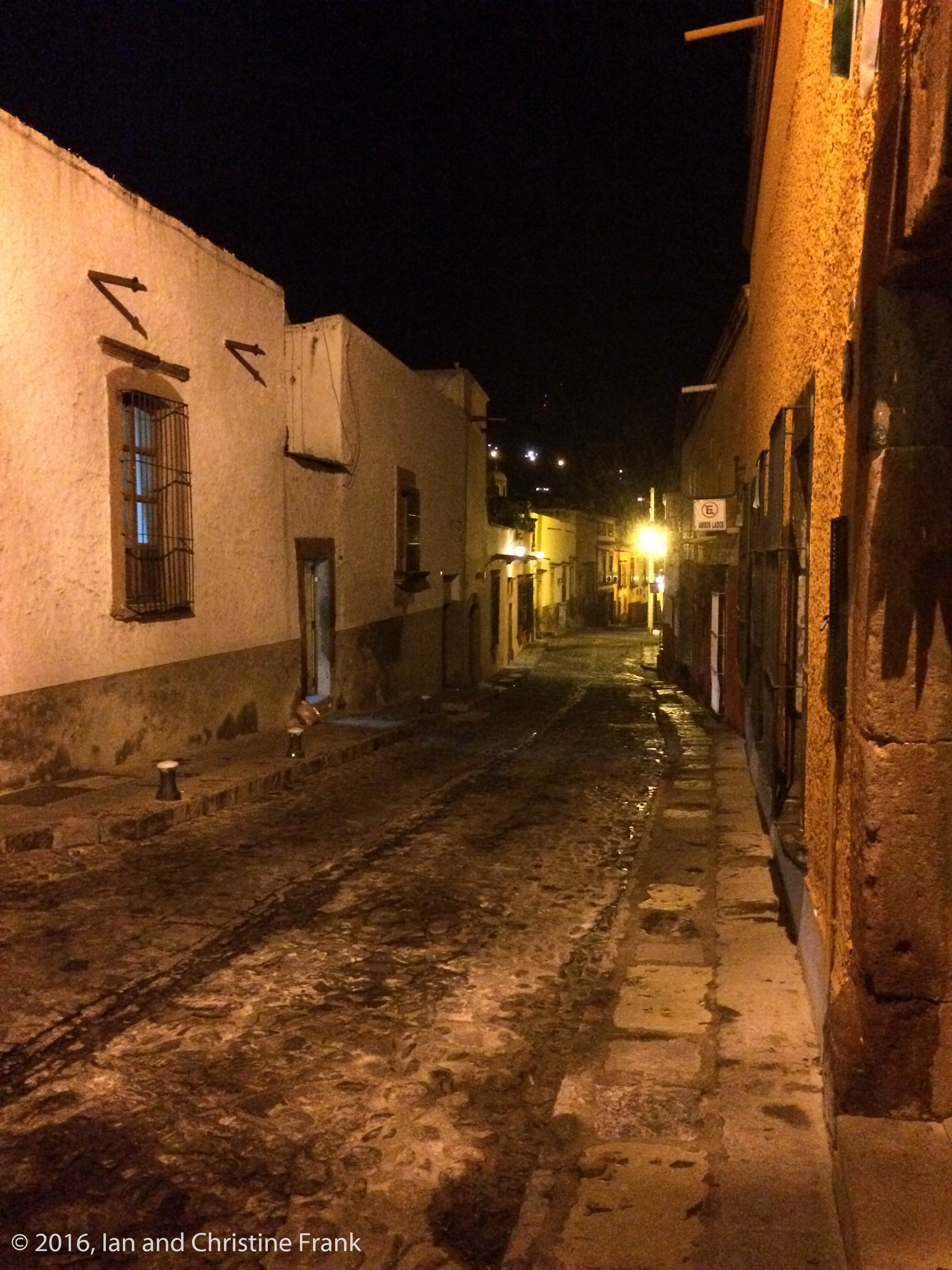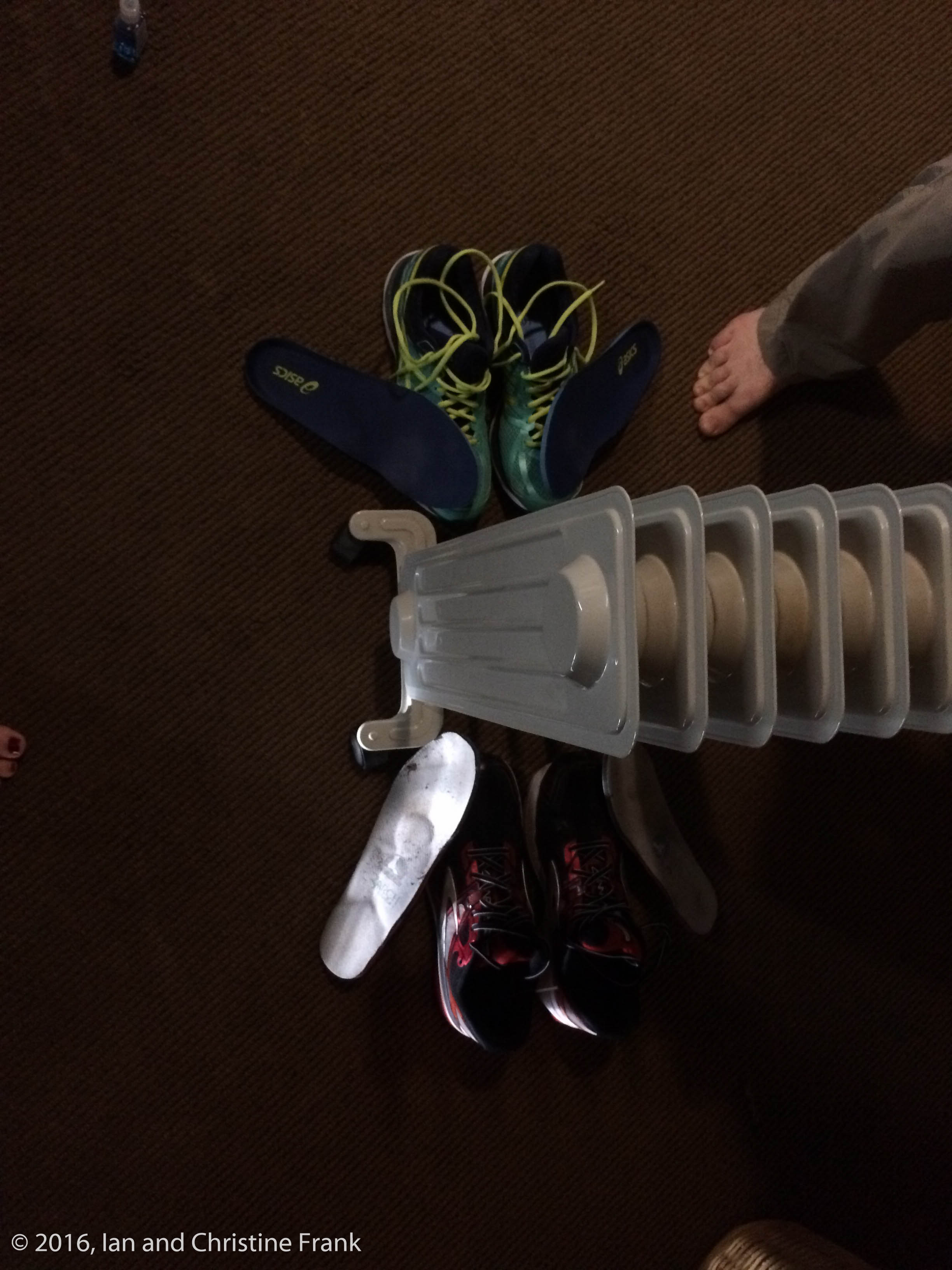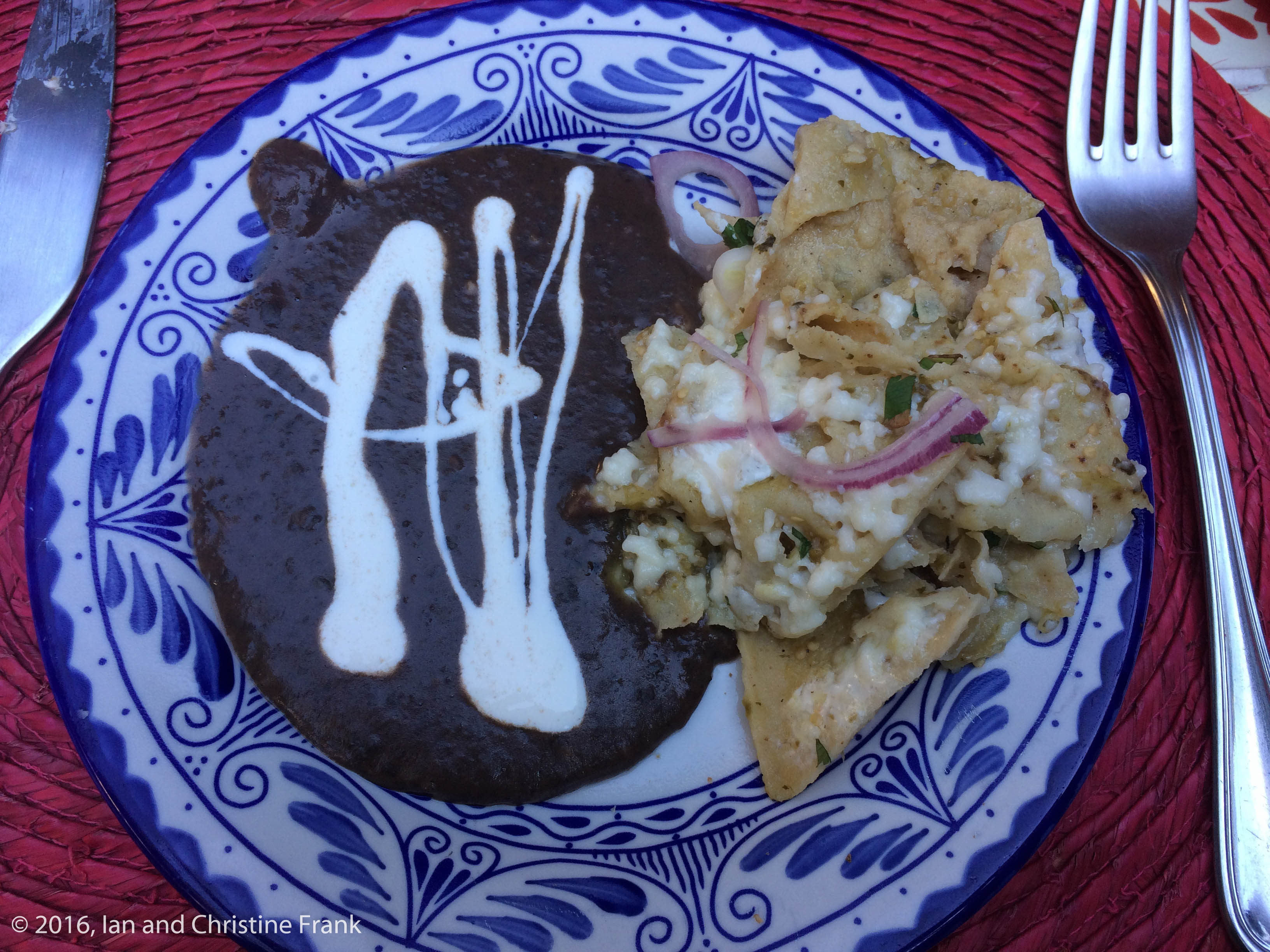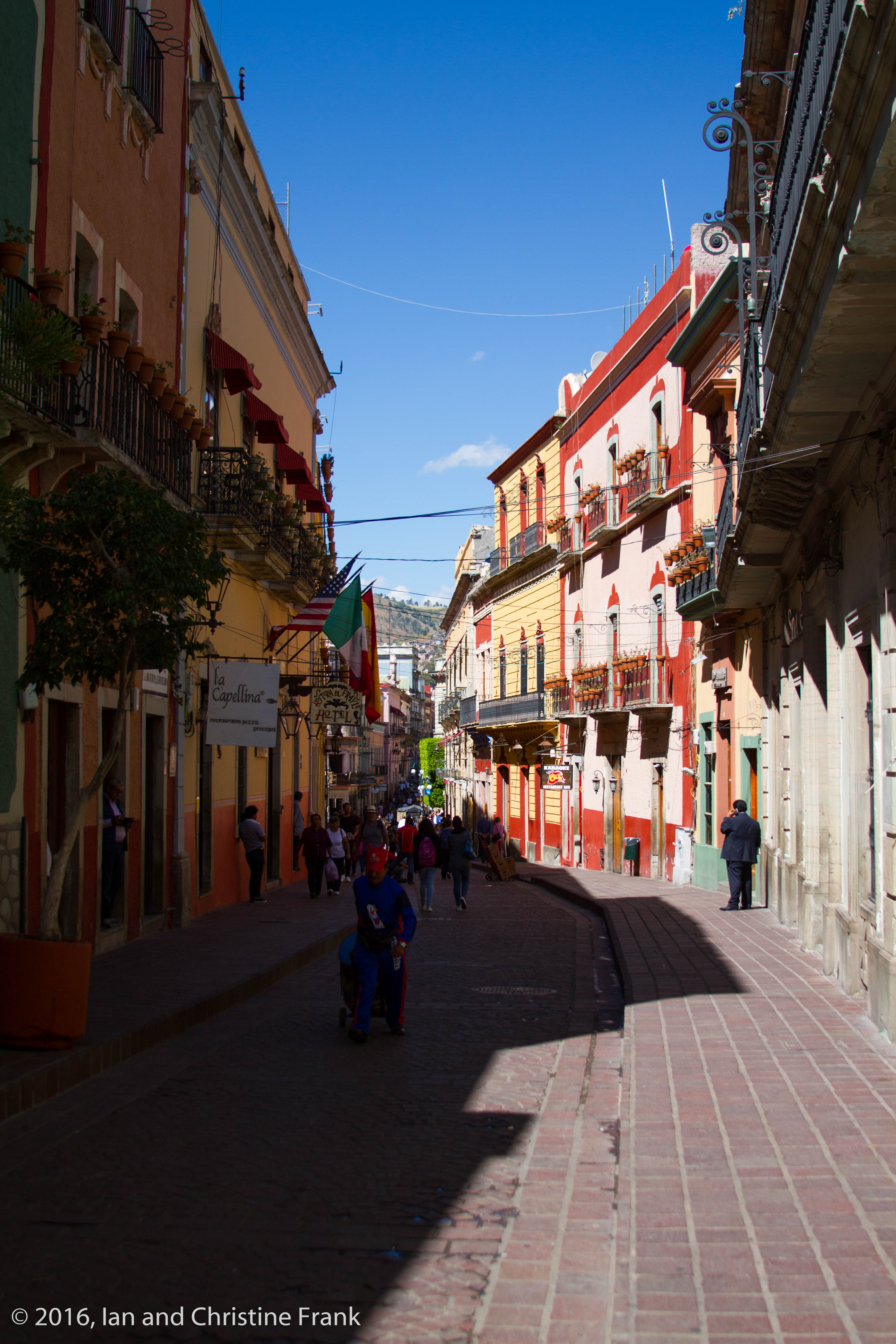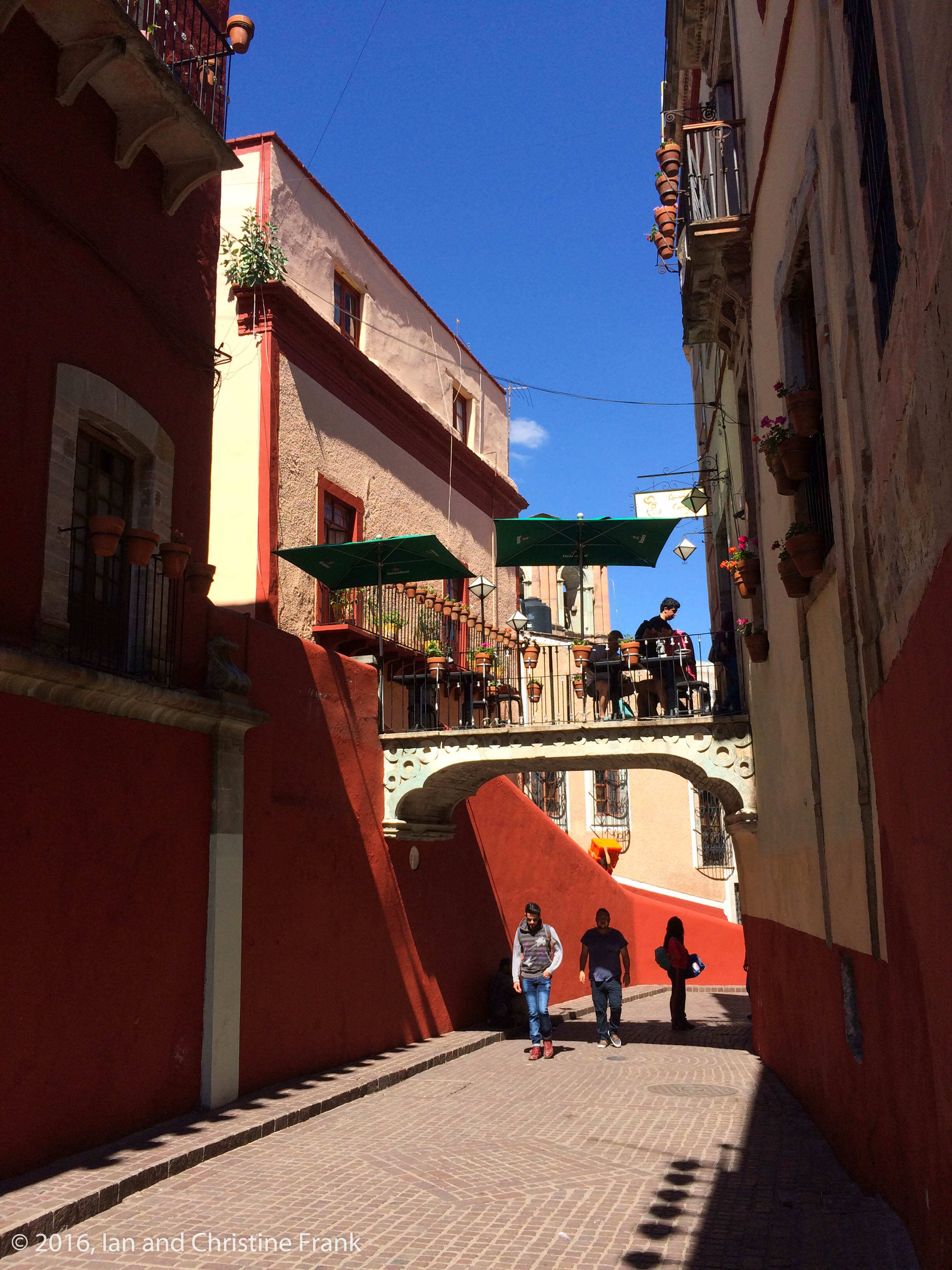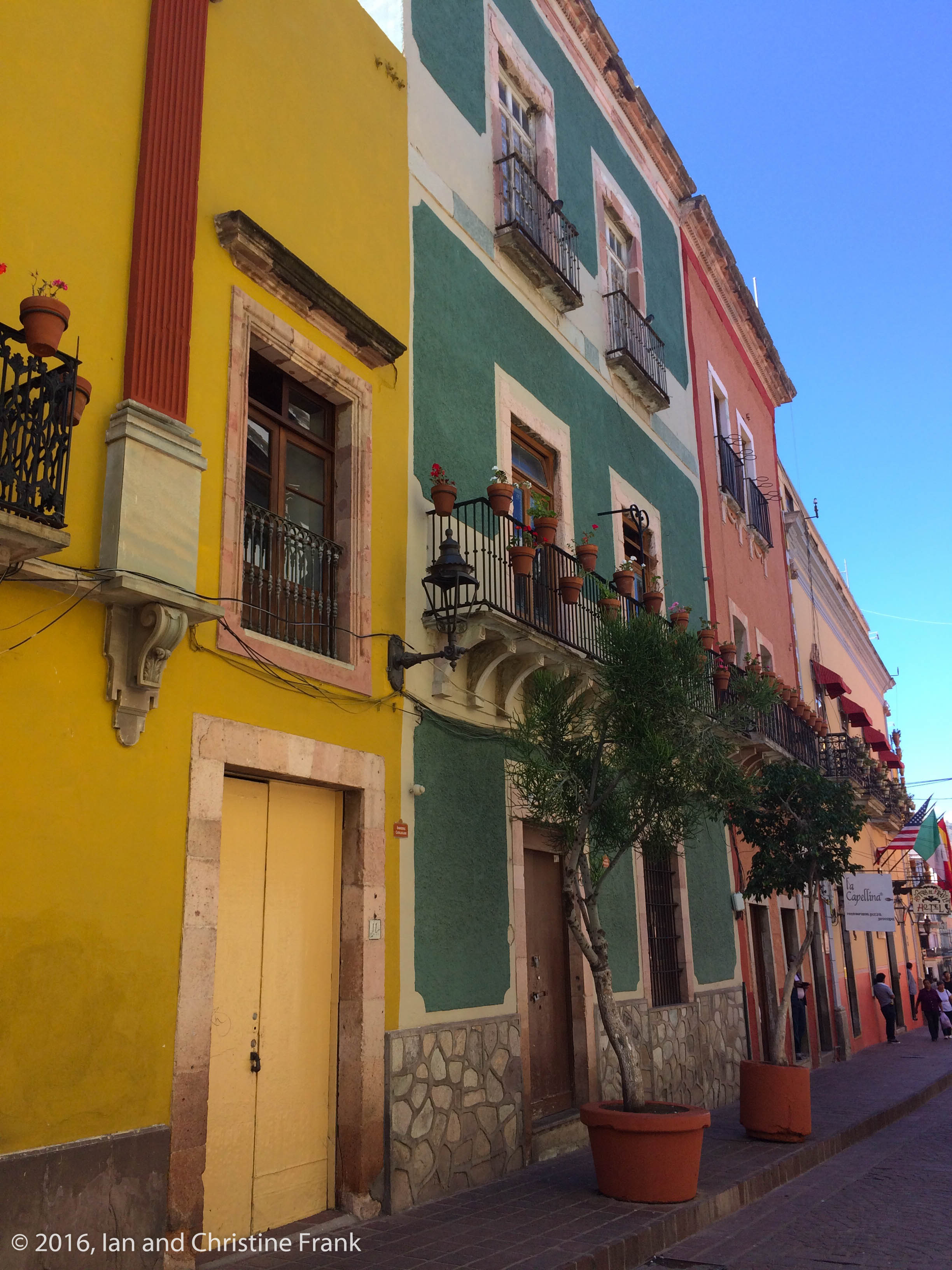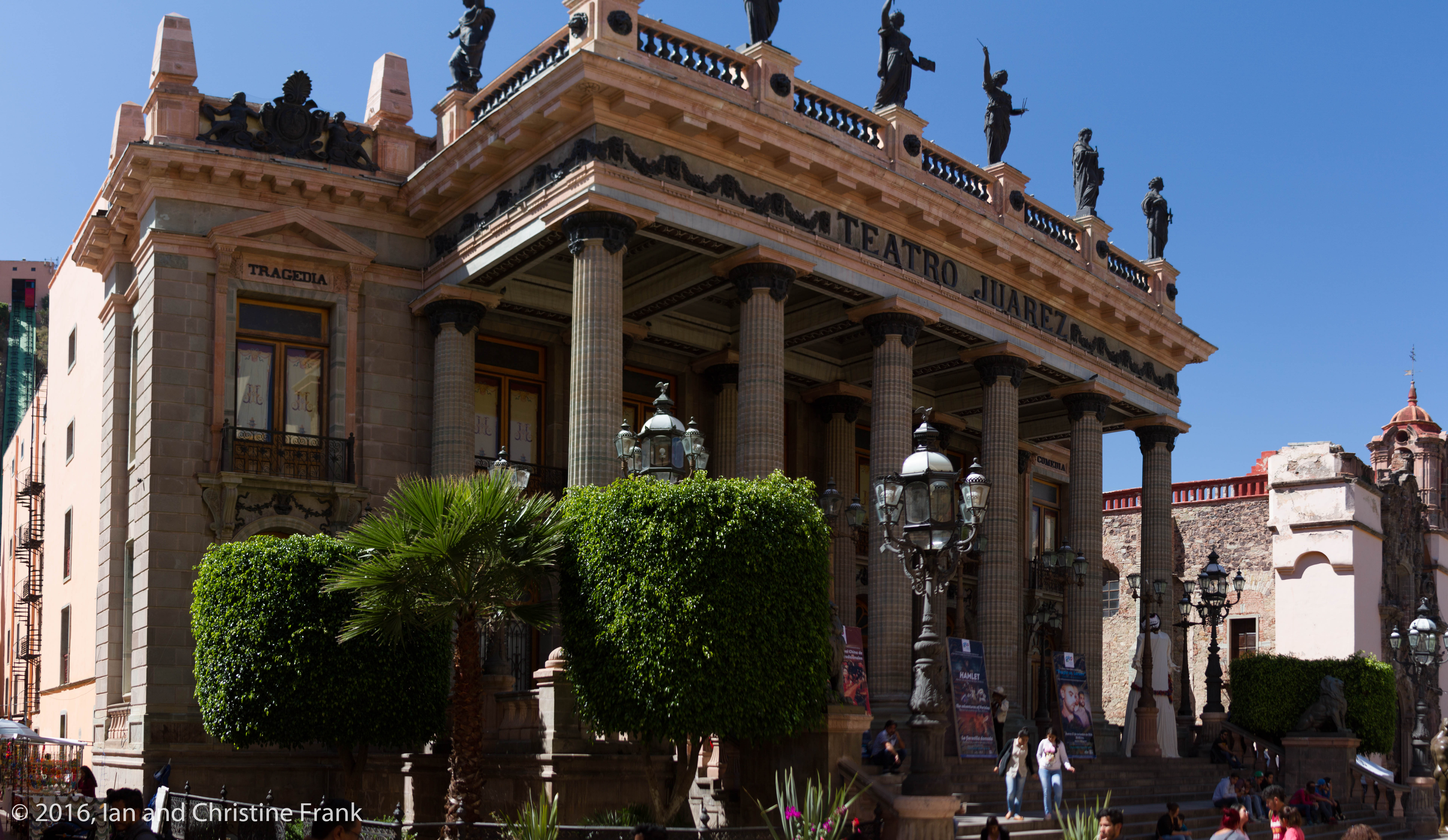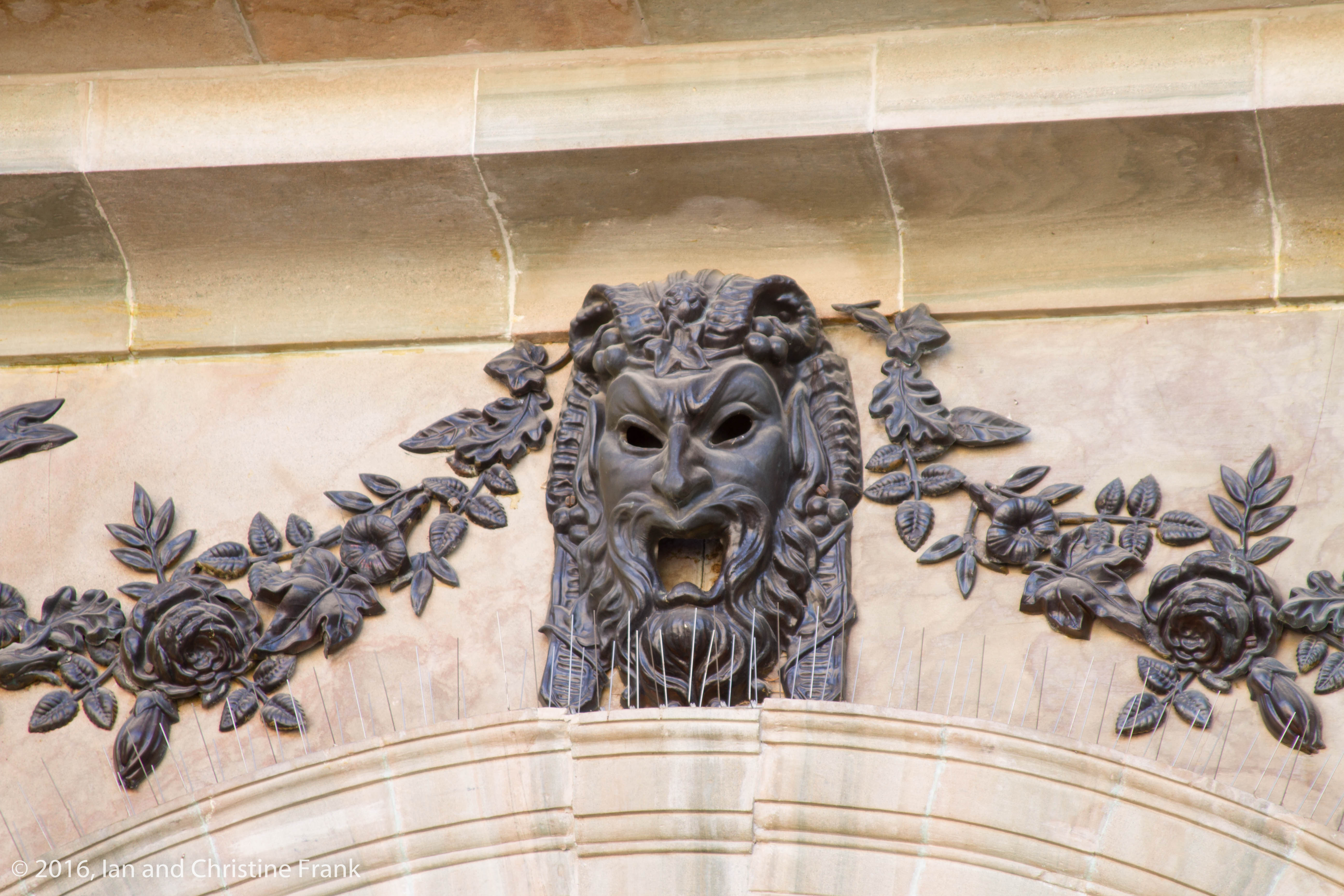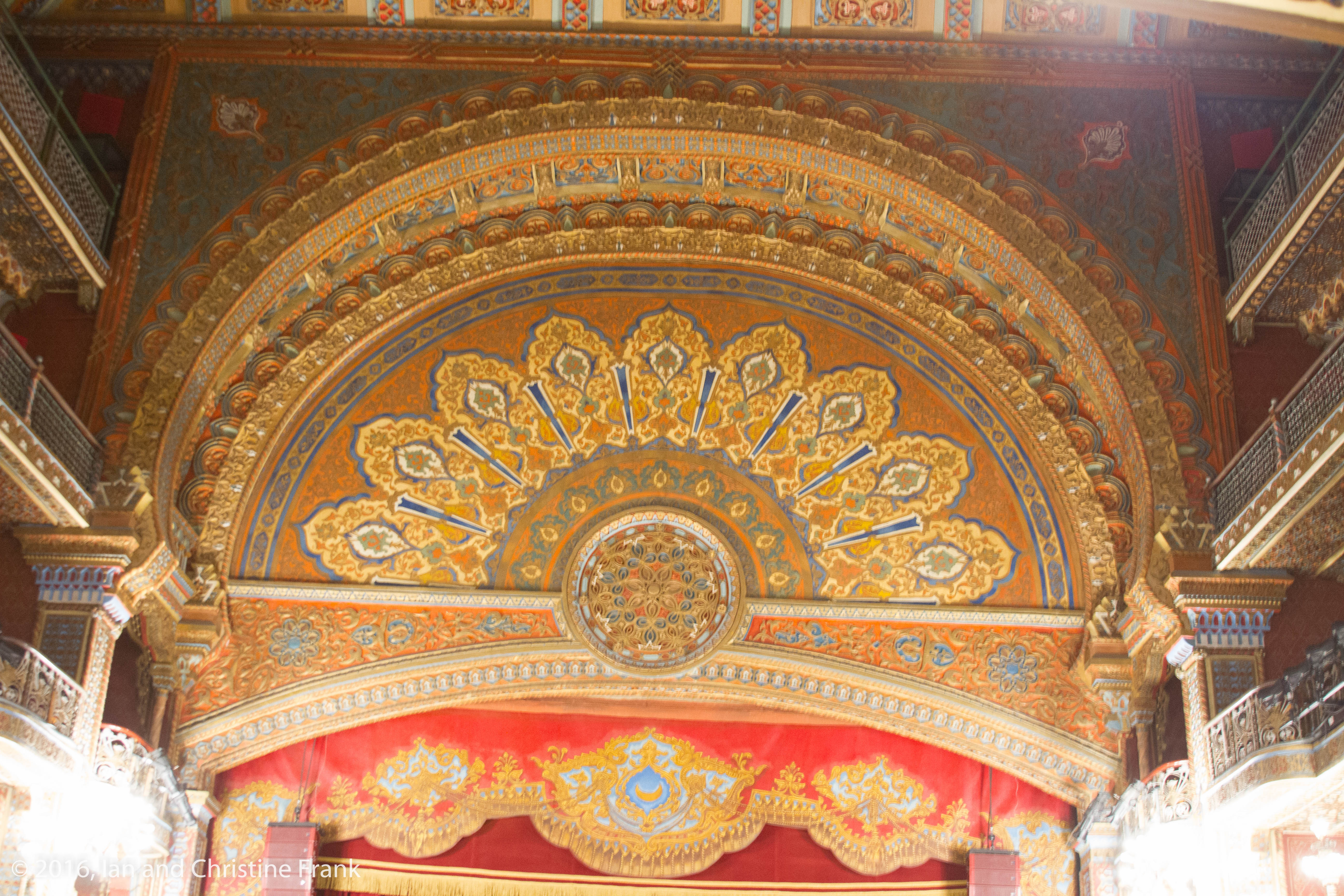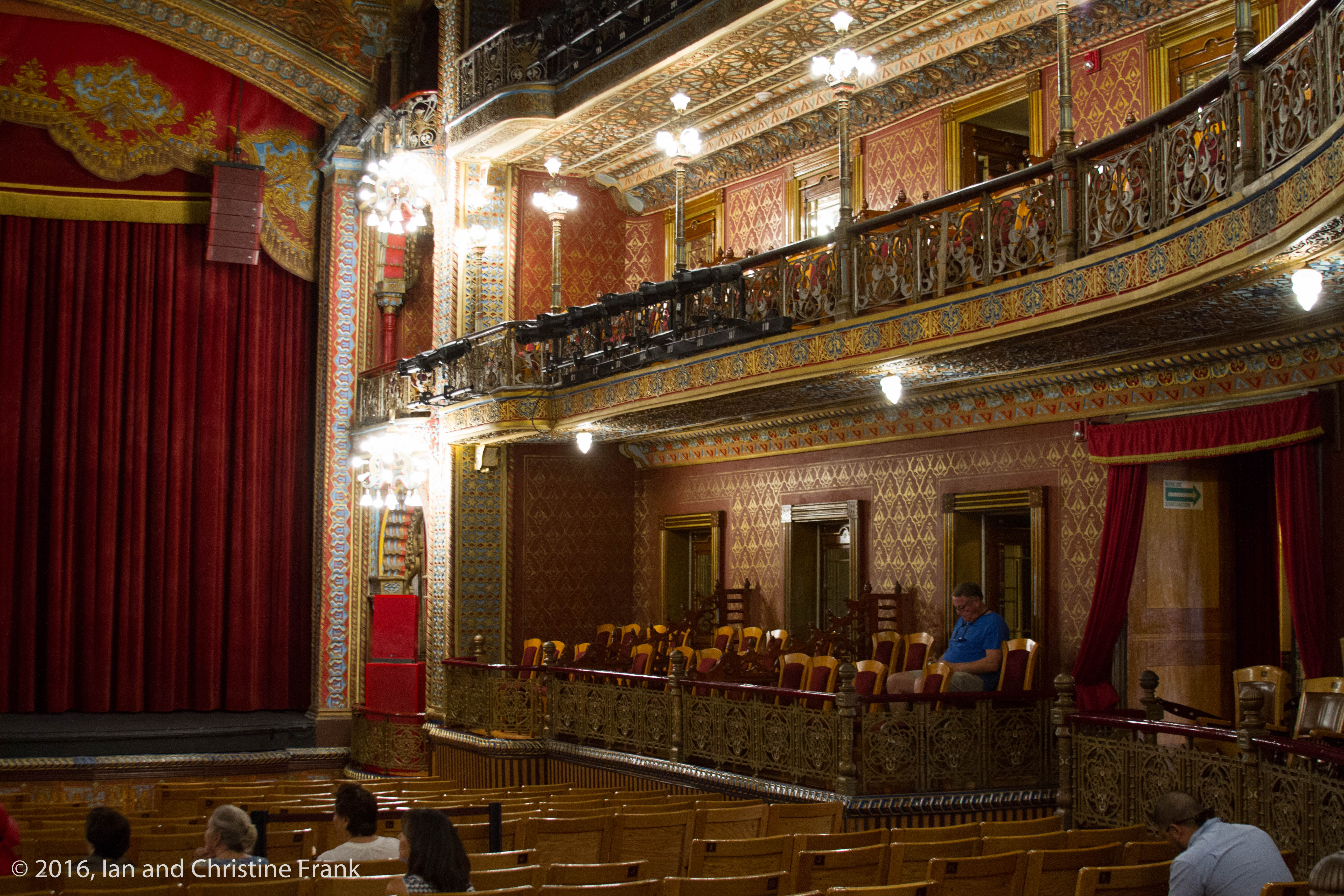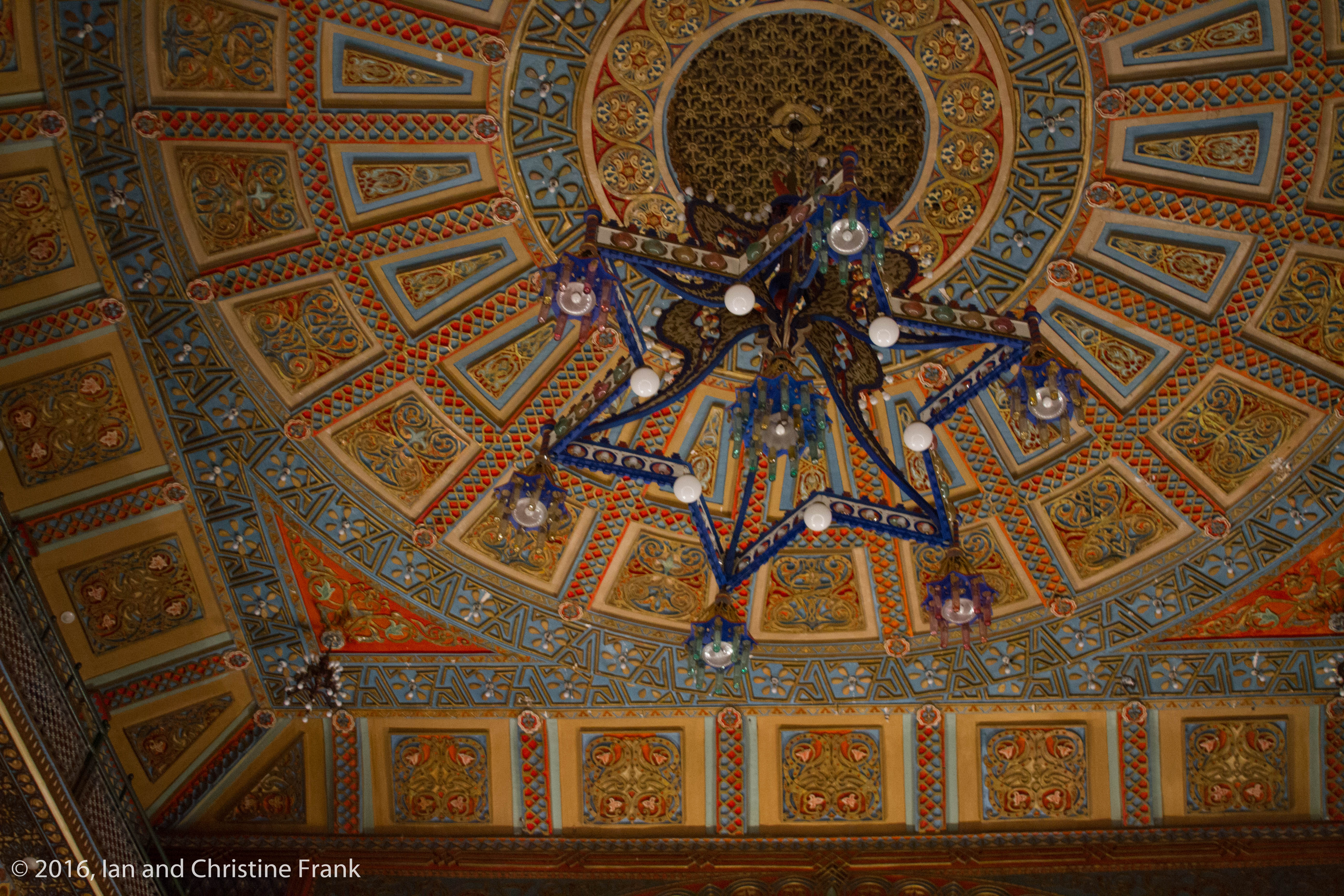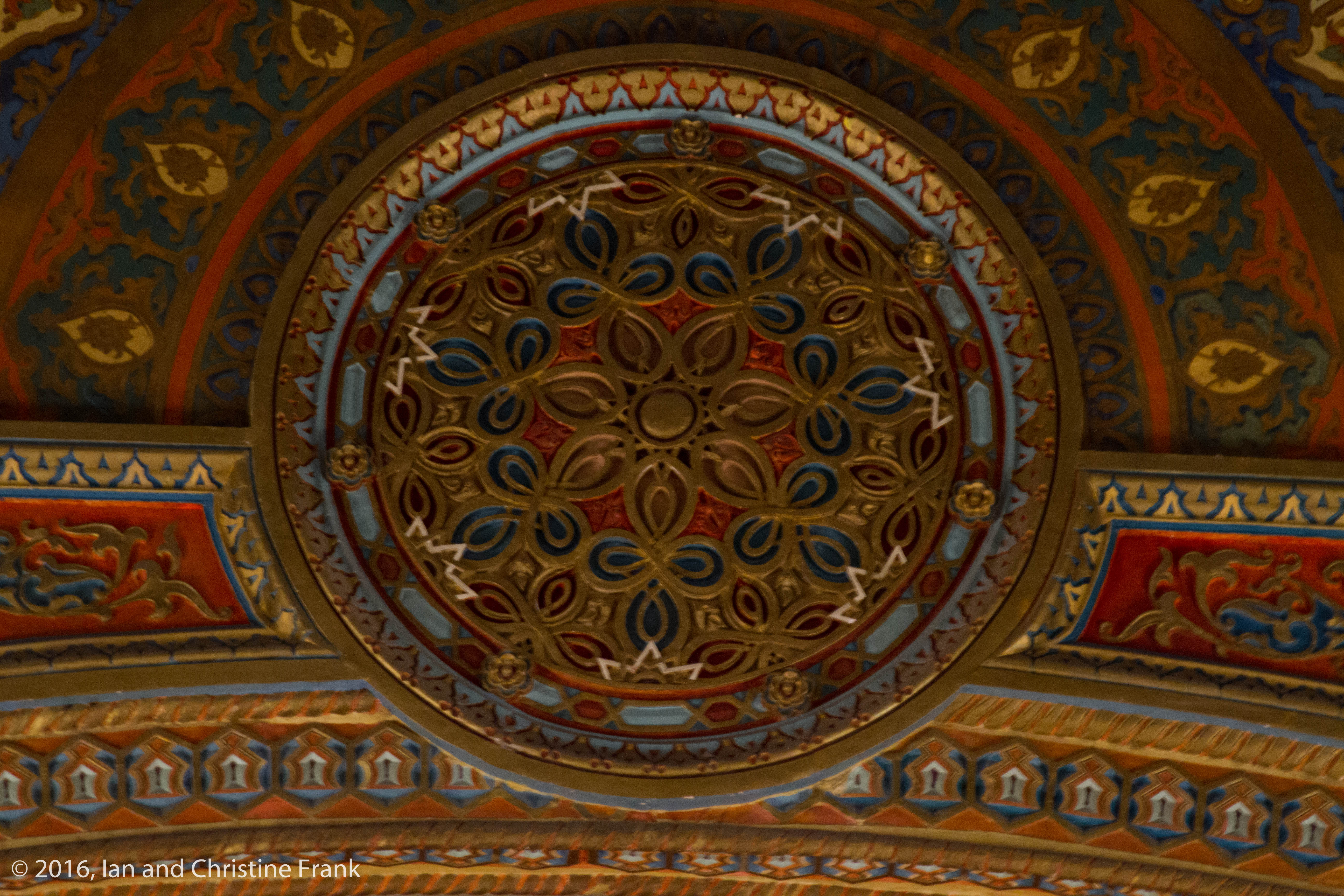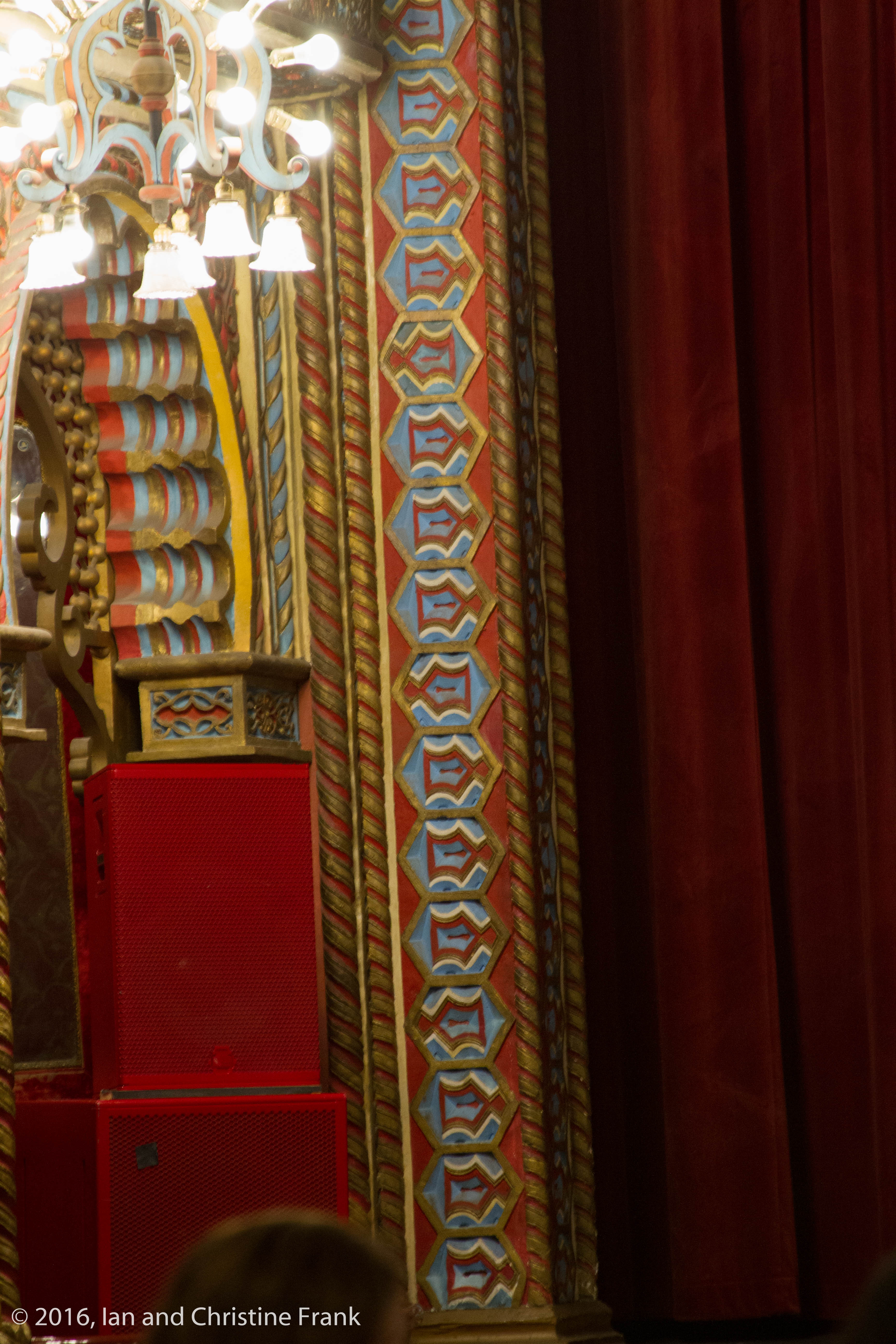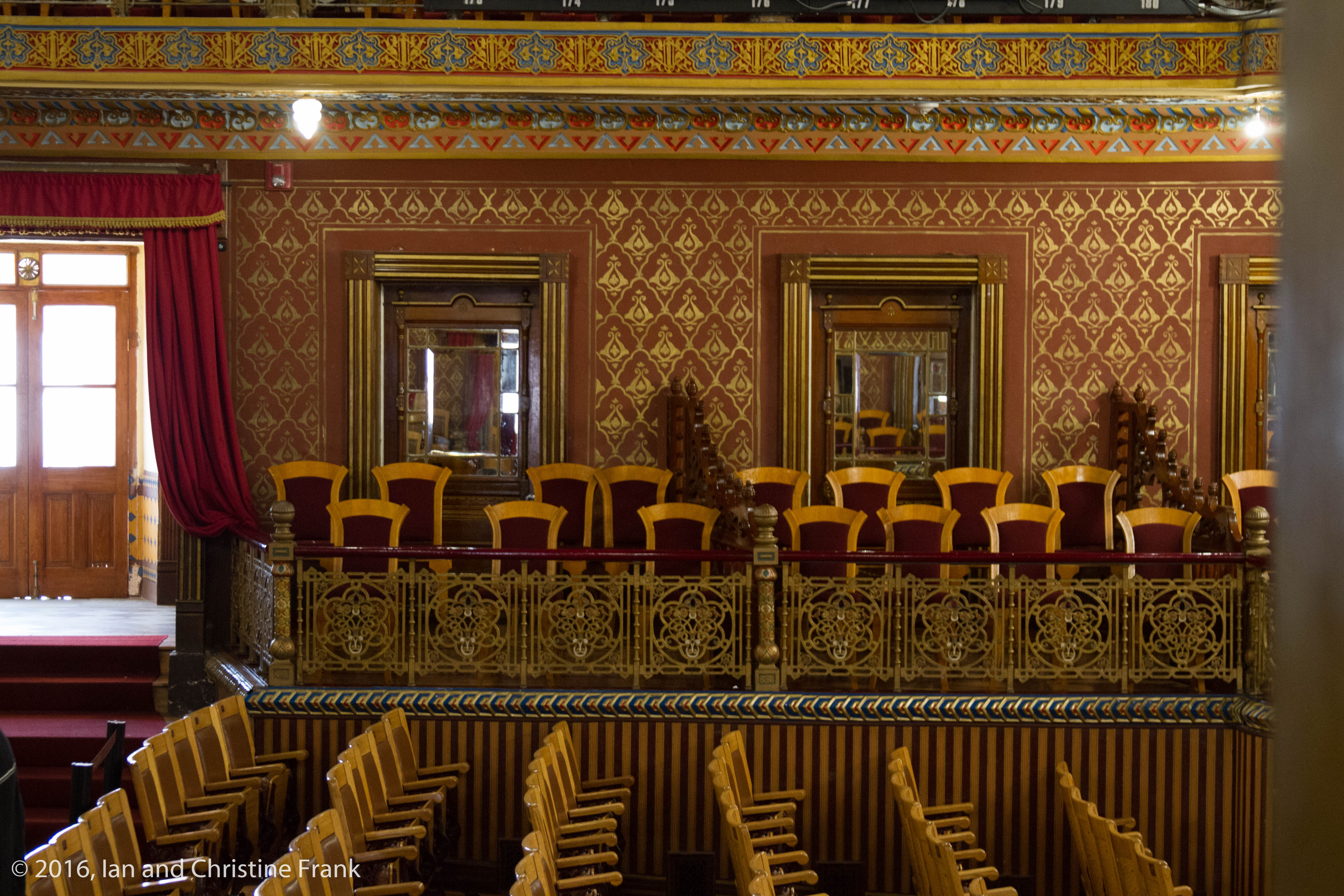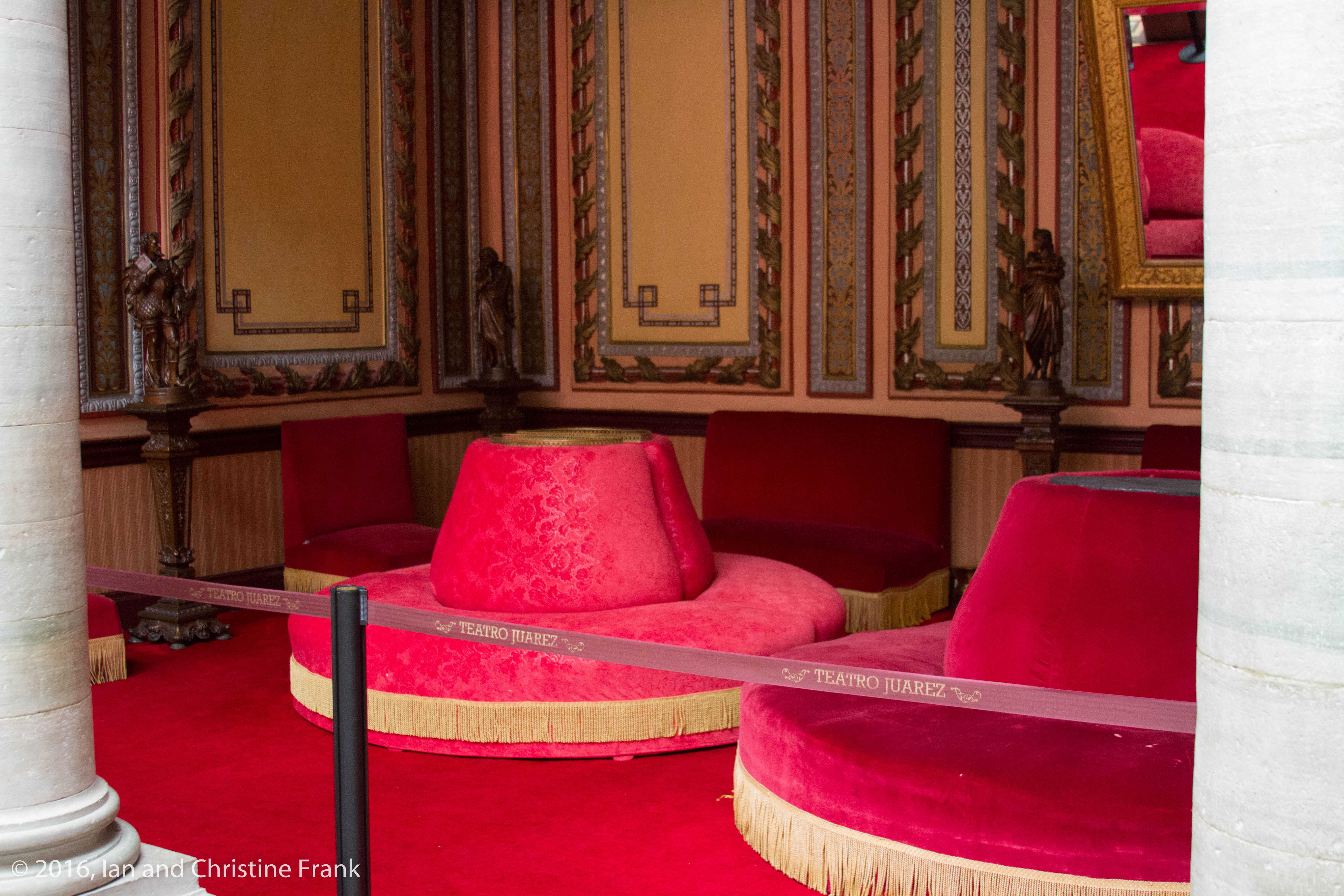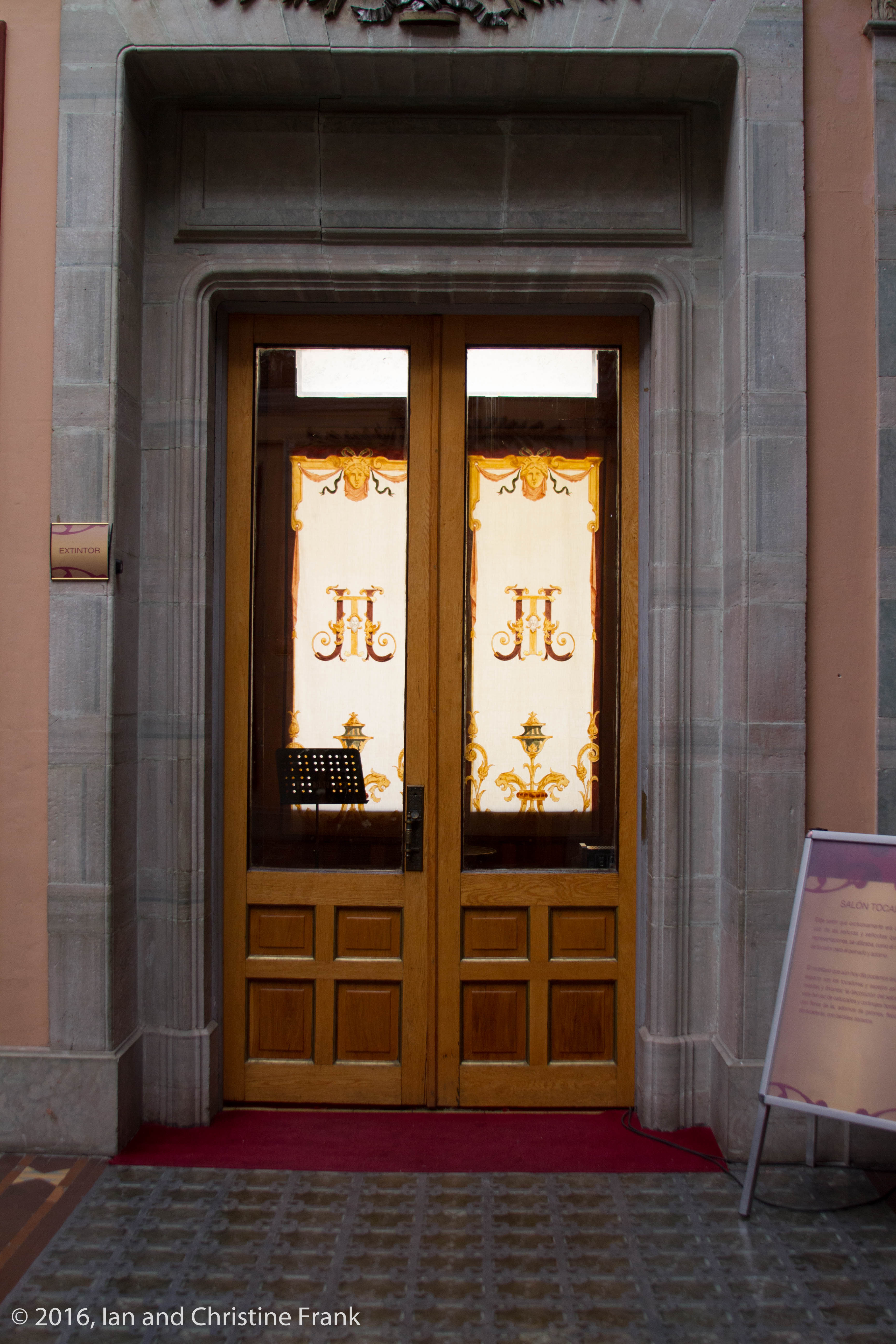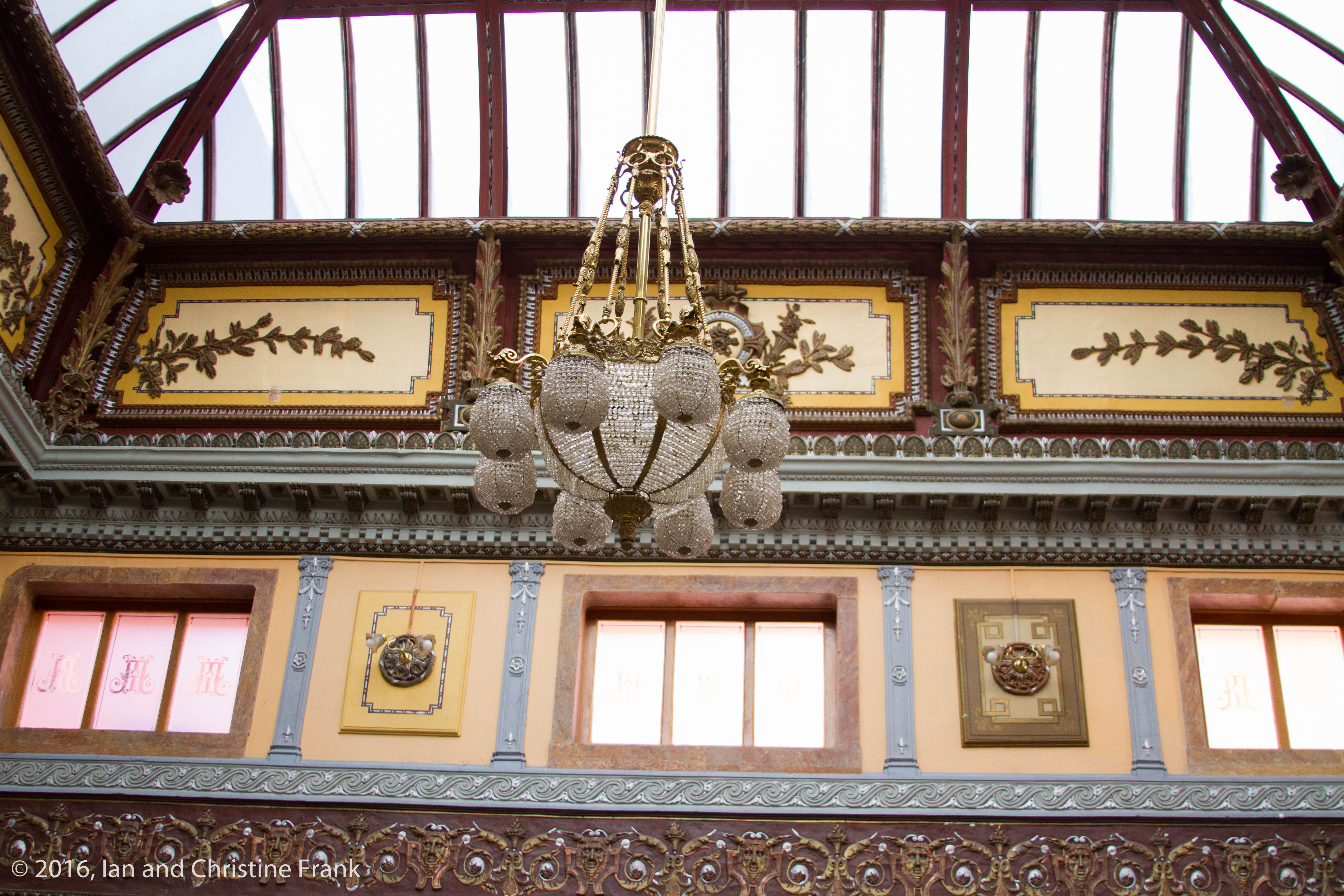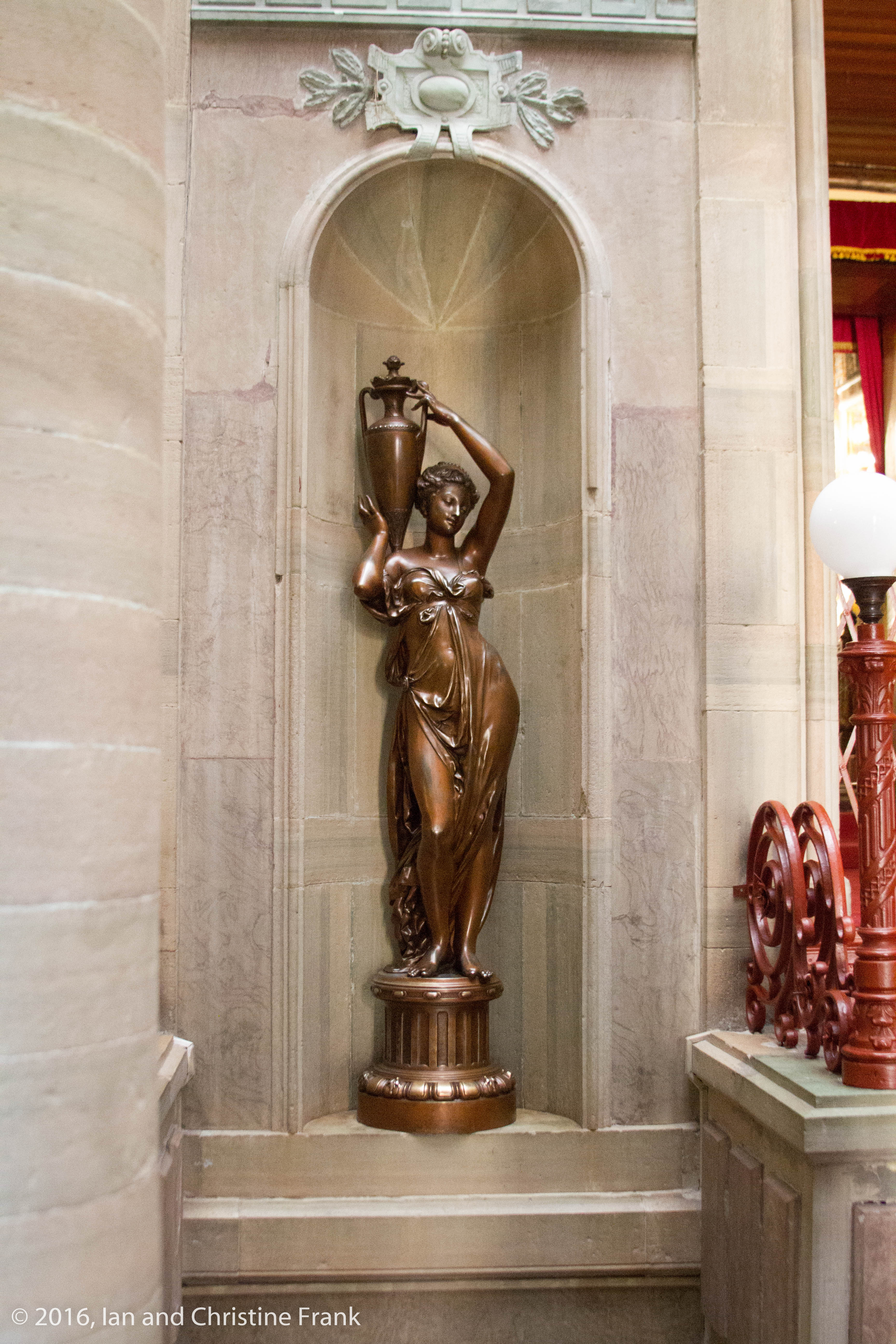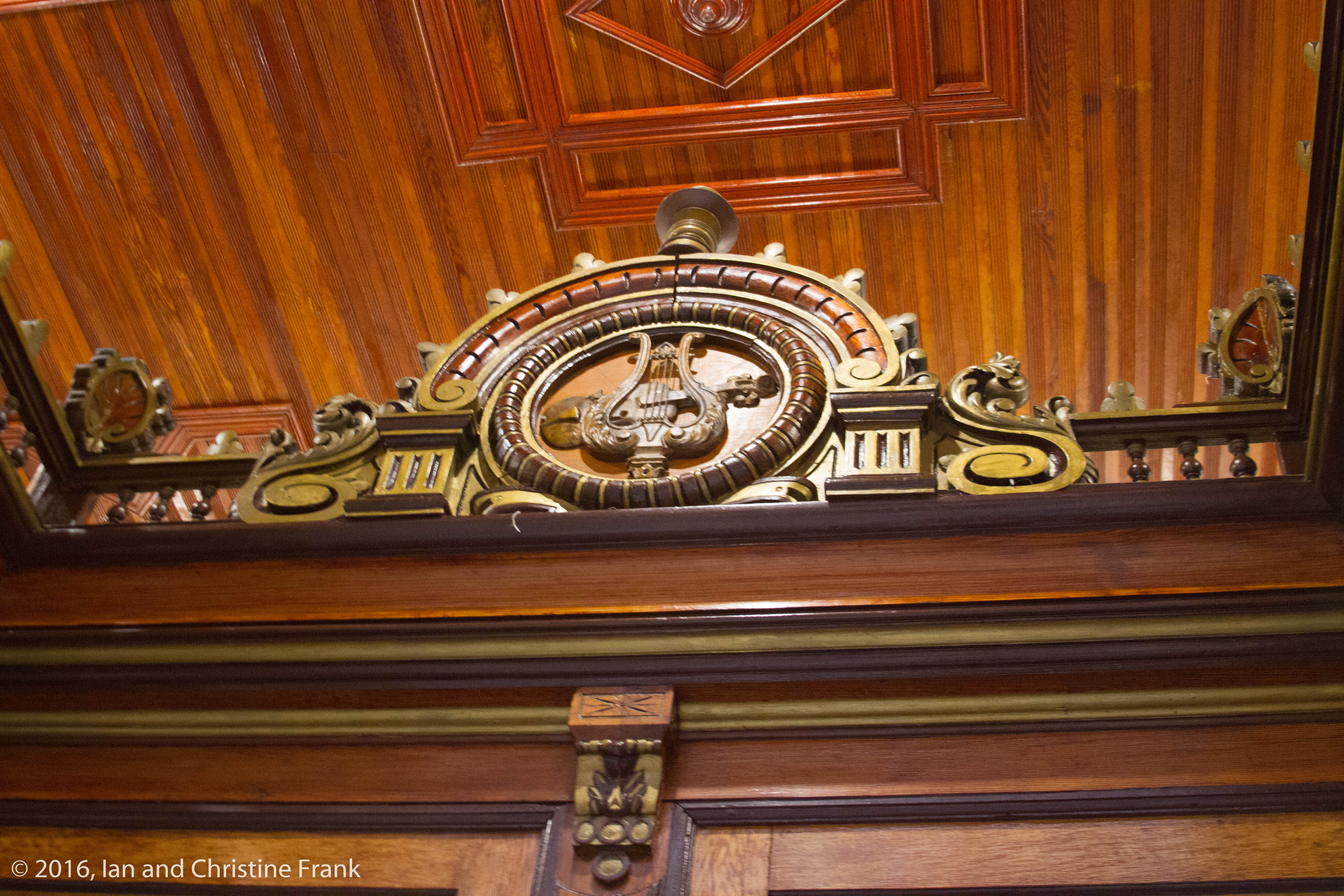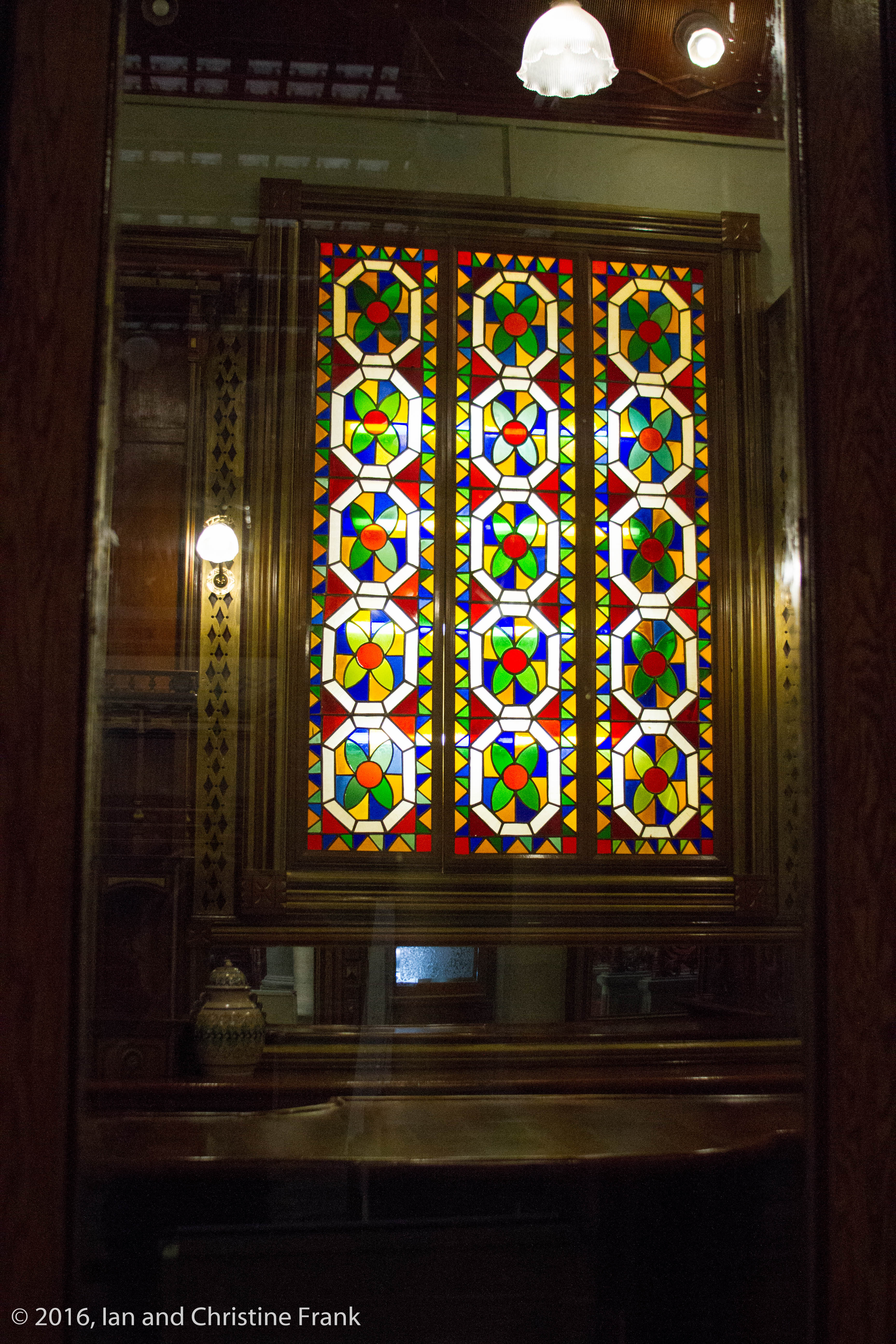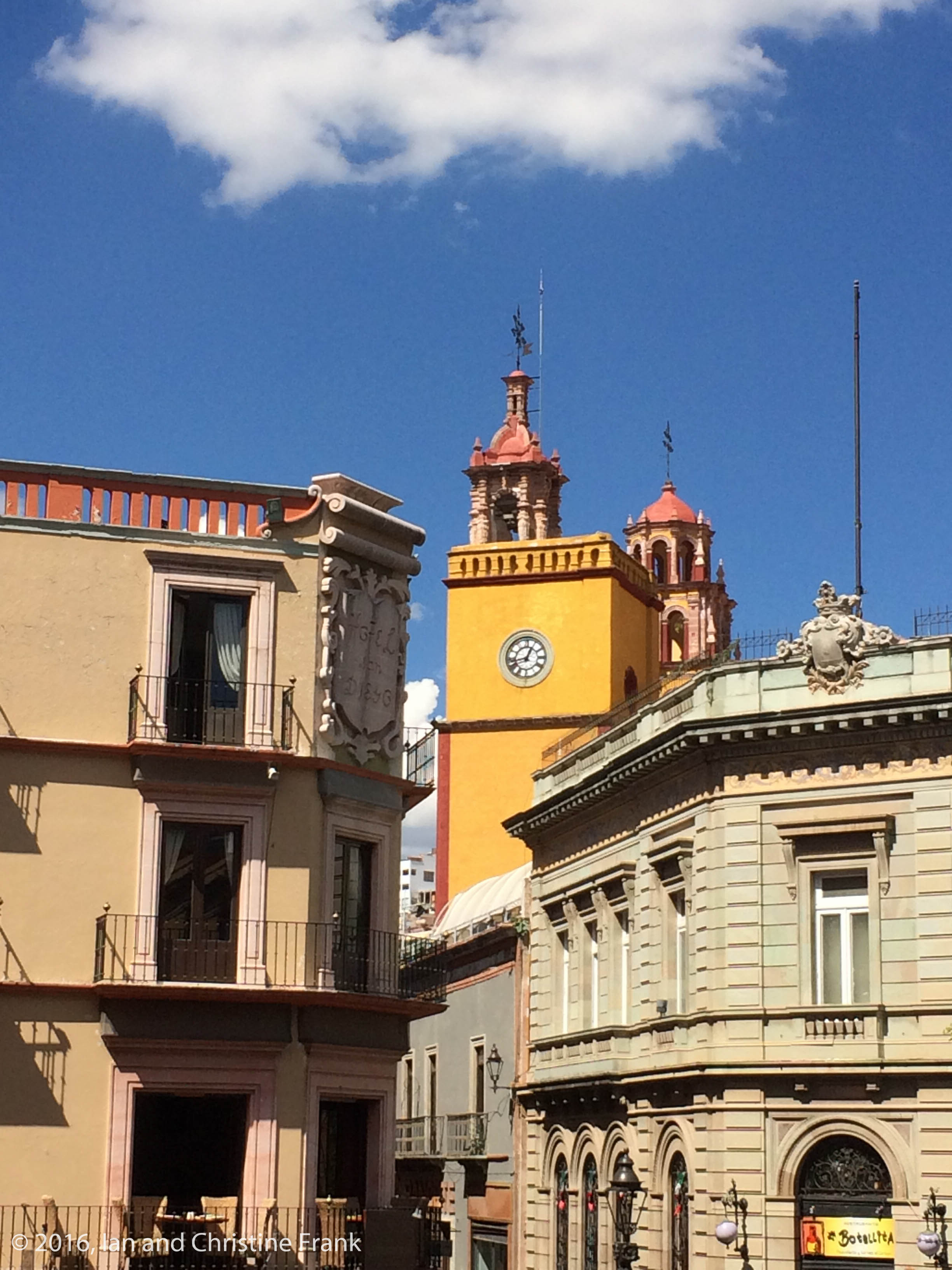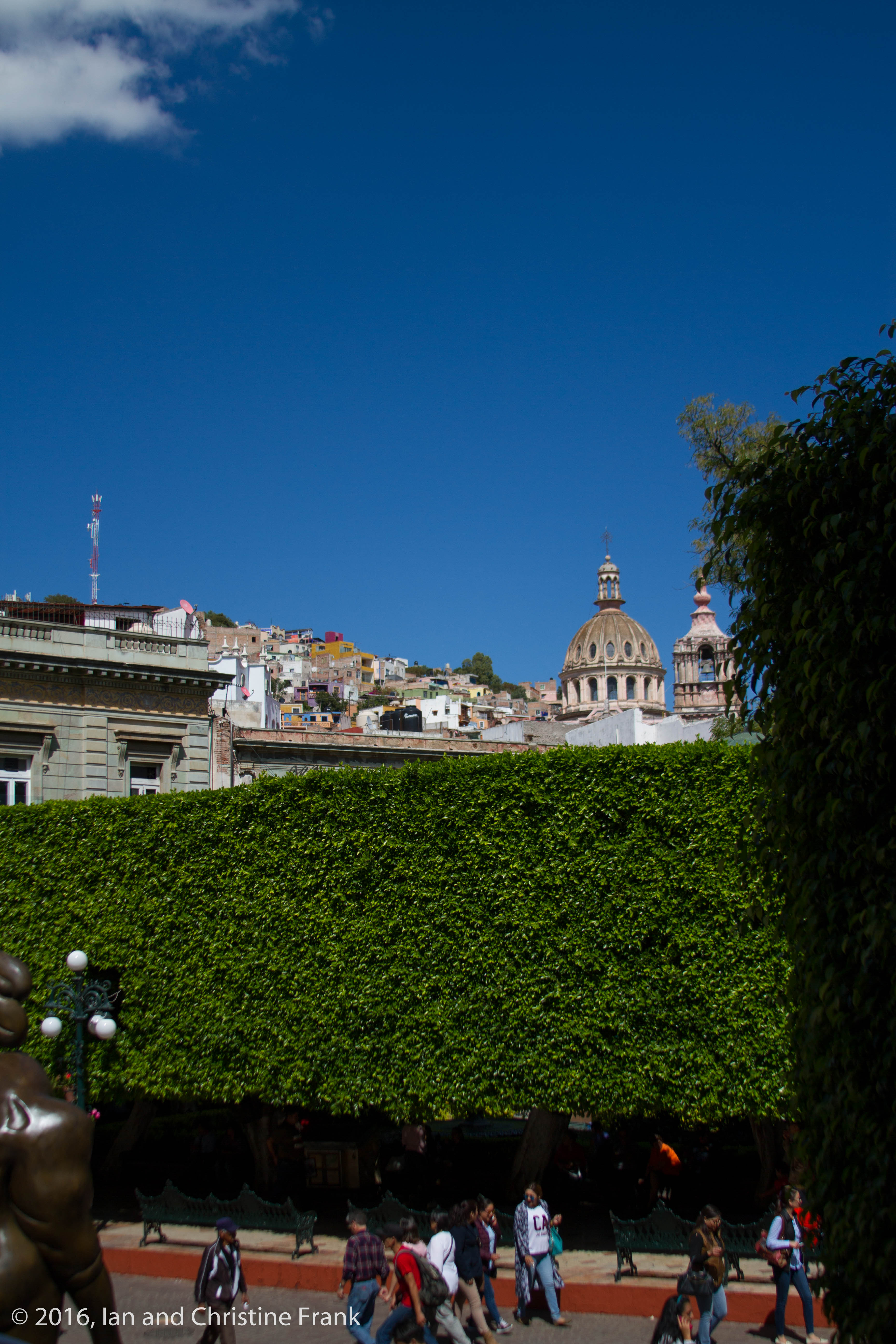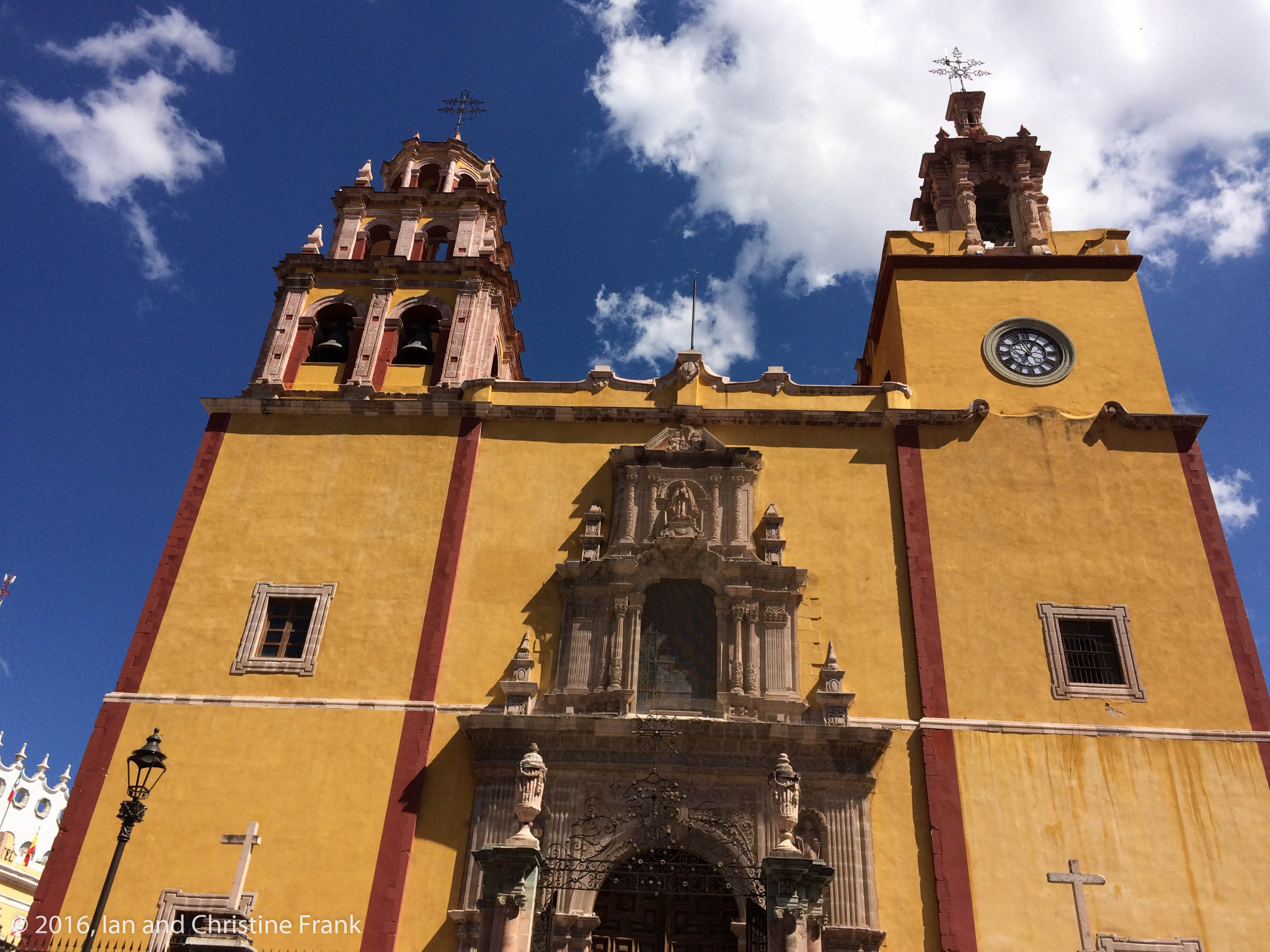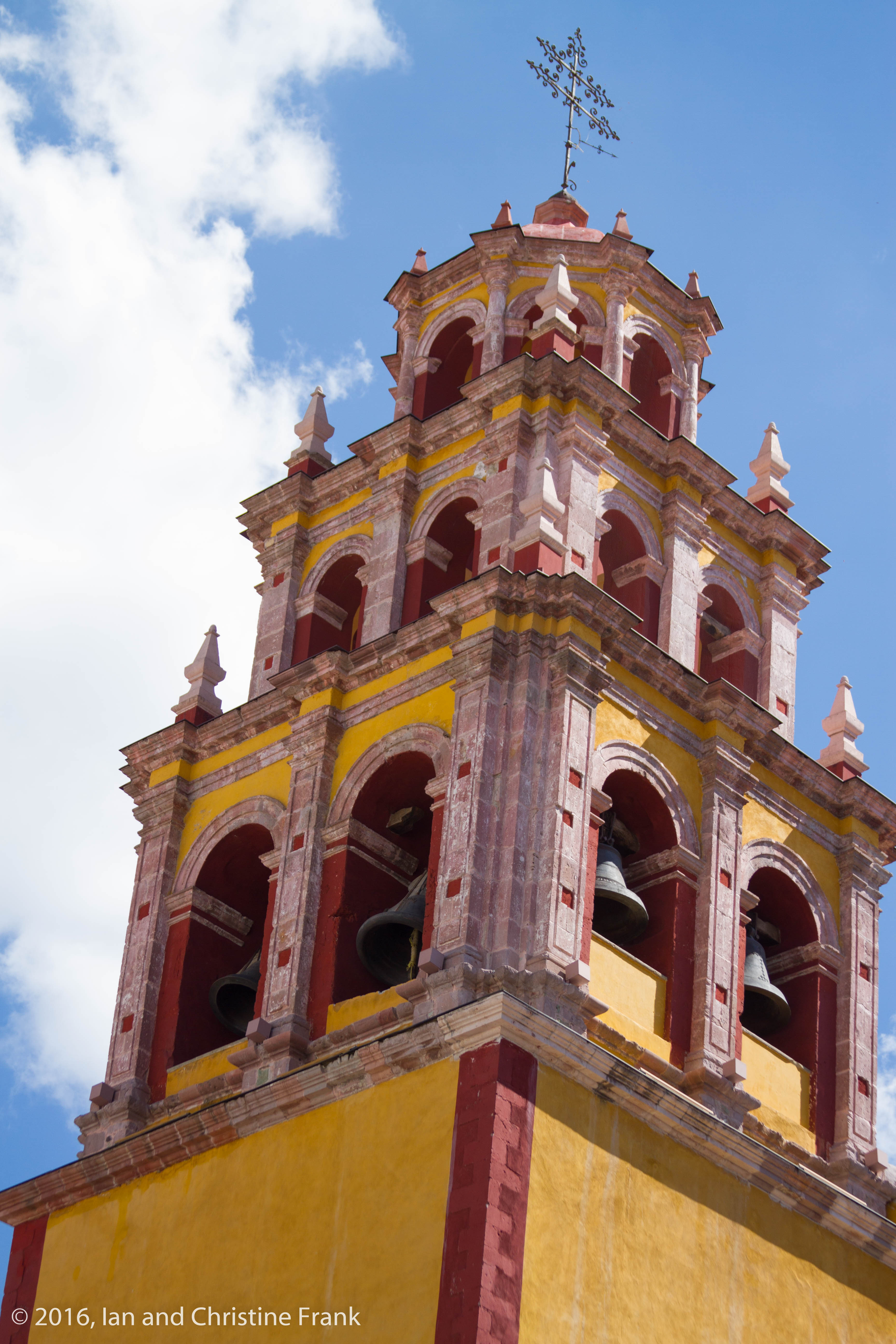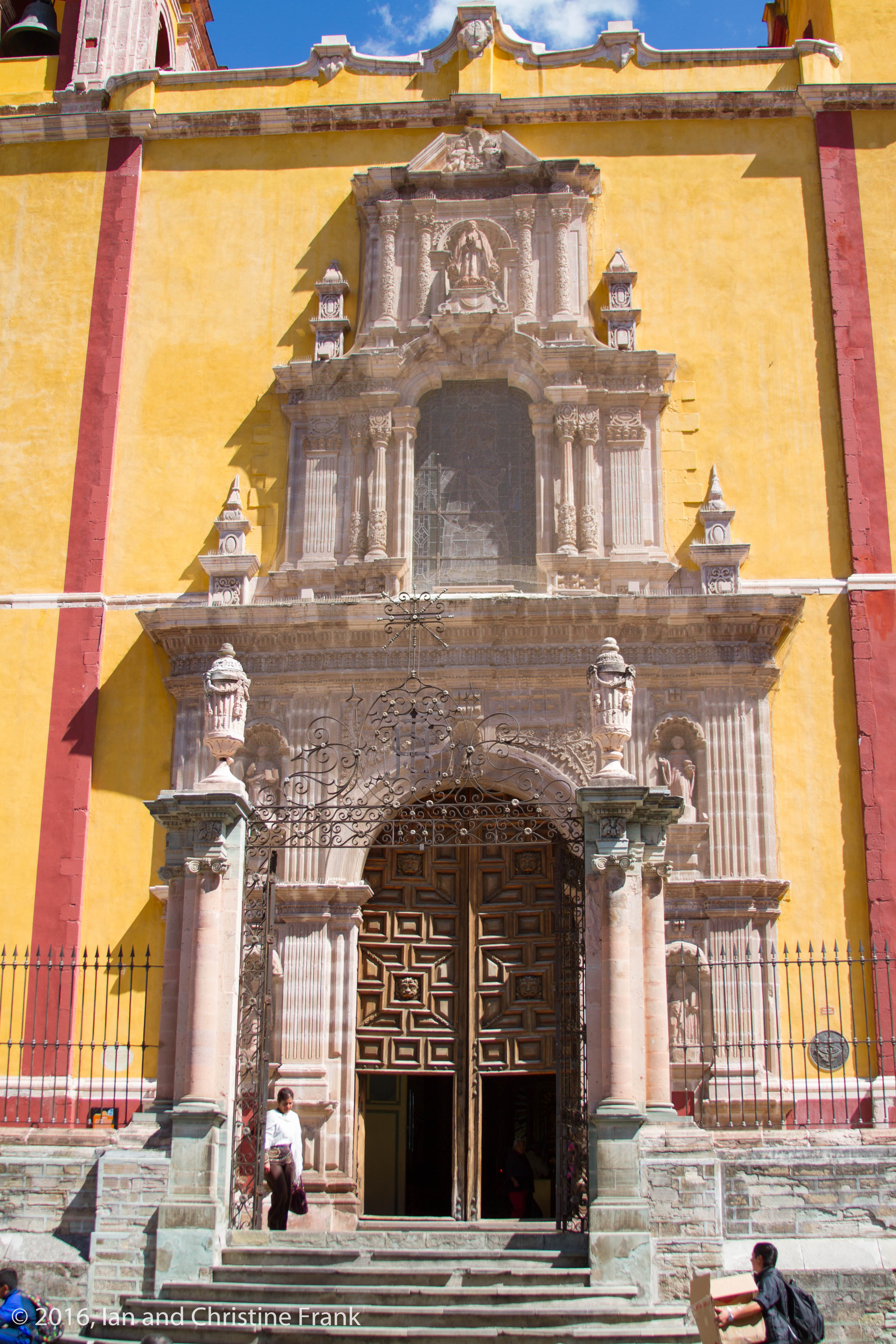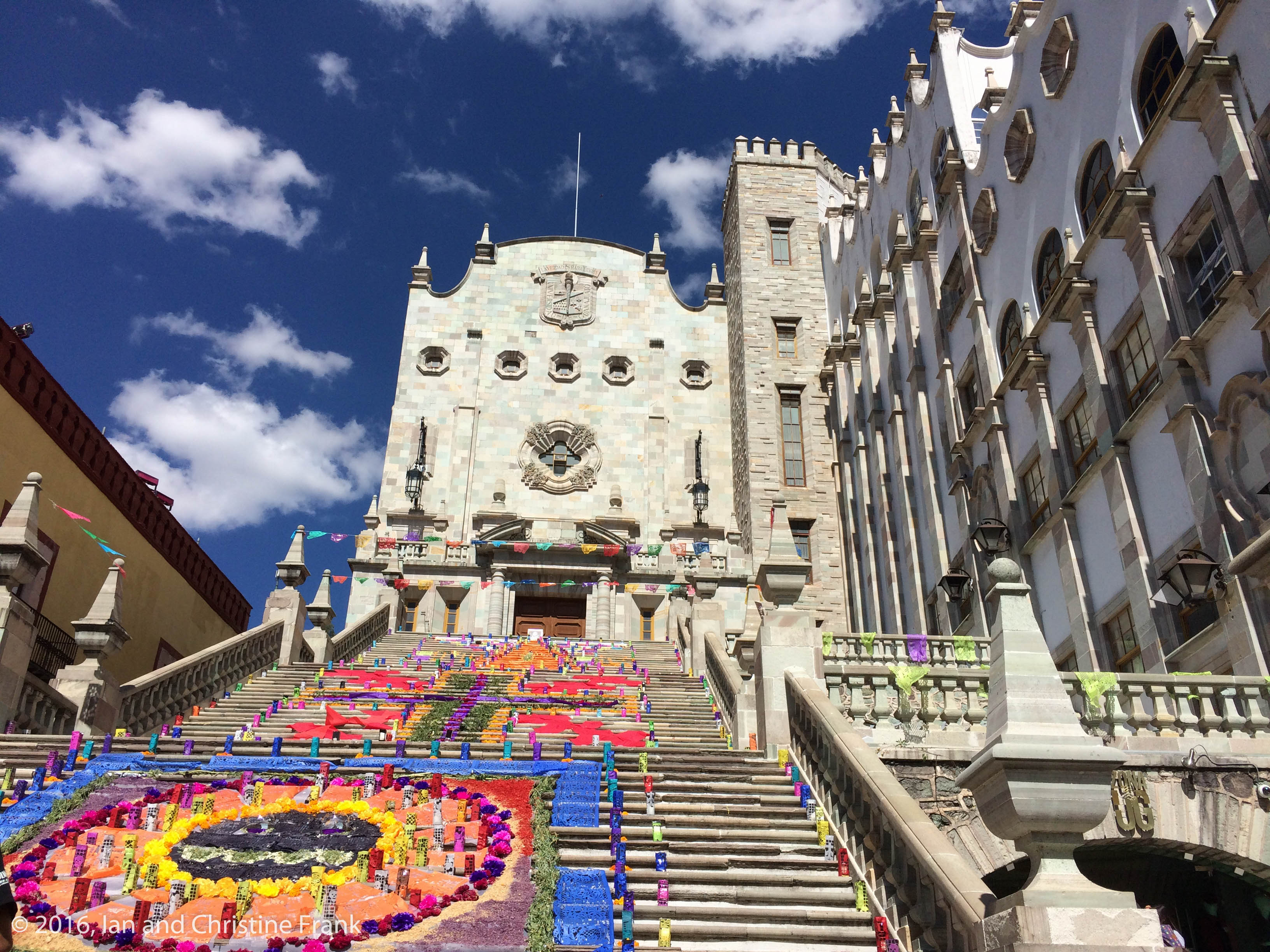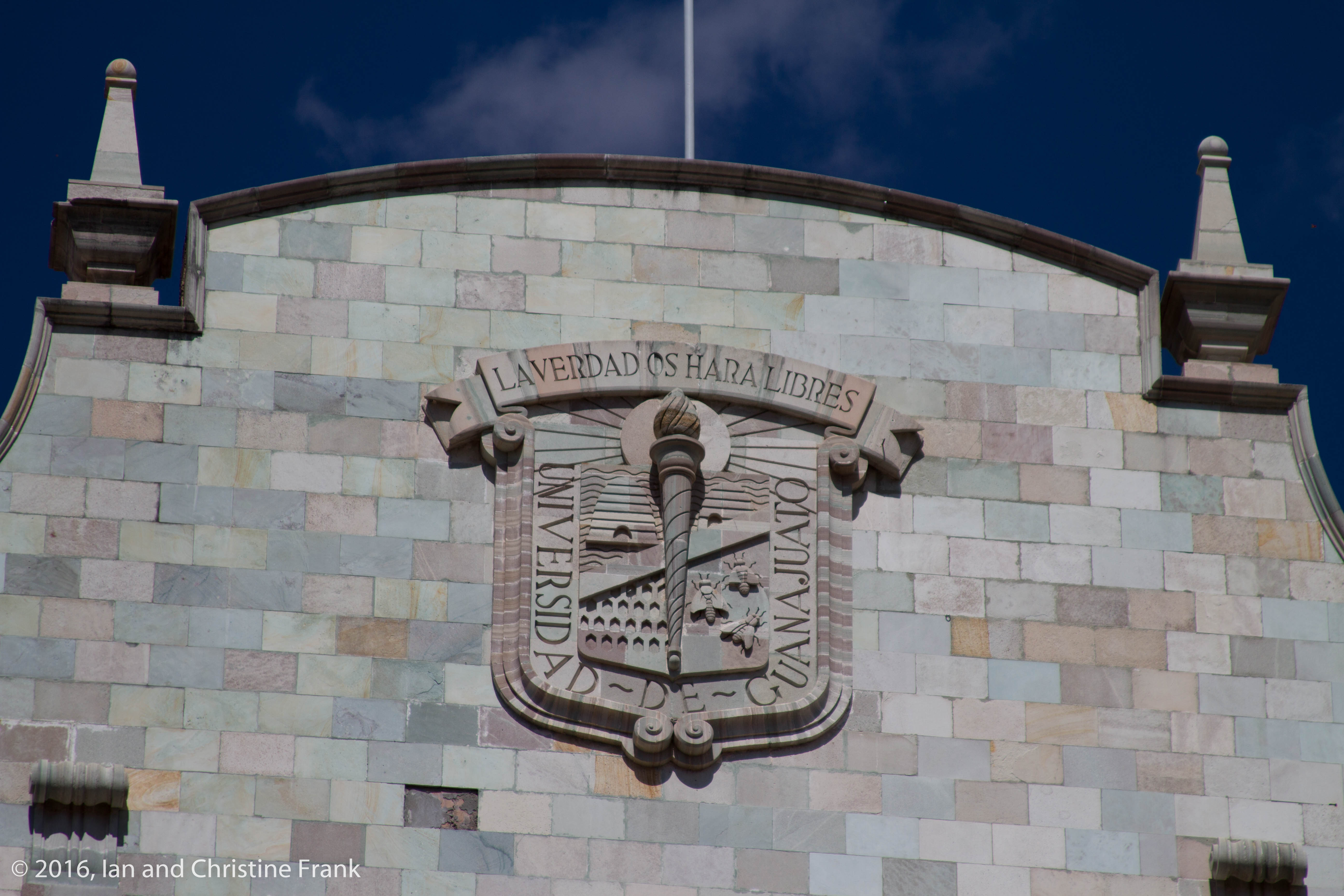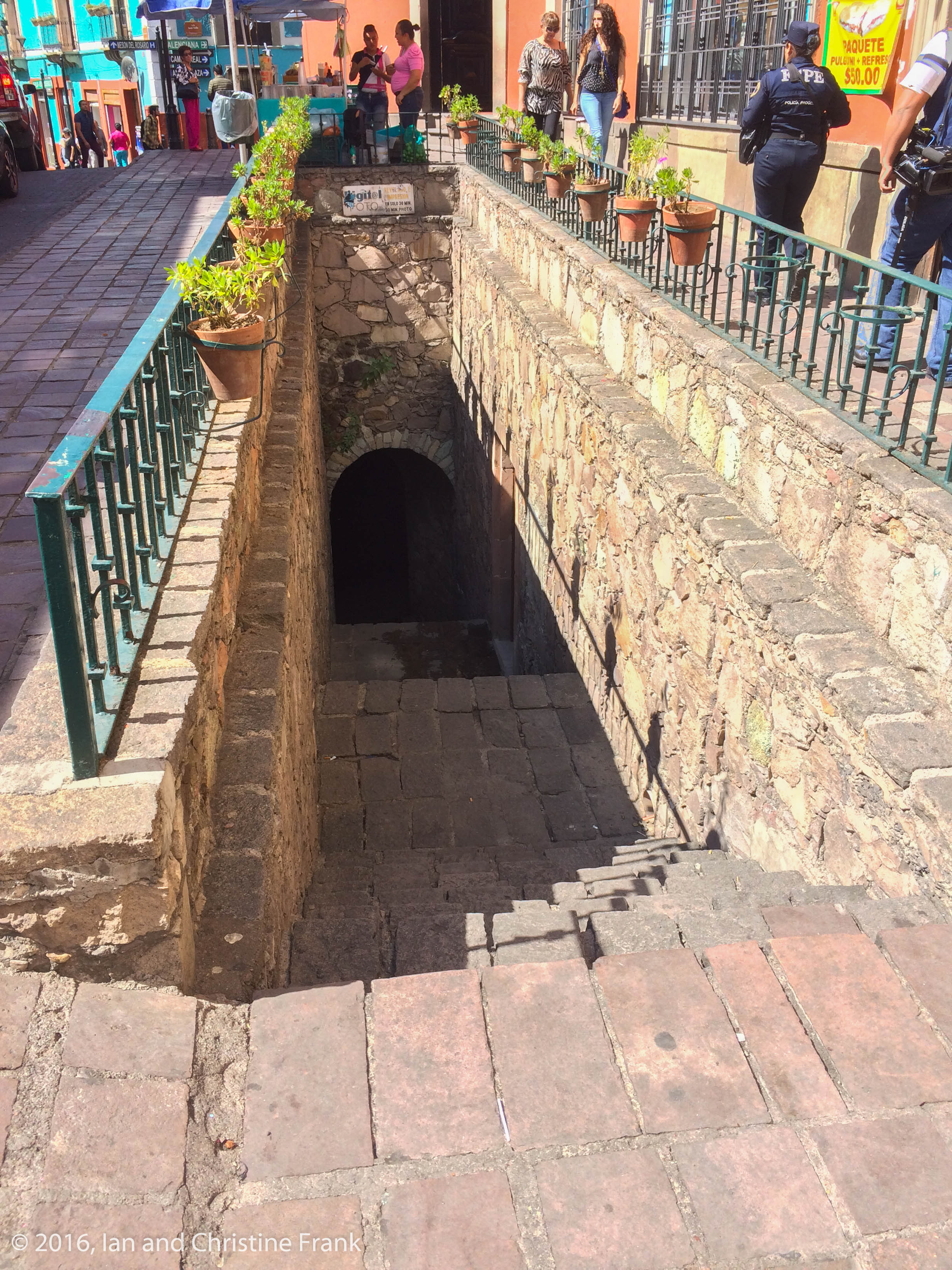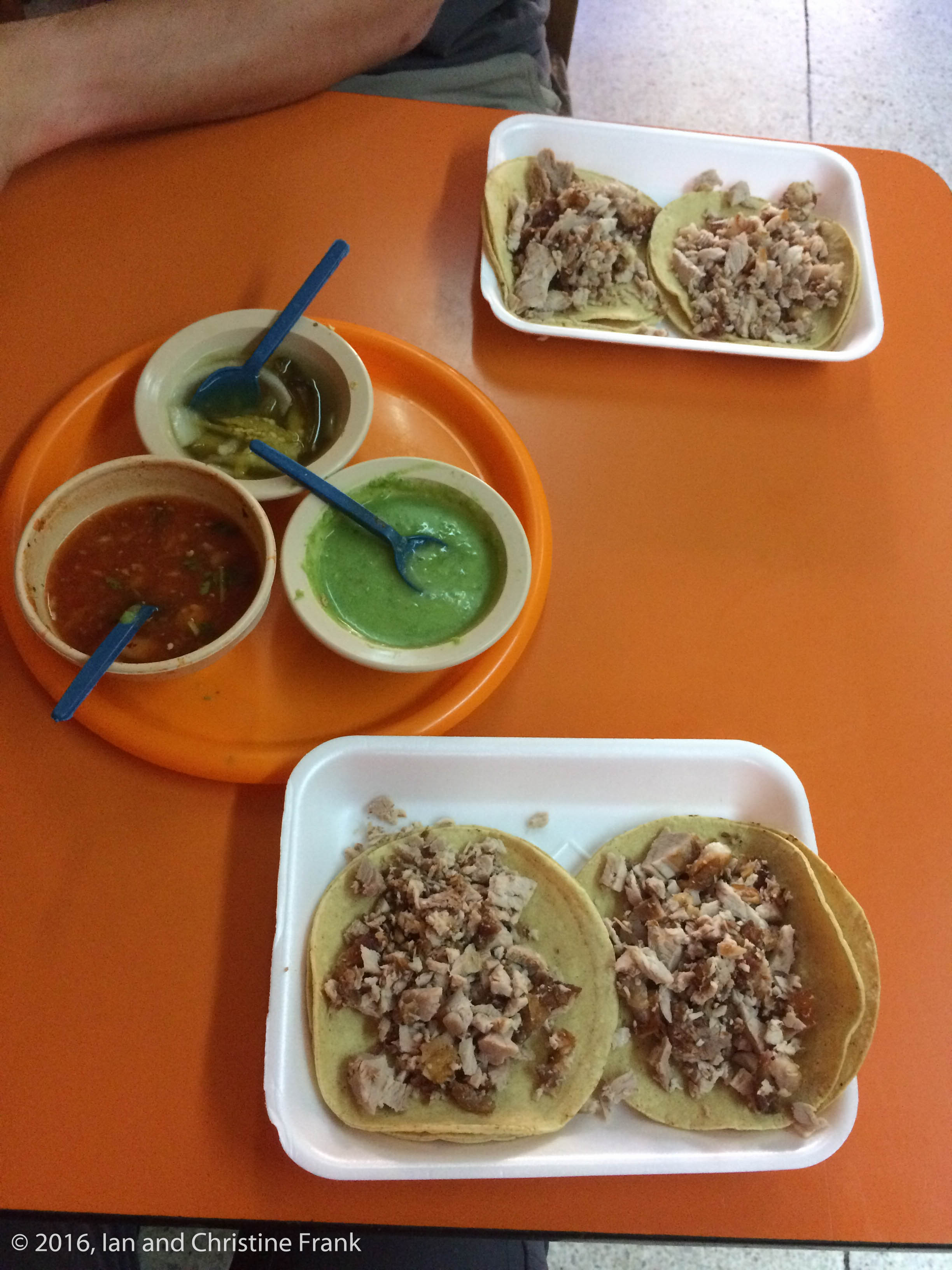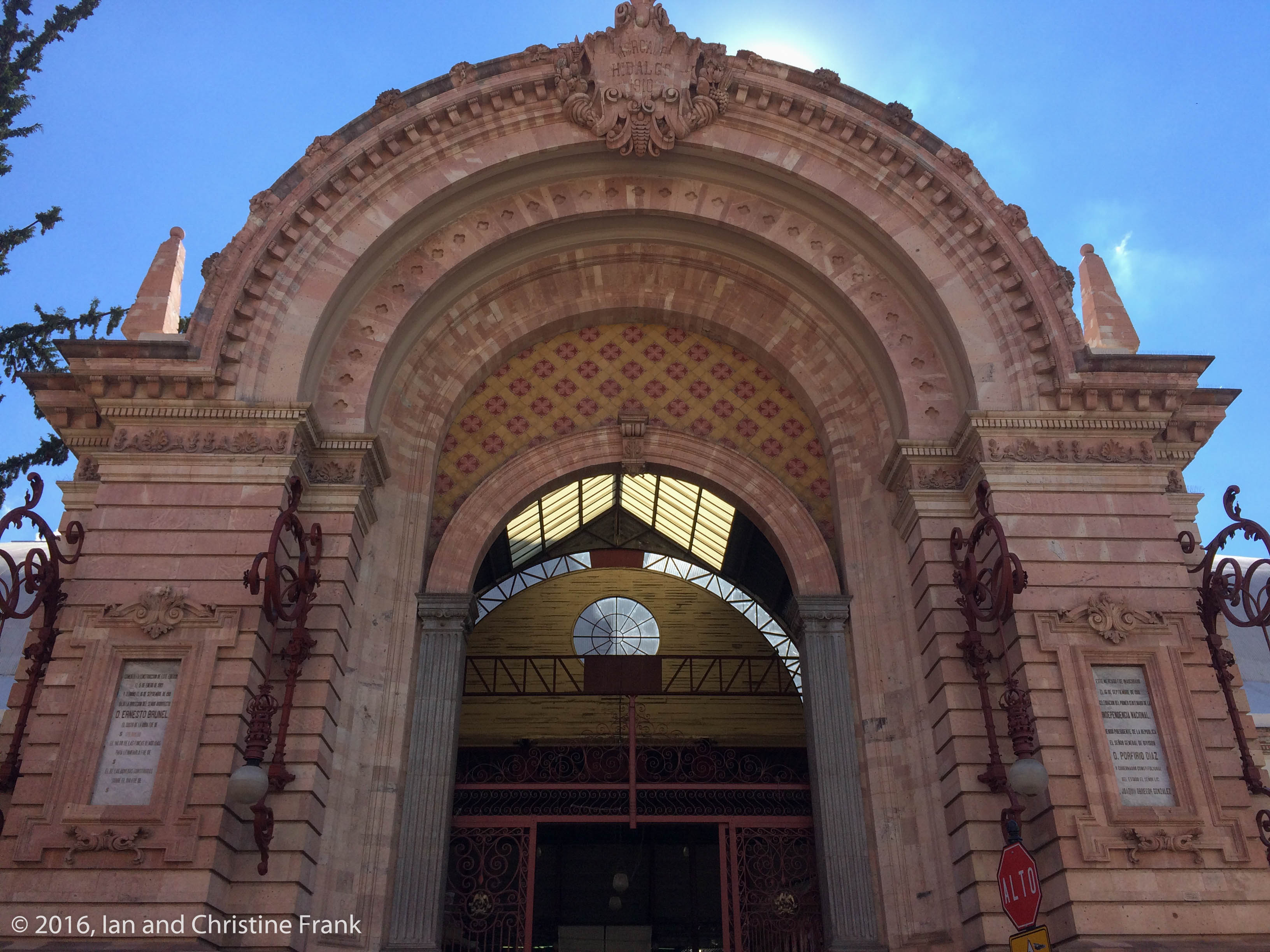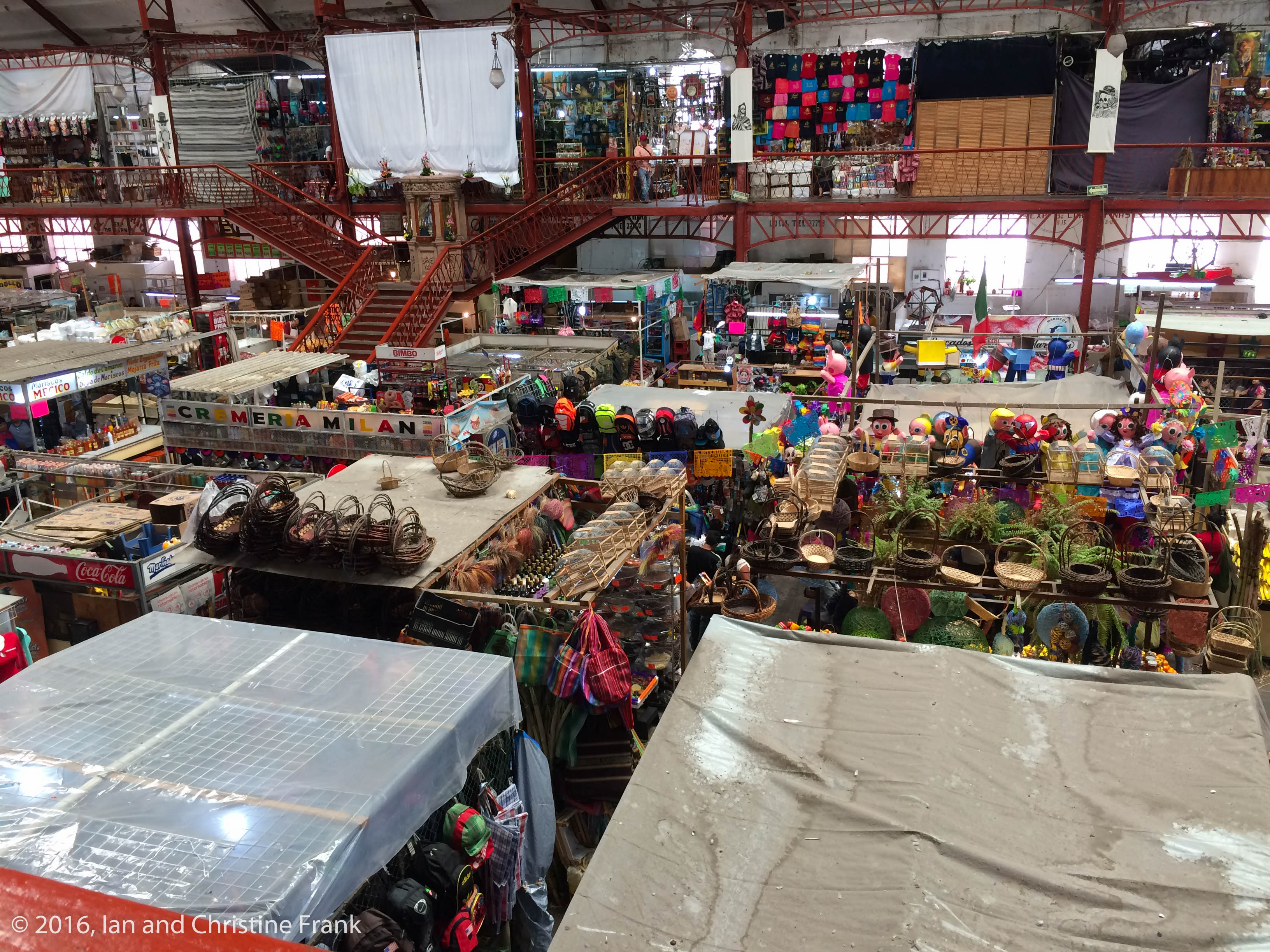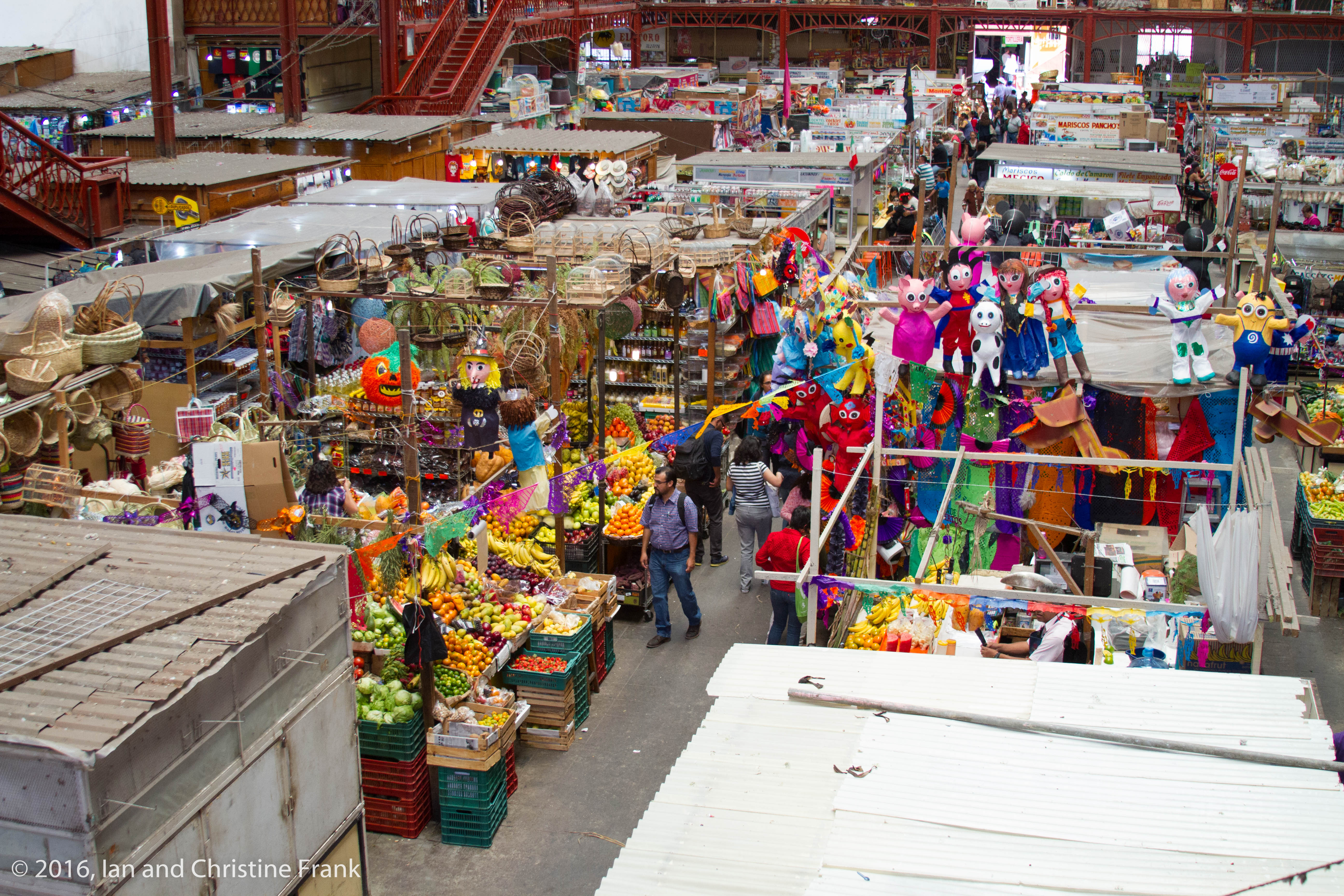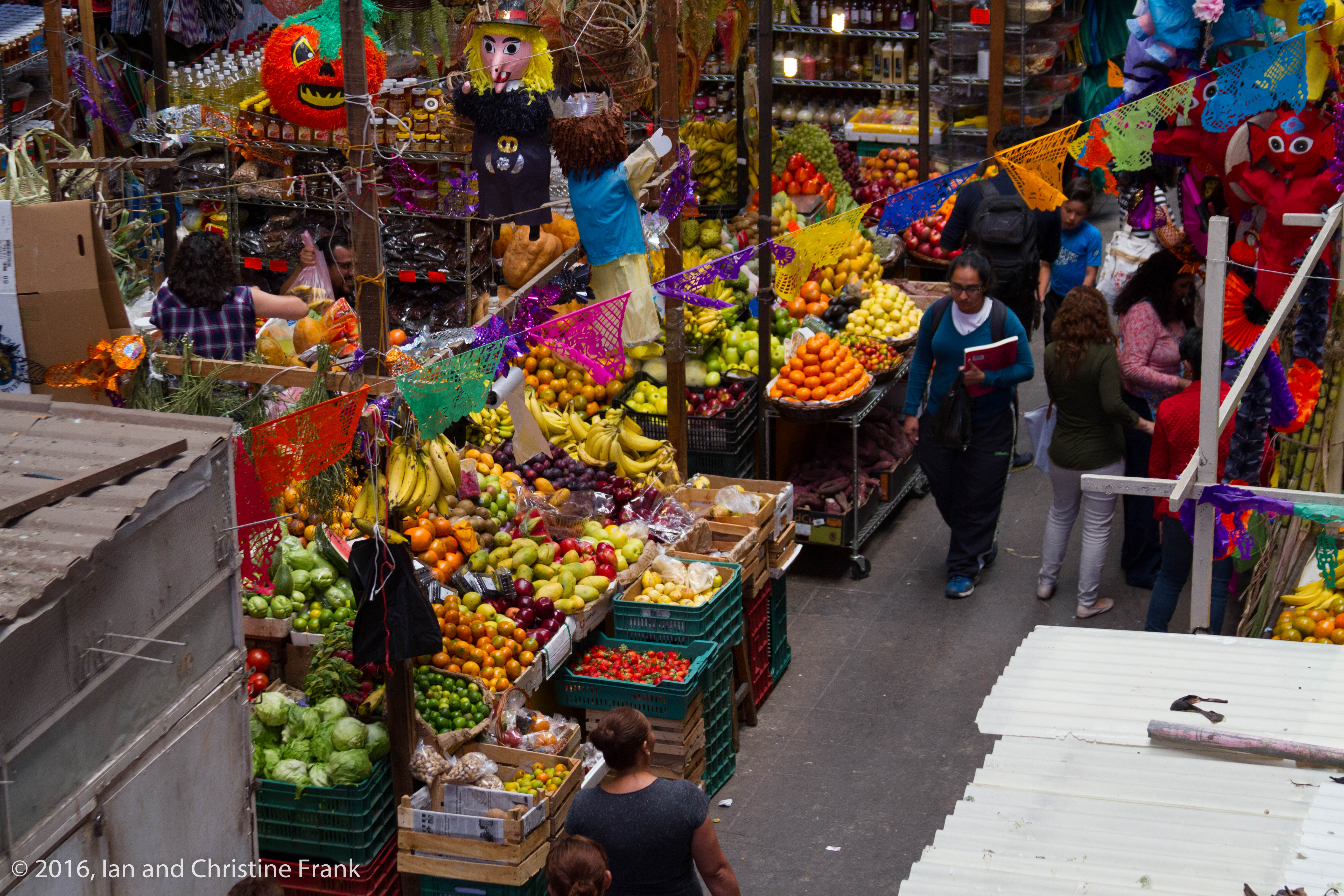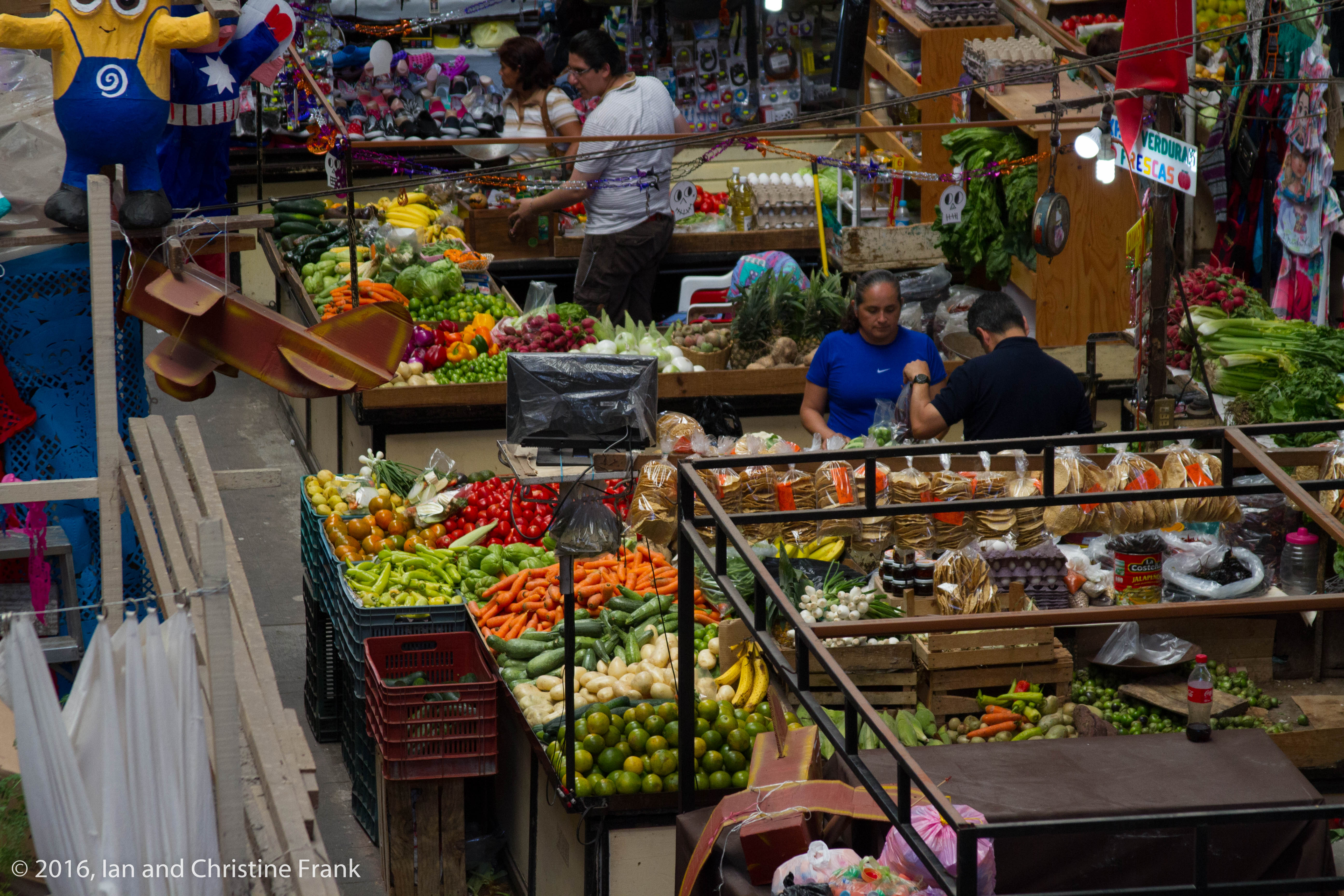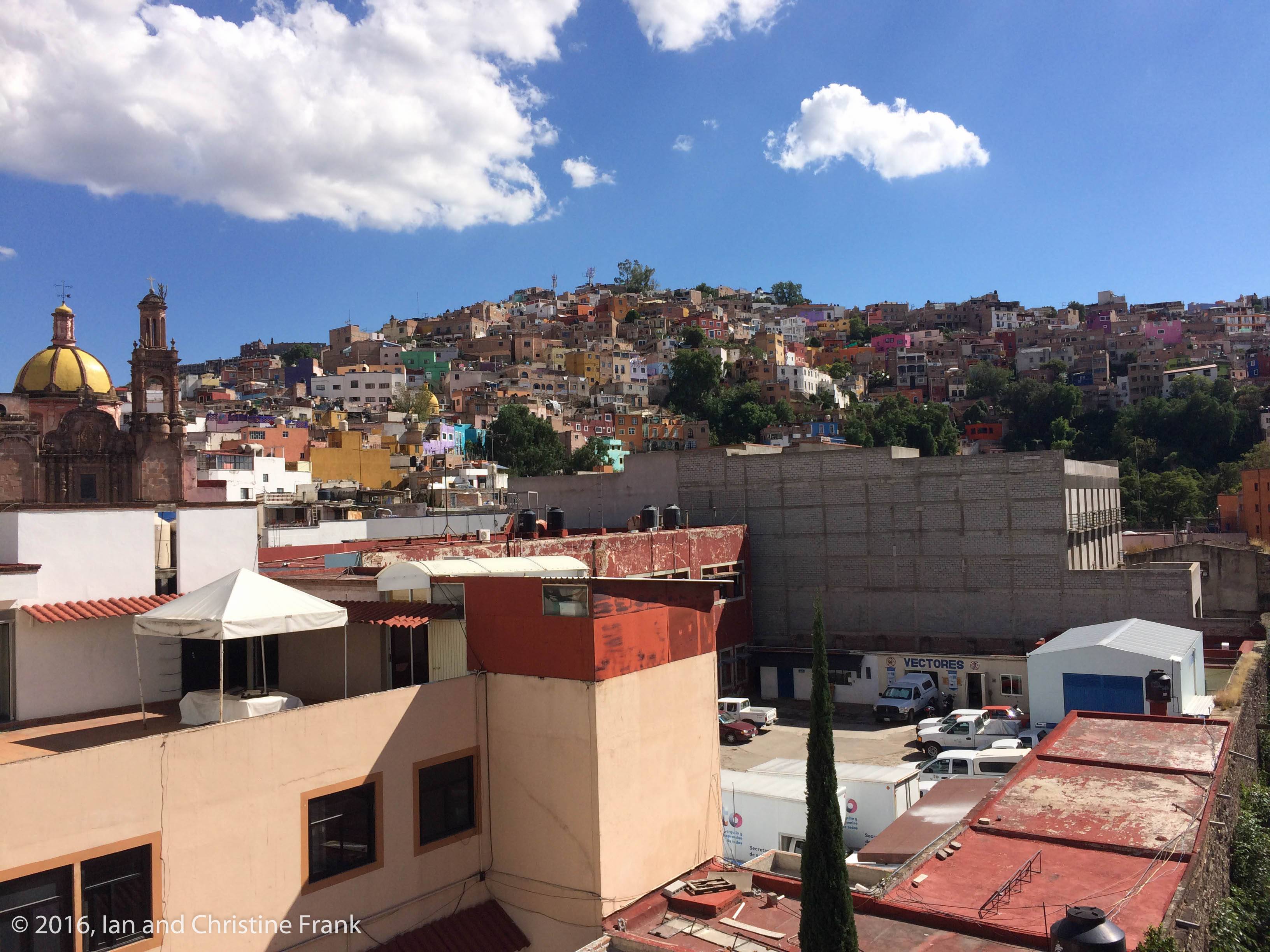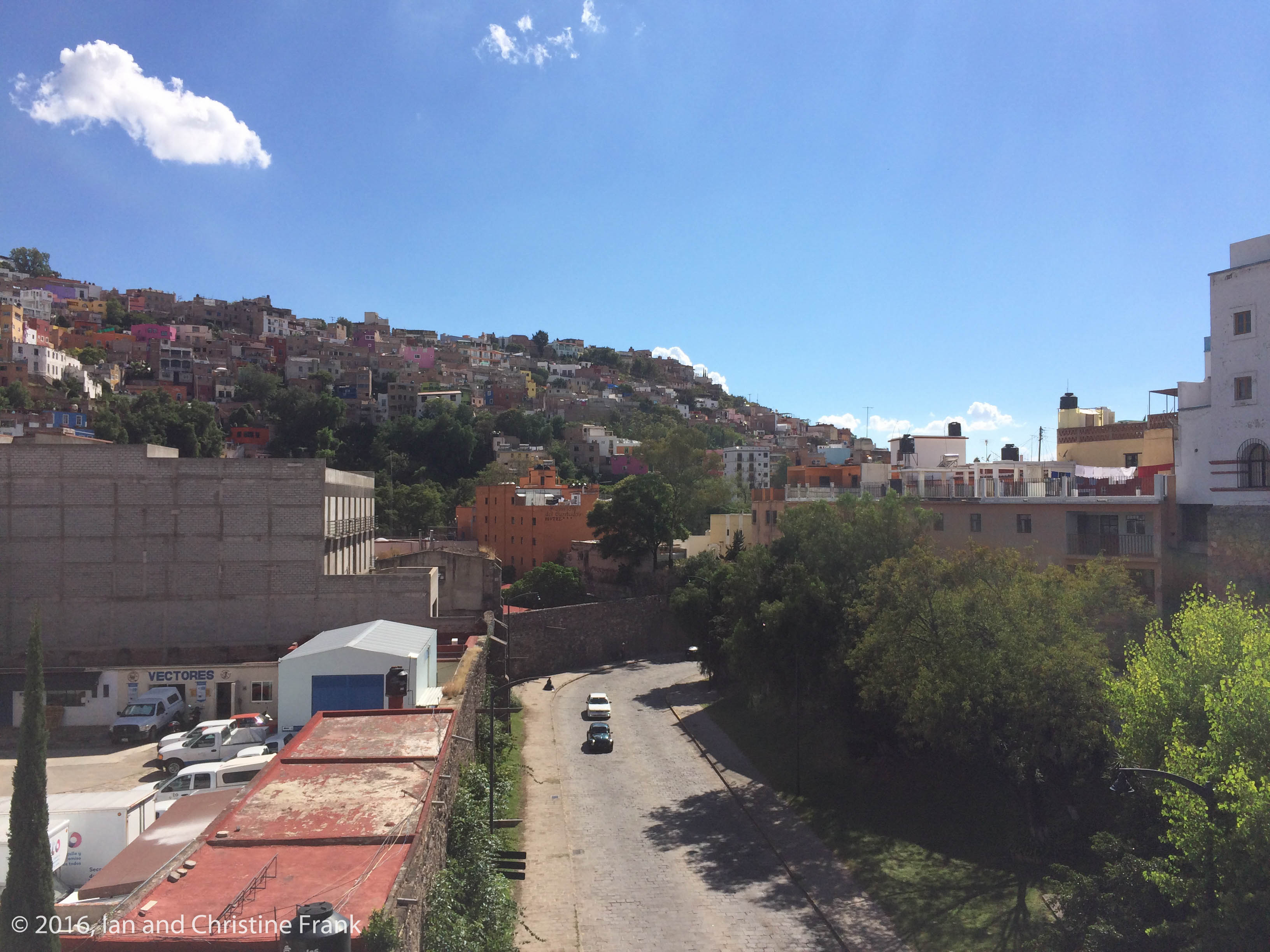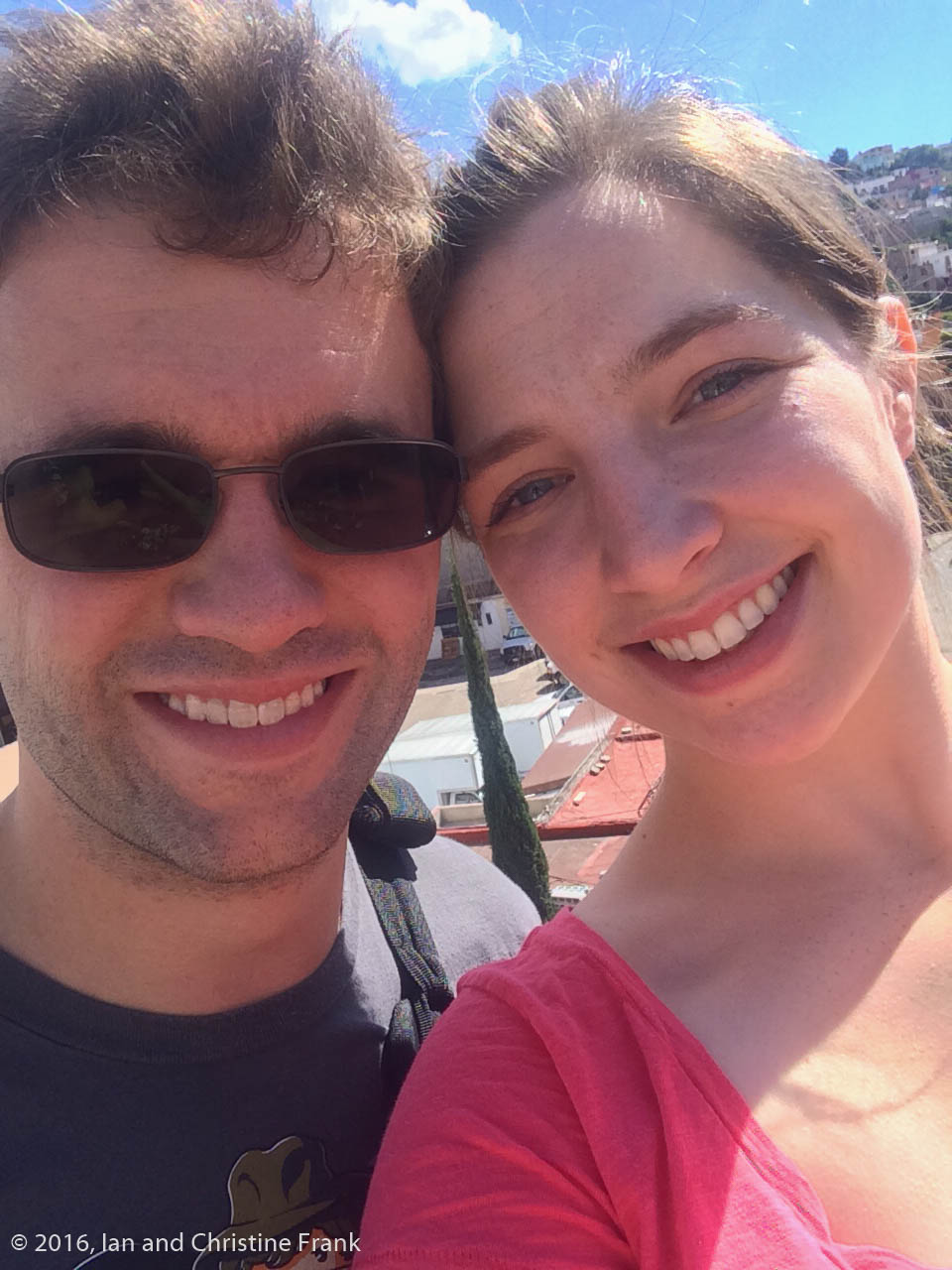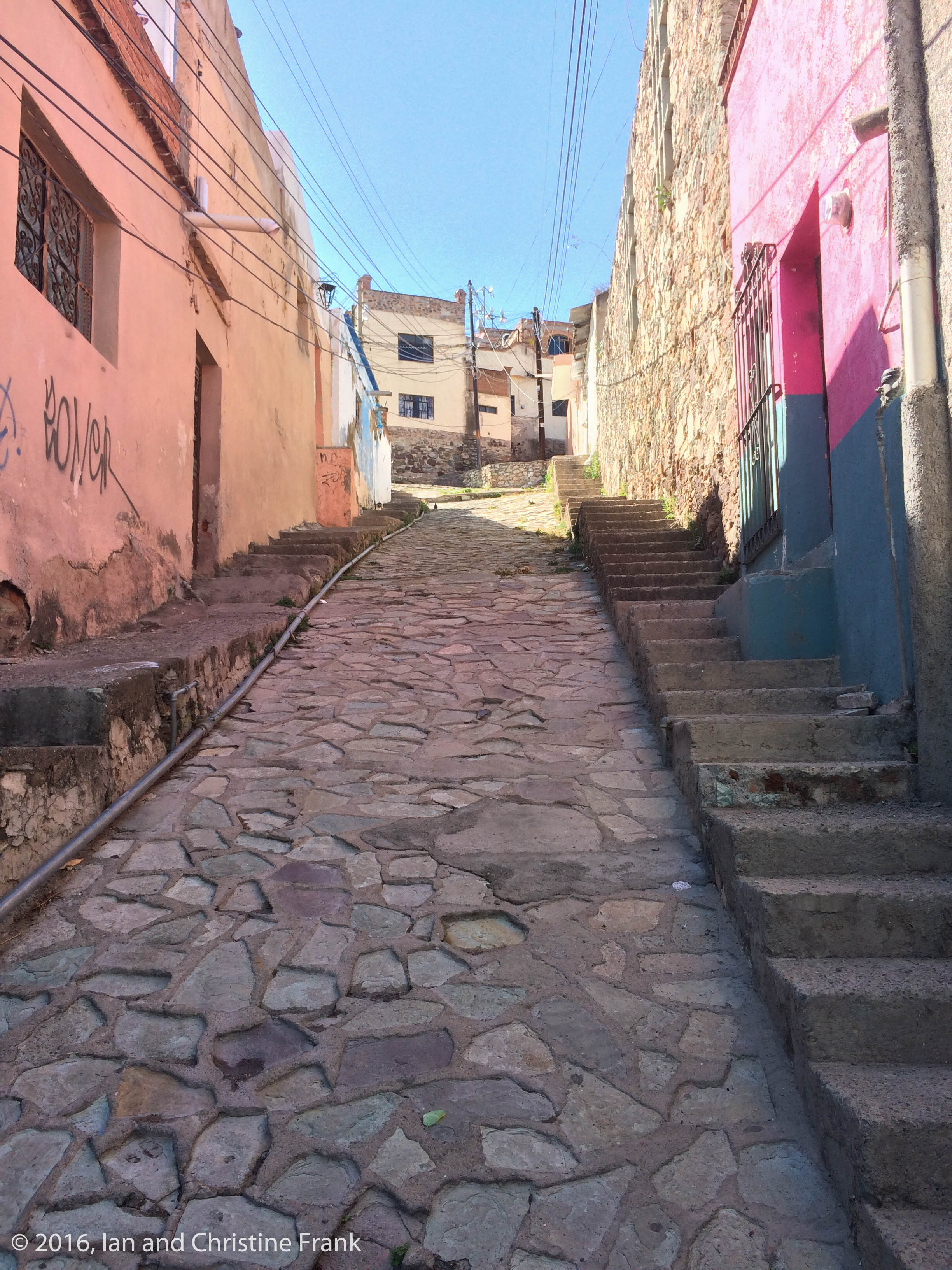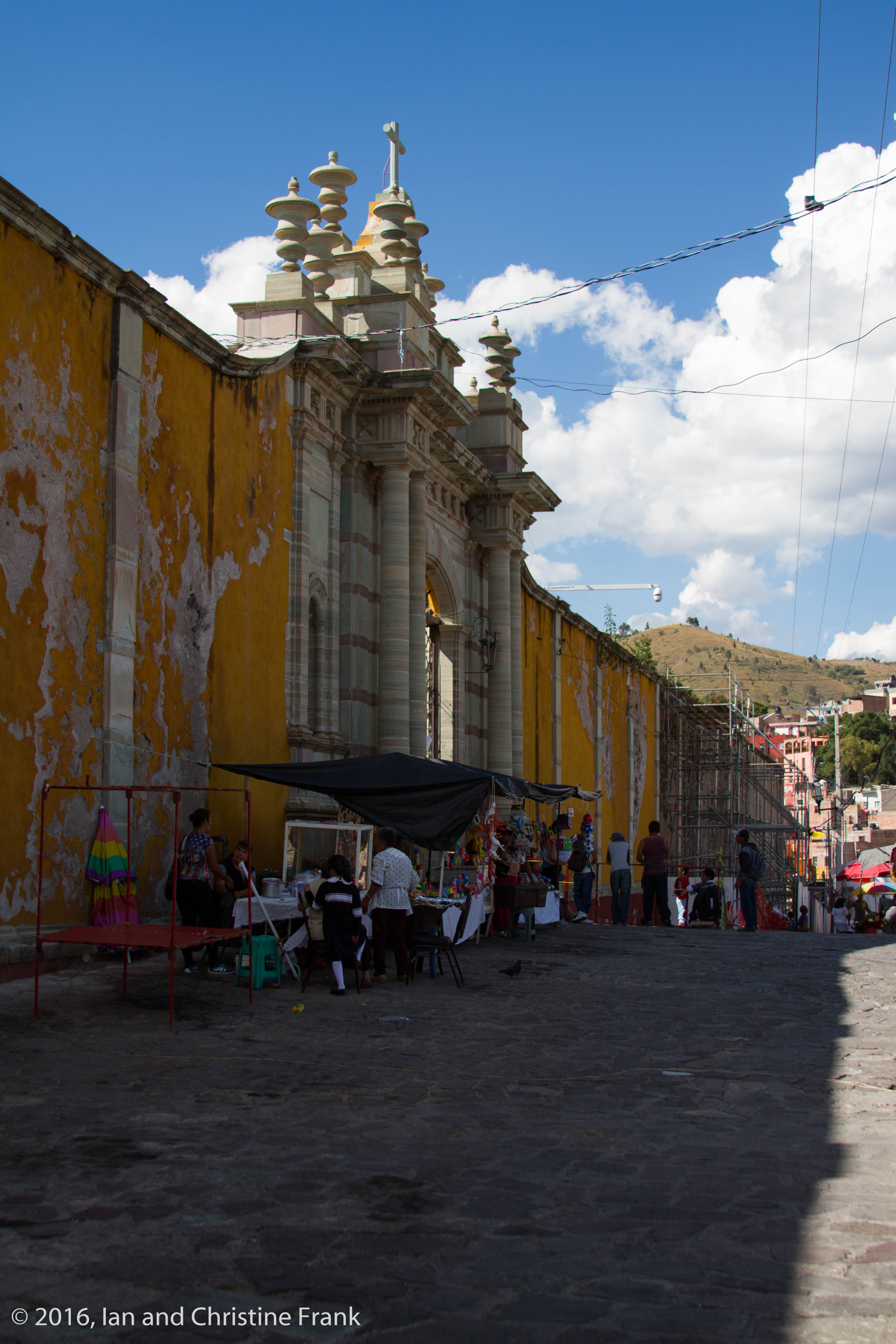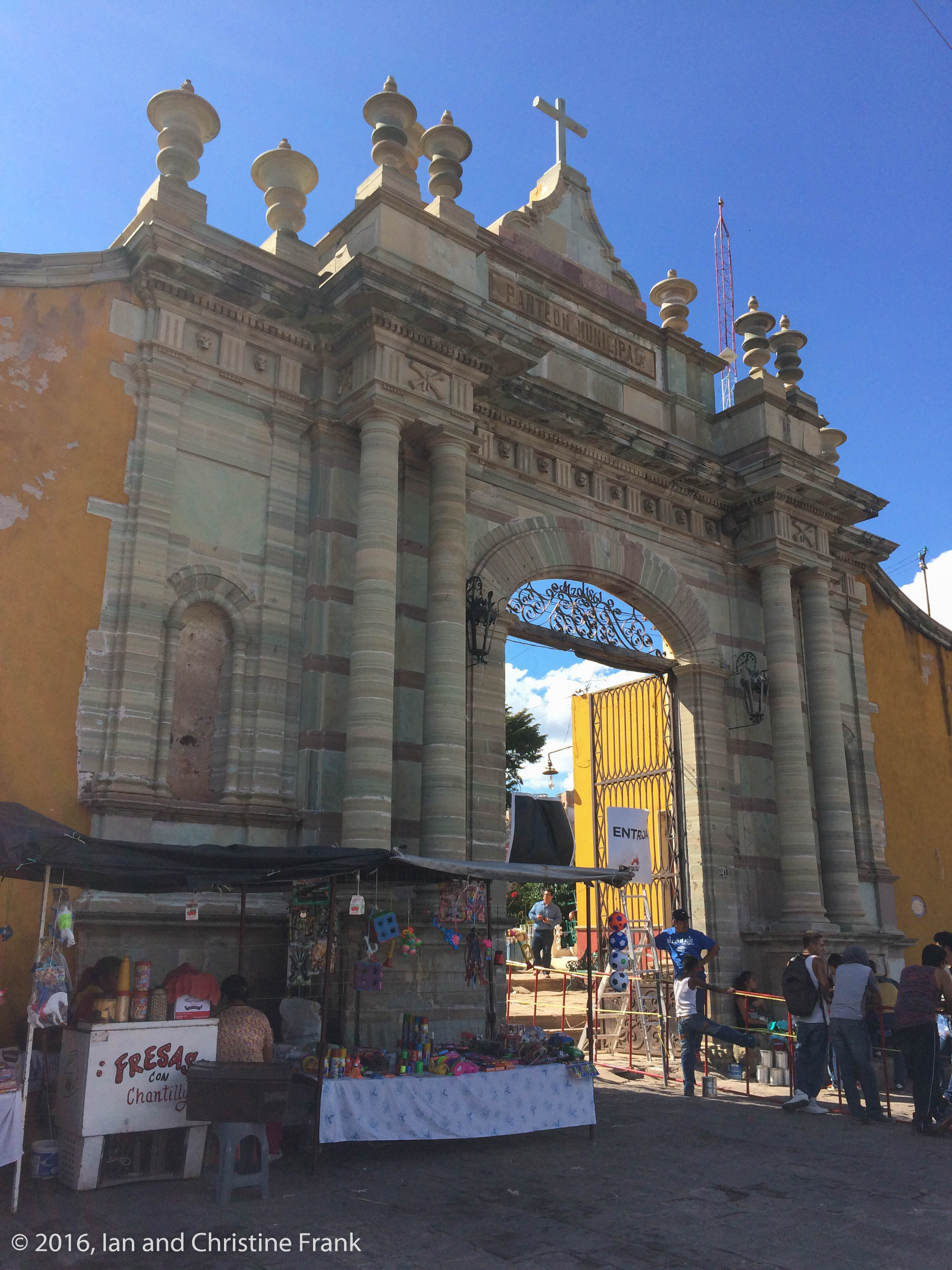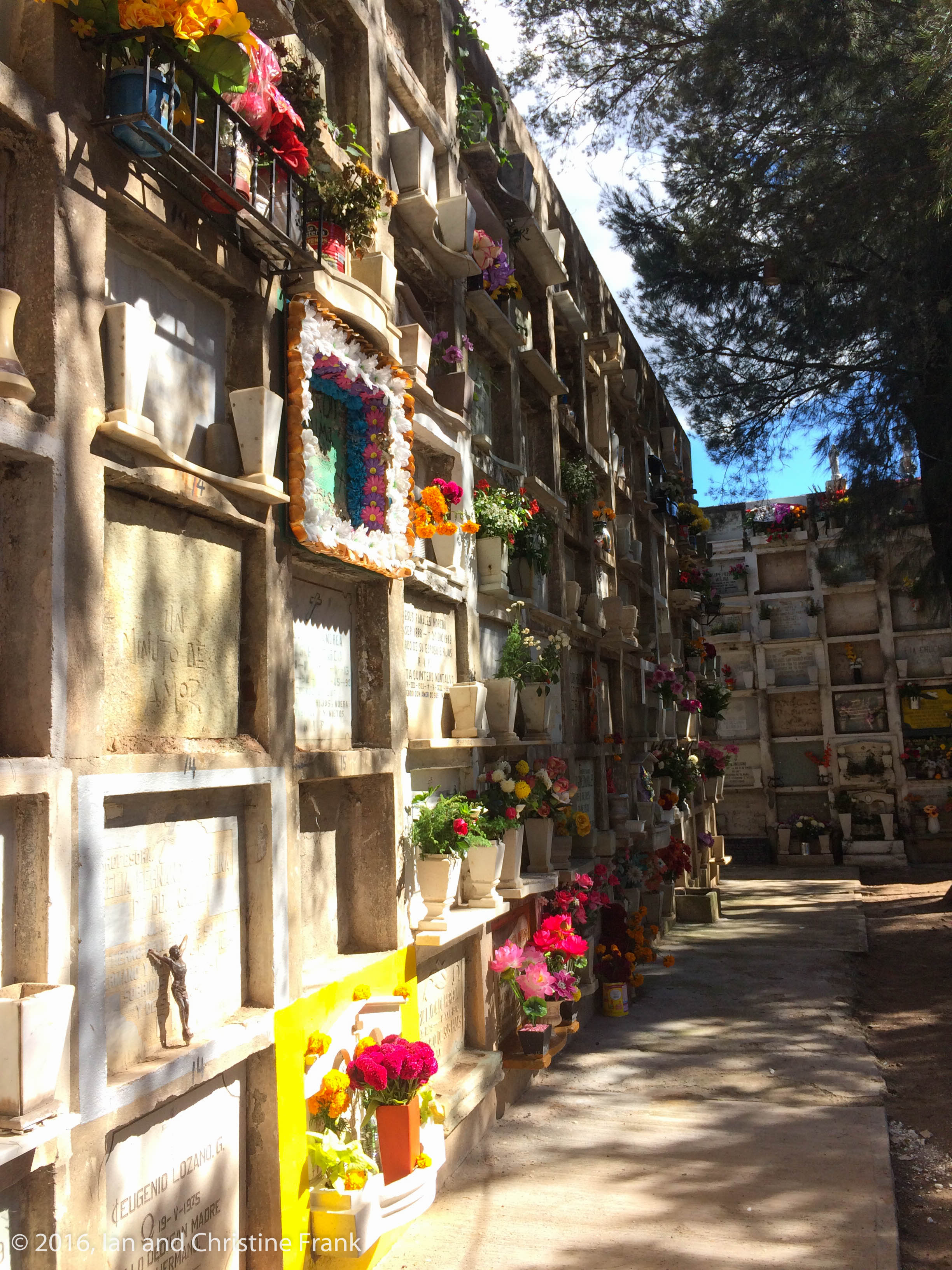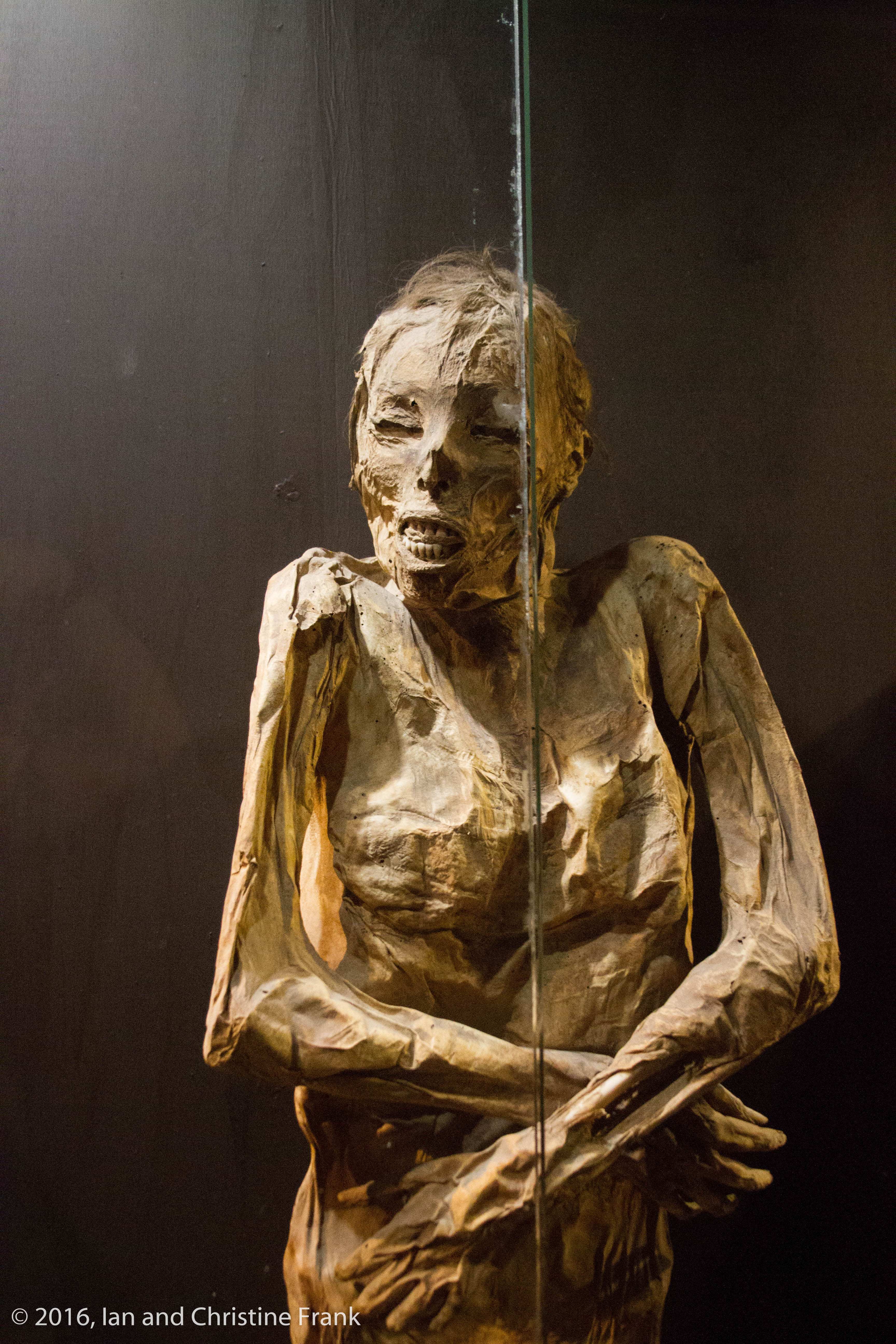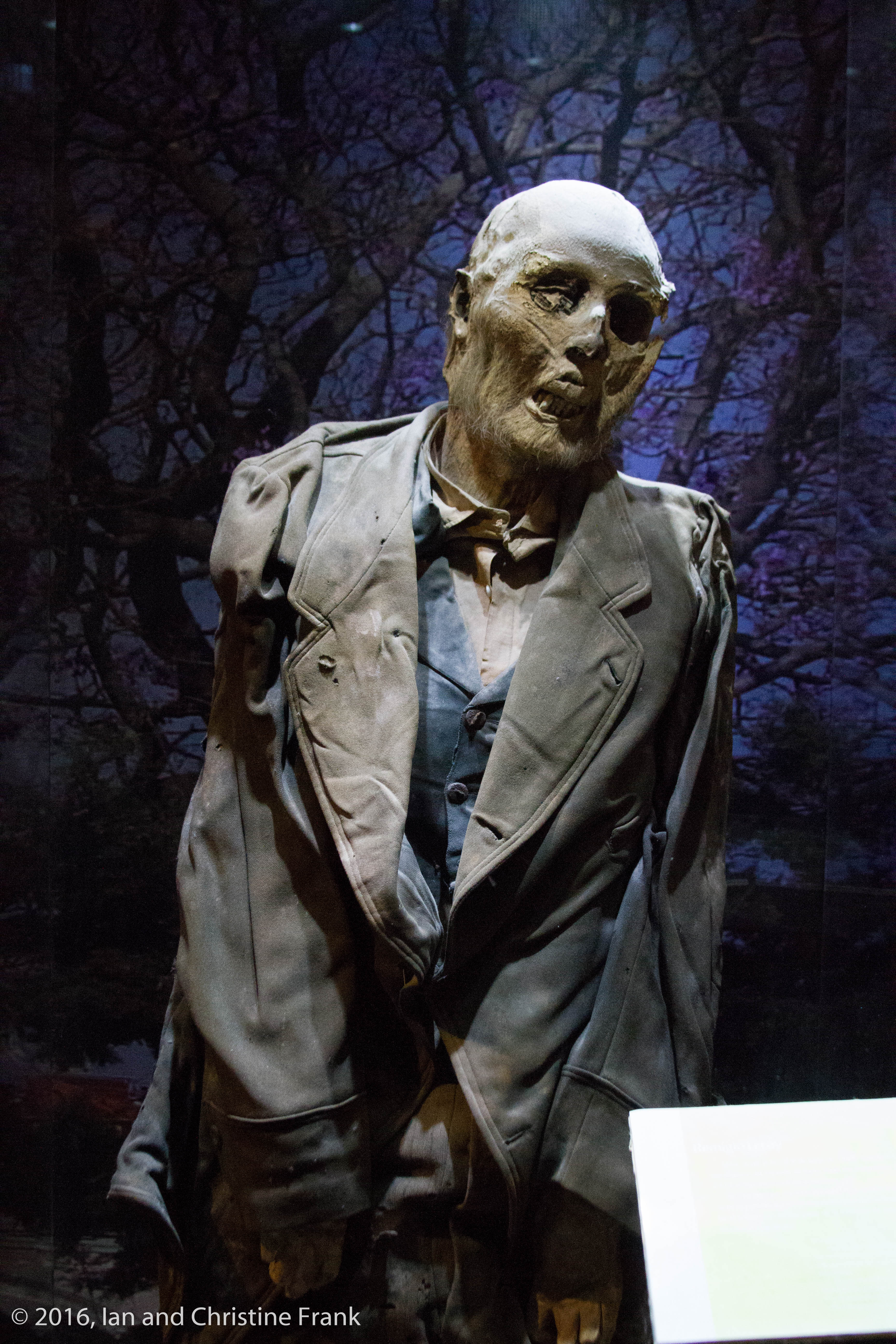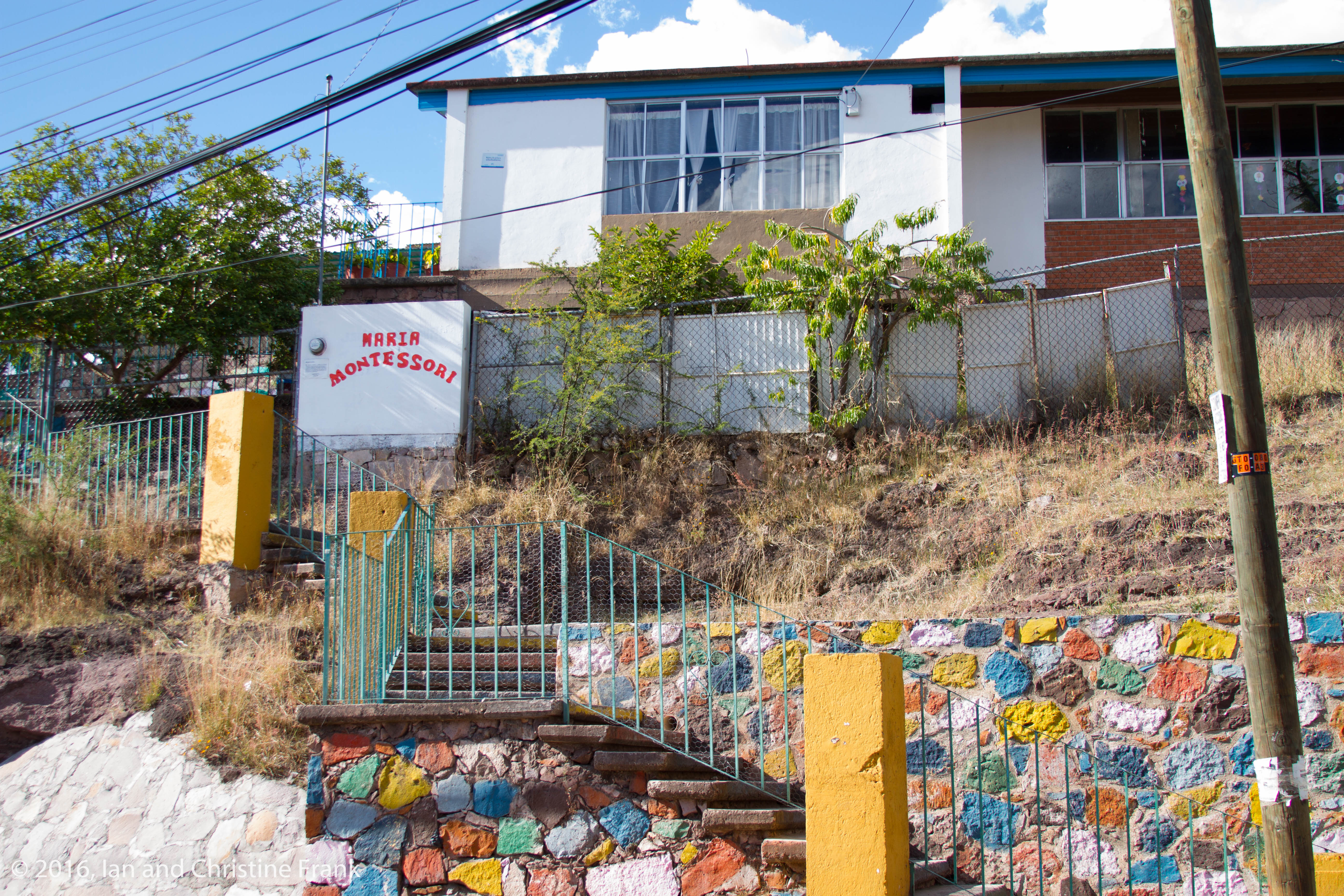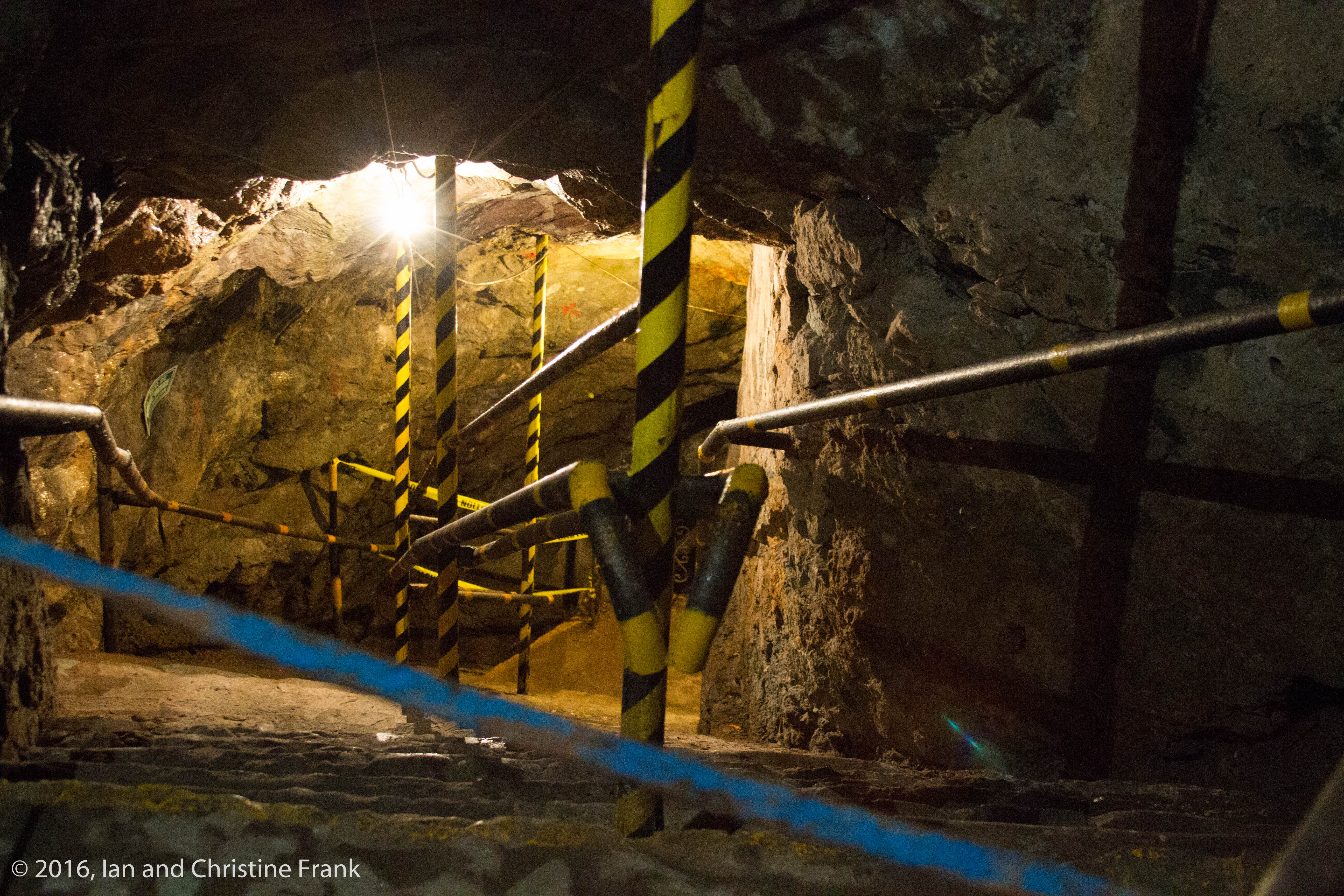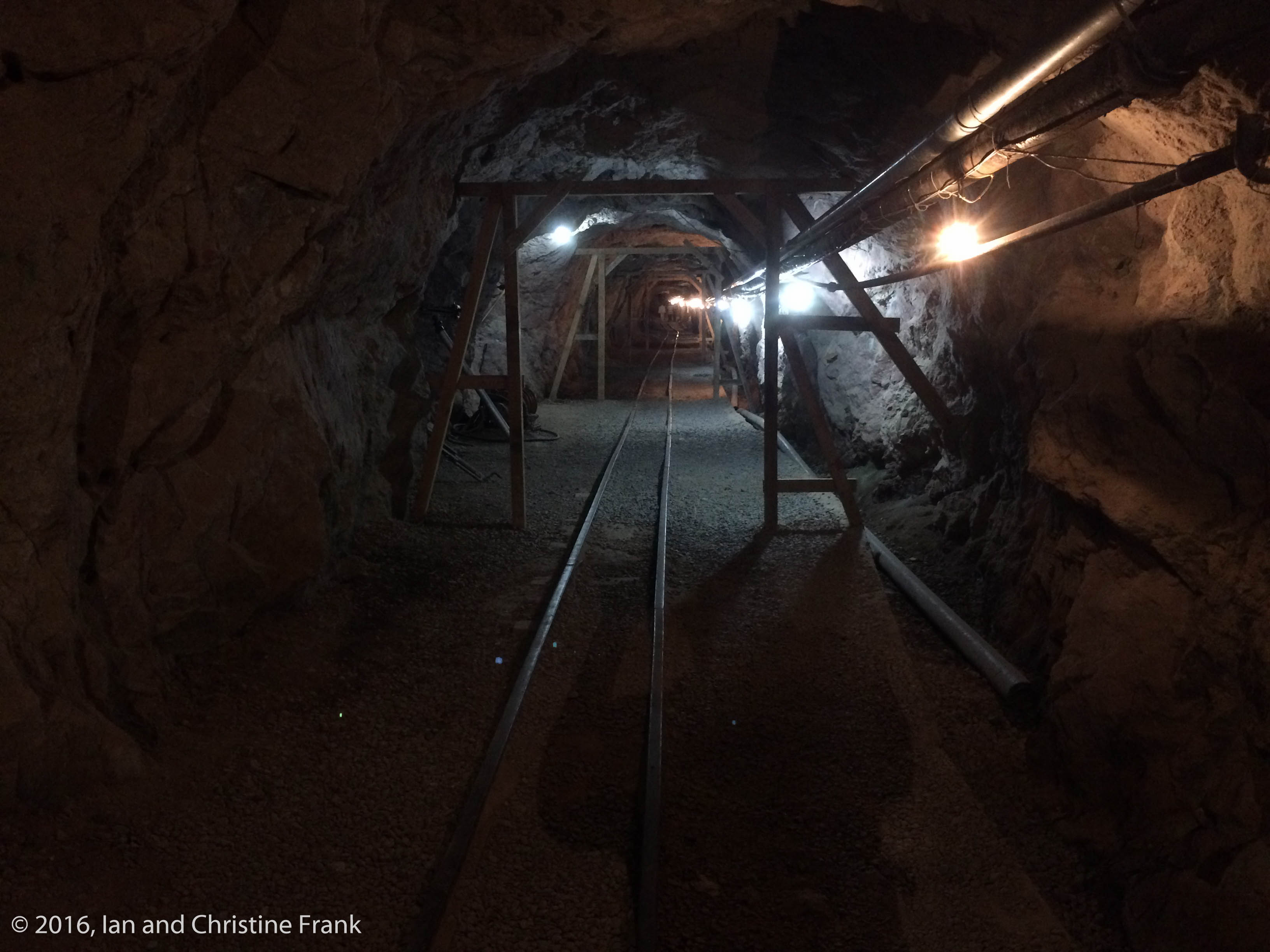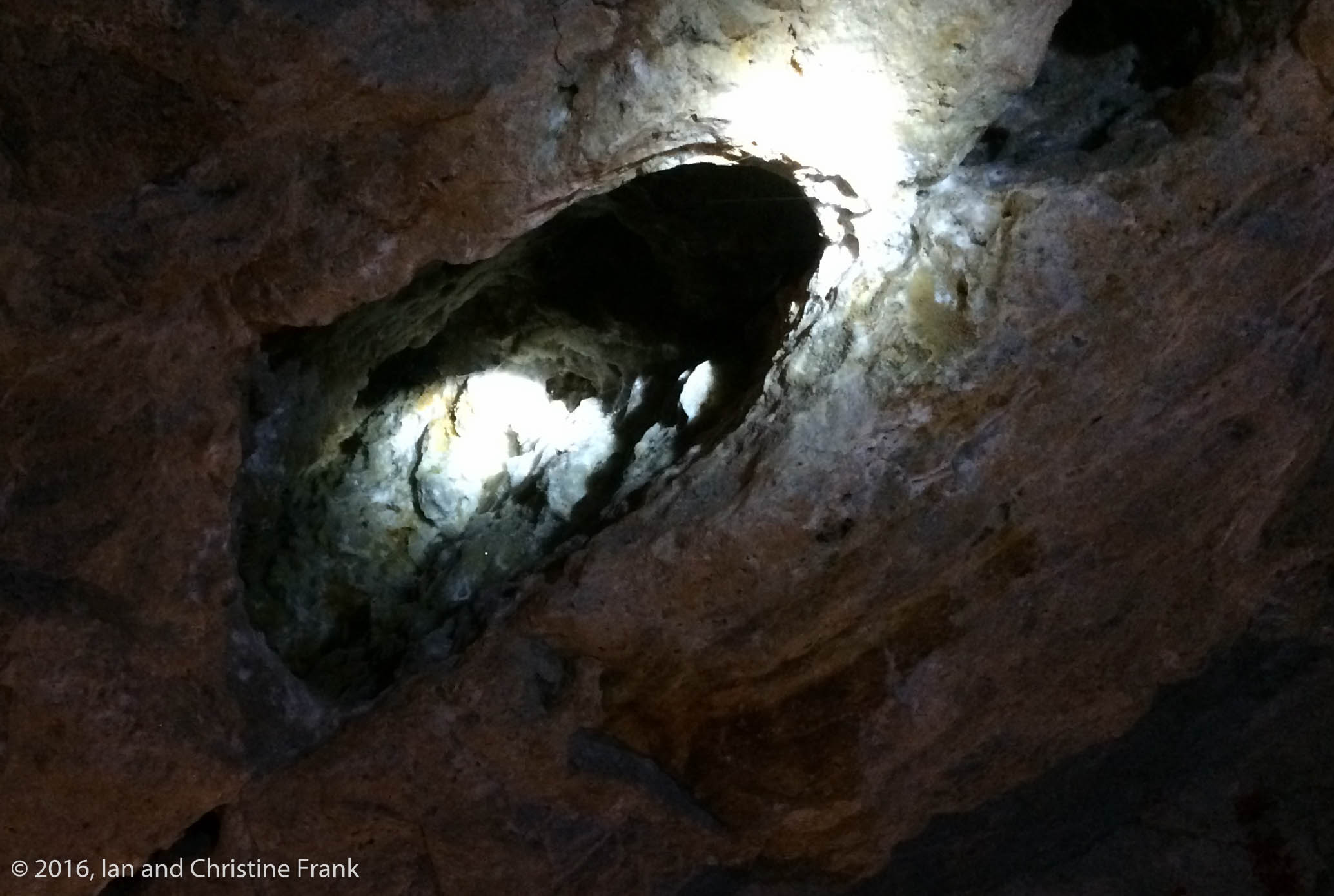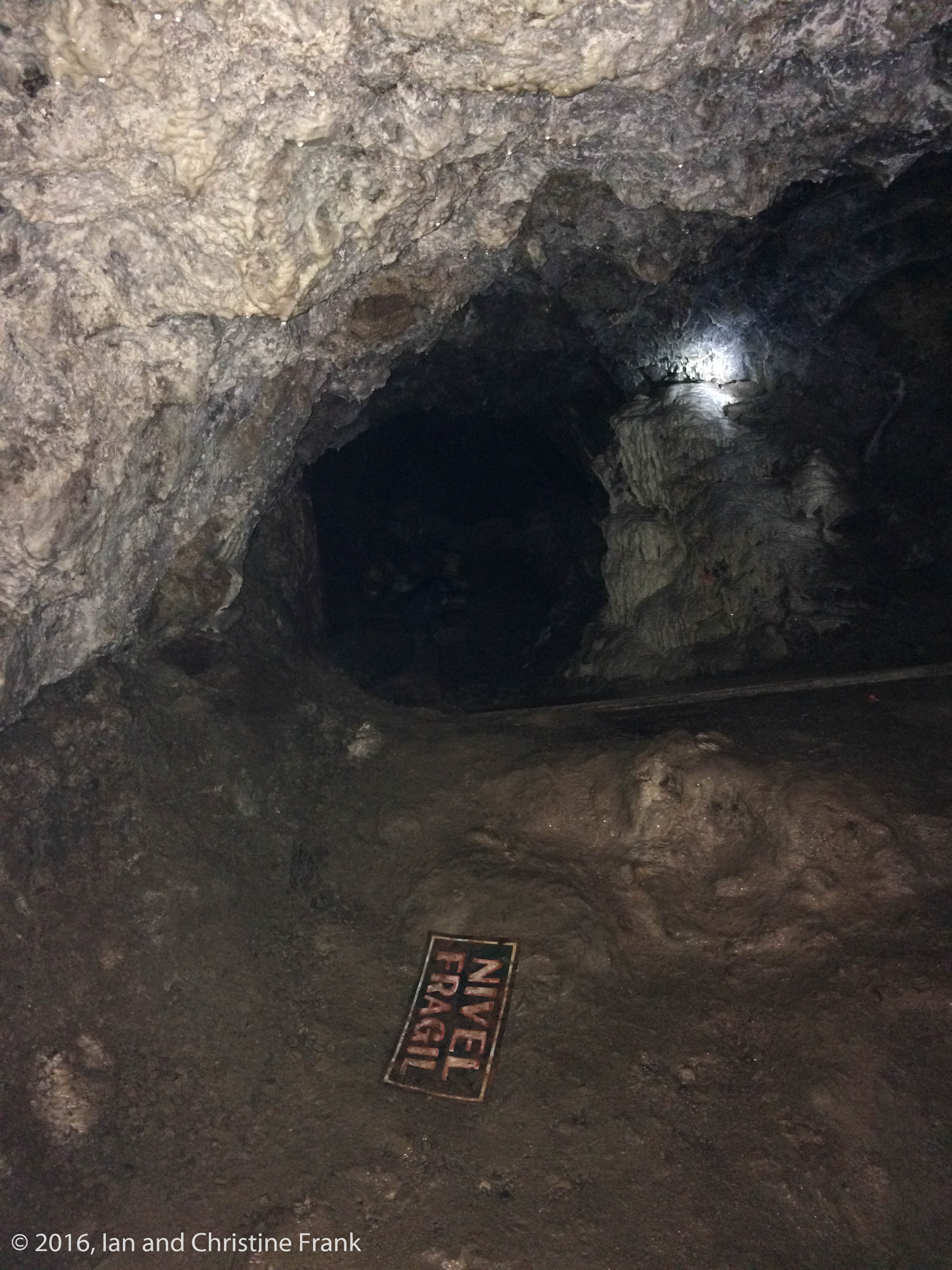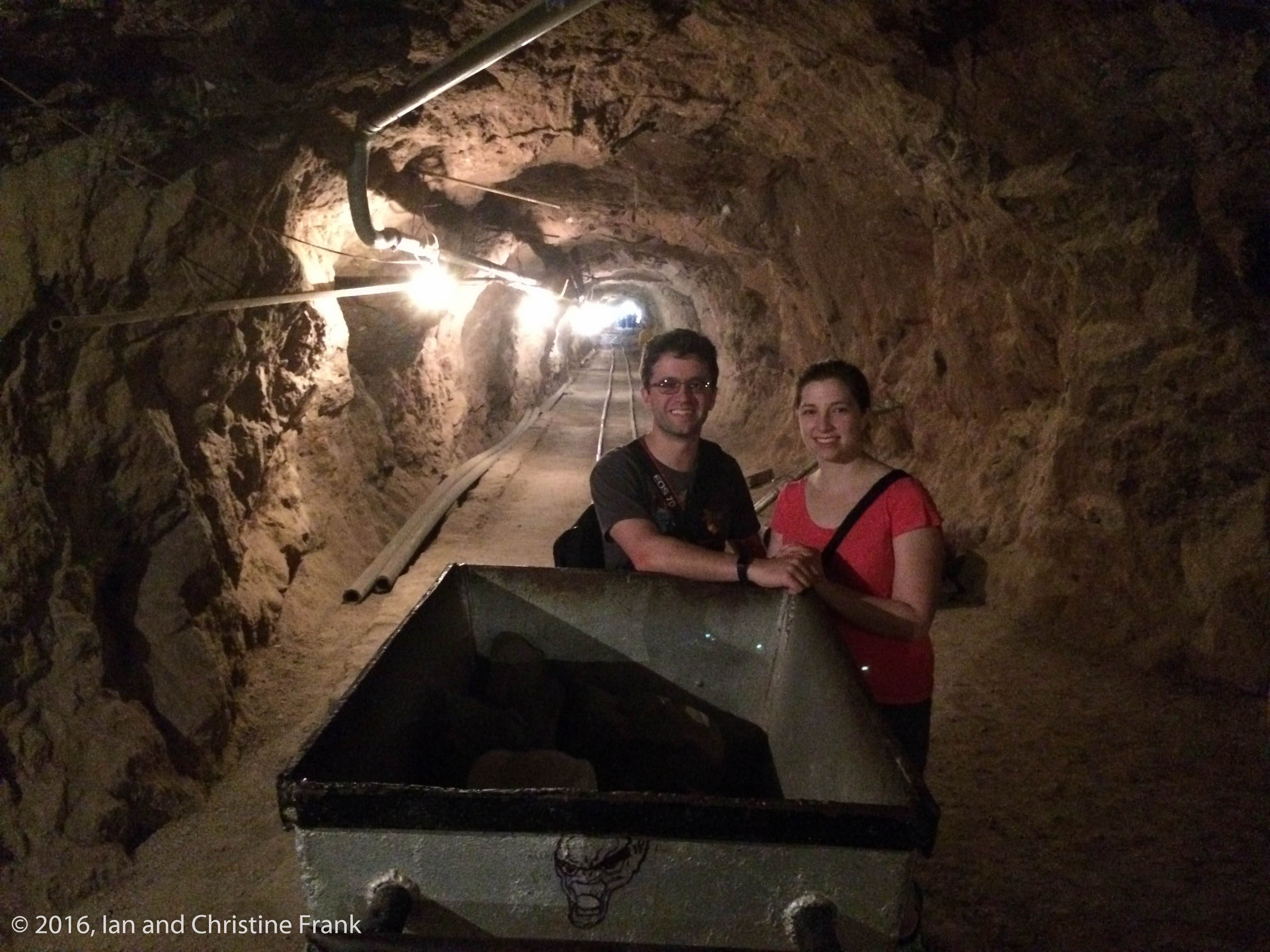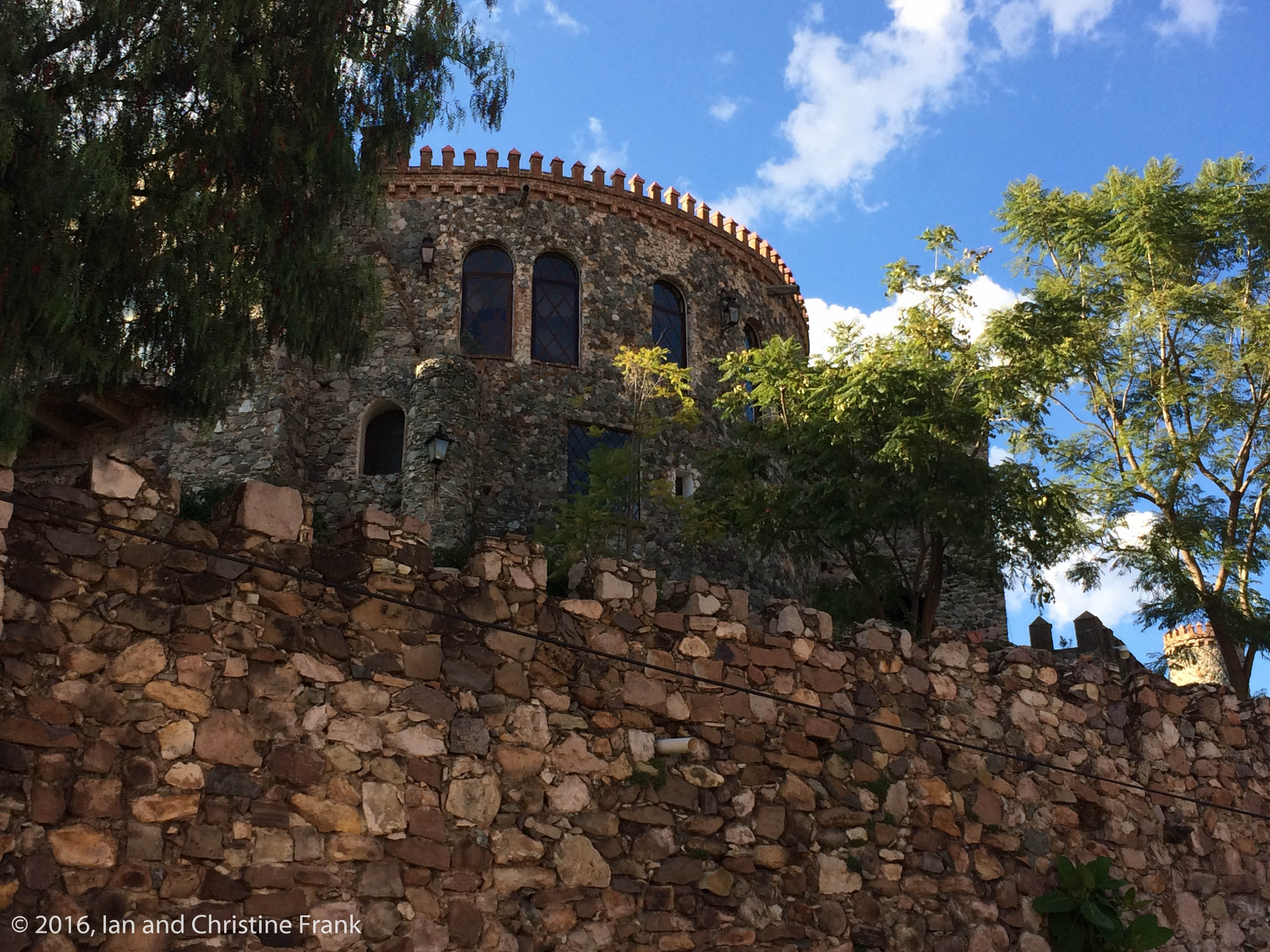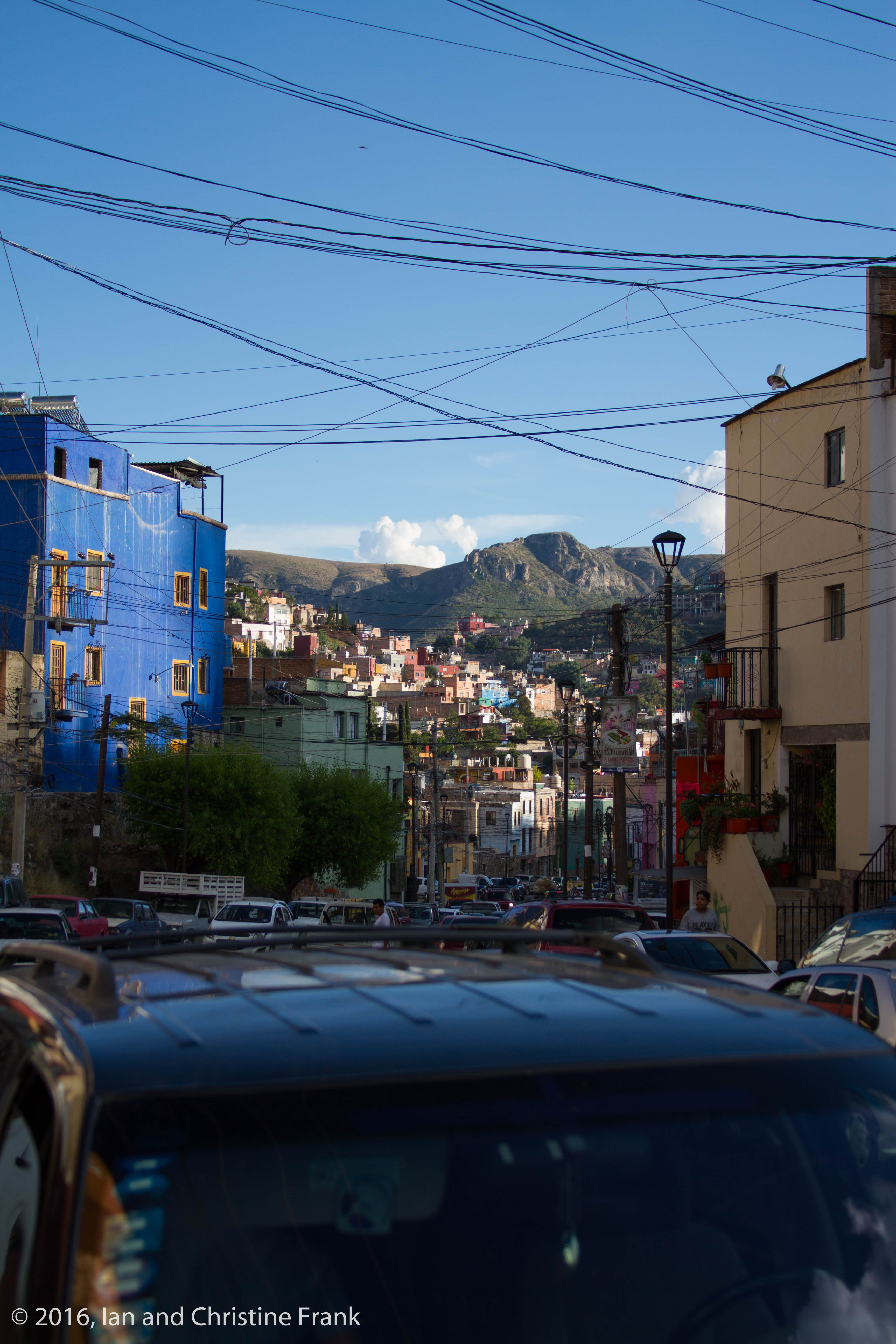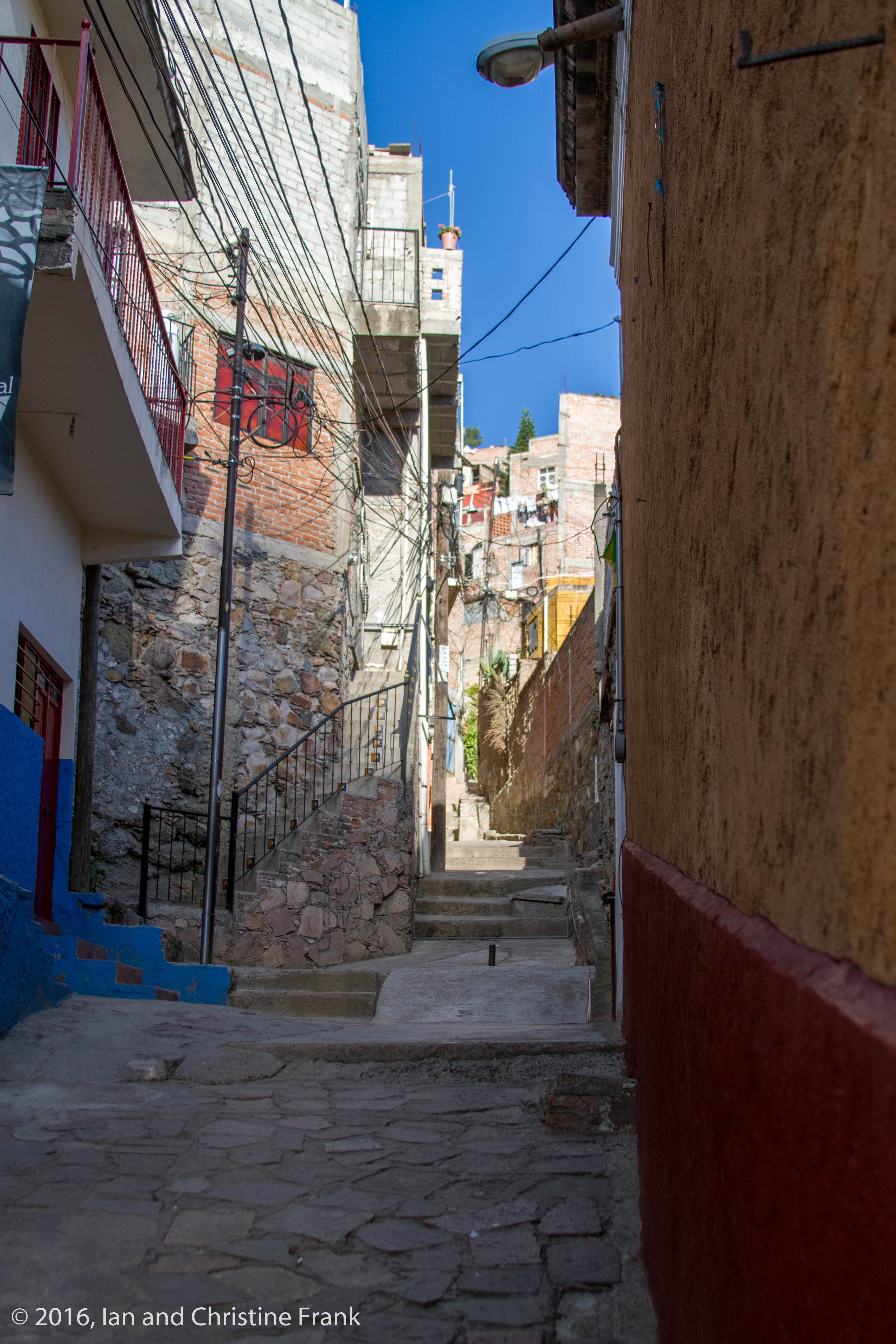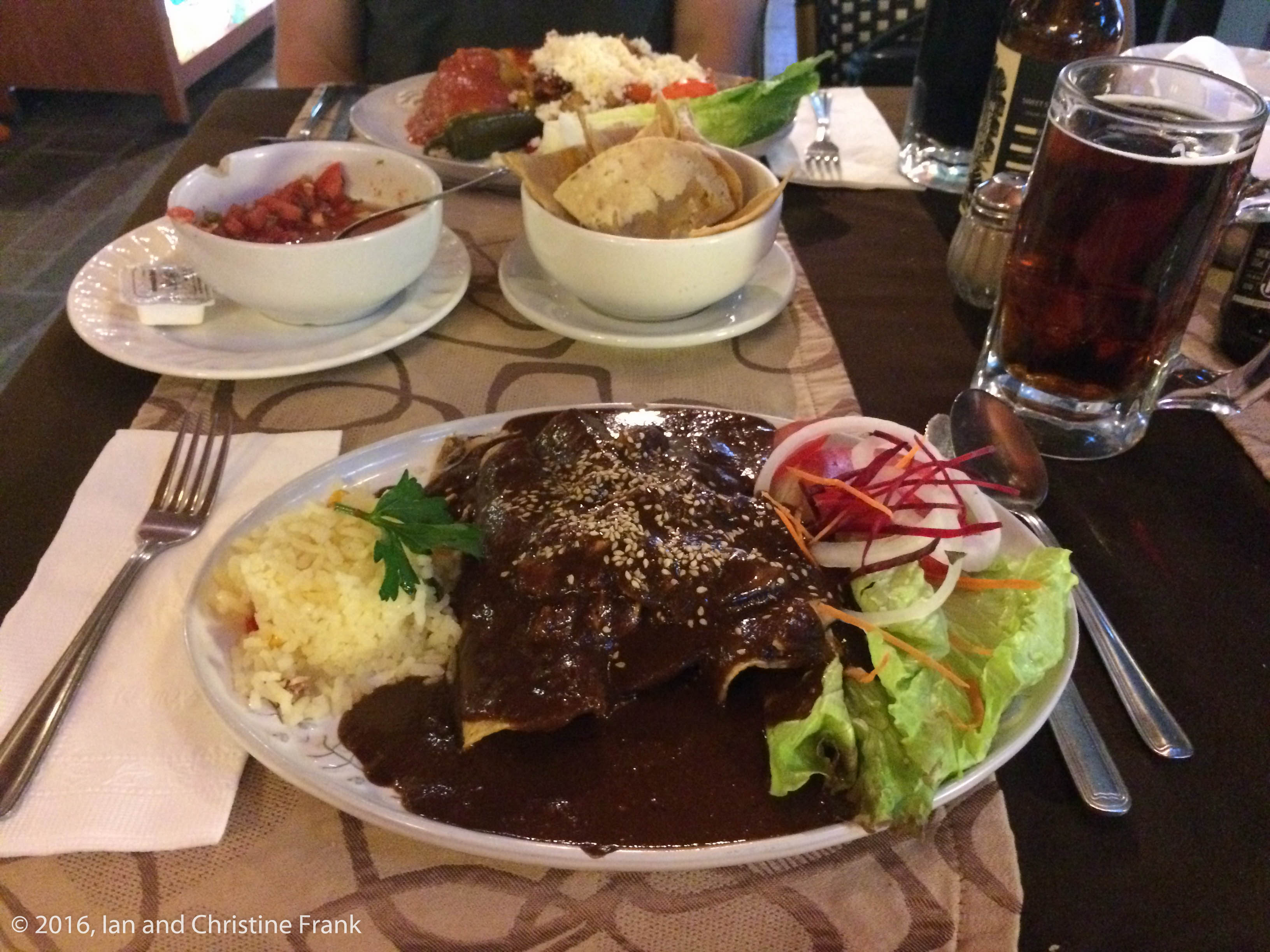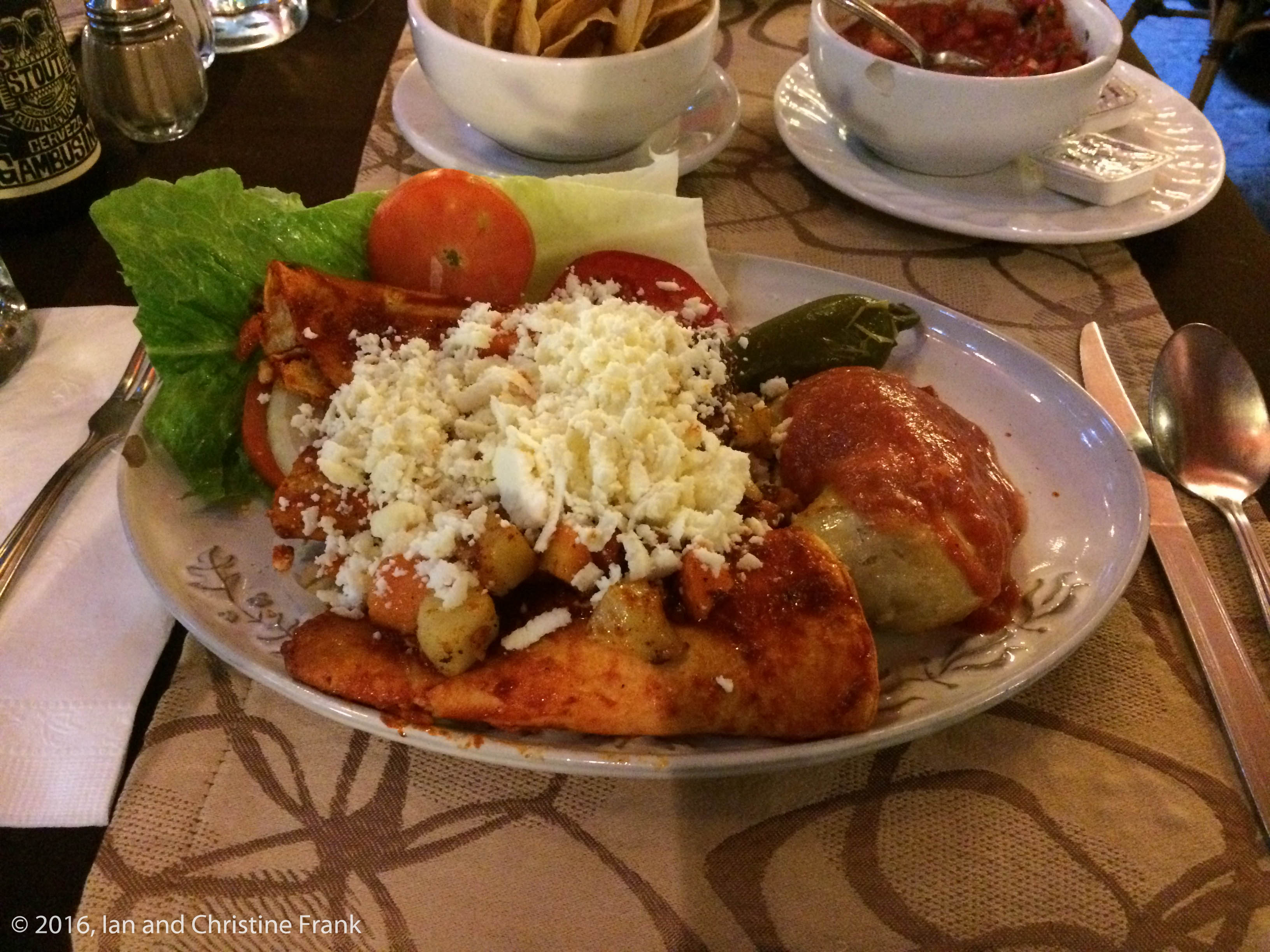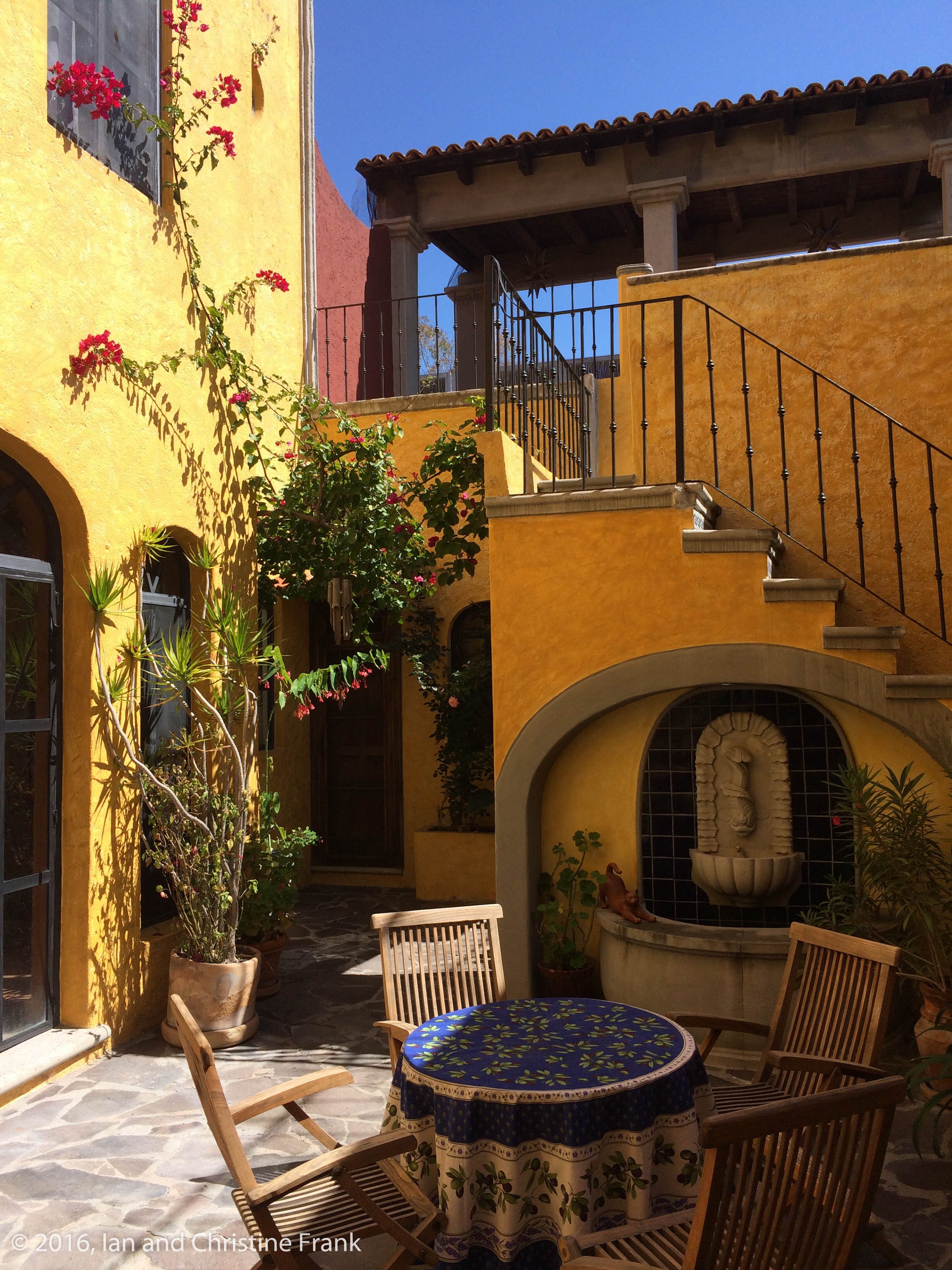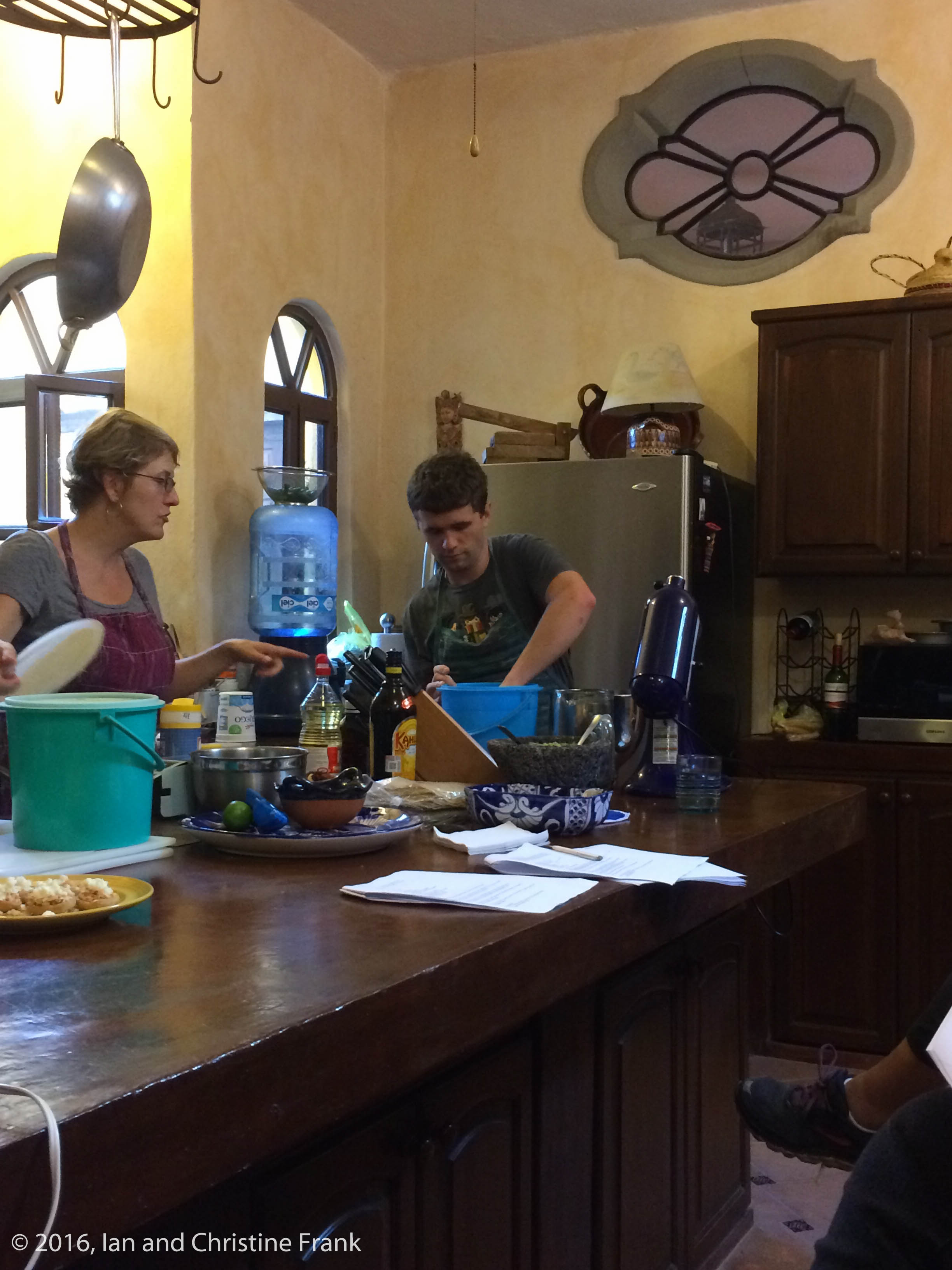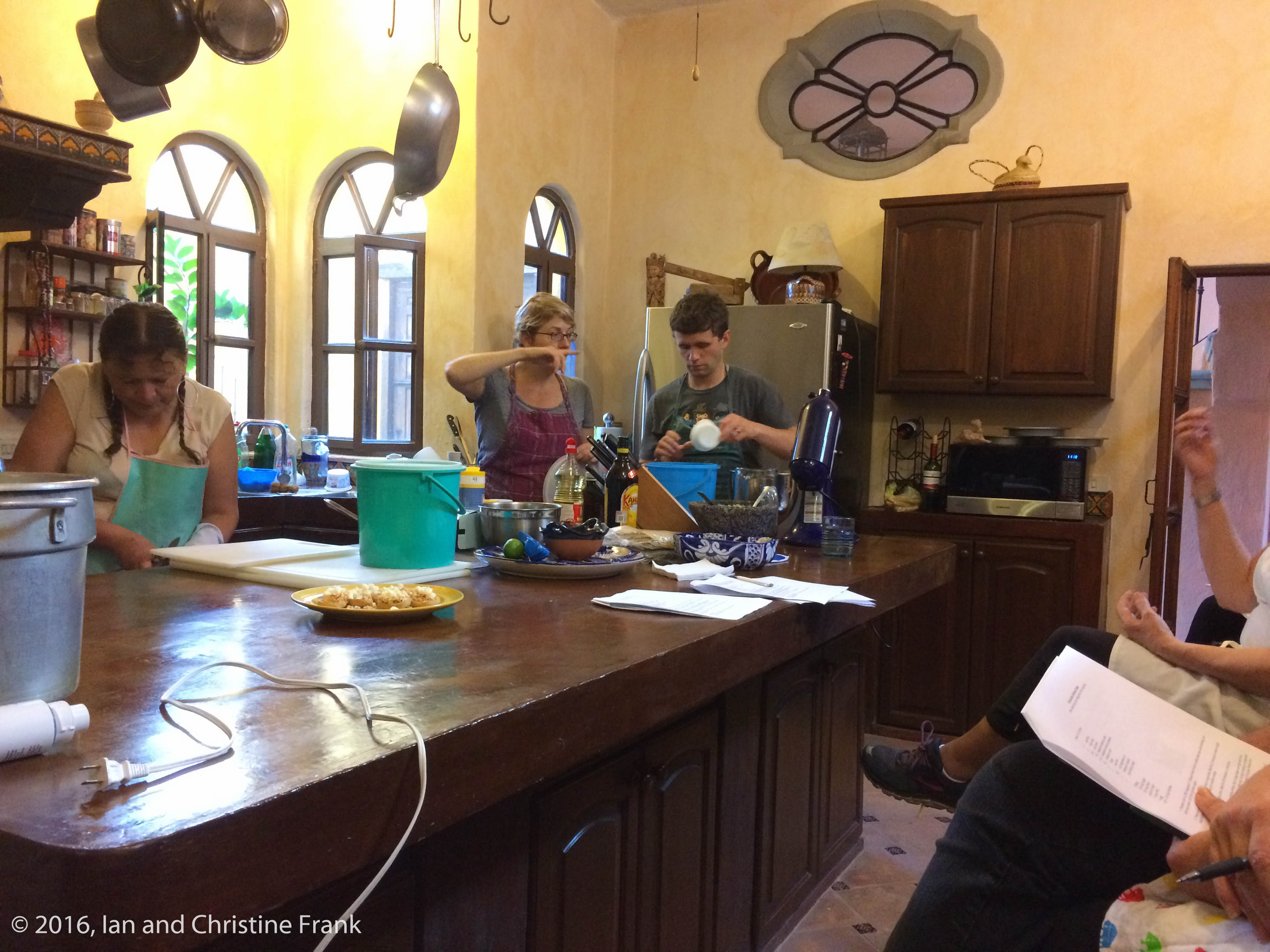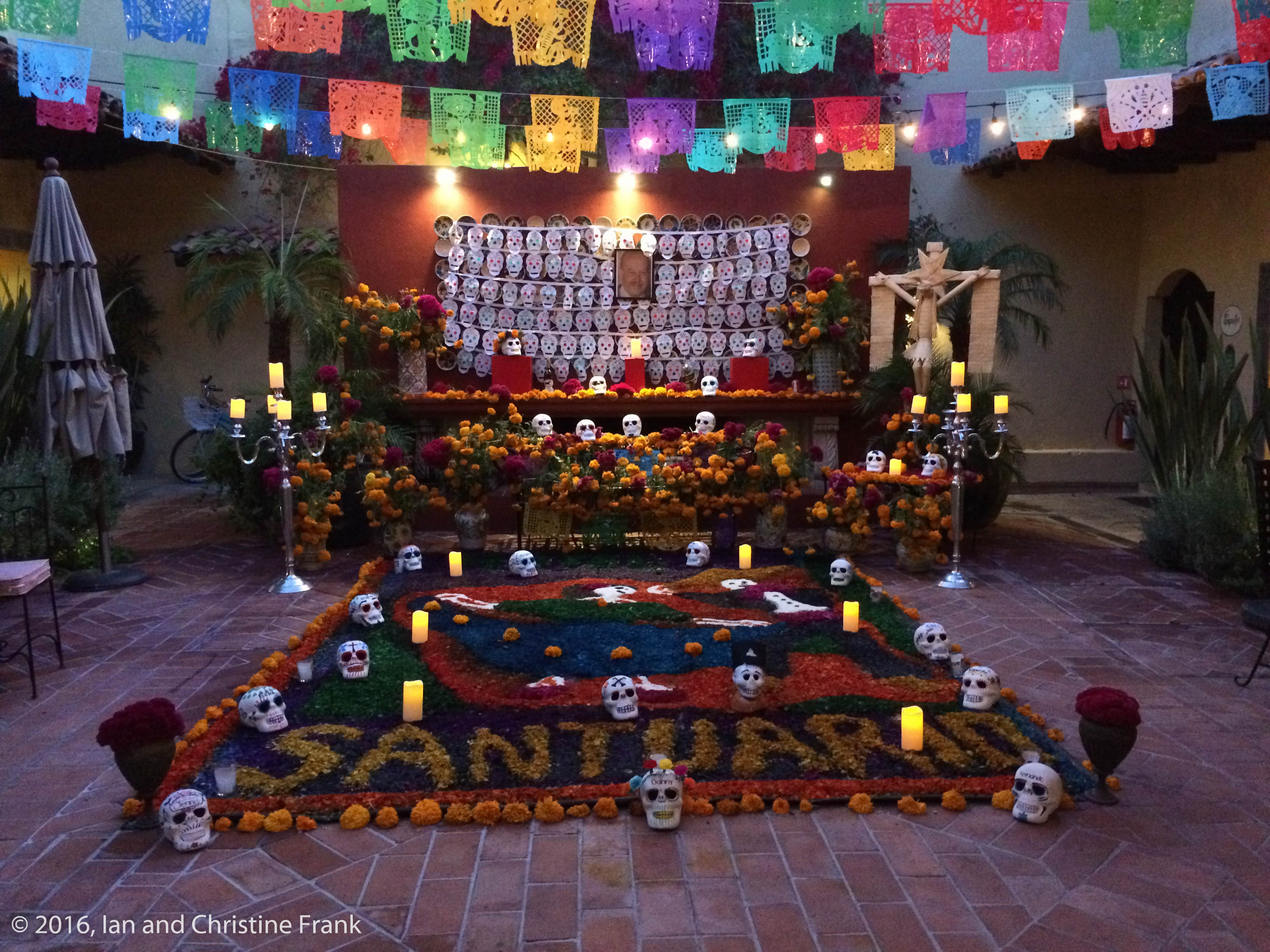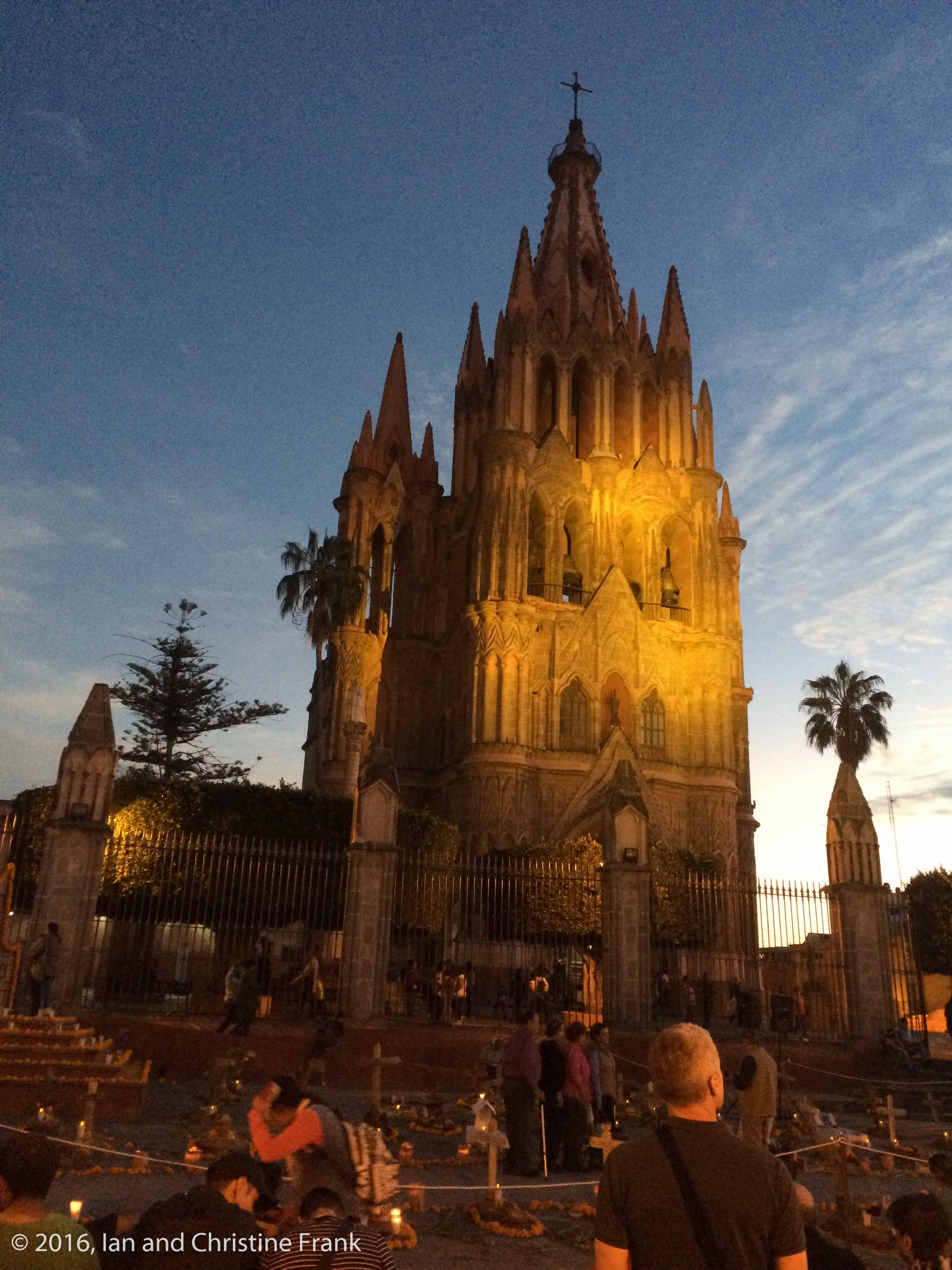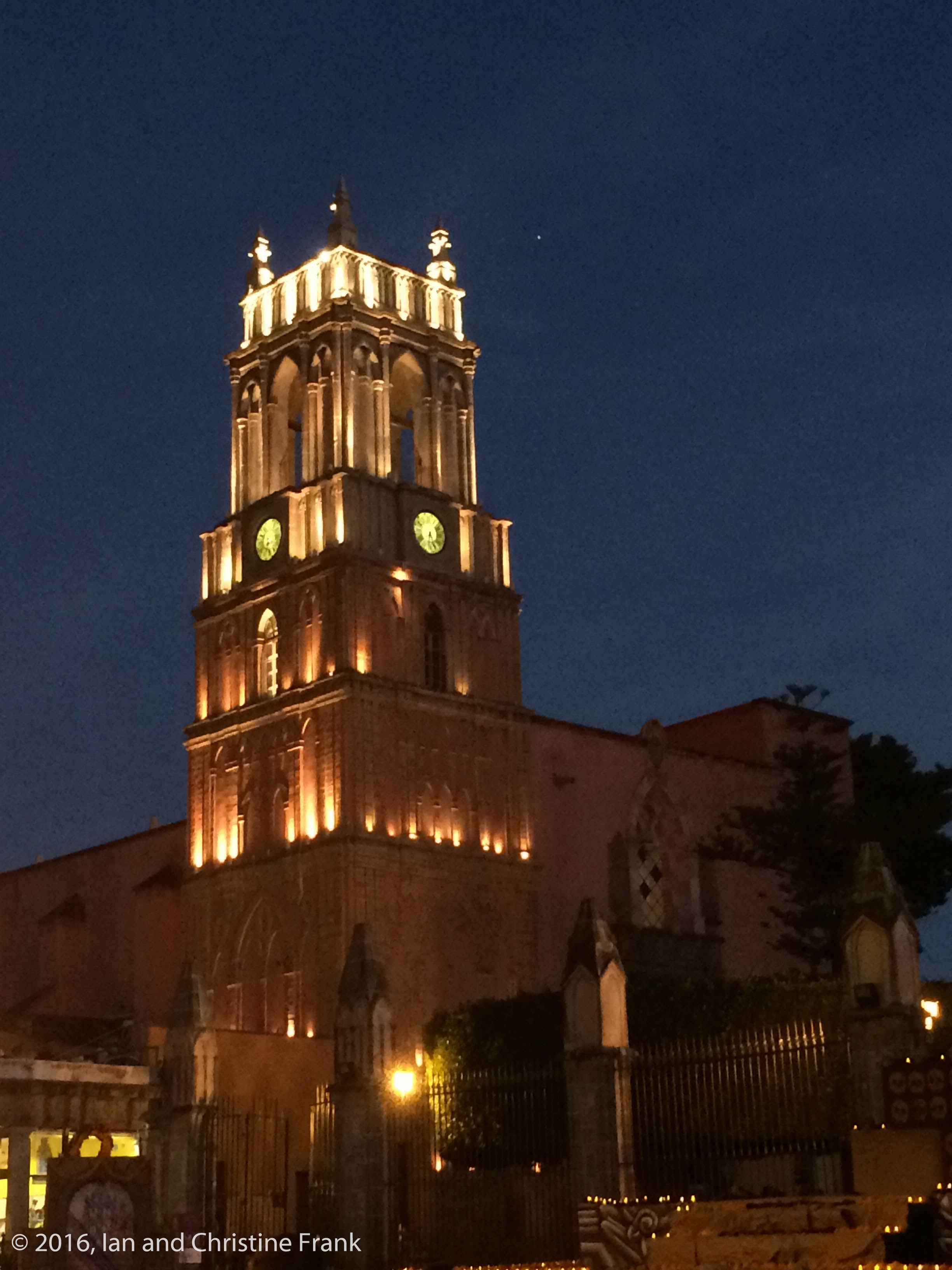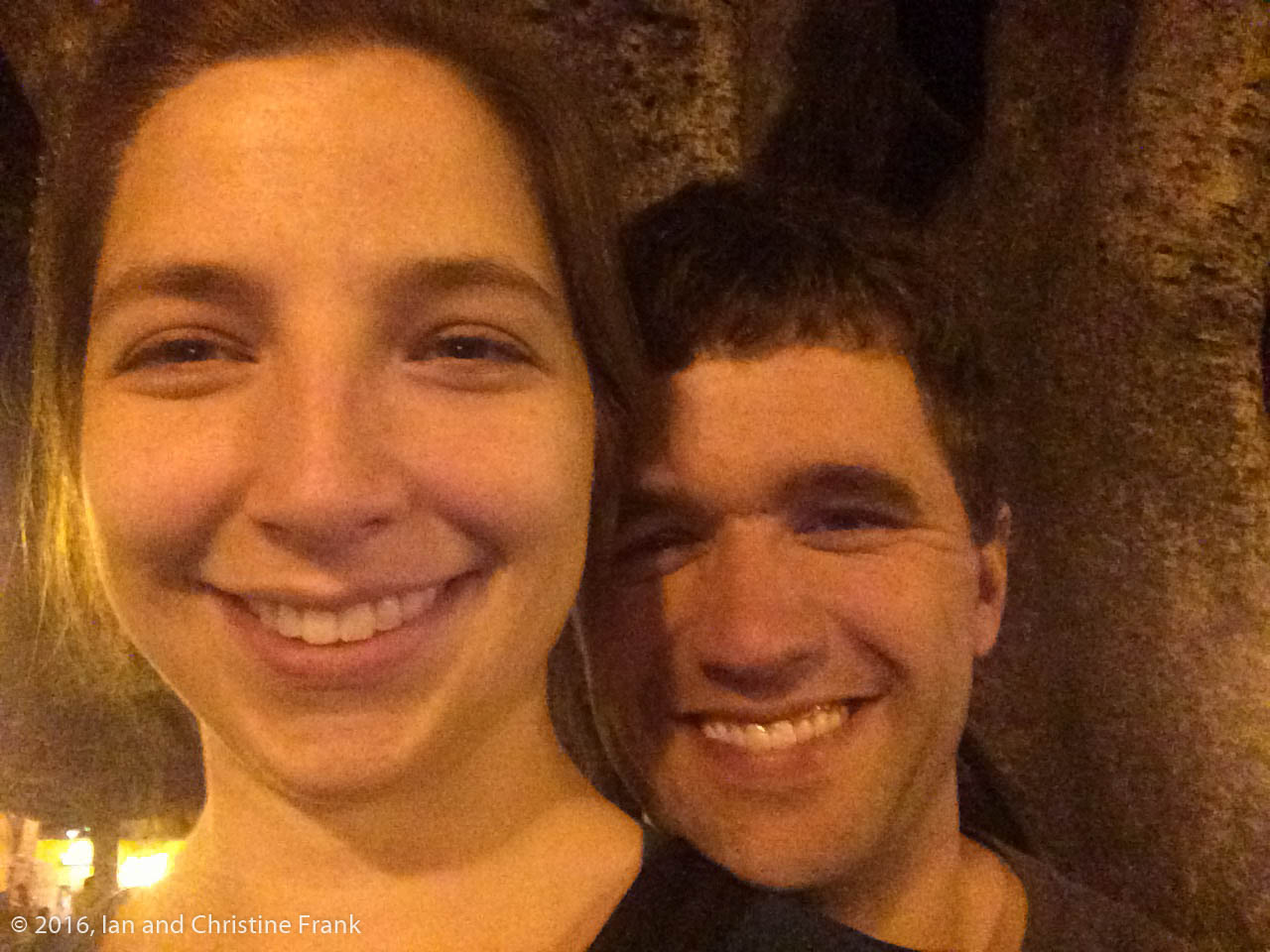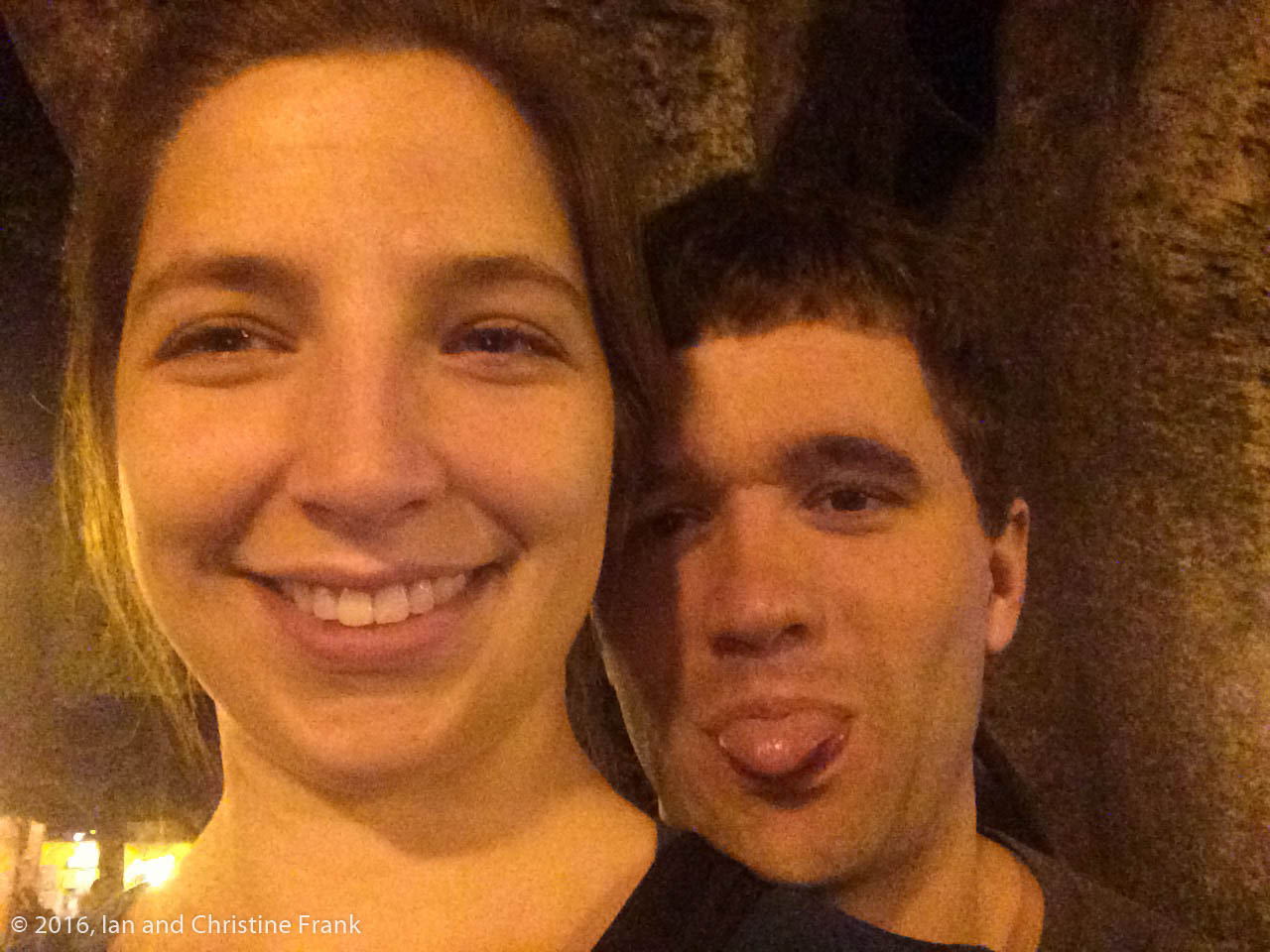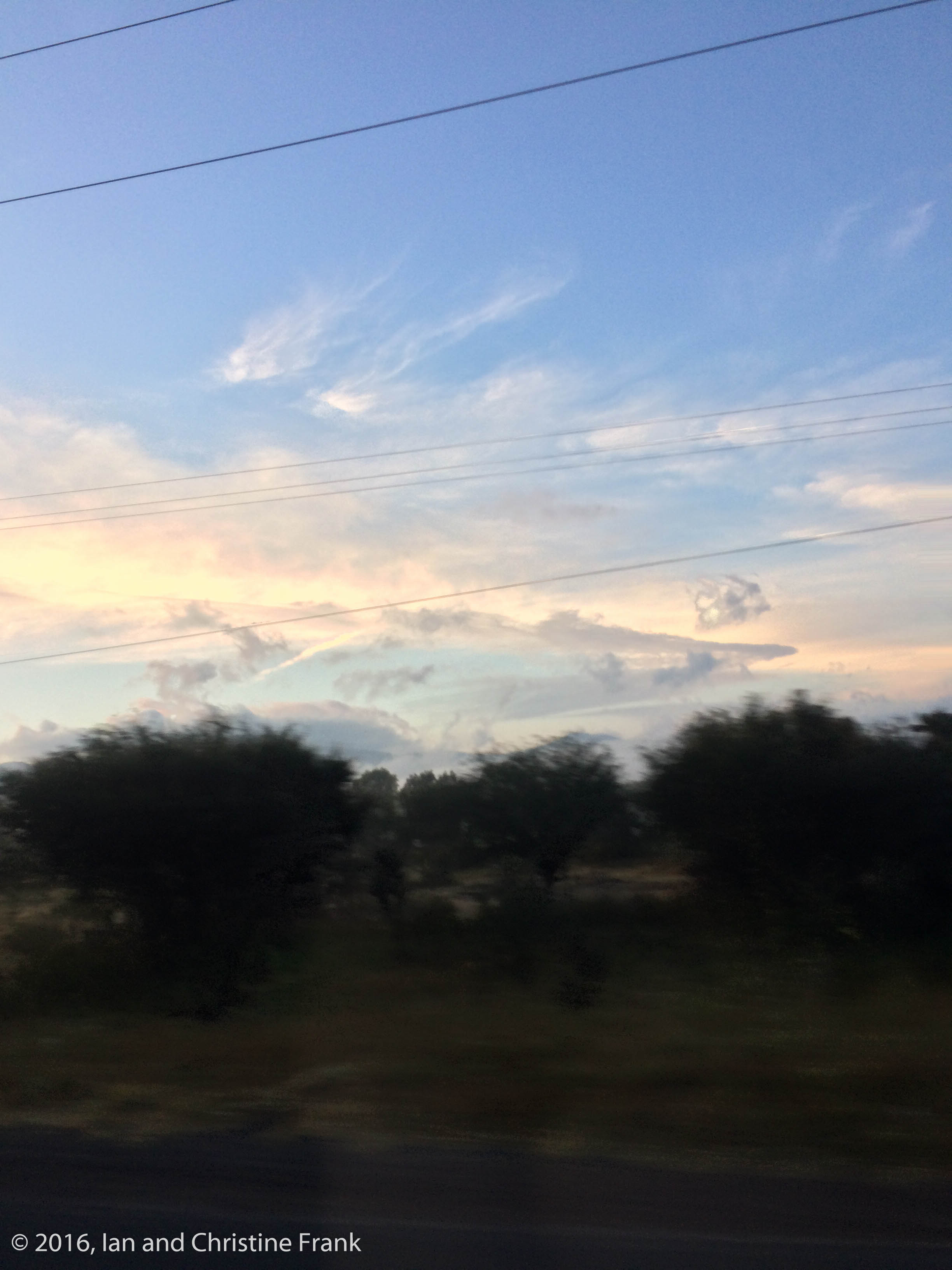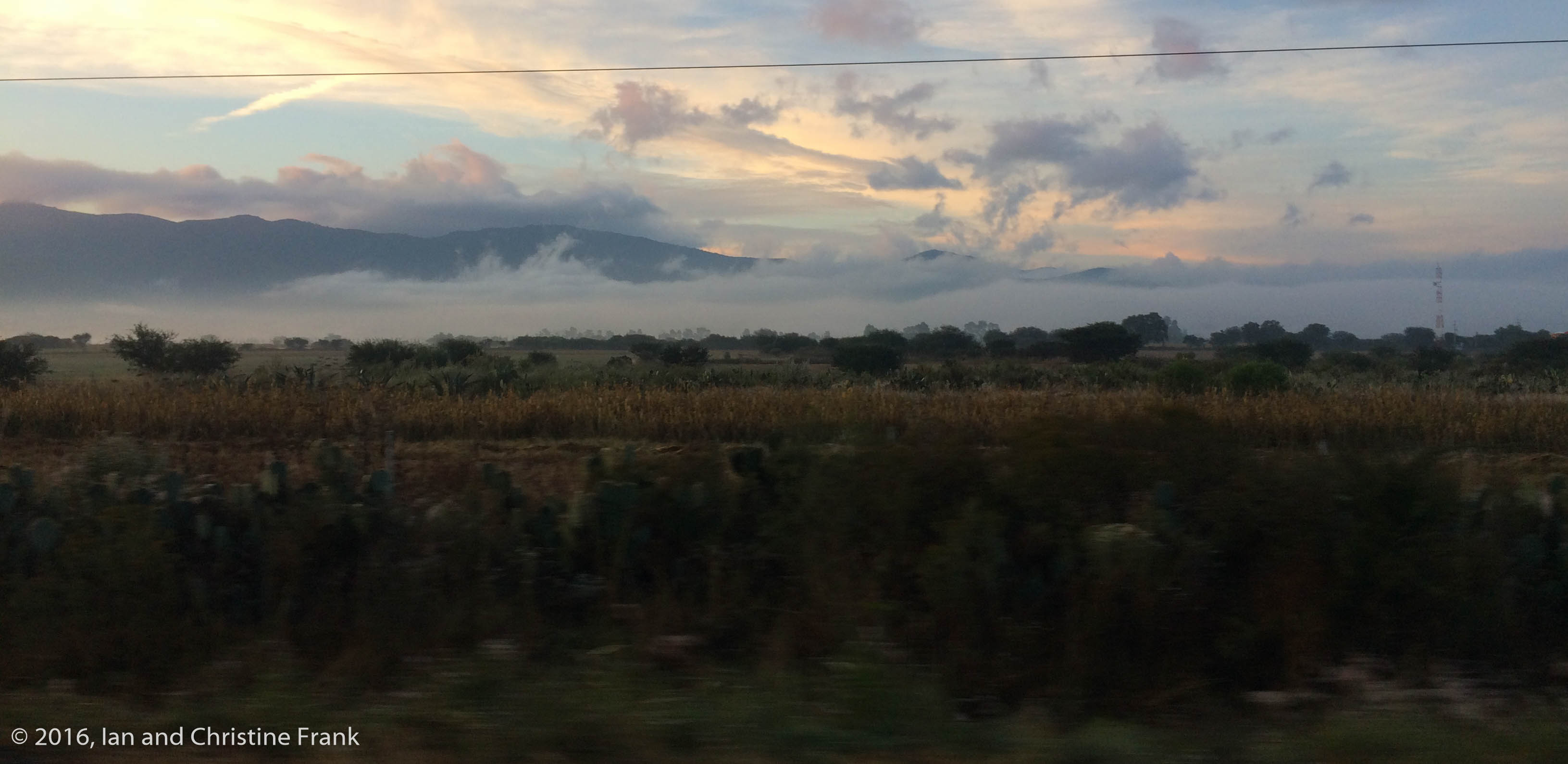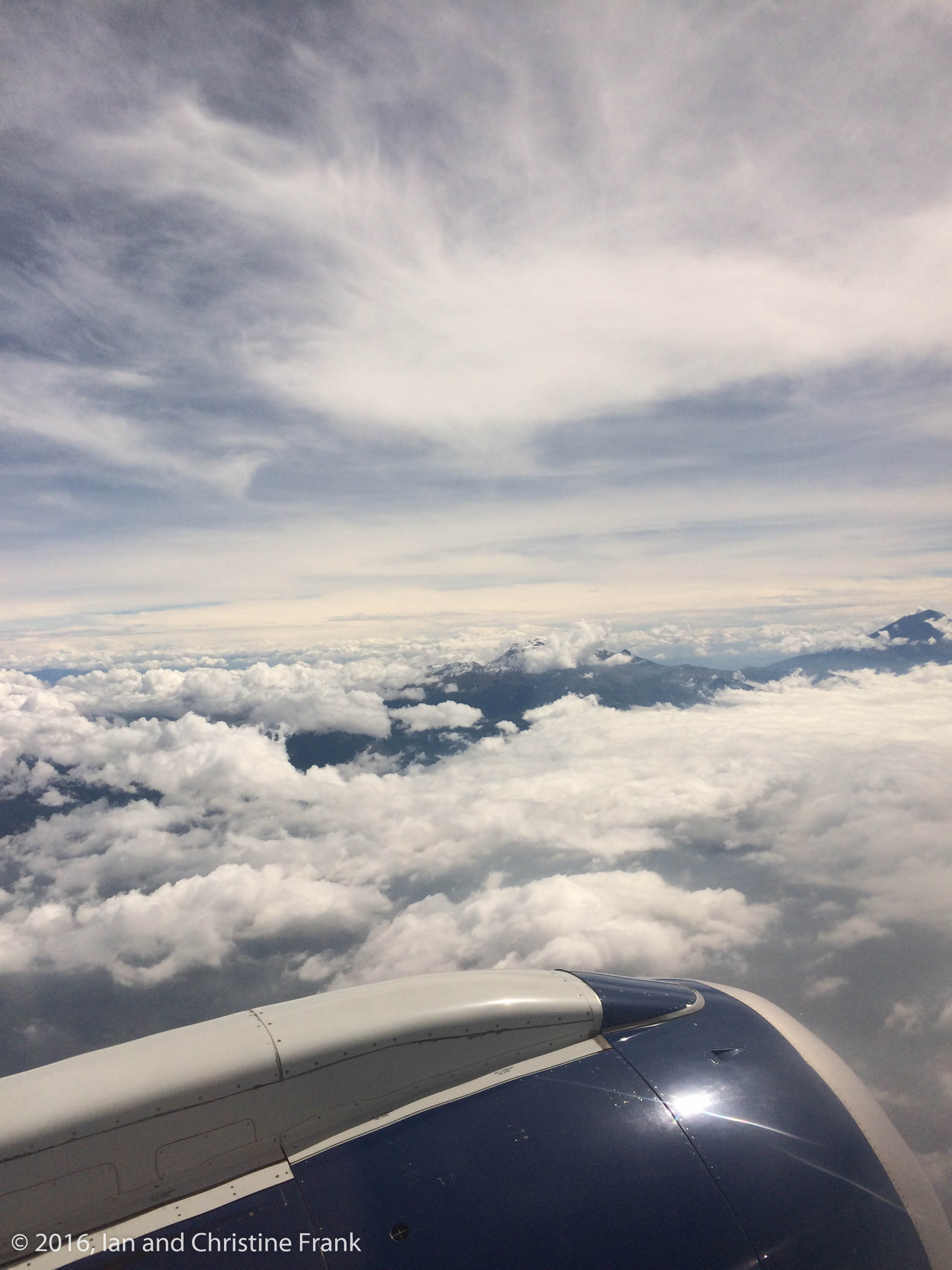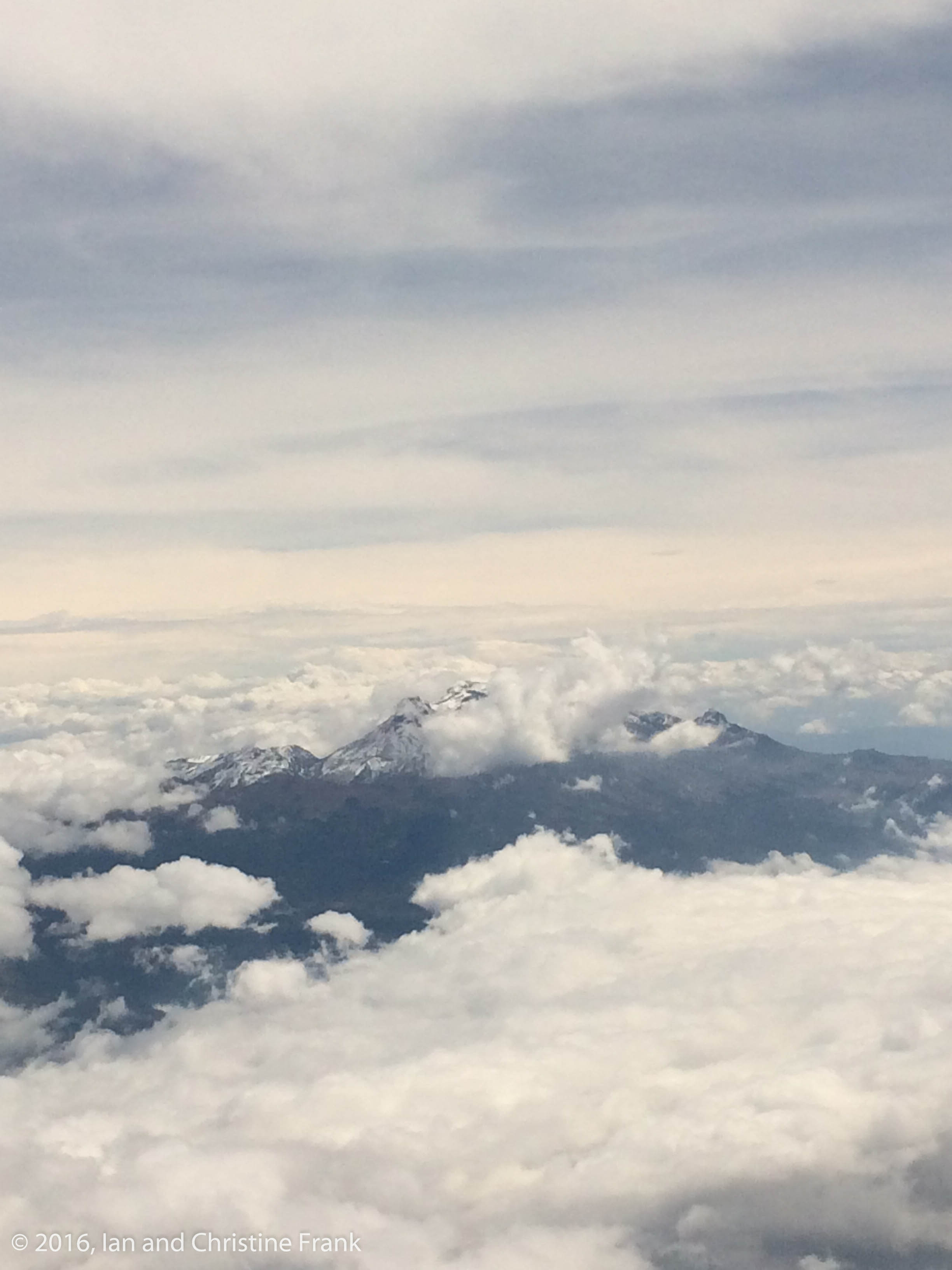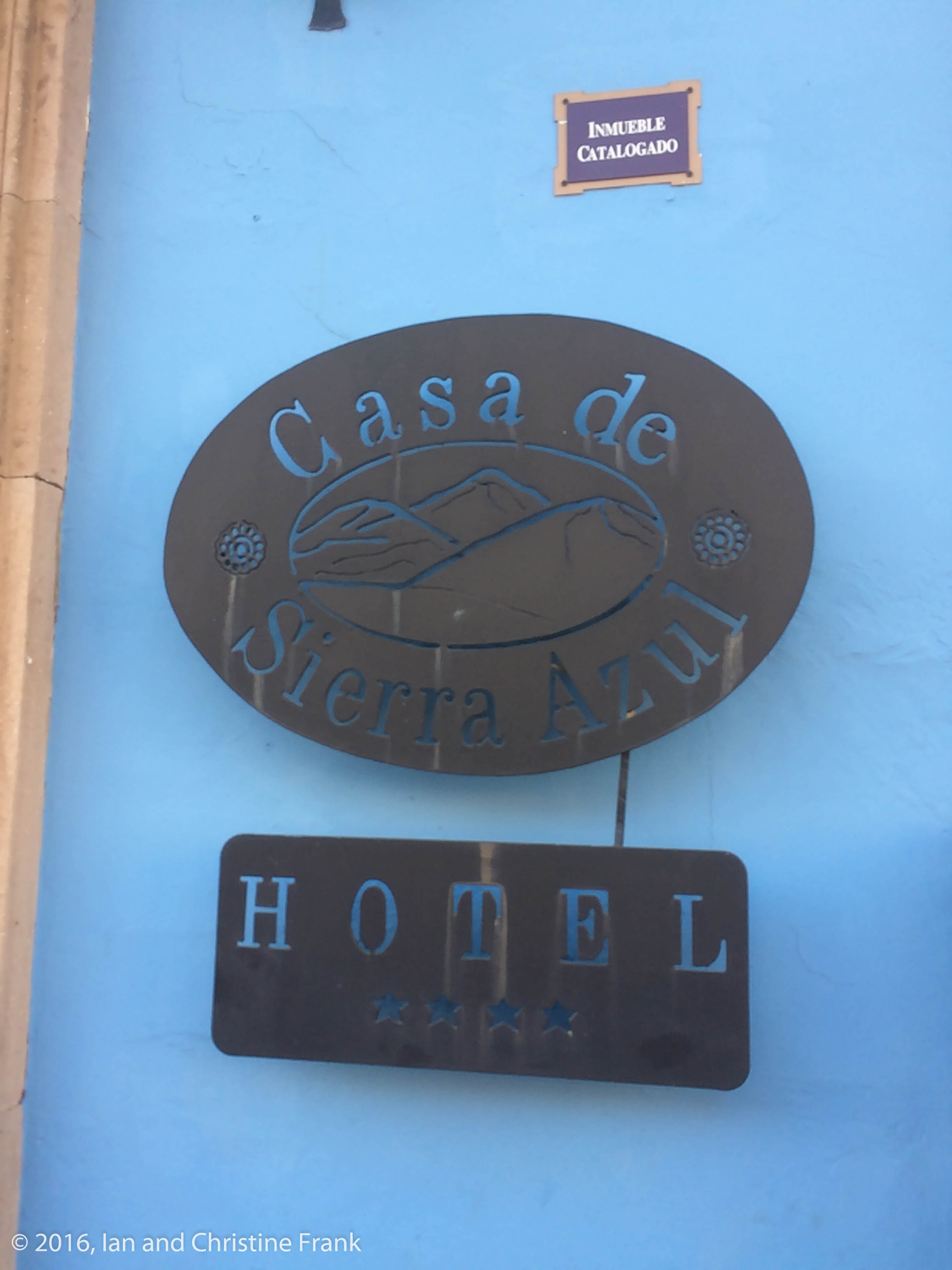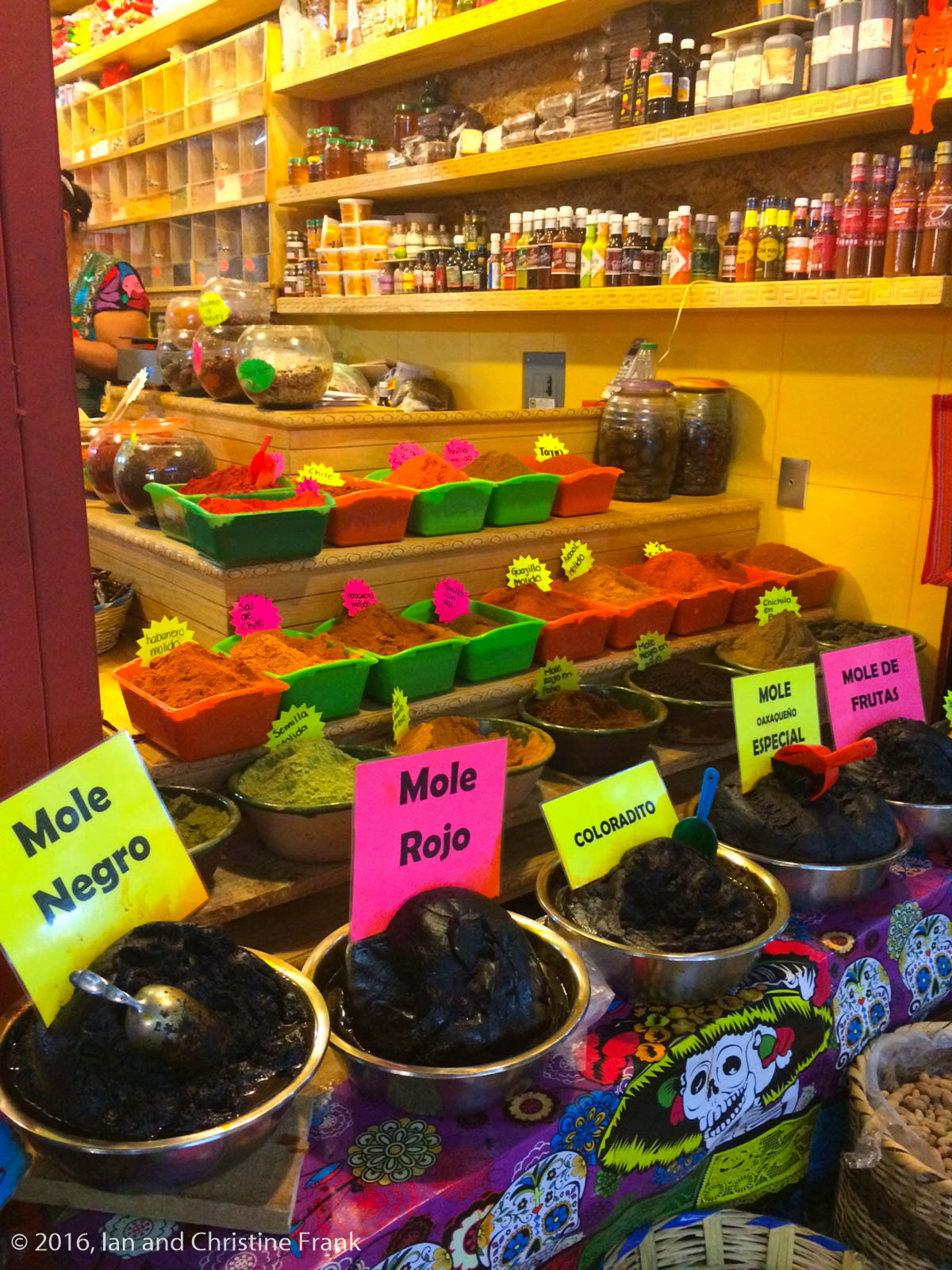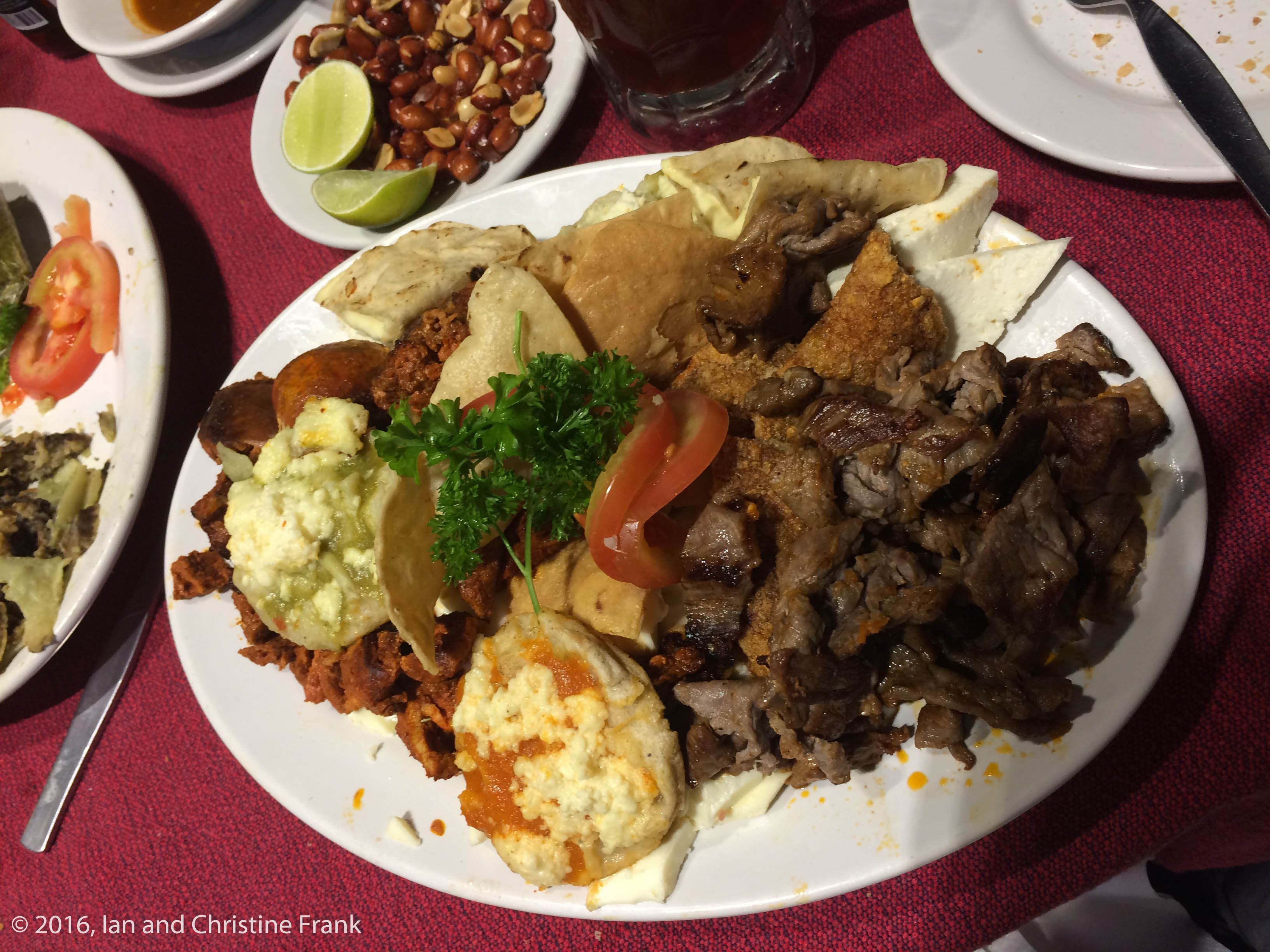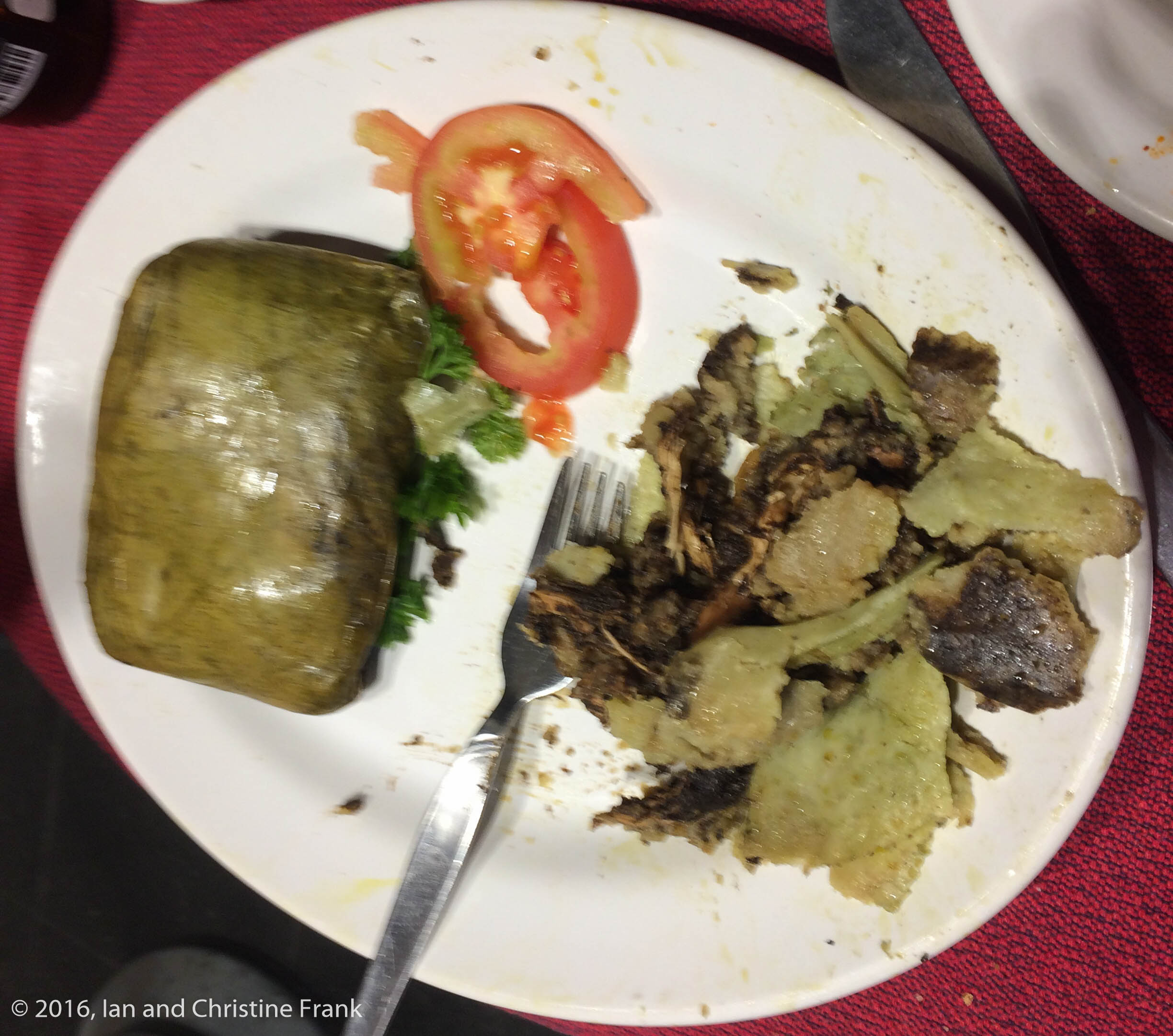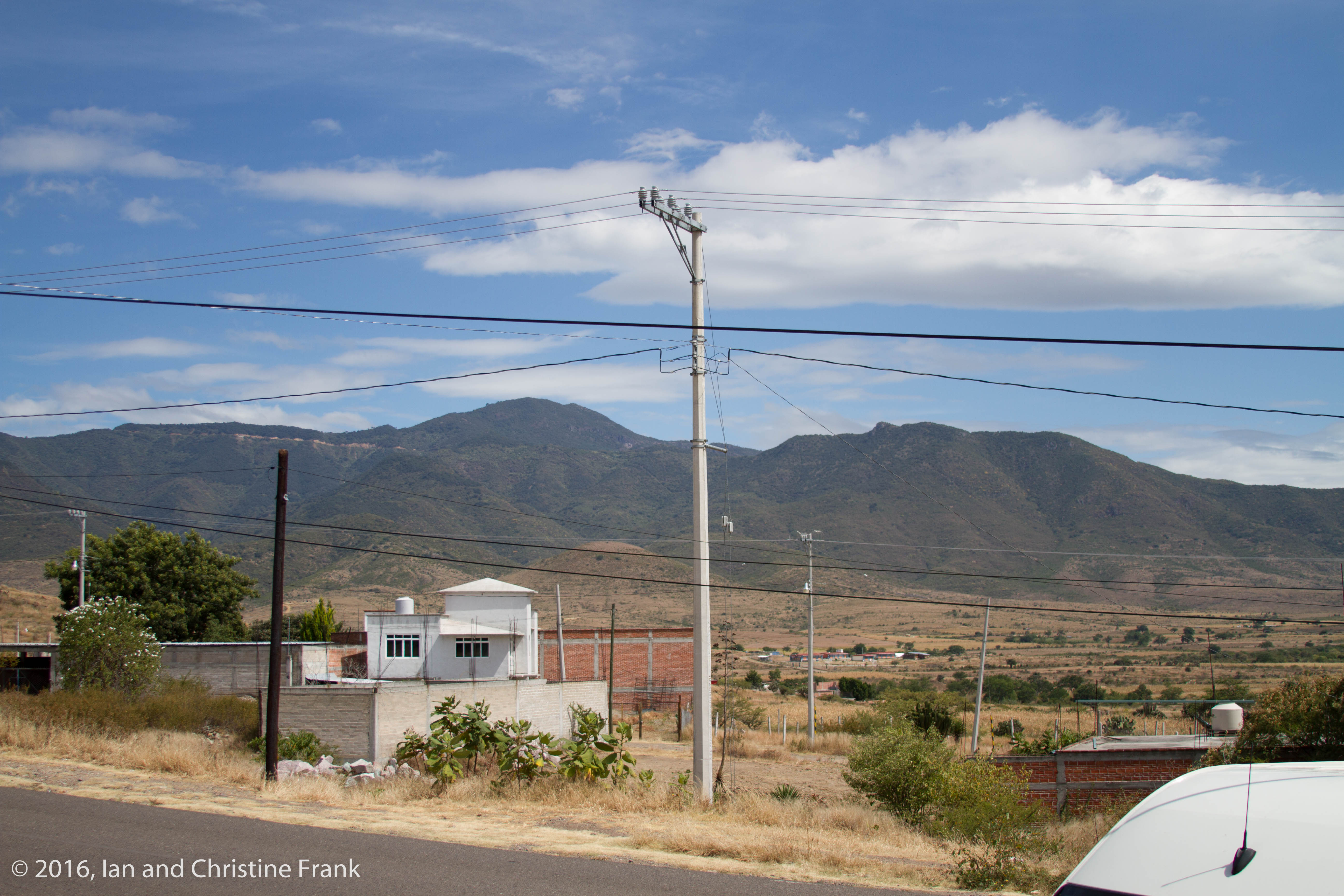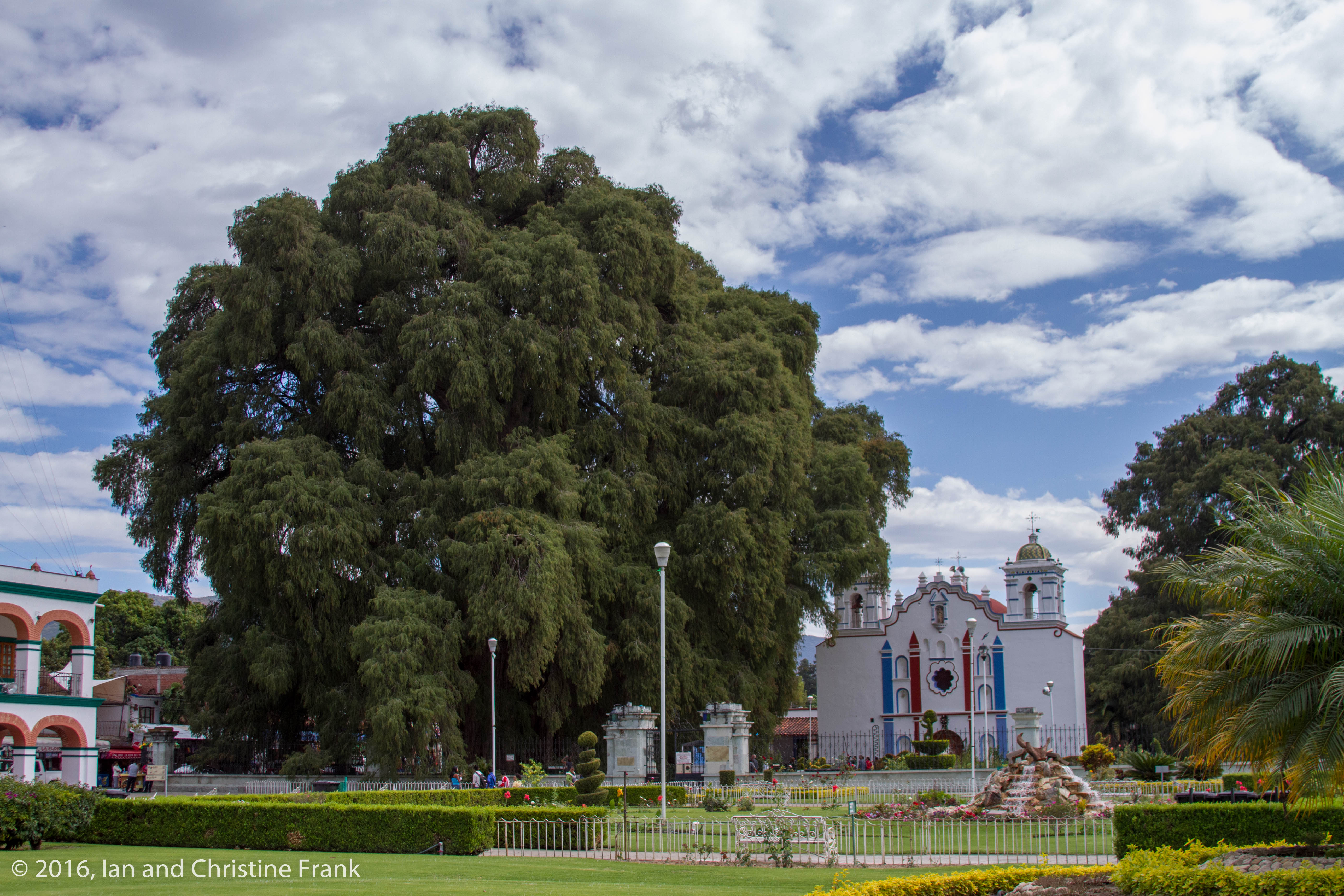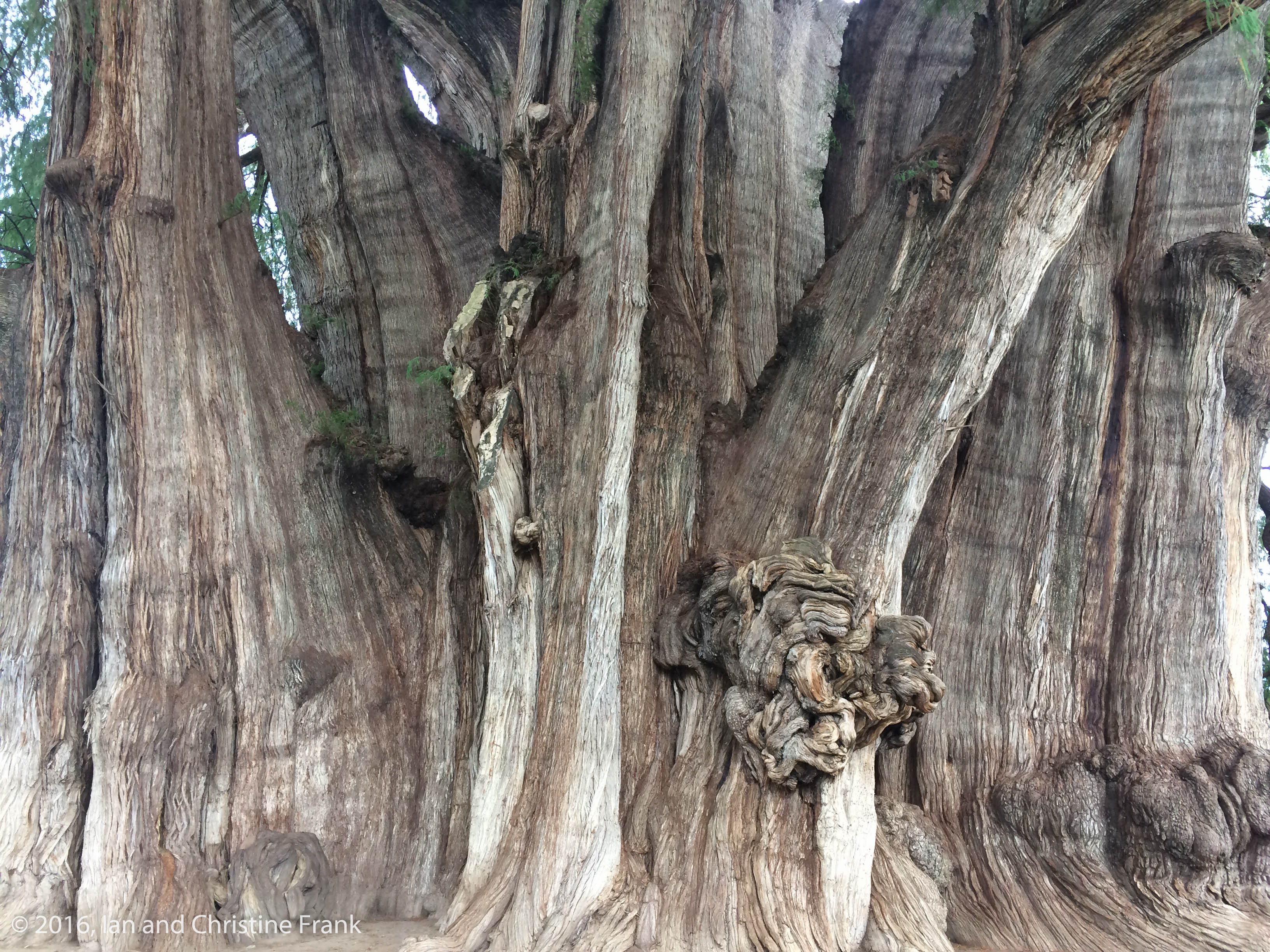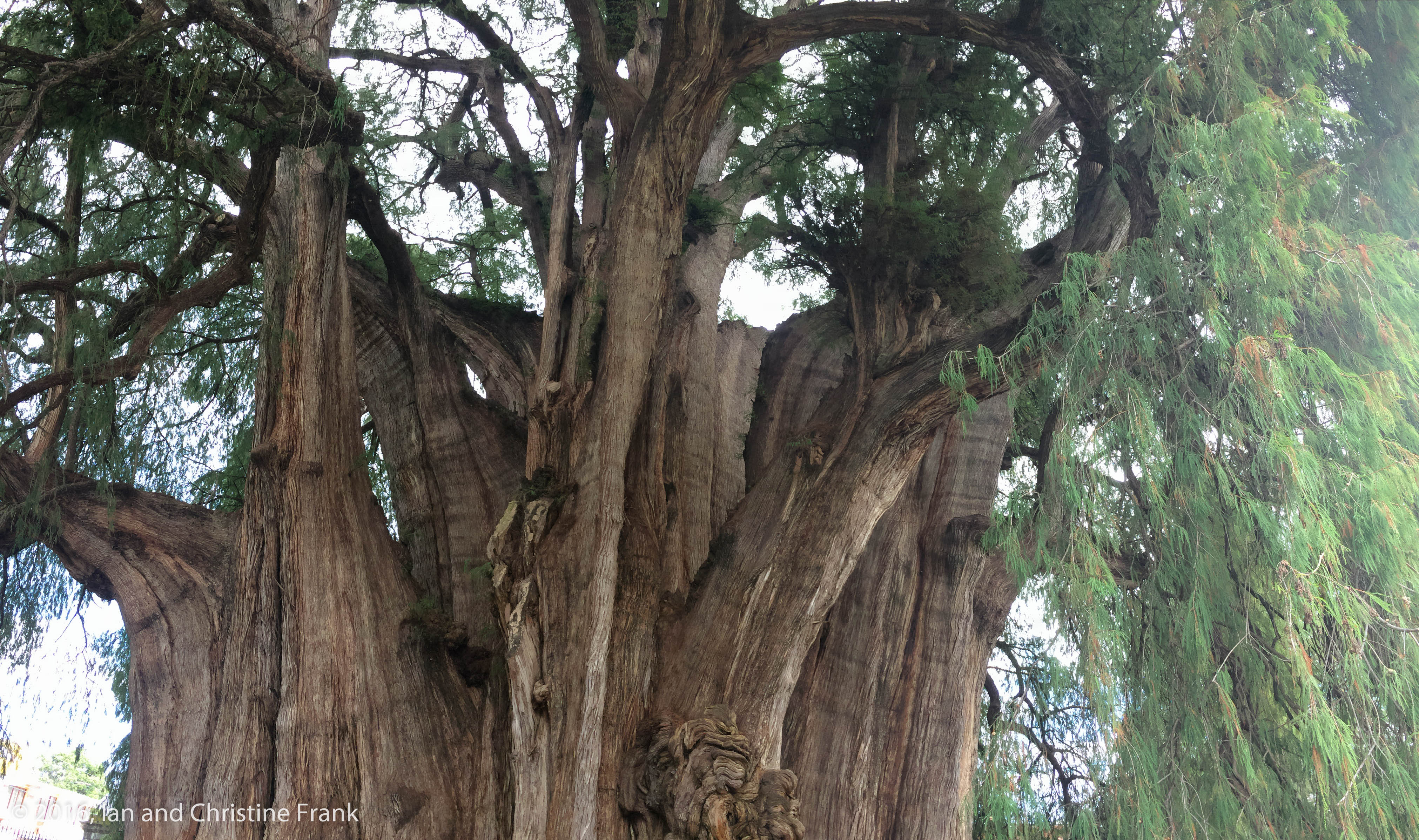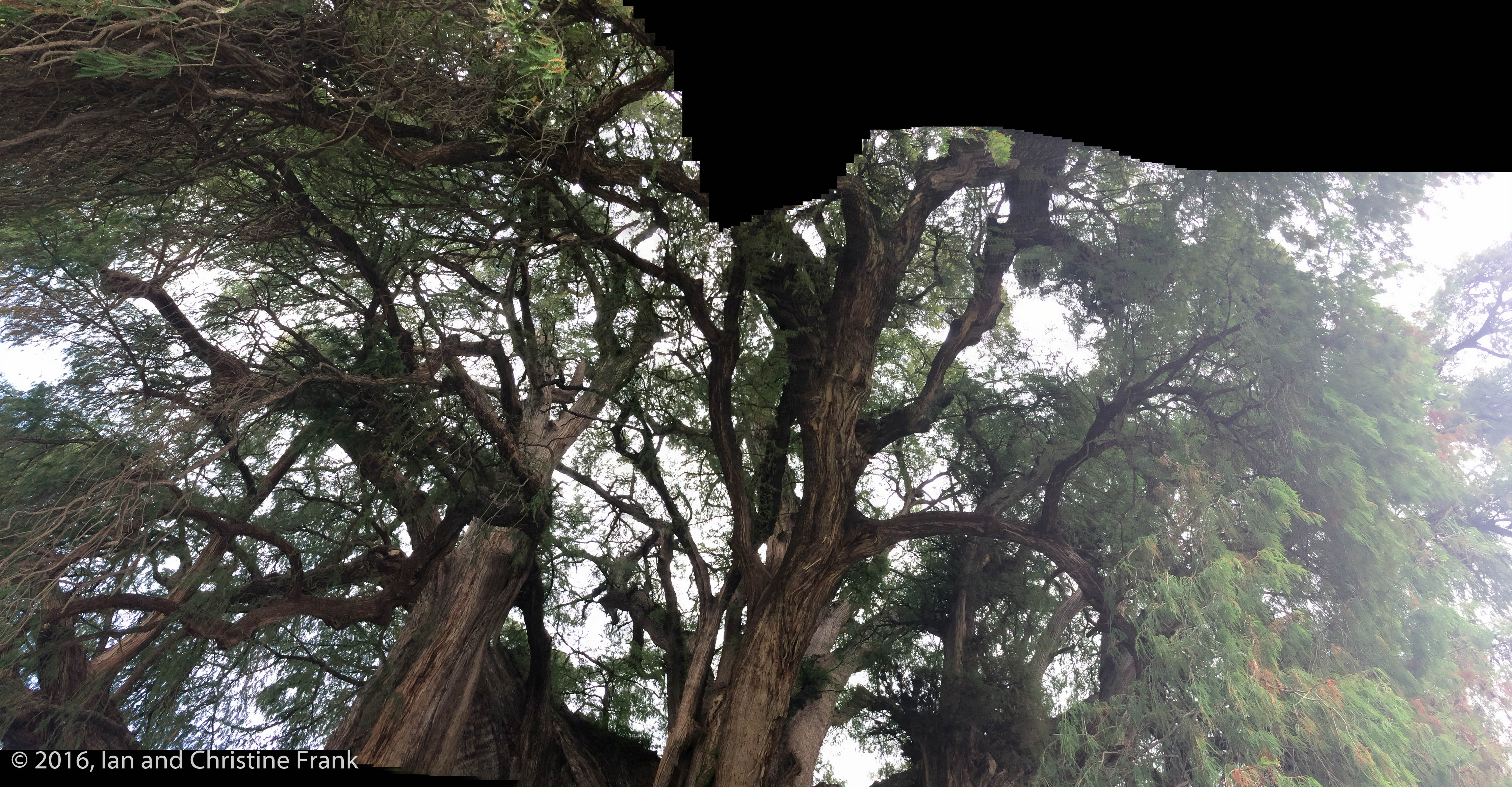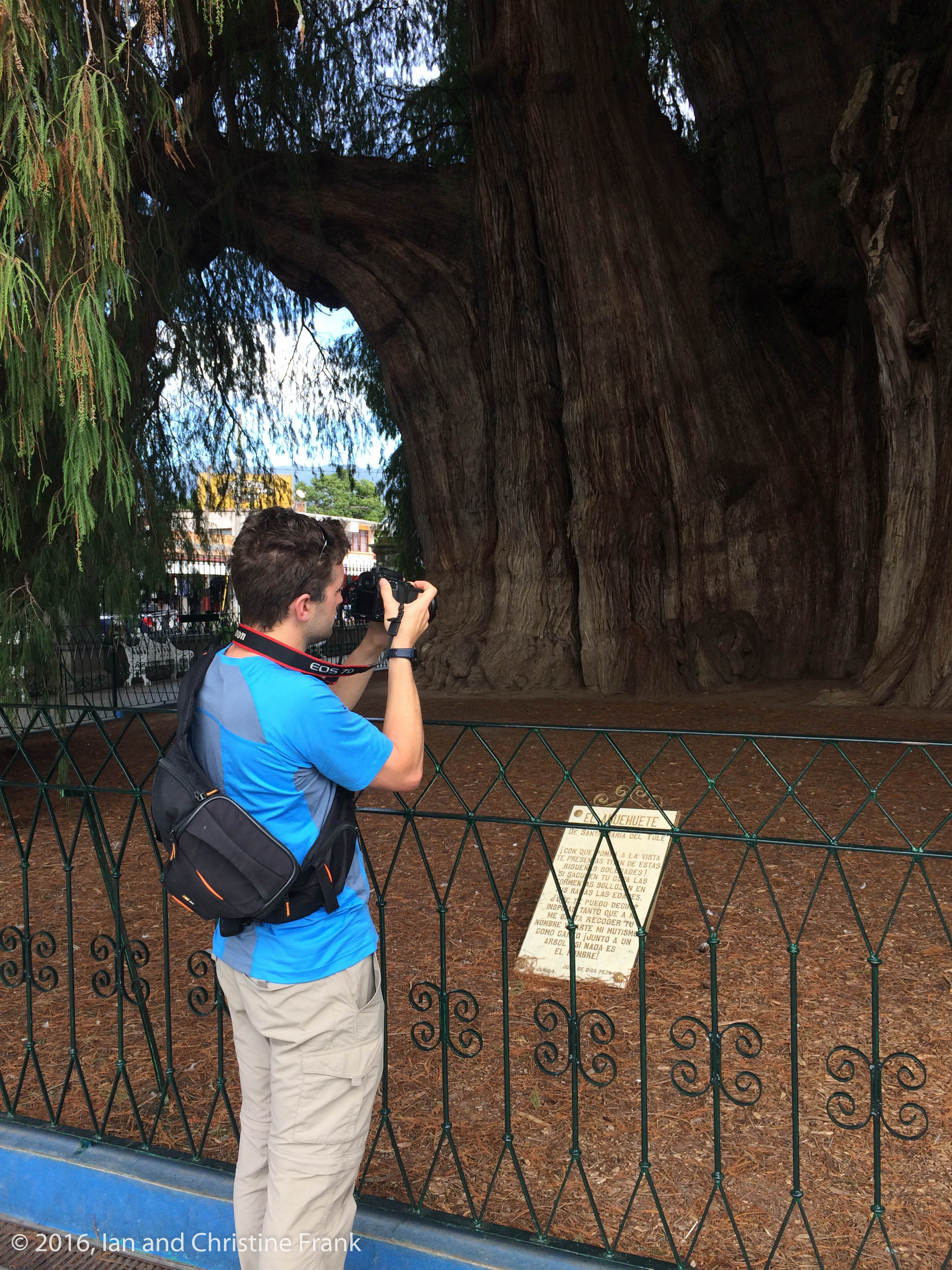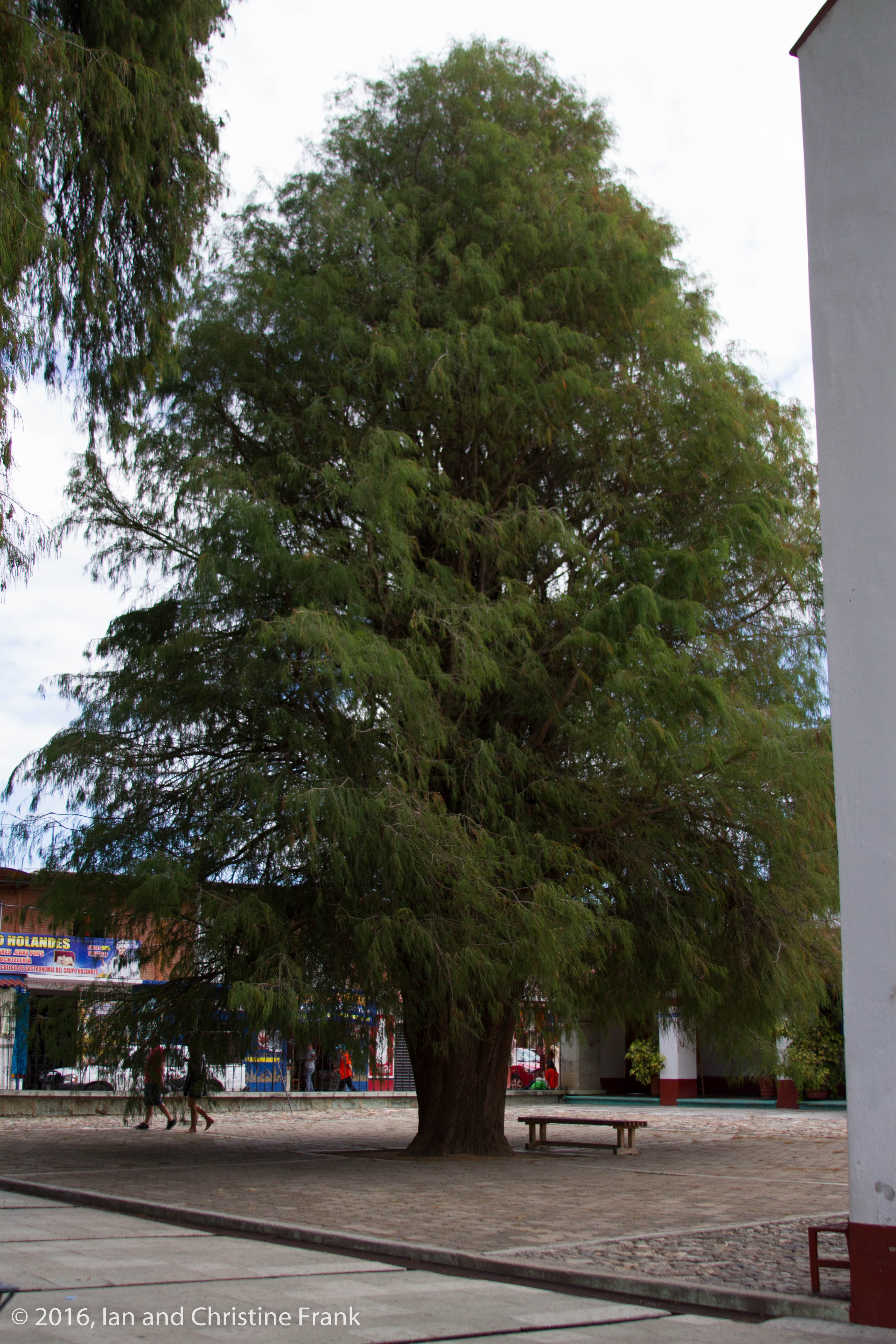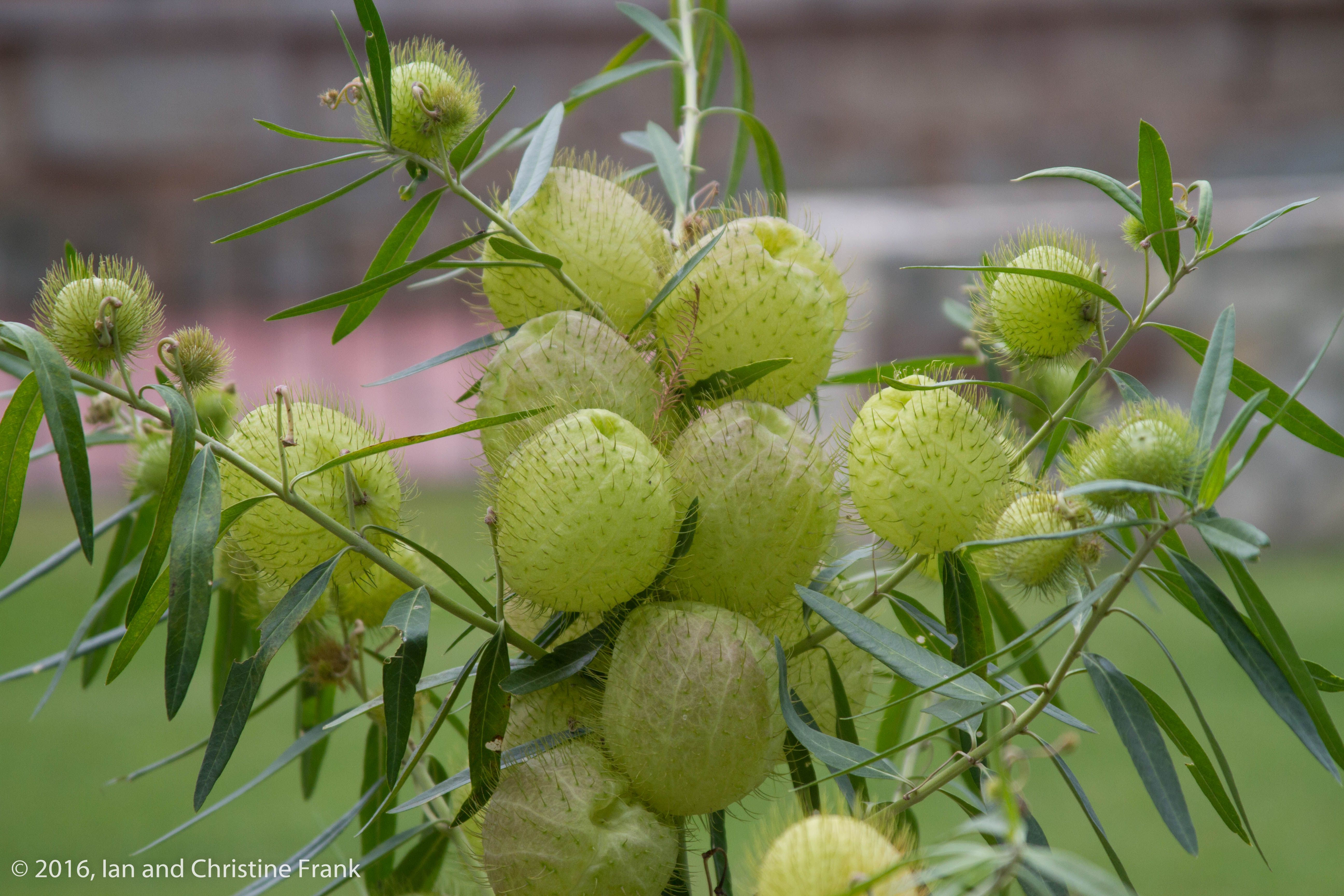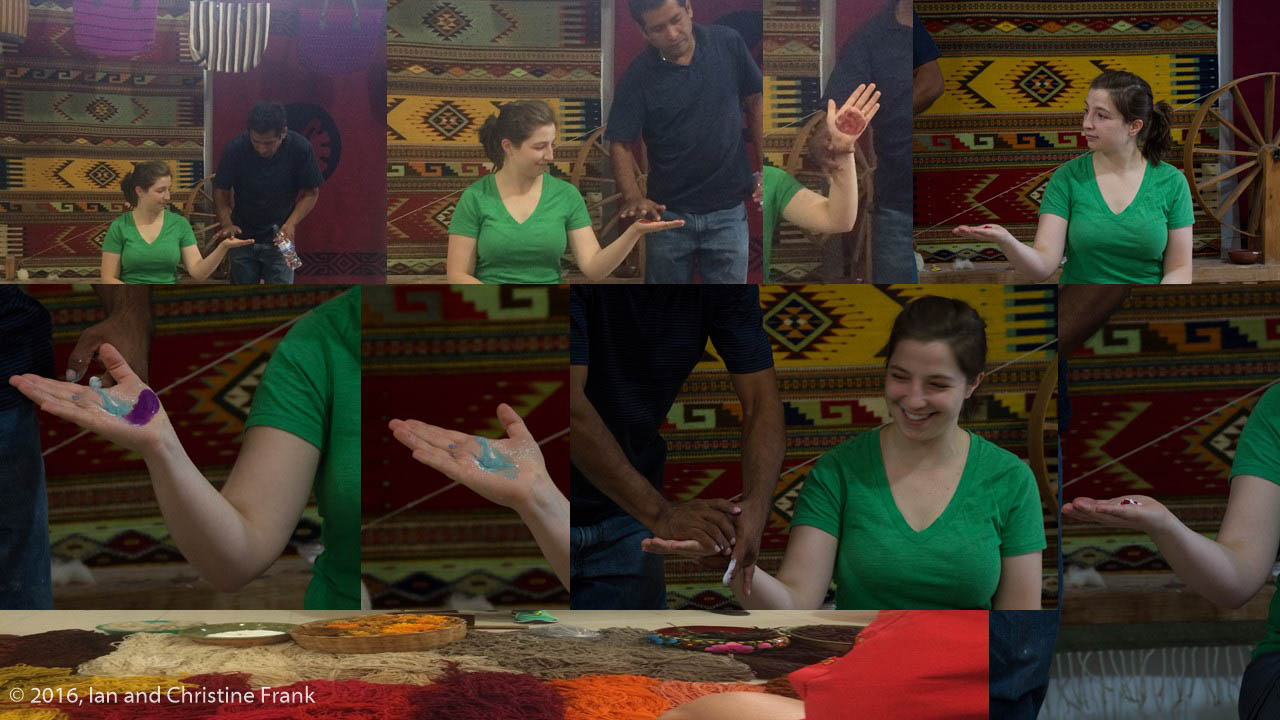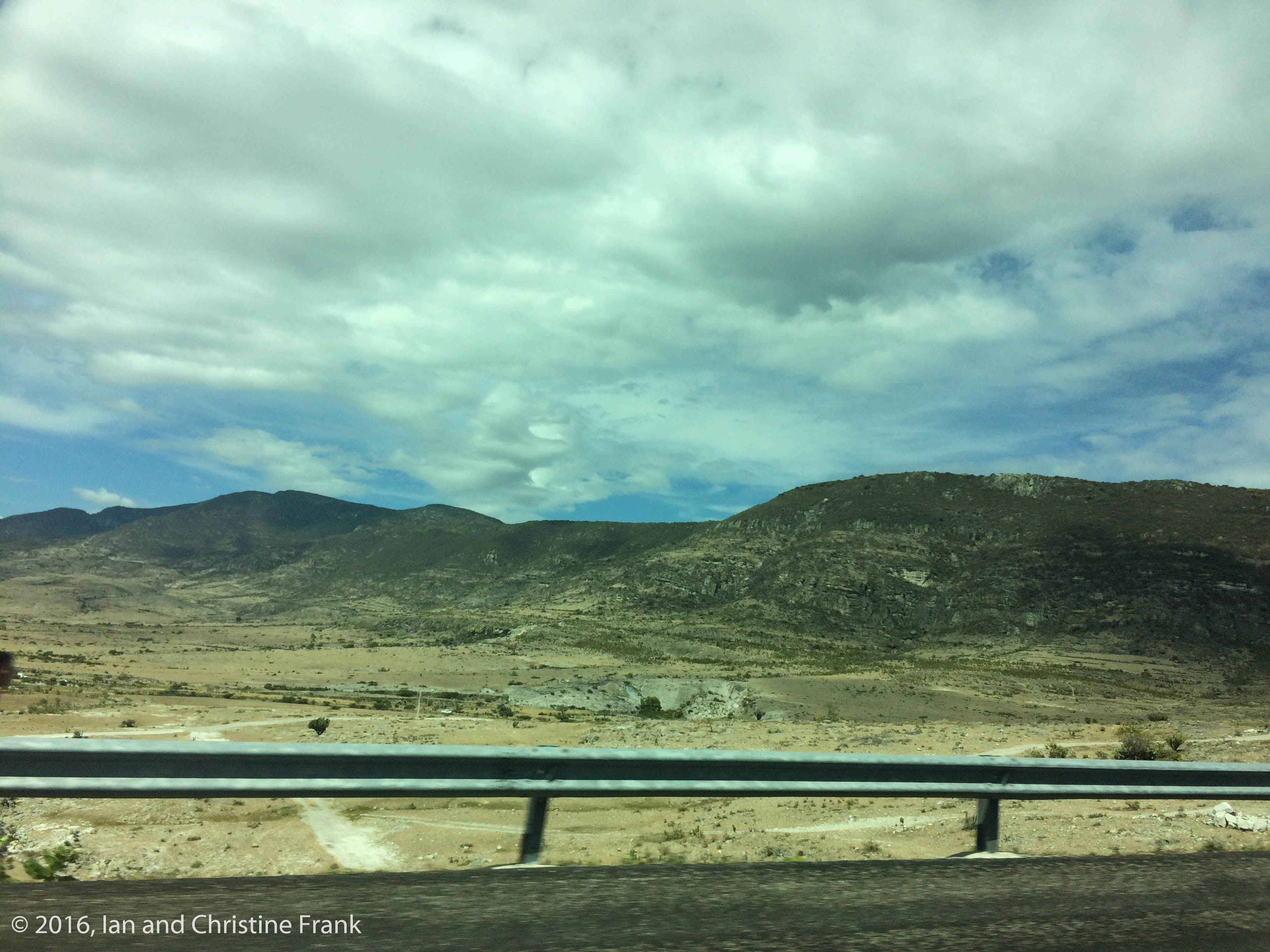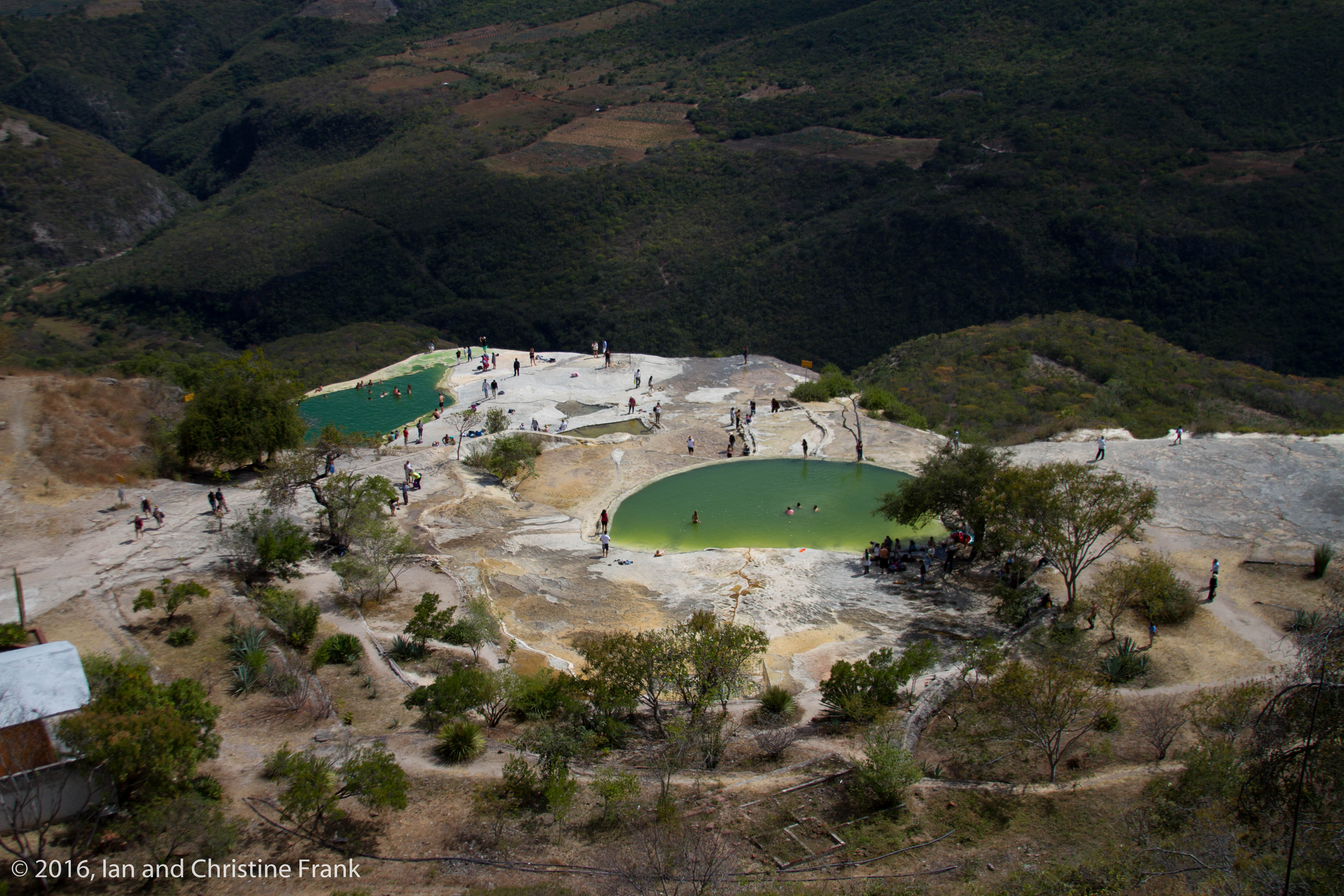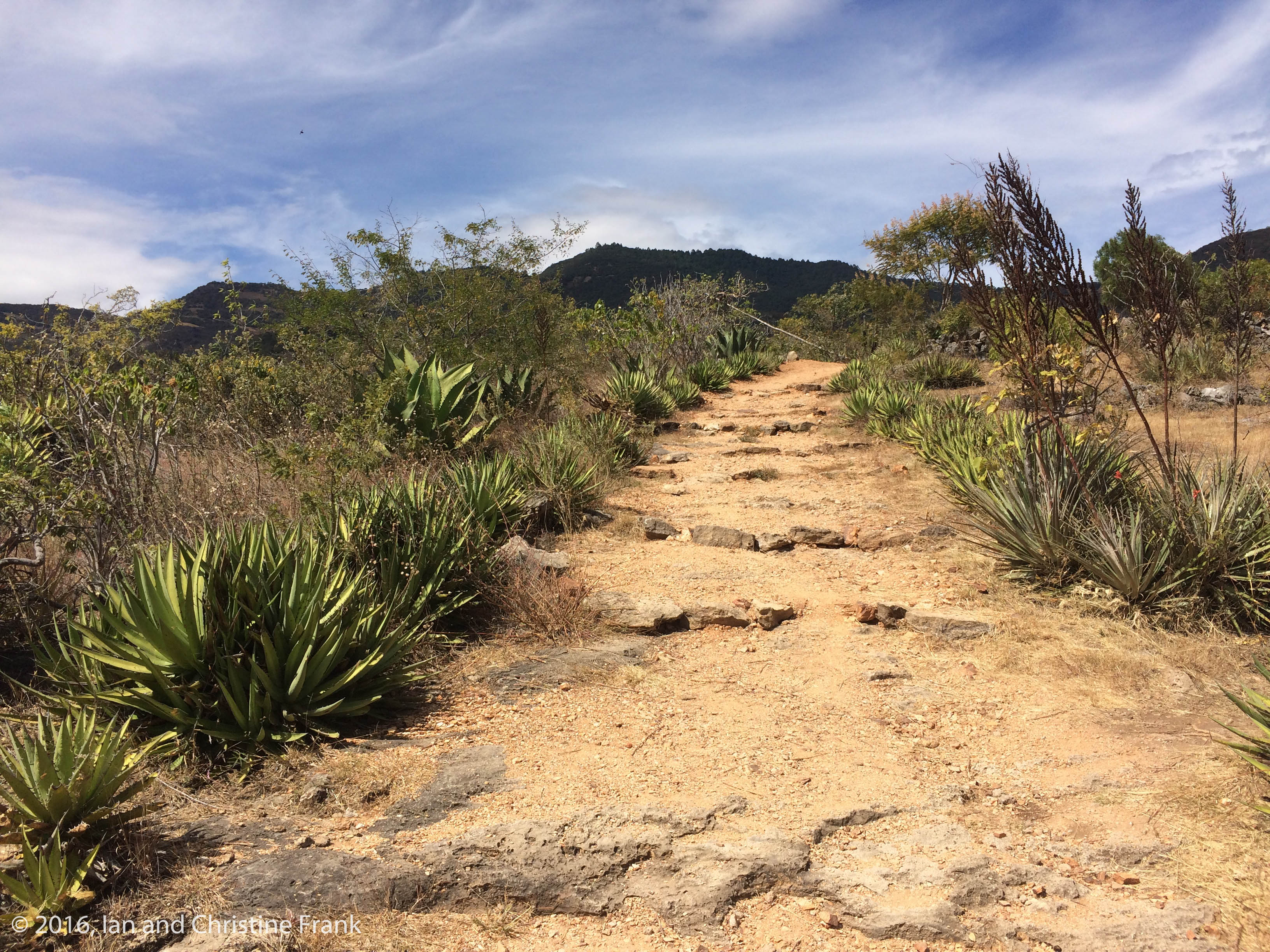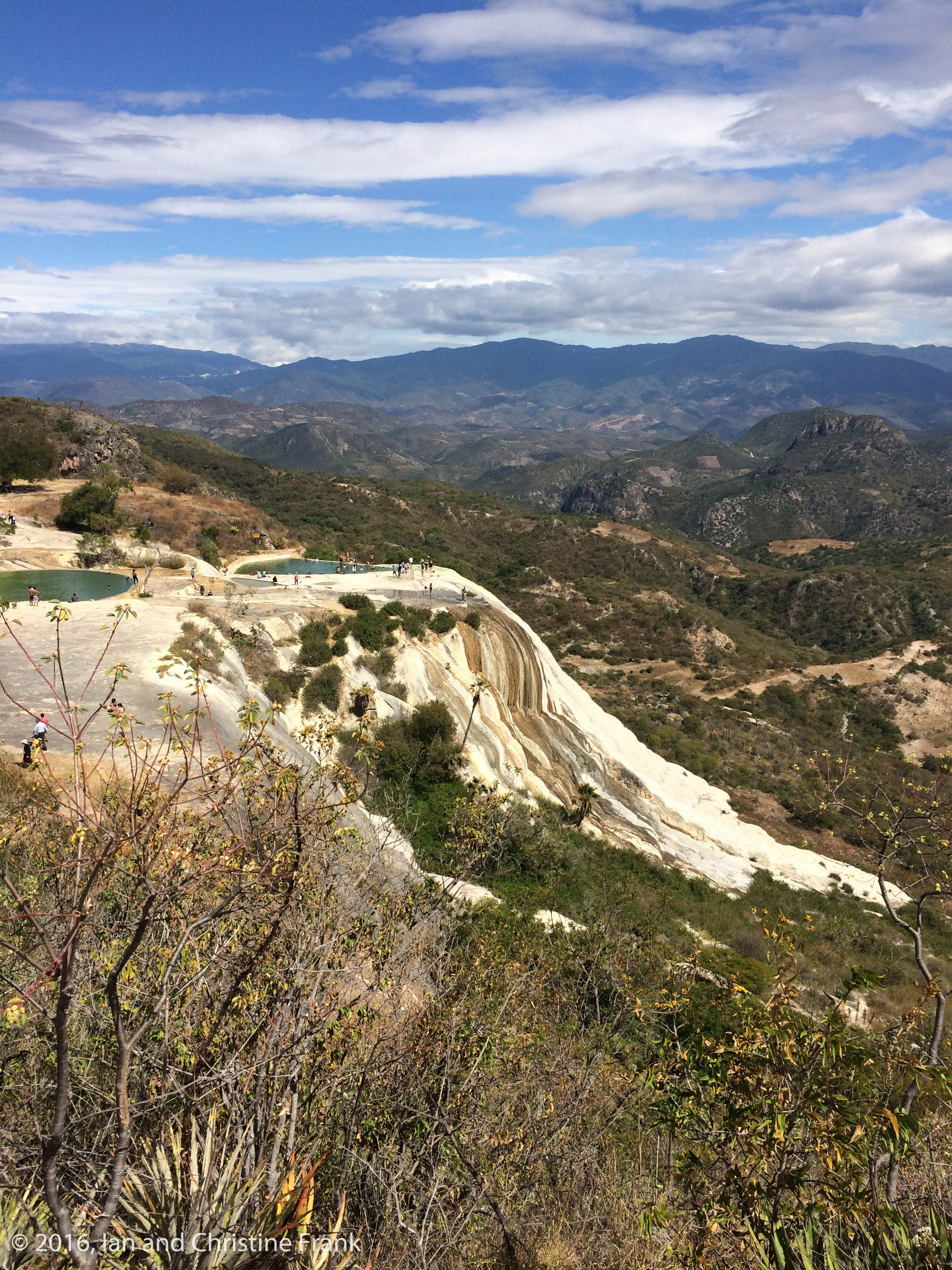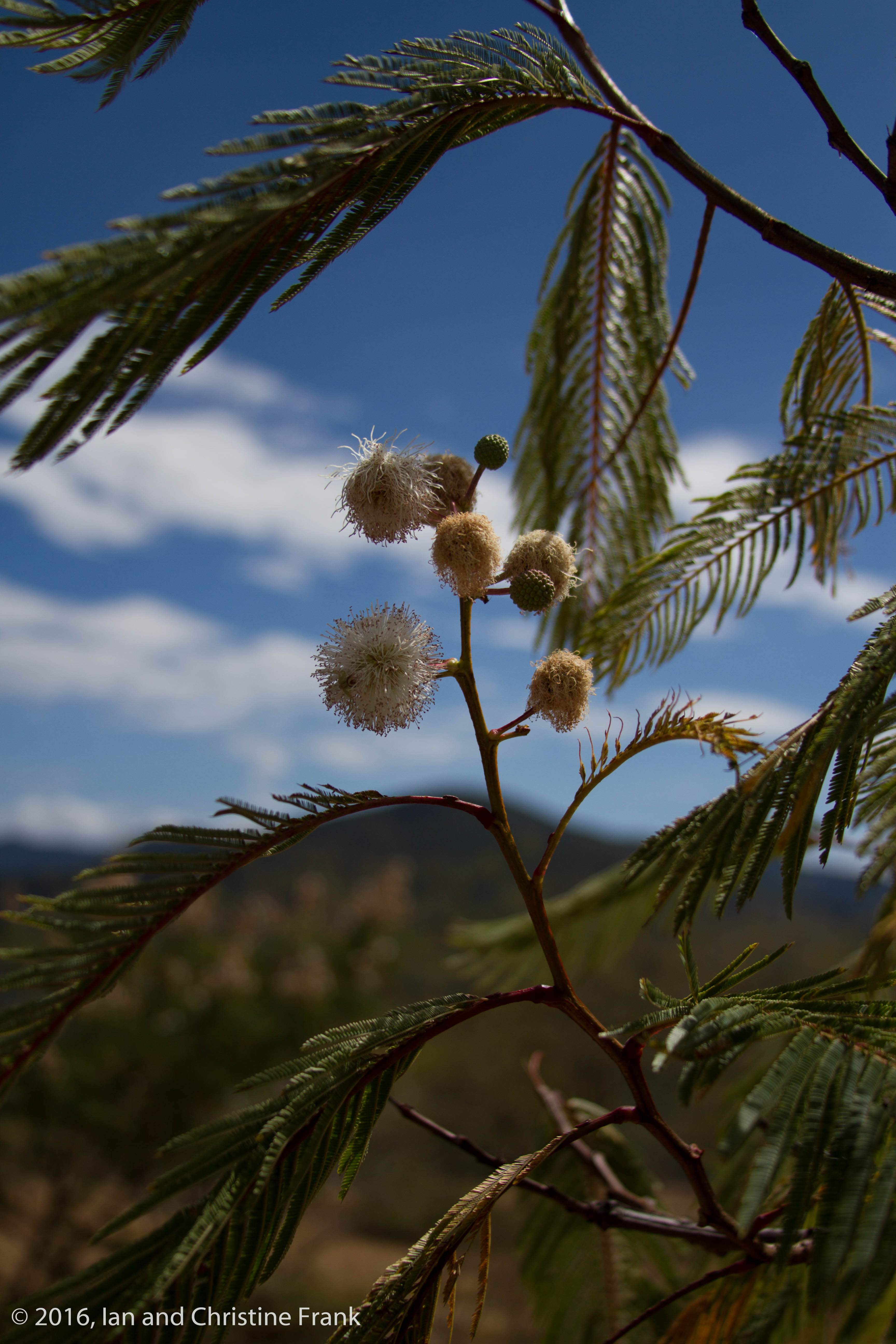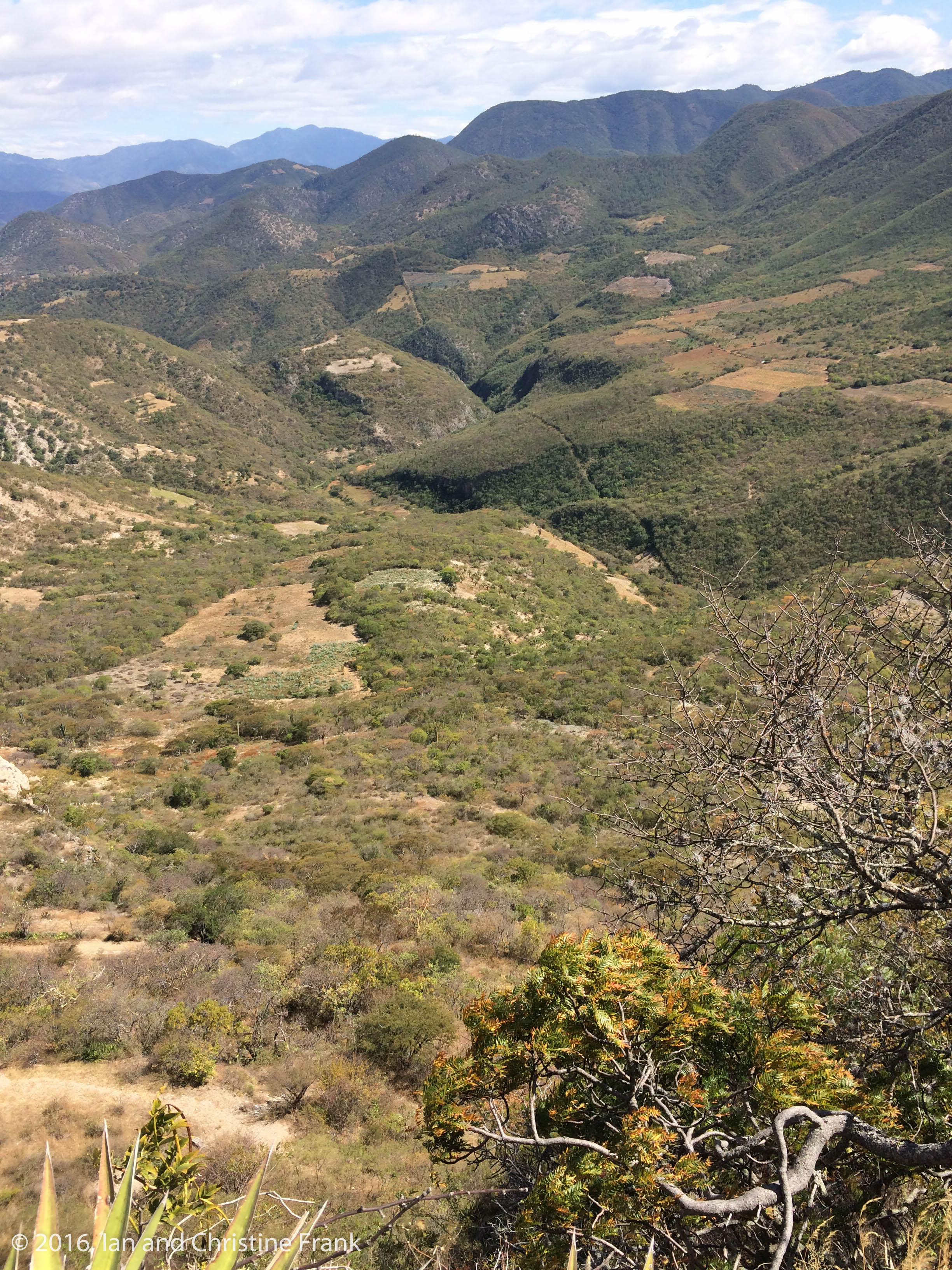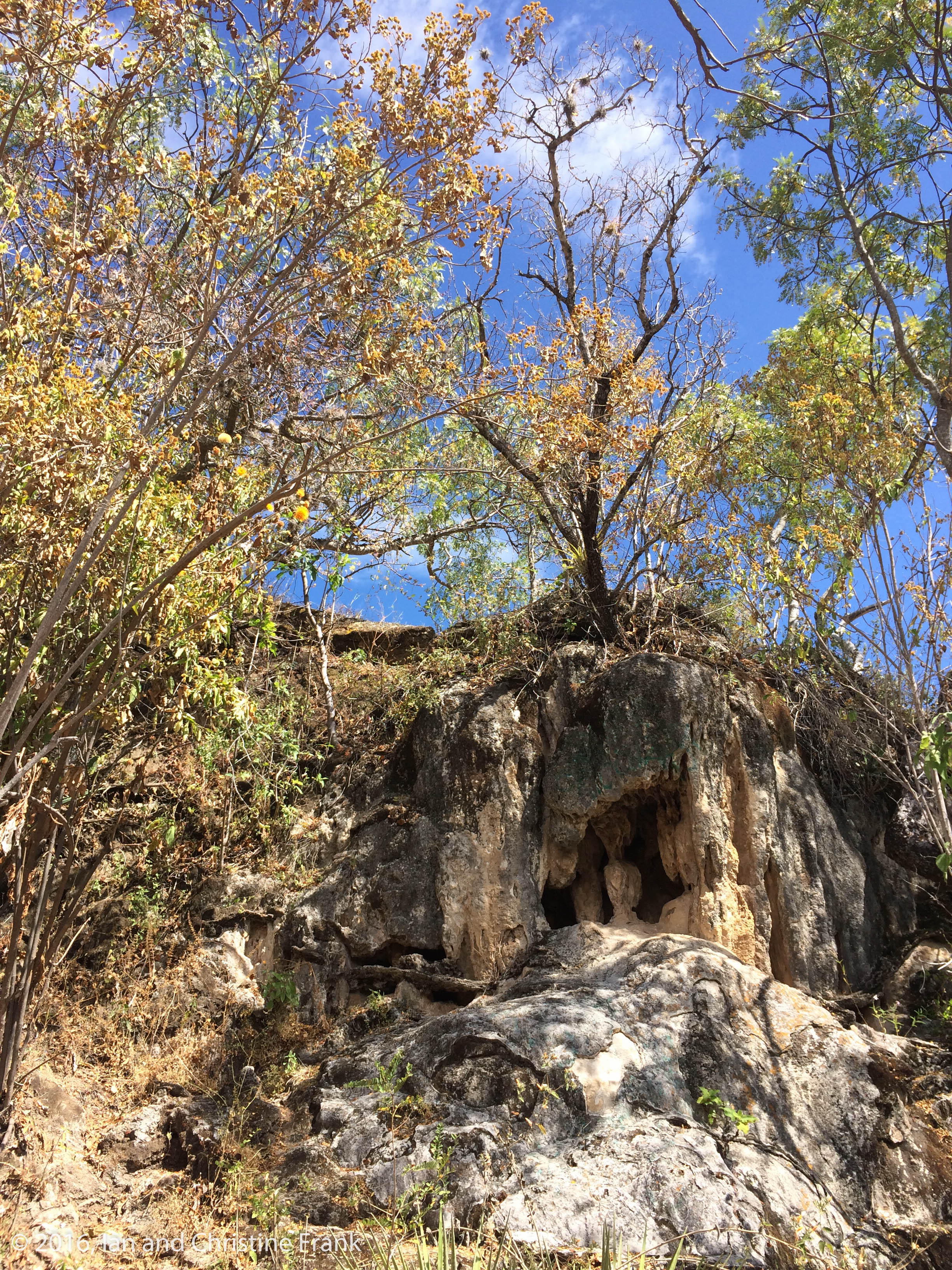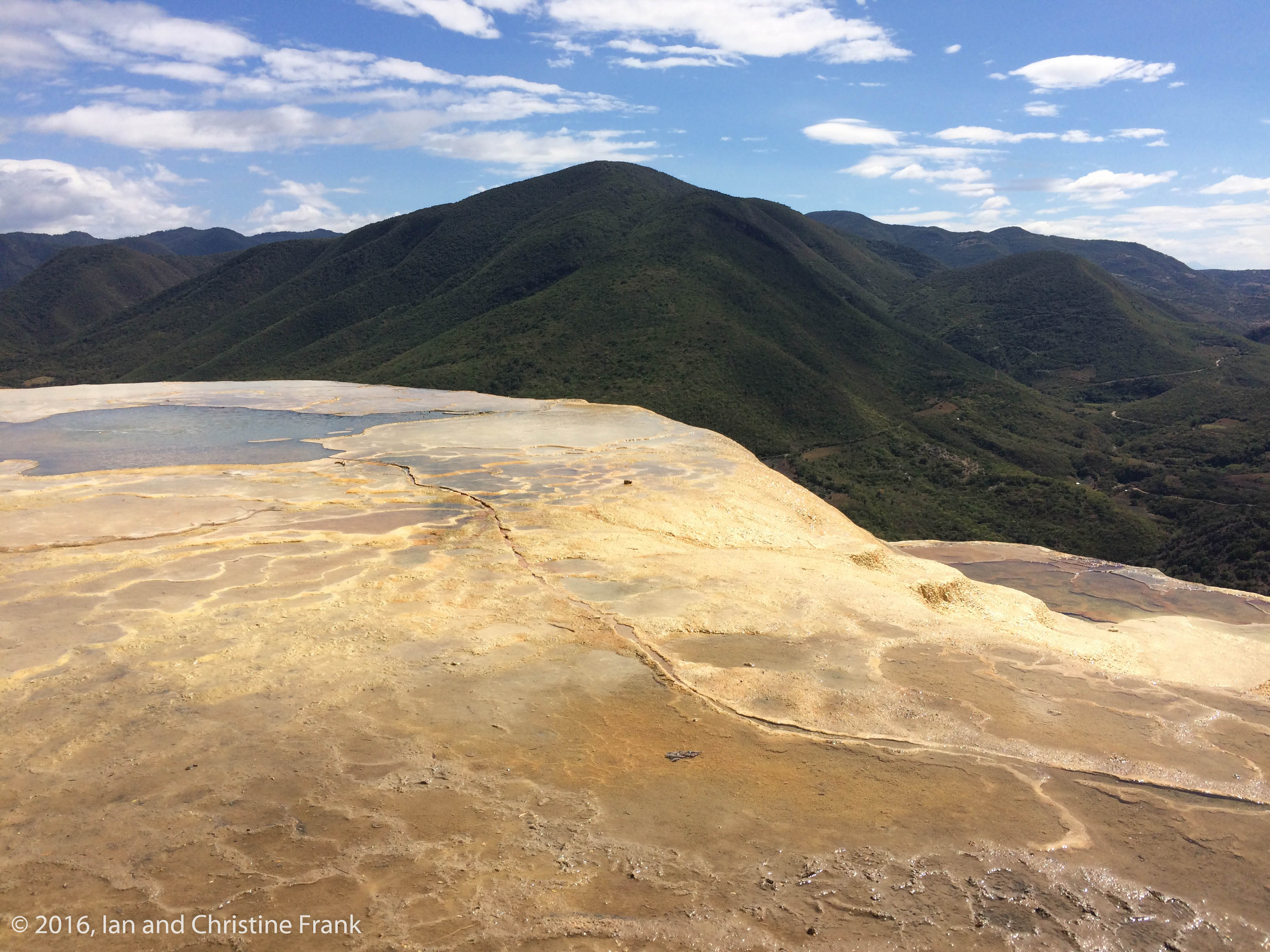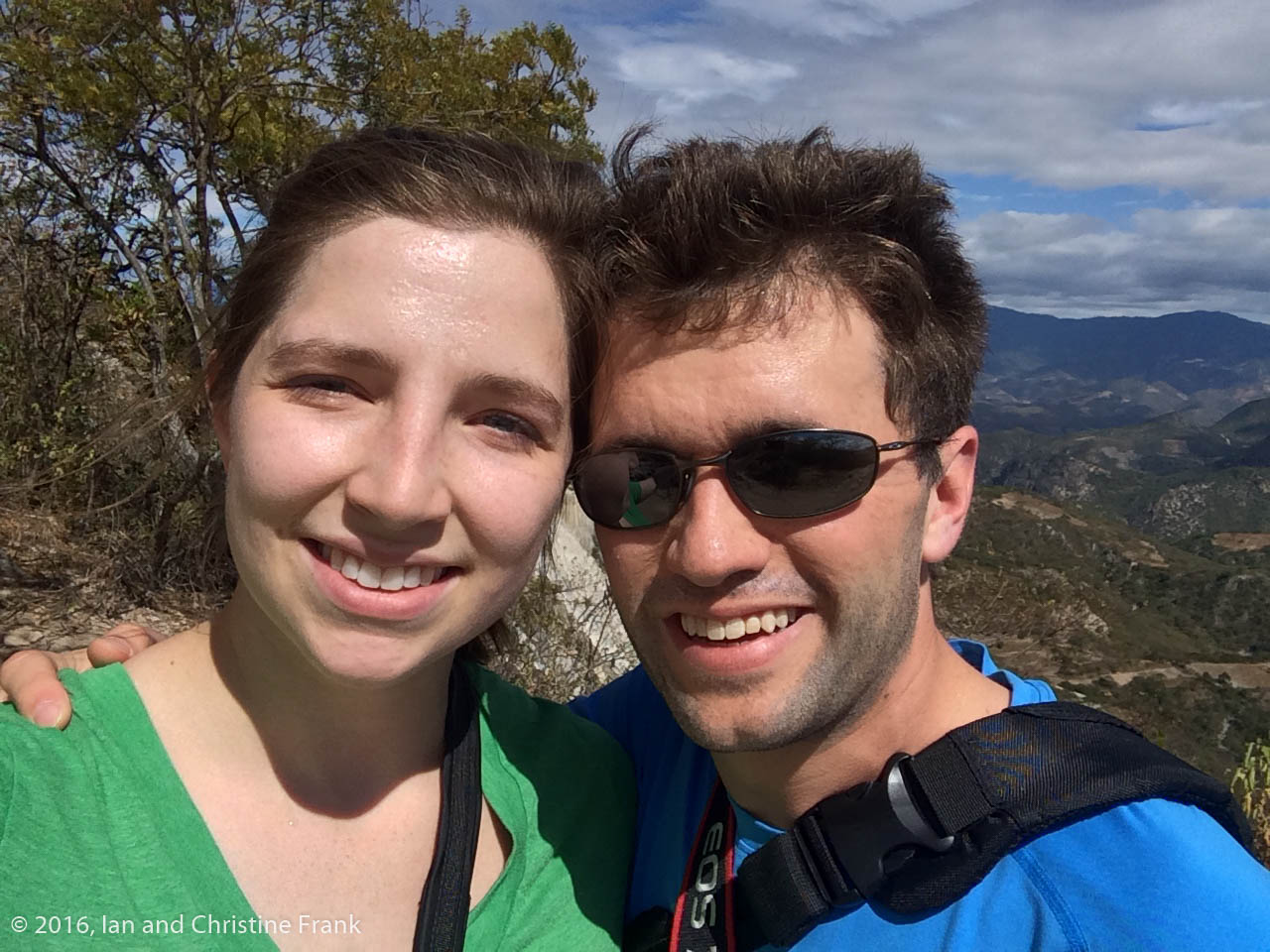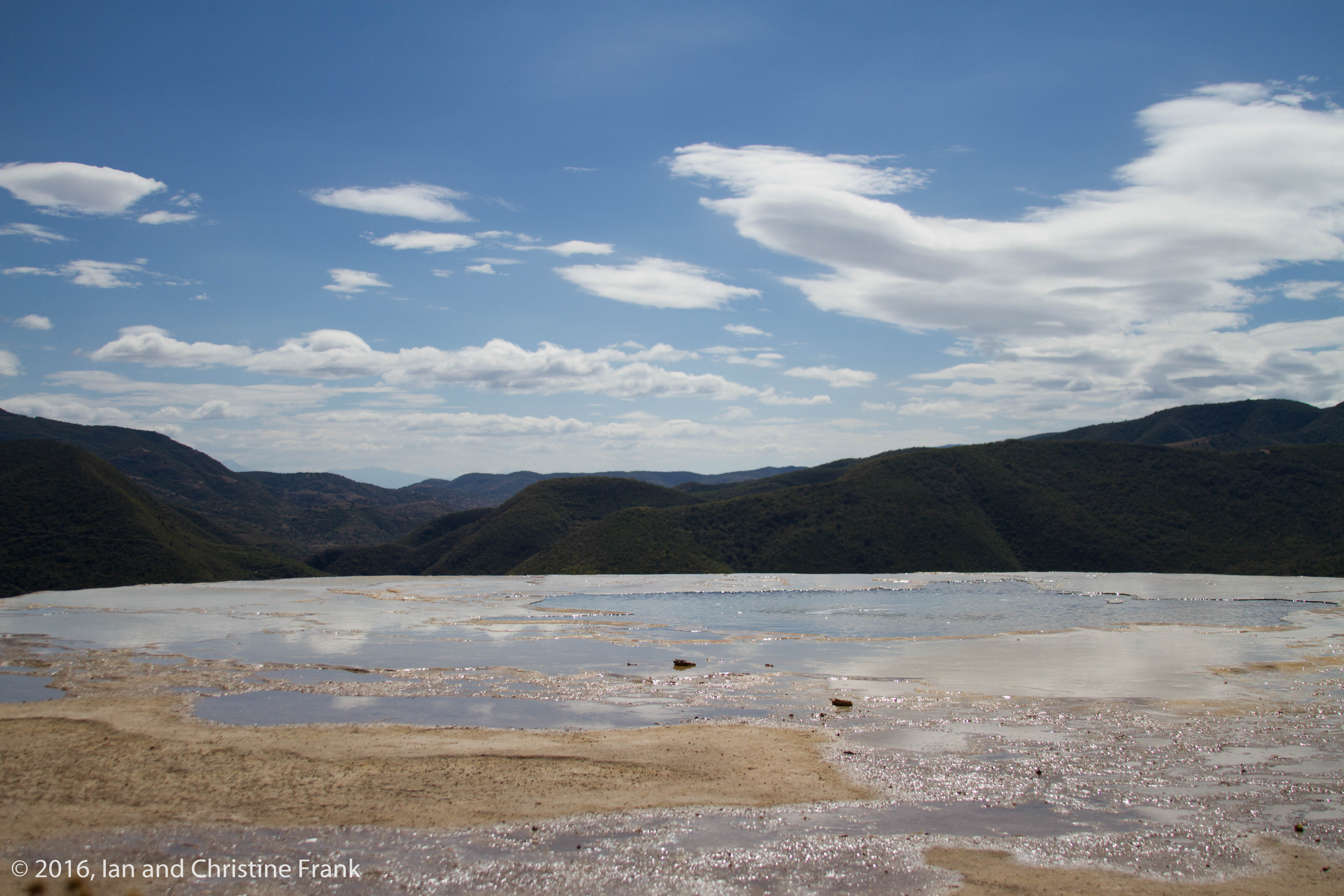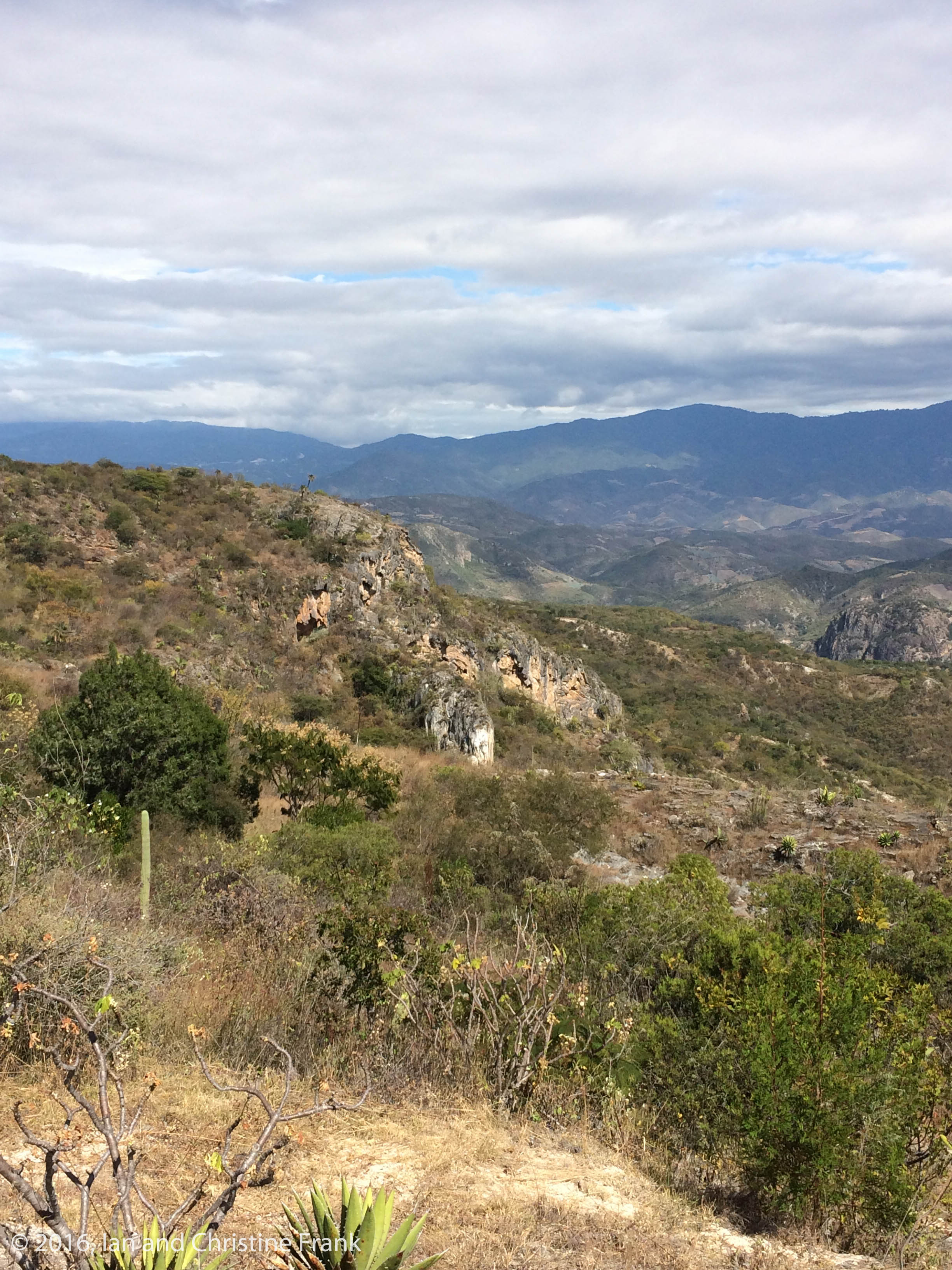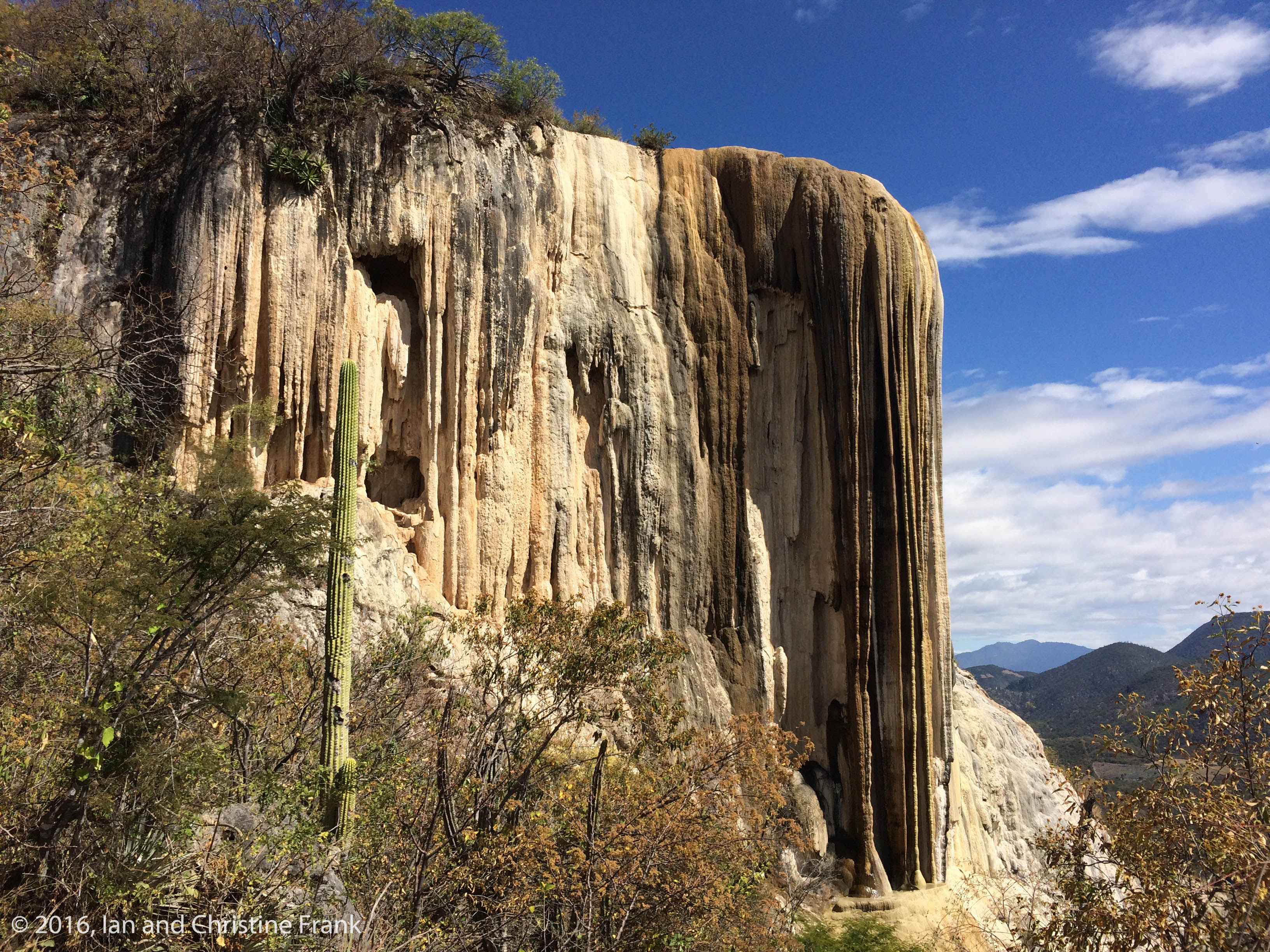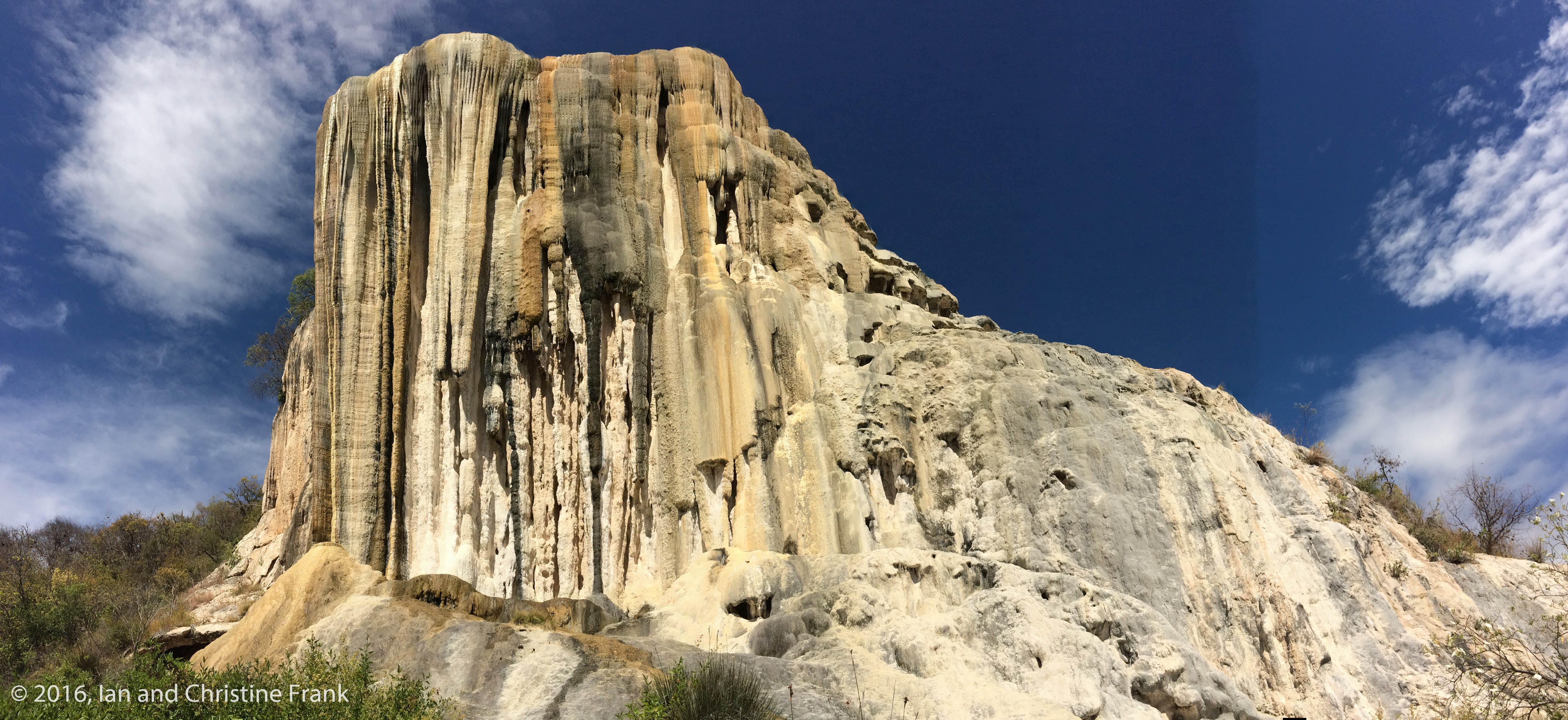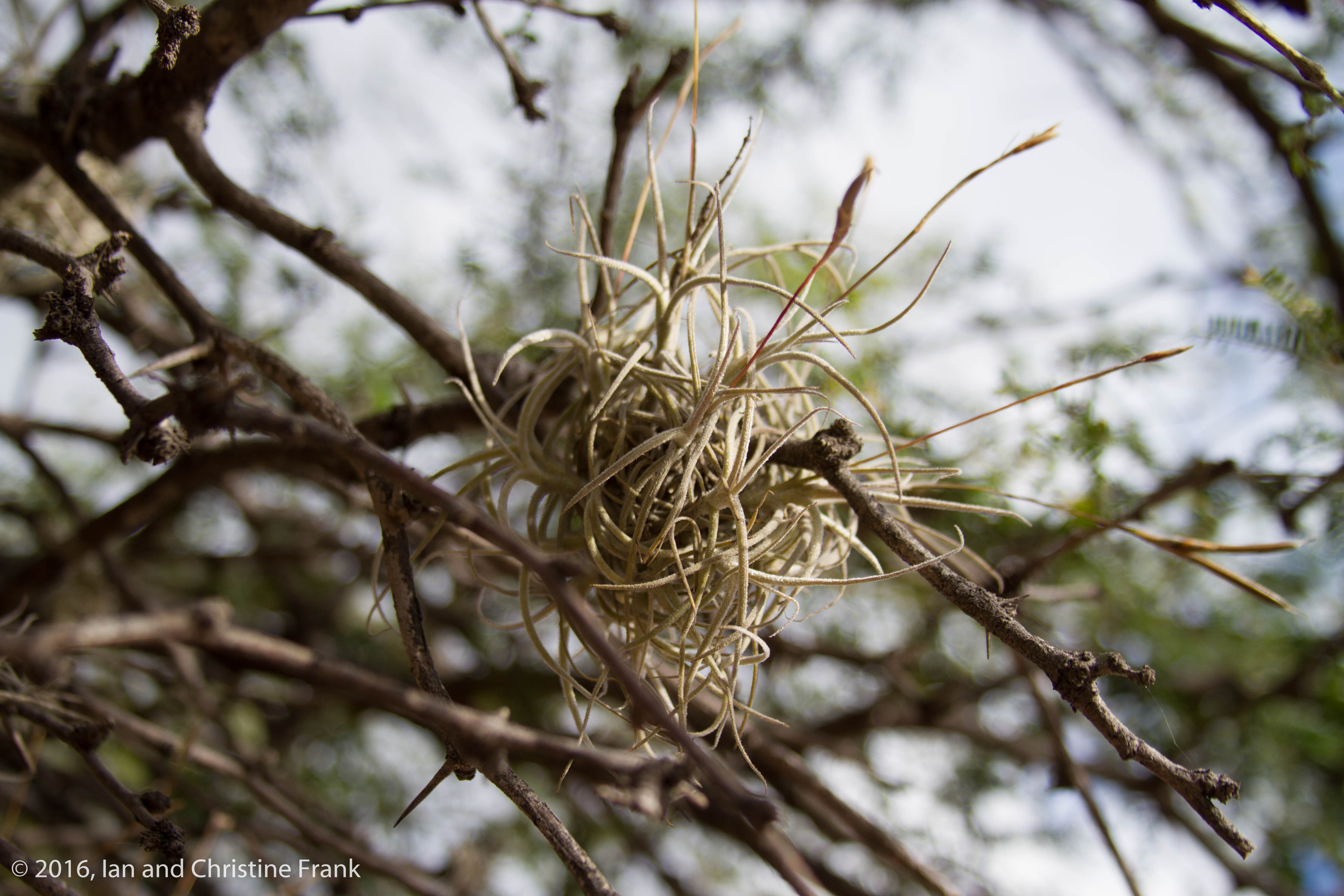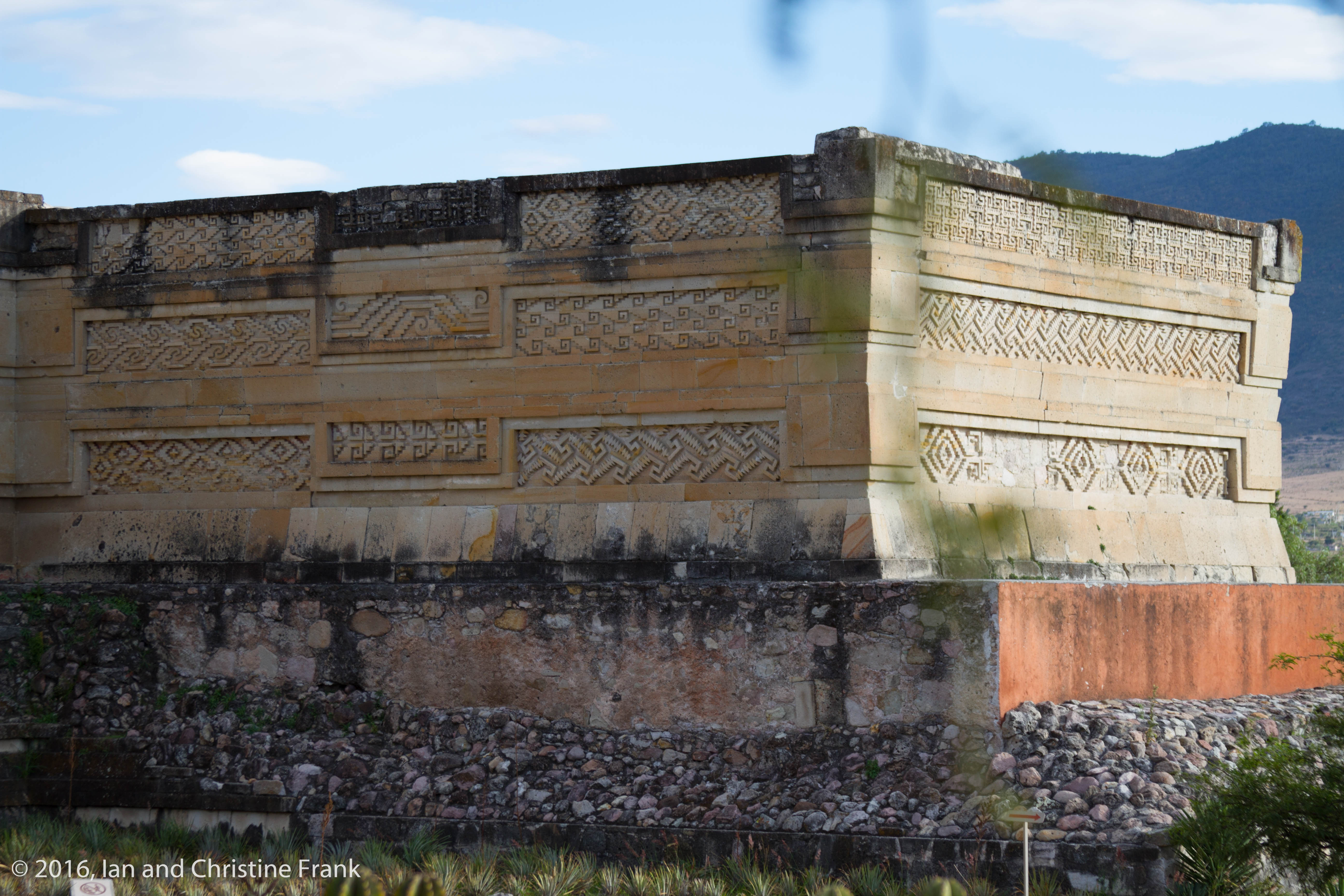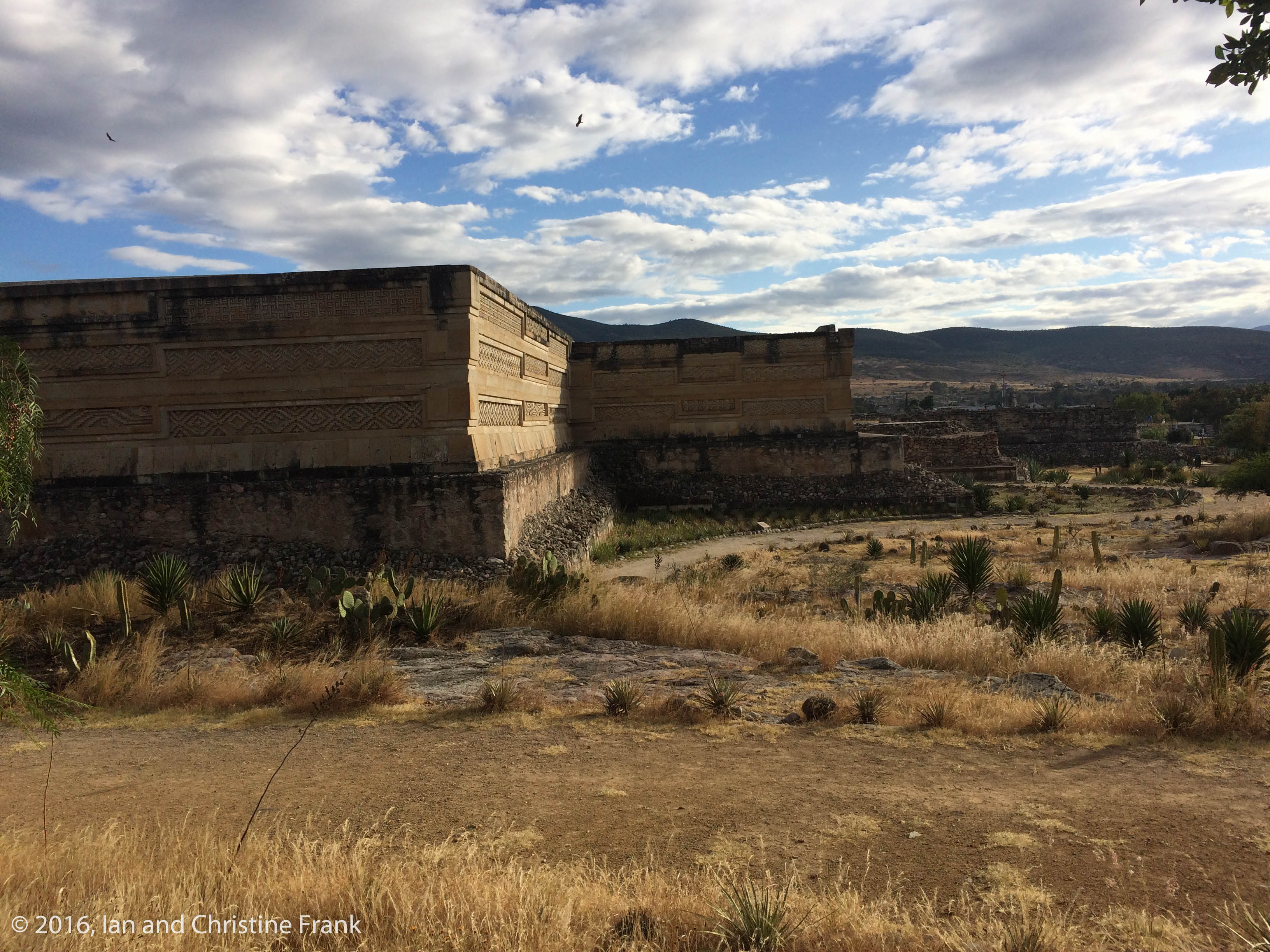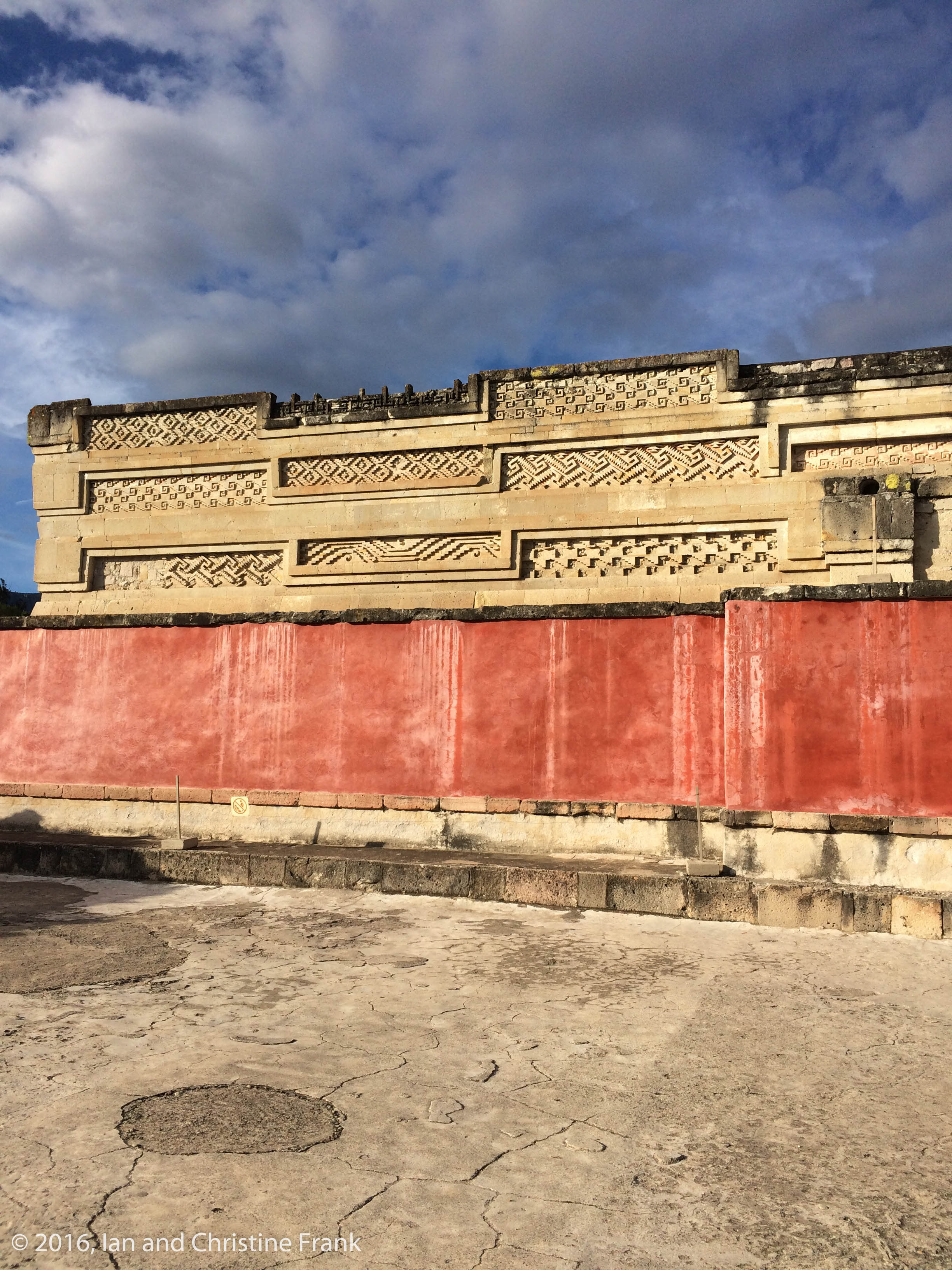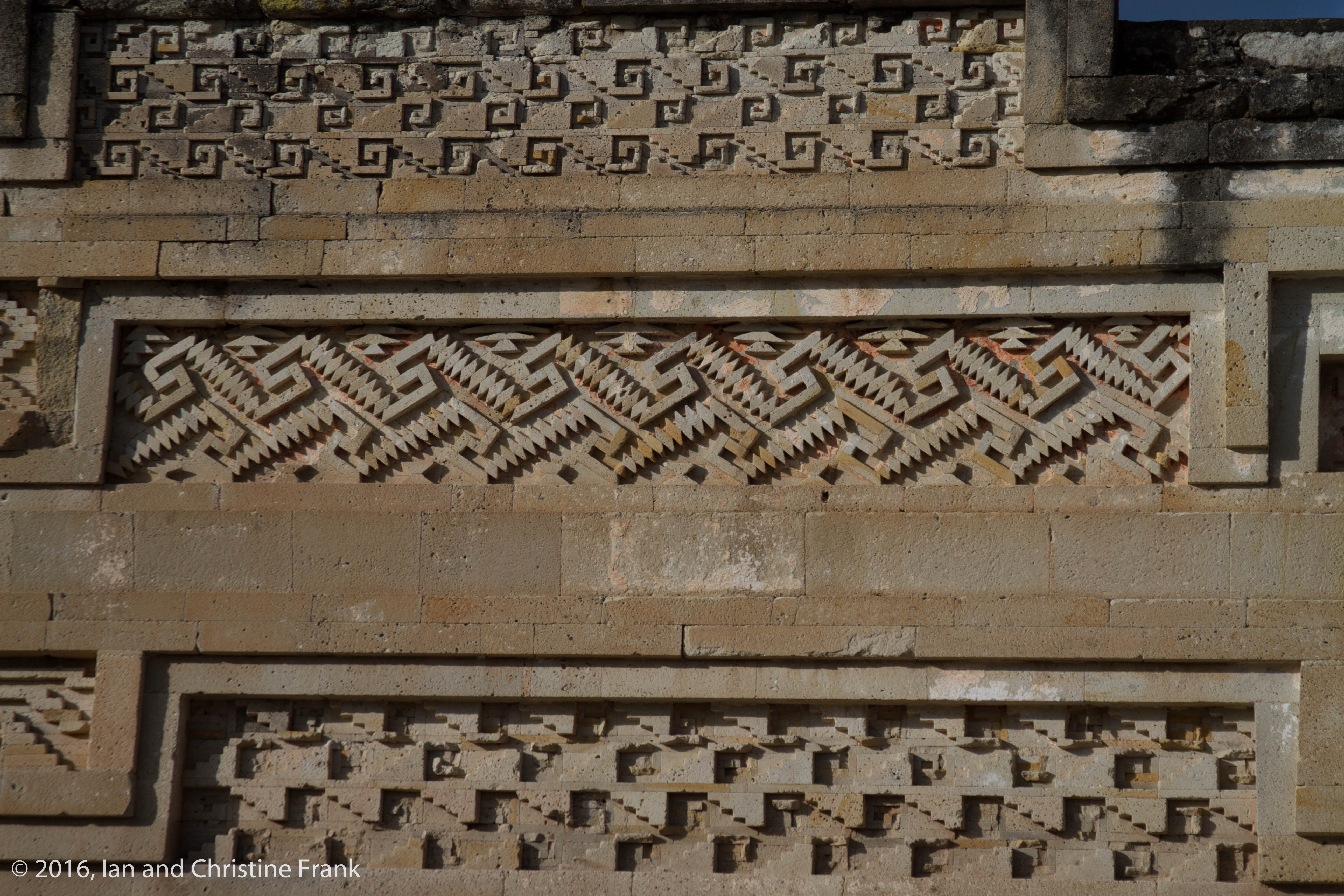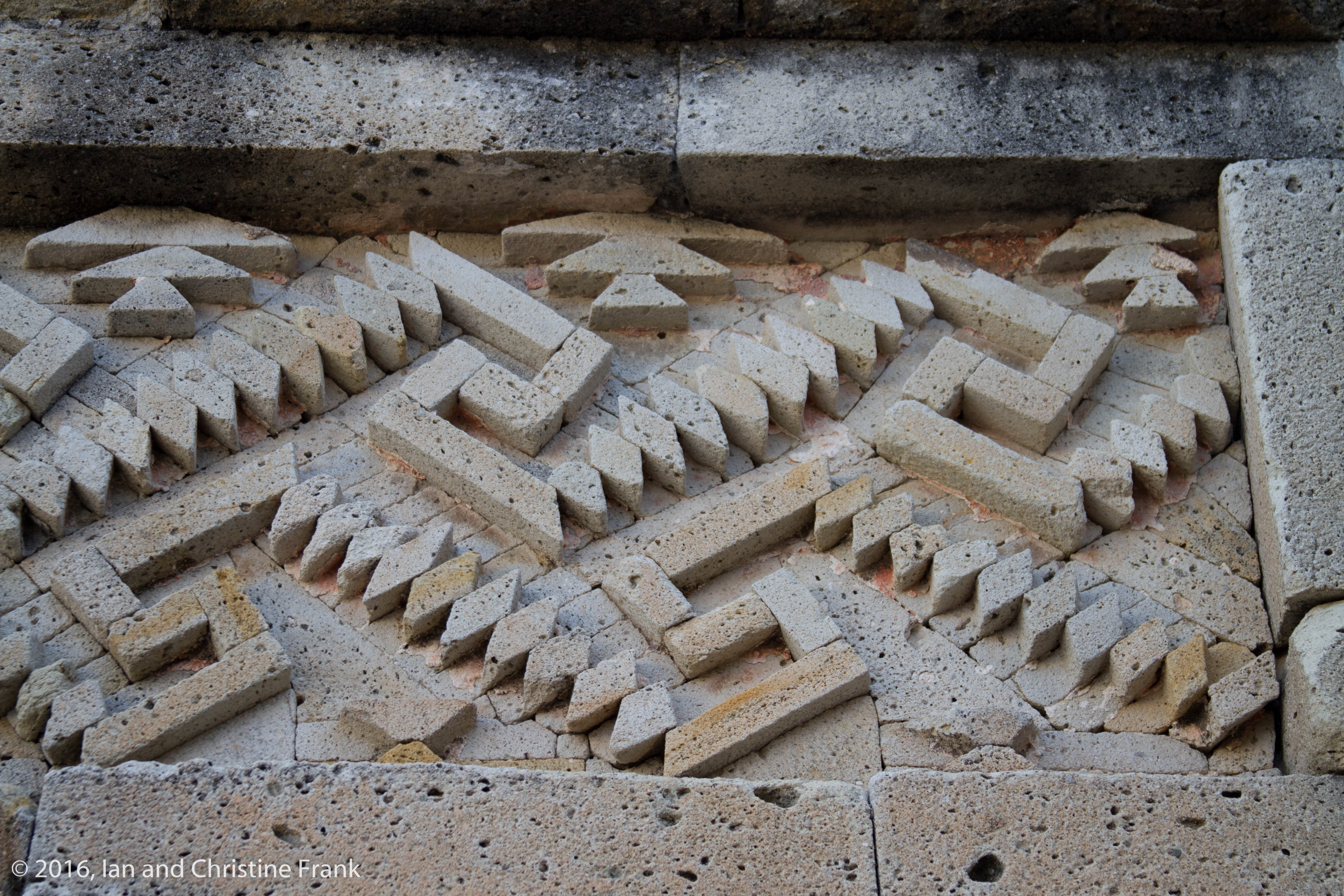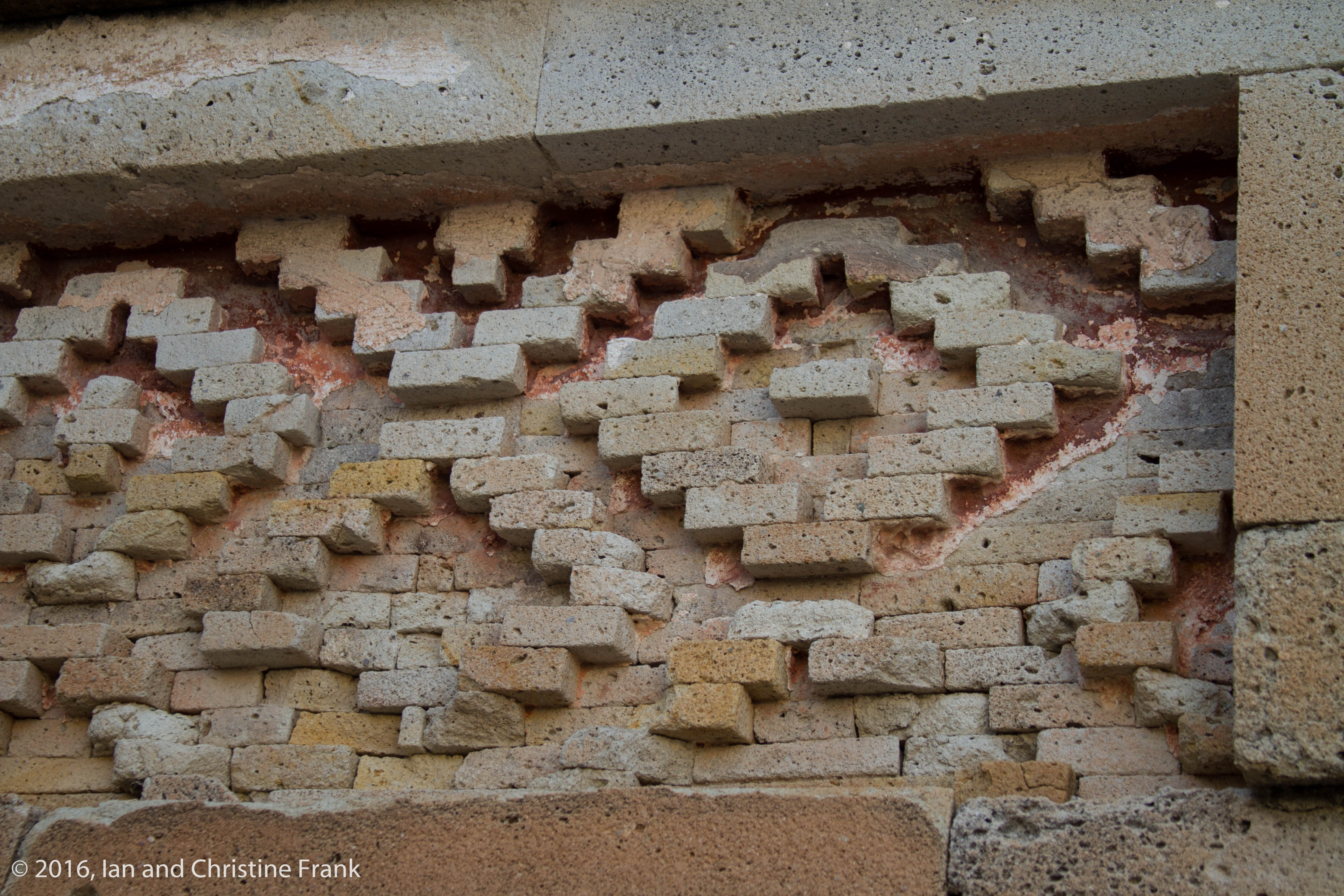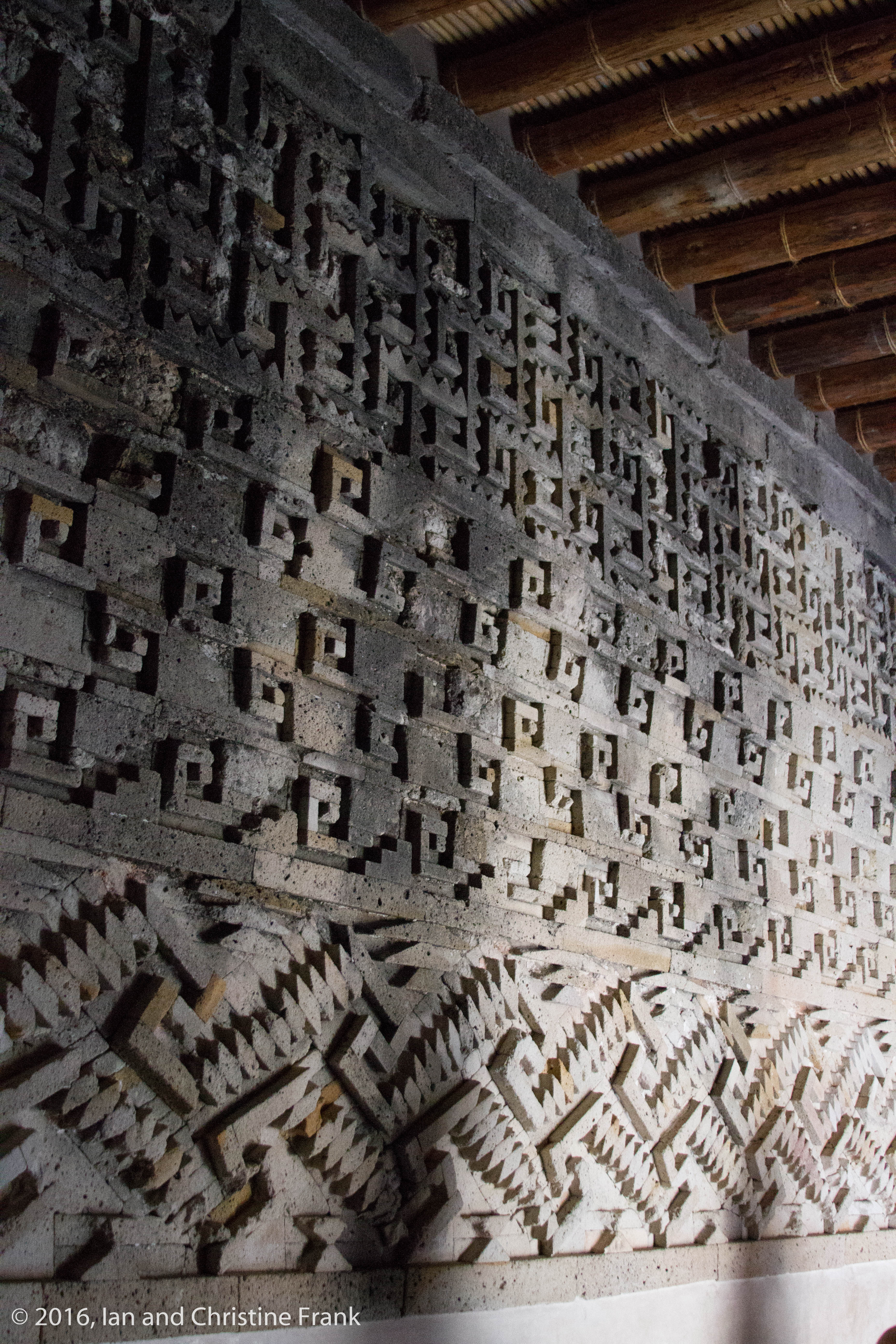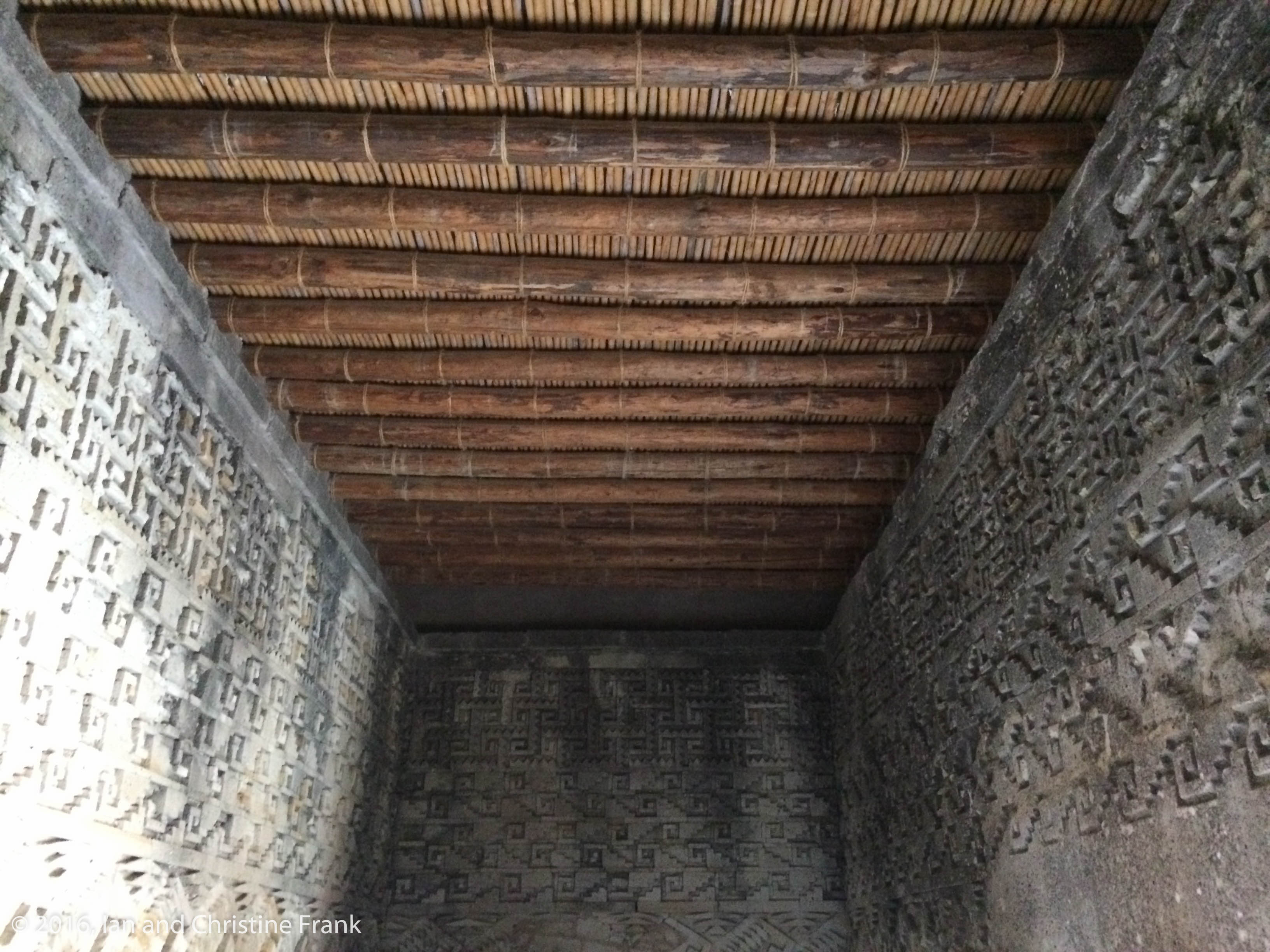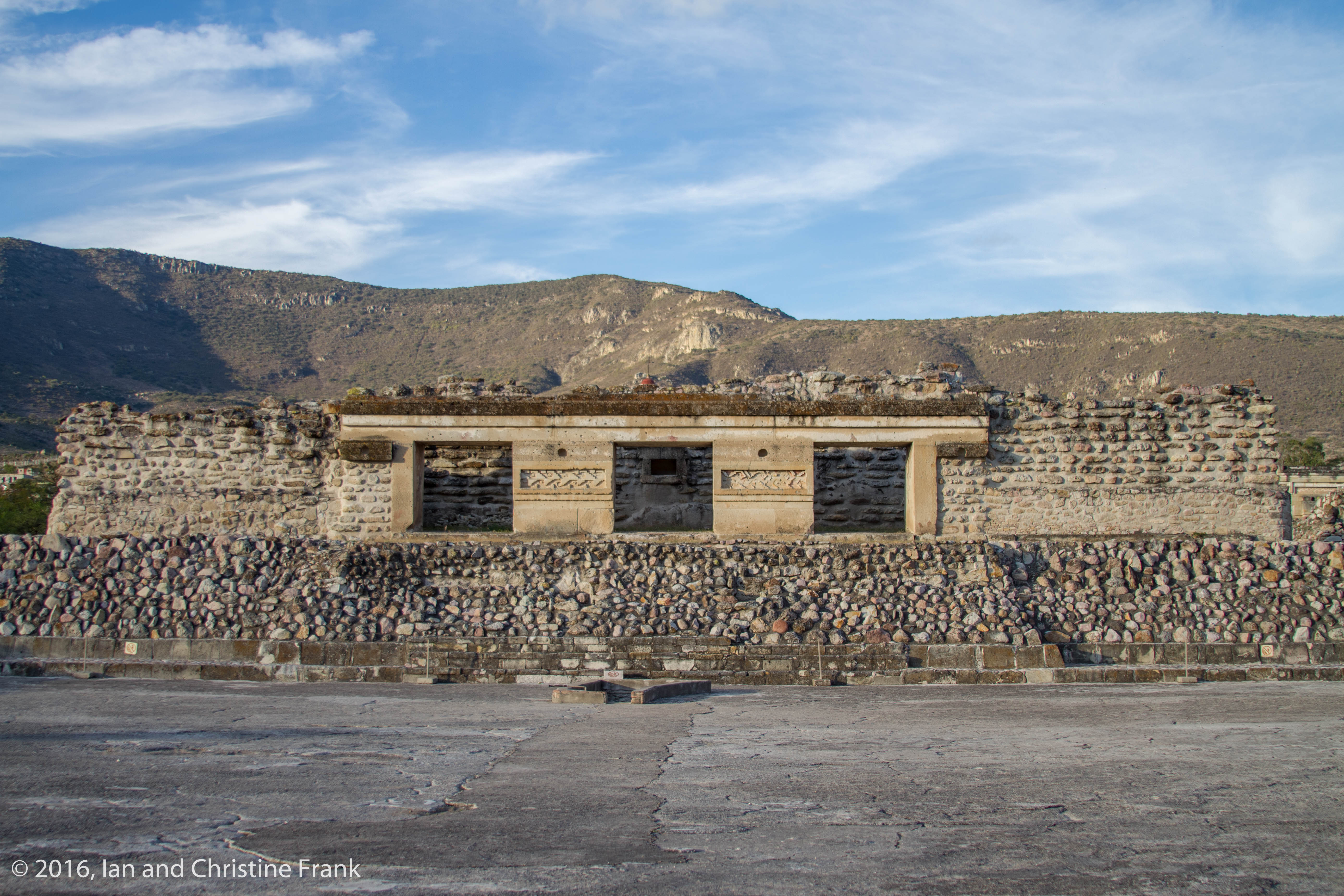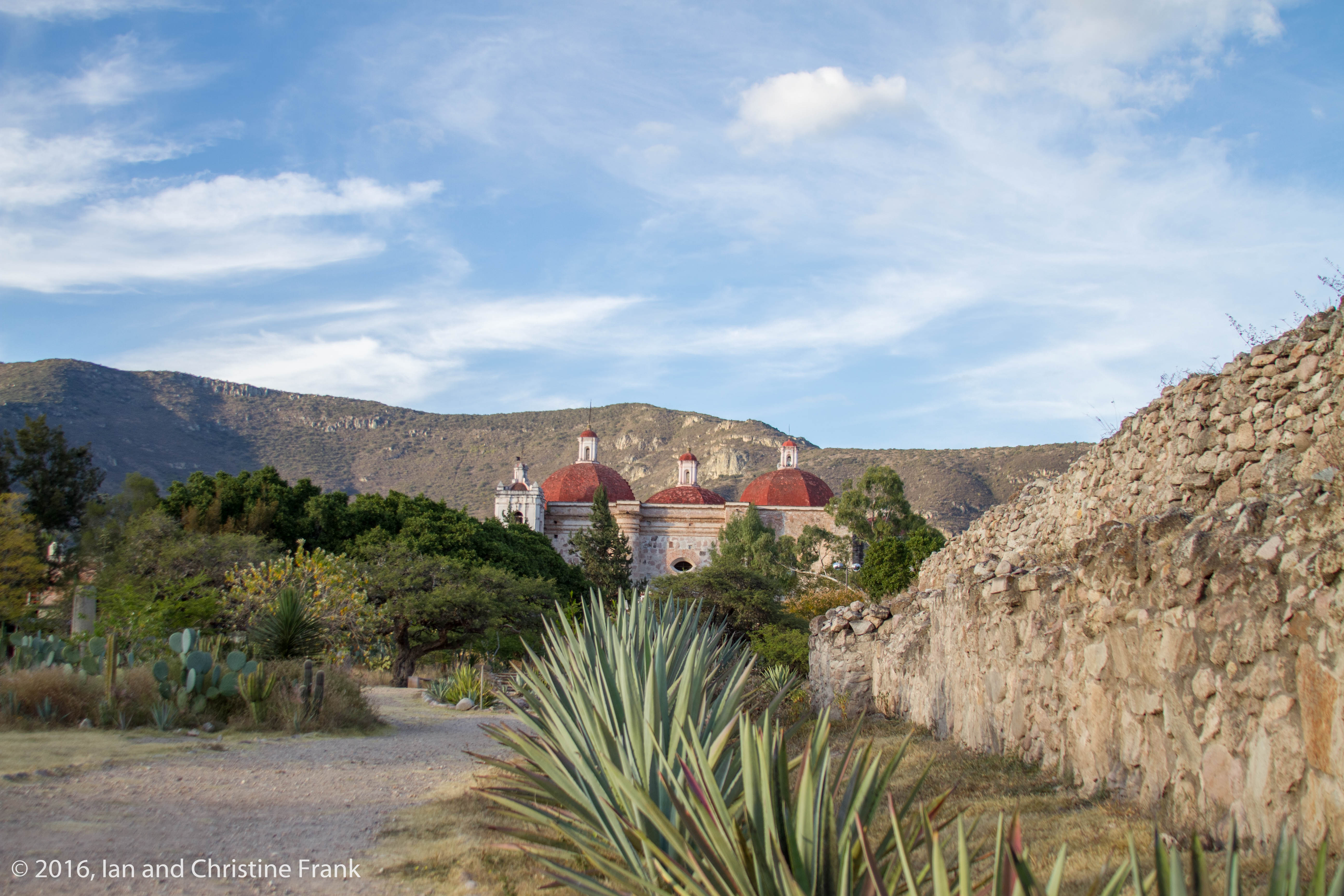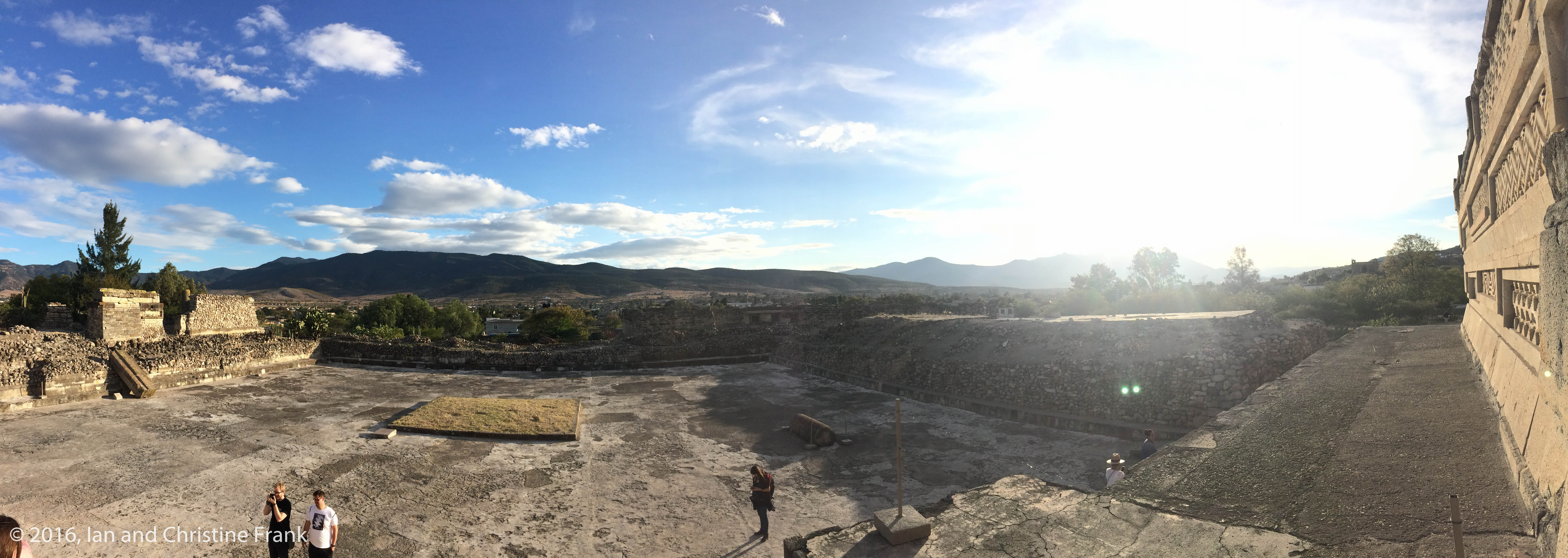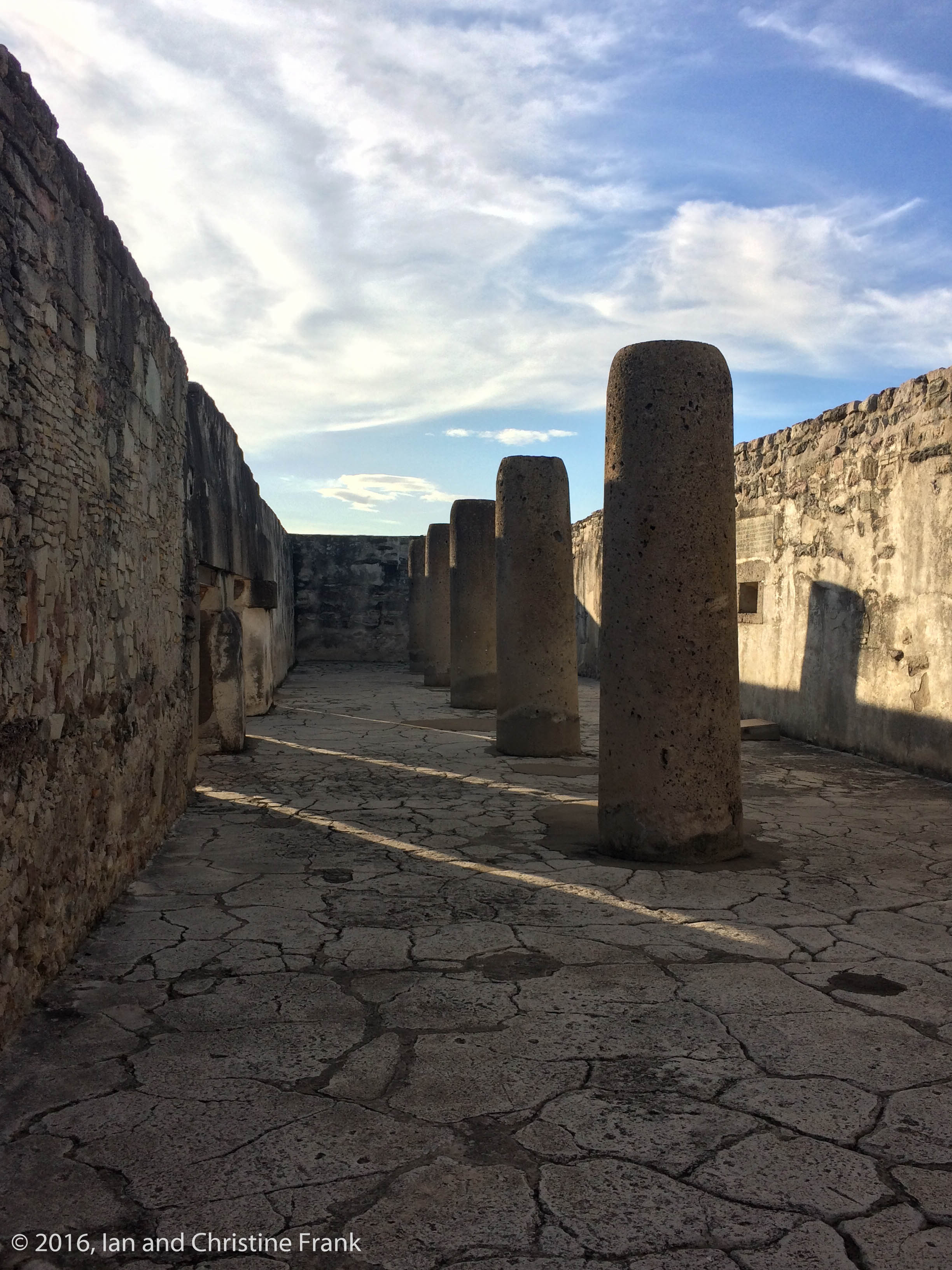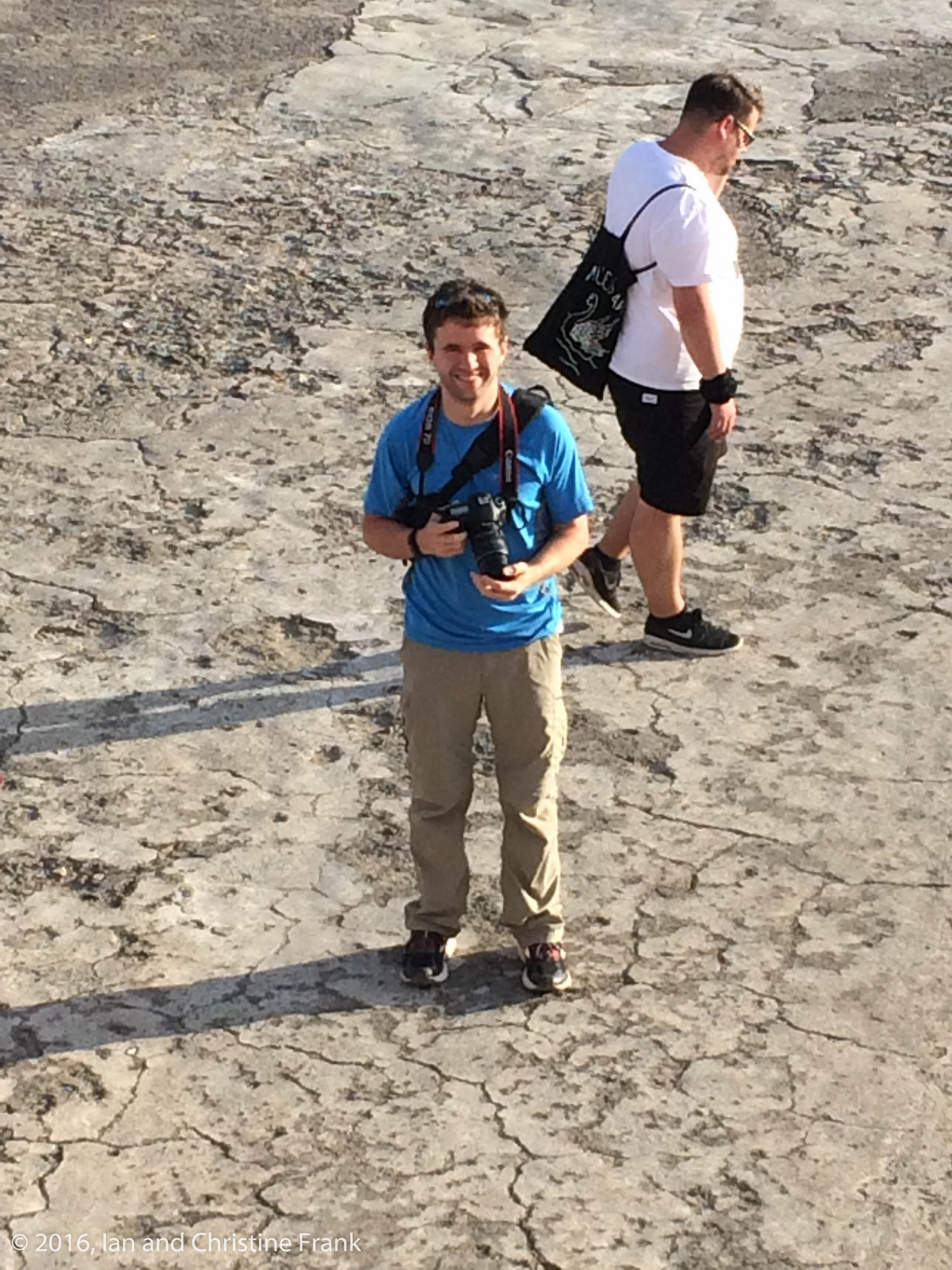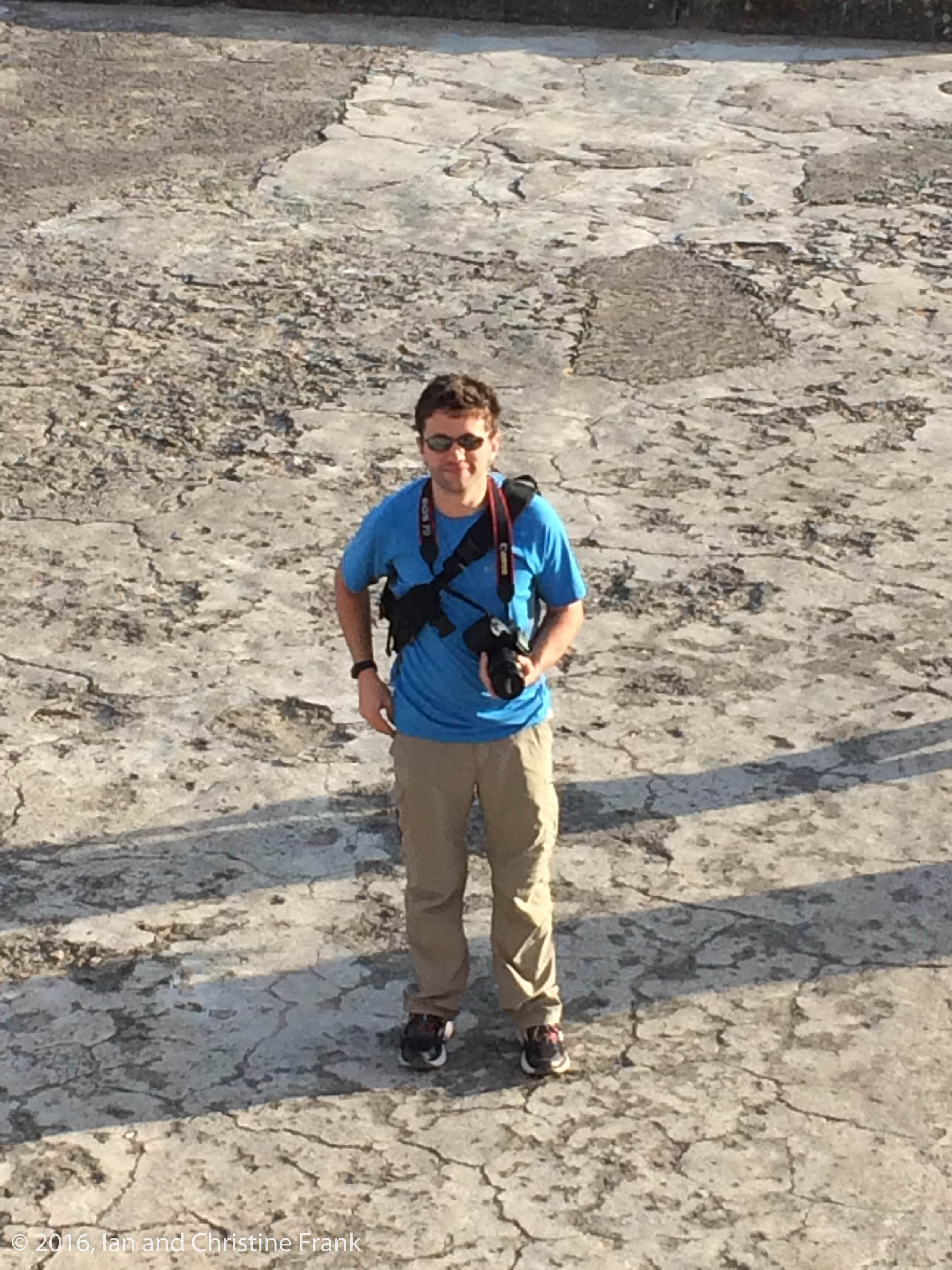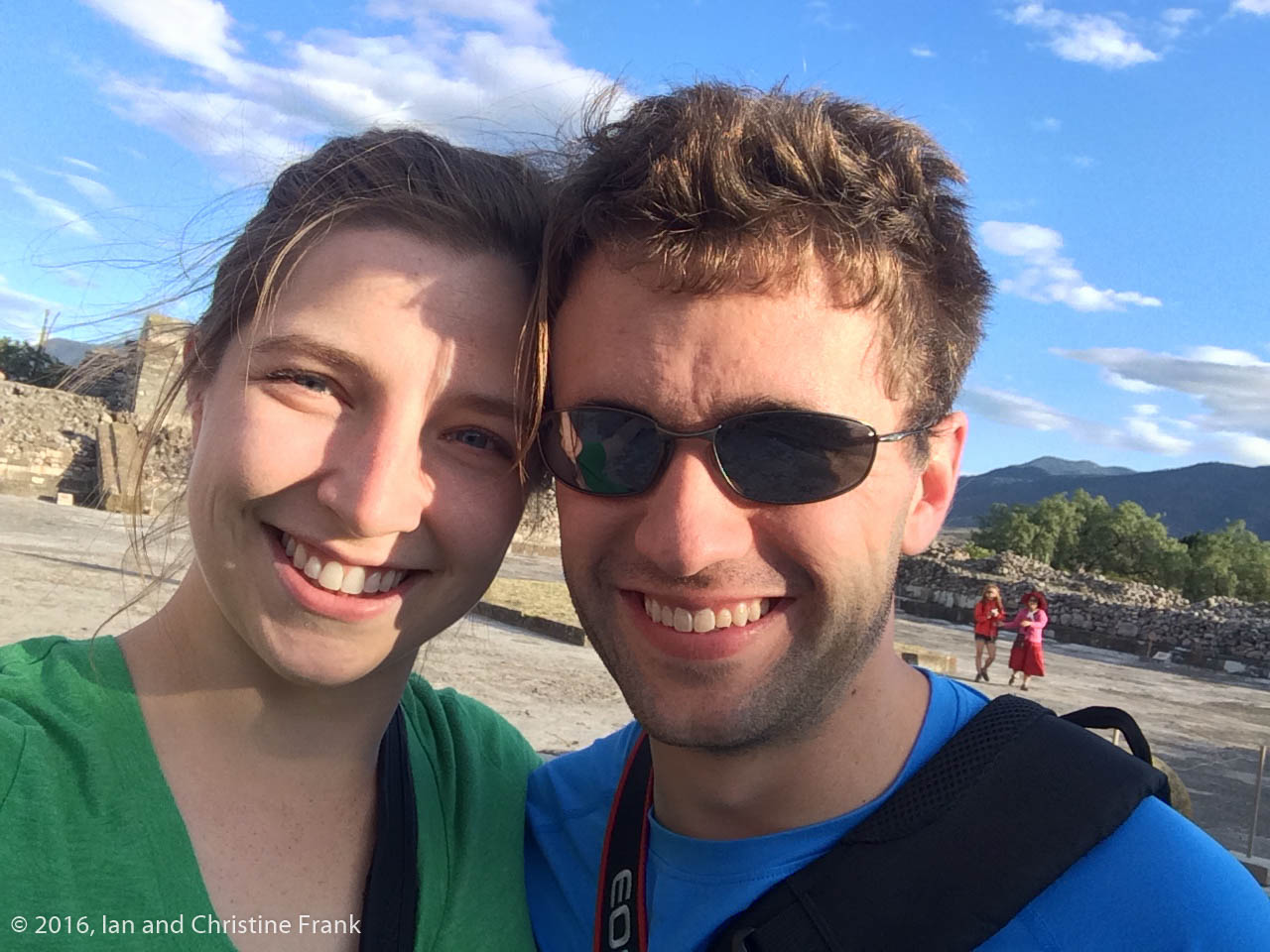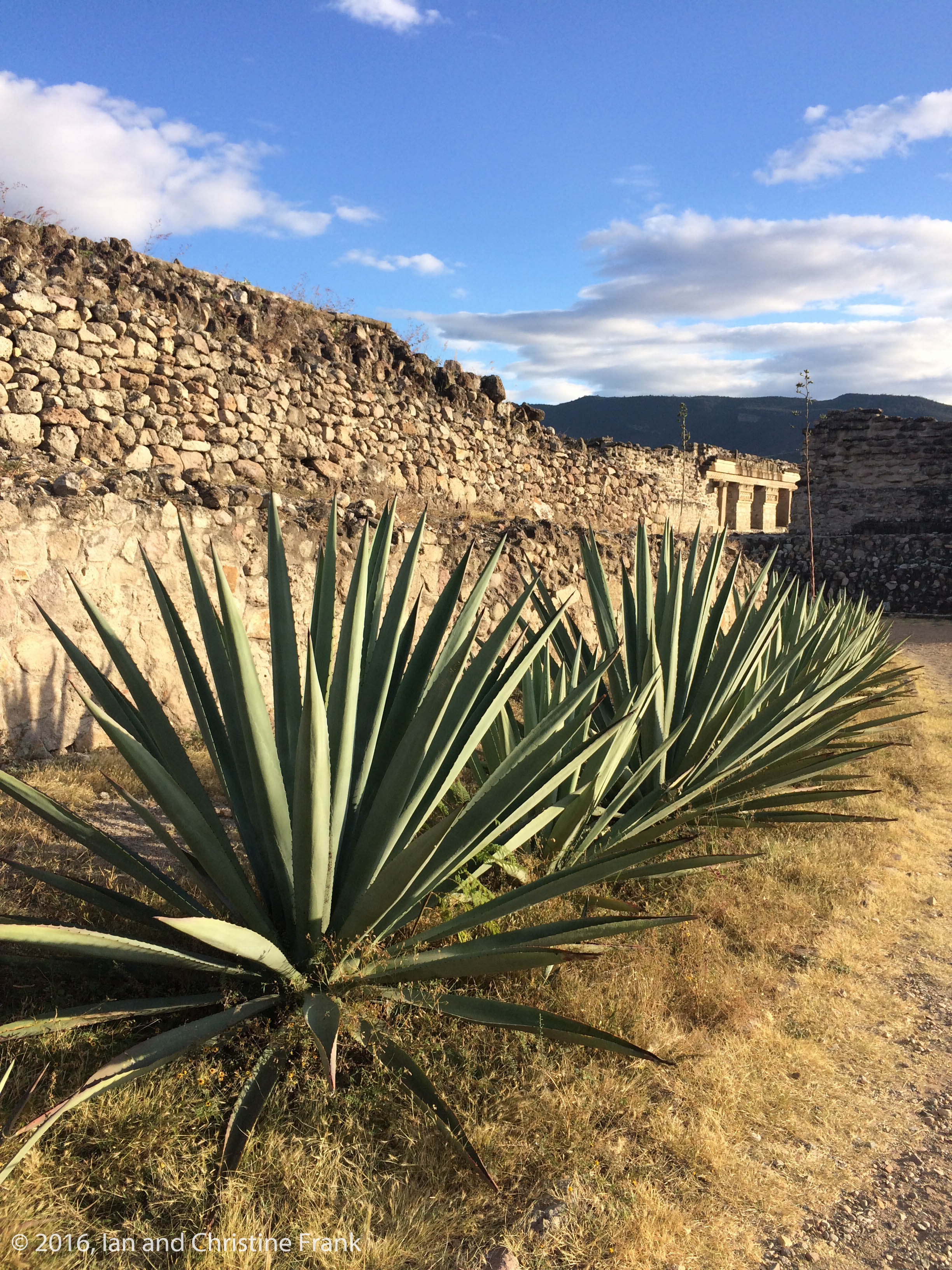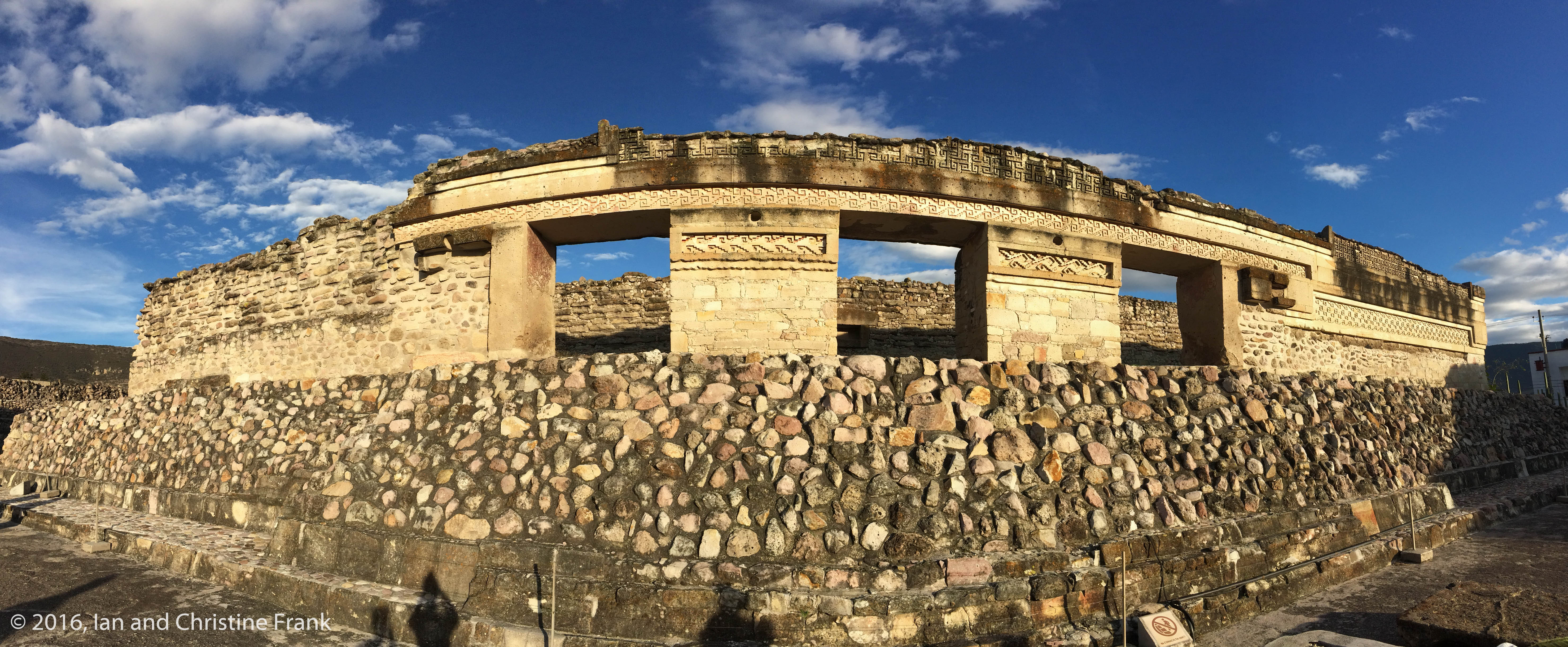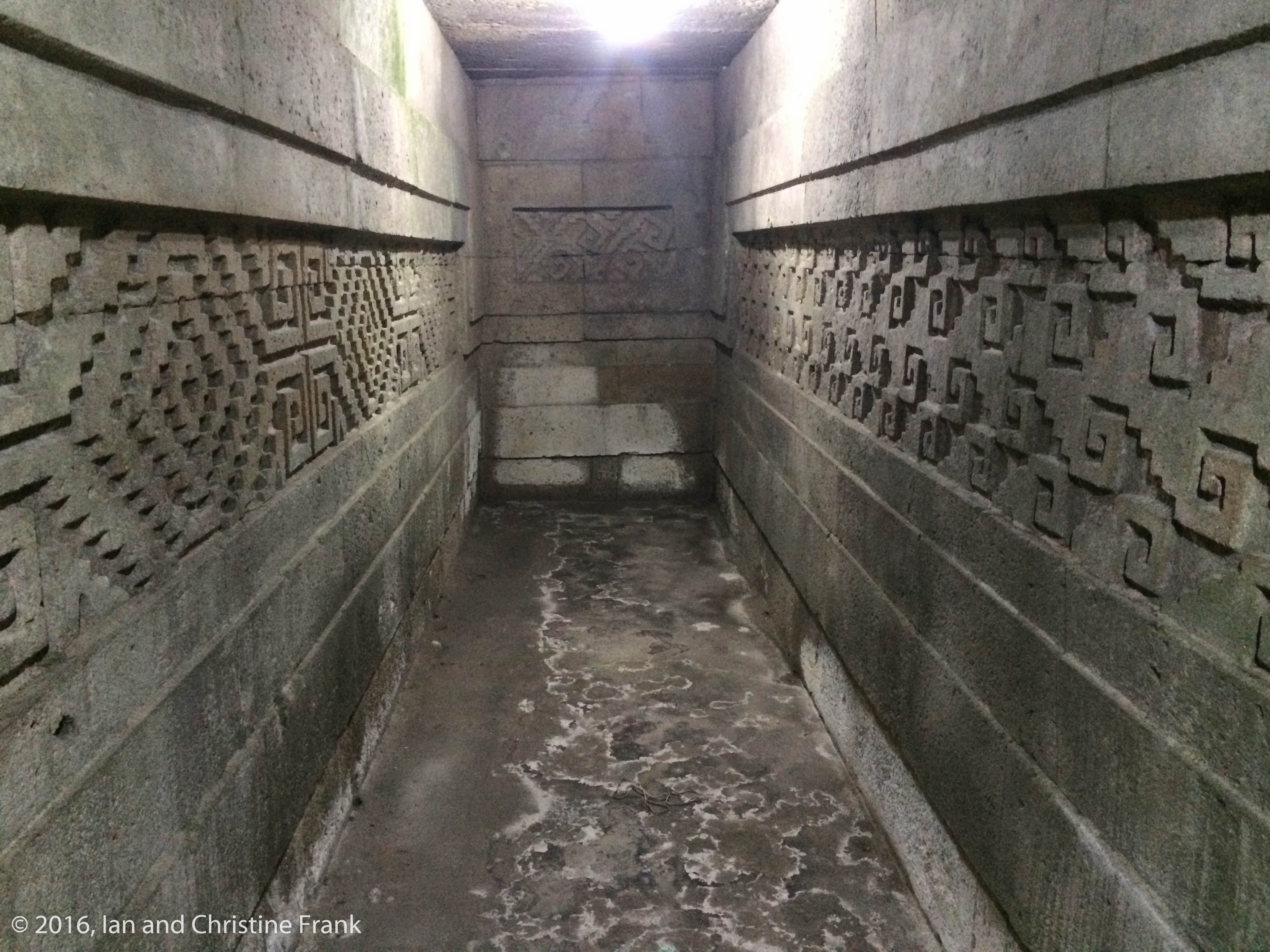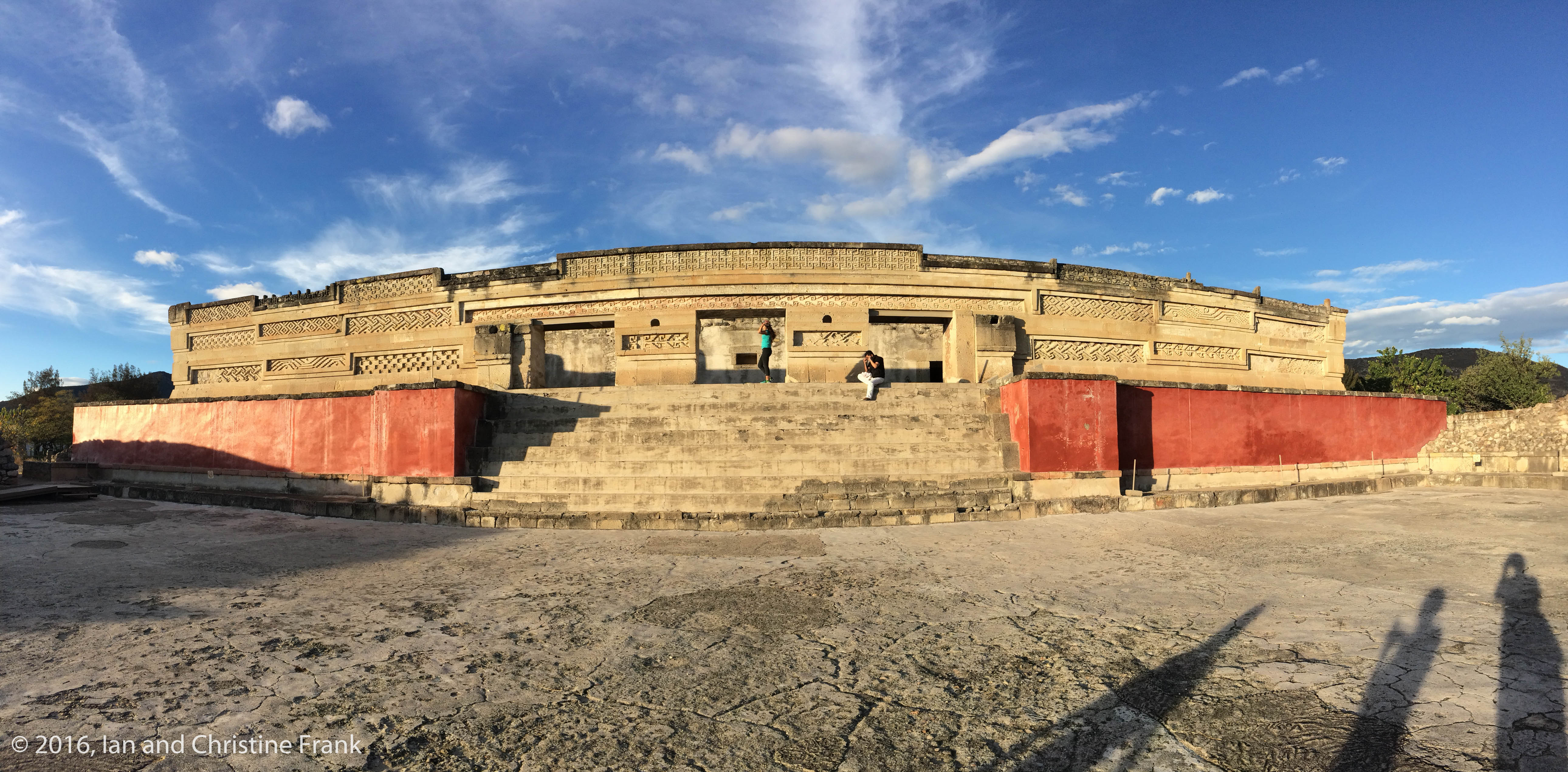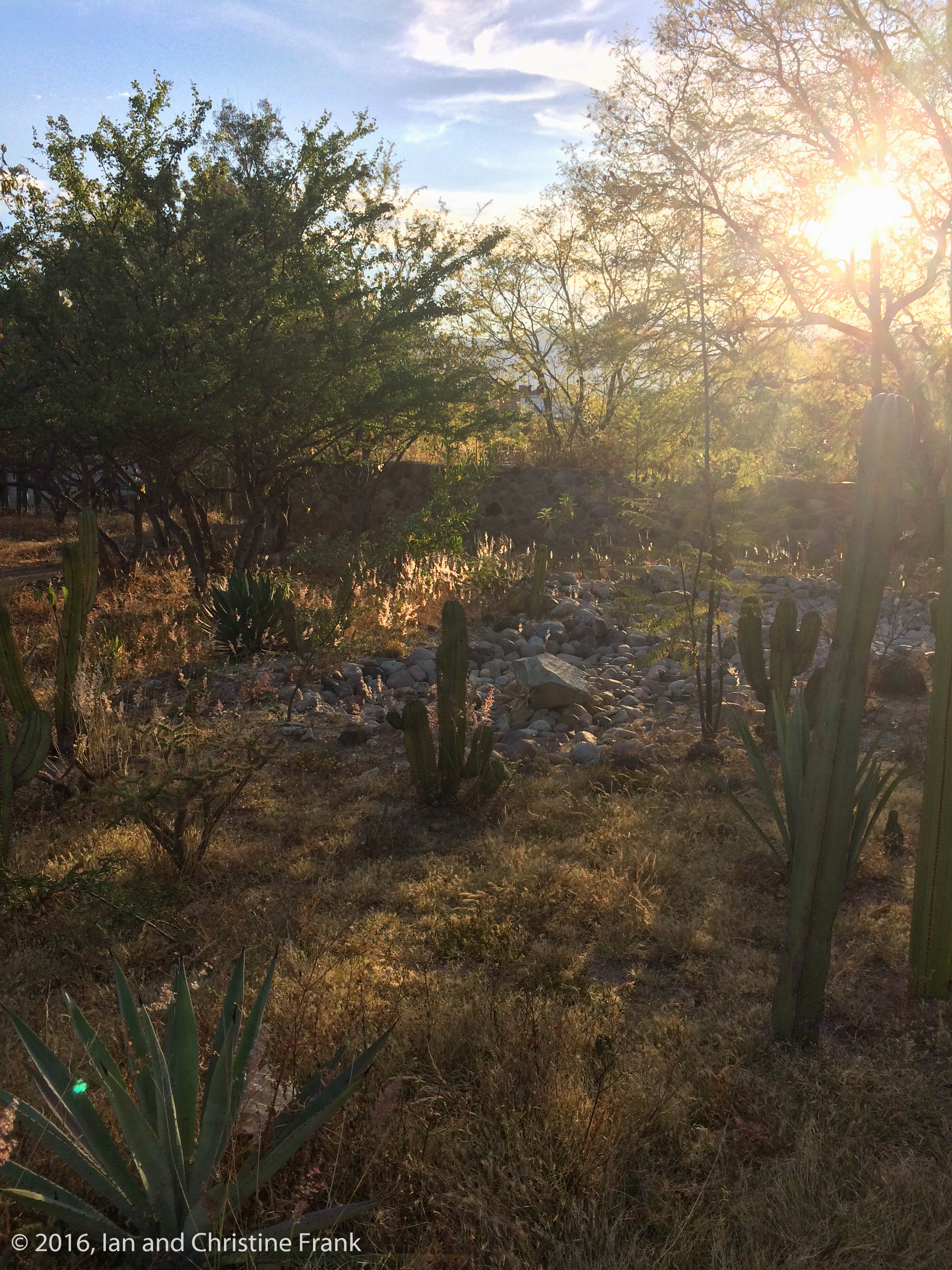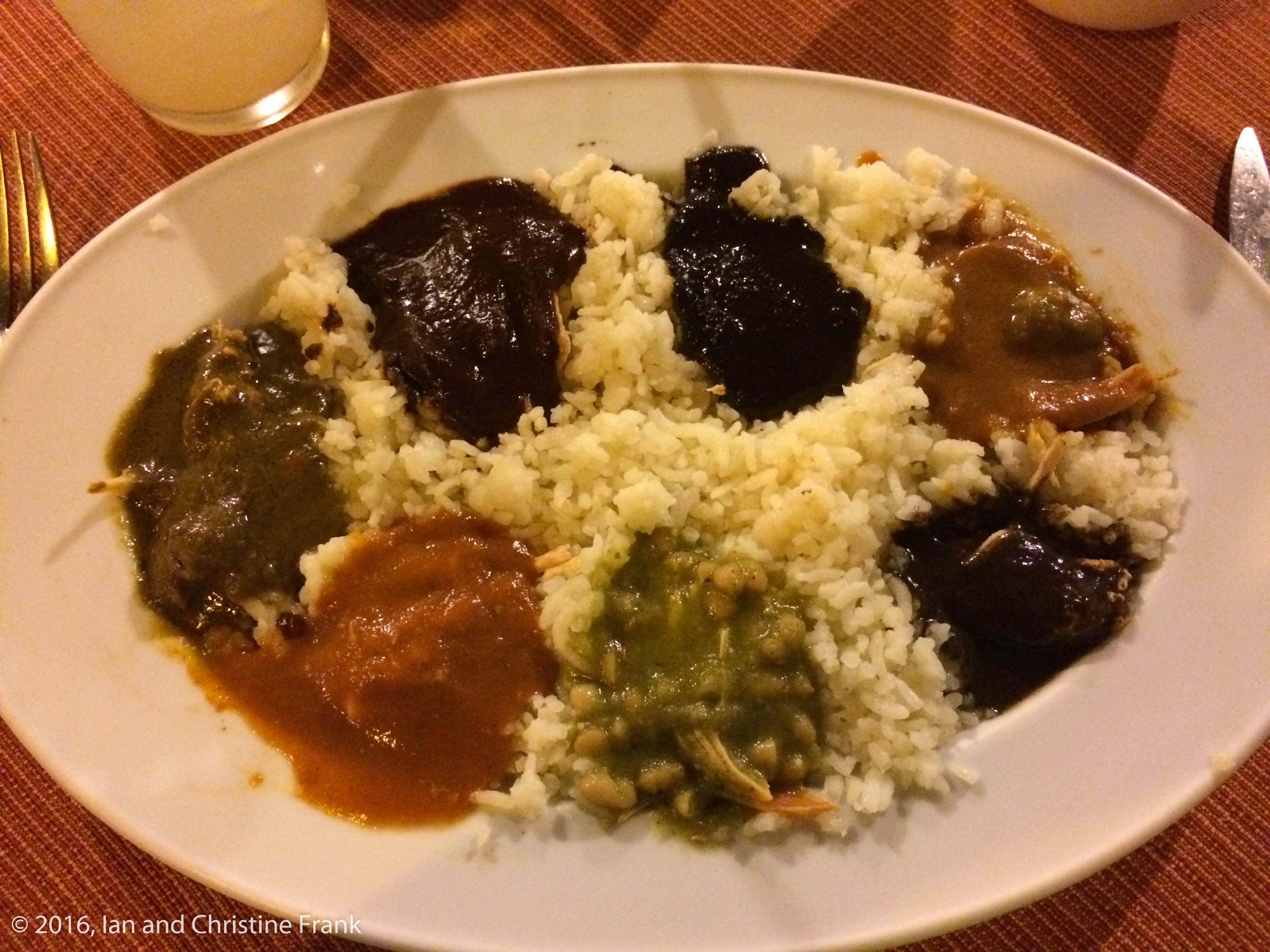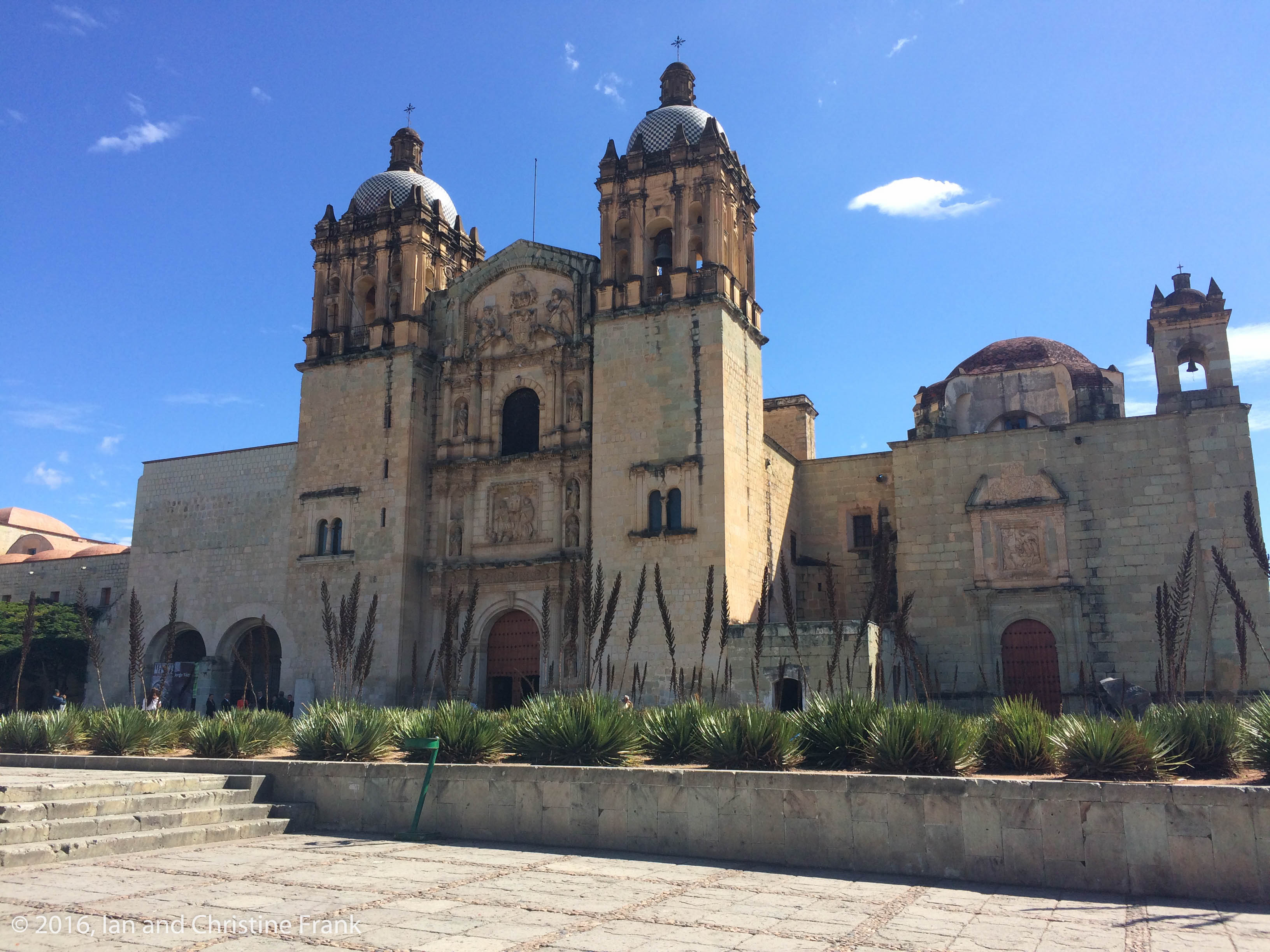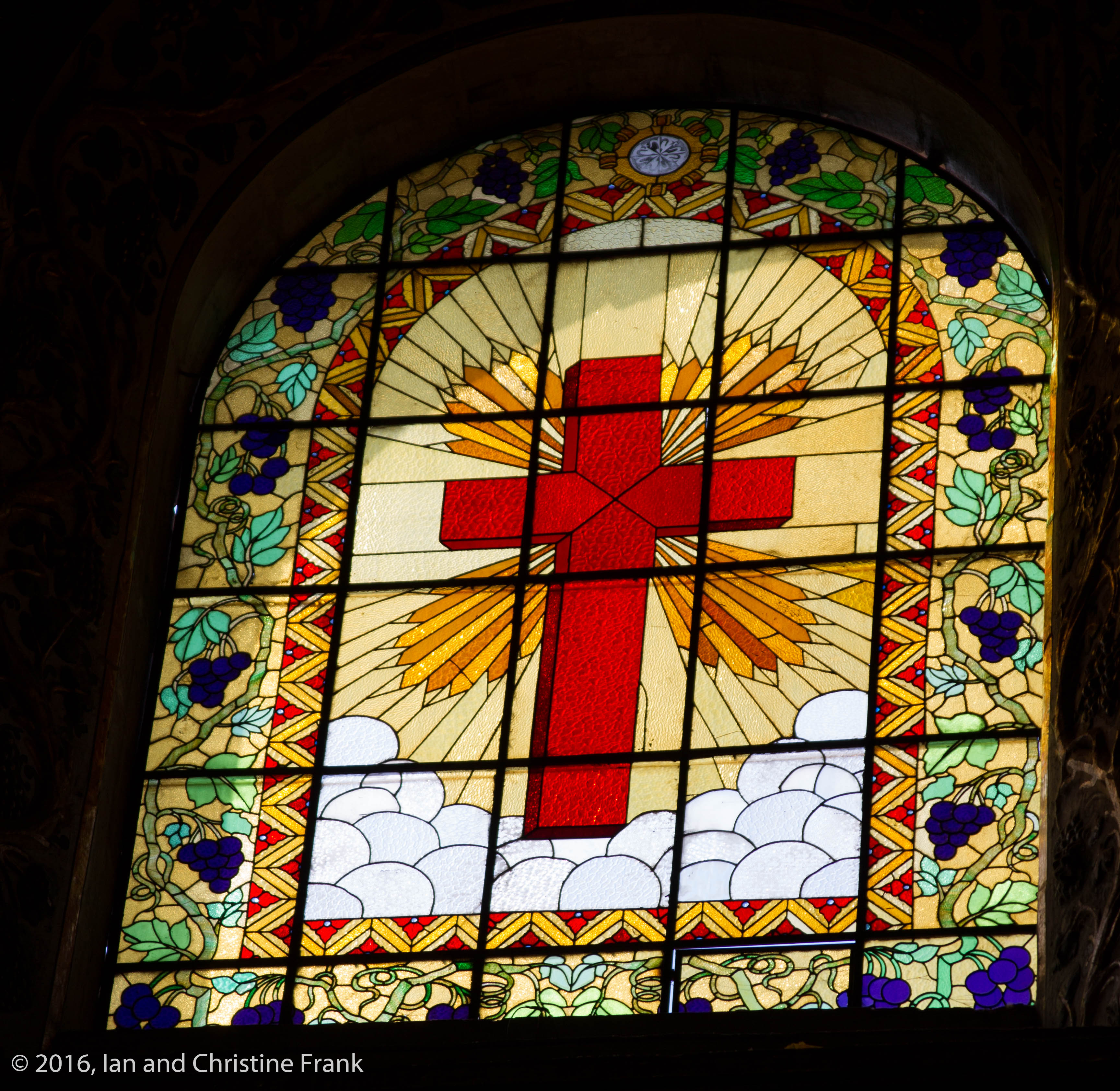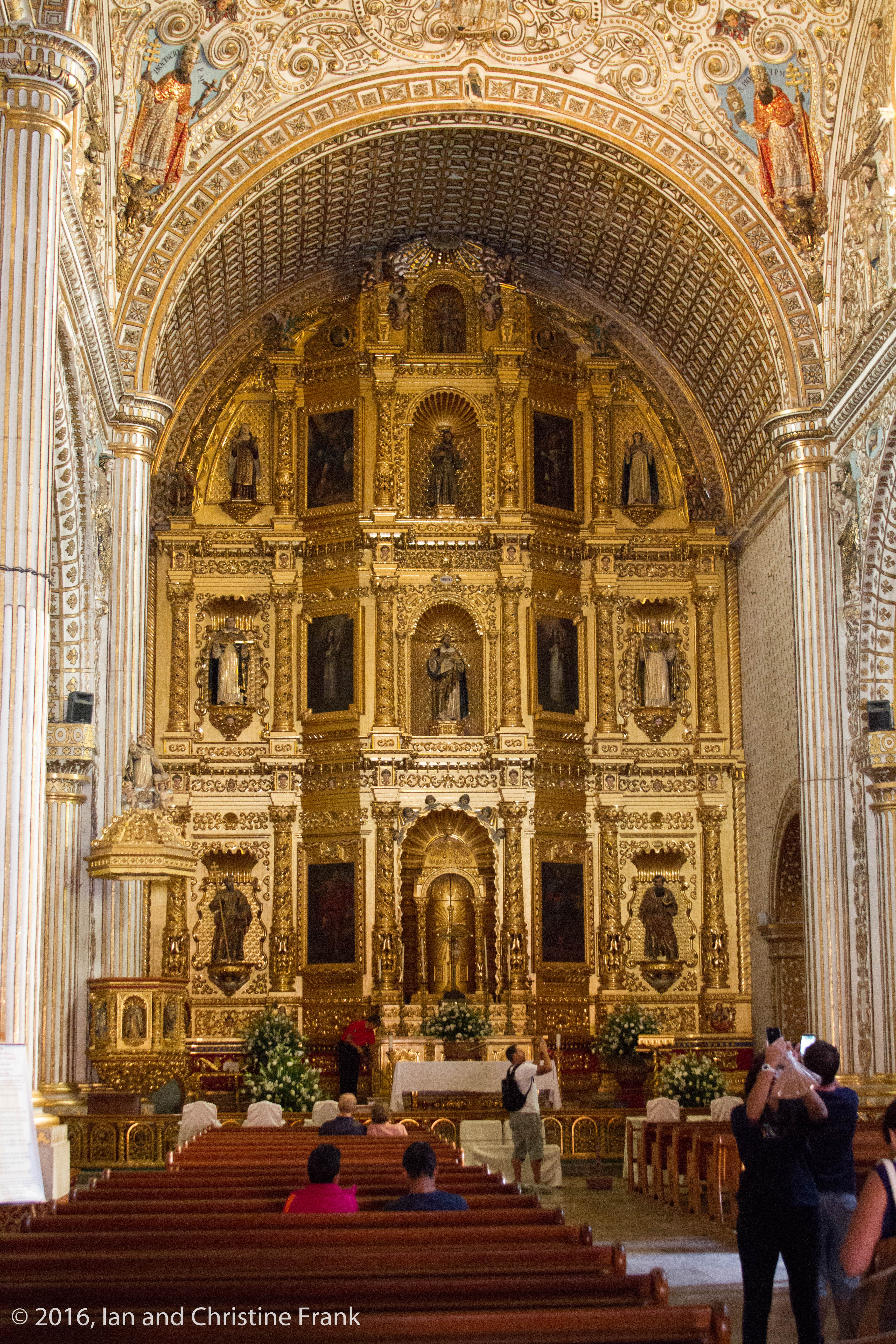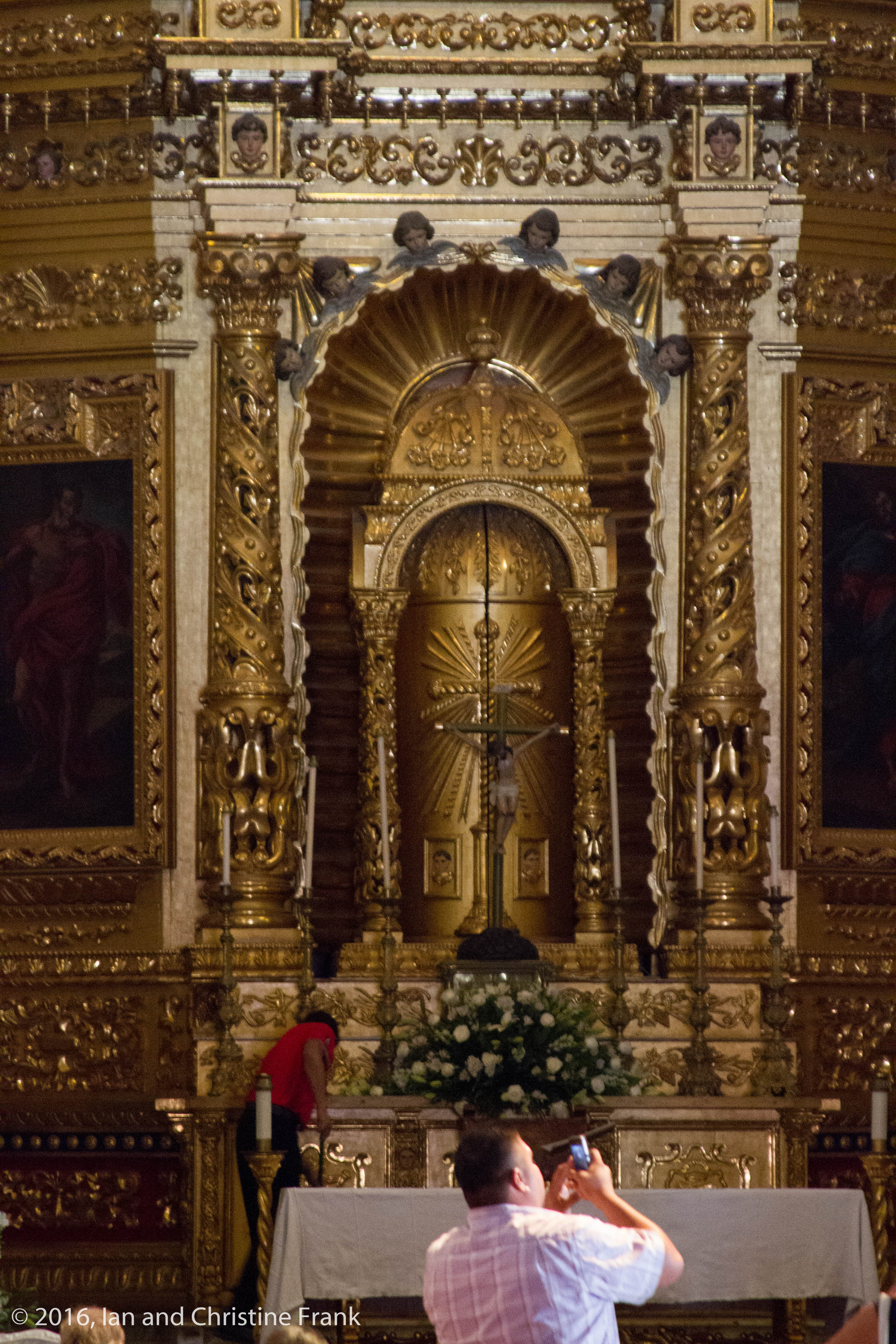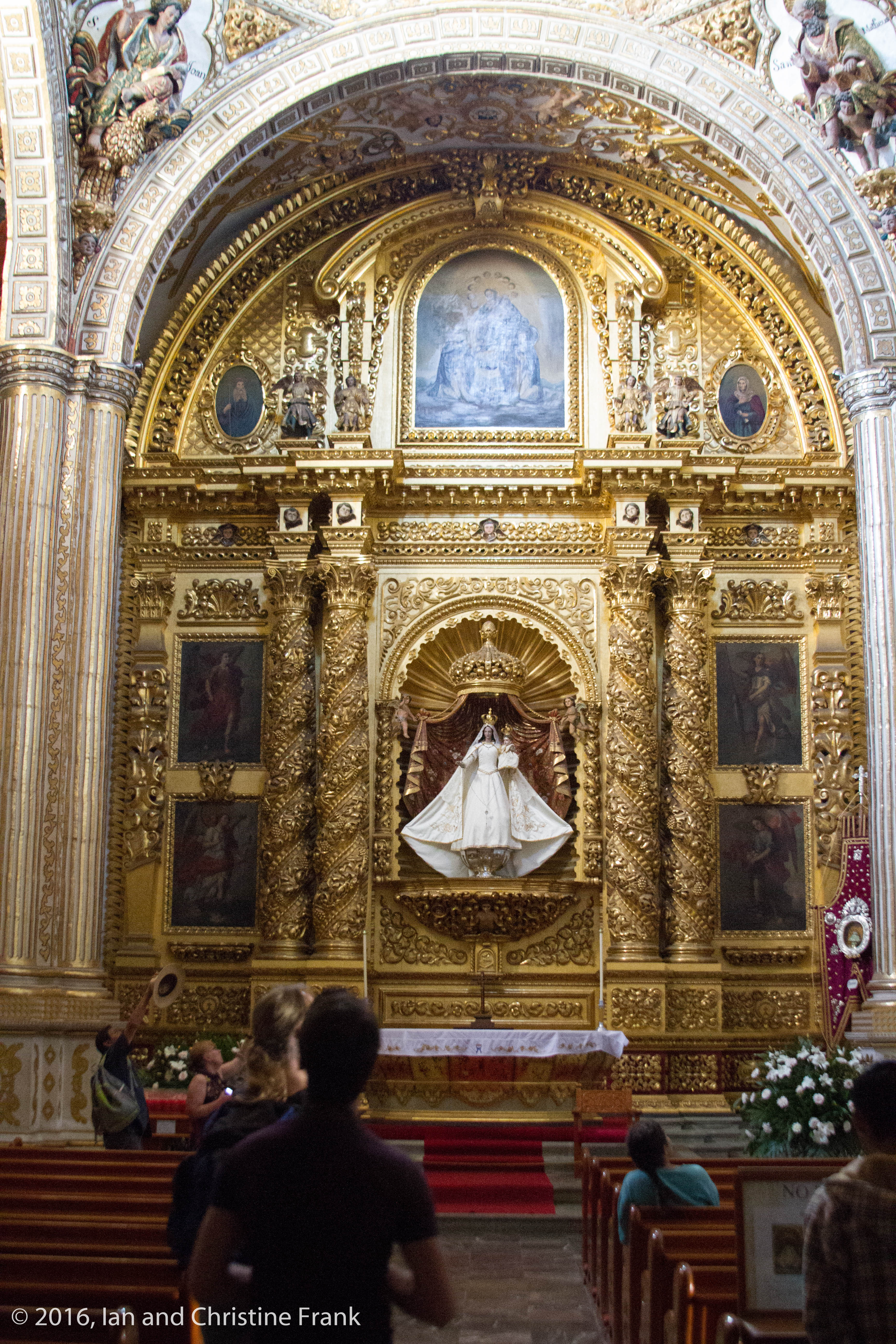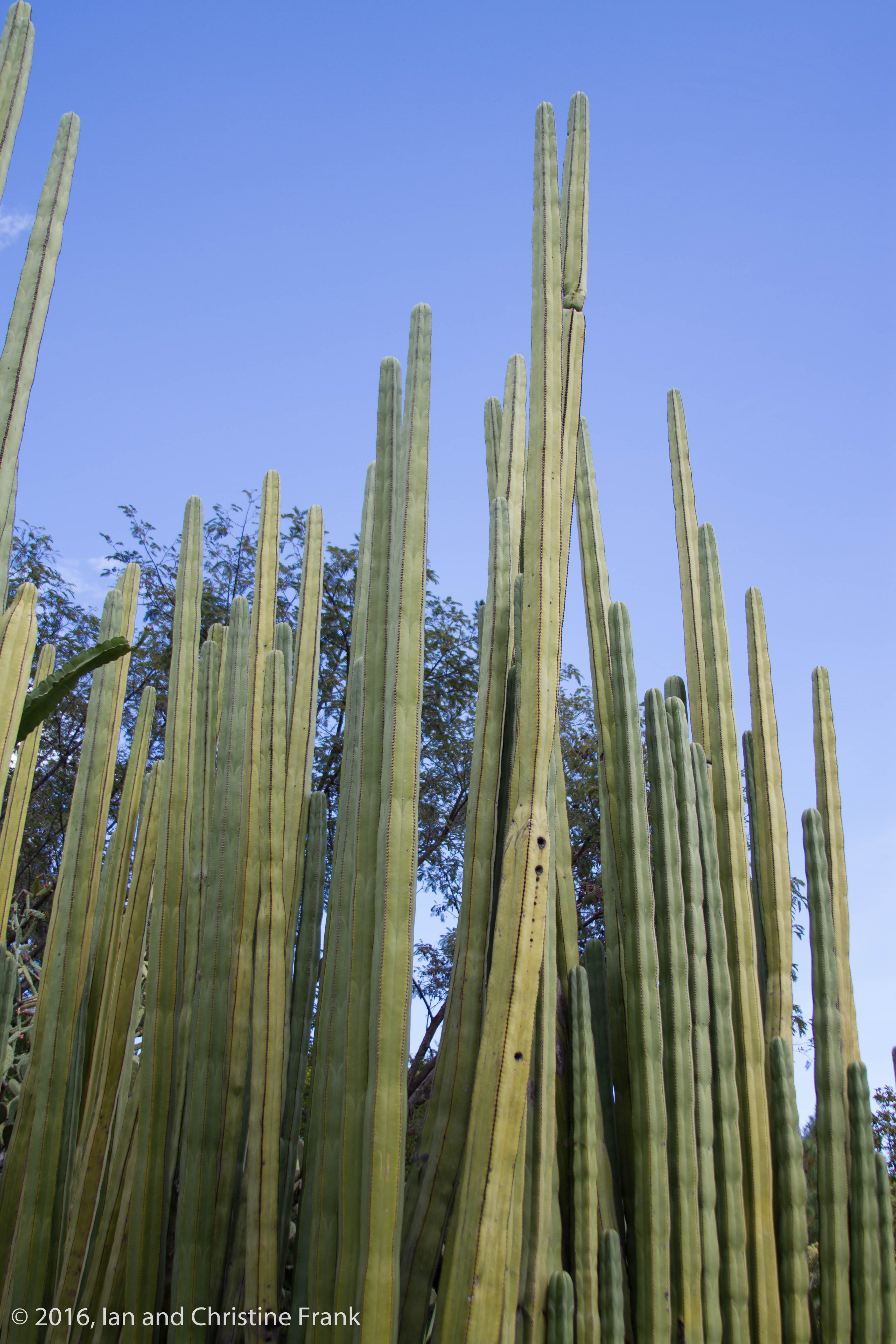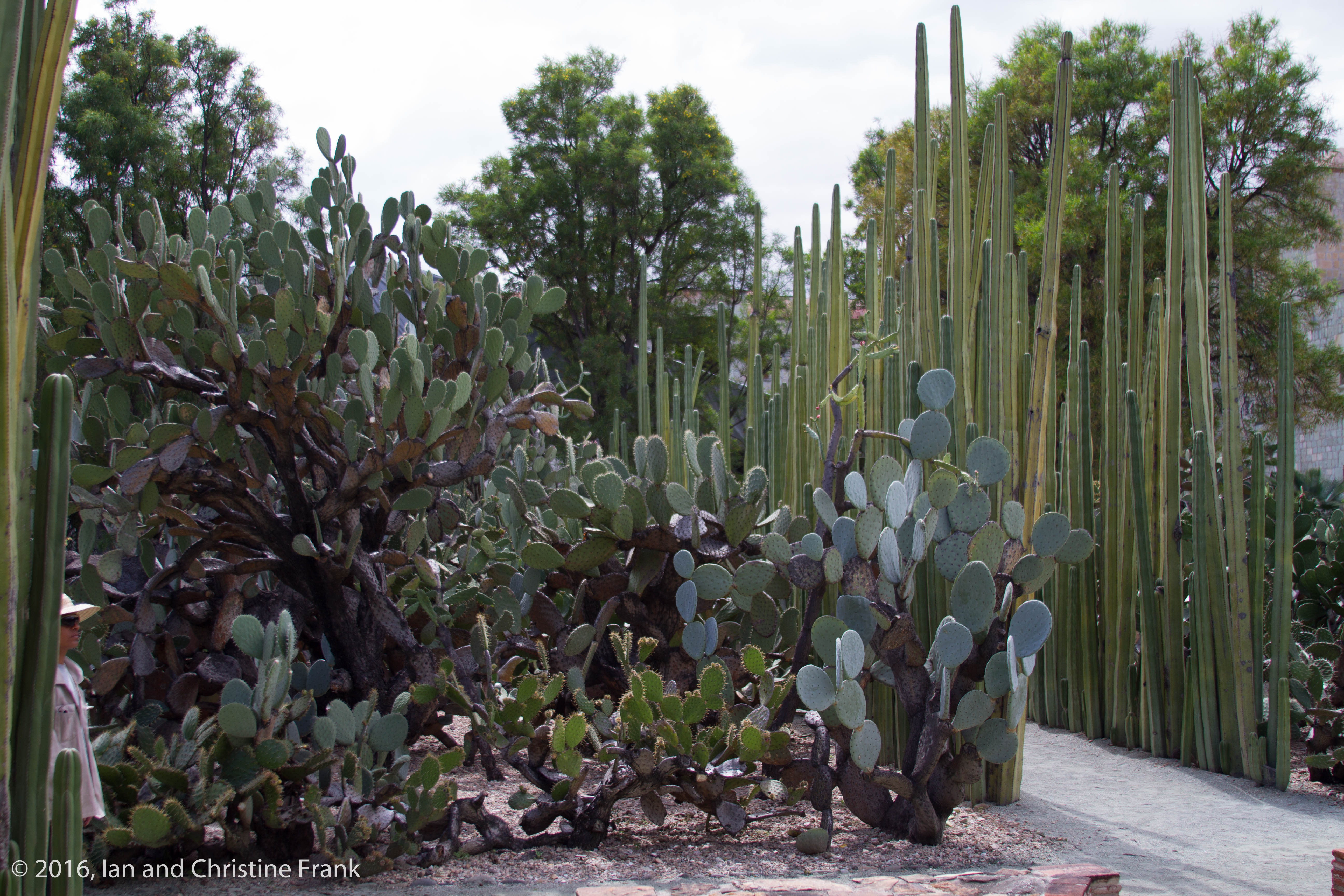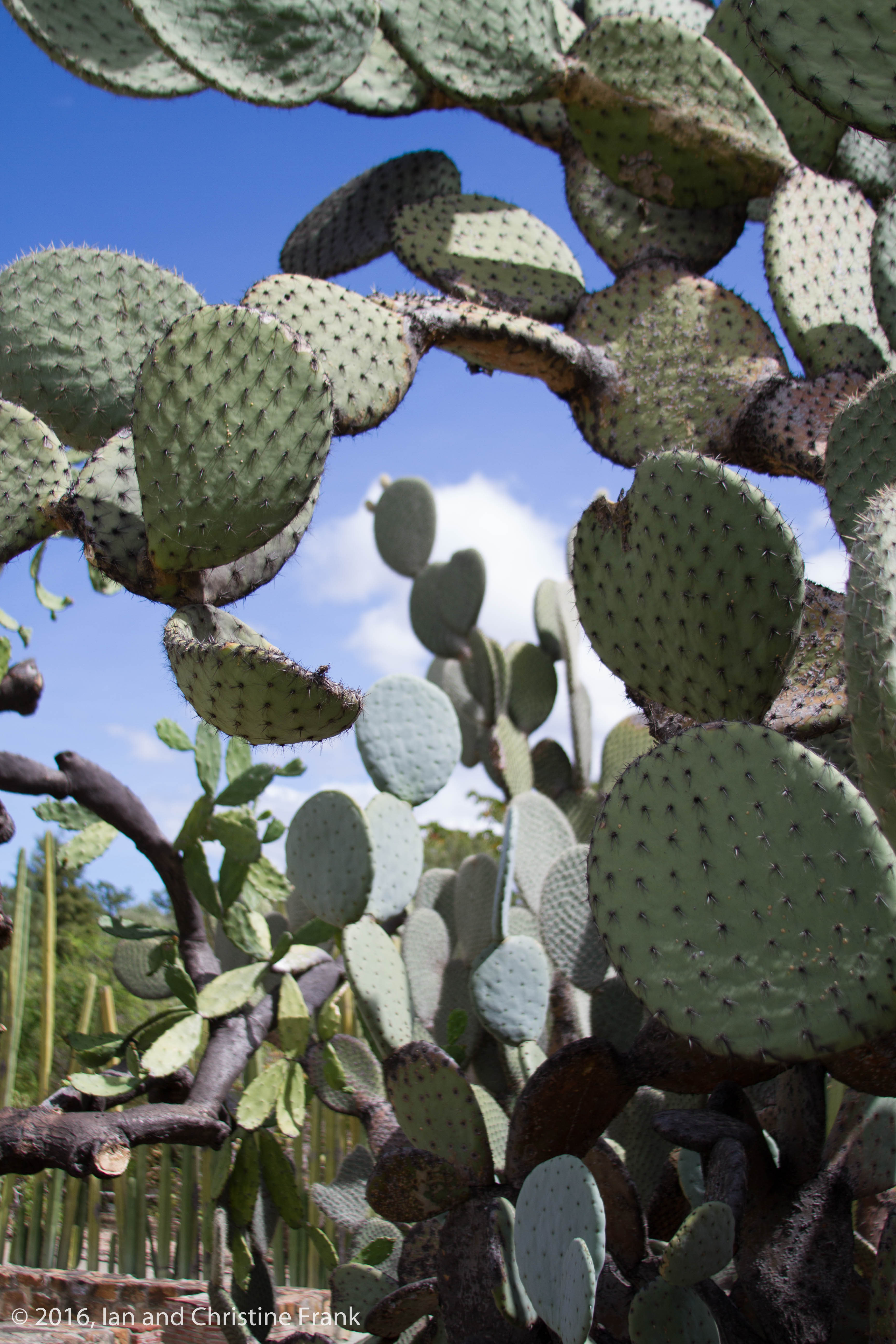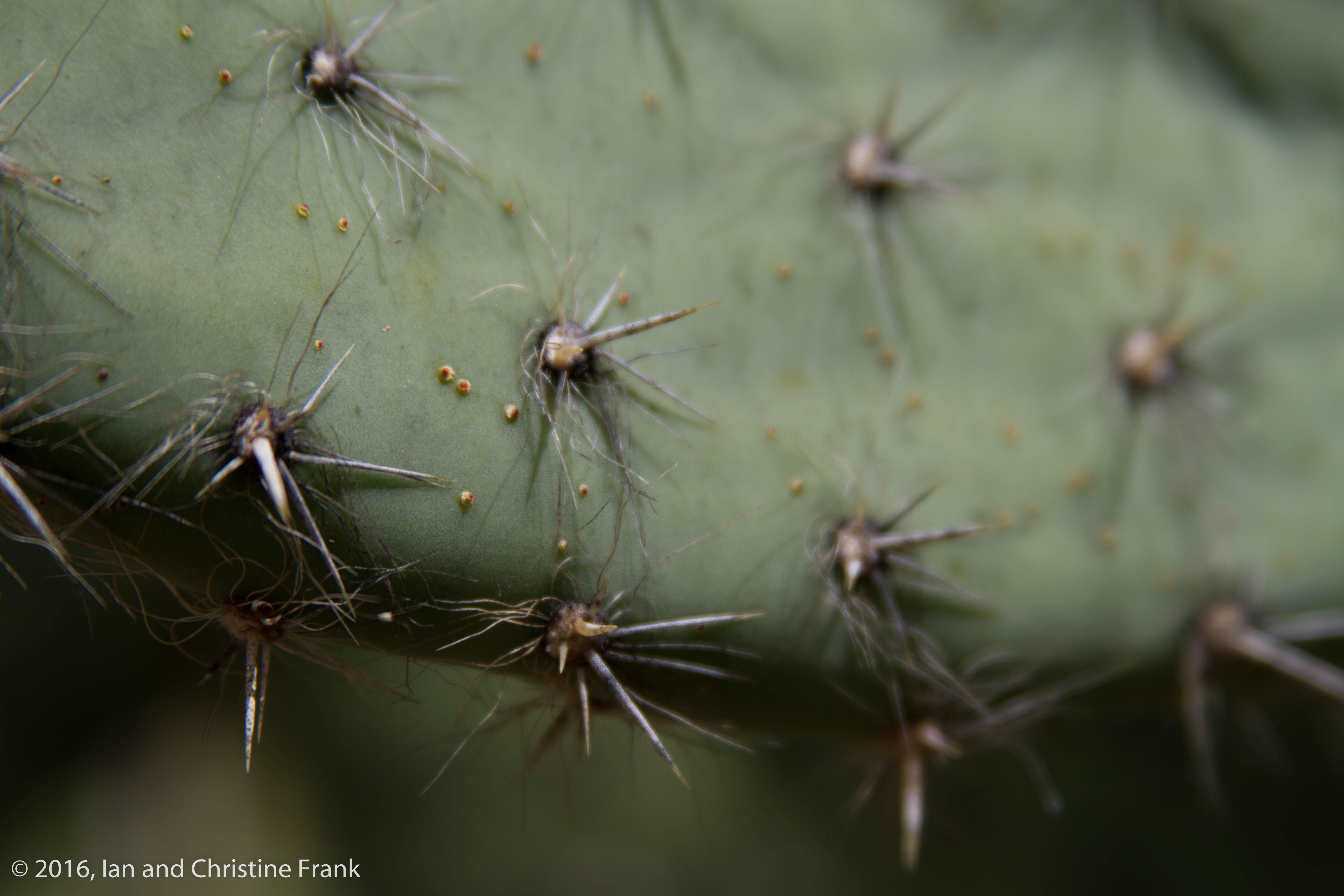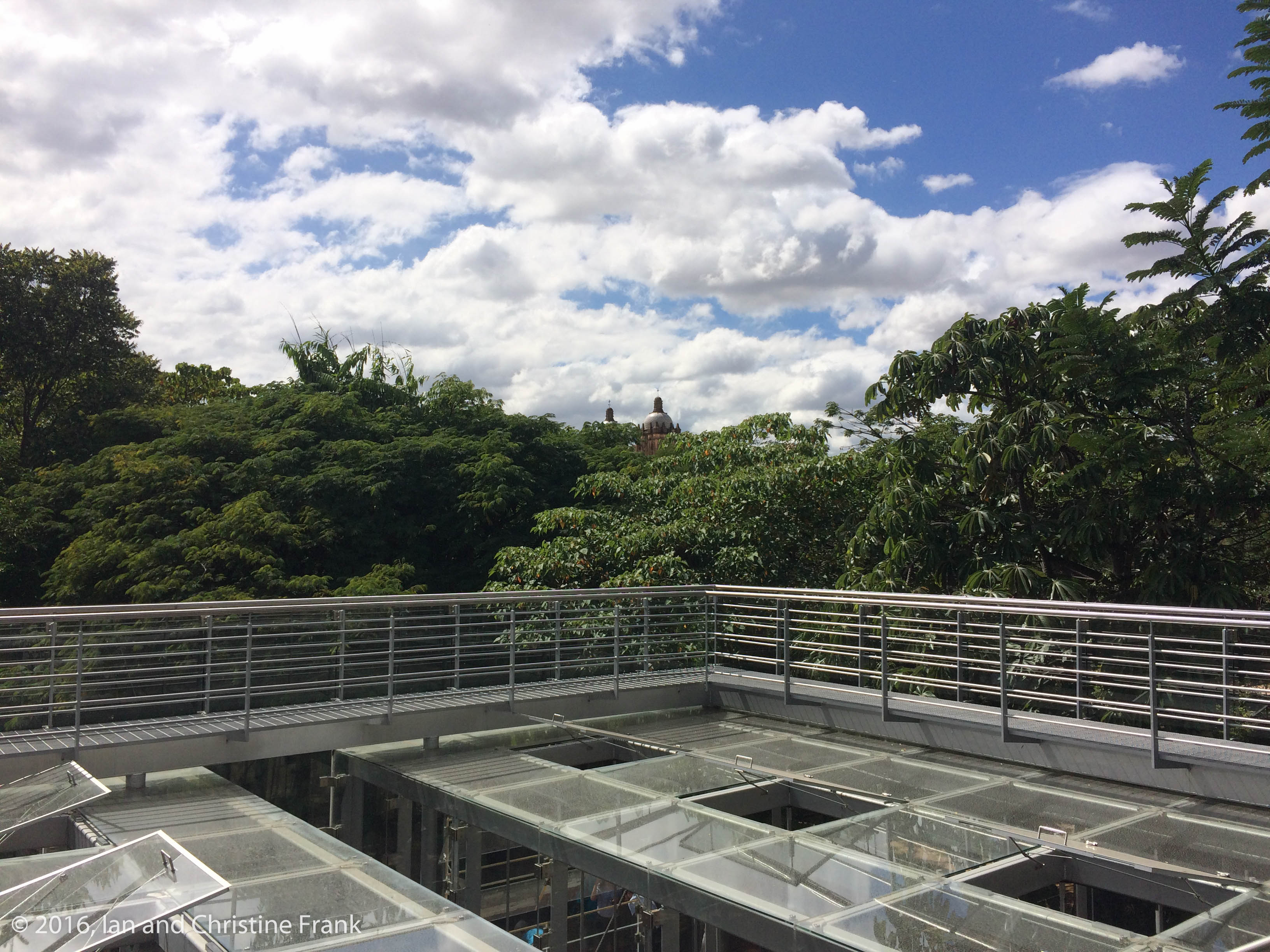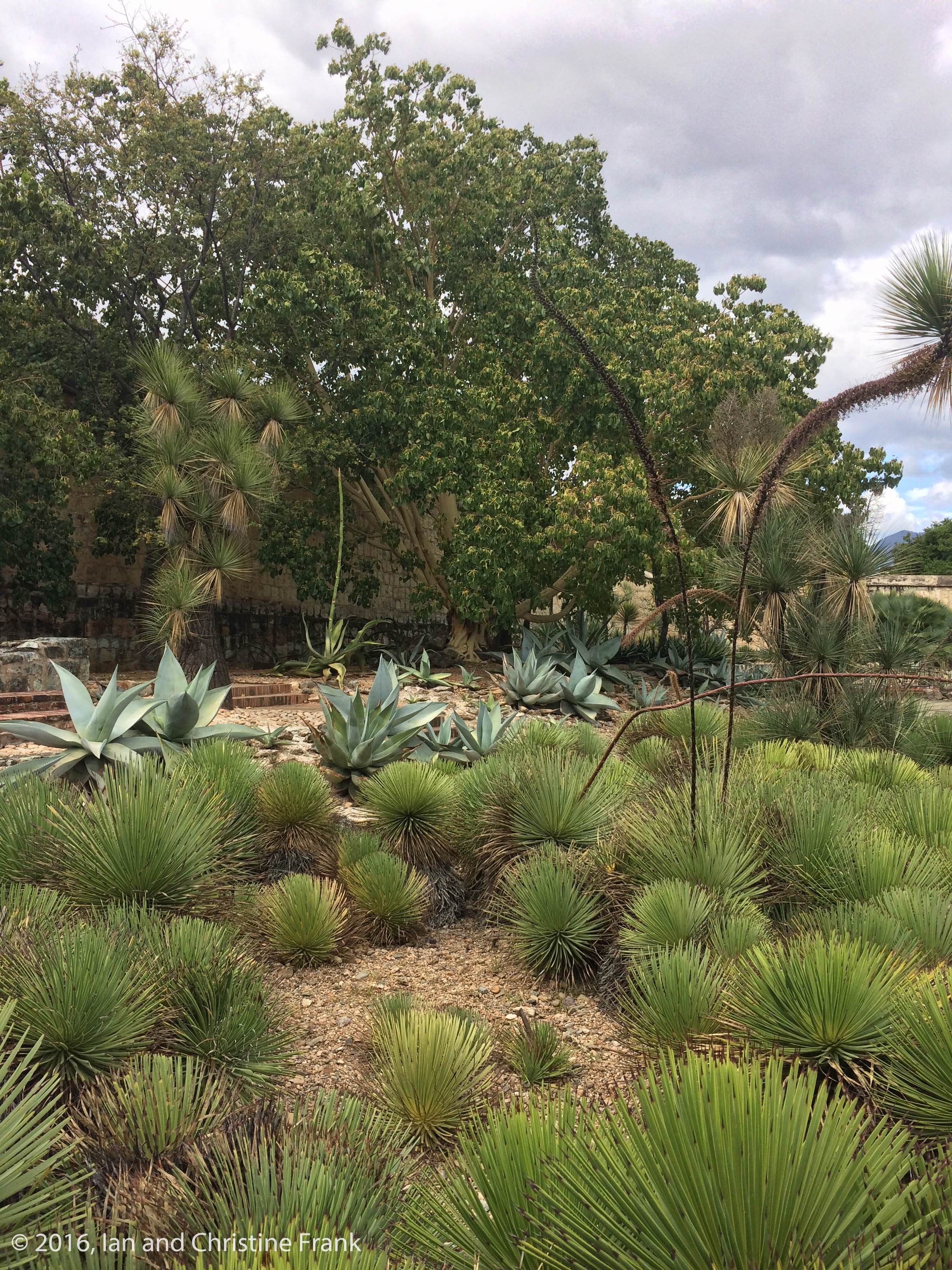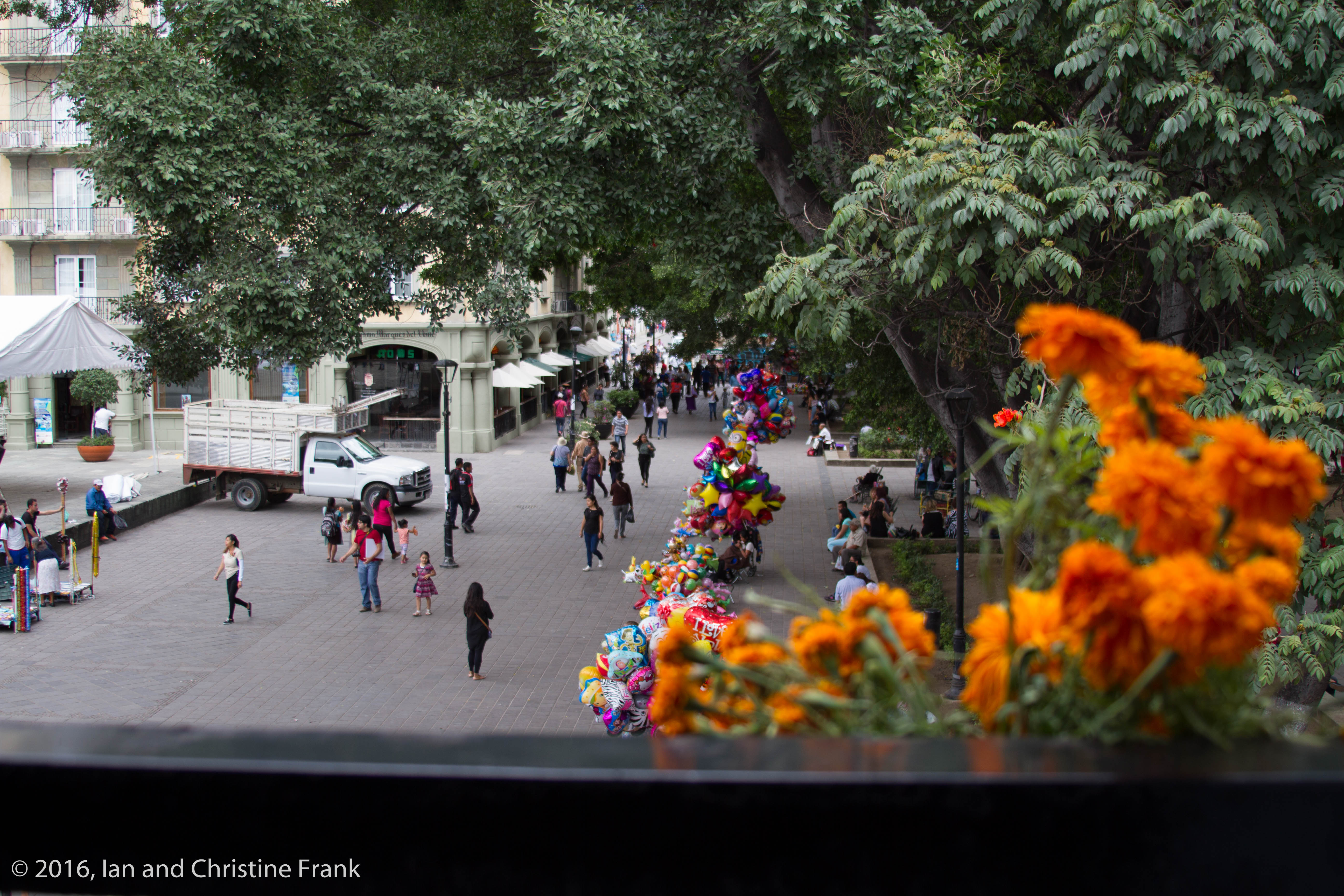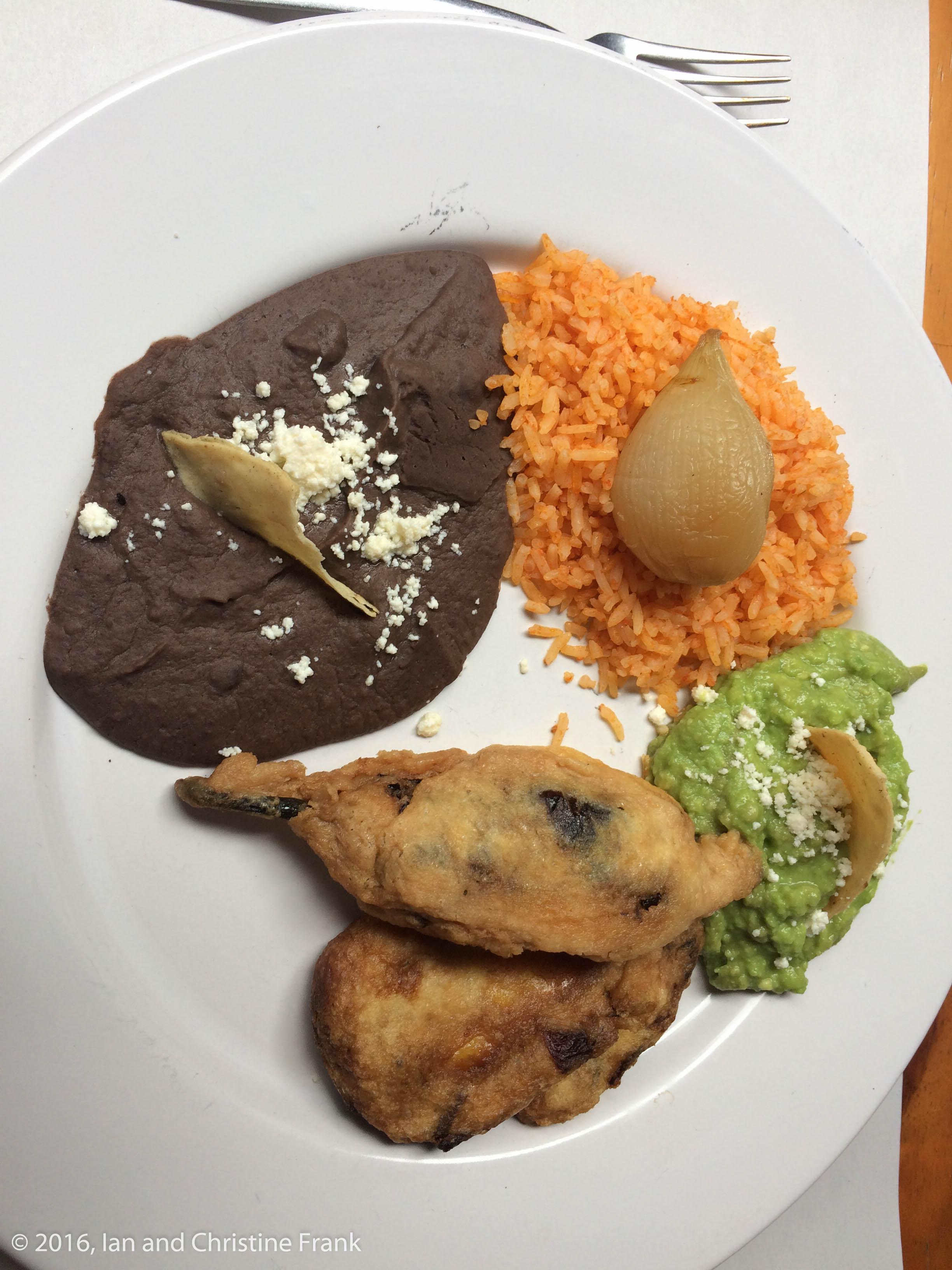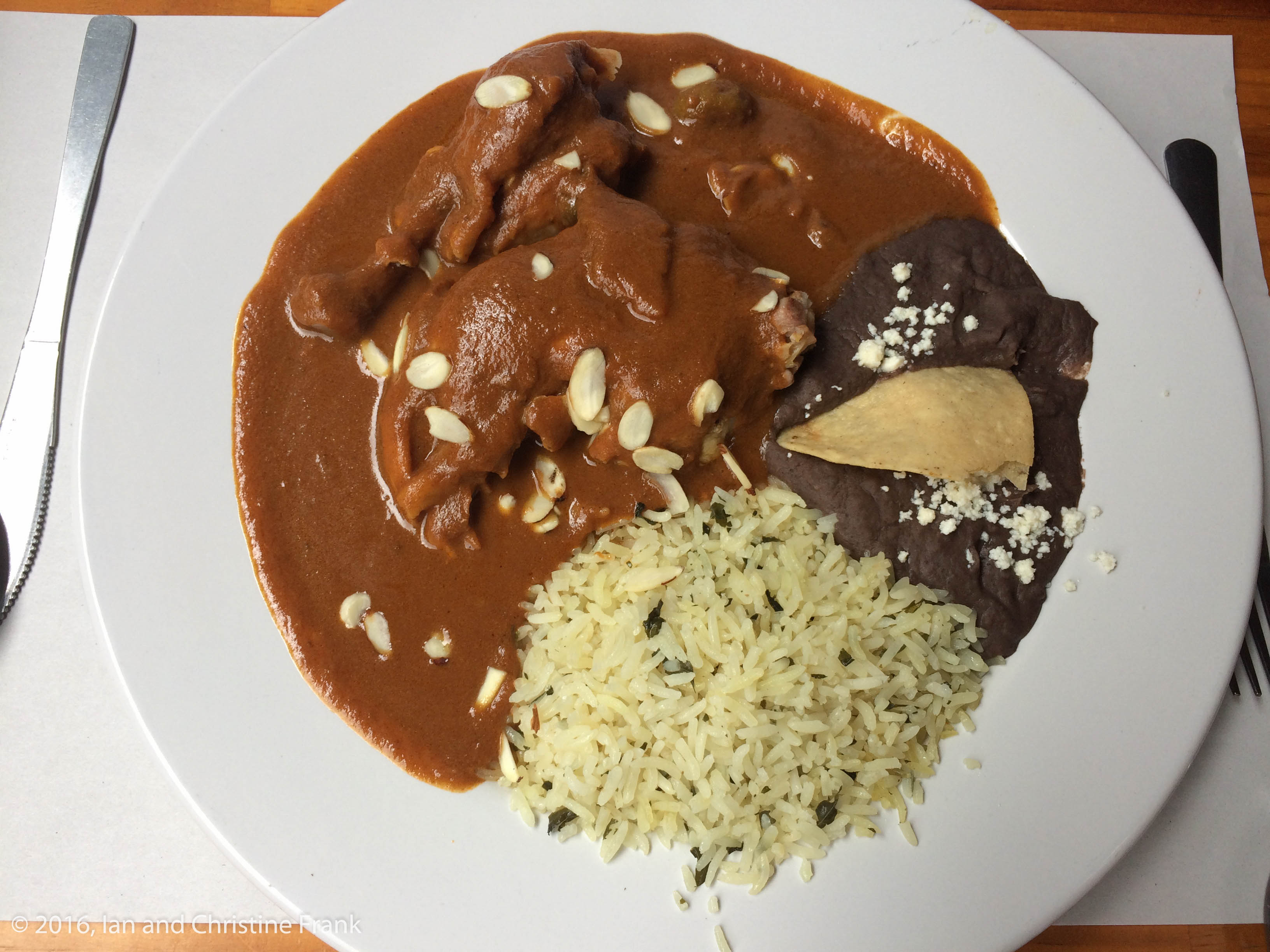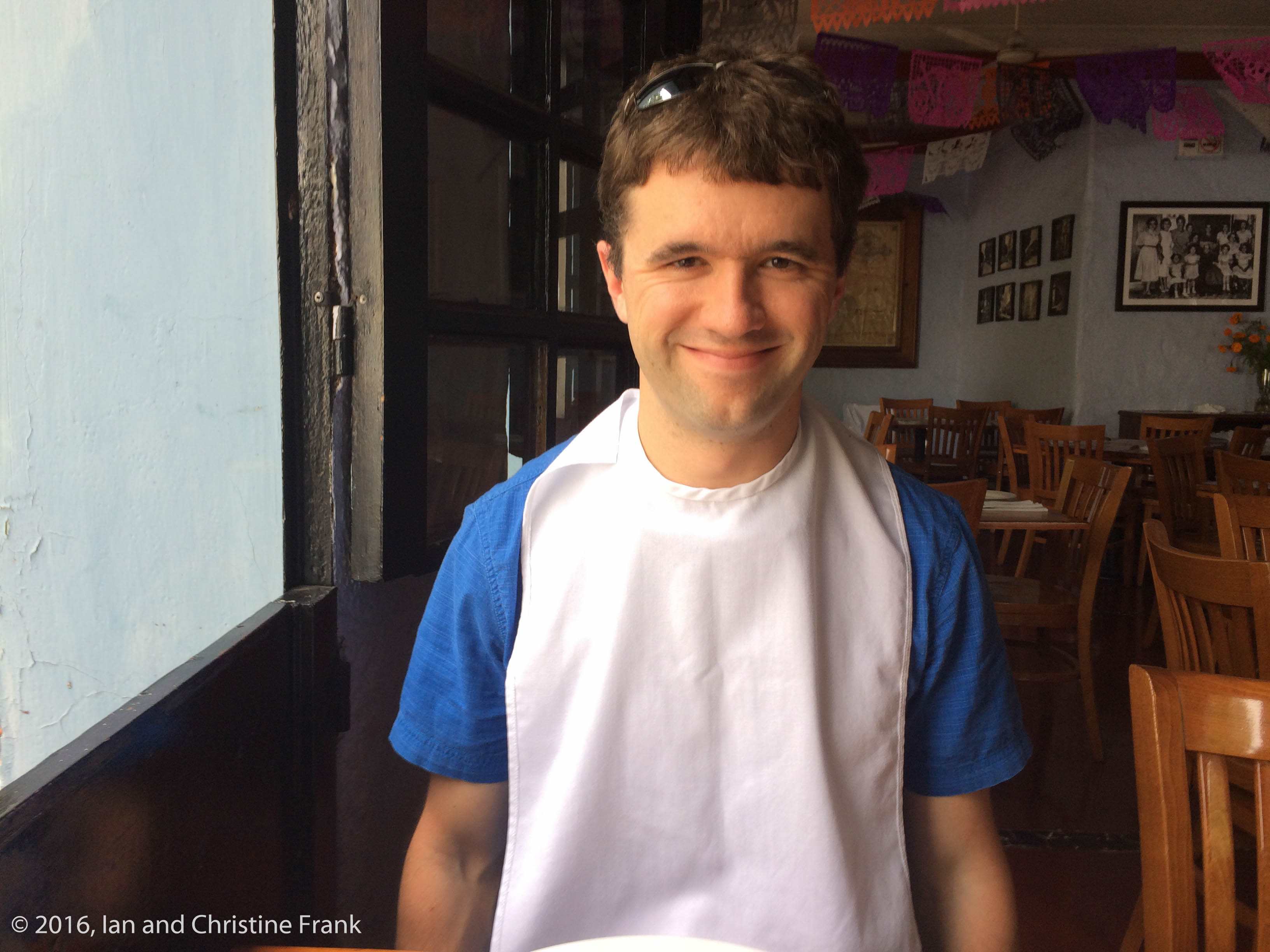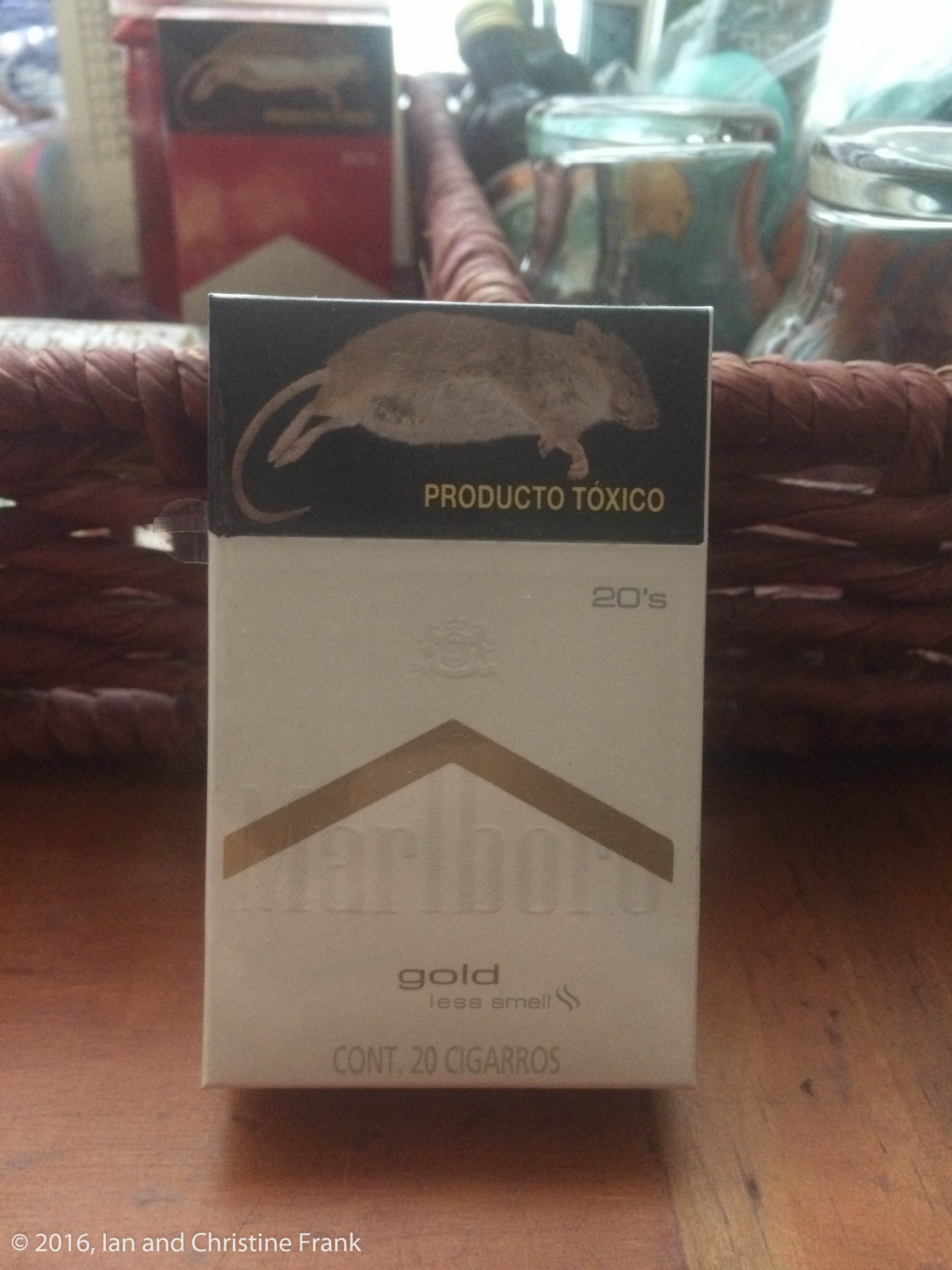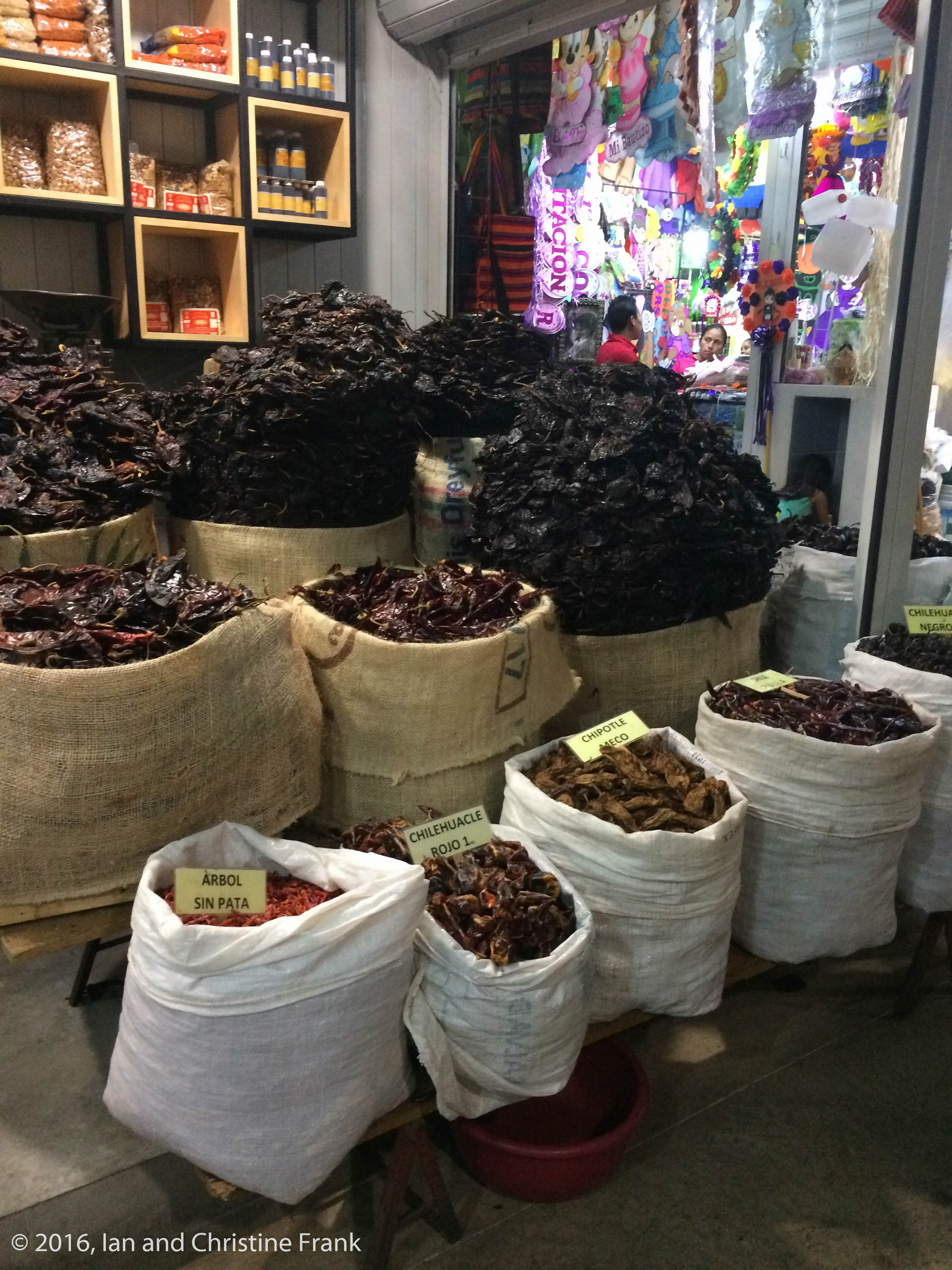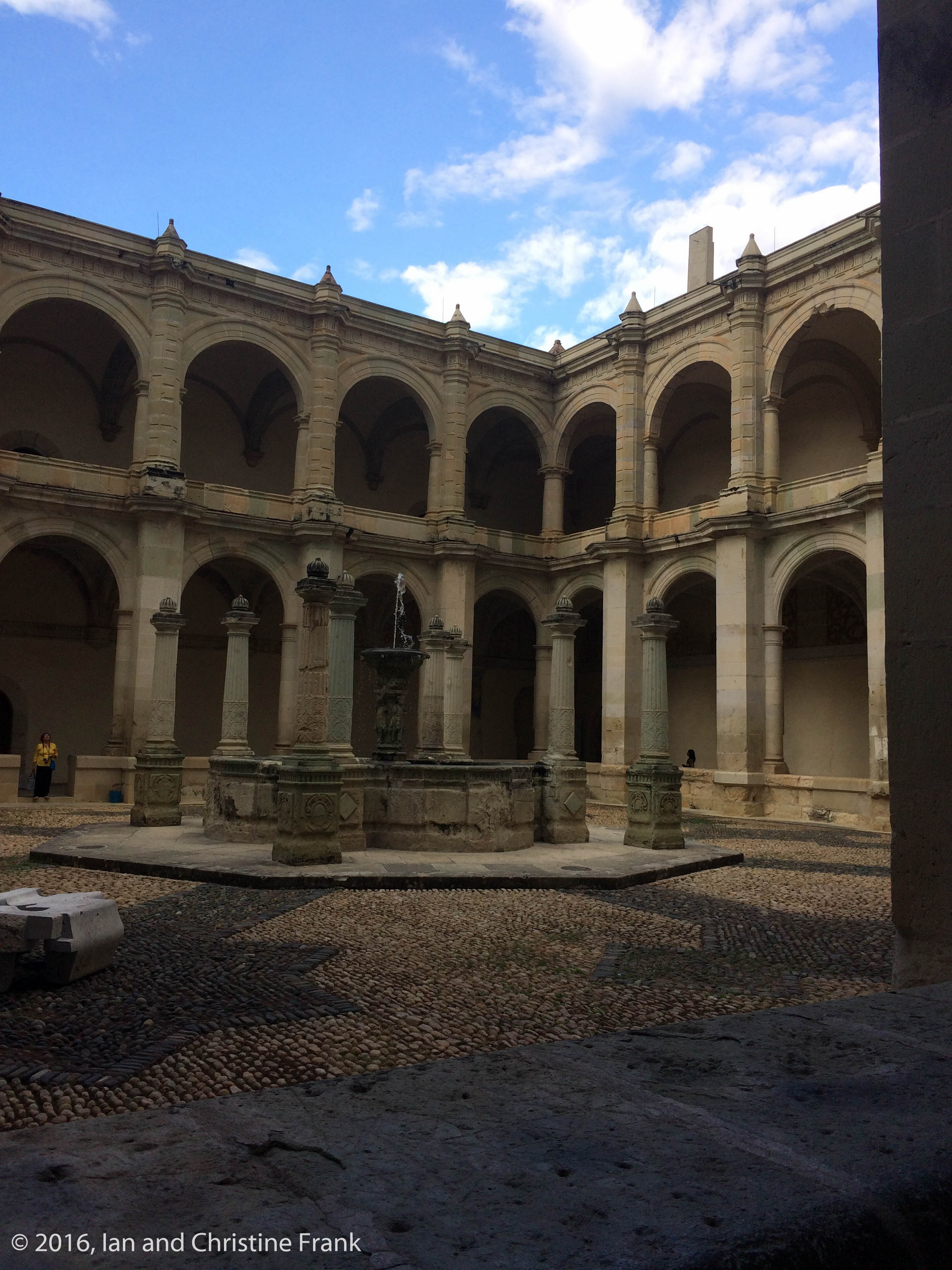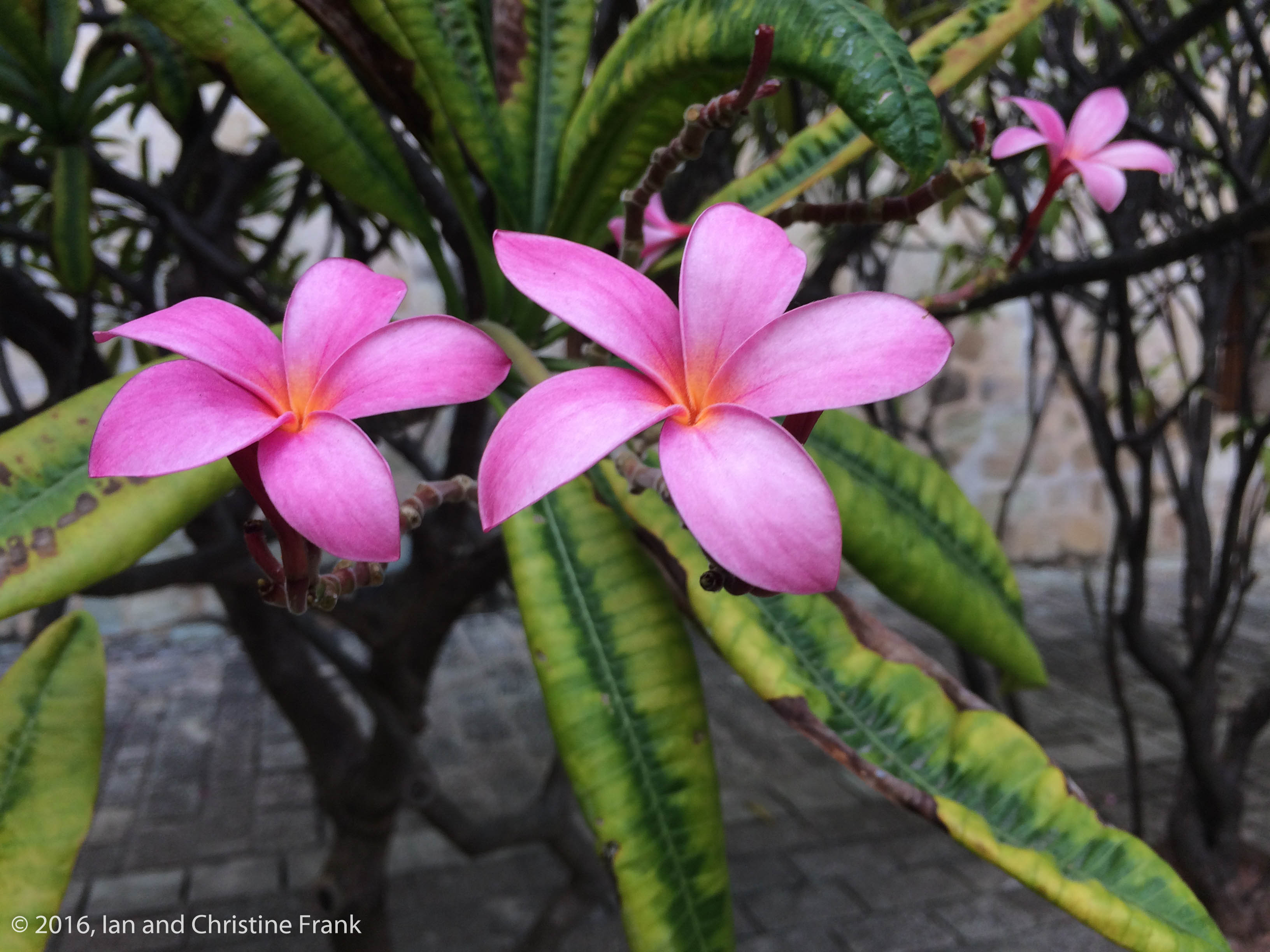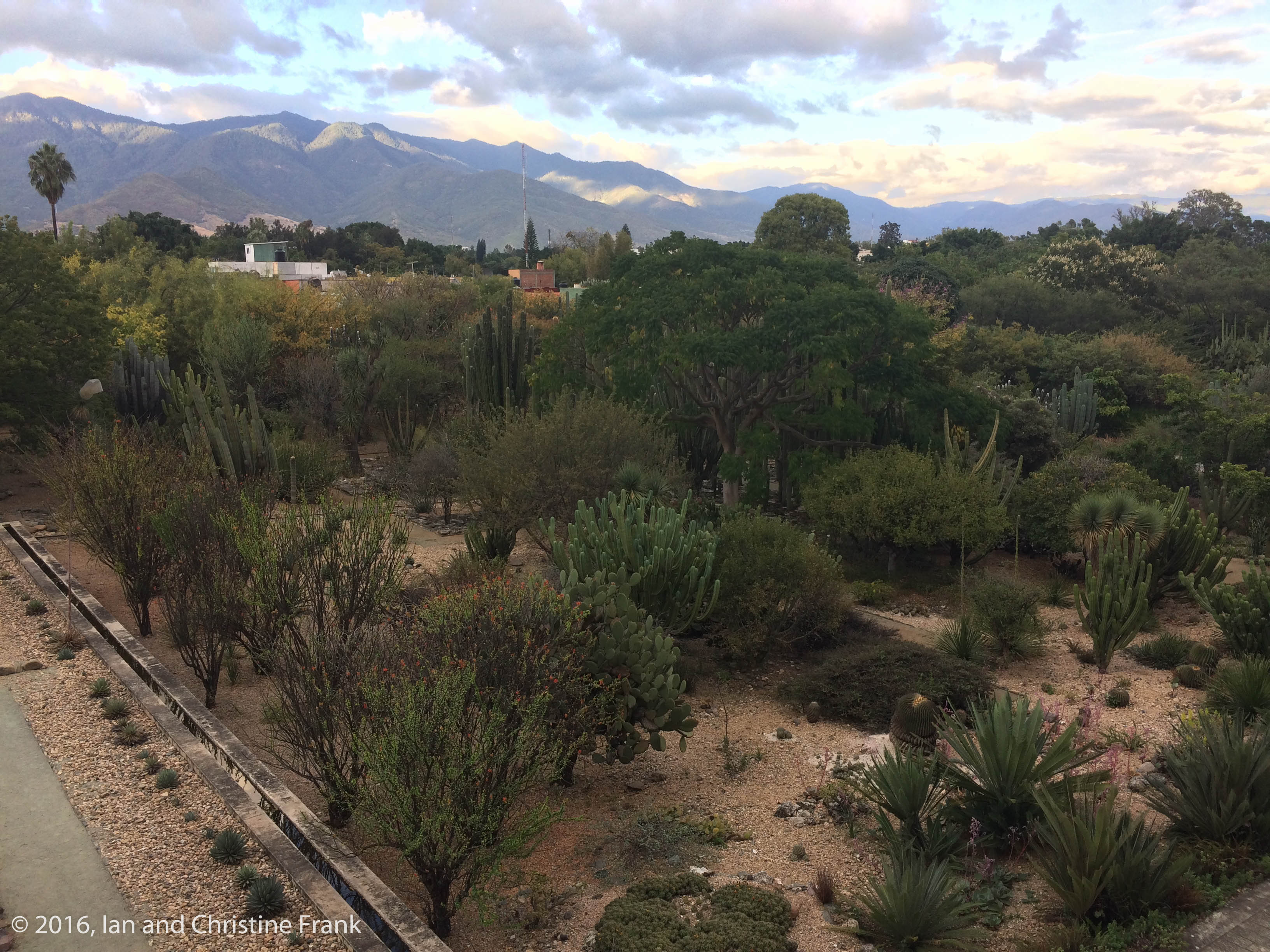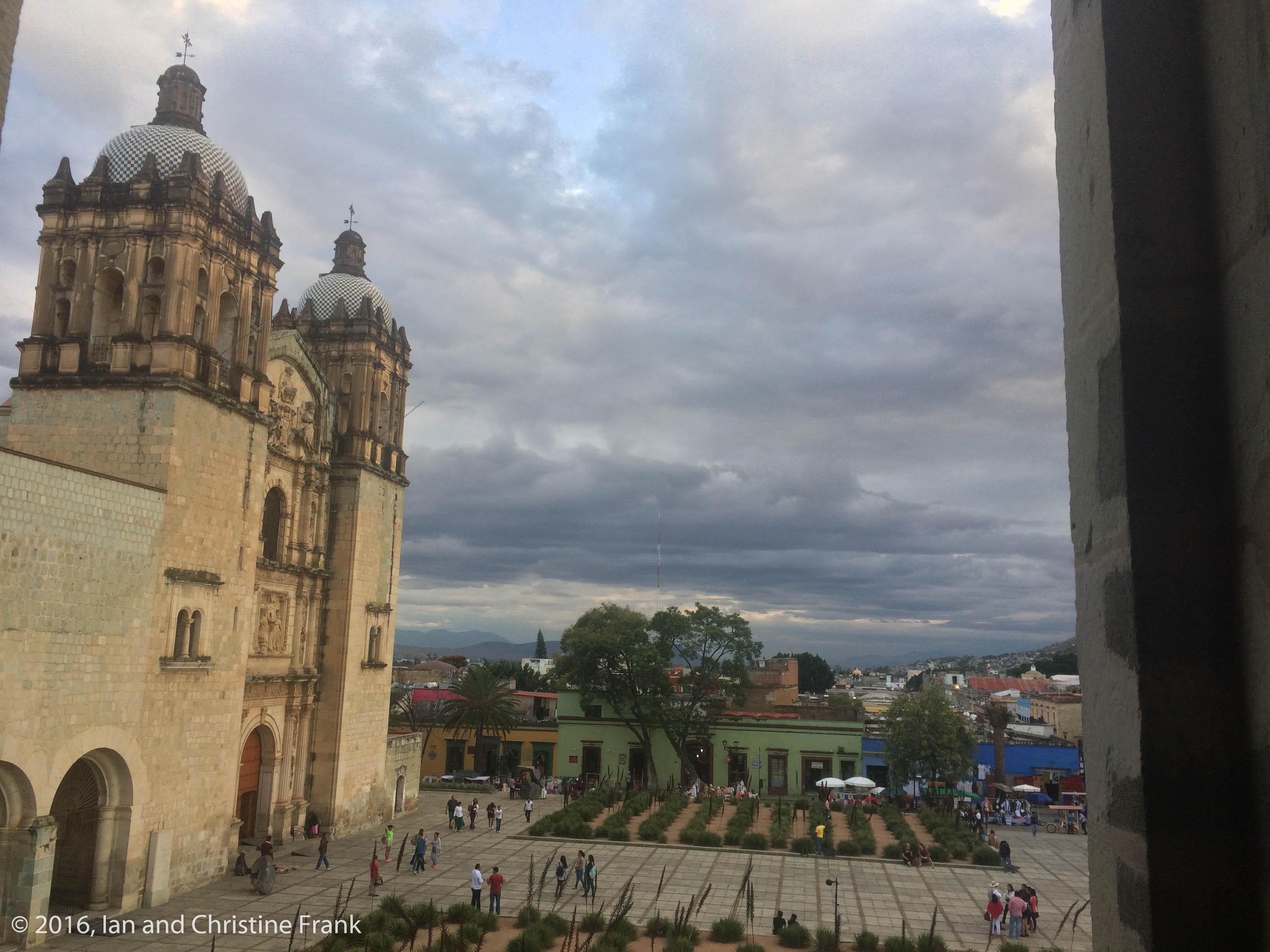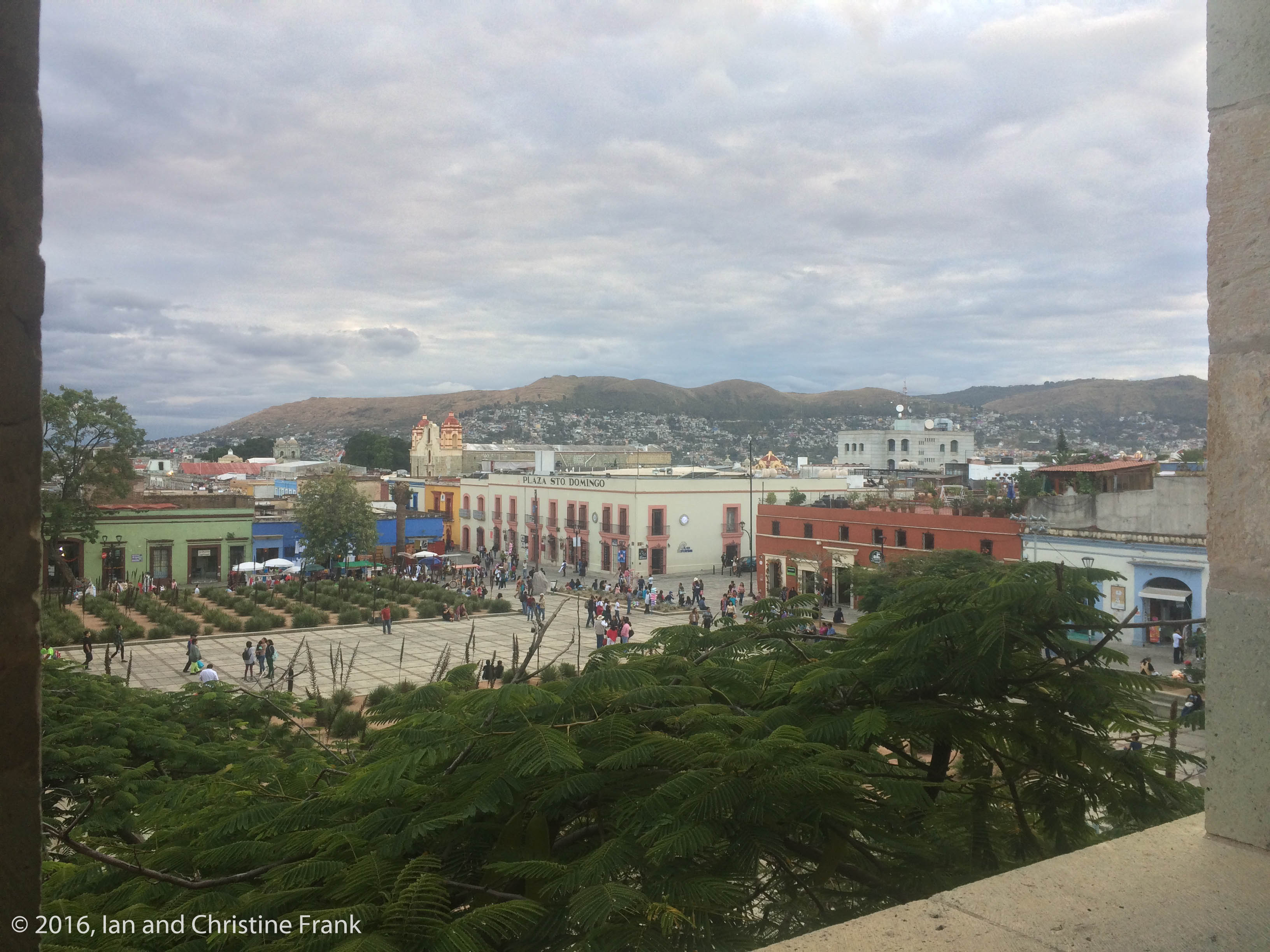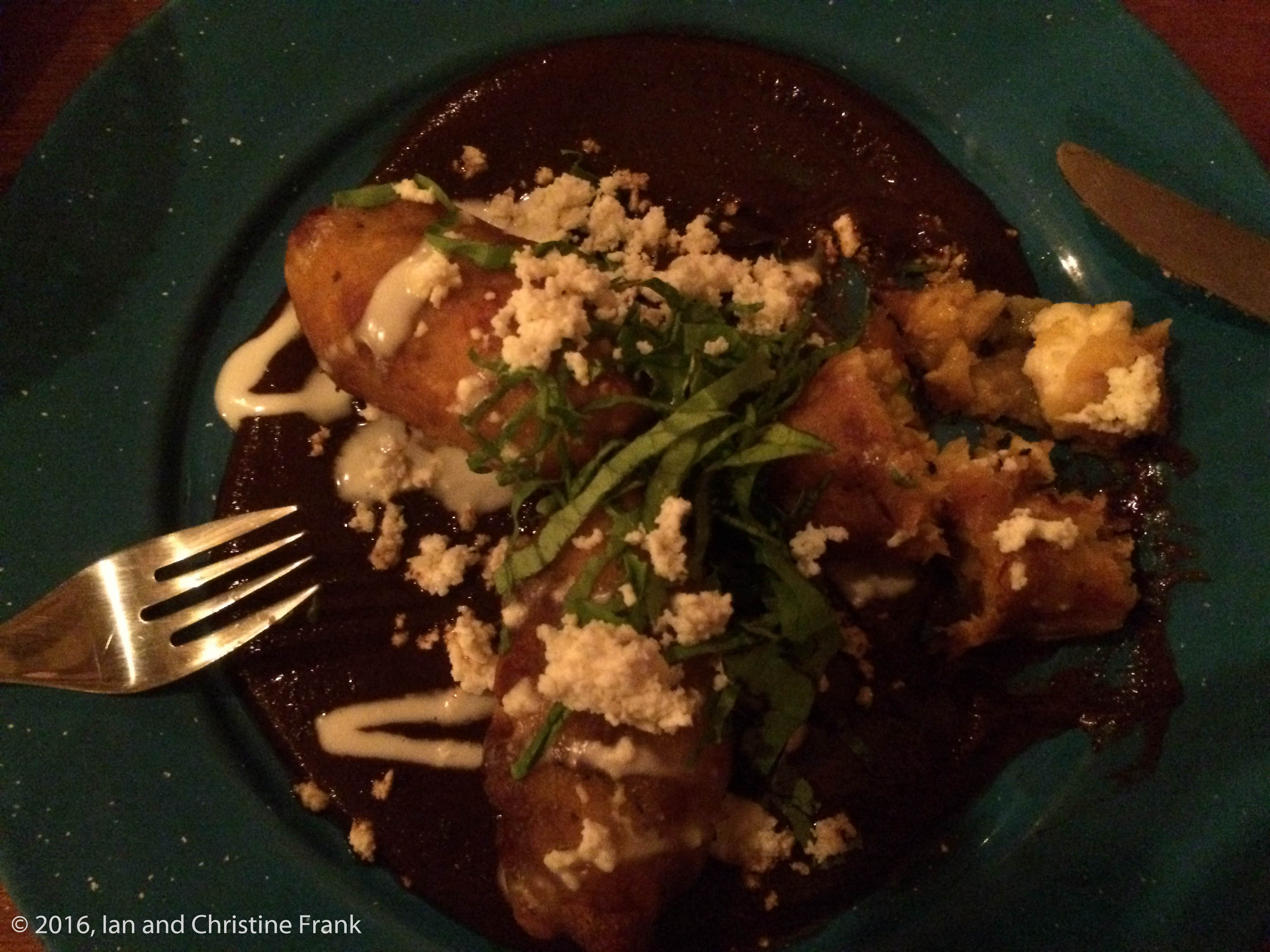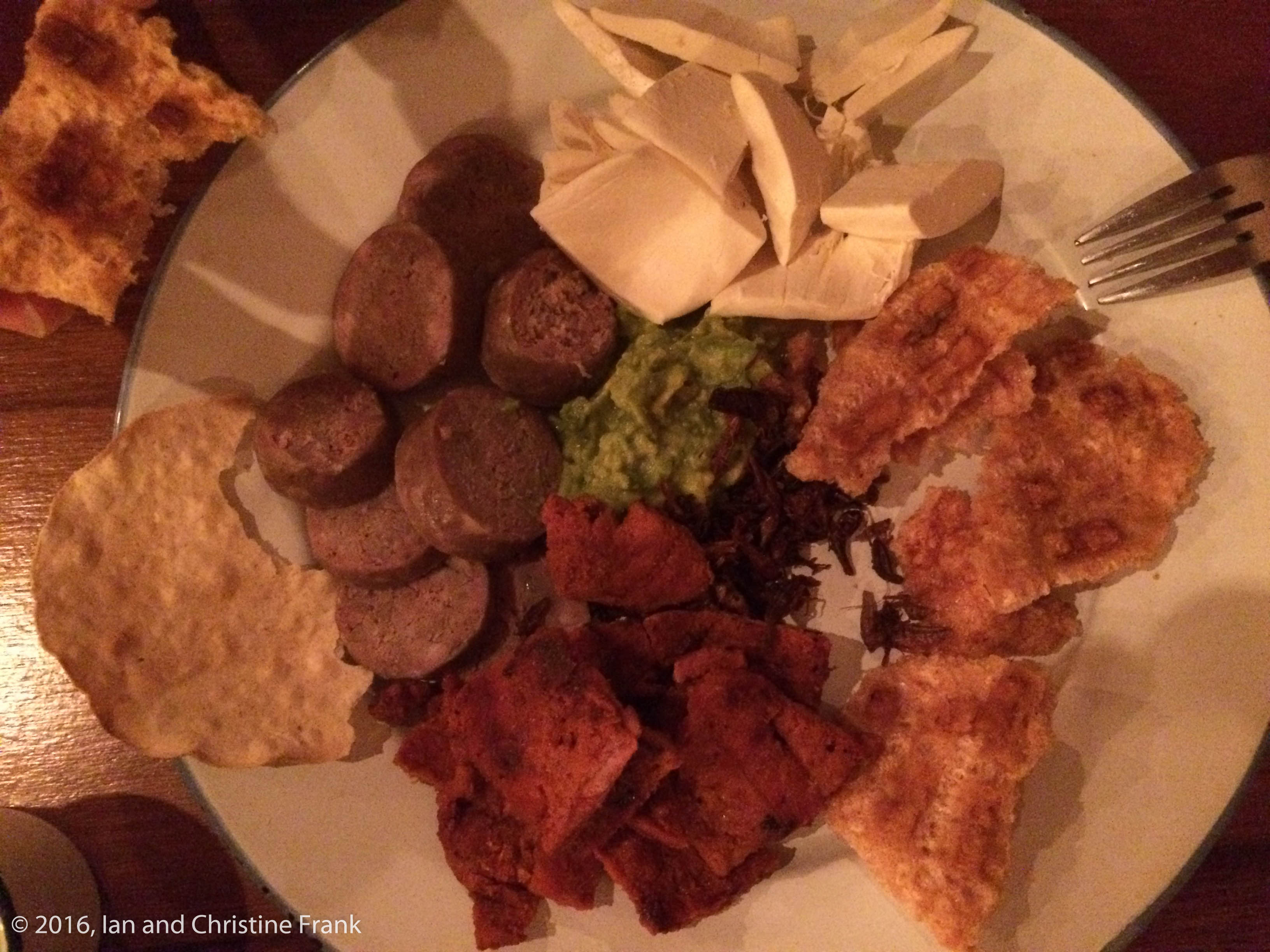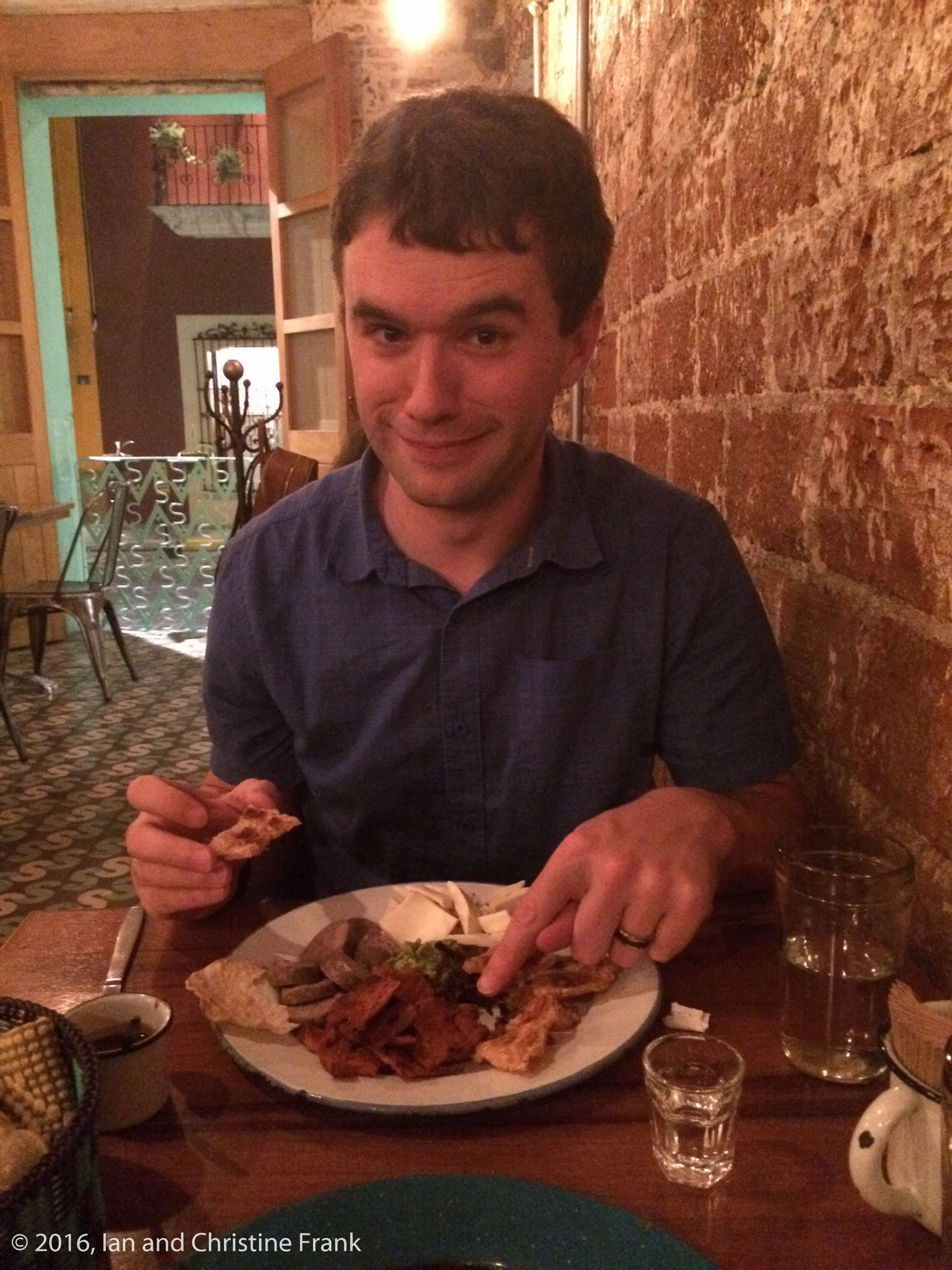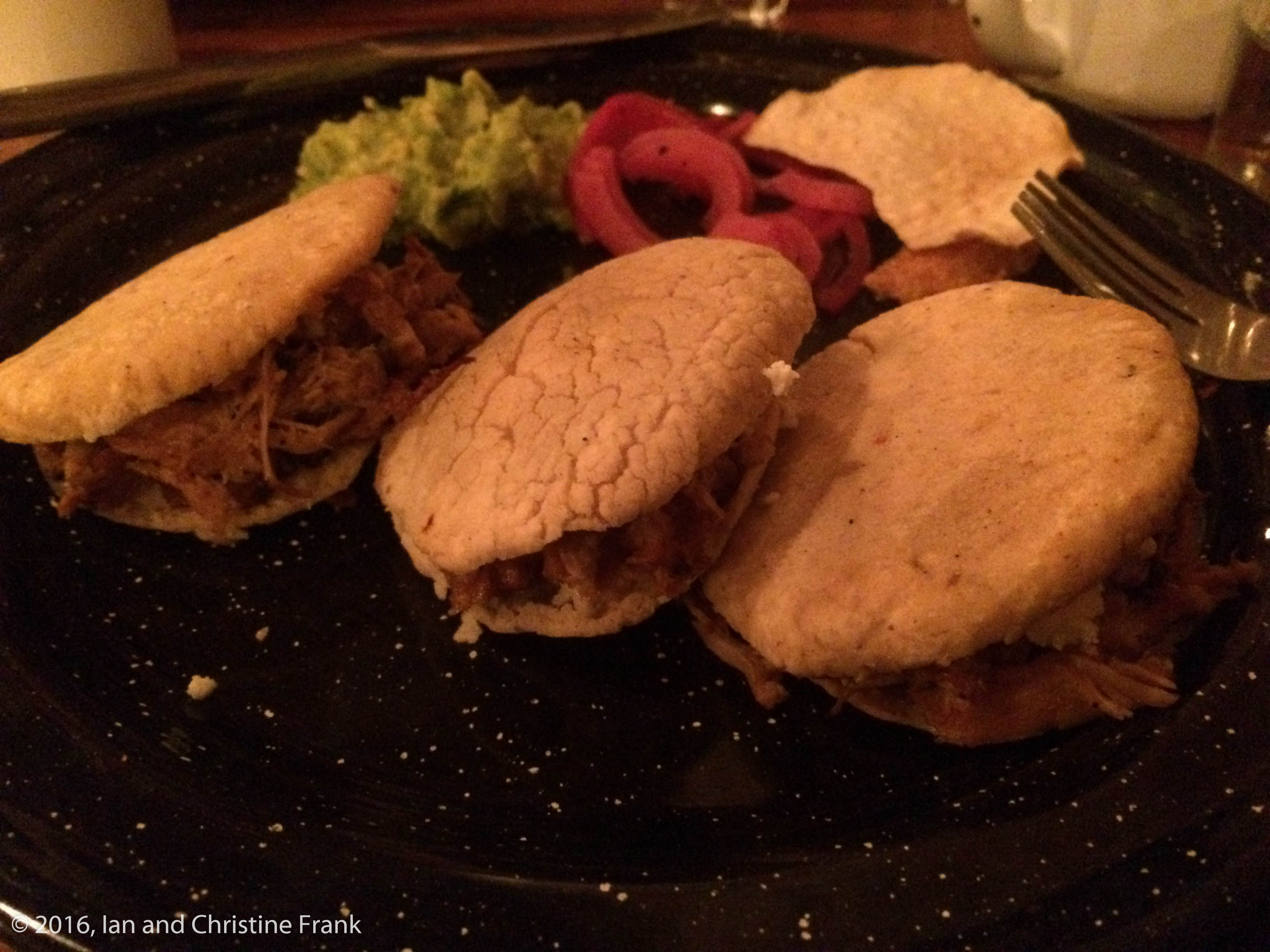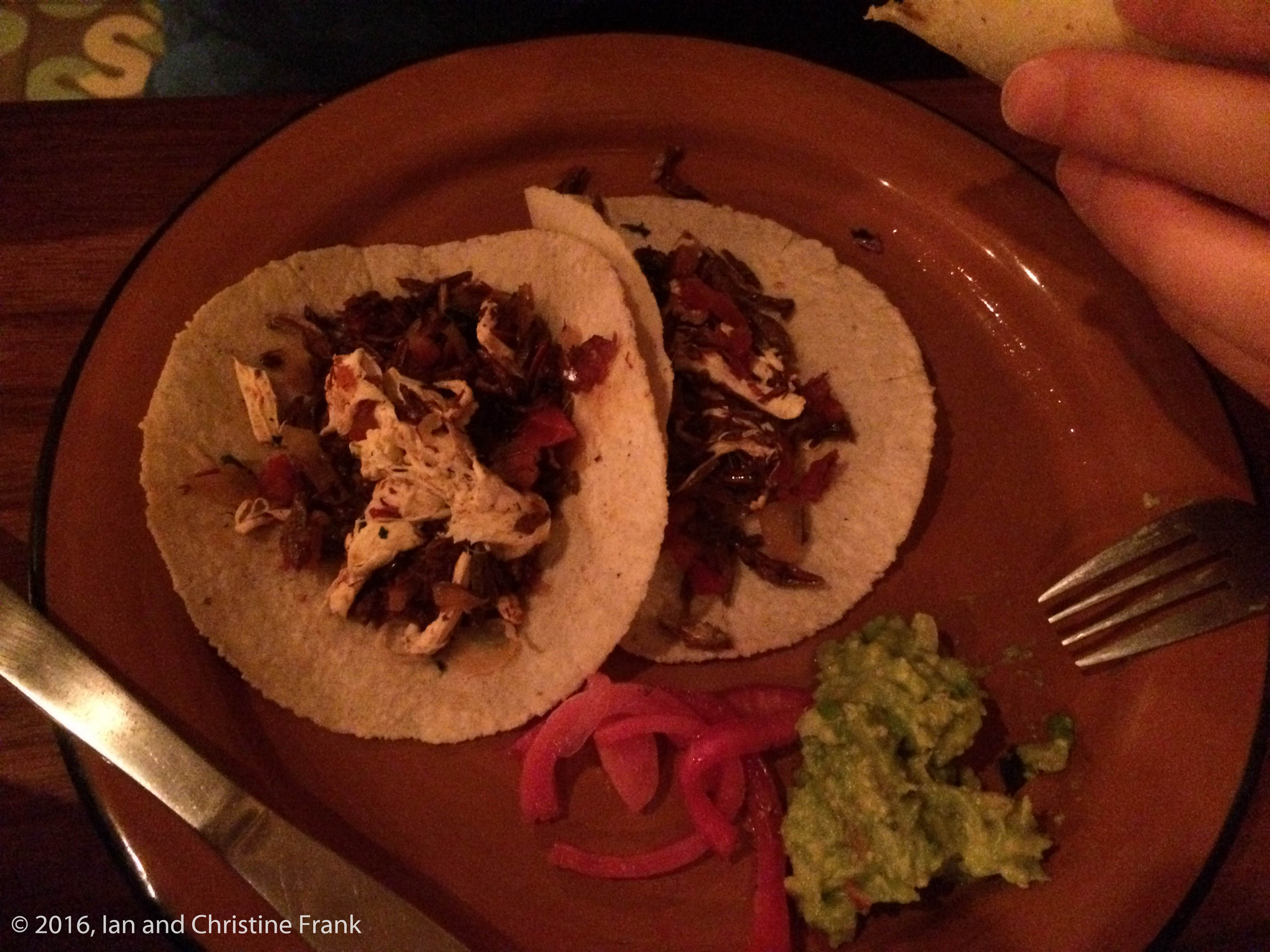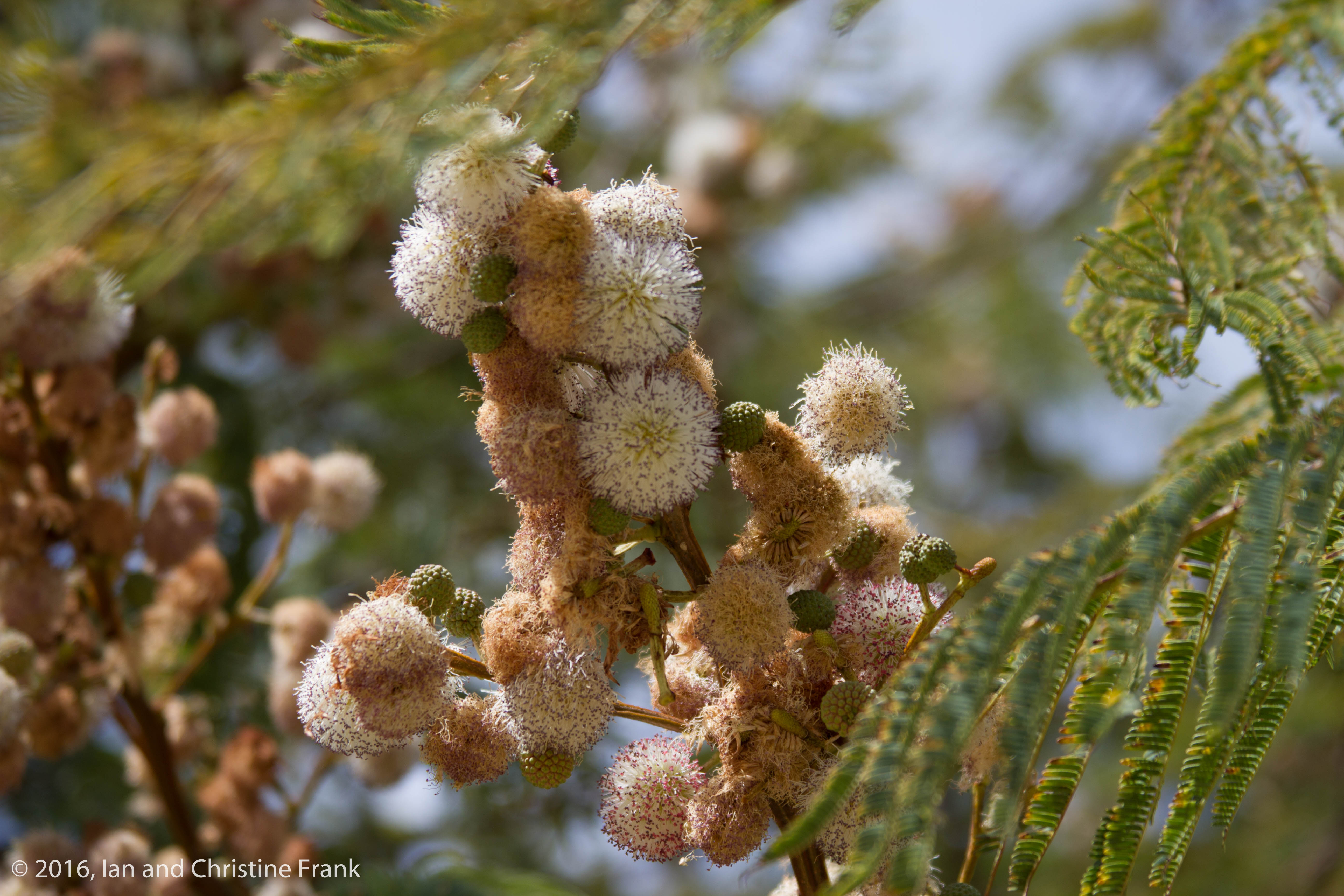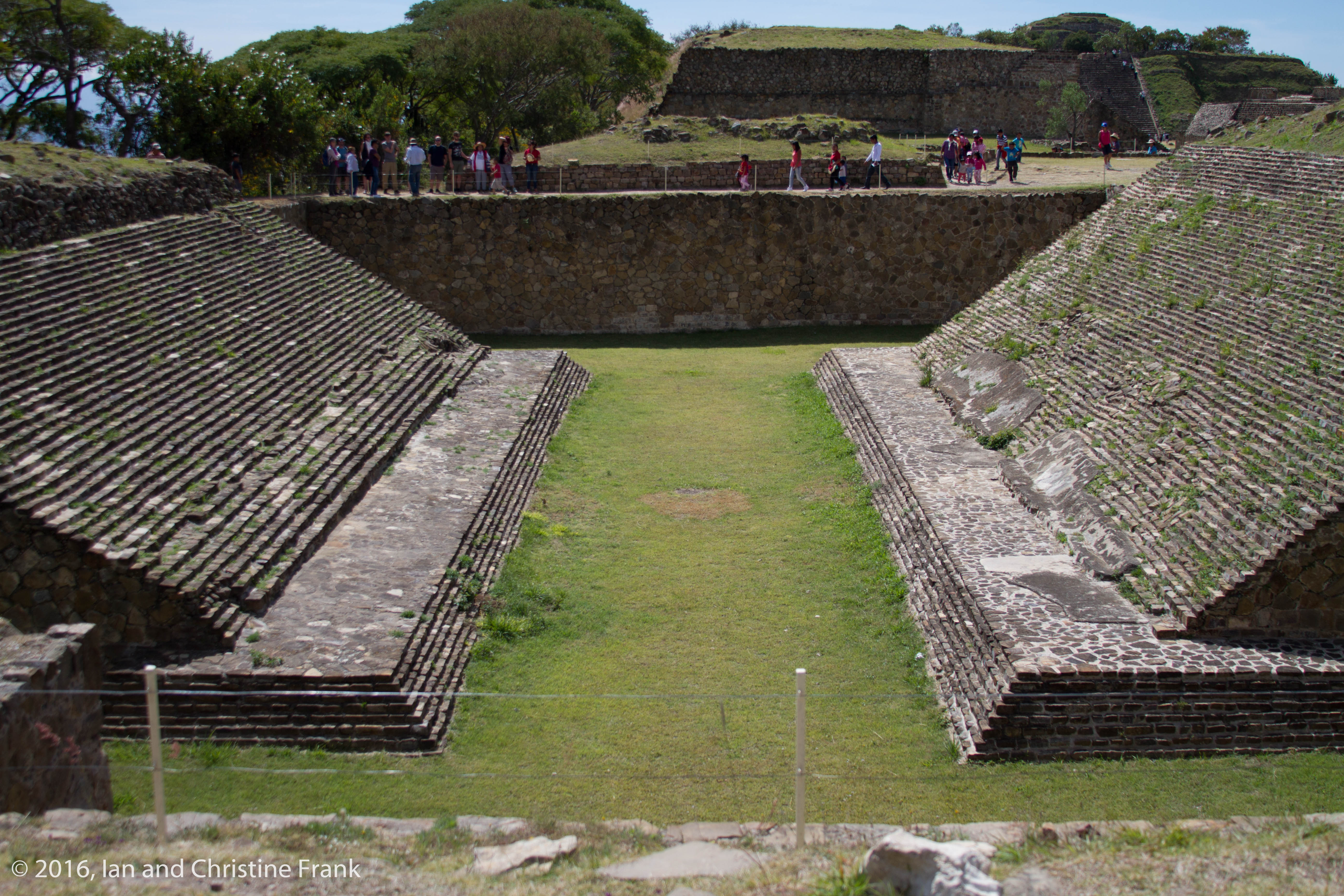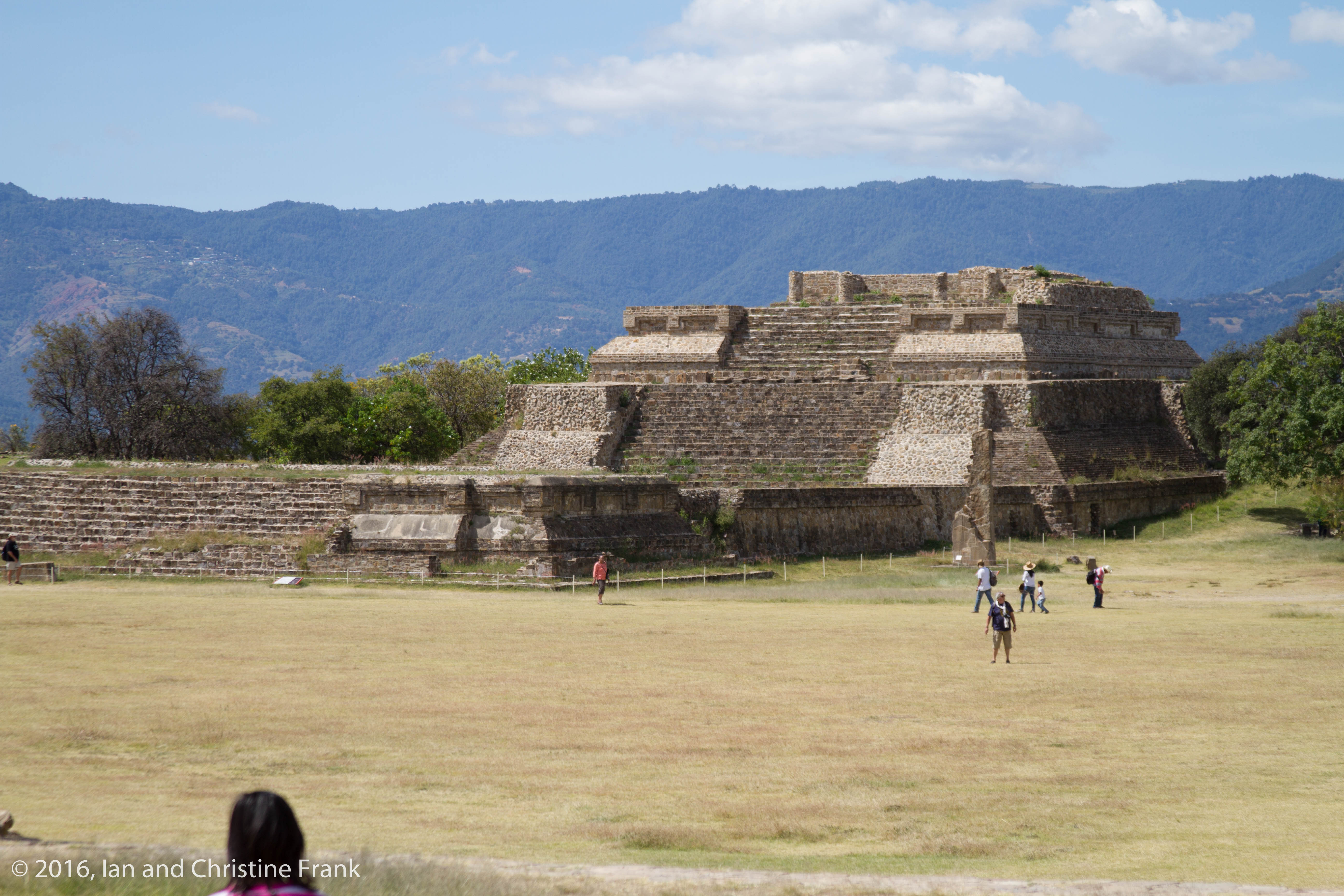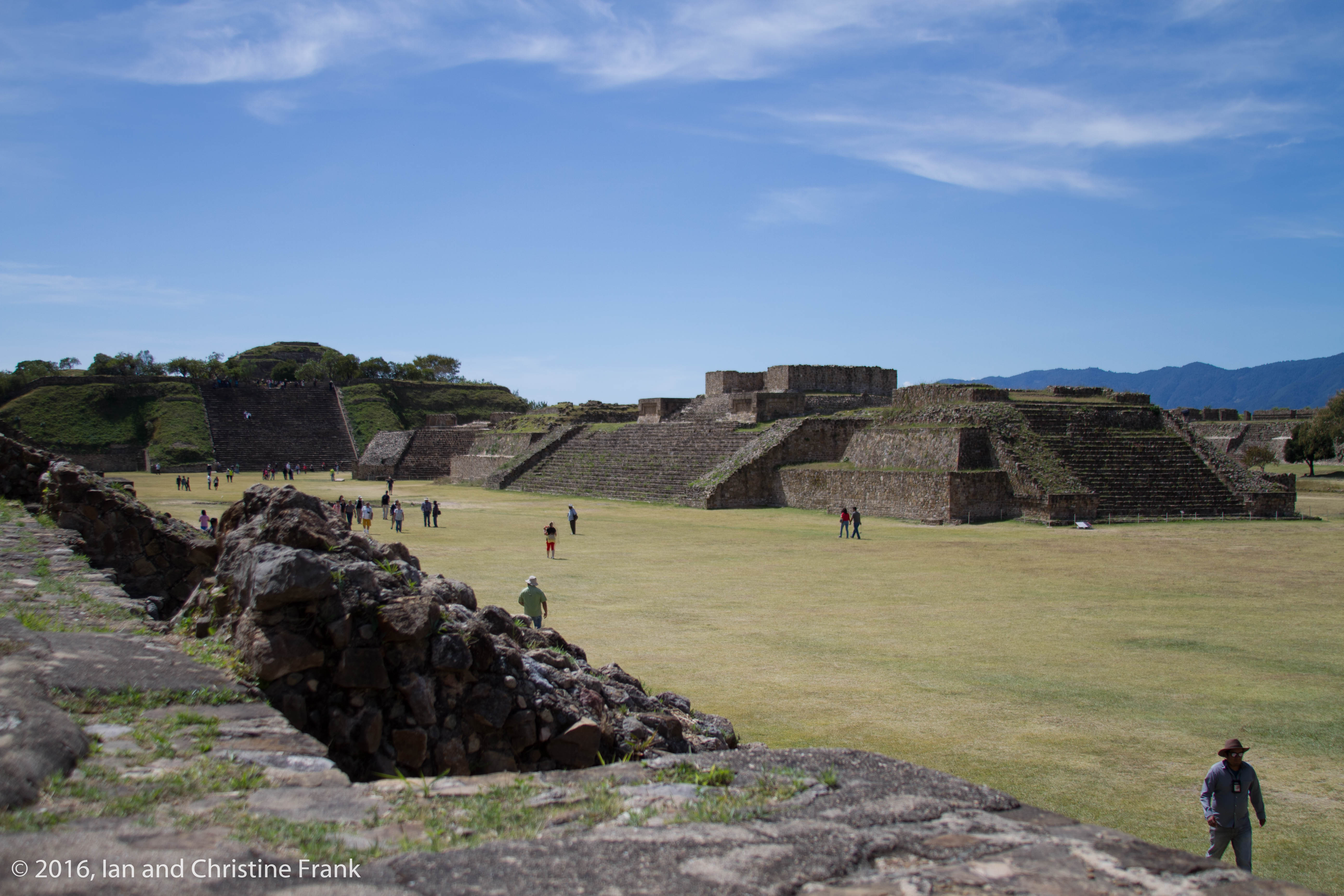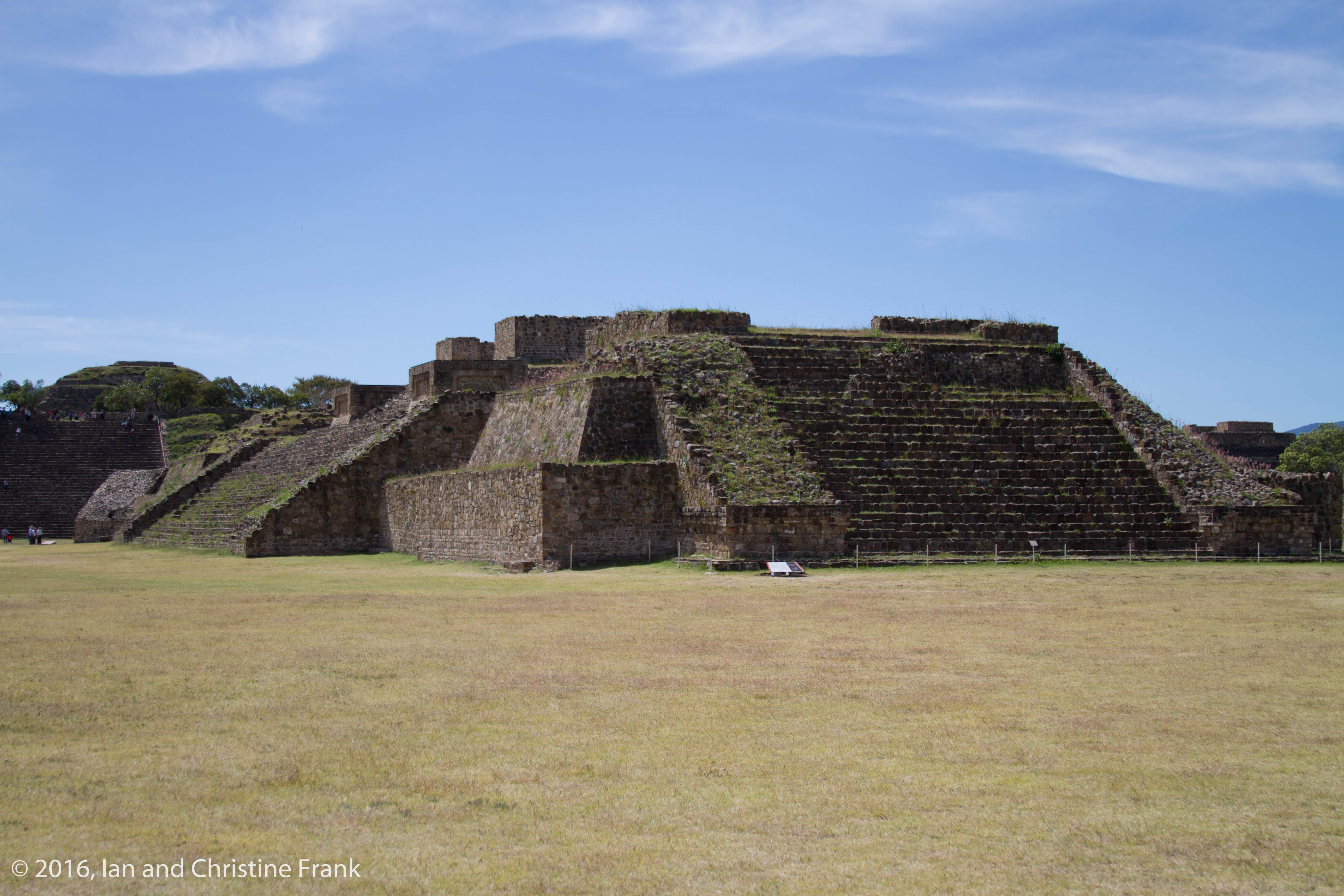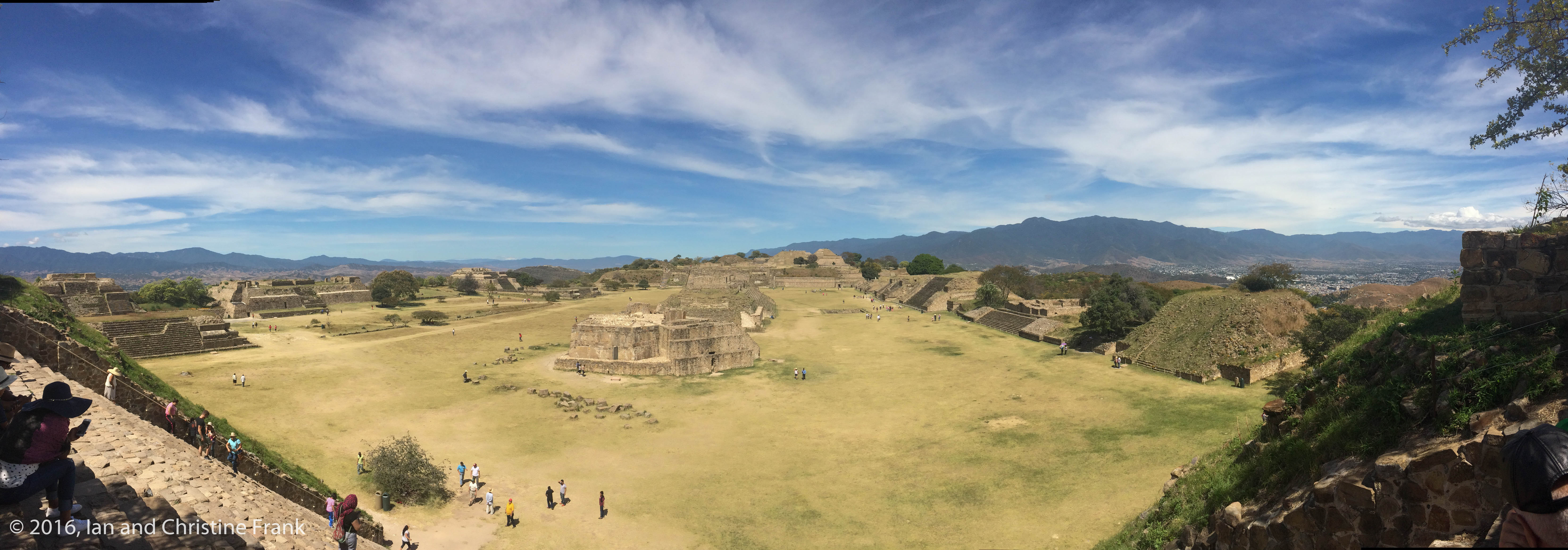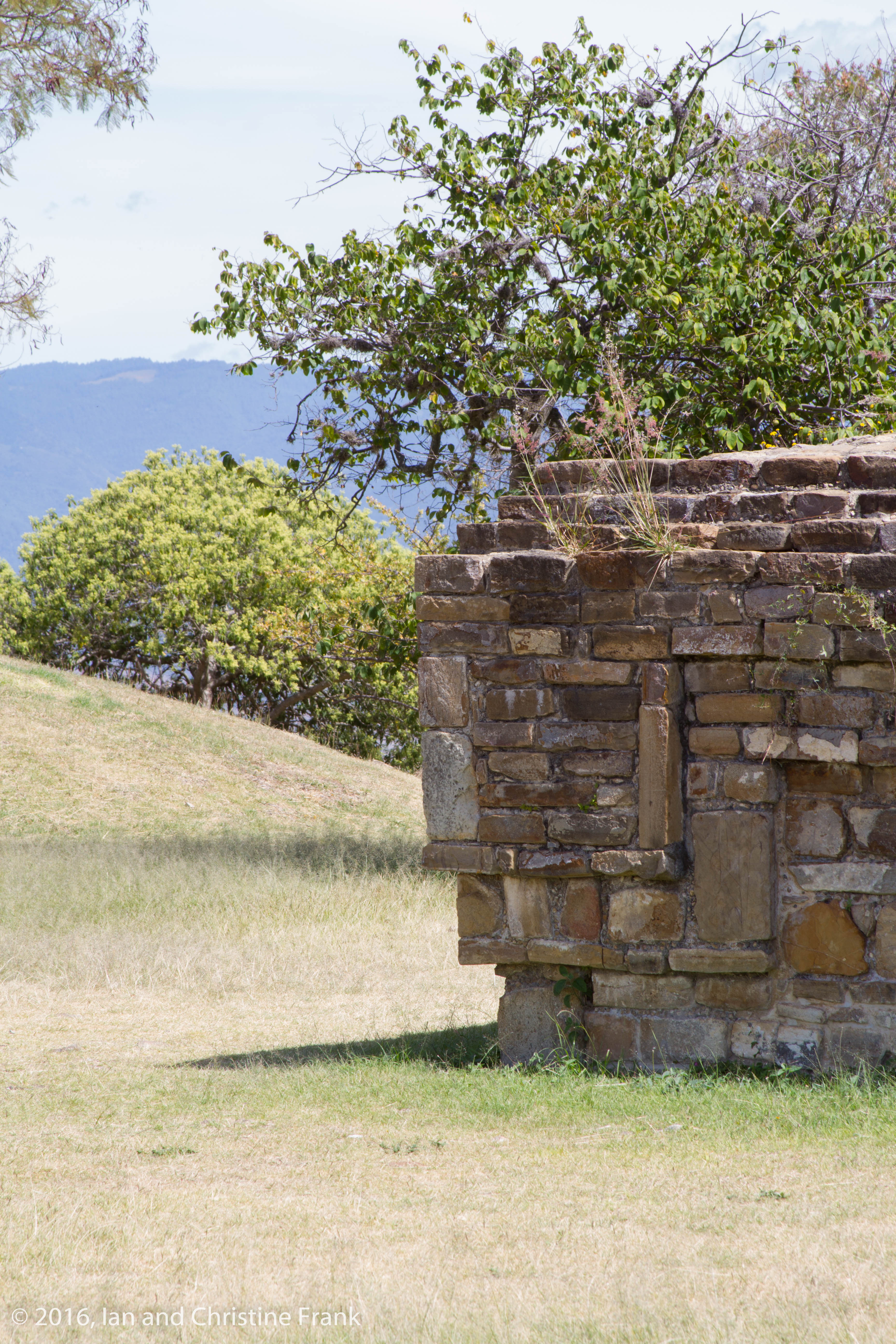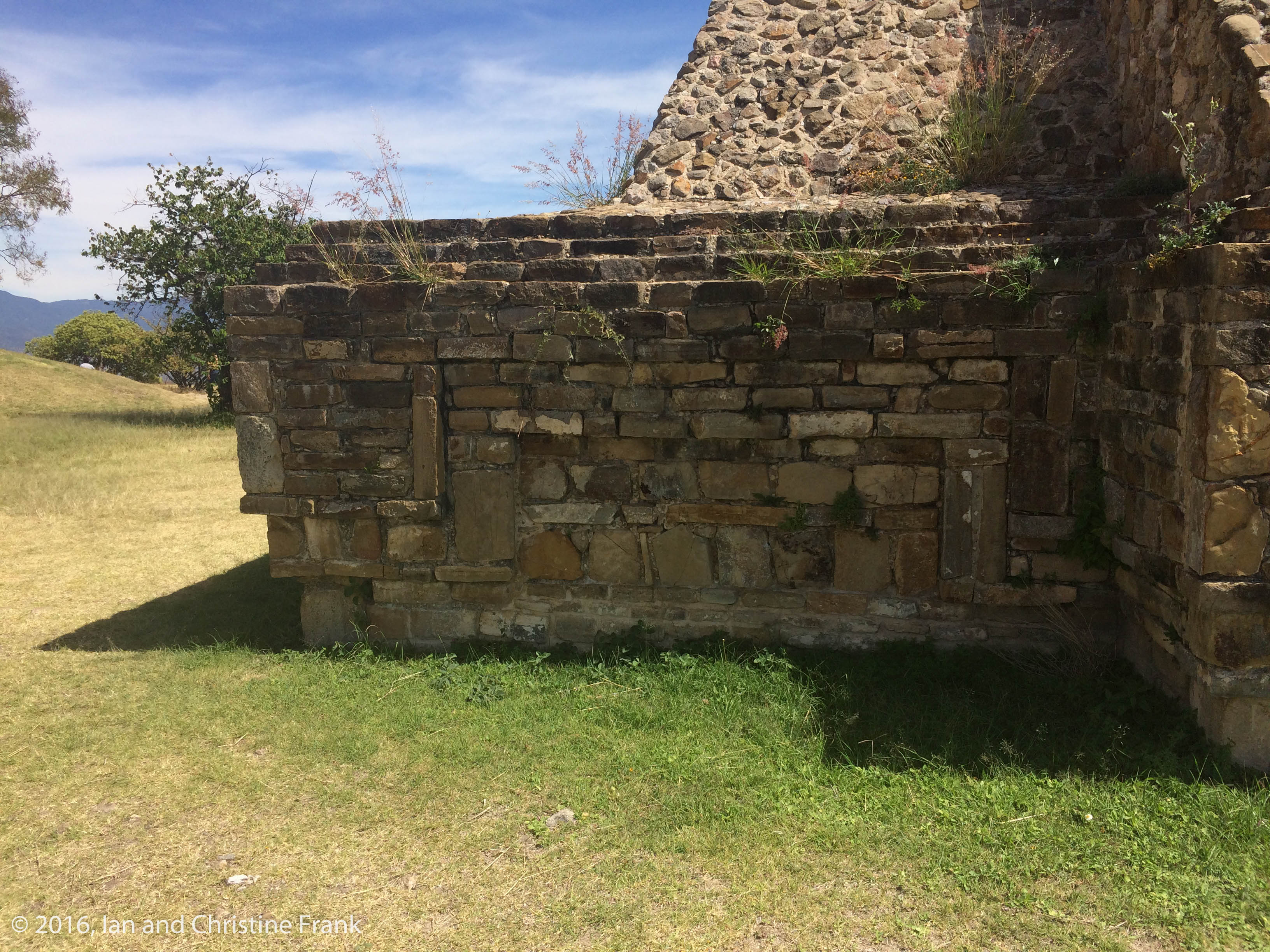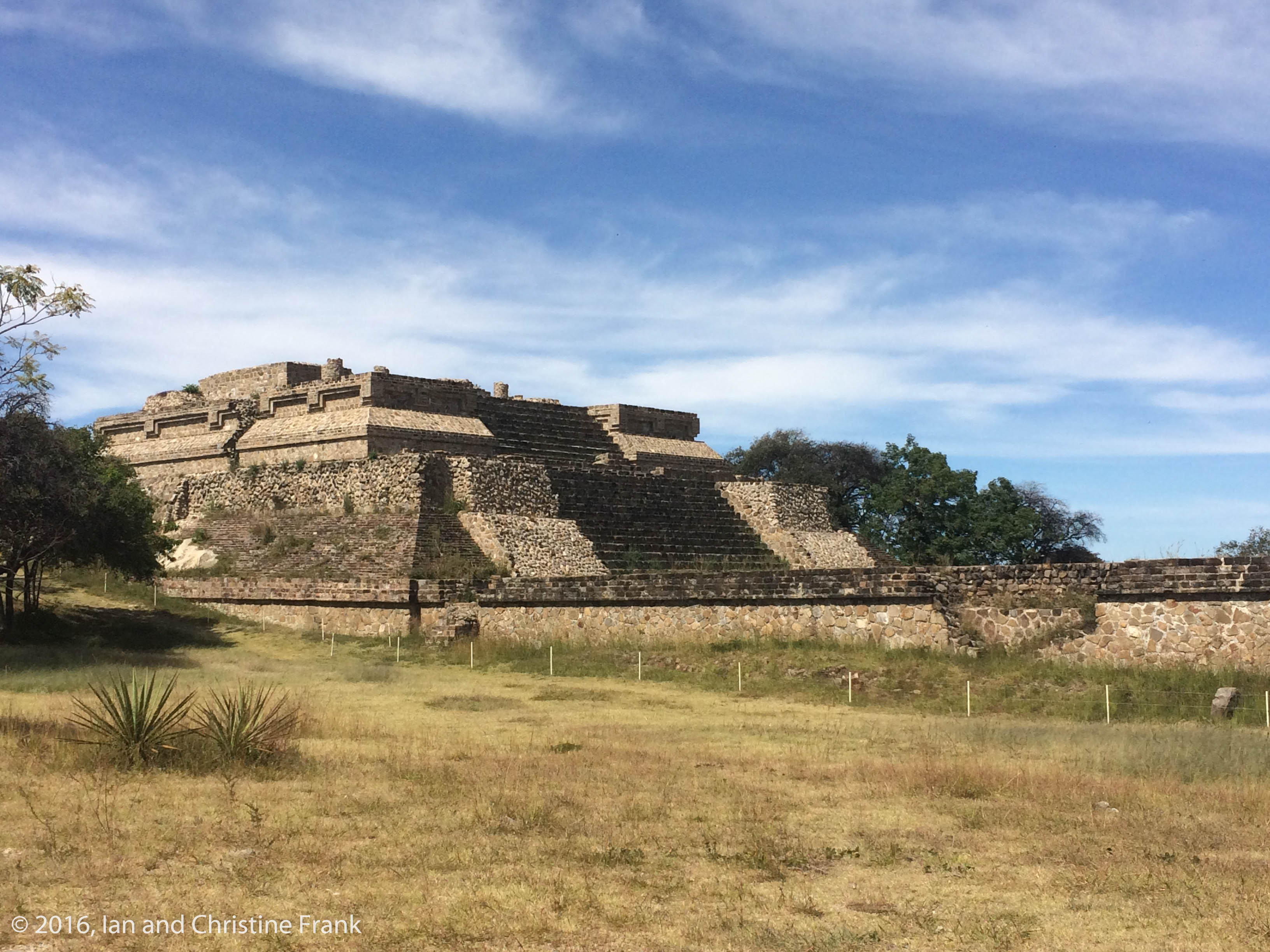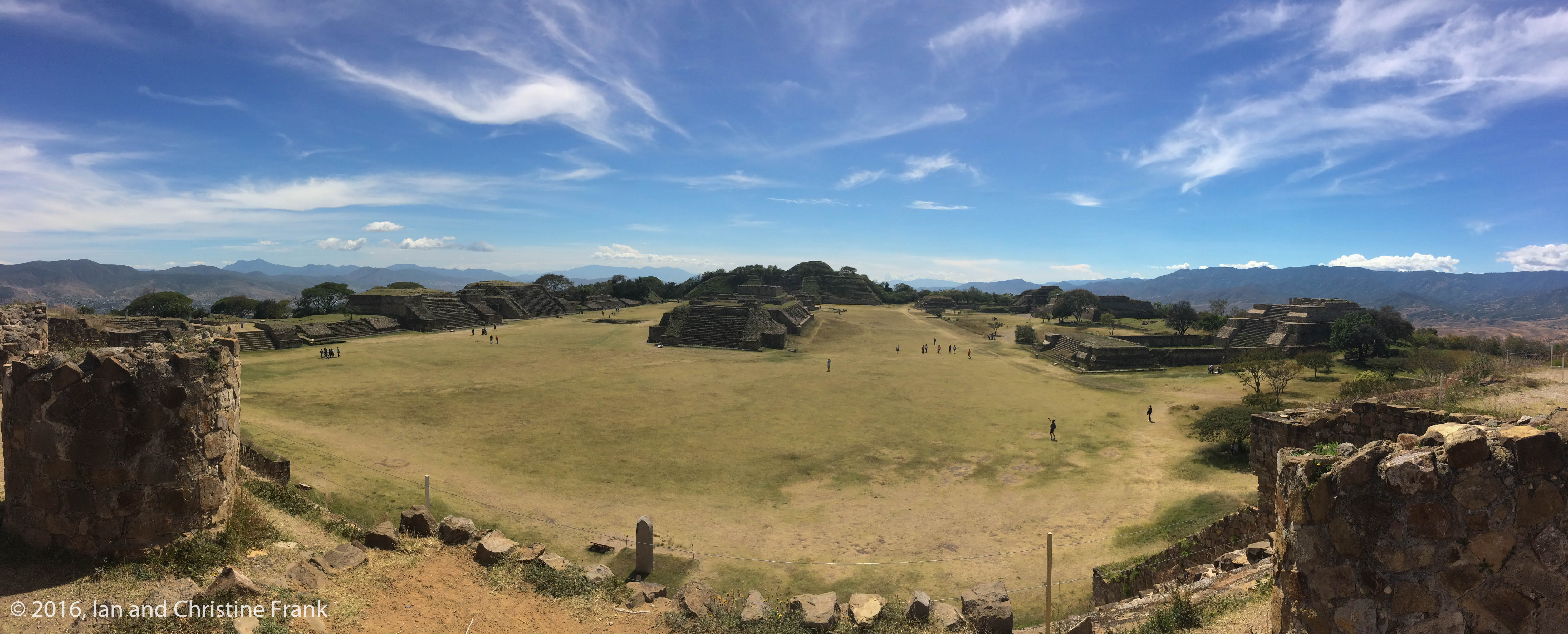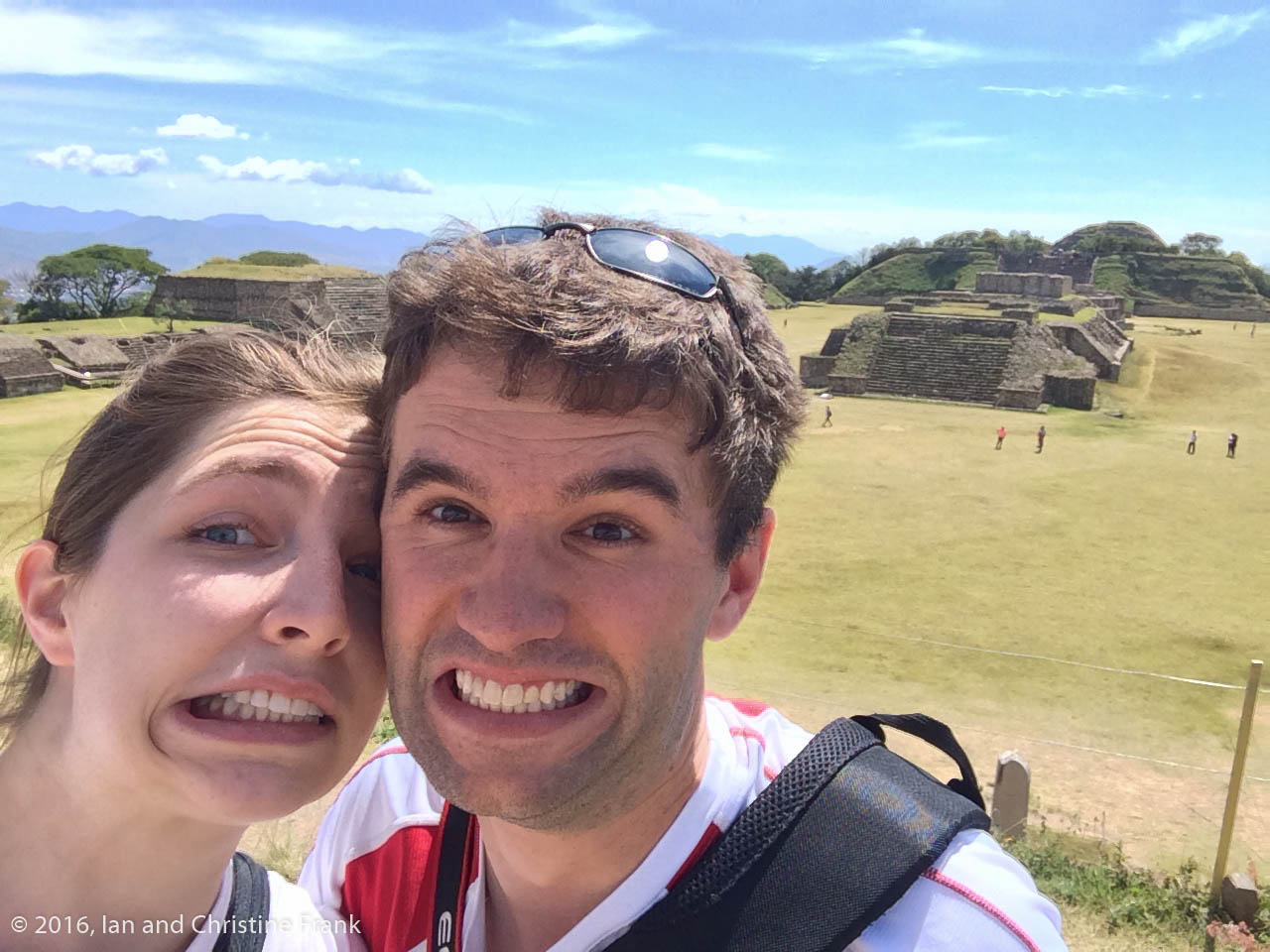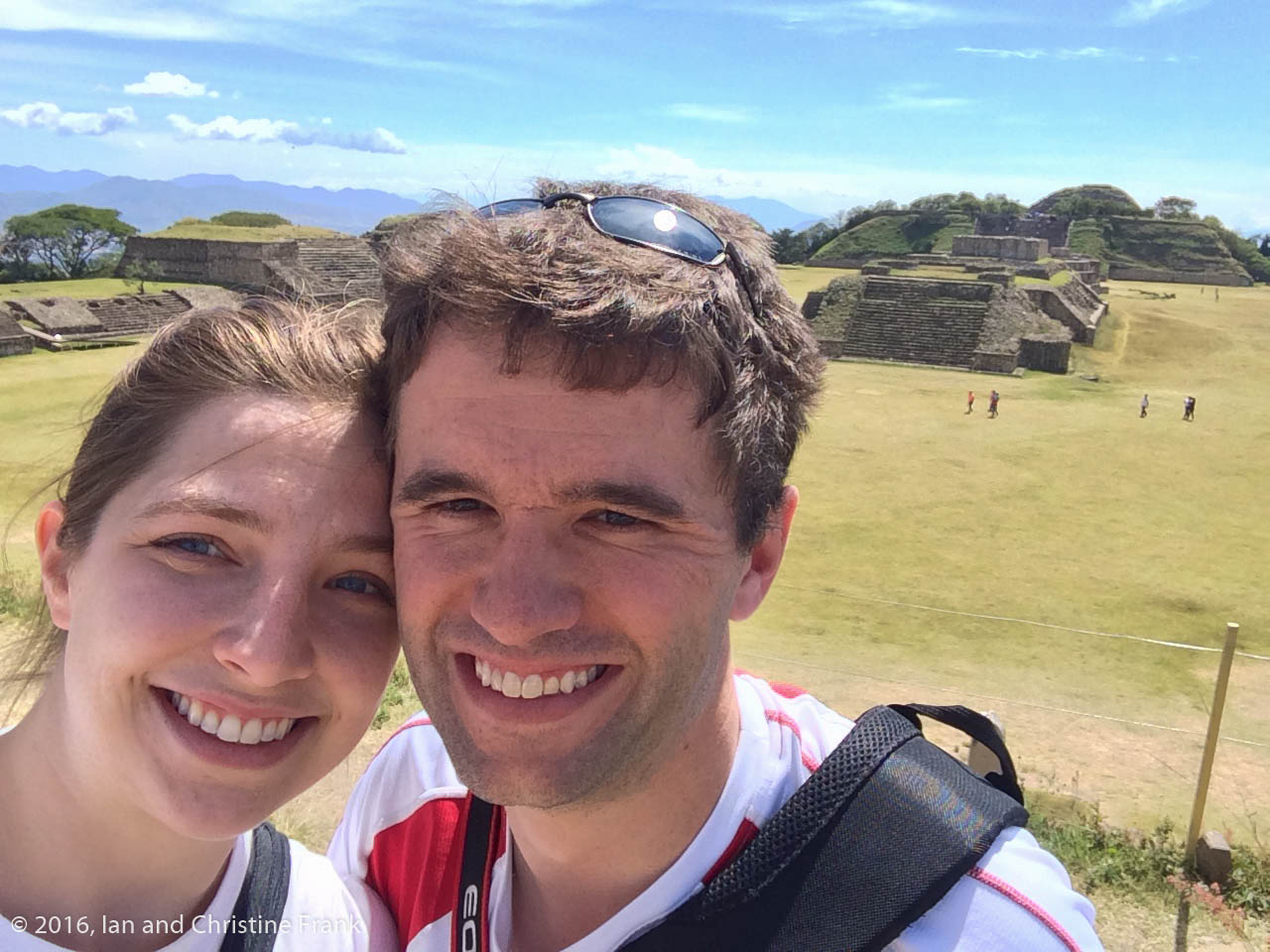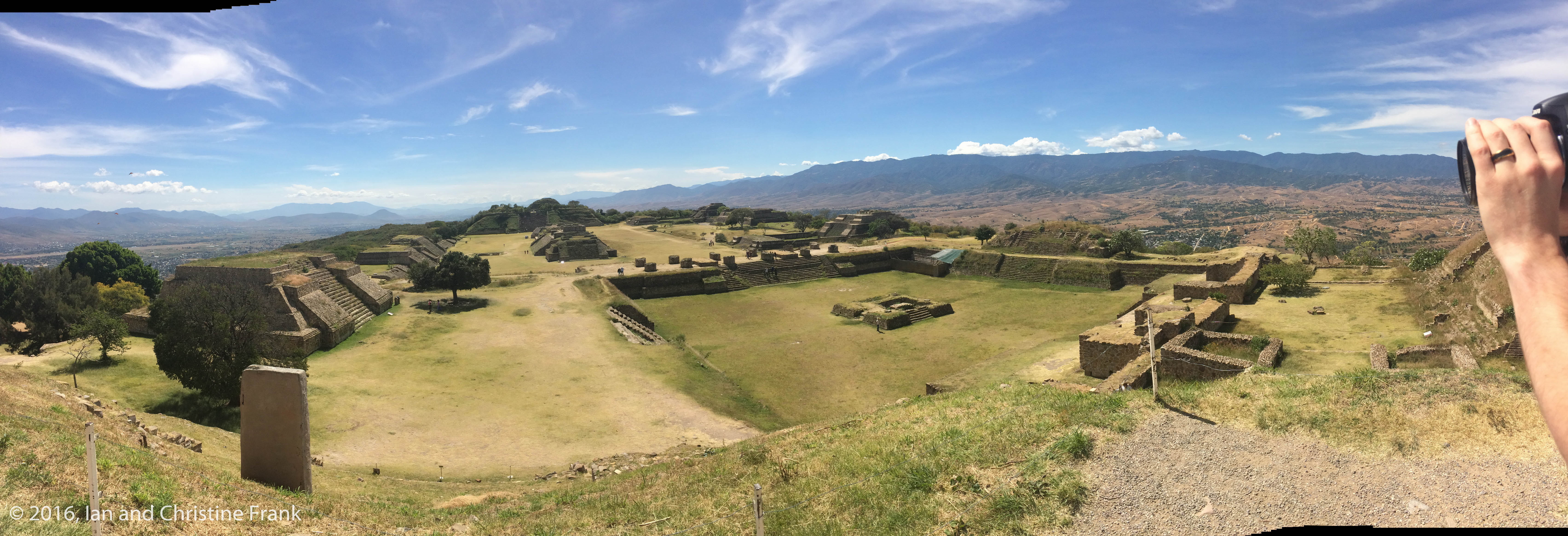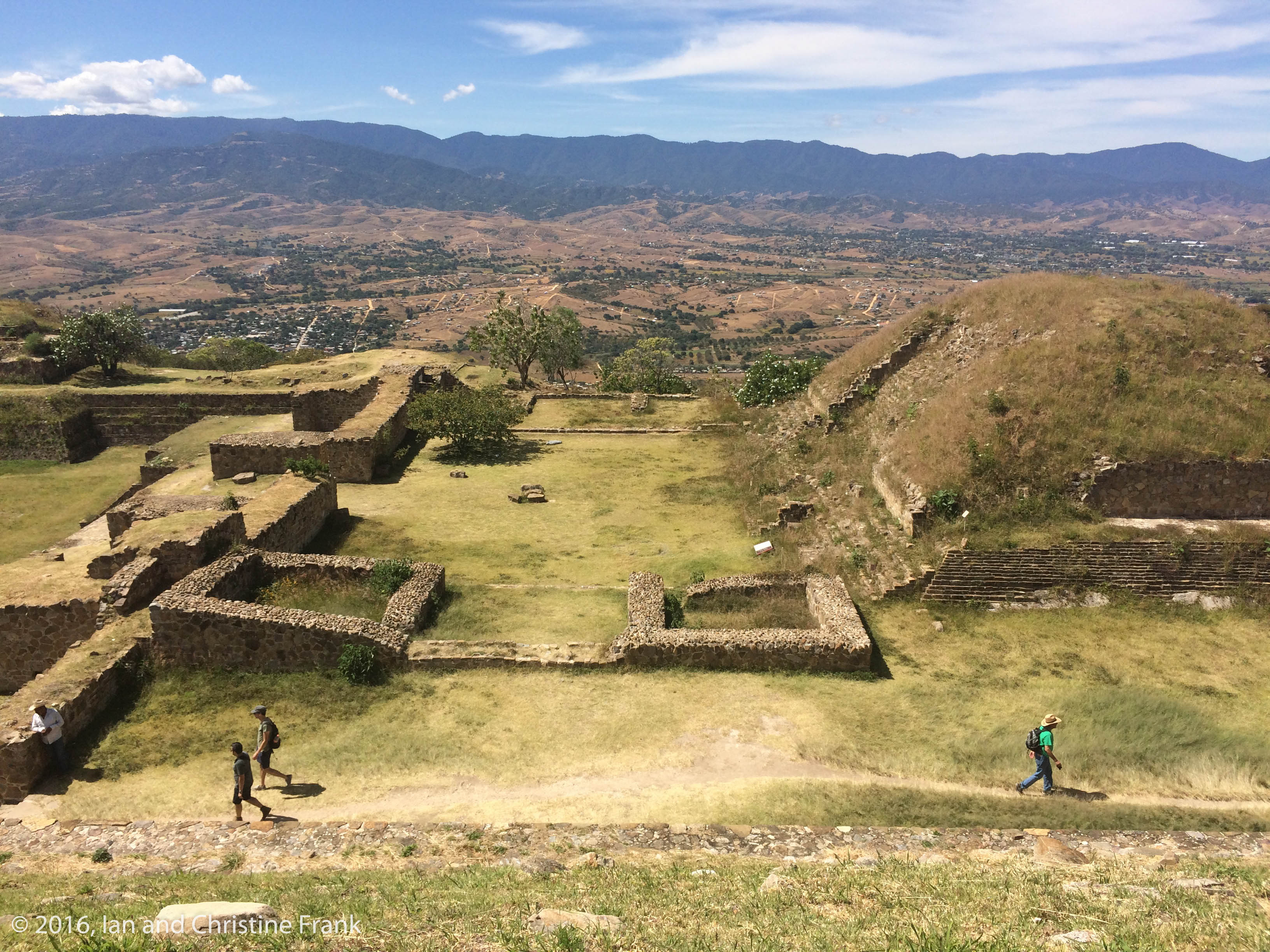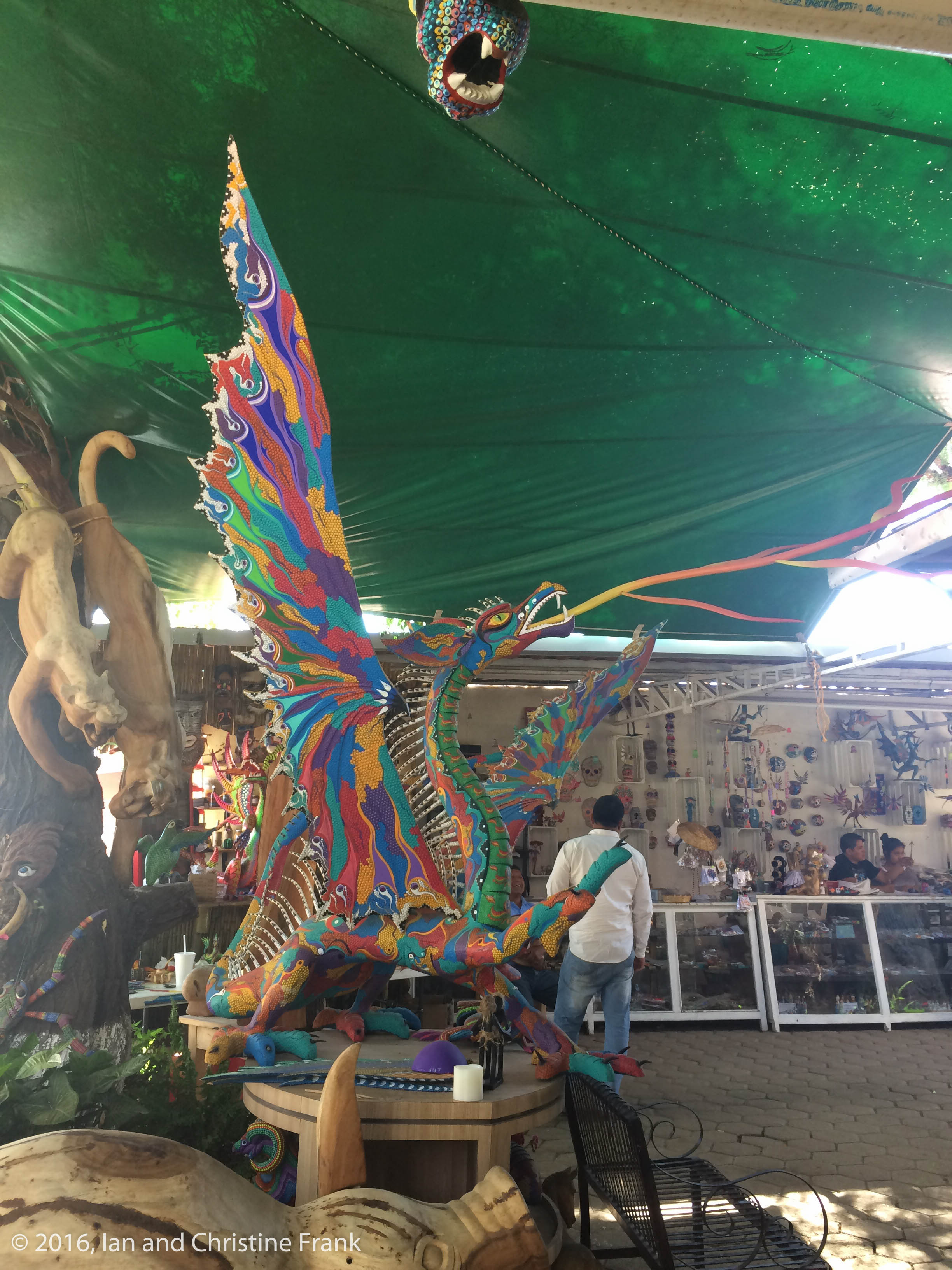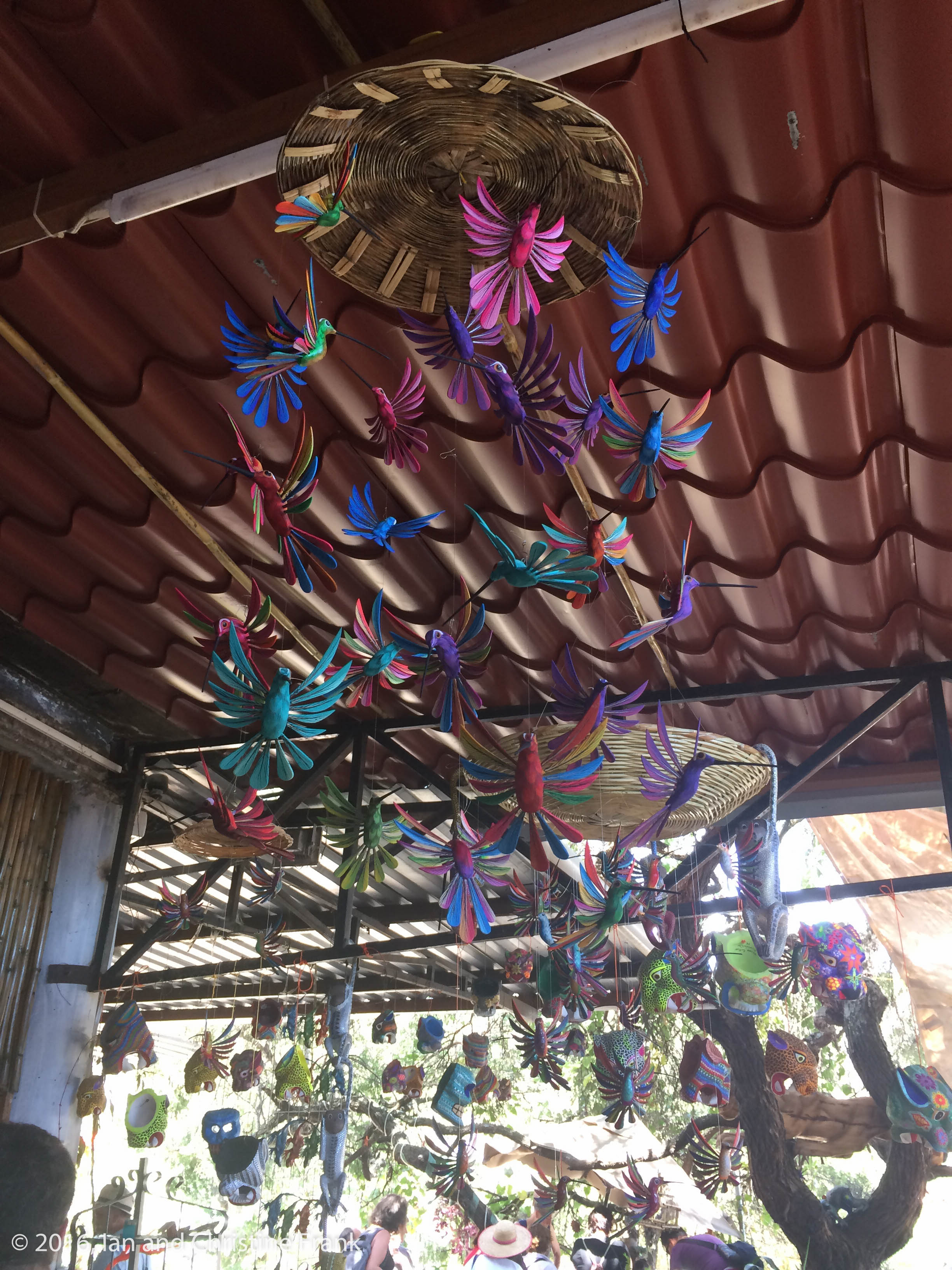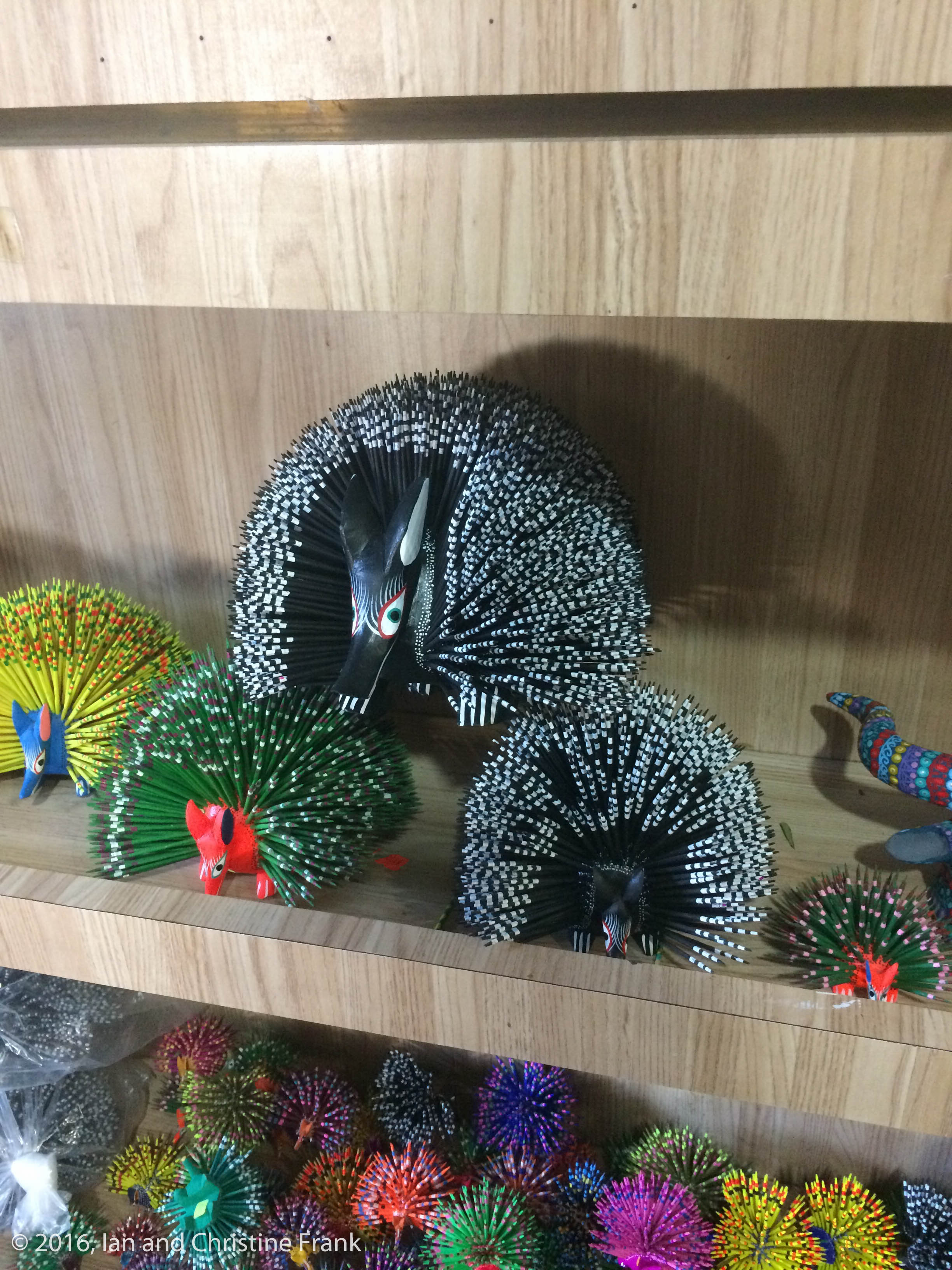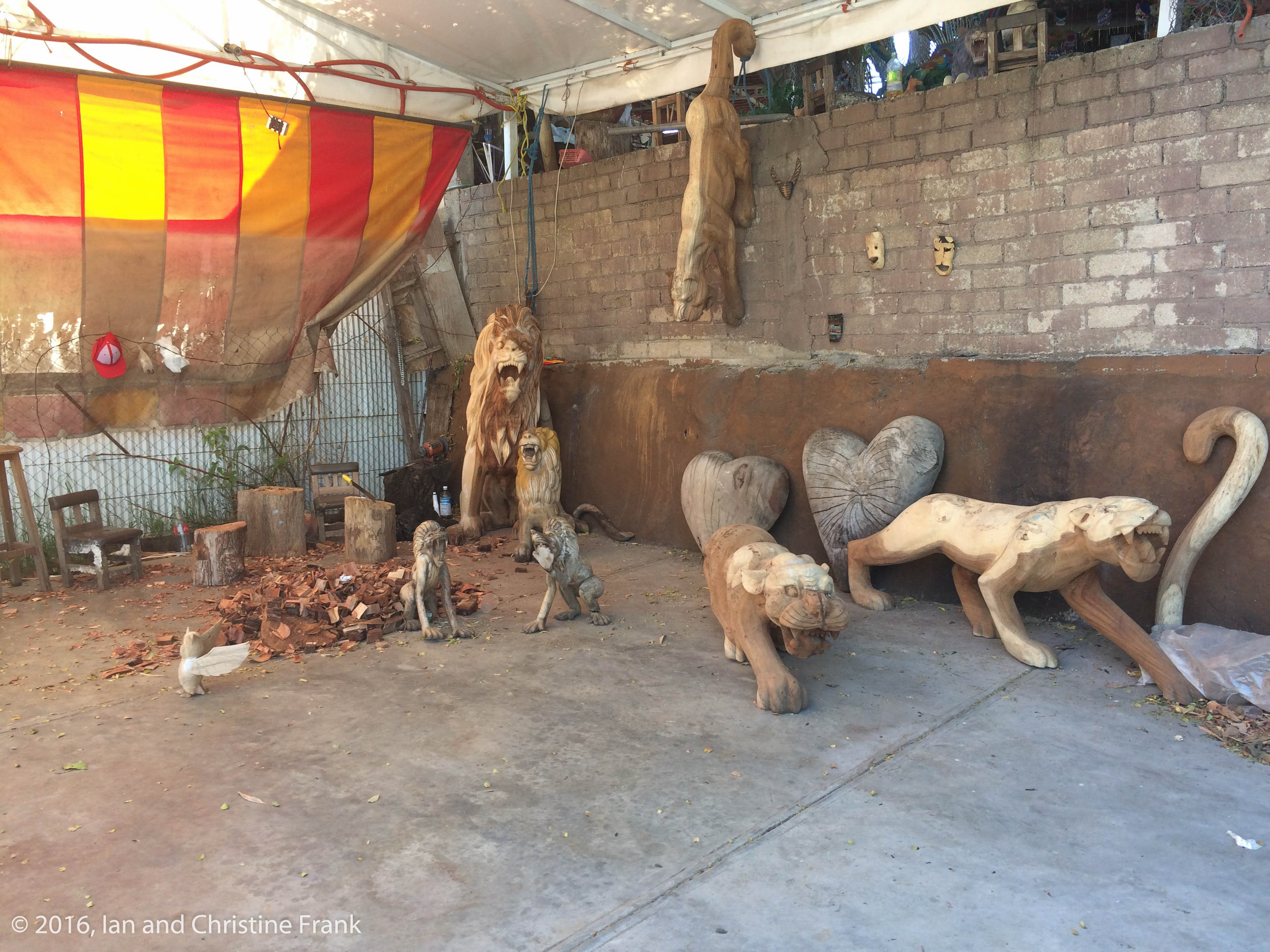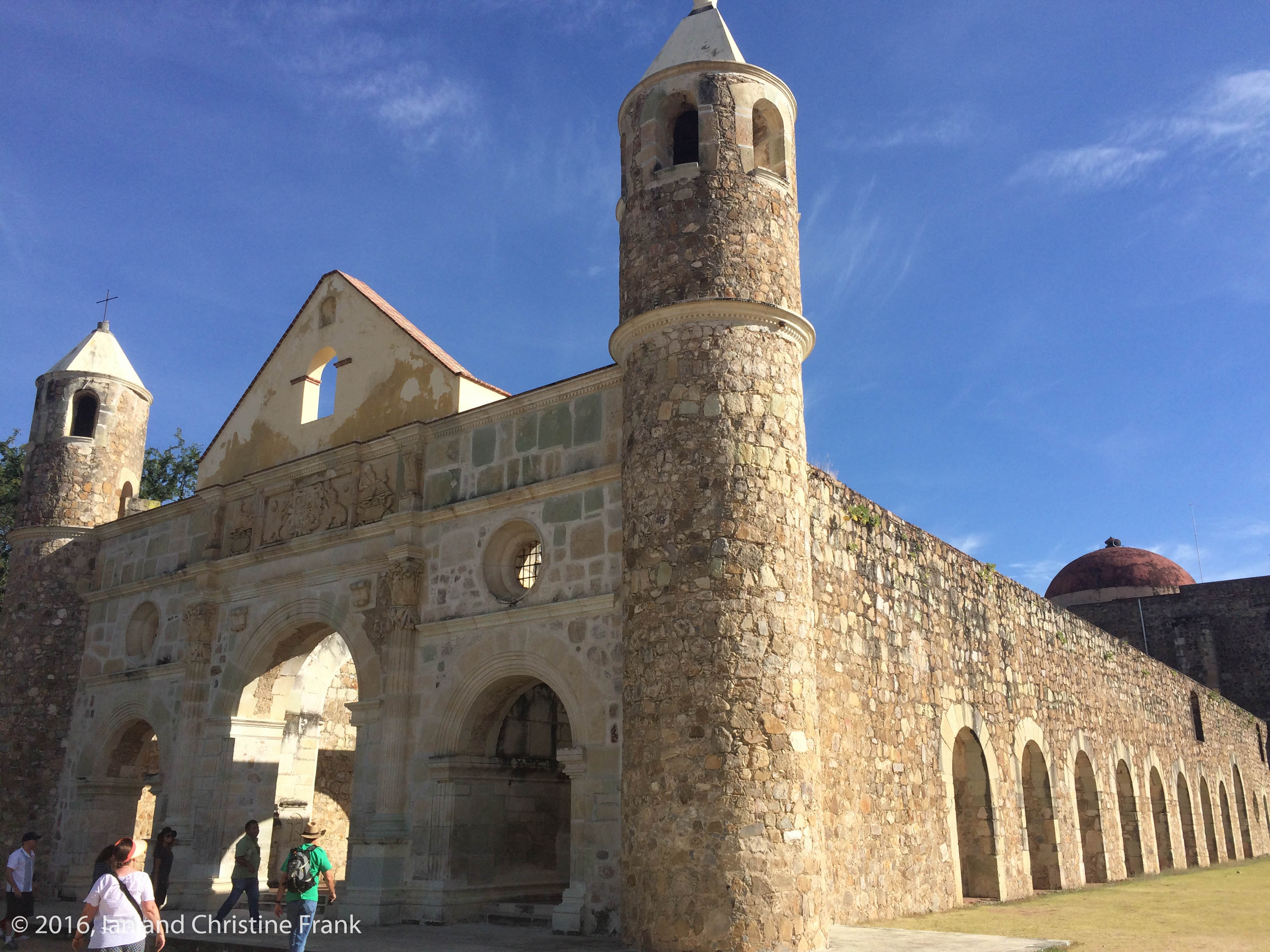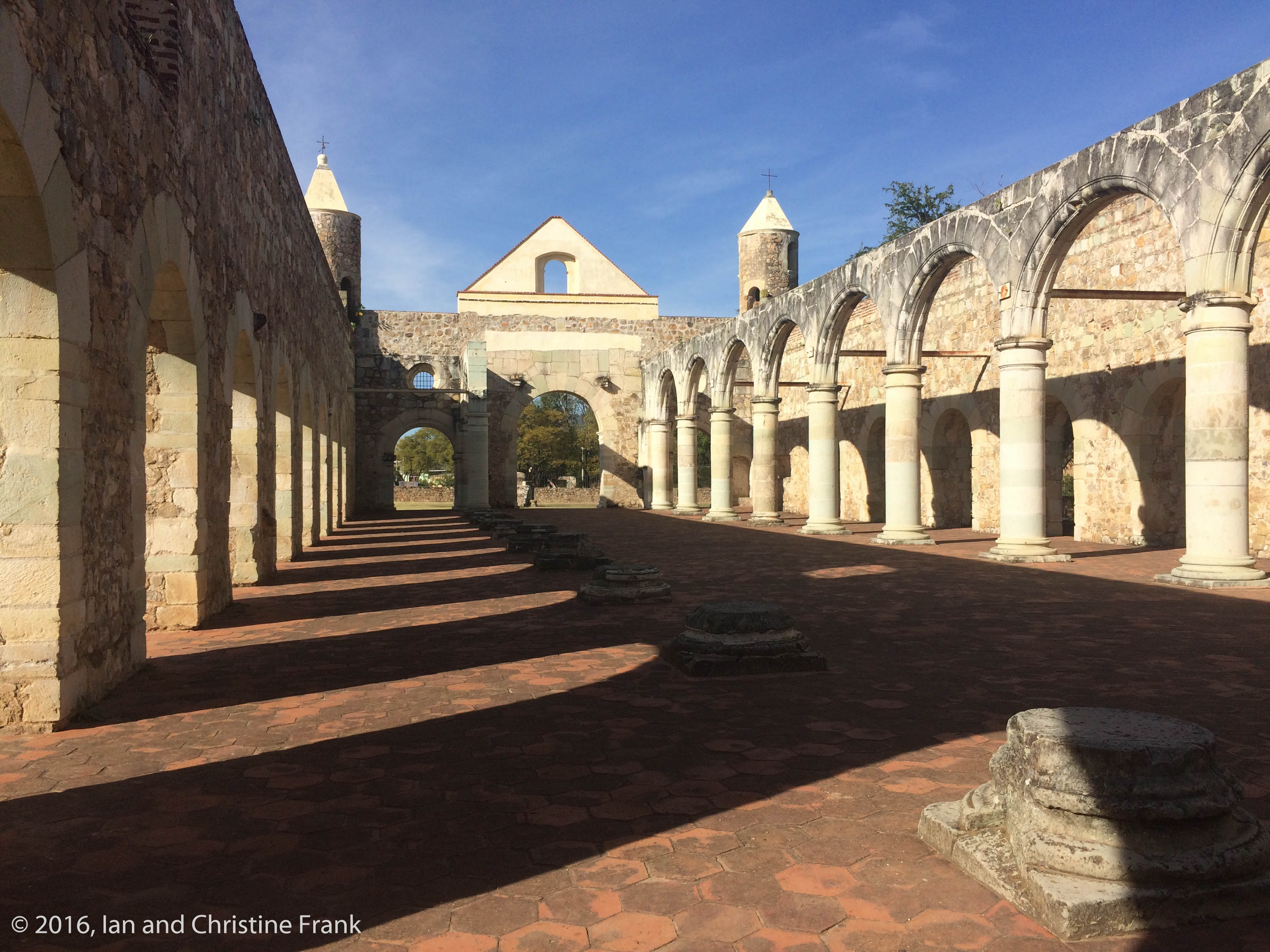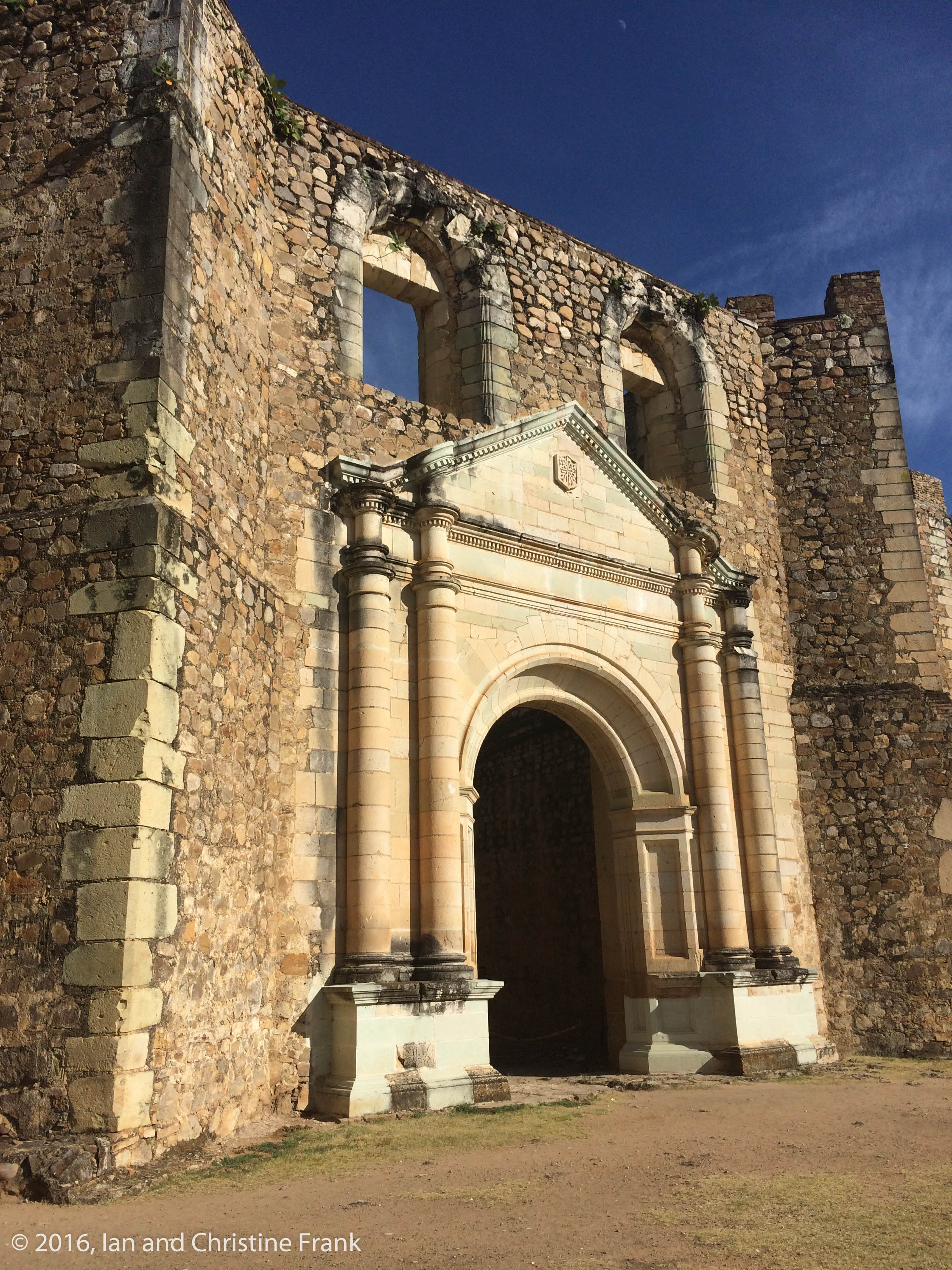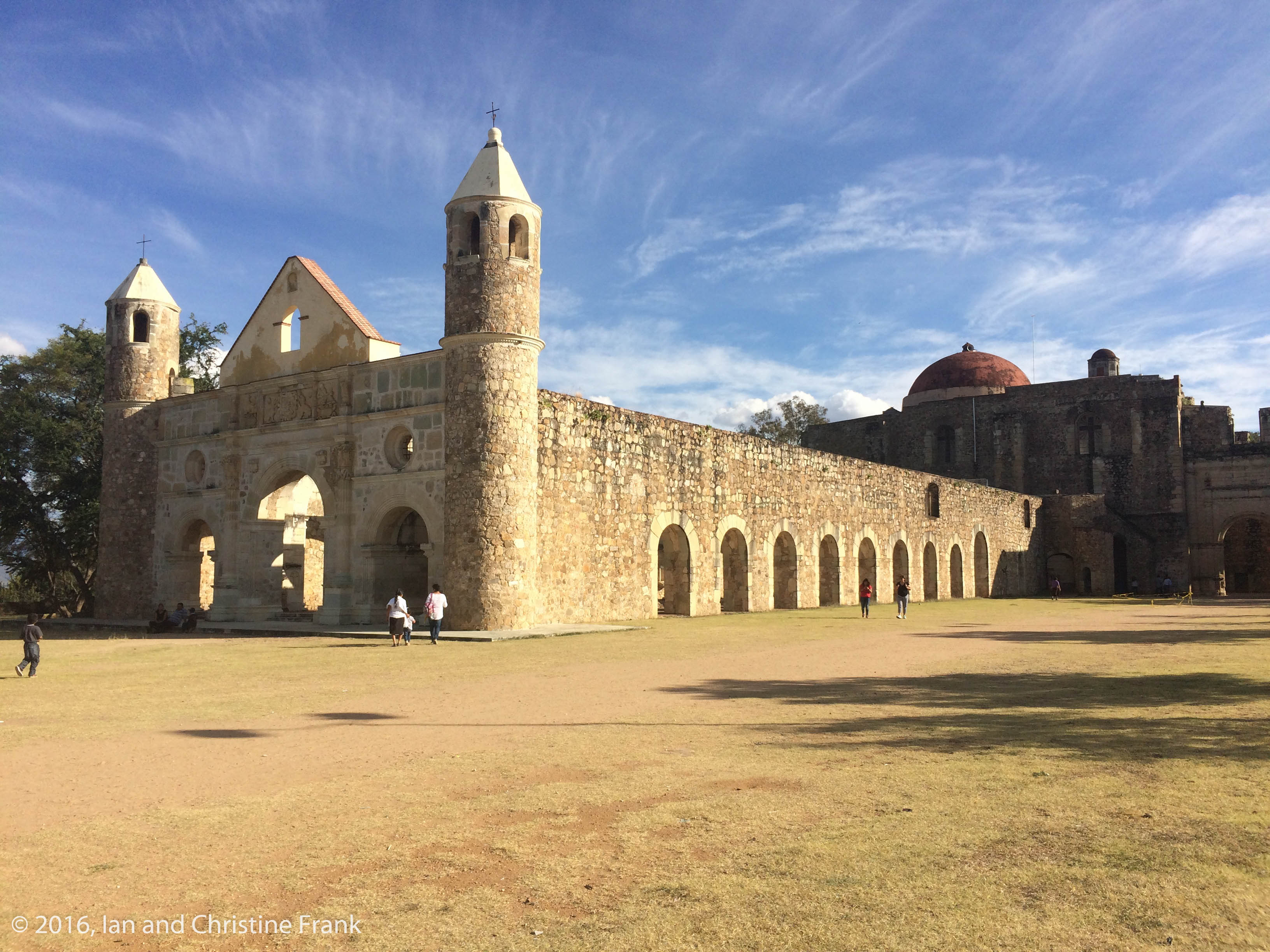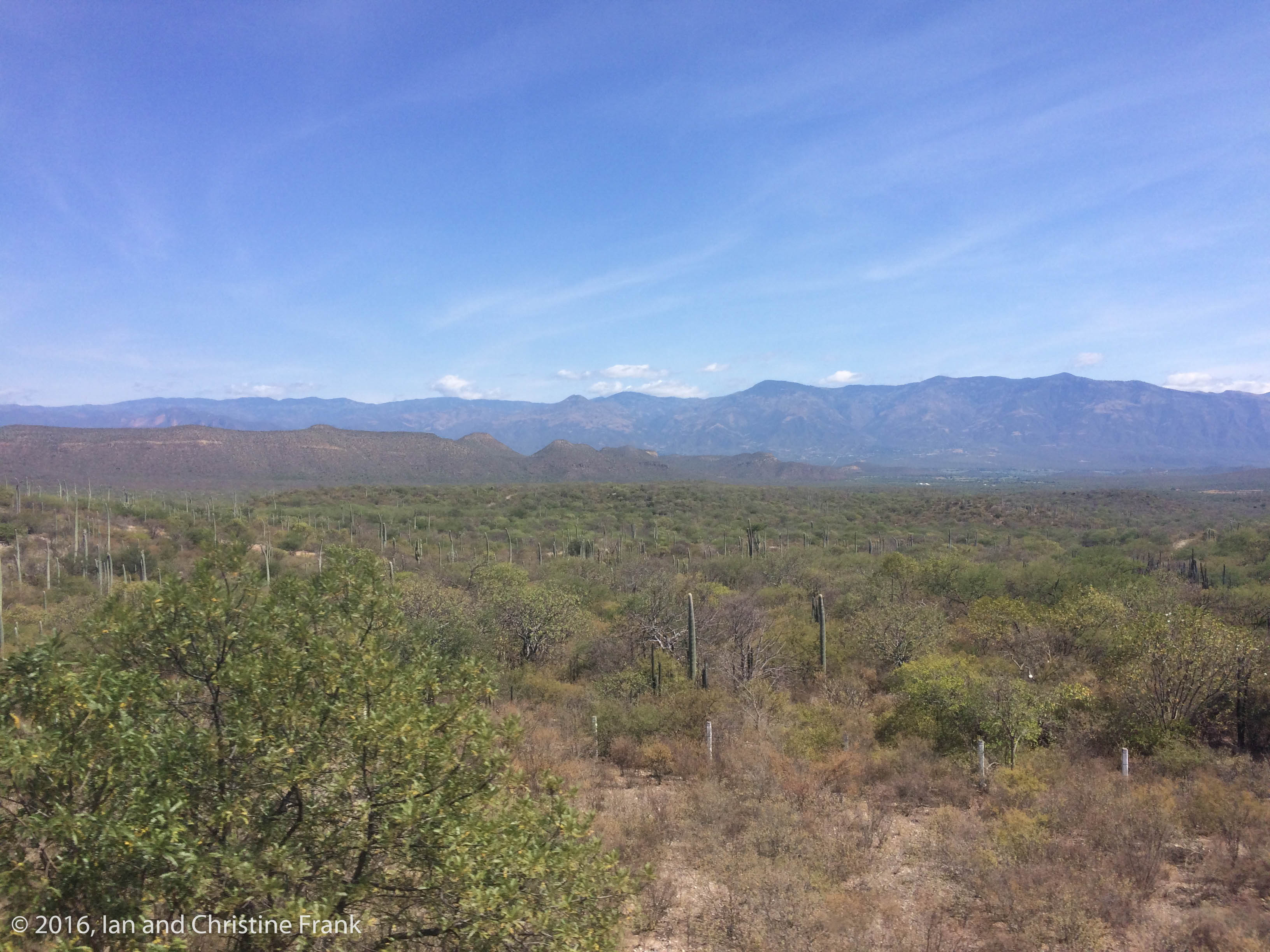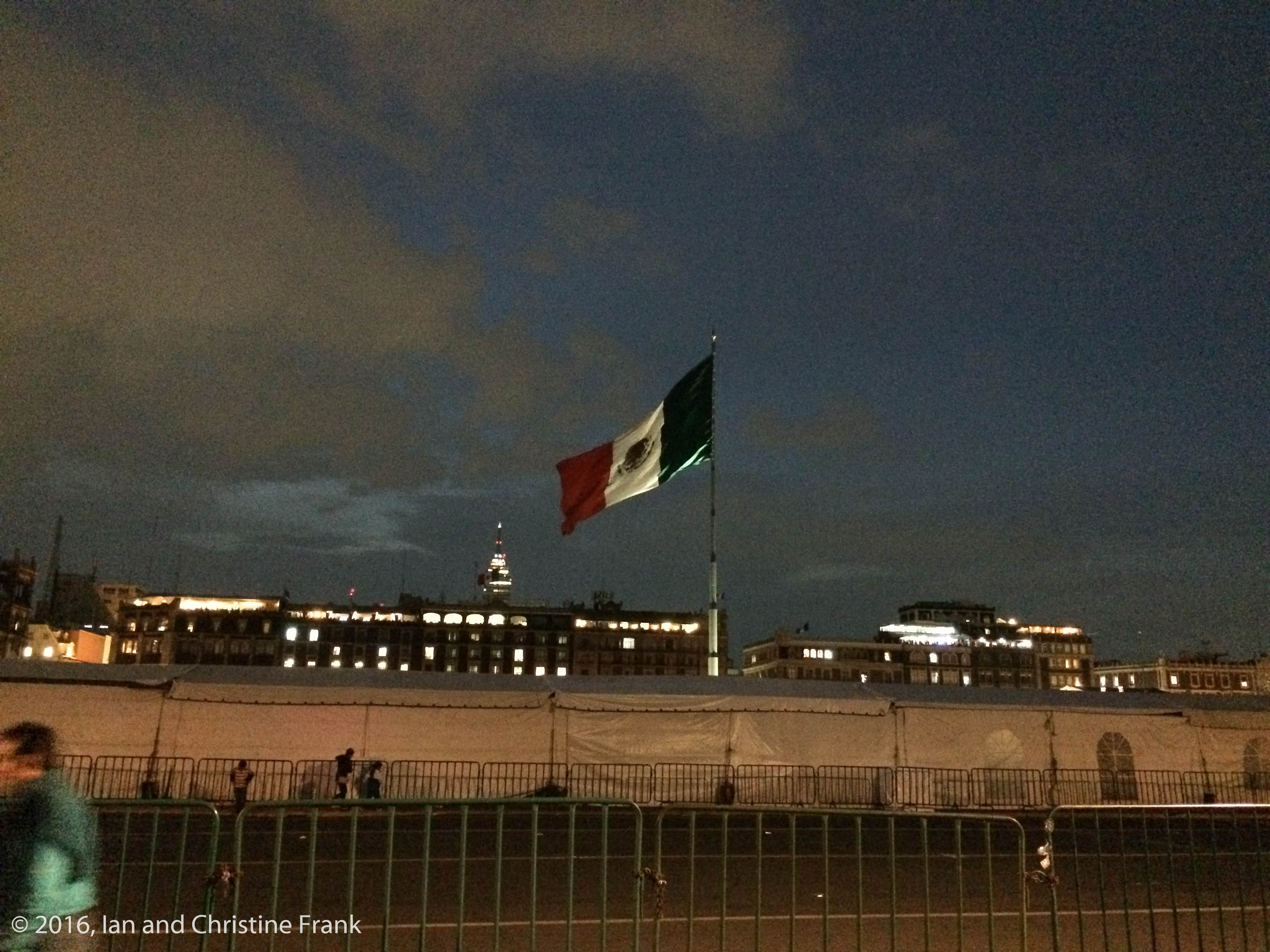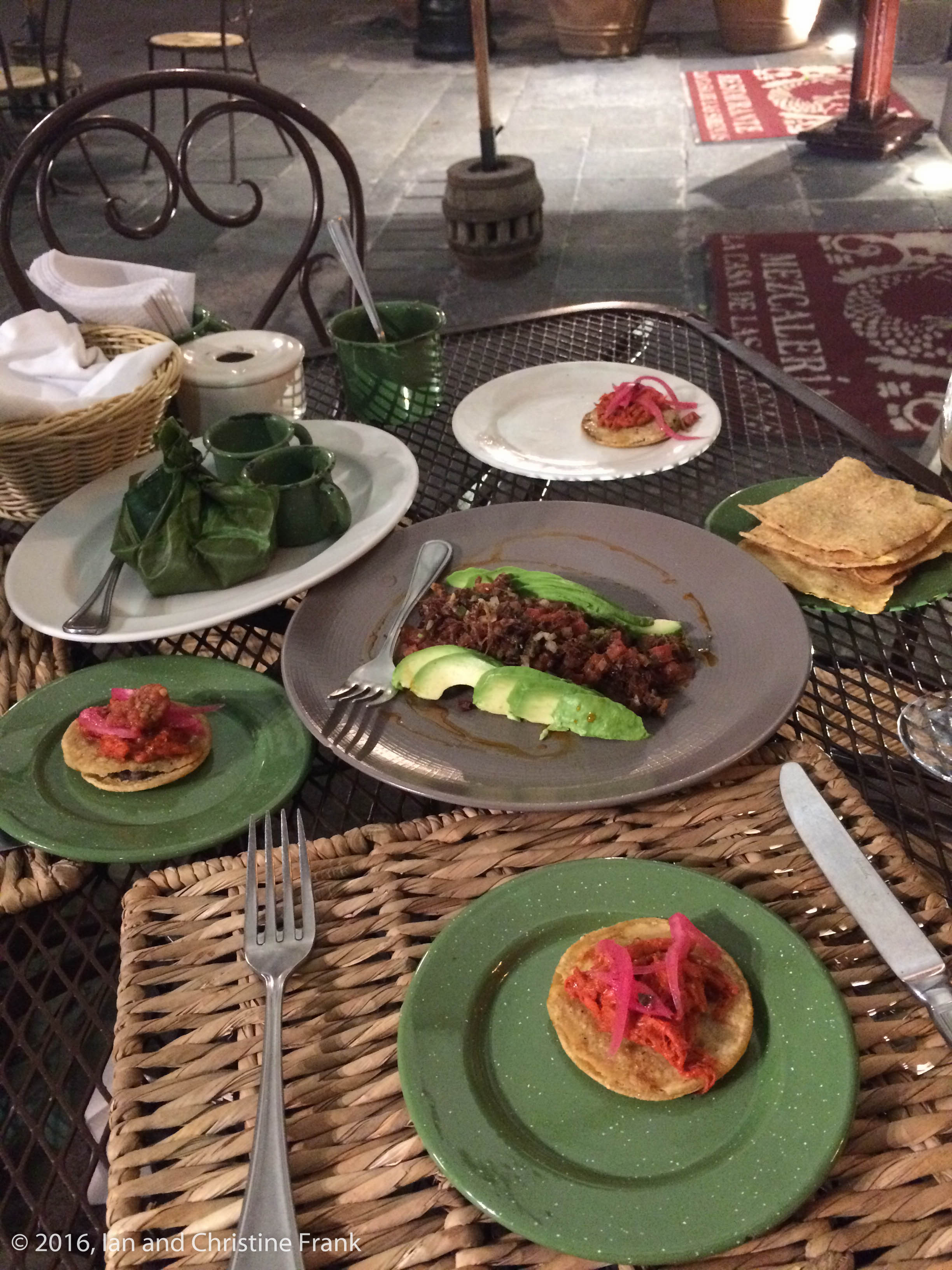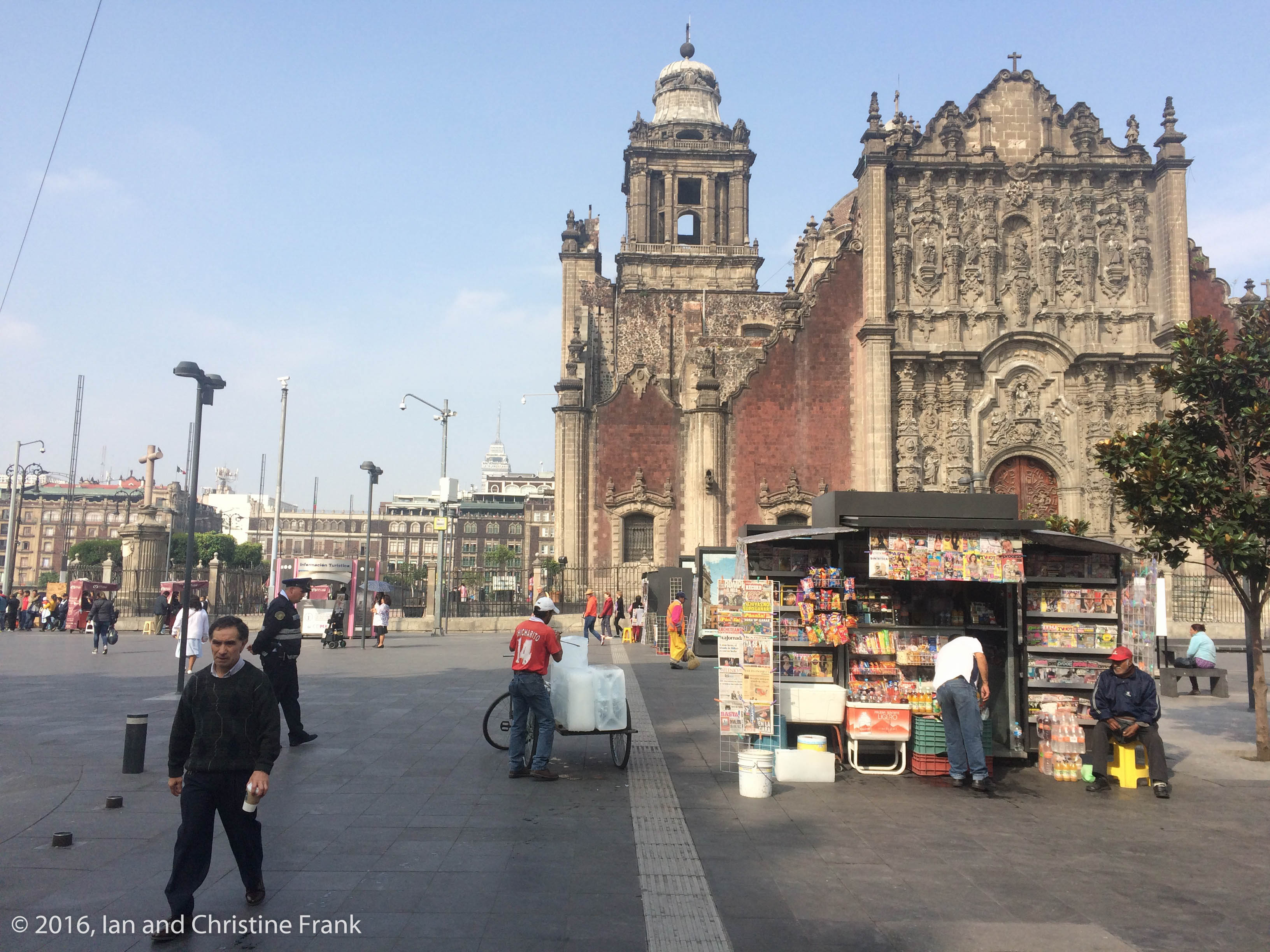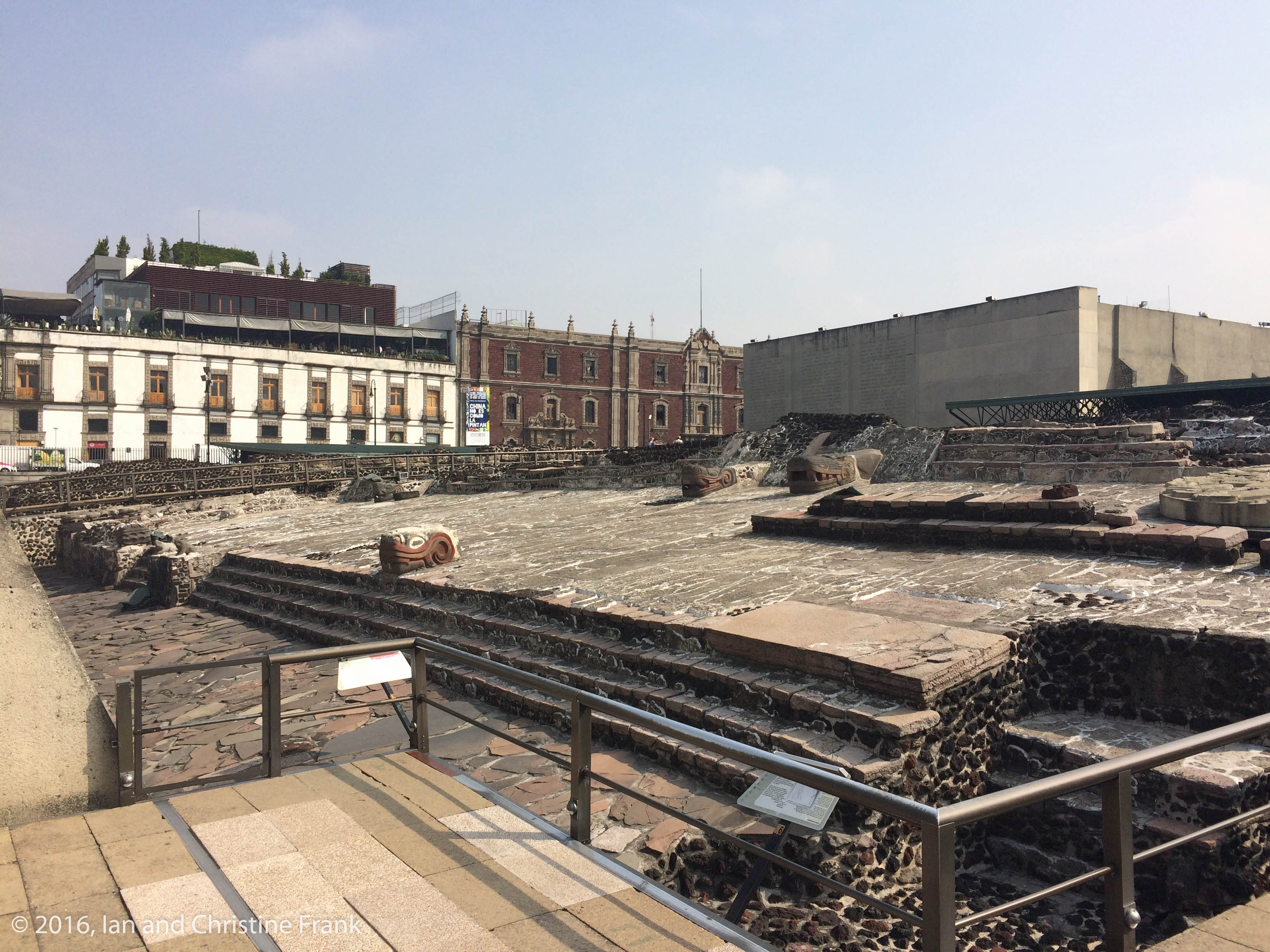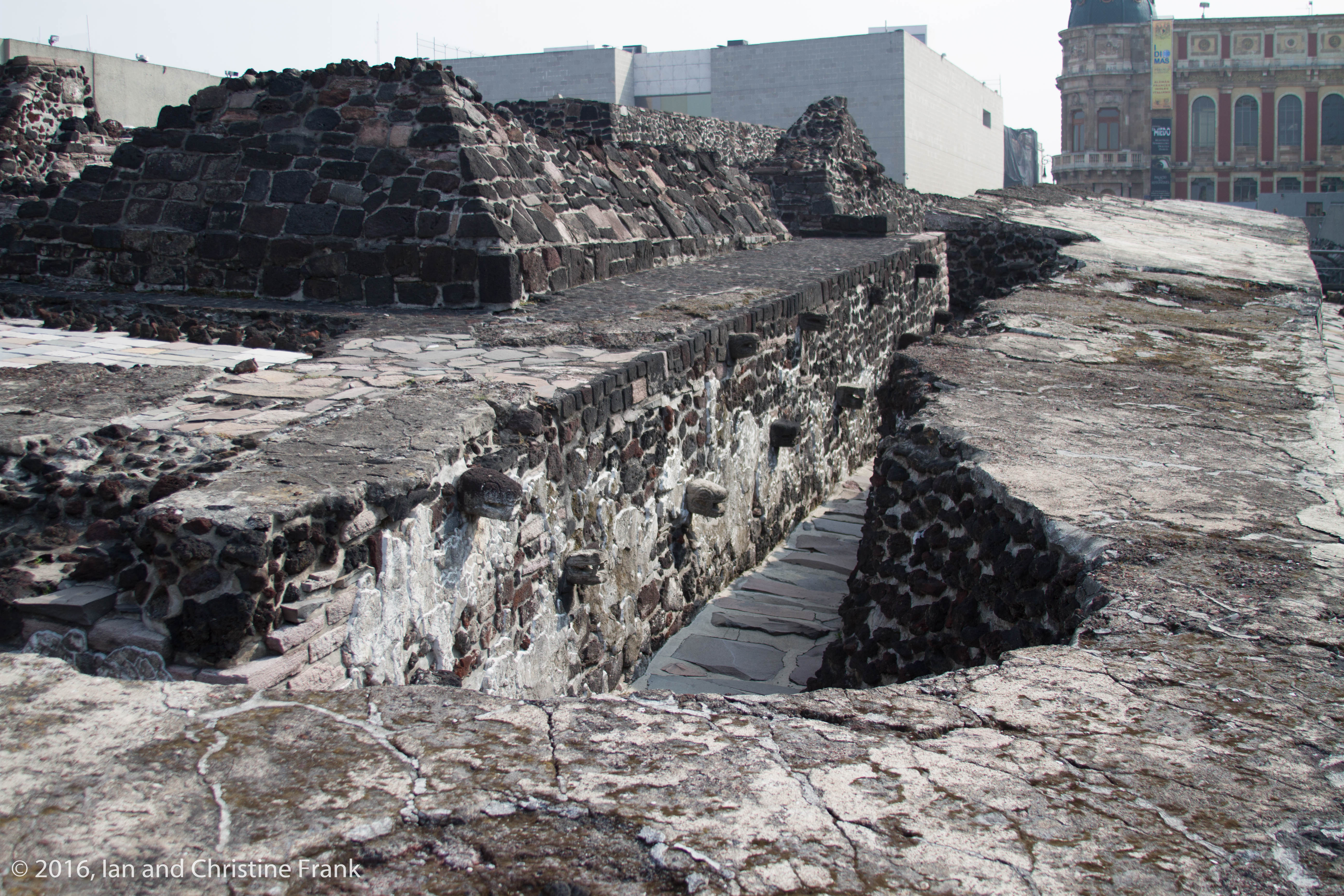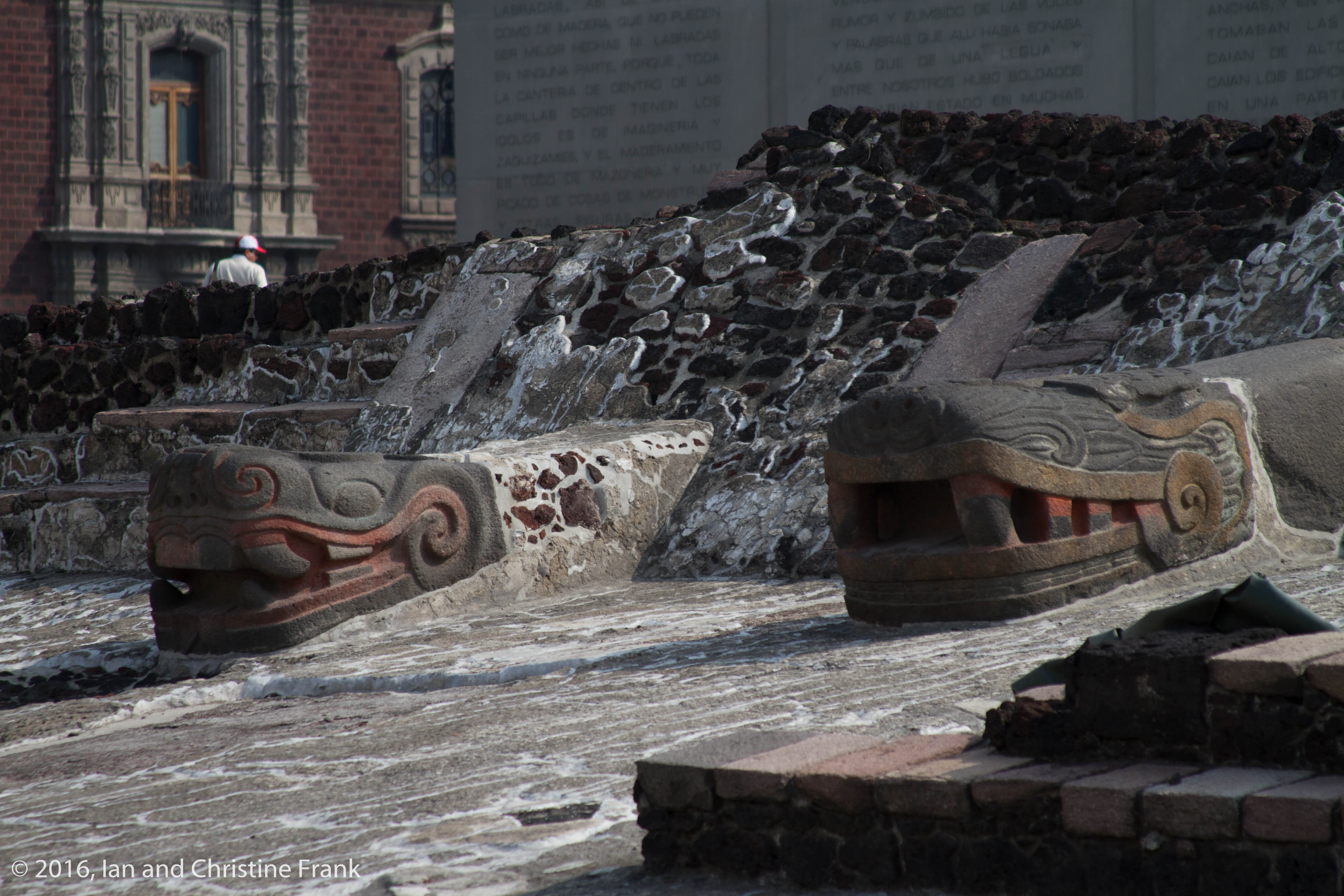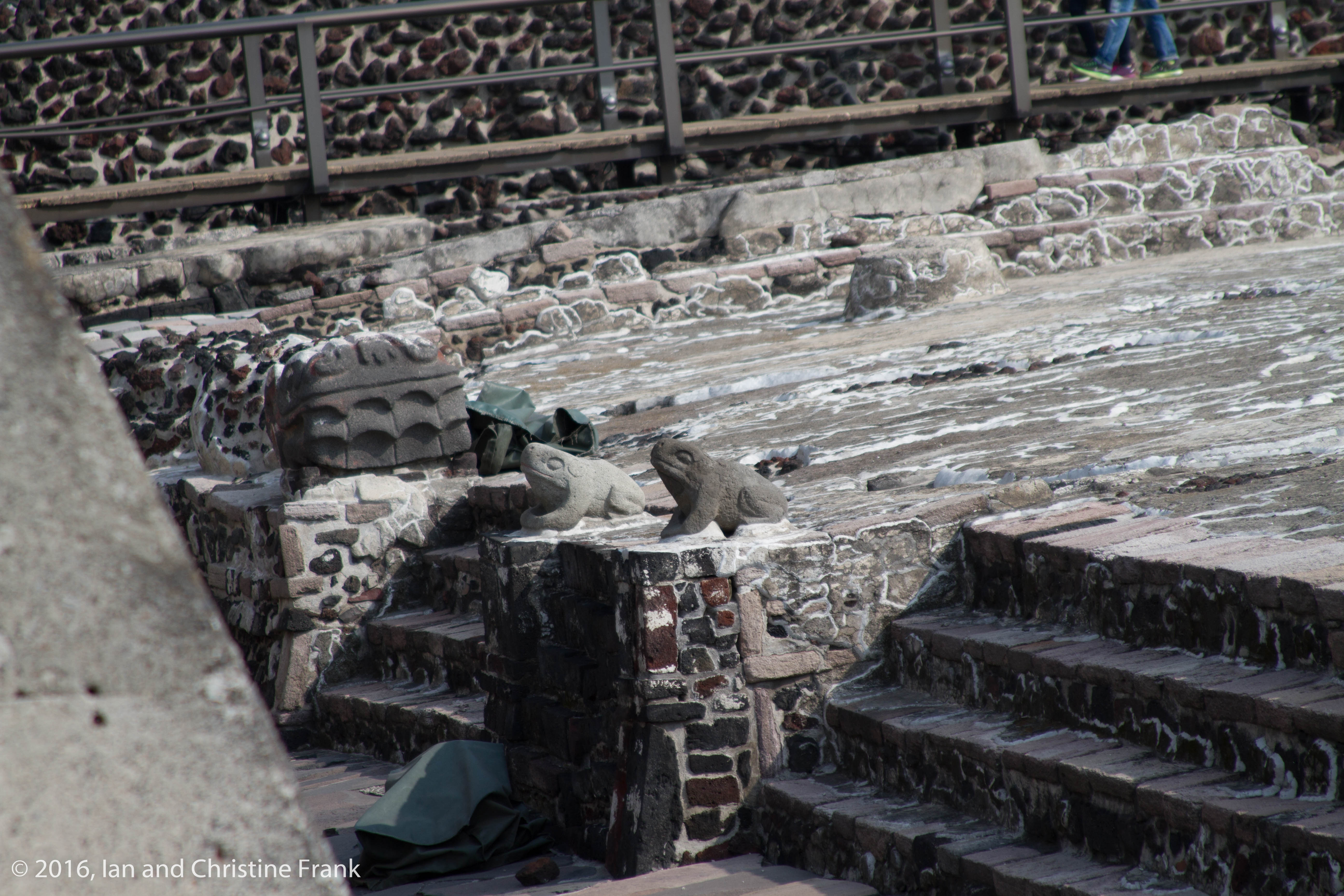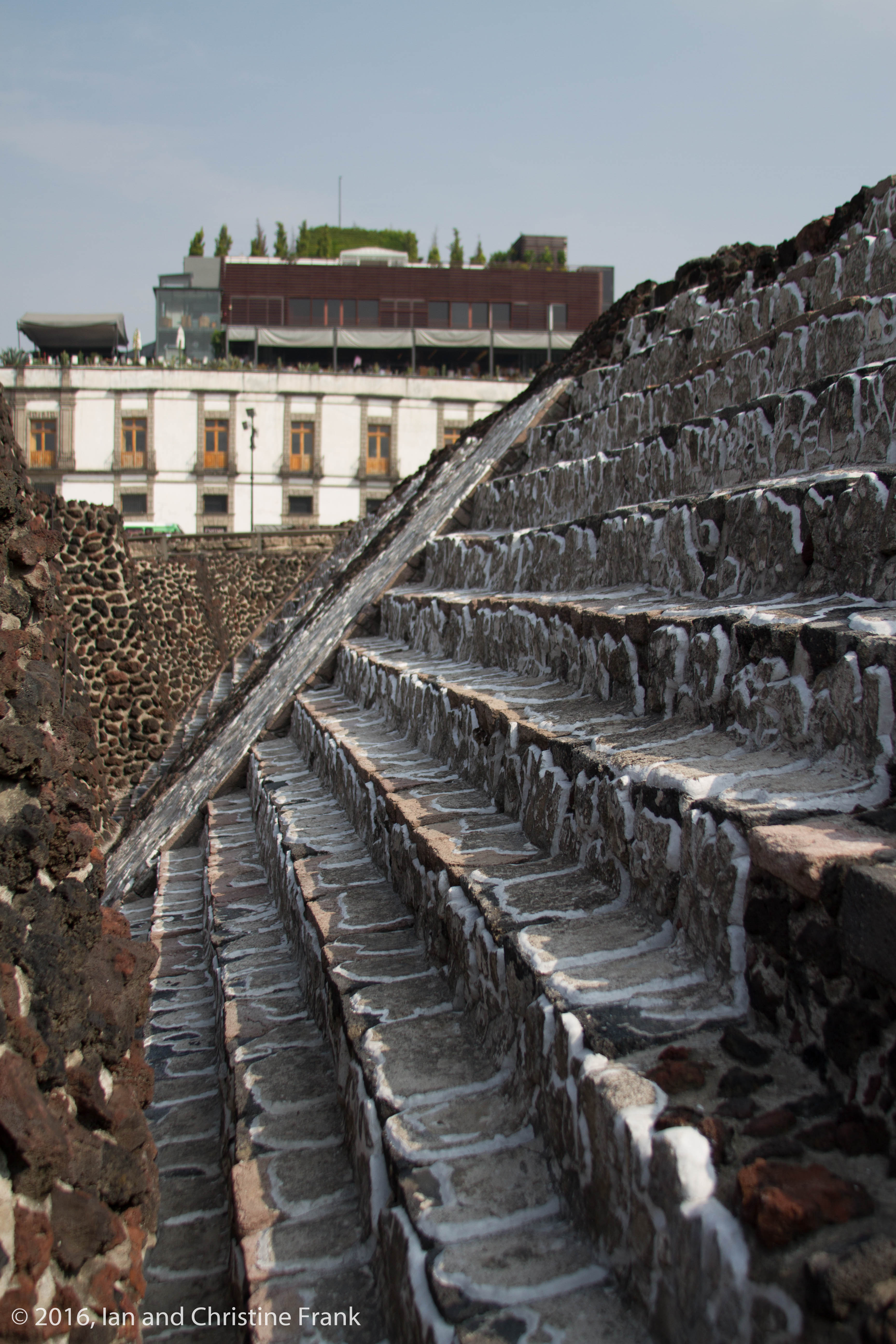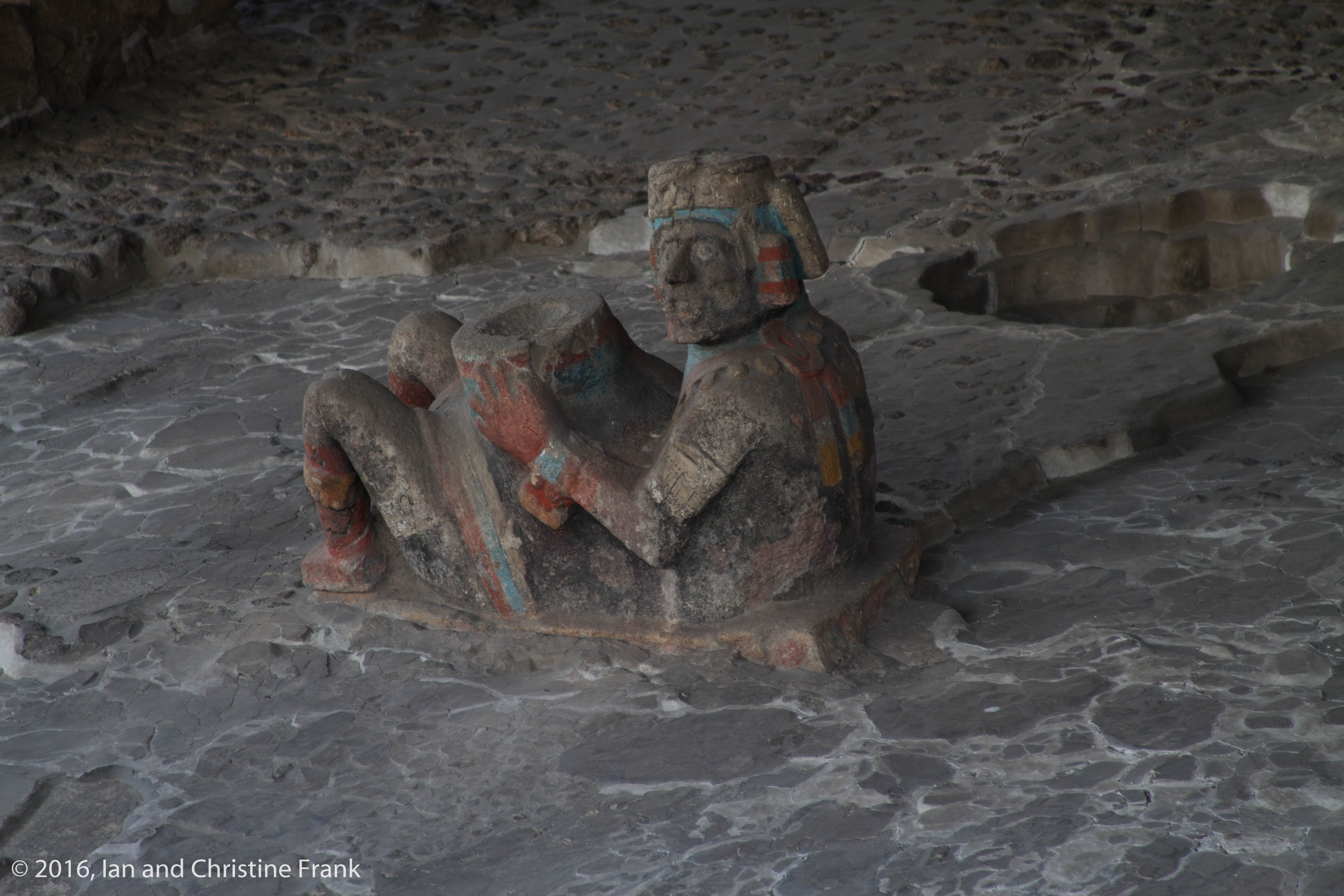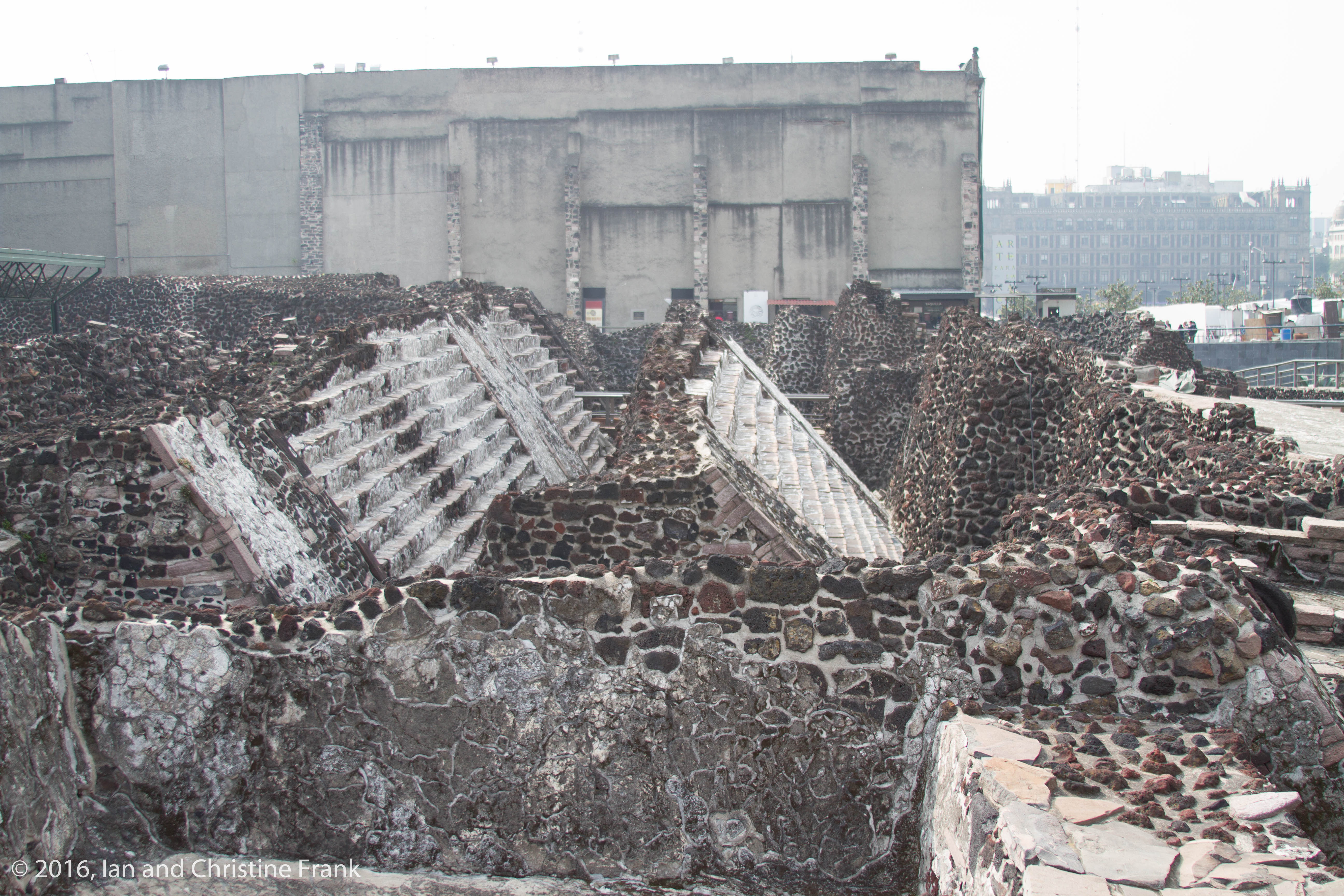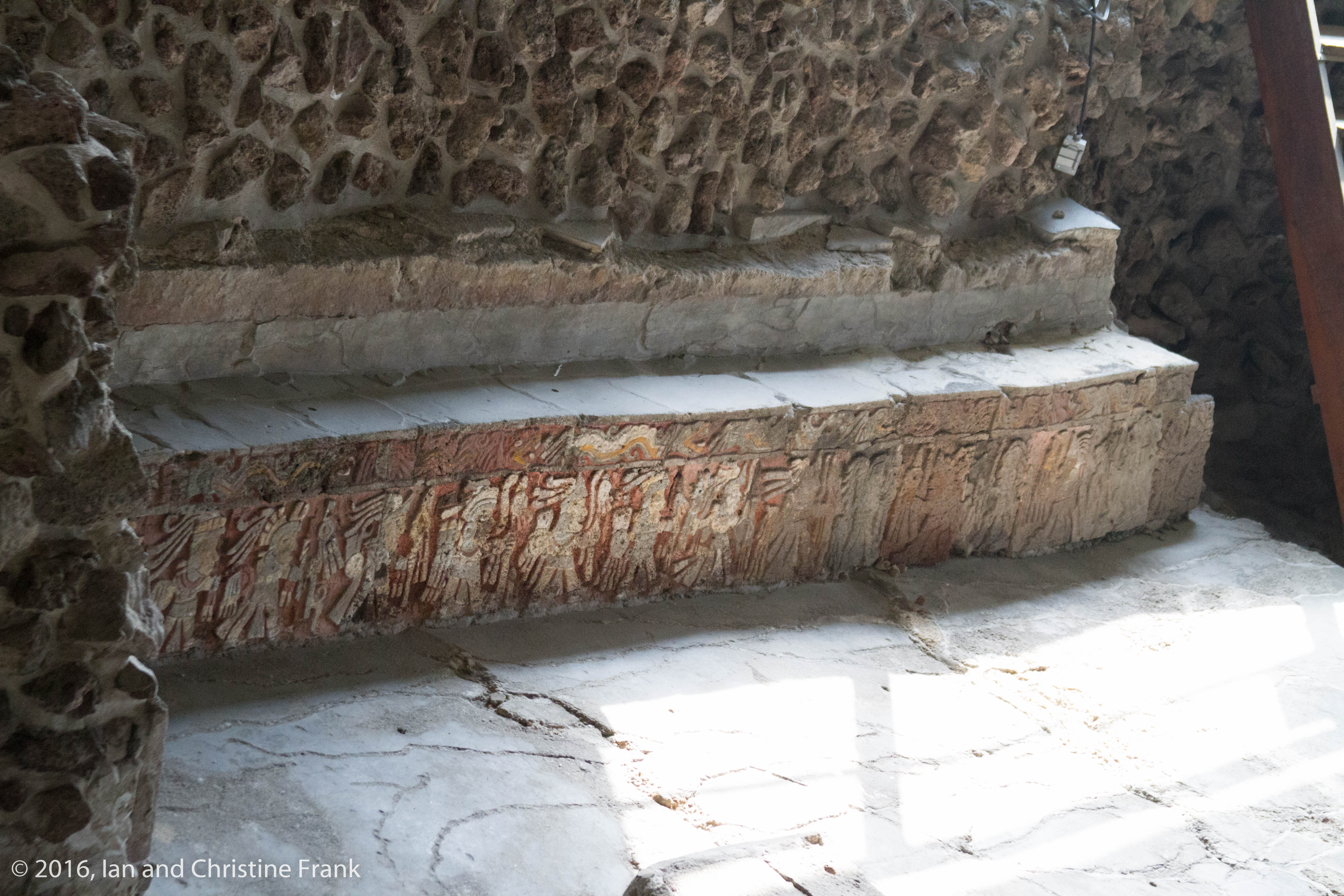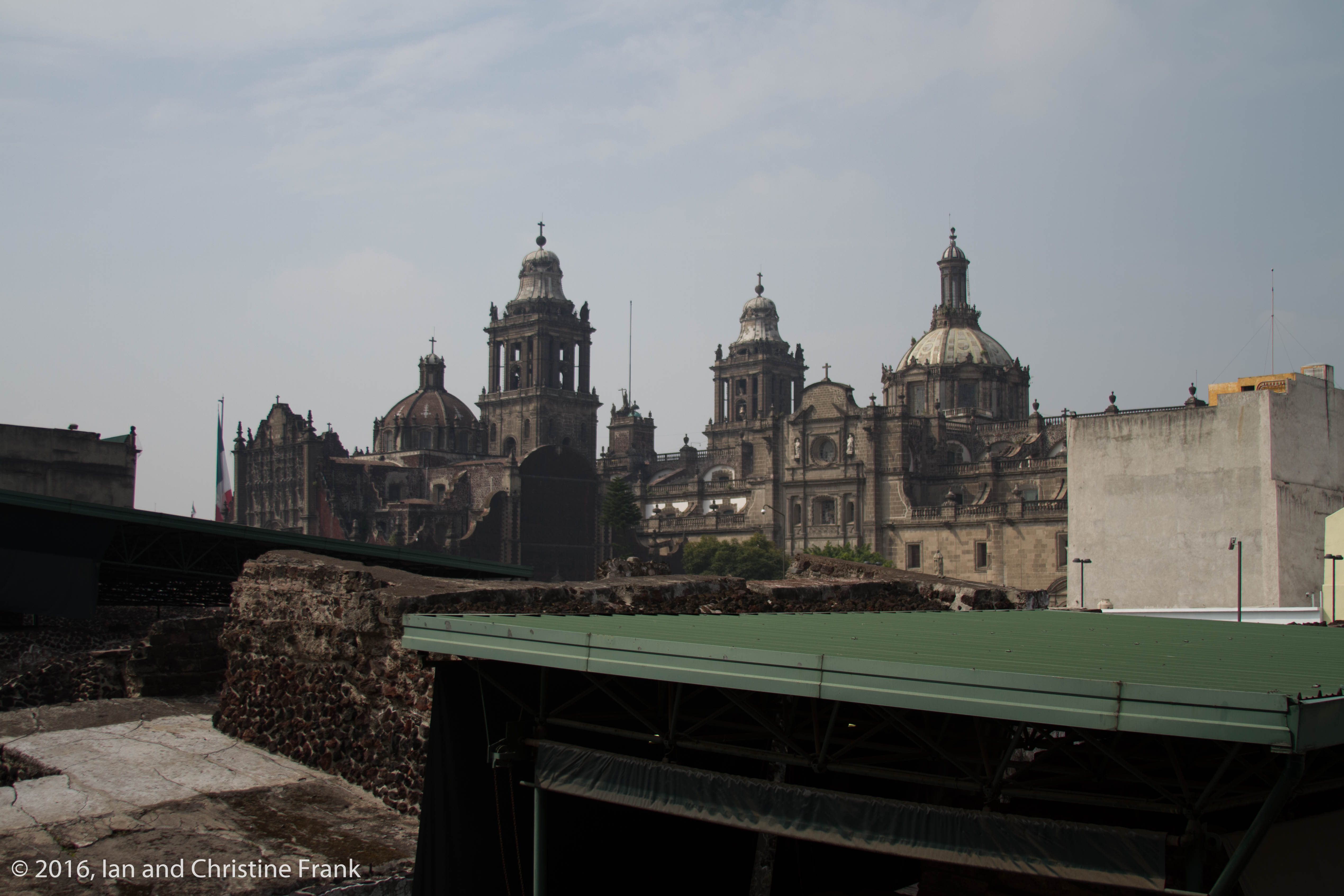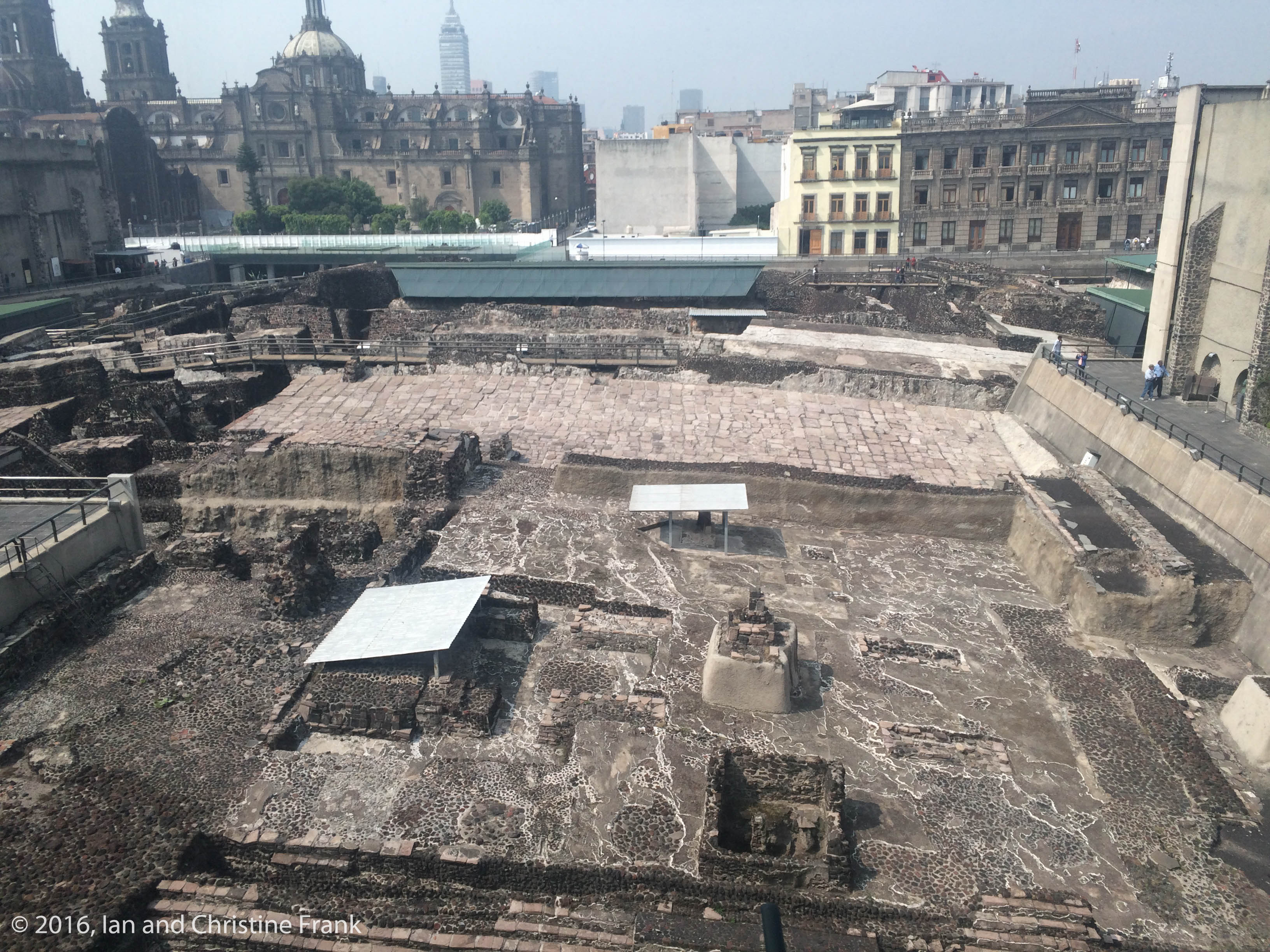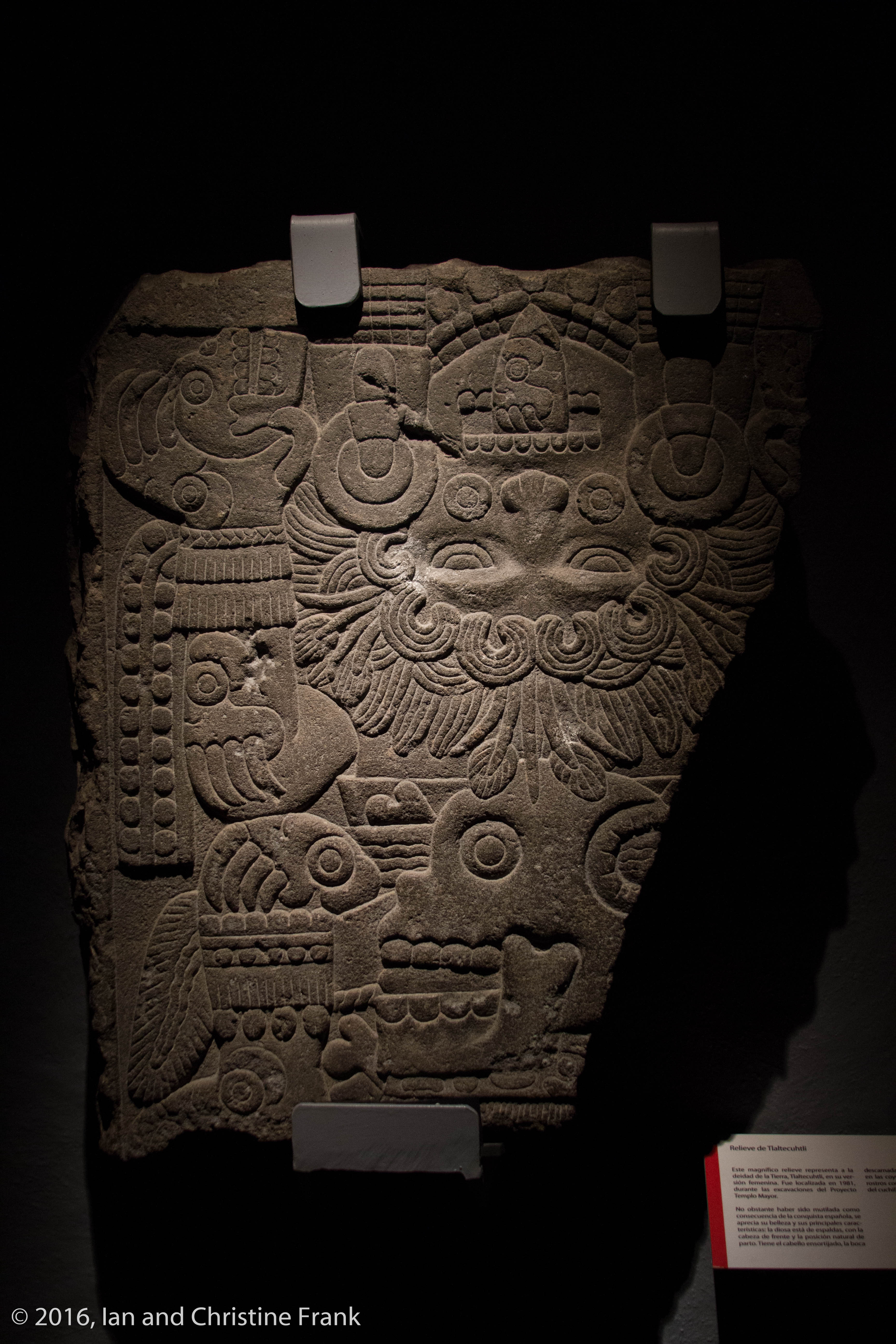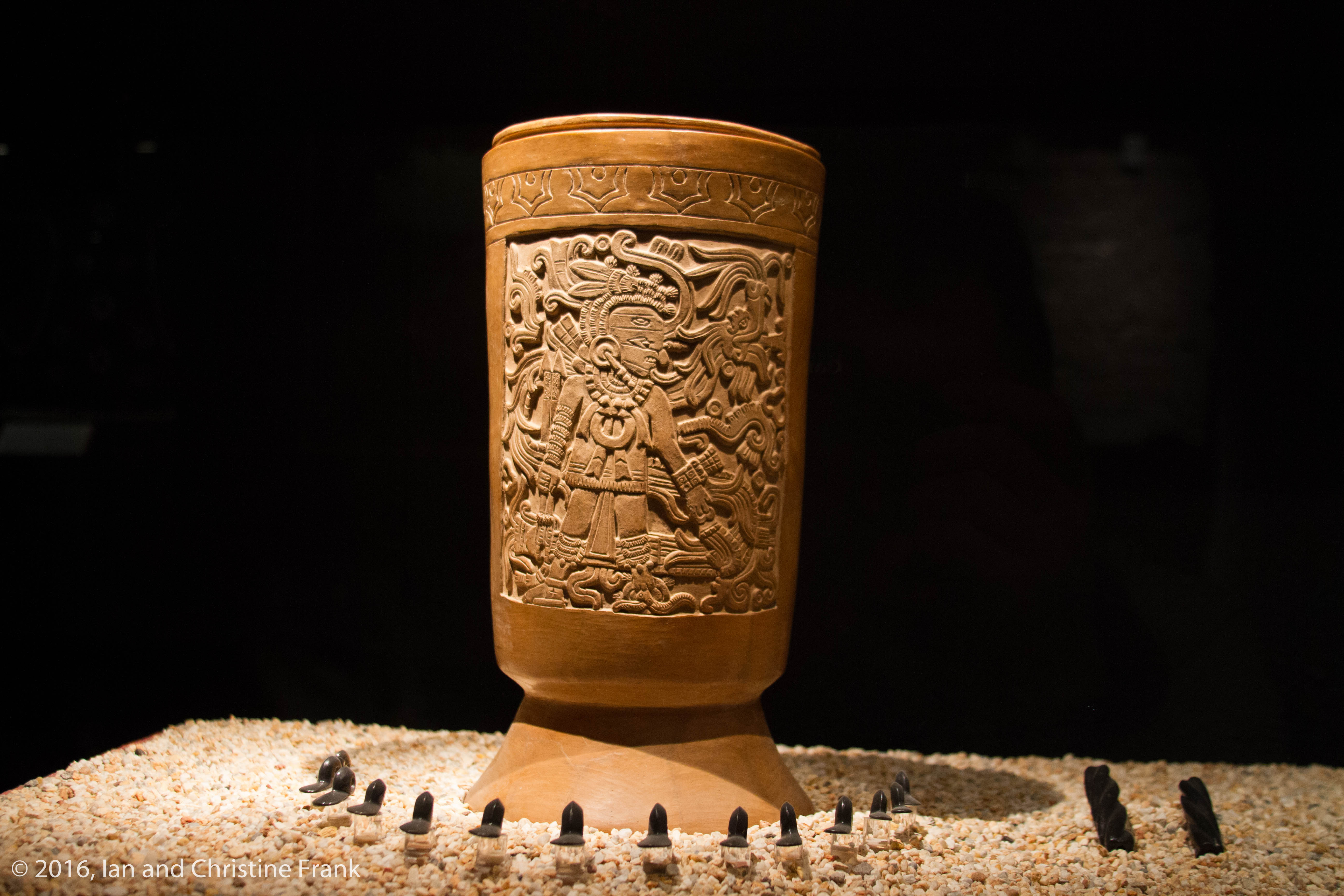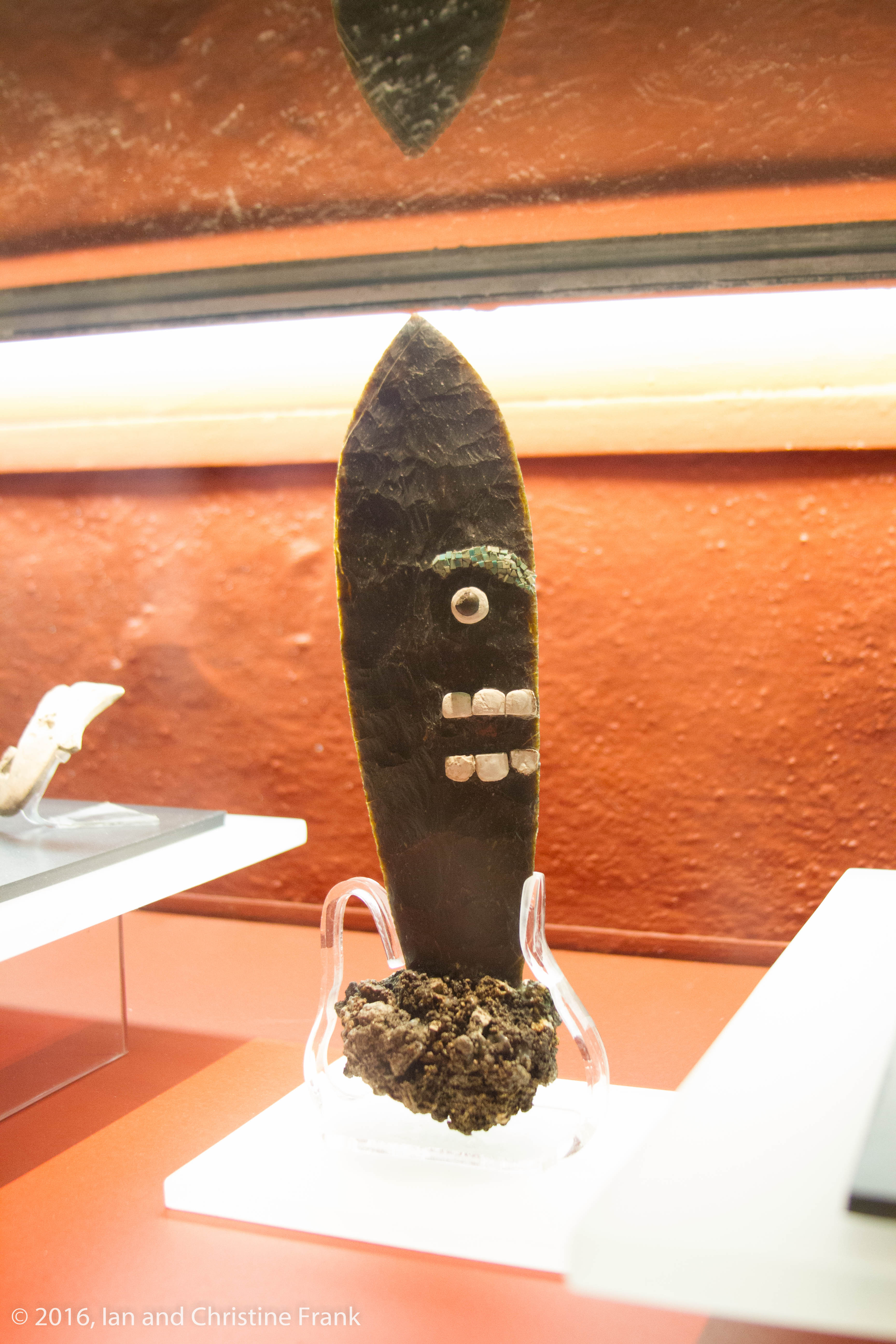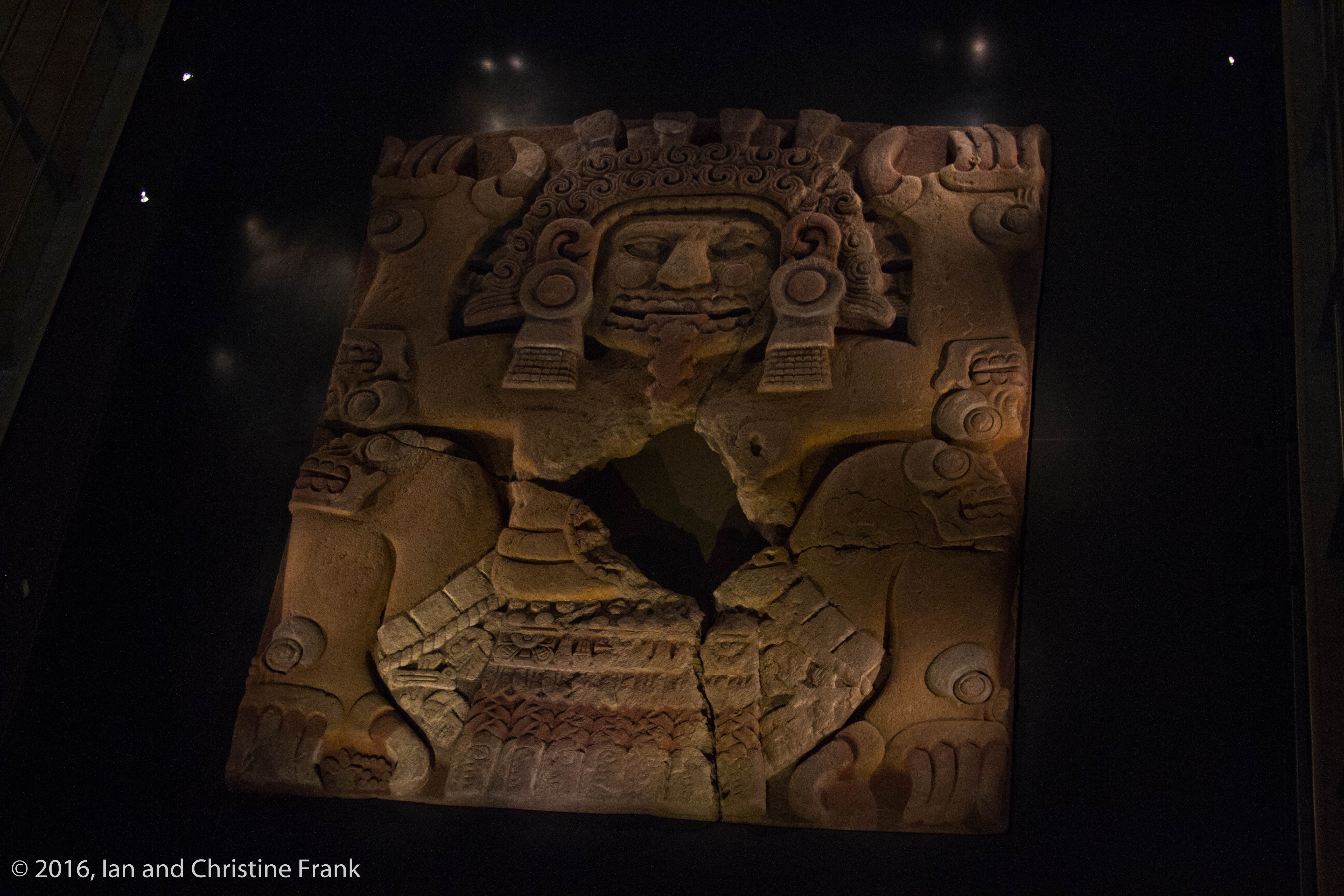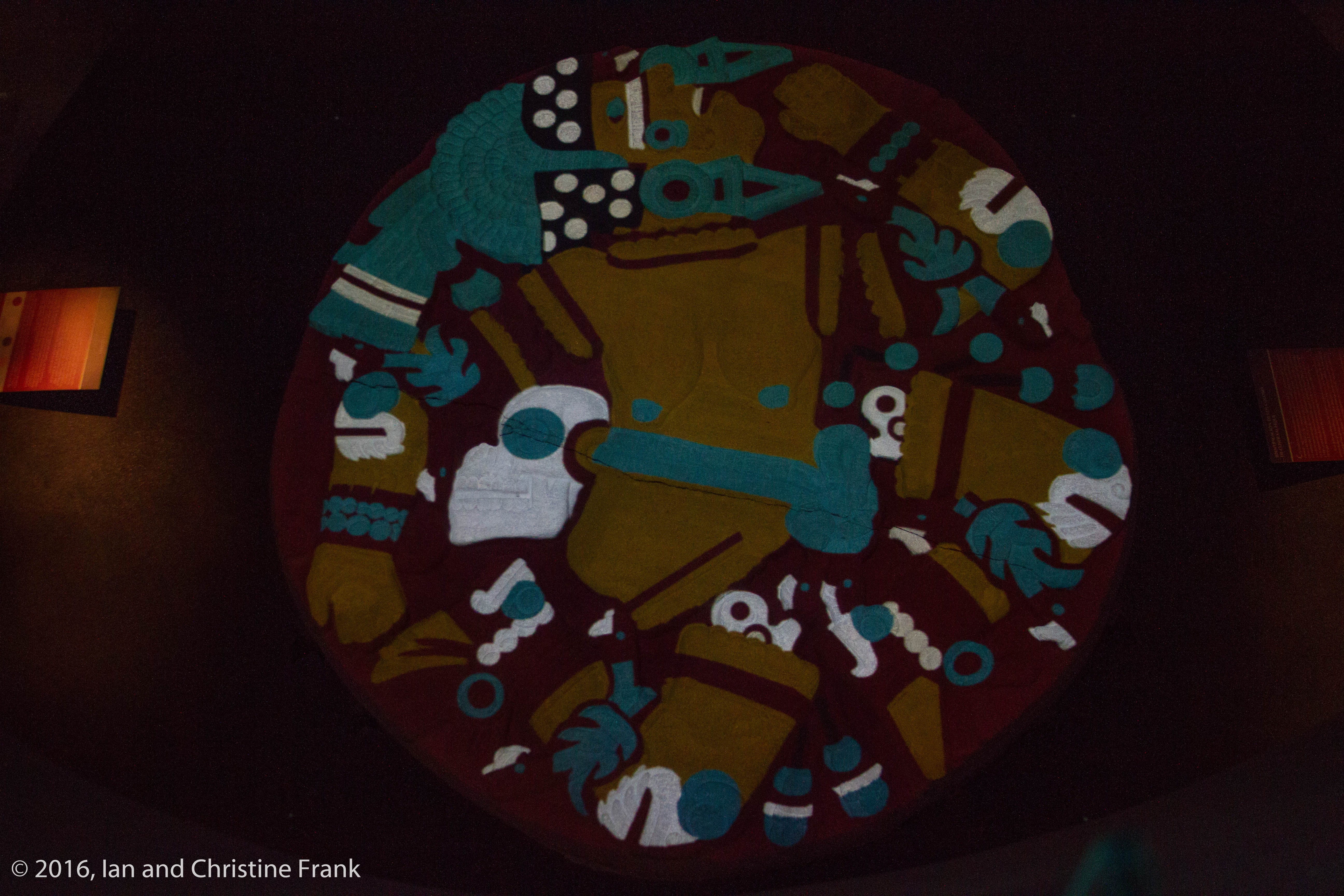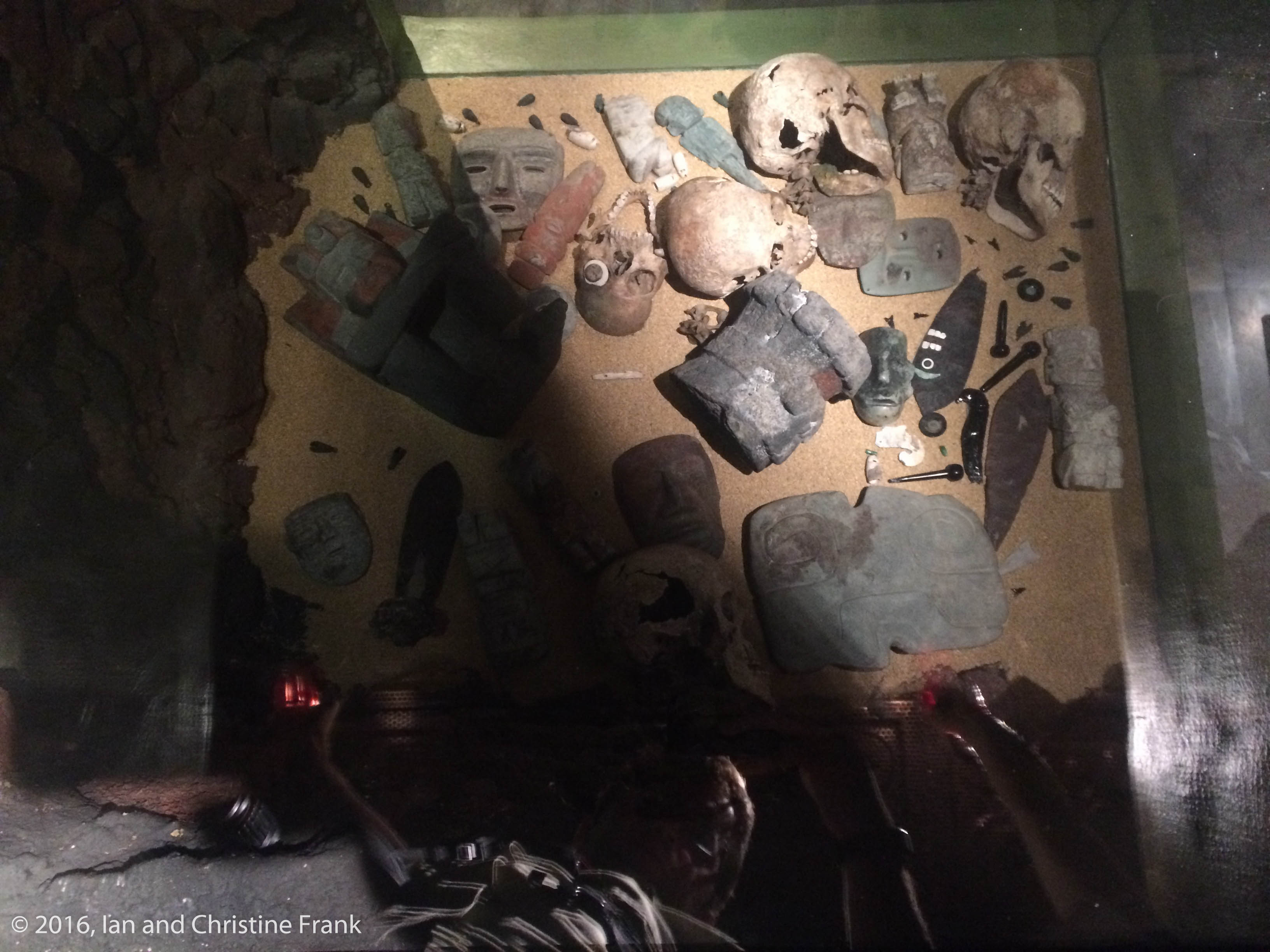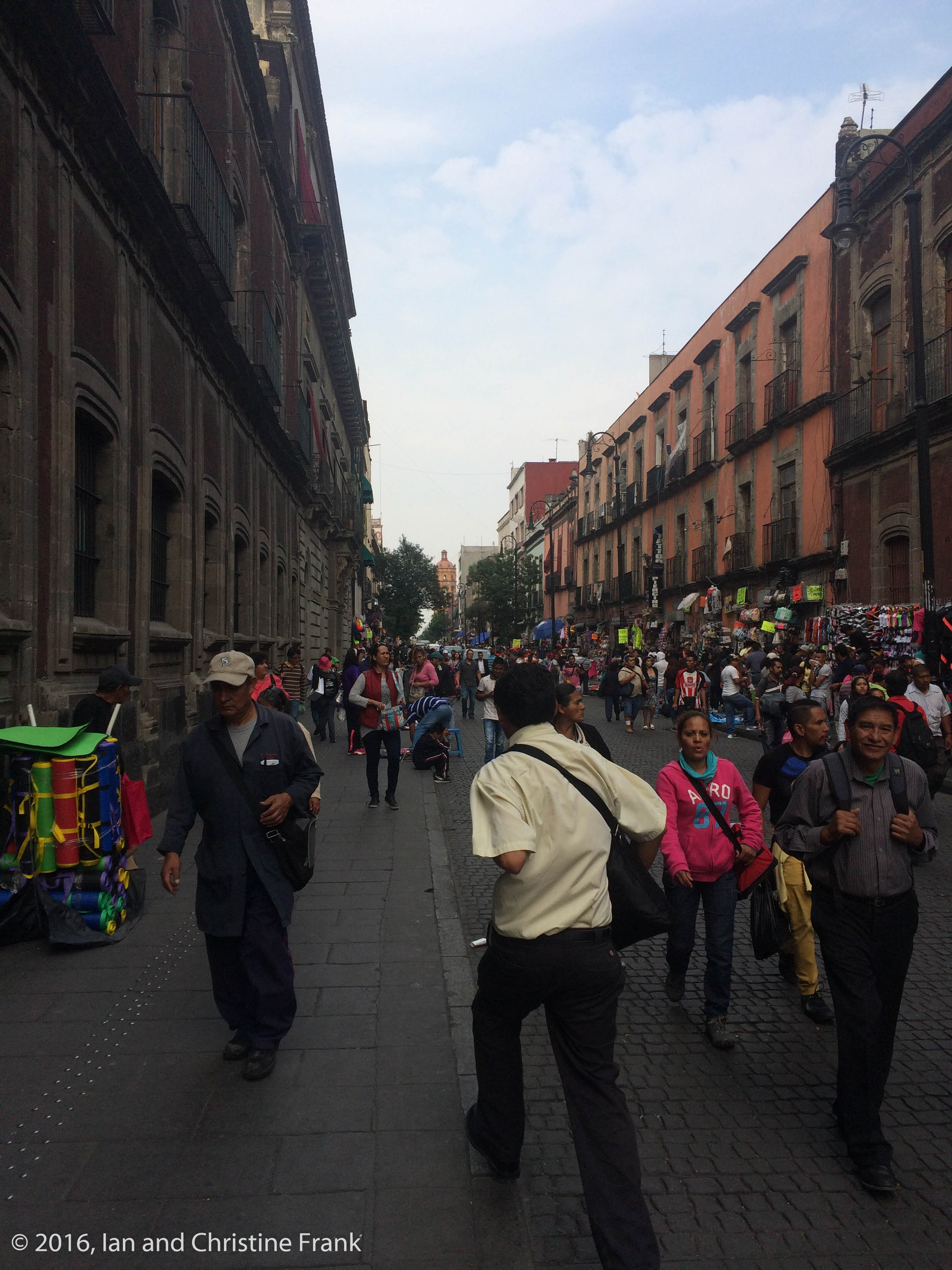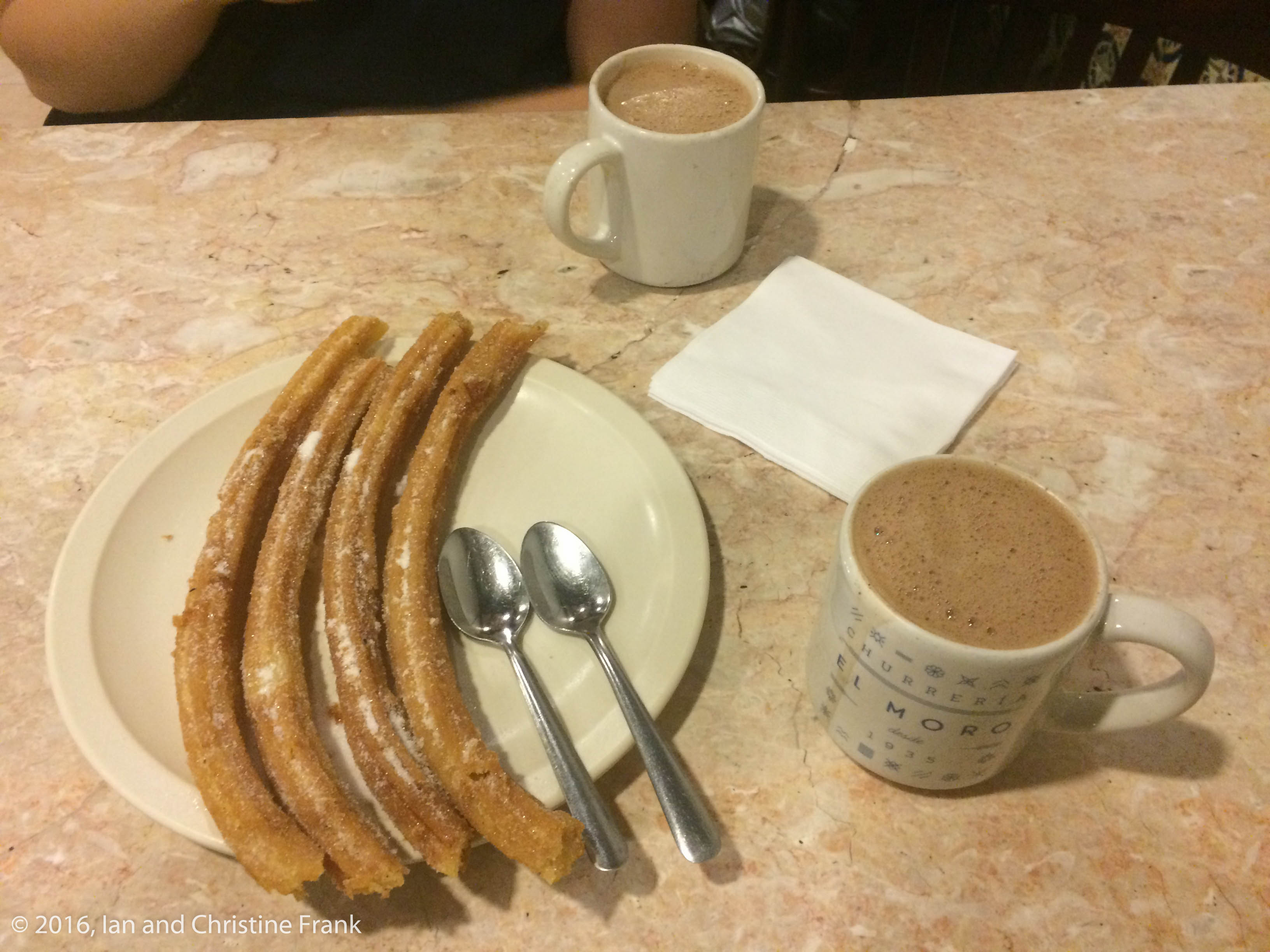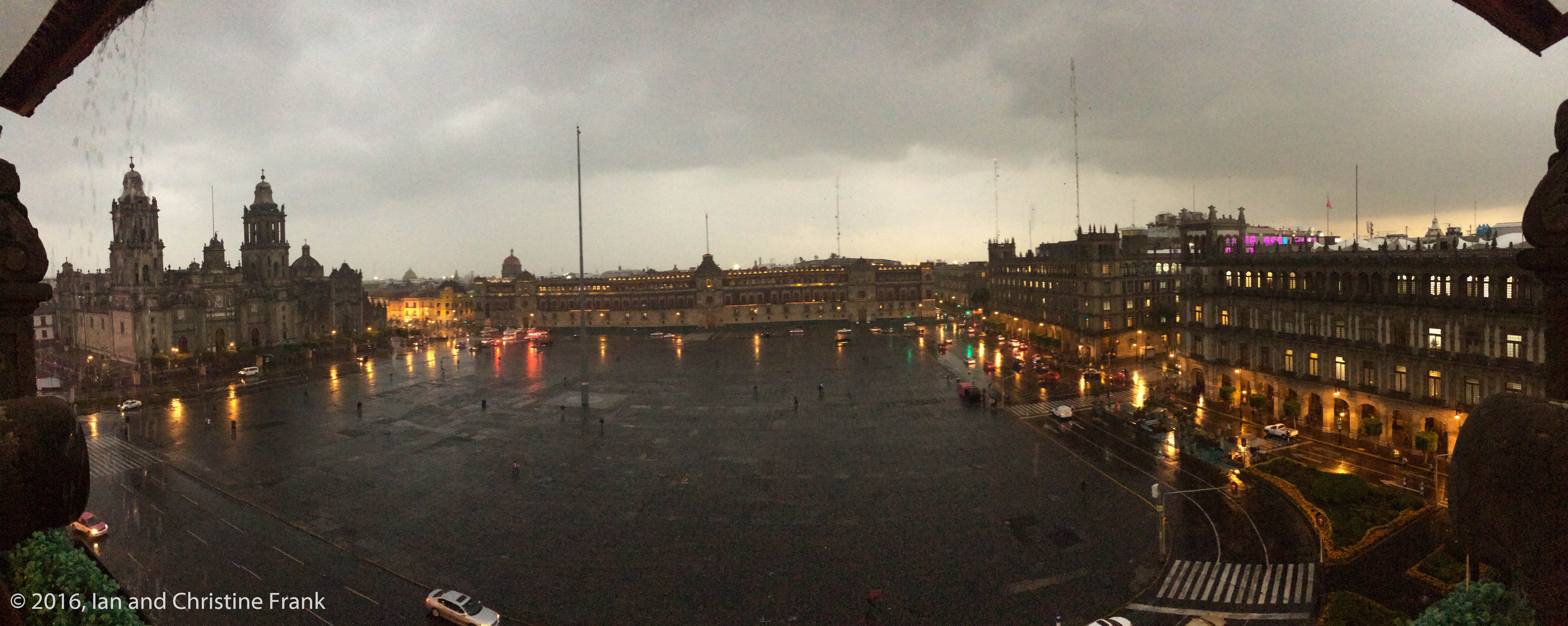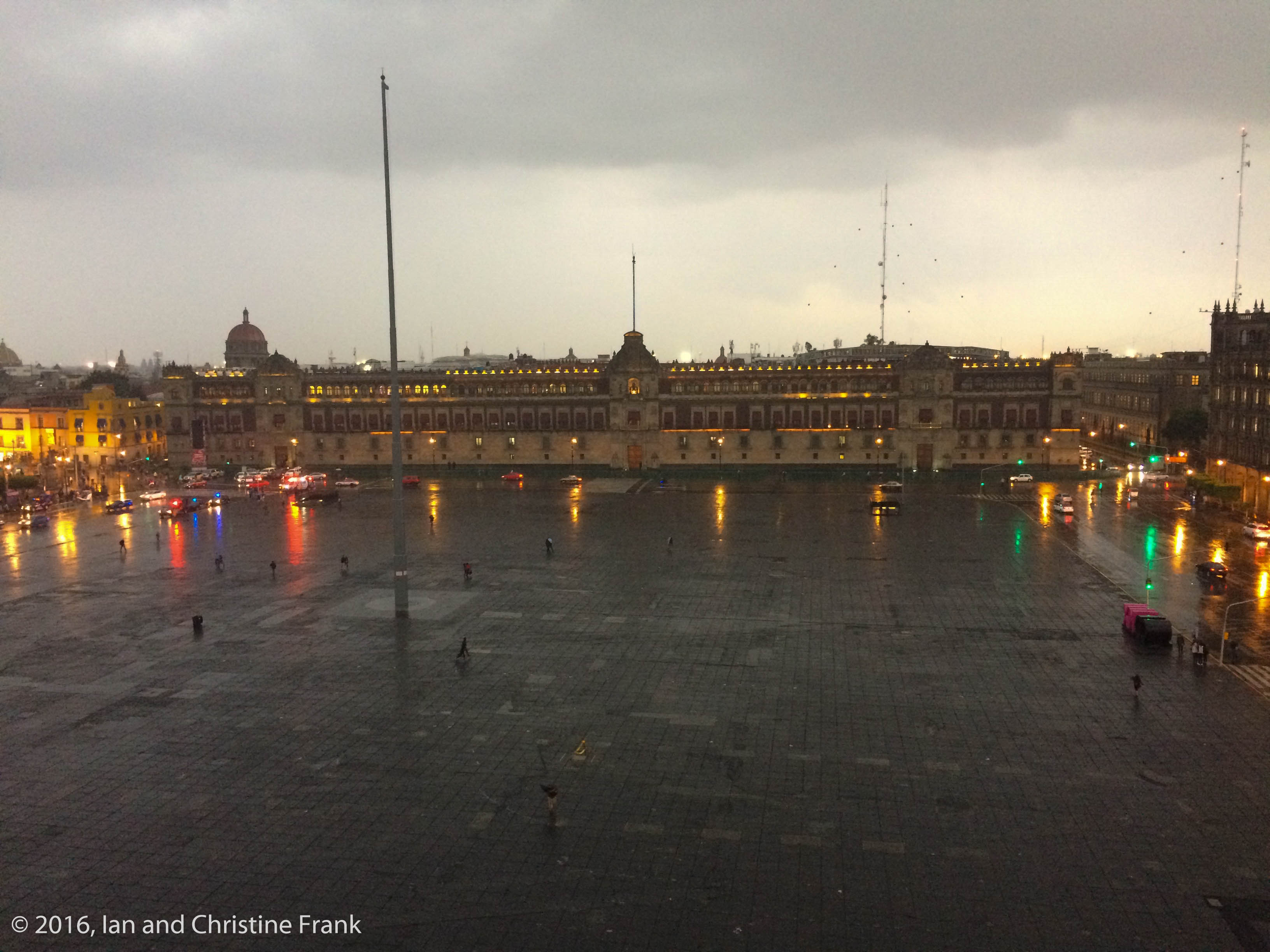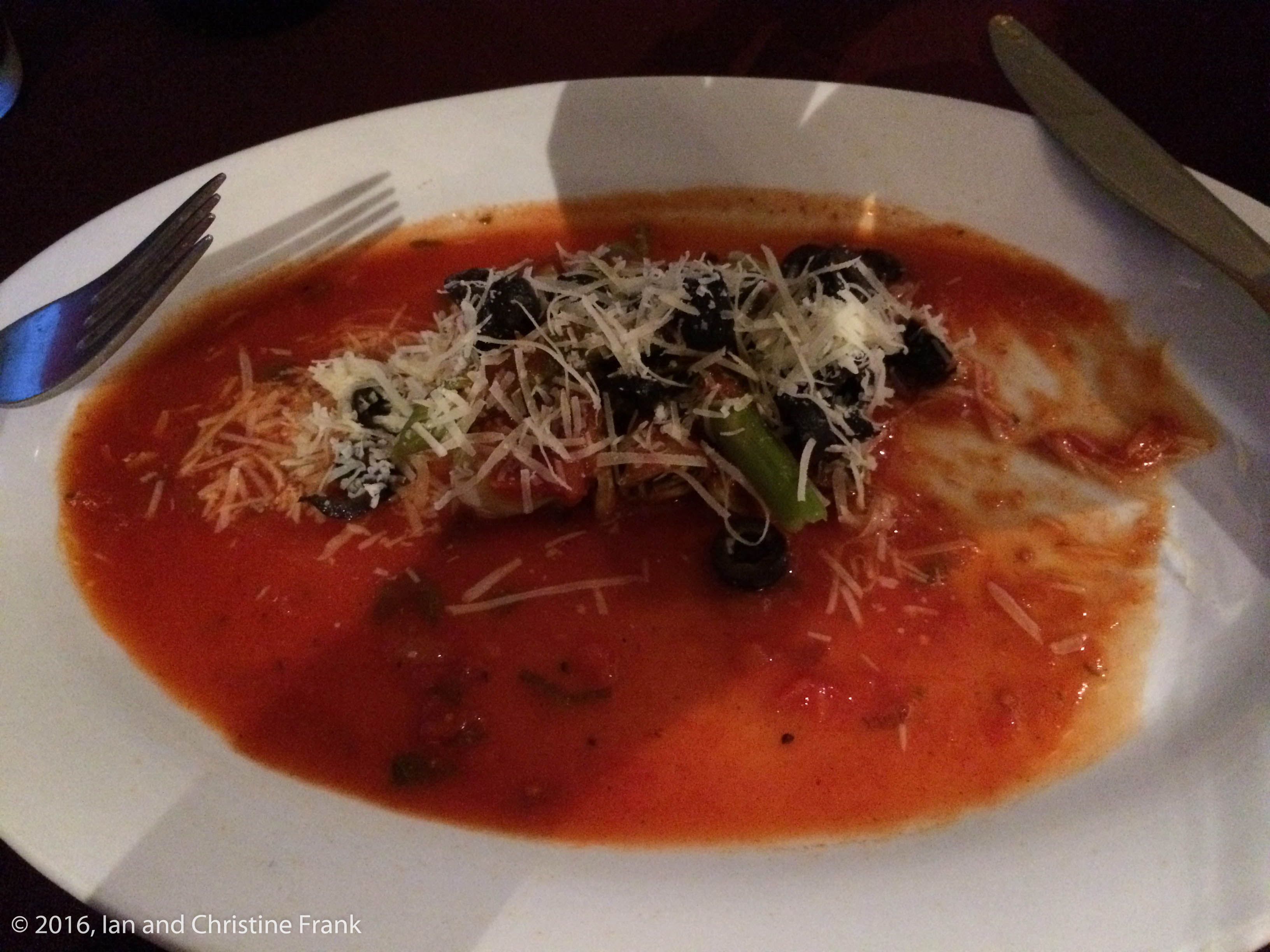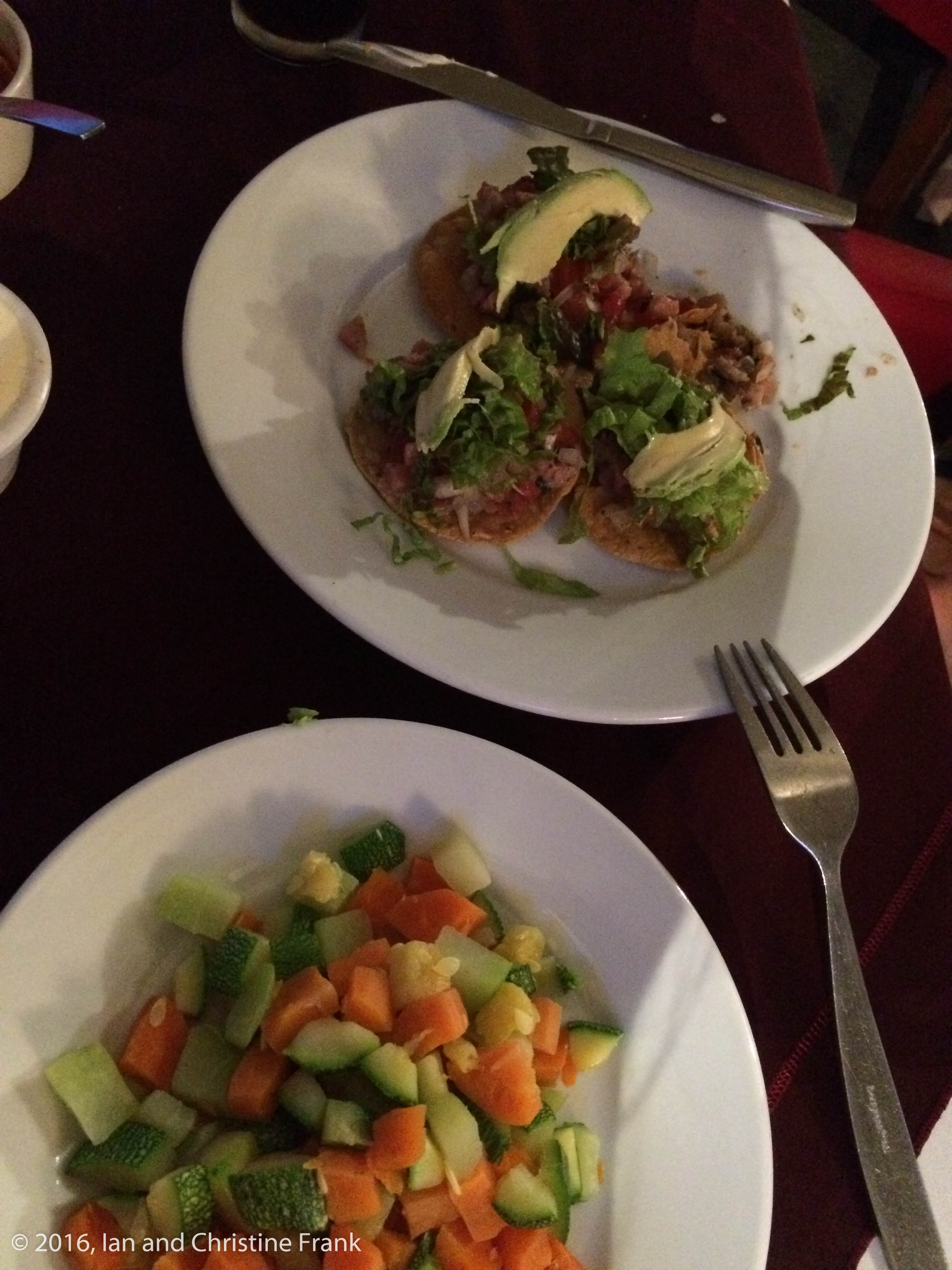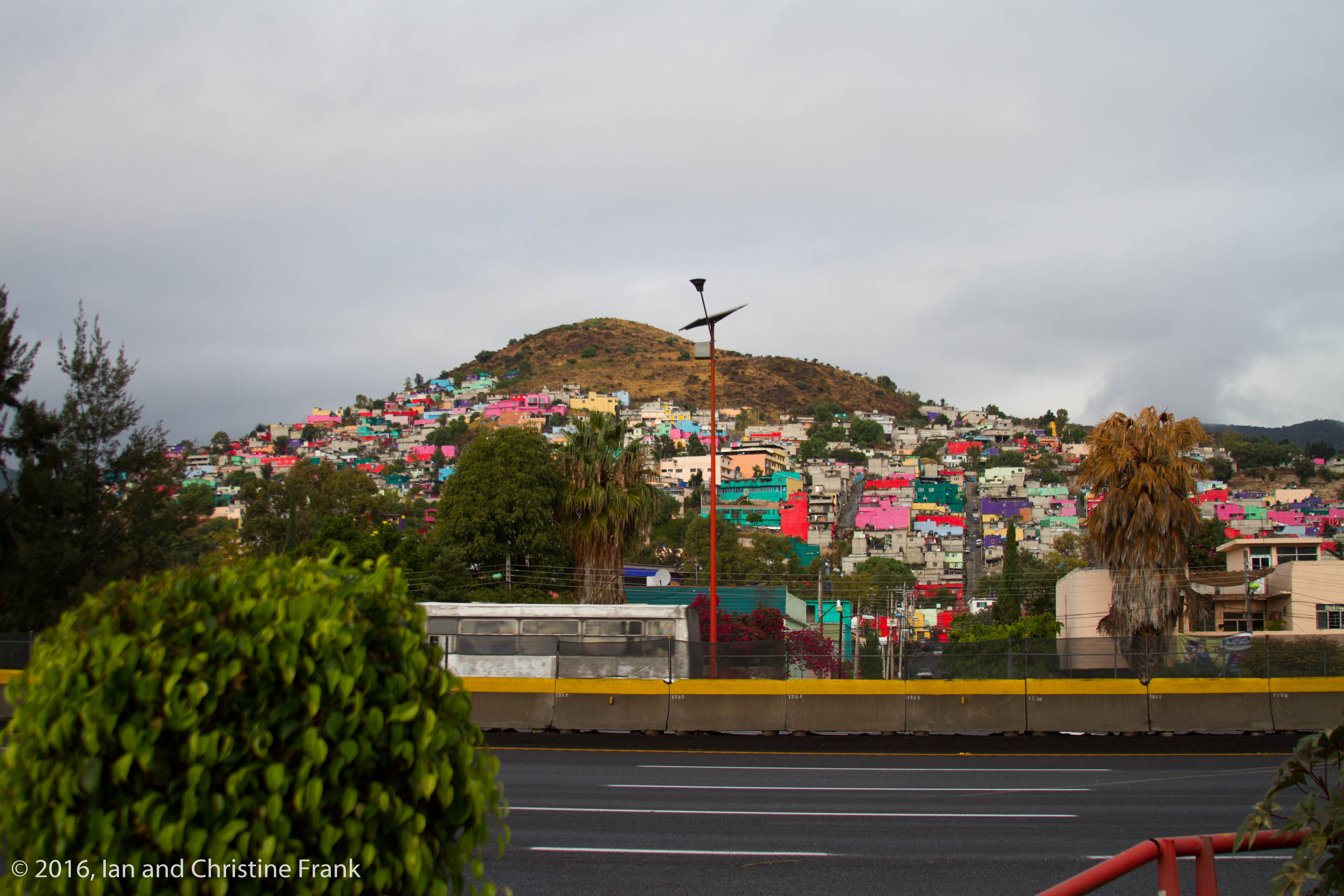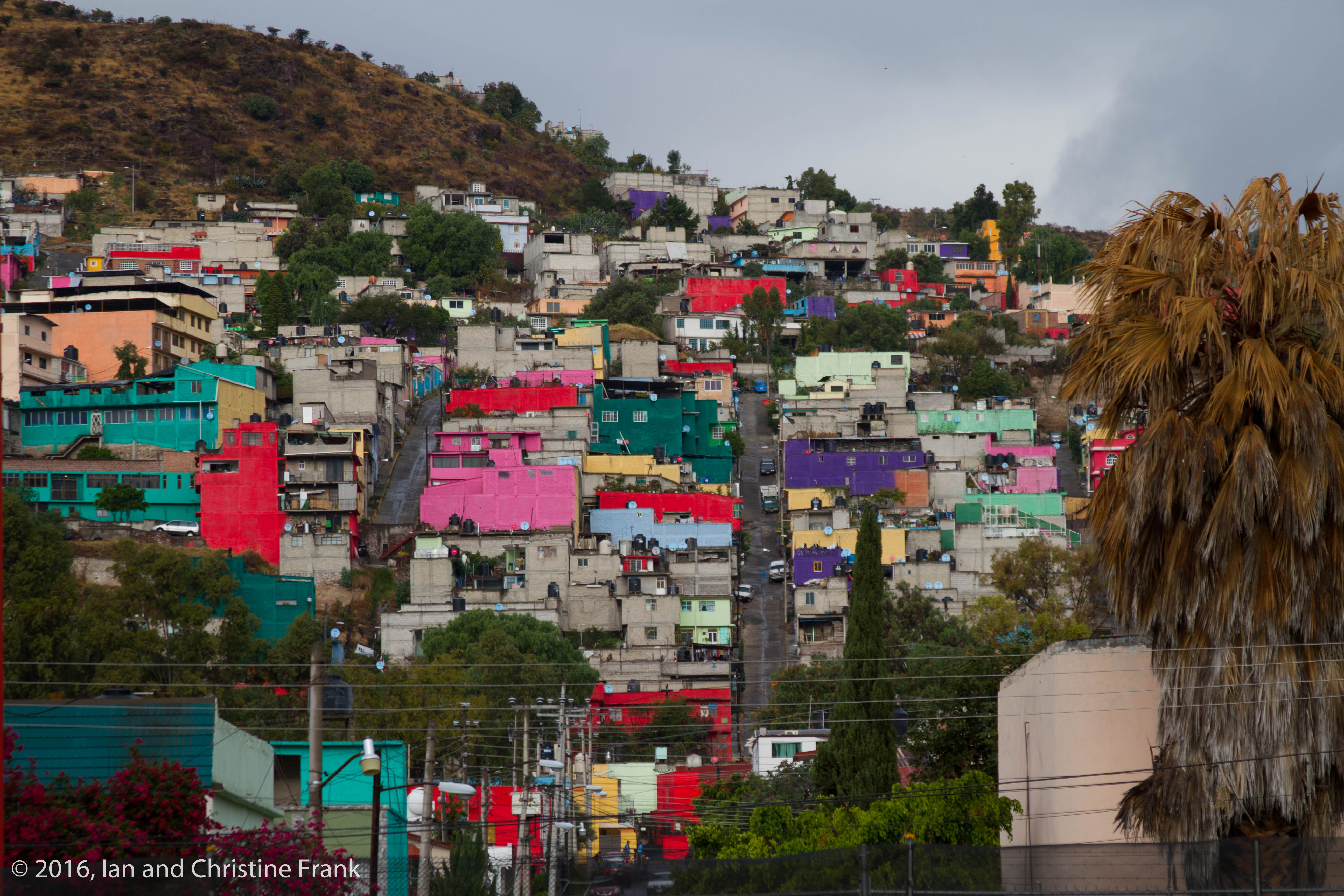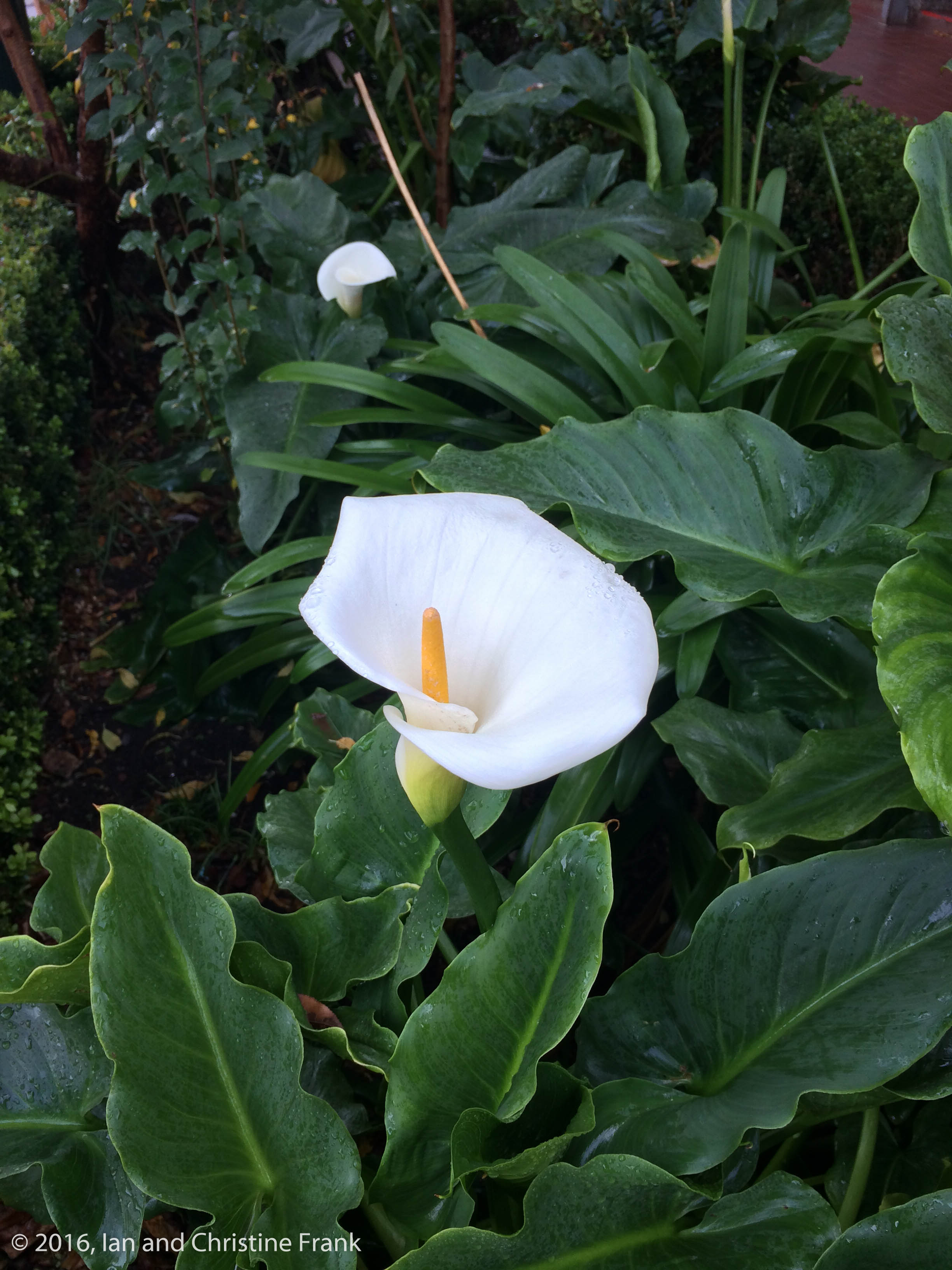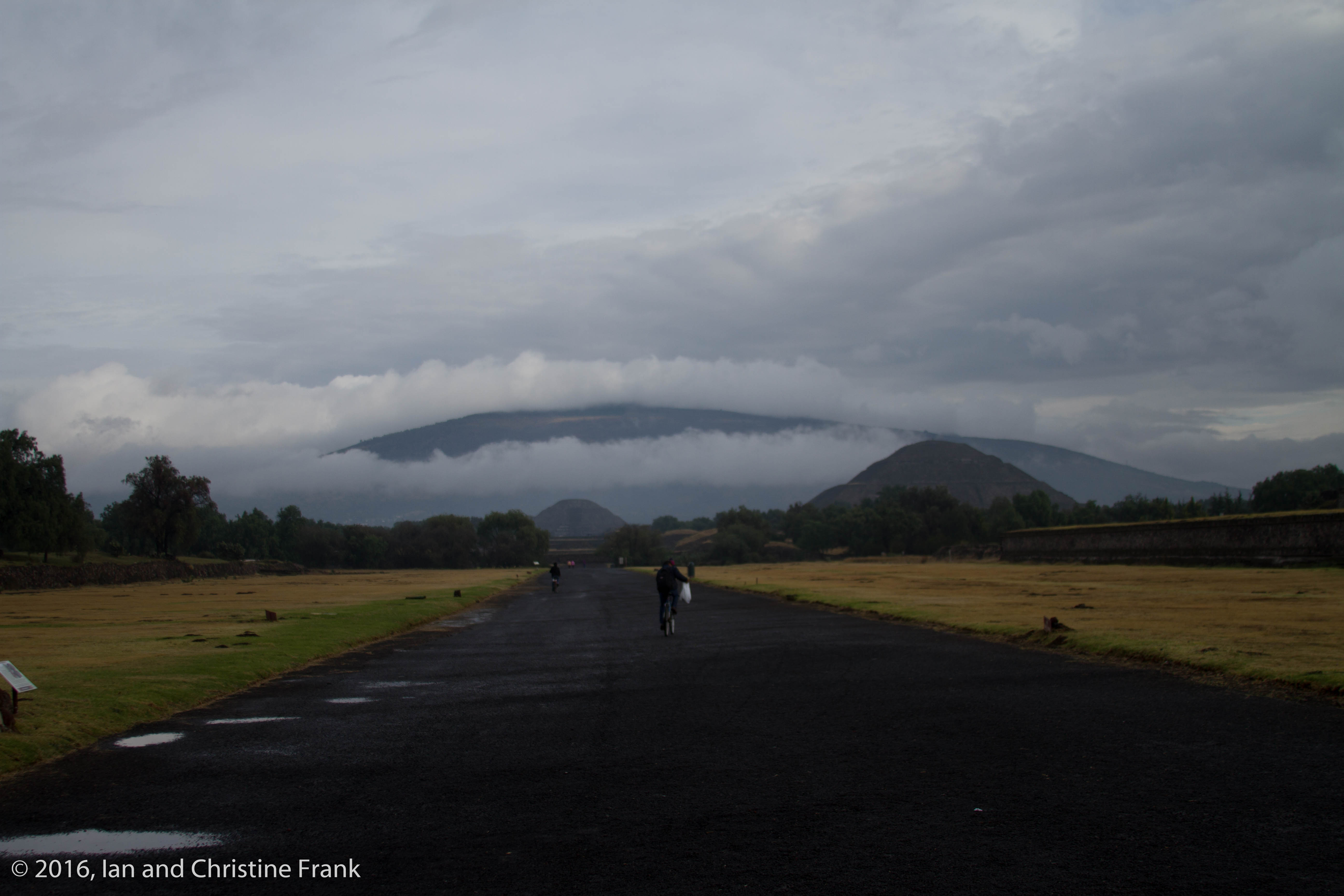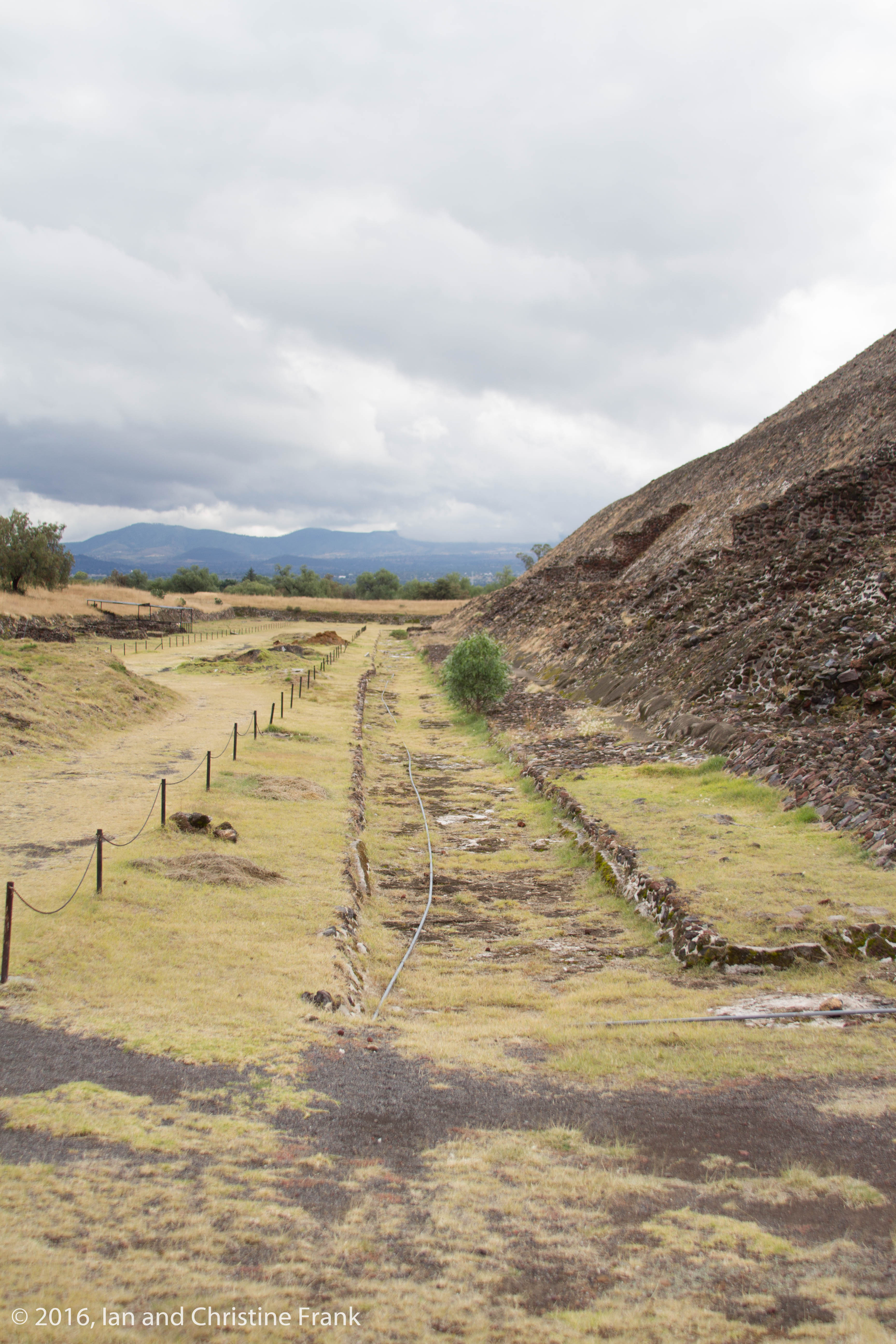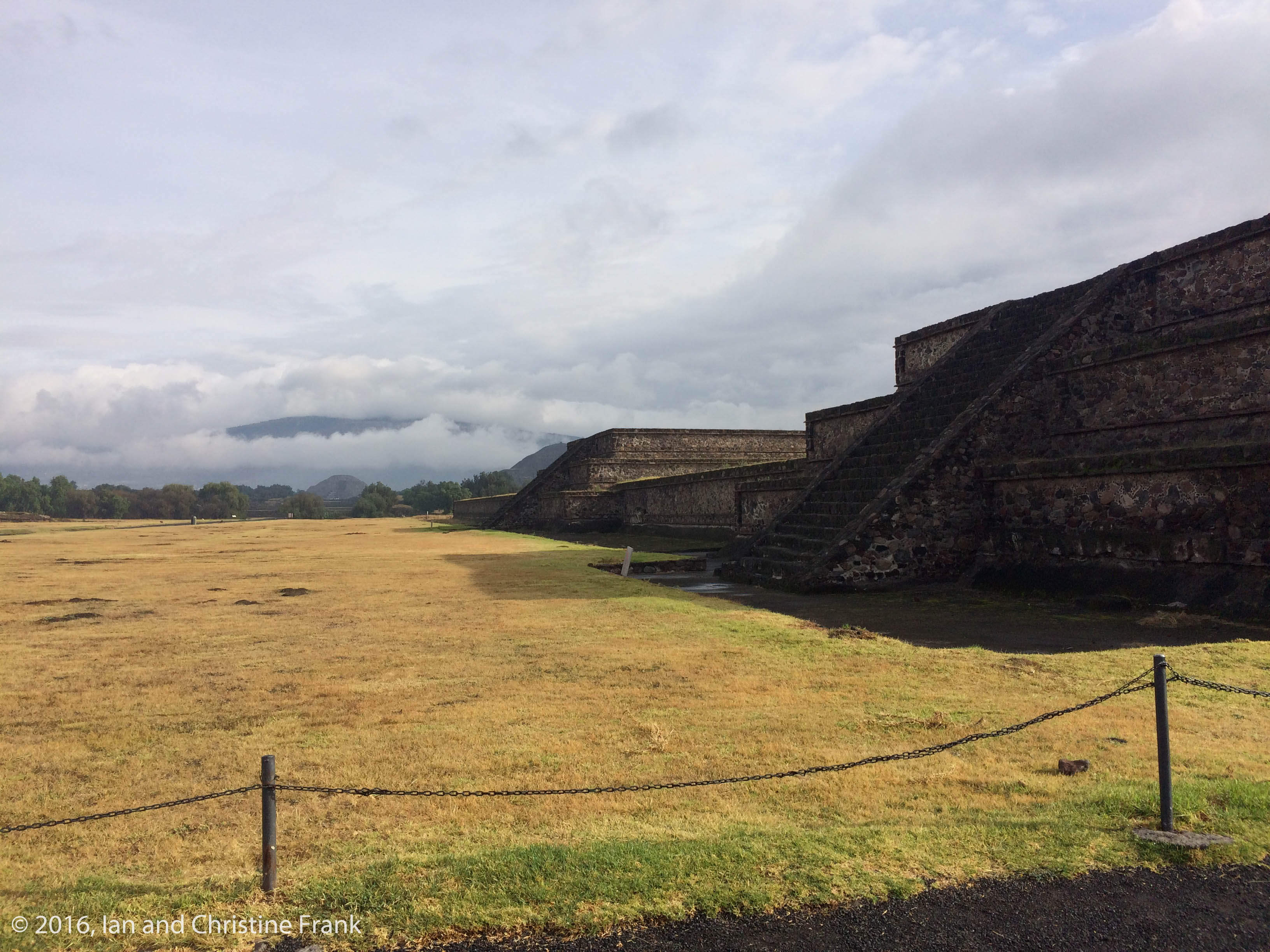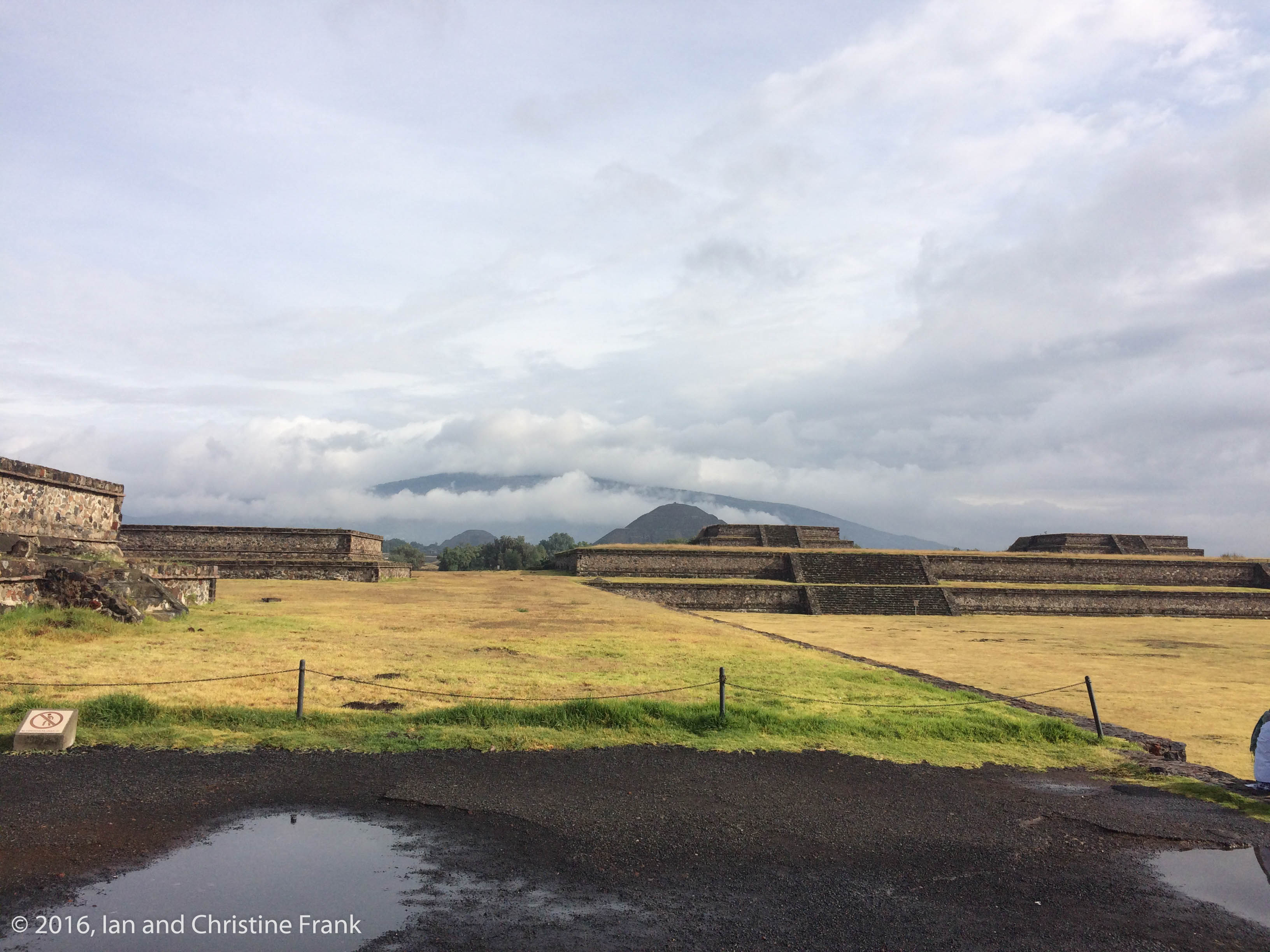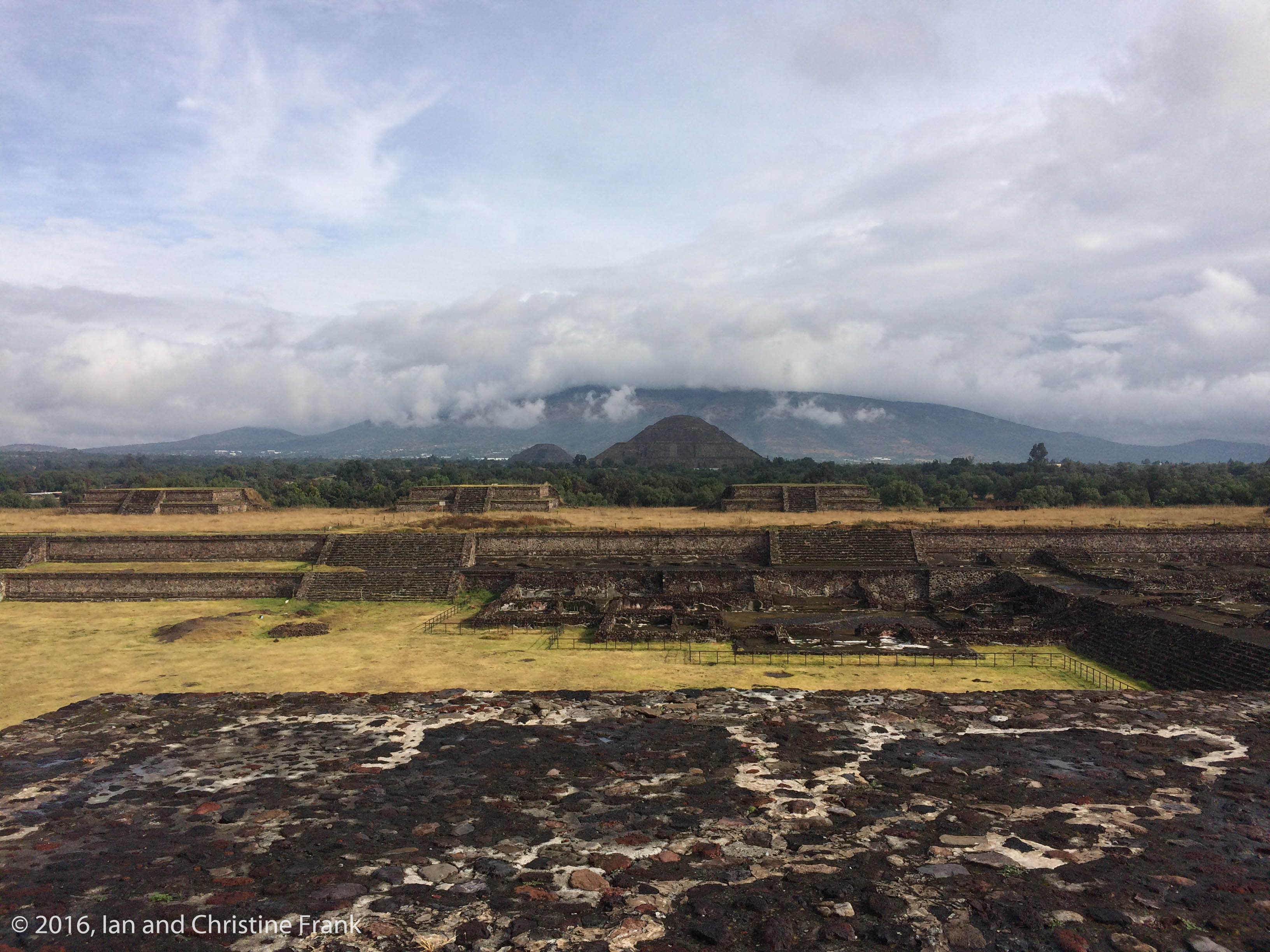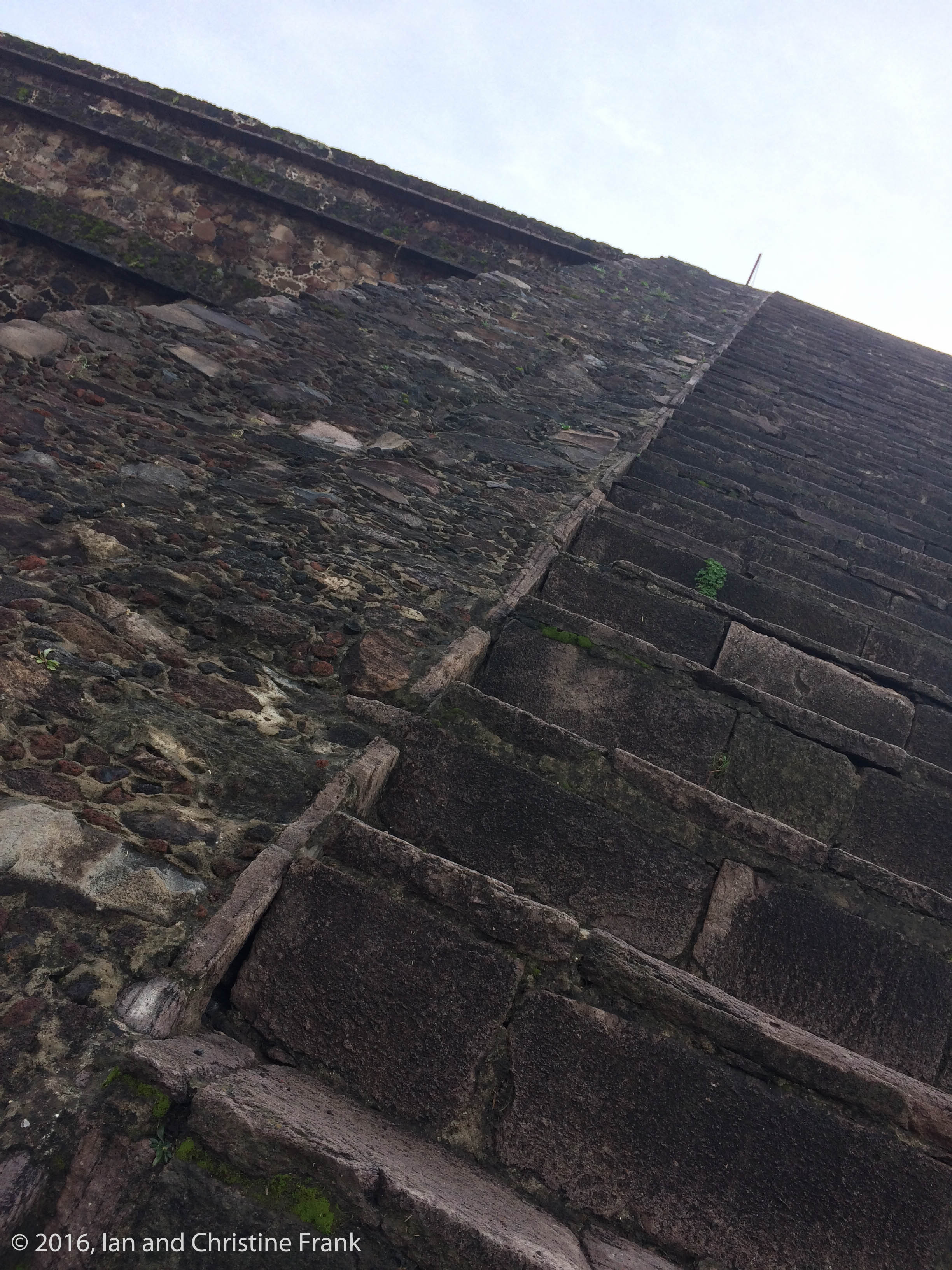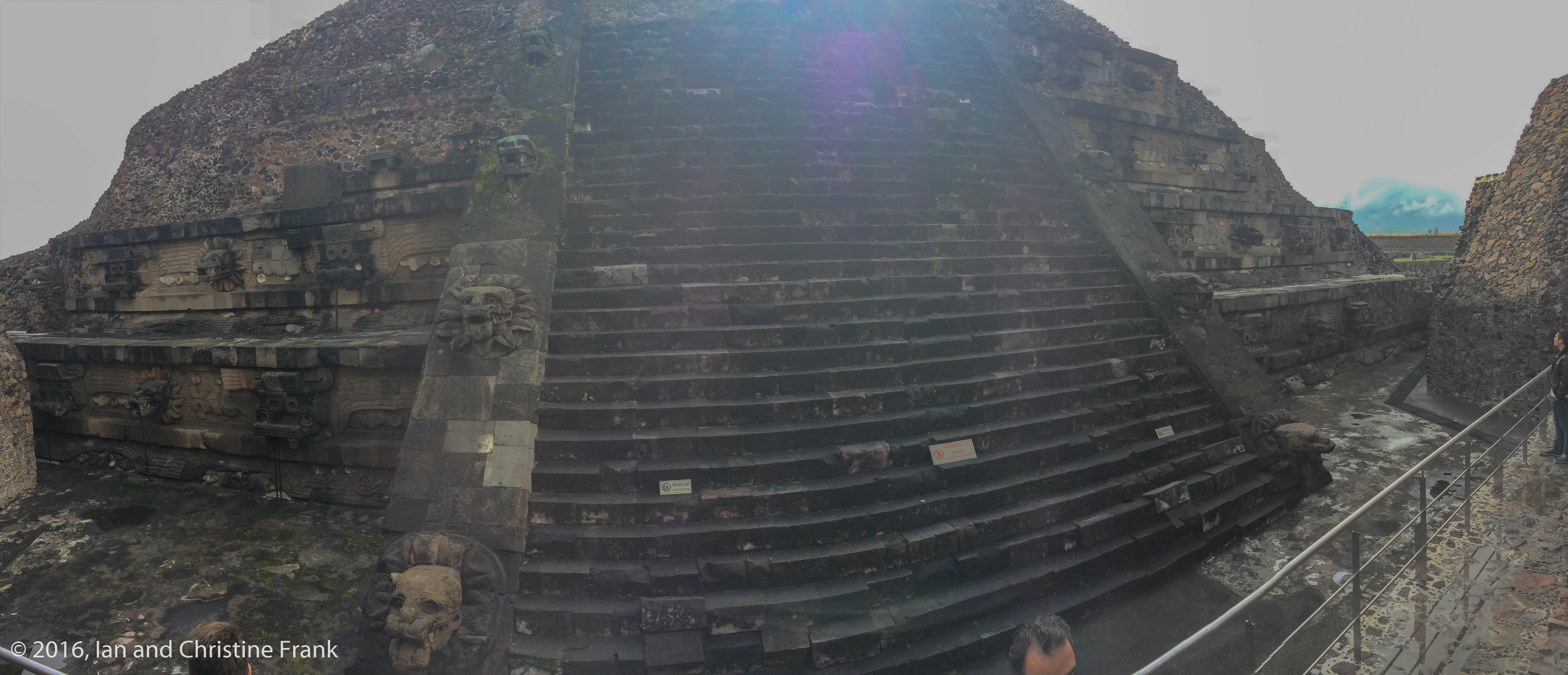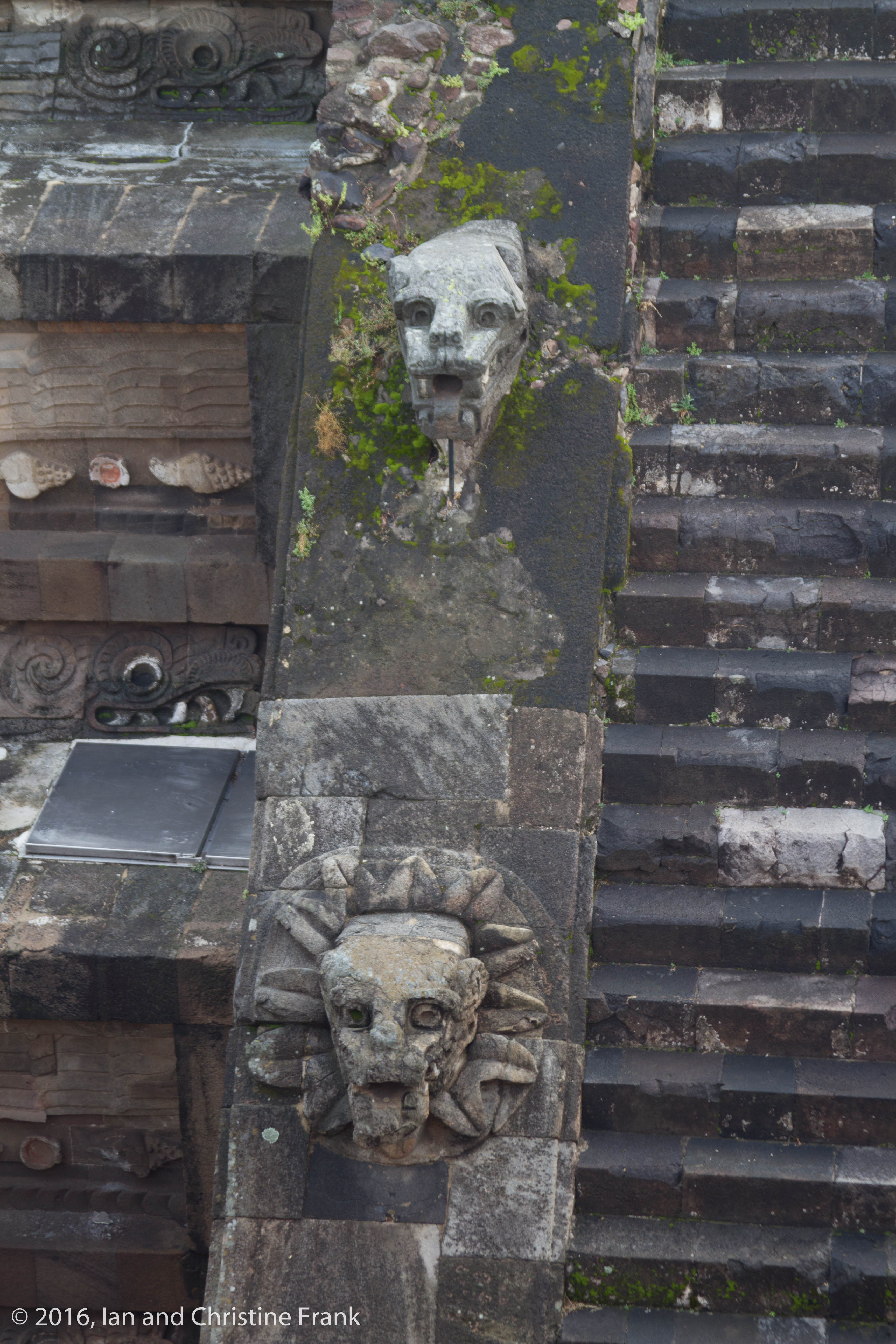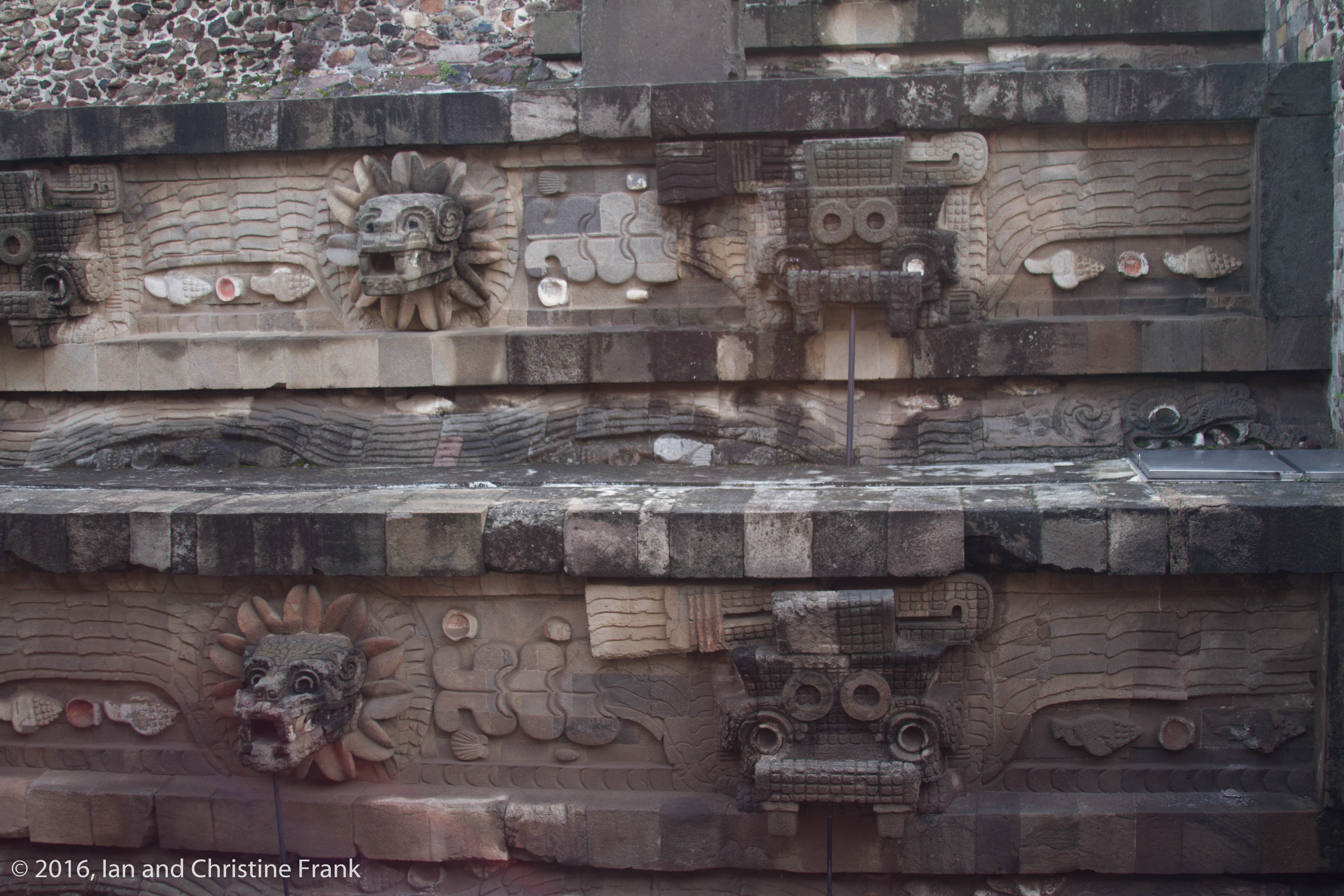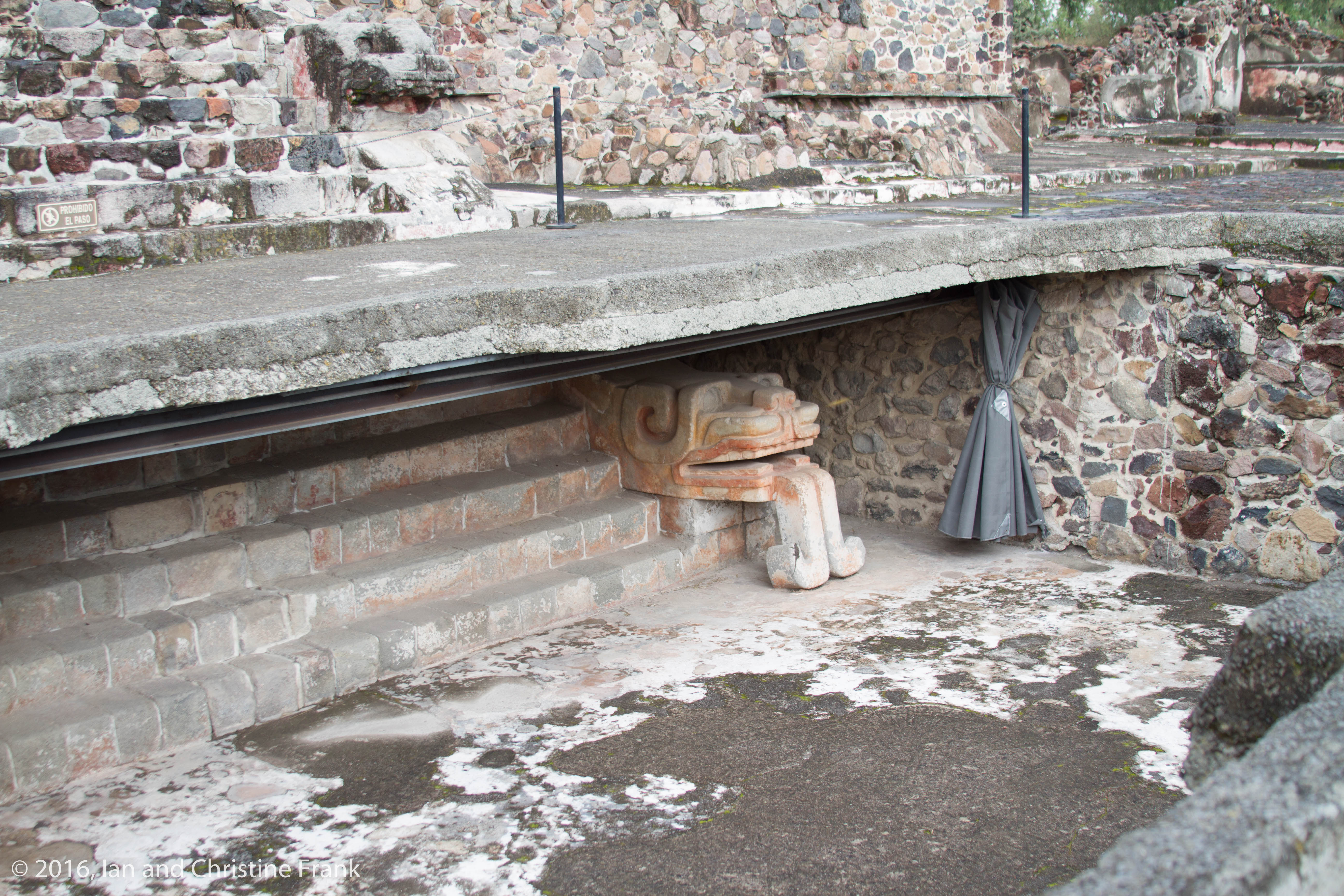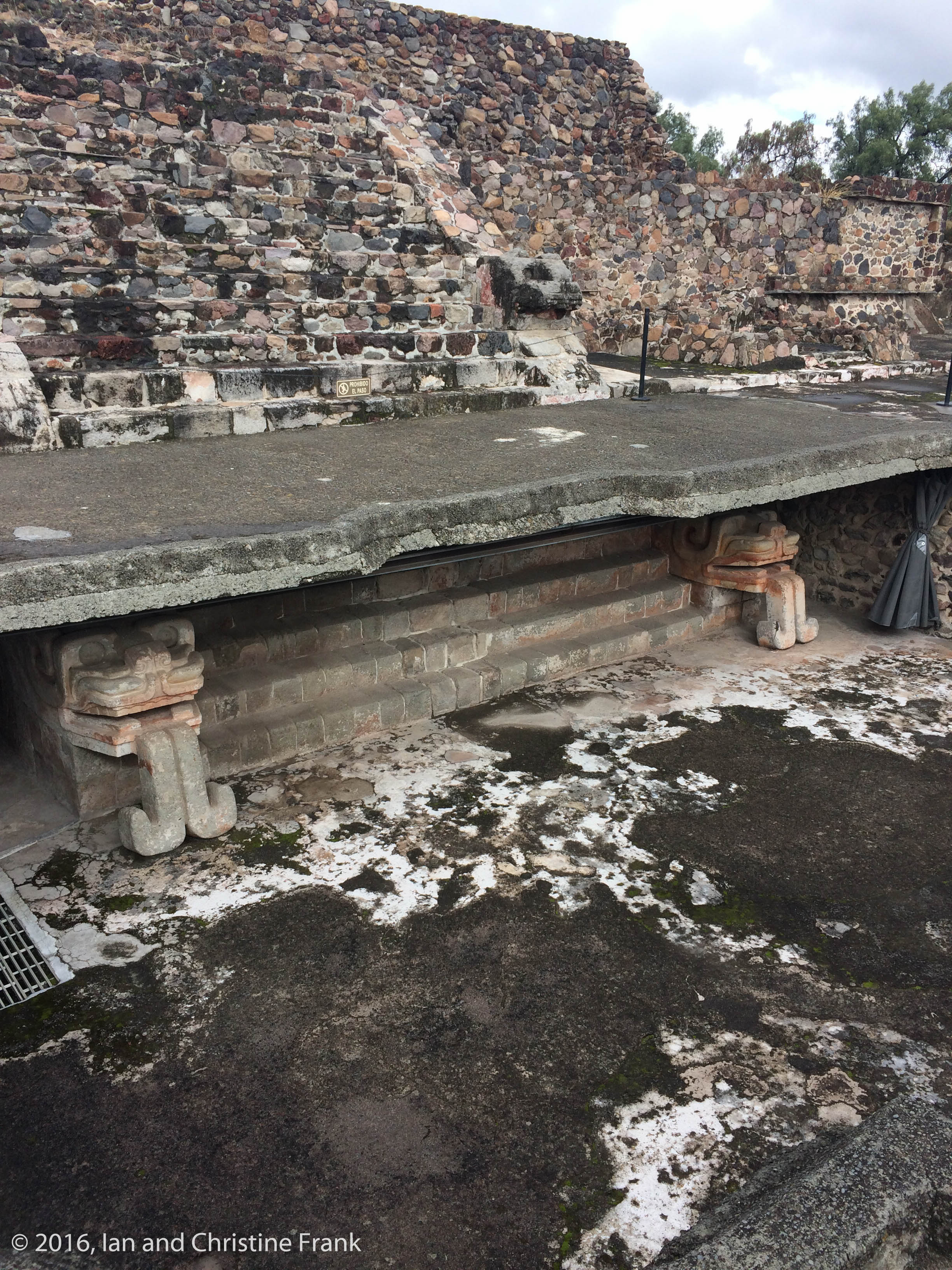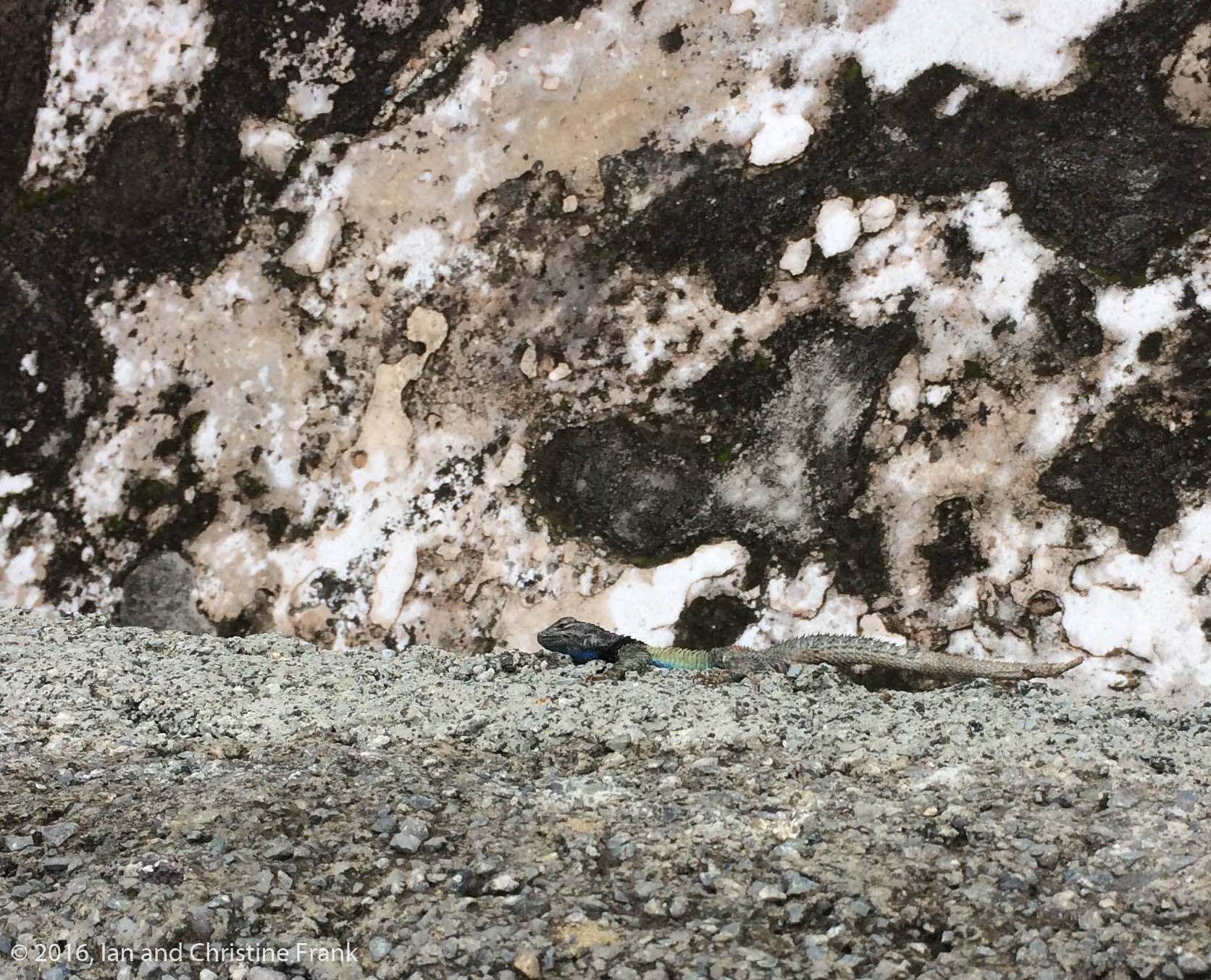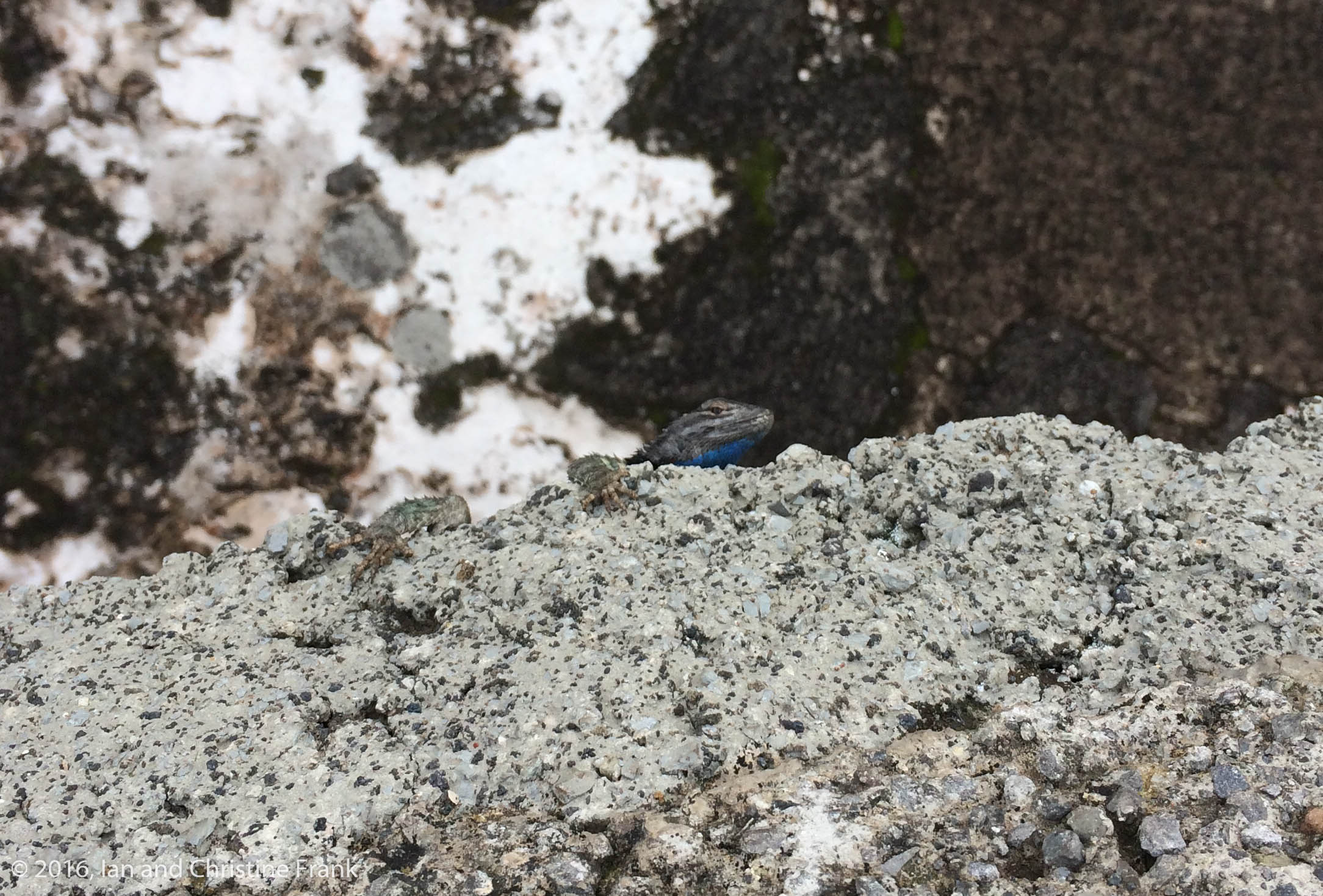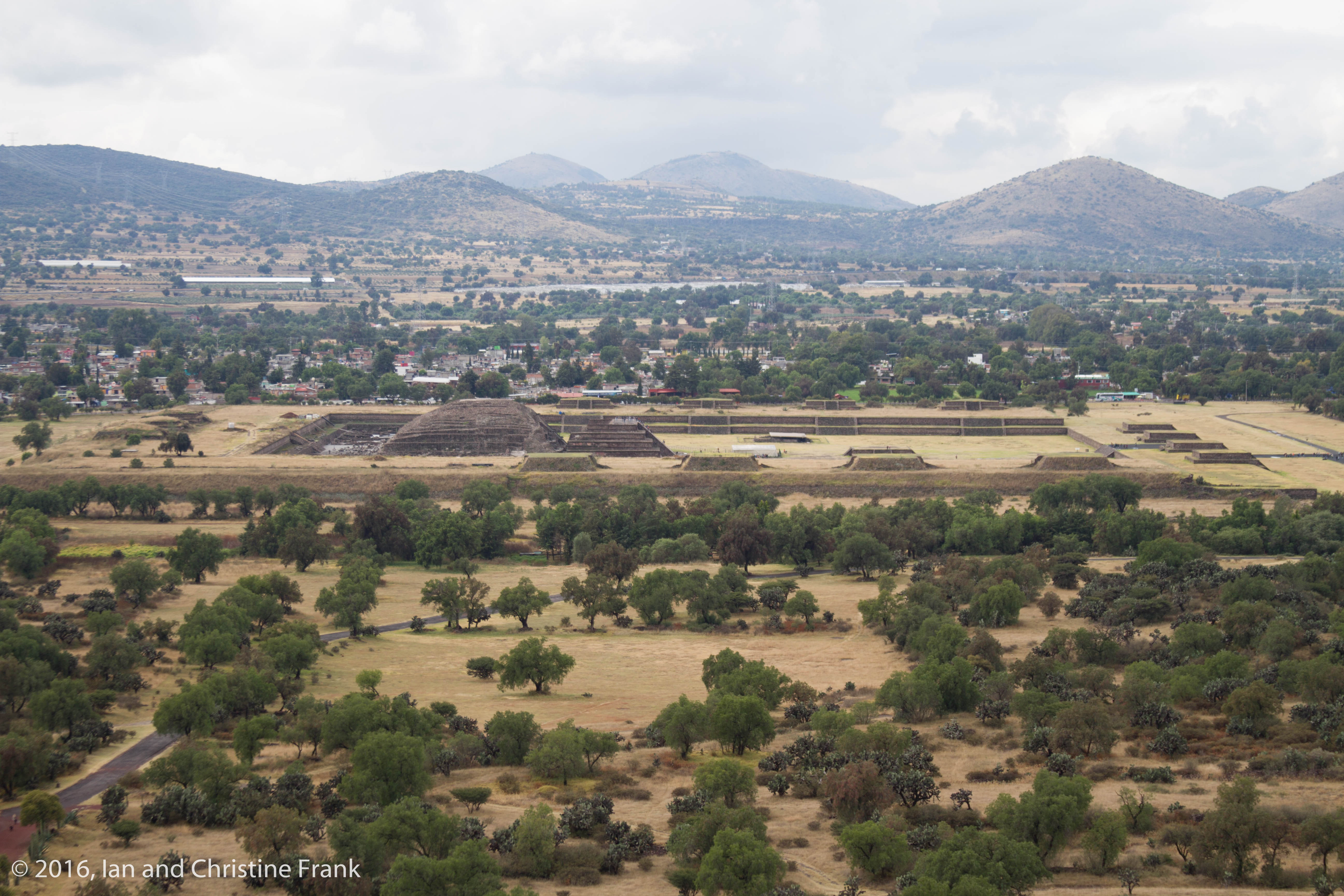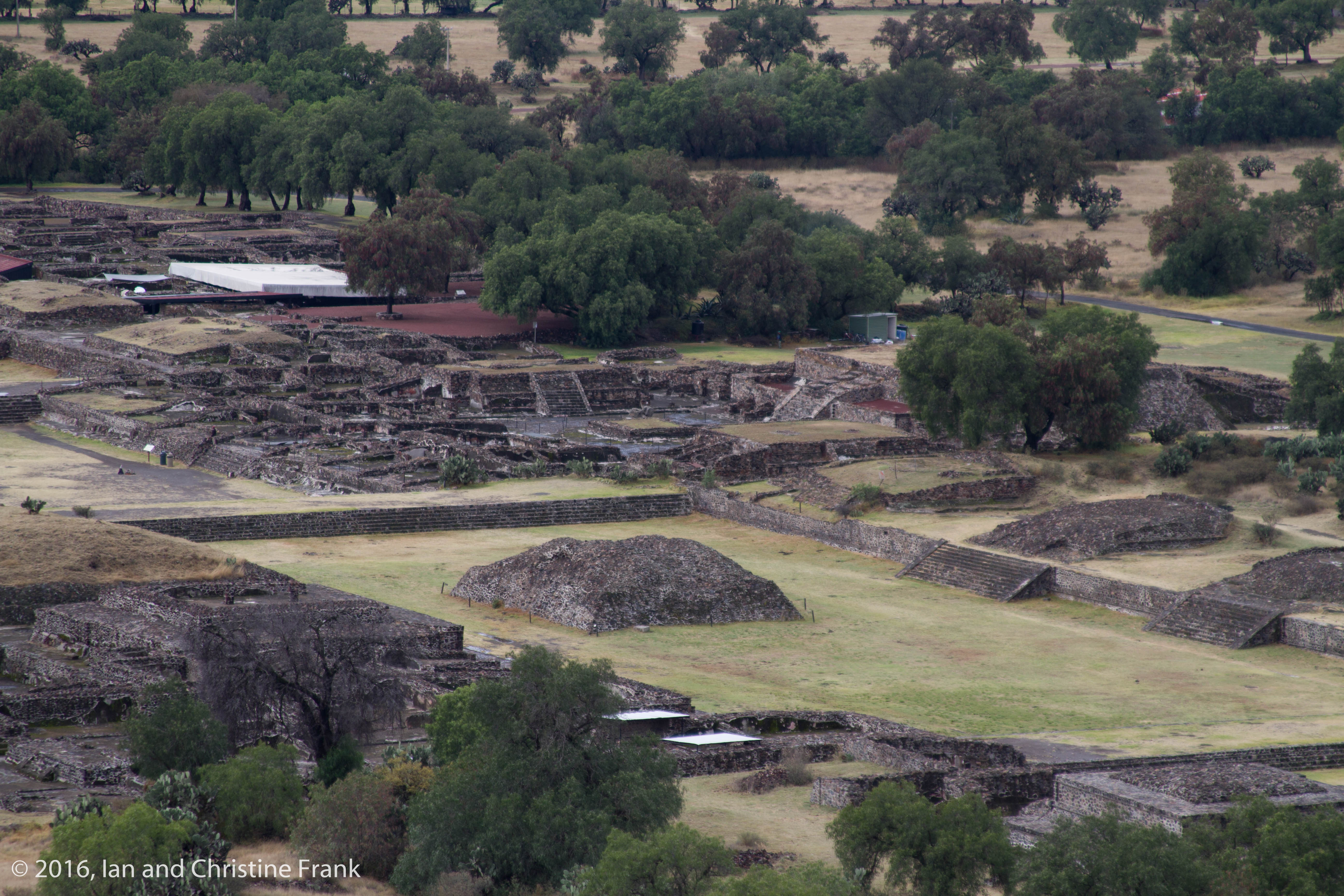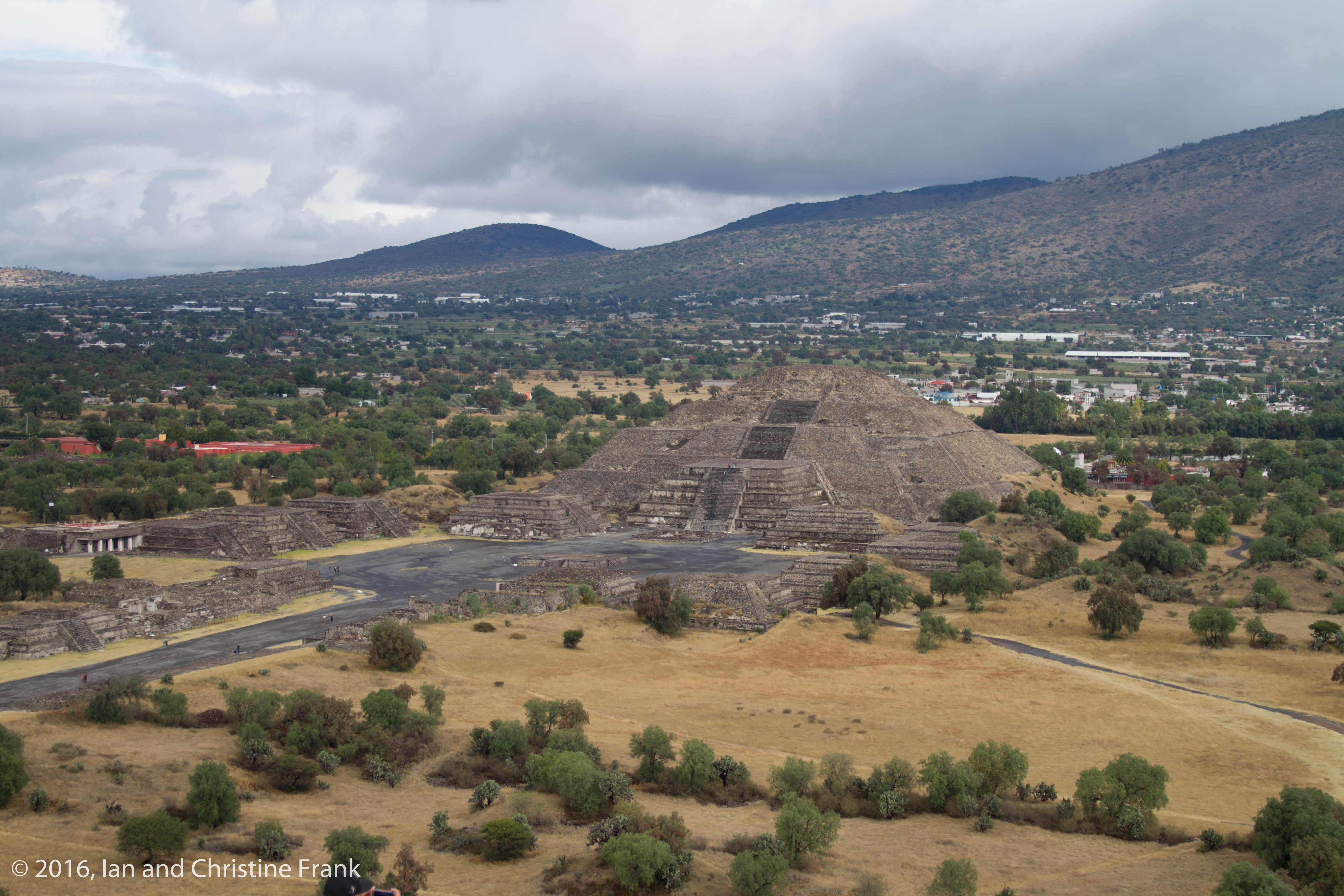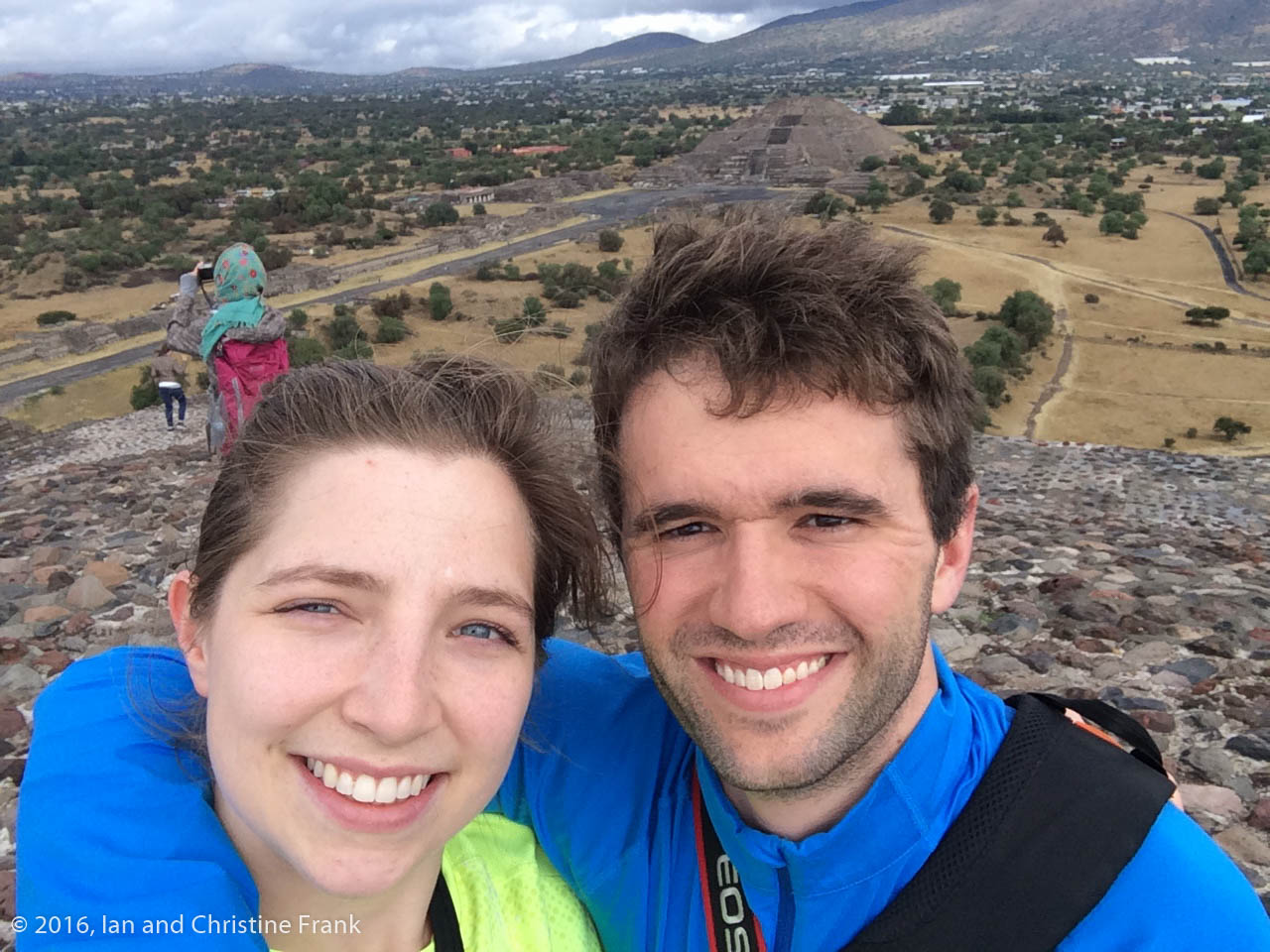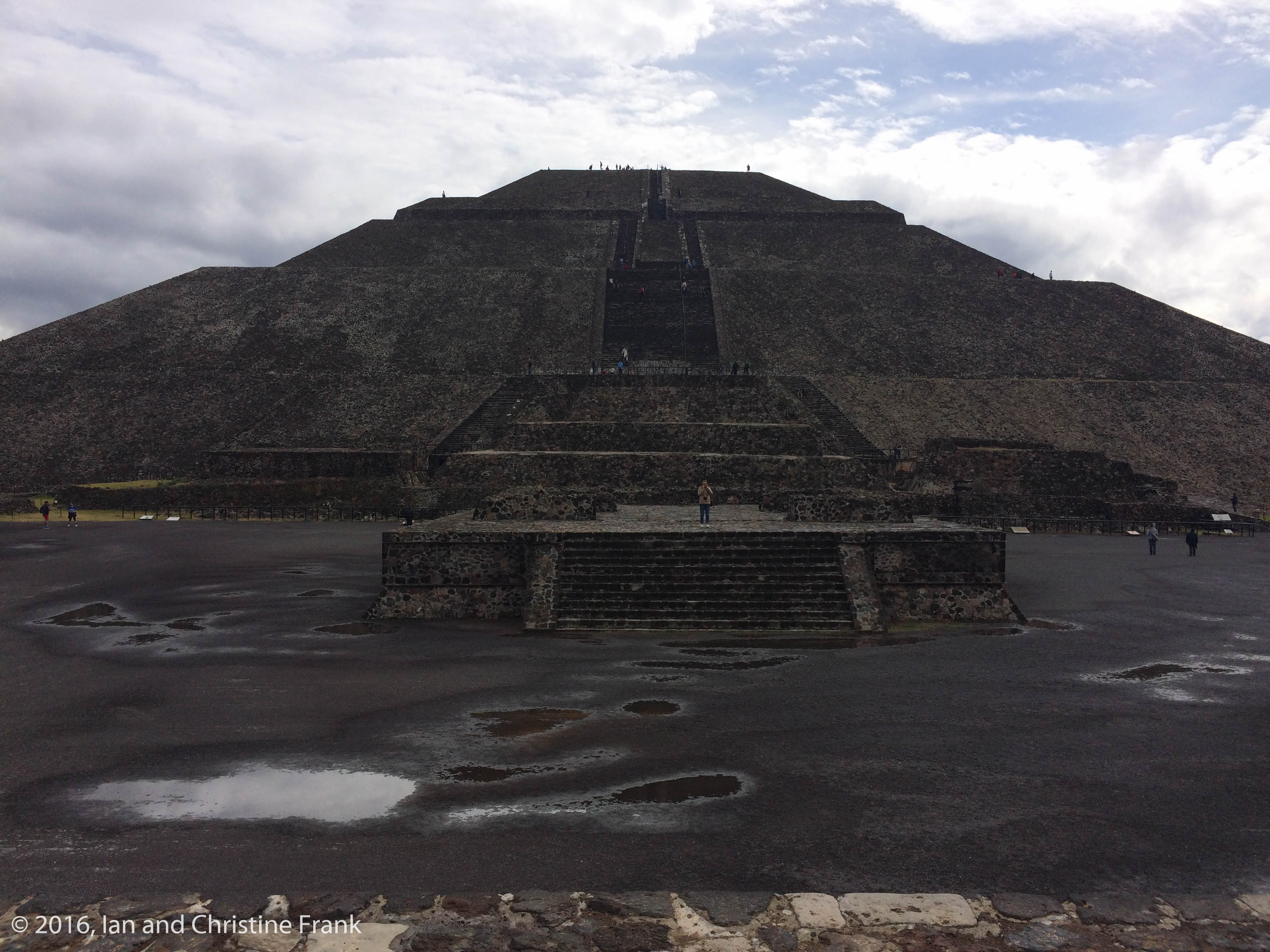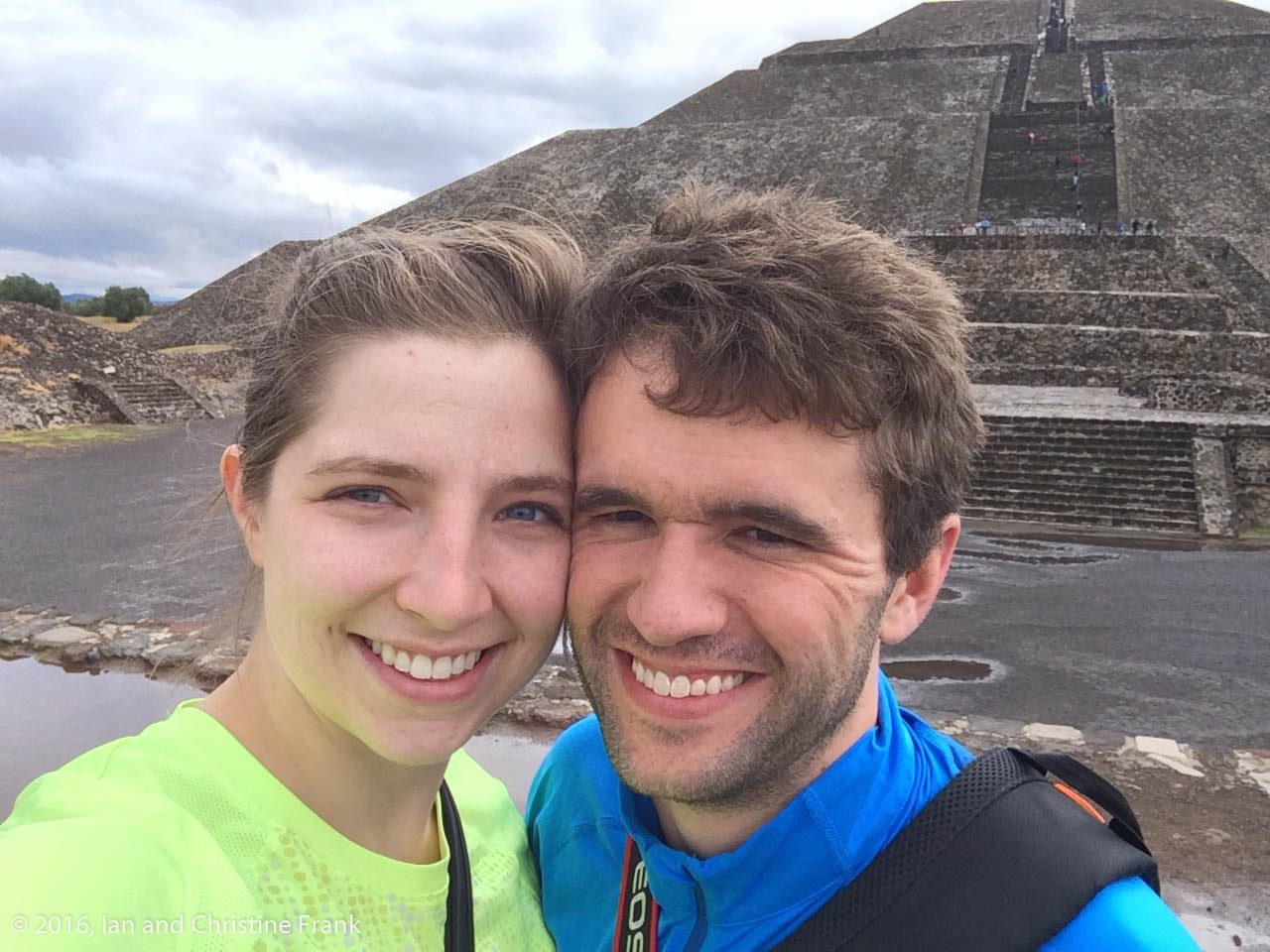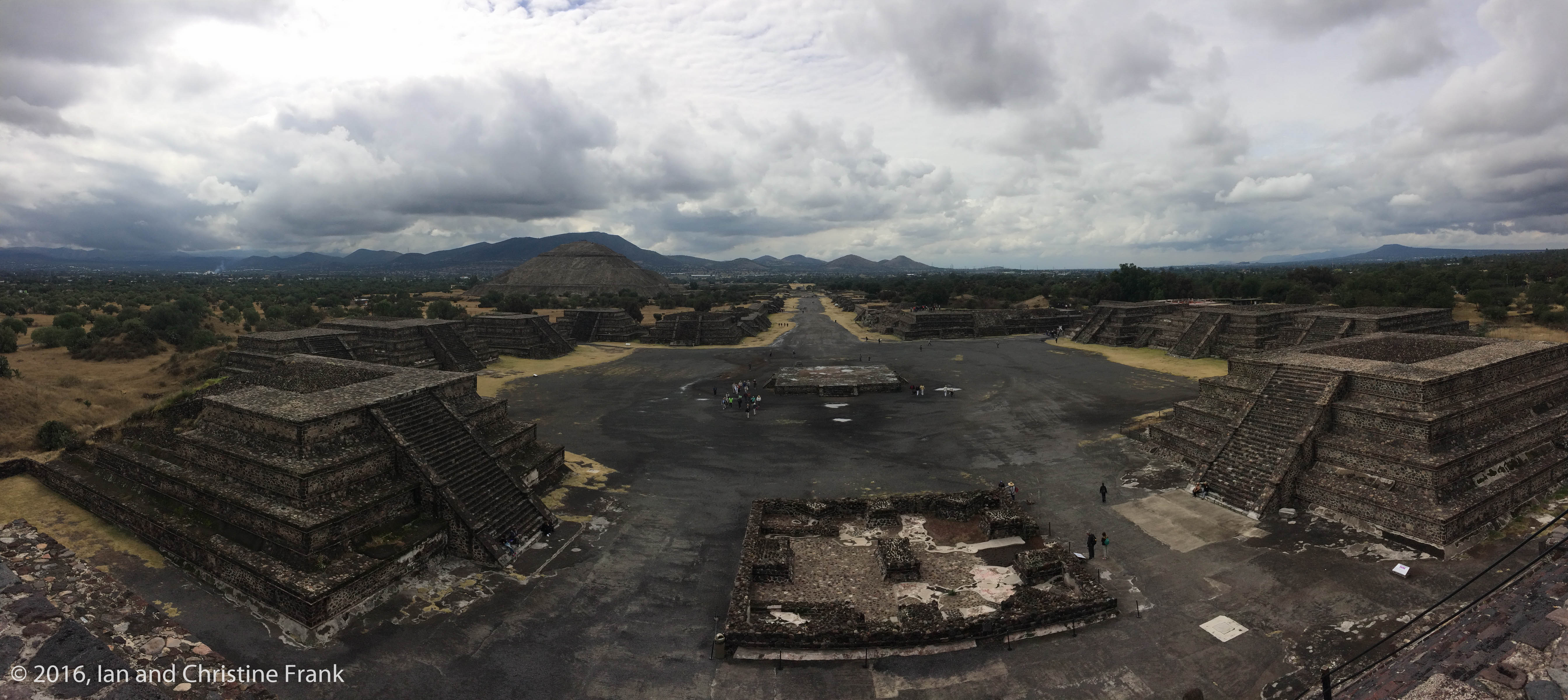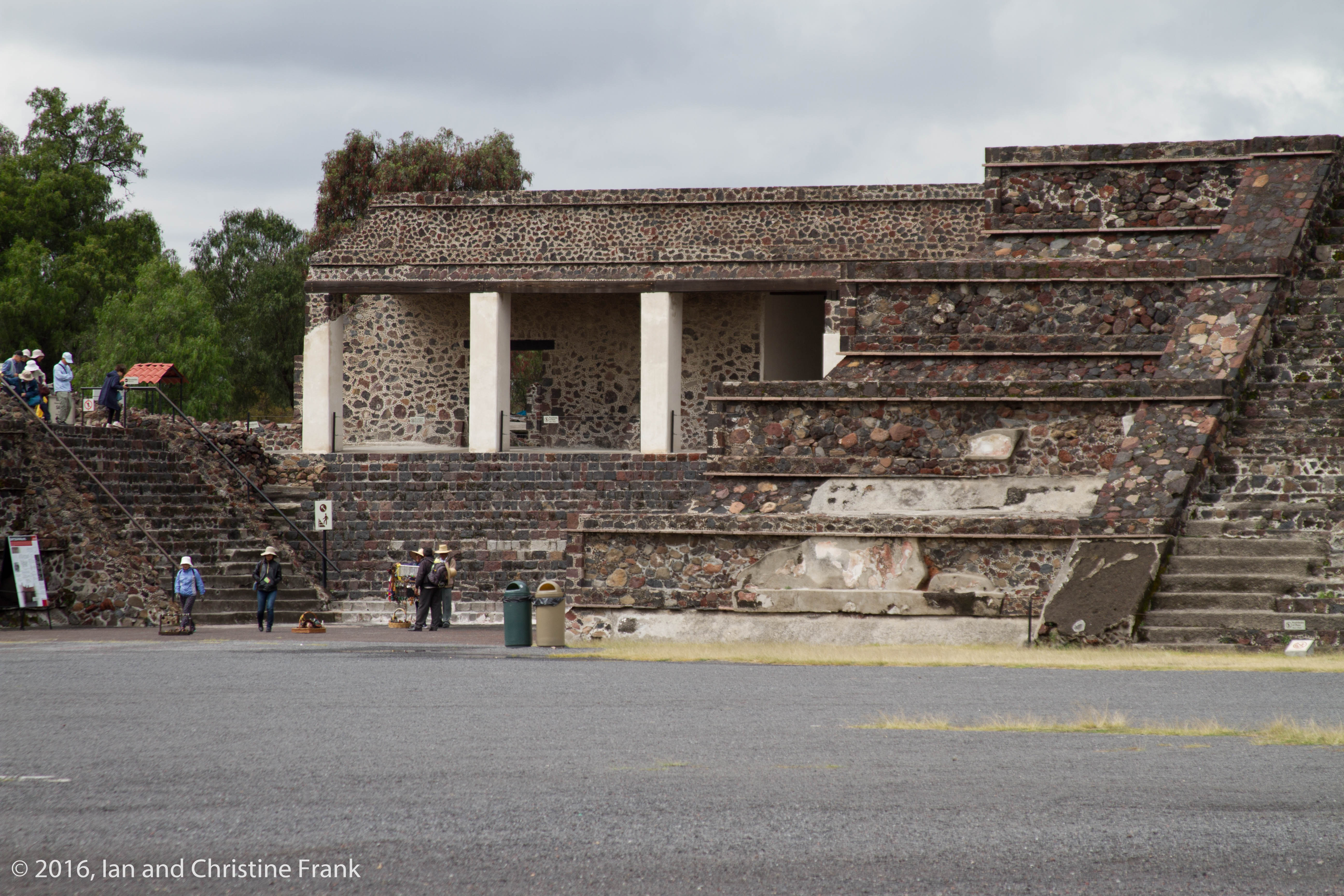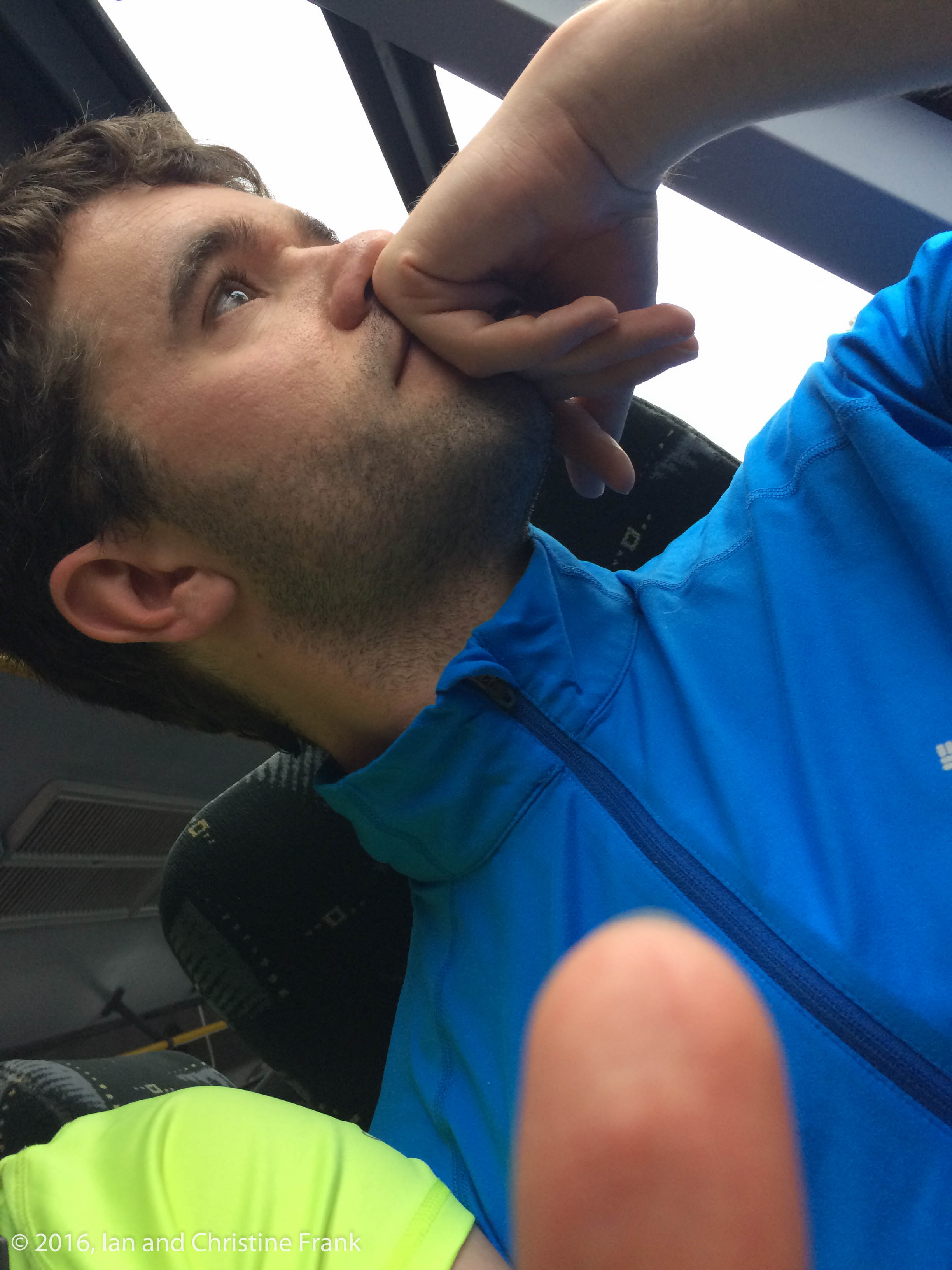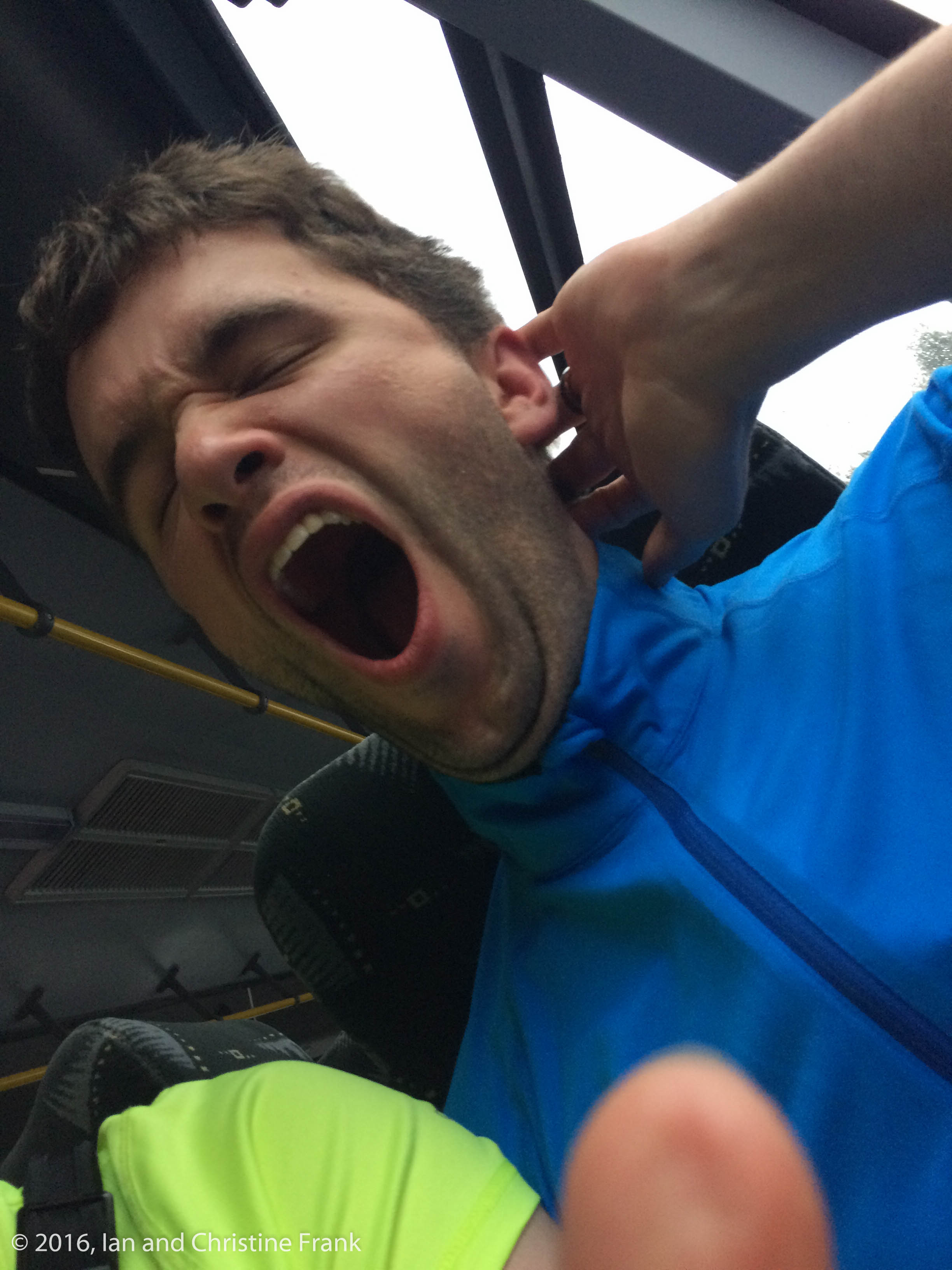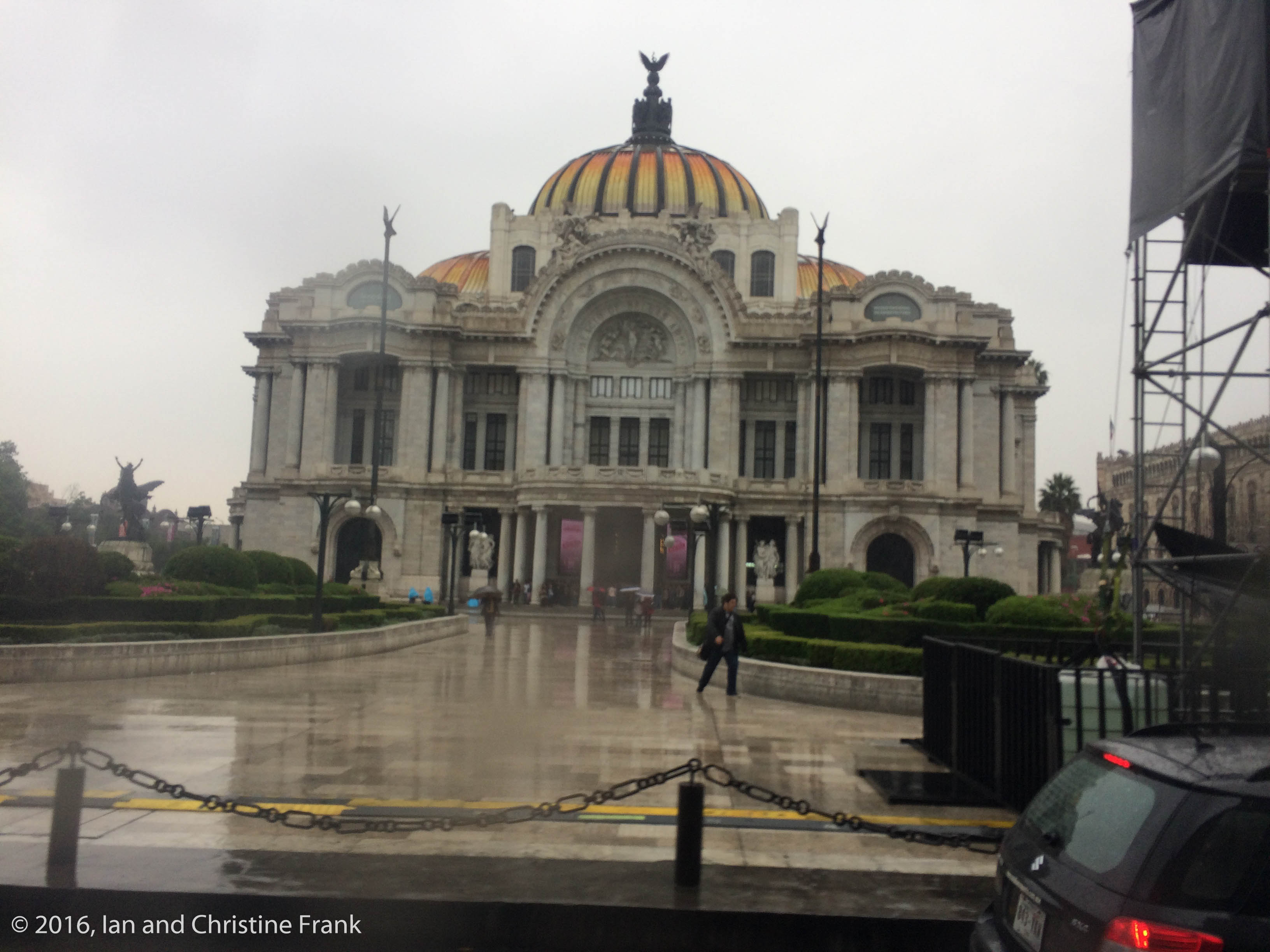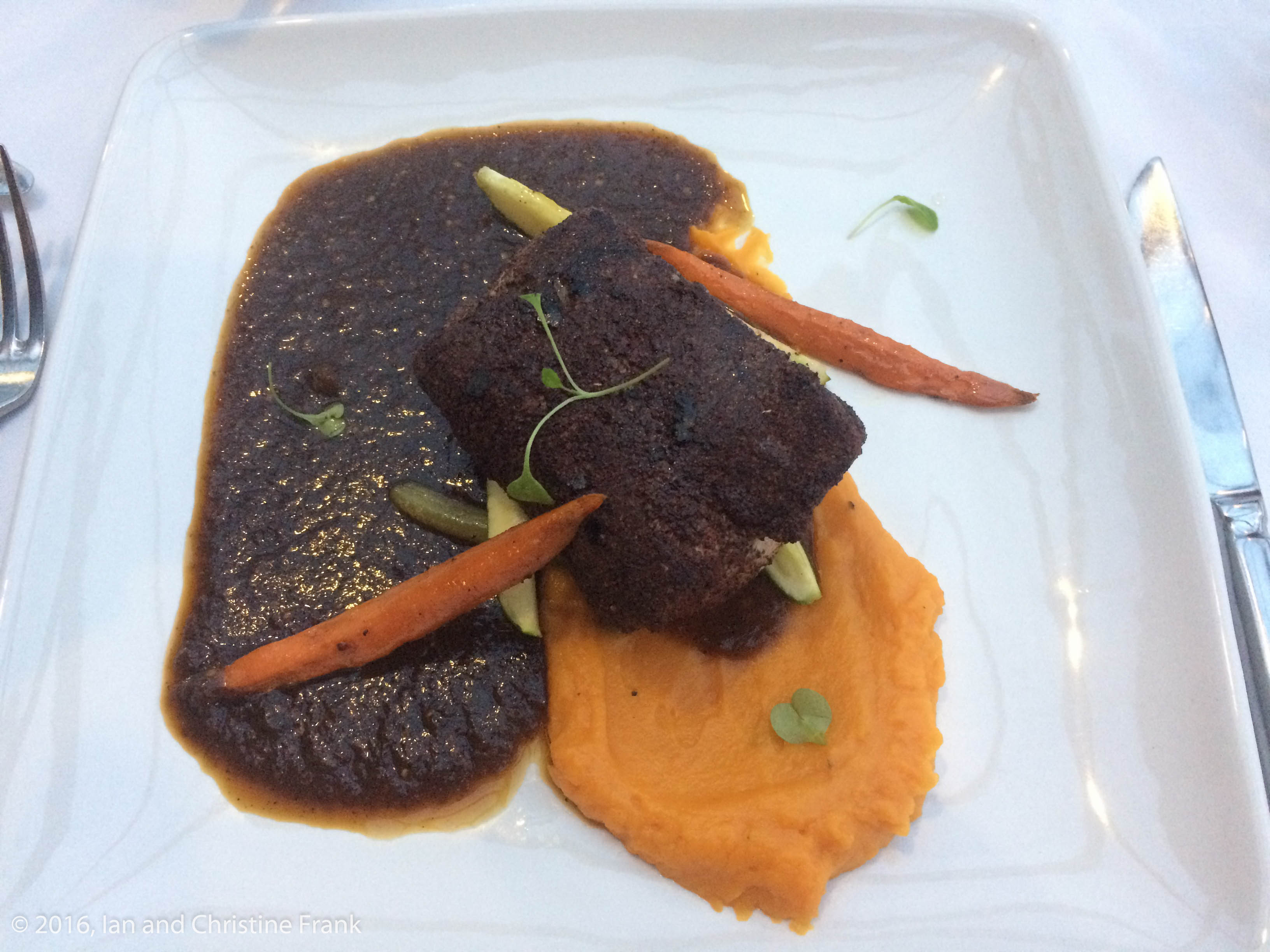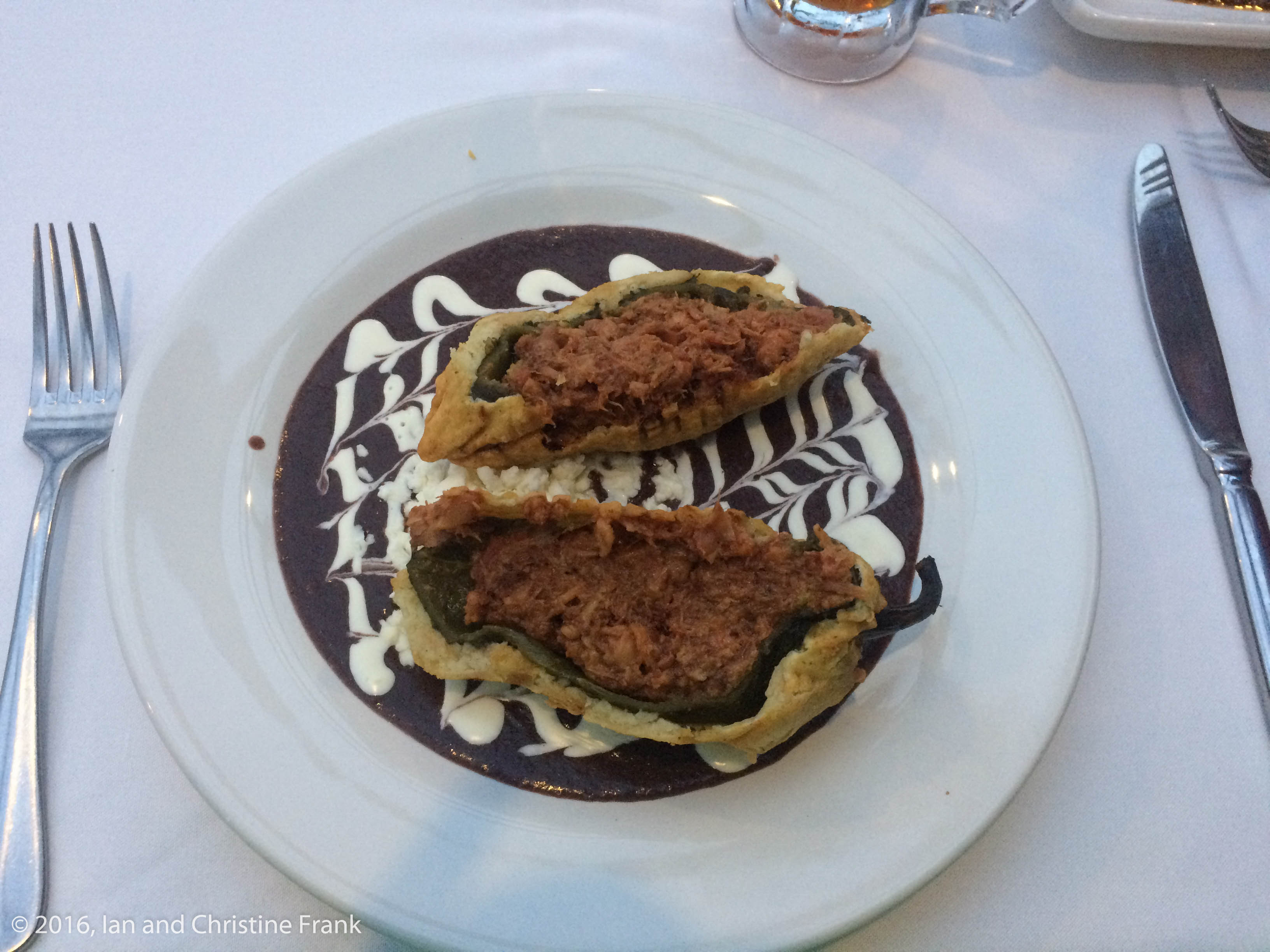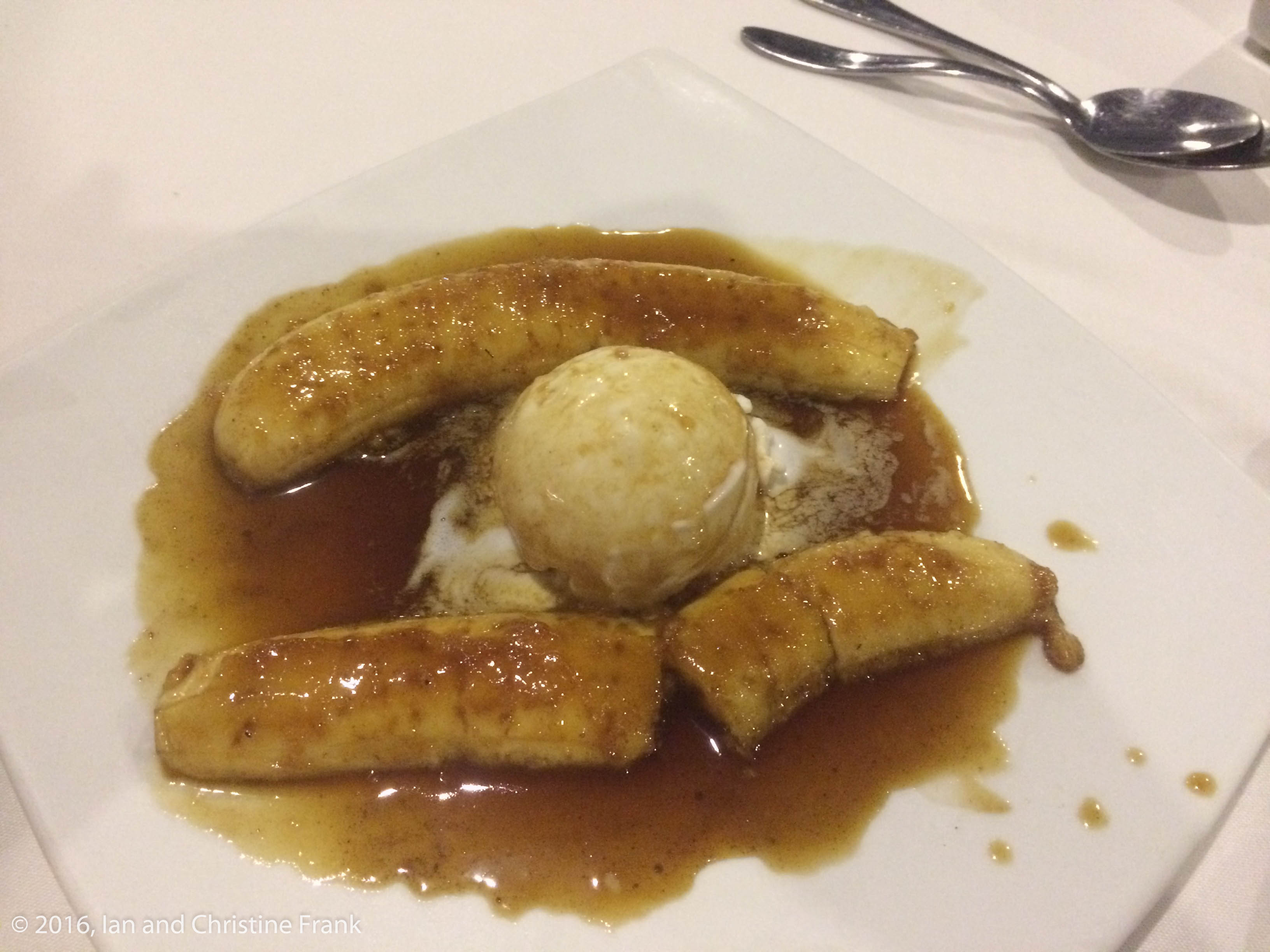With the generous support of our family and friends, we were able to visit Mexico for our honeymoon. While Mexico might seem like a normal honeymoon destination, our trip did not place us on sunny beaches, we opted to dive into the local culture. From Día de los Muertos in the northern highlands to the archeological sites at Monte Alban and Teotihuacán, we sampled the food and learned from our many kind hosts.
Making our way to San Miguel de Allende – 29 & 30 October 2016
Arriving in Mexico well after nightfall on the twenty-ninth, we took a wild and crazy taxi ride from the airport to our hotel near the northern bus terminal. Christine’s first Latin American taxi ride did not disappoint – it was a chaotic, open-window romp through crammed traffic, but we arrived in one piece to our hotel for the night. We immediately tucked into some delicious pollo con mole before heading back to our room. The travel time made it fairly easy to fall asleep, counteracting the bright, low-battery chime of smoke detectors in the hallway.
The next morning granted us our first clear views of Mexico City as we made our way to the bus station, purchased baked goods for breakfast, and embarked on the 4 hour bus ride to San Miguel. The Mexican bus system is pretty incredible – they don’t have a train system like the Europeans, but one might equate the first-class bus service to that of a high end train in Switzerland or Germany: just as spacious and comfortable, but a bit less smooth. Once in San Miguel, we made our way from the bus station to our hotel, where we were met with wonderful accommodations!
With special thanks to: Katherine and Bob Belvin for our hotel in Mexico City; Ginny and John Walsh for the bus from Mexico City to San Miguel; and Joe and Joleen Frank, Matt Barnes, Bonnie Steinlein, Aditi Kulkarni, Diana and John Bentley, Jessica Hughes, and Mike and Chris Kanke for our hotel in San Miguel.
Exploring San Miguel de Allende – 30 October 2016
San Miguel is widely known for the vast array of bright-colored buildings that make up the city. Coupled with the Día de los Muertos decorations – especially the marigolds – this made for a visually stunning experience as we made our way through the city. We were also impressed by how plants and trees are incorporated into the city, making for many calm, lush spaces in this highland city. Before lunch, we passed a store selling a vast variety of chiles, a market with loads of fresh veggies and brightly colored goods, and a street market for the various Día de los Muertos essentials. After lunch we wandered for a bit before finding a small chocolate shop, where we, of course, felt obligated to try some of the local chocolate – TOTALLY WORTH IT! When we returned to the hotel for a brief rest, we were greeted by their elaborate ofrenda, the centerpiece of which was a large picture made of marigold petals. For dinner, we wanted to make sure we had a view to go with our food and margaritas. We found a restaurant with a rooftop terrace and watched the sun set on a great day.
With special thanks to Sharon and Bill Eklund for dinners in San Miguel de Allende
Bike Tour and RAIN – 31 October 2016
After a quick, yet delicious breakfast at the hotel we walked to the Bici-Burro Bike Shop to meet our guide, Beto, and fellow bikers. We boarded the BurroMobile and headed to Presa Allende. The ride took us across the dam which forms Lago San Miguel and on to an abandoned rail bed that winds through the Laja River valley to La Huerta. One of the most interesting features of the rail bed was the 500m tunnel that we traveled through – it was a strangely disconcerting task to ride on loose sand in the dark, lit only by small bike lights and the literal light at the end of the tunnel – but also pretty awesome! We learned a bit about the citizens of the valley and the native plants (for instance, Nopal cactus have medicinal properties in addition to being used in dyes and other colorants). One of our stopping points took us to a Montezuma Cypress, also known as a sabino (wise man). These trees live for thousands of years and grow to be quite enormous. About five hours after we left the van, our twenty kilometer loop brought us back to the reservoir for our return to San Miguel.
Beto shared some mezcal with us before suggesting an excellent taco place for lunch. The dining room was on the second floor so we could watch the bustle of the street as the storm clouds rolled in – the tacos were excellent! Happy and full after lunch, we decided to make our way across town to buy our bus tickets for our trip to Guanajuato the next day. It started to rain, but we decided that we were committed, plus, how long could it really last? The answer turned out to be, the whole hour of the walk, plus most of the evening! It was an awesome, yet drenchingly wet experience. Because we walked to and from the bus depot on the same road, we got to see how the same shops and houses changed over the course of the storm – turns out that most people try to stay a little dry, it’s just the silly Gringos who get soaked. We tried waiting it out at a chocolate shop, Mente Cocao, but the rain continued to come down, so we decided to keep walking. Fortunately our hotel was on the ball and were pretty much waiting to deliver extra towels to people like us. After drying off and warming up, we spent the rest of the afternoon reading in the covered garden to the sound of the rain before heading out for another delicious dinner.
With special thanks to Altana Gray and Eva Ames for the Bici-Burro Bike Tour
Guanajuato on Día de los Muertos – 1 November 2016
Well-fed on a breakfast of Chilaquiles and fresh fruit, we made our way once more to the bus station (this time it was not pouring) and rode the two hours from San Miguel to Guanajuato. The bus depot in Guanajuato is outside to the south of the city so we took the shuttle bus into town. This was another interesting adventure in Latin American ingenuity: the bus itself was an old school bus and the original seats had been replaced with a hodgepodge of park benches bolted to the floor. The speed of the vehicle was FAST. Guanajuato has a series of subterranean roads so much of the traffic is underground. We stopped at one of the underground bus stops and climbed the stone stairs to the surface and onto a brightly colored, bustling street.
We had selected the Teatro Juárez as our first destination and walked towards the ornate concert hall. The beauty of the place was impressive and the eclectic combination of Classical, Oriental, European, and local Architecture made it pretty unique. We made our way past the Cathedral and University, before stopping for another lunch of tacos. Afterwards, we stopped by the public market and then up the large hill on the west side of town, to the public cemetery. As it was Día de los Muertos, many people were already visiting their ancestors and decorating their grave sites with flowers. The land around the cemetery is very dry and has an interesting composition of minerals. This has led to the creation of very well-preserved mummies (the remains of former residents of the cemetery whose families stopped paying their rent for one reason or another) which are displayed in the museum near the cemetery. I found this fascinating, Christine was more on the creeped-out end of the spectrum, mostly because of the fact these people were removed from their resting places to make the cemetery more money. That said, some of these mummies had fascinating stories to tell with gun-shot wounds and other indications of hard lives.
Leaving the mummies behind, we started making our way back down towards the center of town, stopping at the Mina de Nopal, an old mine that is run by the university as a laboratory but also a tourist attraction. Our tour included a history of mining in the area (methods, locations, etc.) as well as some information on how researchers come from all over to work in this mine, studying its diverse geology. We finished our walk back down to the underground bus station and made our way back to San Miguel for dinner.
With special thanks to Adrianne Braun, Sean Gunn, Vikki and Aaron McCalmont, and Joe and Joleen Frank for our Day Trip to Guanajuato
Last Day in San Miguel & First Day in Oaxaca – 2 & 3 November 2016
Our last day in San Miguel had been set aside for food. We met our guide (and teacher, Kris) and the rest of our “class mates” at the Plaza Civica. Historically, the plaza was where the farmers from the surrounding area would have brought all of their products for sale. As time went along, this outdoor type of market diminished in popularity. Today, there is an indoor food market adjacent to the plaza, and this was our second destination. At the market, we learned about the local crops and culinary traditions. For example, did you know that most chiles have at least three different versions that you can buy? A fresh, a dried, and some sort of rehydrated variety – jalapeño, chipotle, and adobo are all forms of the same fruit. We bought all the ingredients for the feast that we would be making later in the day and took our haul back to Kris’ school (and house) to start our work.
Over the course of the late morning and early afternoon we crafted 6 different dishes, including an awesome chocolate cake. Of course, we also made hot chocolate and margaritas to accompany our cooking and eating. It was a really fantastic experience! After our early dinner we gathered in the Plaza in front of the Cathedral for a concert and reenactment of some of the Día de los Muertos stories. These are not historically part of the Día de los Muertos celebrations (which have traditionally centered around the family and the home), but were still pretty cool. As we walked around we also came across a mariachi band playing some lively music.
The next morning we got up very early and took a taxi to the airport in neighboring Querétaro, taking in the whispy clouds and sunrise along the way. We made the flight from Querétaro to Mexico City and then on to Oaxaca, our second destination. It was already late afternoon when we arrived, so after settling into the hotel, we toured the large central market (we really liked the stall selling the different chiles and moles) and then headed to dinner.
With special thanks to: Mary and Ron Braun for our cooking class; Carol Stephan, Matt Barnes, Bonnie Steinlein, and Joe and Joleen Frank for our flight to Oaxaca; Sascha and Christin Koch, Kenny and Paula Wohletz, and Joe and Joleen Frank for our hotel in Oaxaca; and Delancy and Spencer Witter, Steve and Darleen Hilz, and Joe and Joleen Frank for our dinners in Oaxaca
Day Trip to the East of Oaxaca – 4 November 2016
Our initial intent for the day was to visit Mitla, the Zapotec palace of the dead to the east of Modern-Day Oaxaca. Our hotel partnered with a tour company that offered much more, so away we went. The first stop of the day (once all fellow guests were collected) was Santa Maria del Tule. The town’s claim to fame is being home to a 2,000 year-old Montezuma Cypress (like the sabino we saw on our bike ride, but bigger!). To say that the tree (and some of its offspring) dominate the central plaza of the town would be an understatement, they are truly awesome!
From Santa Maria del Tule we continued on to a textile house (Arte Zapoteco) where they make woolen textiles by hand using traditional dying methods. Christine got to be the assistant while our host was showing us how they make different colors from different plants and insects. For instance, cochineal bugs are crushed to make a vibrant red dye (carmine). We got back in the van and headed to our eastern-most destination, Hierve el Agua. These mineral-rich springs are a destination for many to come soak in the pools and take a nice hike to see the waterfall-like rock formations that have been deposited over the eons. It was a pretty spectacular place to see.
There are two major archeological sites in Oaxaca state, the most notable is Monte Alban (which we visited later), and the second is Mitla. Mitla’s designation as a palace of the dead is a bit of a misnomer. In fact, it was more of a retirement home for older nobles to live out their days. There are also numerous tombs here, so it also was their final resting place, providing a gateway between the lands of the living and the dead. We were really impressed by the geometric mosaic fretwork that covers most of the vertical surfaces. After exploring the site, we got back into the van for one last stop, a Mezcal Distillery! Mezcal is distilled from the juice of smoked agave plants (very much like Tequila). The result is an incredibly peaty liquor that we both found absolutely delectable.
With special thanks to Glenn and Courtney Kitchell for our Day Trip to Mitla and the Surrounding Highlands
Hanging Around Oaxaca – 5 November 2016
For our day in Oaxaca, we started out at the Templo de Santo Domingo. Touring the ornate church that was once a monastery. The beautiful stained glass windows and gilded altars, walls, and ceilings made for a pretty awesome experience. The church had an adjoining chapel, dedicated to Nuestra Señora Del Rosario, which was equally illuminated. The former cloistered grounds of the monastery served as a military barracks, but are now the home of the Ethnobotanical Gardens, our next stop.
So, one might ask what an Ethnobotanical Garden is, and that is a great question. First and foremost, it is a research facility. Indigenous Mexican cultures had many specific uses for the flora of the area. These plants are so tied to the culture, that many of them are protected. The gardens preserve many different strains of plants. One of the most prominent plants in the history of the area is Corn. The earliest forms of corn, with their small number of huge kernels, are nearly indistinguishable from what we grow in the United States. Even the native corn of Mexico is much smaller and hardier than the large ears that we are used to seeing. Corn forms a staple in many Mexican dishes and its cultivation is central to the culture and history of the area. This is one of the reasons that the Mexican Government has long worked to block the import of “new” corn seeds and plants. Our tour was led by the director of the institution and was really informative.
We headed back to the main Plaza for lunch, and found a nice spot overlooking the main walking street on the north side of the plaza. Lunch was delicious and it was fun to watch the goings on in the park. After lunch we returned to the central market to buy some chile and mole to take home with us, and then stopped by the Meyordomo chocolate store (where they also make small batches of chocolate while you watch), to buy some more goodies. Our last stop of the day took us back to the monastery complex so that we could tour the museum and learn more about the history of the city.
For dinner we headed to a Restaurant called Sabina Sabe. We had walked by in our earlier wanderings and noted that they boasted to have a wide selection of mezcal. To go with our mezcal flights, we ended up having an excellent meal with a variety of different “typical” Oaxacan foods: stuffed peppers, fresh cheeses, charcuterie, pork rinds, tacos and crickets. After trying everything, we found that we both have our limits in adventurous cuisine. Christine is OK with crickets, and I am OK with head cheese. Overall, it was a super satisfying dinner.
With special thanks to Joanne Hansen, Laurie and Curt Geib, Francis and David Page, Eva Ames, Bruce and Anna Frank, Monica McAllister, Justin Ihara, Marie Edgerton, and Gail Henry for bankrolling our shopping, and Delancy and Spencer Witter, Steve and Darleen Hilz, and Joe and Joleen Frank for our dinners in Oaxaca
Day Trip to the West of Oaxaca – 6 November 2016
As previously mentioned, the most notable archeological site in Oaxaca State is Monte Alban. Our day started at north end of the site where we walked into the central plaza, passing the ball court on the way. The central plaza is occupied by two main structures, the southern is a small pointed building set at an angle to the rest of the site. This is the observatory which was used for tracking the position of the sun. This helped dictate the timing of planting and the harvest as well as other key festivals and ceremonies. Like the Tanis map room in Raiders of the Lost Ark, the sun would enter the inner chamber of the observatory through specific holes in the walls of the structure, indicating to the priests within the time of the year. To complete the circuit of the site, we climbed to the top of the southern and northern platforms (pyramids) and took in the view.
The next two stops on our tour were to local artisans. First we stopped at a workshop where they were making Albrijes. Alebrijes are crafted from wood, and brightly painted. They take the form of animals, often mythical ones such as dragons and winged jaguars. As awesome as the dragon would have been in our house, there was no way it was coming back in our carry-on bags, so we settled for a small fox and a hummingbird. The second workshop was a center for the traditional black pottery from Oaxaca. We got to watch the process of separating the clay from excavated soil as well as the formation of a few pots, vases, and animals. Our final stop before heading back to the hotel was a former convent in Cuilapan de Guerrero. The stone walls and domes remain, but all the wooden portions have fallen to time.
With special thanks to Glenn and Courtney Kitchell for our Day Trip to Monte Alban and the Surrounding Highlands.
Mexico City, Tenochtitlan, Churros & Chocolate – 7 & 8 November 2016
From Oaxaca to Mexico City, we once again took a First Class bus, riding through five and a half hours of stunning vistas and bustling cities before finally arriving at the enormous eastern bus terminal in the Capital. We secured a taxi ride to our hotel, and found the ride less crazy in the daylight aside from one little detail. Our hotel was 3 blocks from the main plaza (Zocalo) in Mexico City, and starting on November third, there is an ever-expanding Christmas Market that takes place in the heart of the city. Four days in, and the market was already encompassing a seven block radius area! Our driver was very apologetic and got us as close as we could get before telling us that we should look at our phone map while we were still in the taxi, memorize exactly what we needed to do, put our phones away and just walk to the hotel, quickly, and not stopping. Our bags would be a dead give-away that we were potential marks (welcome to any street market, anywhere in the world). We did just as he suggested and made it to the hotel in good order – the market was pretty epic to see, even as we were running through it!
So… this is where we get honest. Our hotel was very simple, but also clean and comfortable. It was definitely different from the two luxury hotels we stayed in for the majority of our trip. Couple this to the fact that all of a sudden it was as though the chaos level had been cranked up way past eleven, and we were in a state where we almost called it quits. We took a few breaths, decided we would read for an hour, get some food, and then in the morning, if we still felt like this wasn’t going to work for us, I would call American Airlines and see what we could do to get us home. The market actually packed up every evening (and set up every morning), so by the time we went to dinner at 6:30 it was like a totally different place. We had an excellent dinner and walked around the downtown area. In November, there is enough rain in the city that the air is pretty clean, and it is just a nice time to be in Mexico City. We definitely made the right choice in sticking around – we would even go back (but maybe end with a less intense part of the experience).
Mexico City is built over the ruins of the Aztec (Mexica) capital city of Mexico-Tenochtitlan, which was in turn built on an island in the middle of a lake. The lake is now completely filled in, and is one of the reasons that the ground under the capital is less than stable (along with earthquakes). The Cathedral of Mexico City is built, in part, with the stones of the Aztec temples that it “replaced.” In the early 1900s, the location of the main temple was rediscovered, but it was not until 1978 that they started excavating the ruins in earnest. We were able to get a guided tour of the ruins – it was pretty cool to see up close the different layers of the temples. Many Mesoamerican temples have layers corresponding to the cycle of the calendar system, when the temple would be completely remodeled with a new layer encapsulating the previous layers, and the main temples of Tenochtitlan were no different. The museum includes many artifacts from the site, including the stone disc depicting the moon goddess Coyolxauhqui that started the most recent phase of the excavation.
In the afternoon, we made our way to El Moro for the lunch of champions, churros (the real deal) and hot chocolate. This was largely to leave room for dinner as we had identified a restaurant overlooking the Zocalo for our fancy dinner in Mexico. Dinner was wonderful and, because we went so early in the evening, we were almost the only ones there. We had a peaceful evening, watching the rain come down on the central plaza.
With special thanks to: Eileen and Greg Fitzgerald for our bus trip; Joe and Joleen Frank, Franklin Perez Coste, Mike Thompson, Francis and David Page, Leslie and Mike Vuto, and Diana Dalton for our hotel in Mexico City; and Steve and Darlene Hilz, Brook Lundquist, Alicia Nygard, Delancy and Spencer Witter, and Bruce Frank for our dinners in Mexico City.
Teotihuacán y Adios – 9 November 2016
On our last day in Mexico, we joined a tour to the Mesoamerican city of Teotihuacán. The drive took us through the northeastern part of Mexico City where we were enamored with the brightly colored houses along many of the hills surrounding the highway. Teotihuacán is the largest Pre-Columbian city in Mexico and was likely the sixth largest city in the world at its peak (circa 500 CE). The city is not only known for its temples, but also the multi-family residential complexes (analogous to apartment complexes in many ways), and the well-preserved murals.
Our tour took us from the south end of the city to the north, roughly following the Avenue of the Dead. The south end of the site is dominated by the citadel of the Feathered Serpent Pyramid, so known because of the stone work depicting Quetzalcoatl along the stairs. Back along the Avenue of the Dead, we were led to a preserved example of the coloring on some of the stairs, where you could still see the red, orange, and white paint on the stonework. These structures are only visible in the morning as they are sensitive to sunlight, so they are curtained off later in the day. The Pyramid of the Sun sits in the center of the city, and was the largest of the temples in Teotihuacan. From the top you could see the whole complex and the surrounding area. The last stop was the Pyramid of the Moon, which is located at the terminus of the Avenue of the Dead. While not as large as the Pyramid of the Sun, it provided an awesome view of all the ground we had covered on the tour. Dad may see some familiarity in the pictures, as we tried to recreate some of his pictures from his 1970 trip to show how the development of the site has progressed.
We headed back to Mexico City as the rain started, snagging a few more pictures that we had intended to take the day before, but didn’t get around to. Dinner was again an excellent culinary experience complete with plantains and ice cream for dessert. We had such an excellent collection of experiences throughout our trip. Our timing was great for weather (we don’t mind rain now and then) and smaller crowds. Our hosts (for this term, everyone we encountered), were kind, helpful, and interesting. We learned so much and ate so much excellent food. We will certainly have to go back!
With special thanks to Mary and Ron Braun for our tour of Teotihuacan
